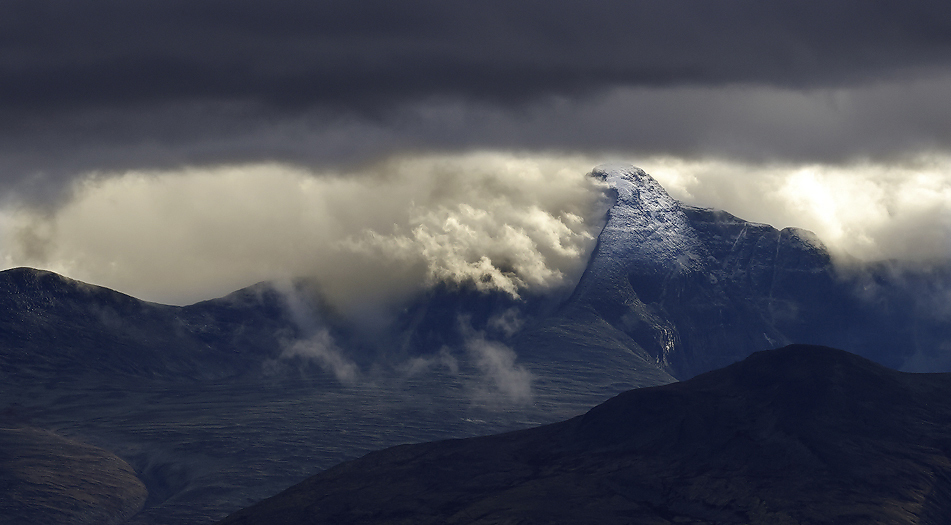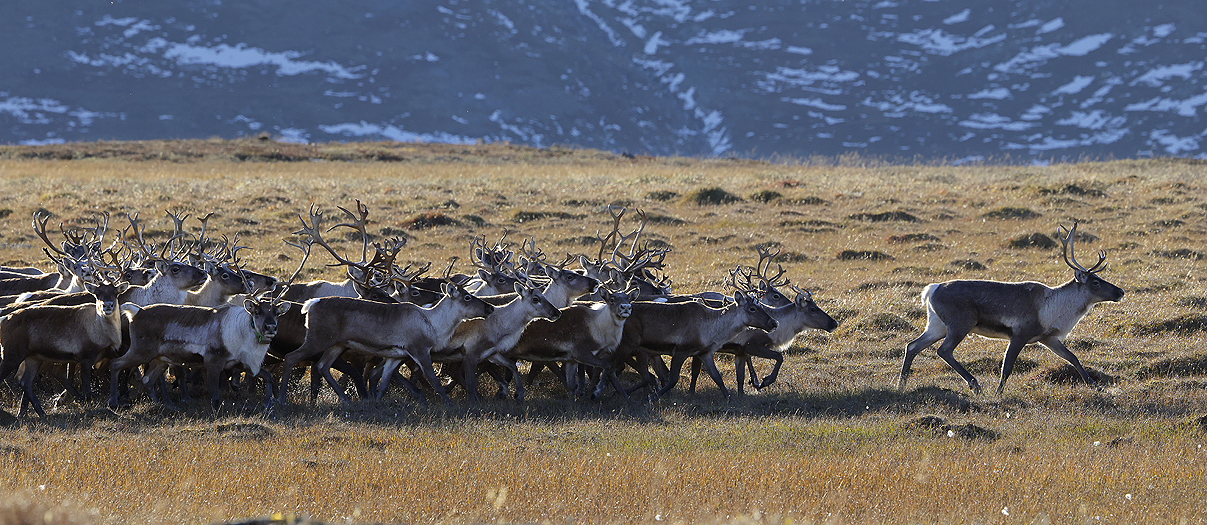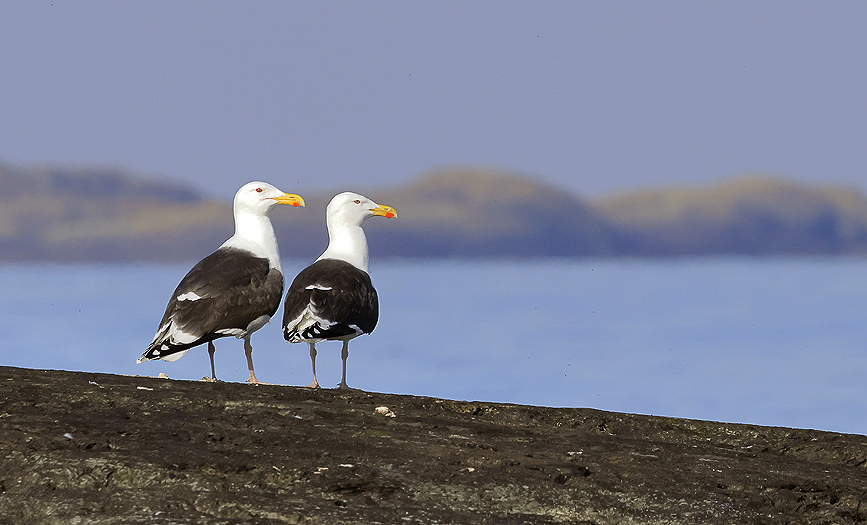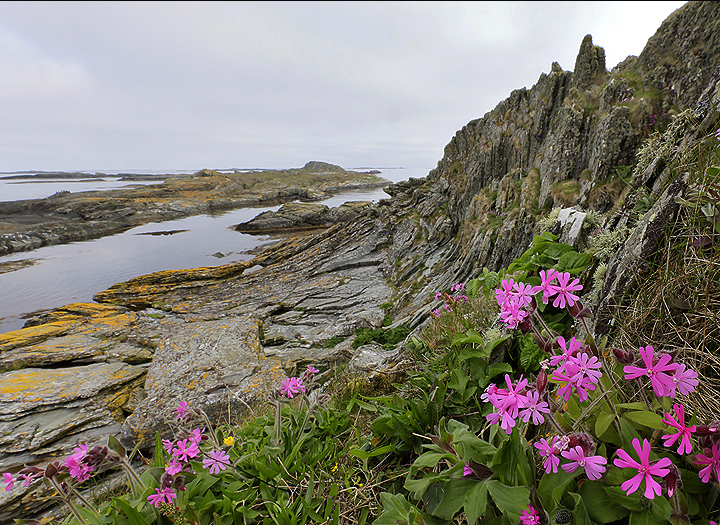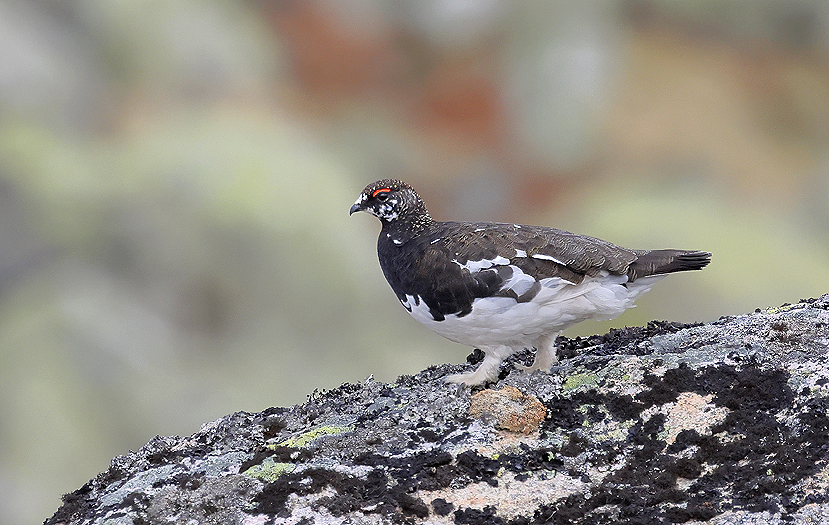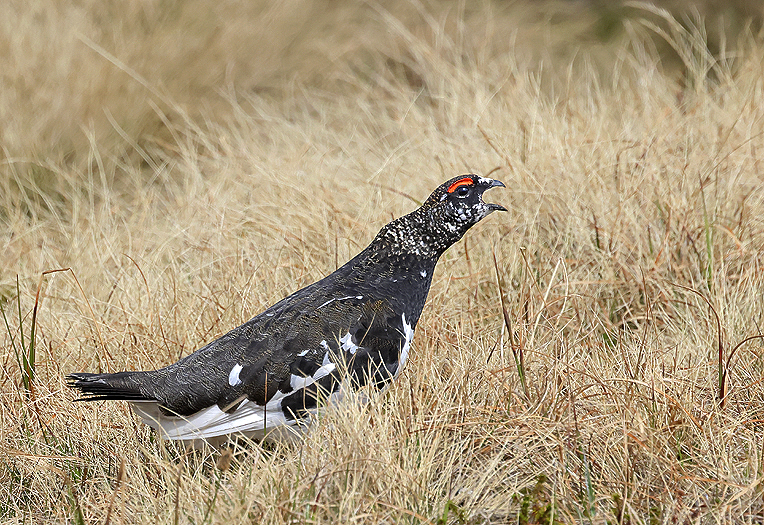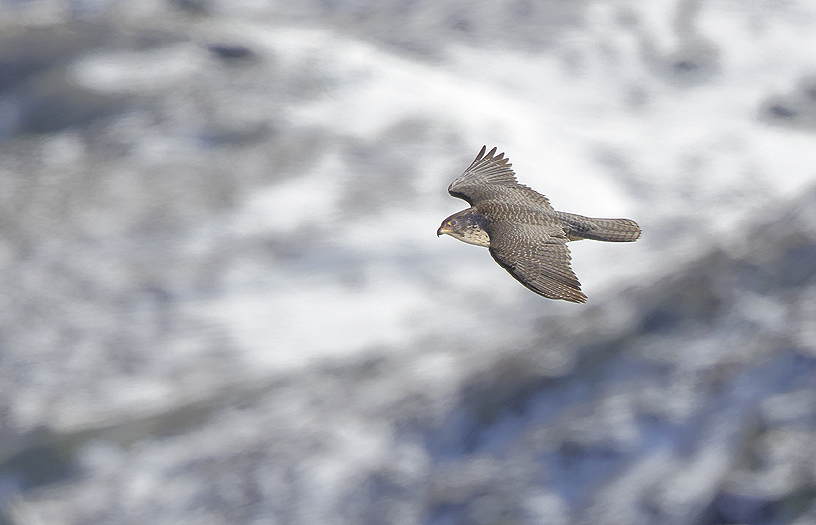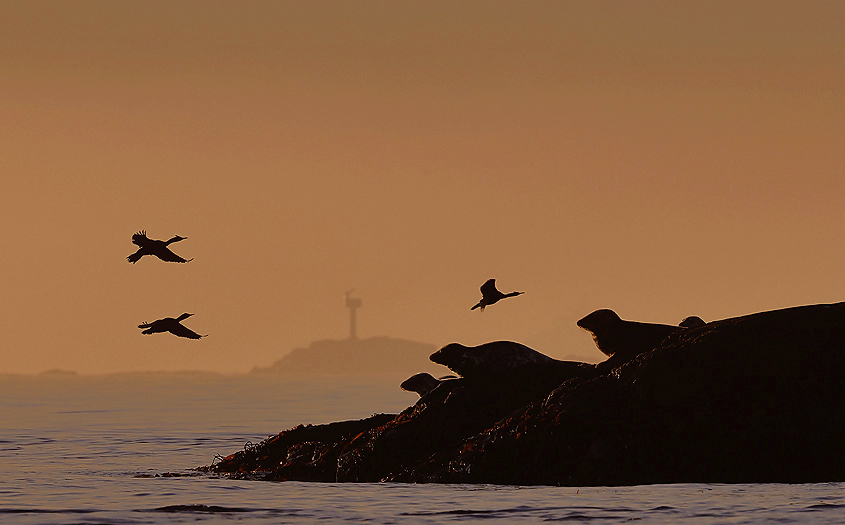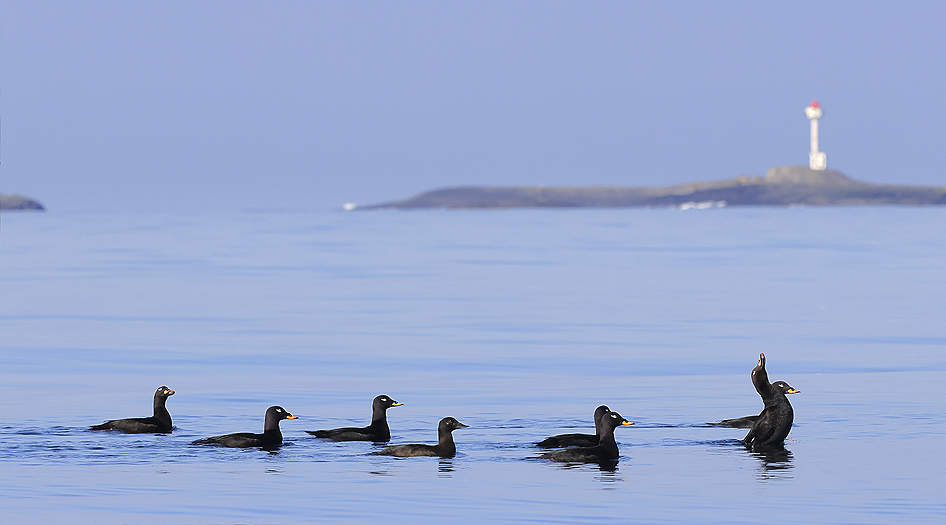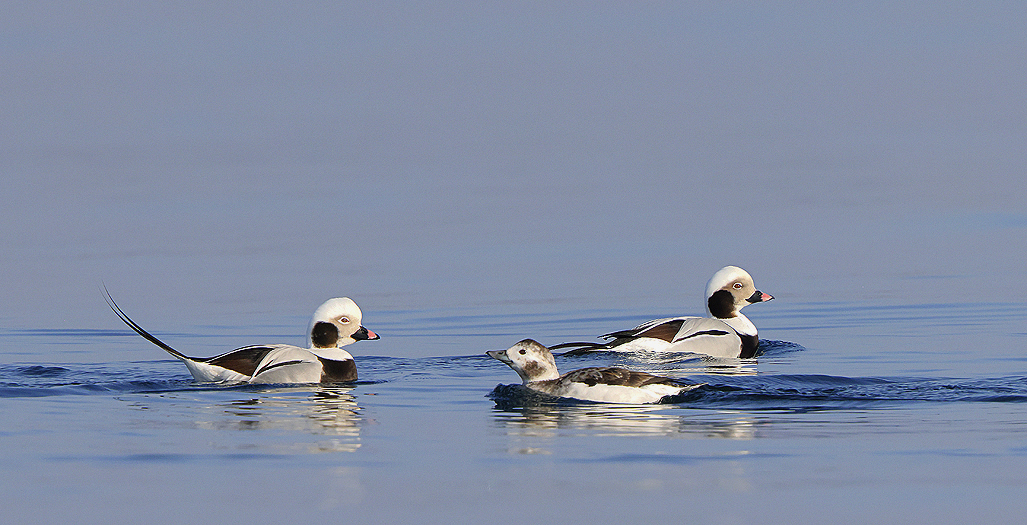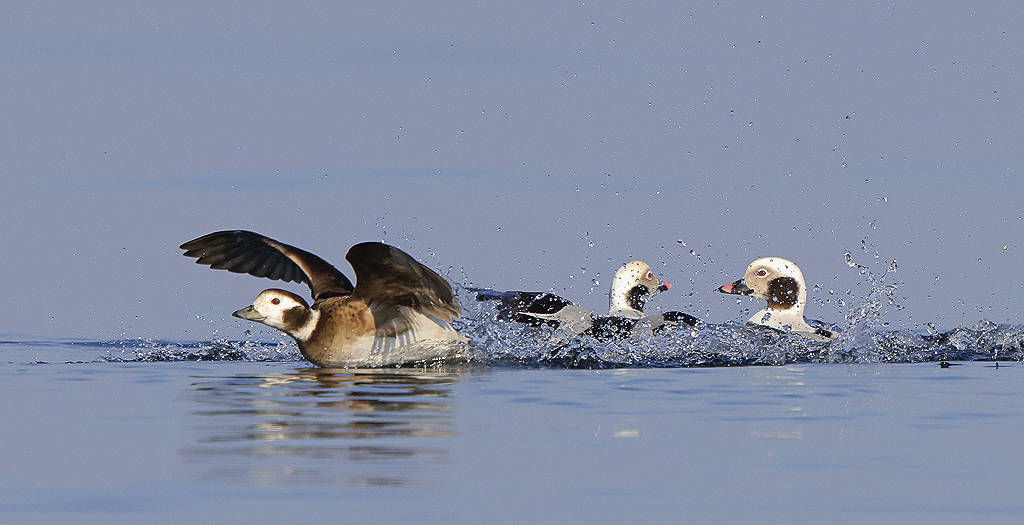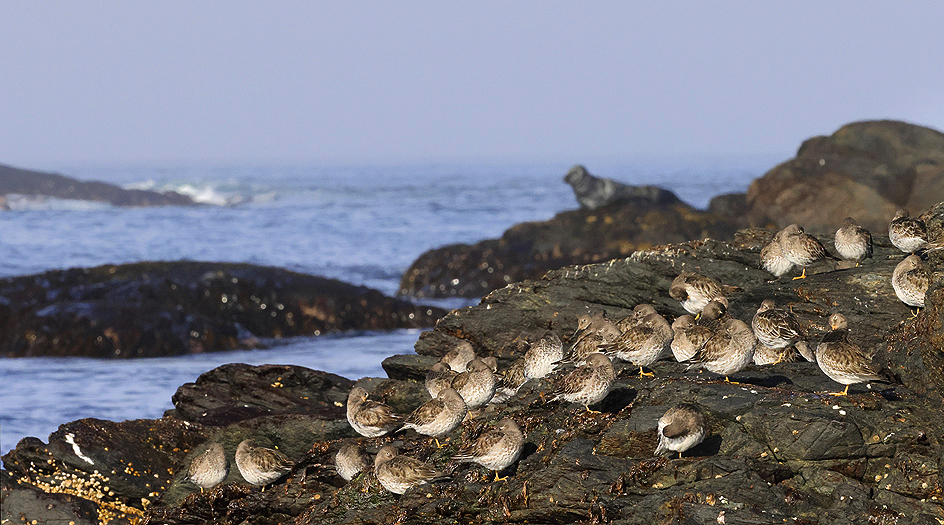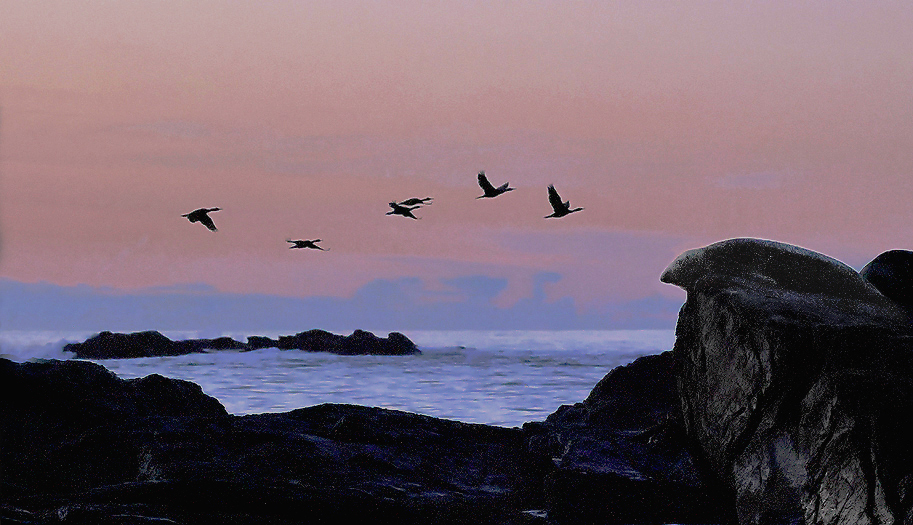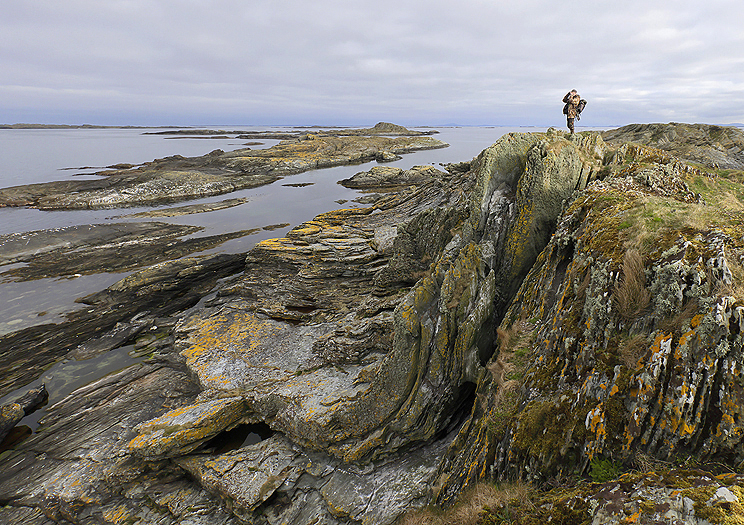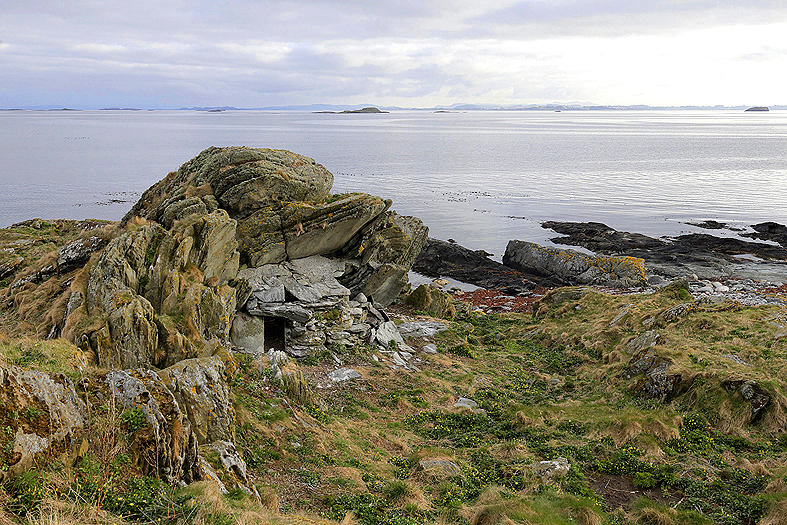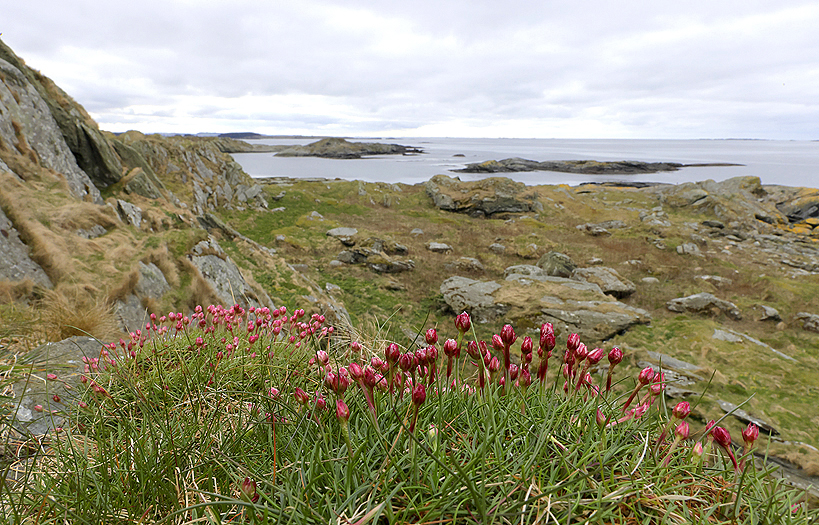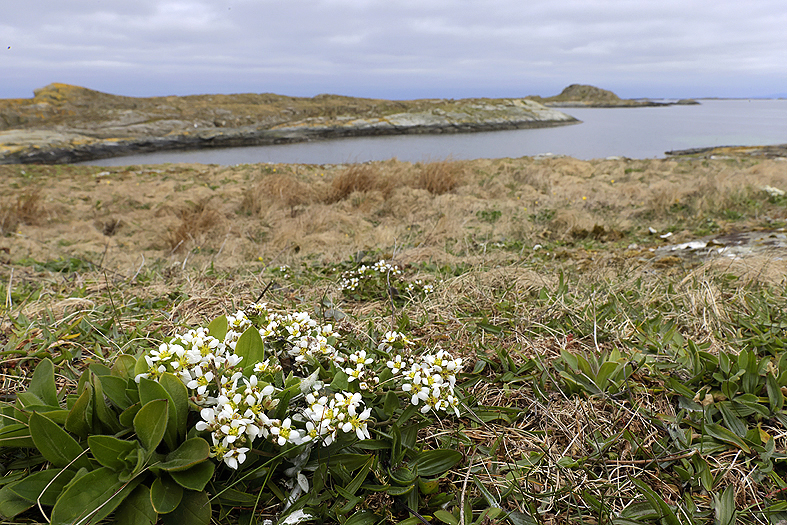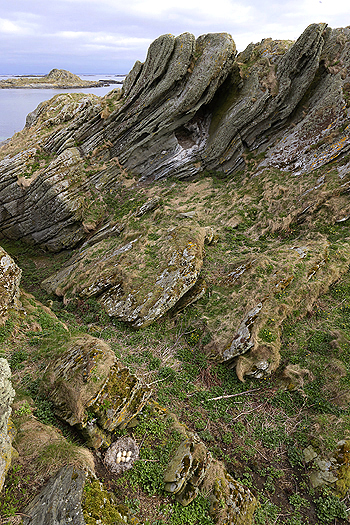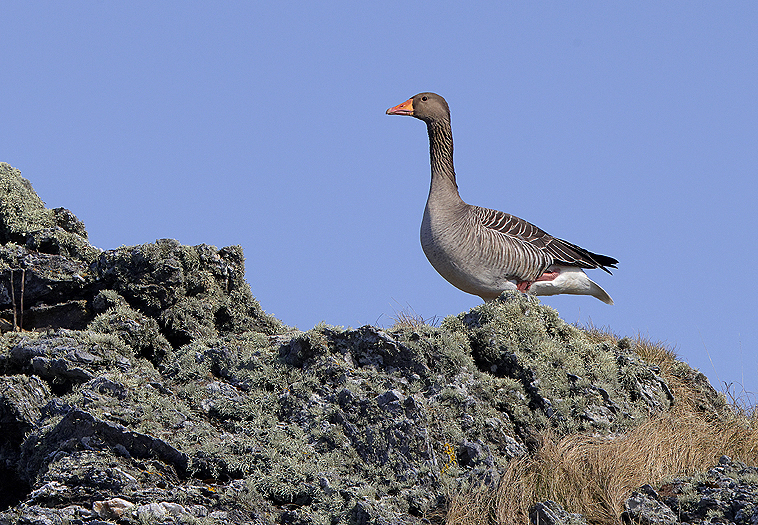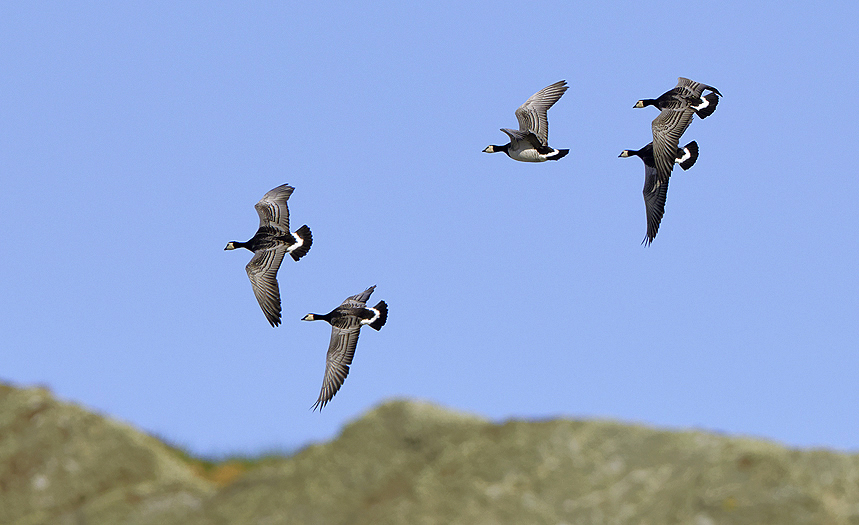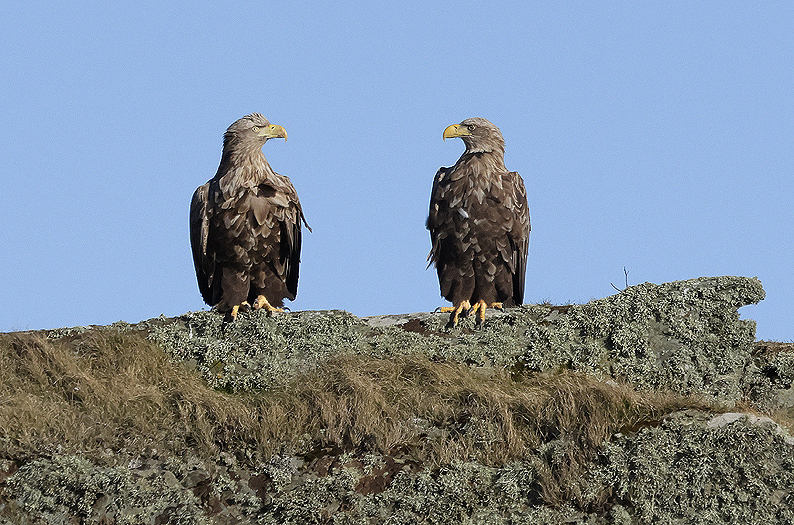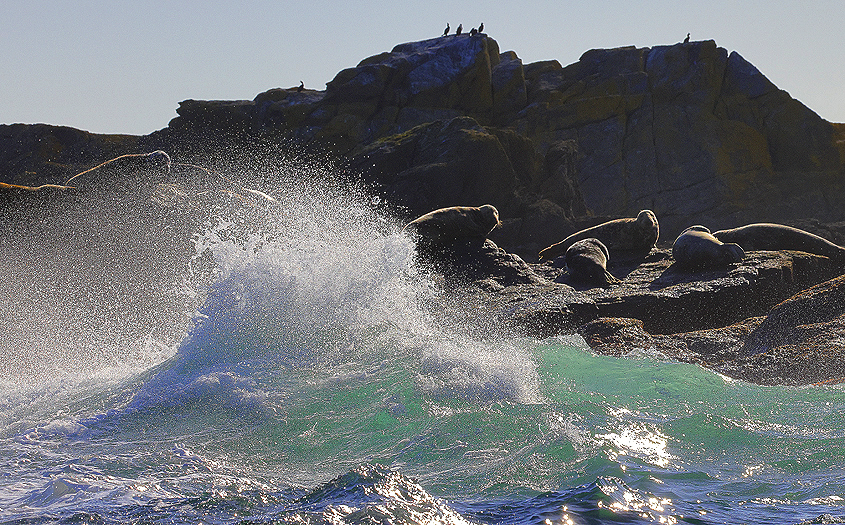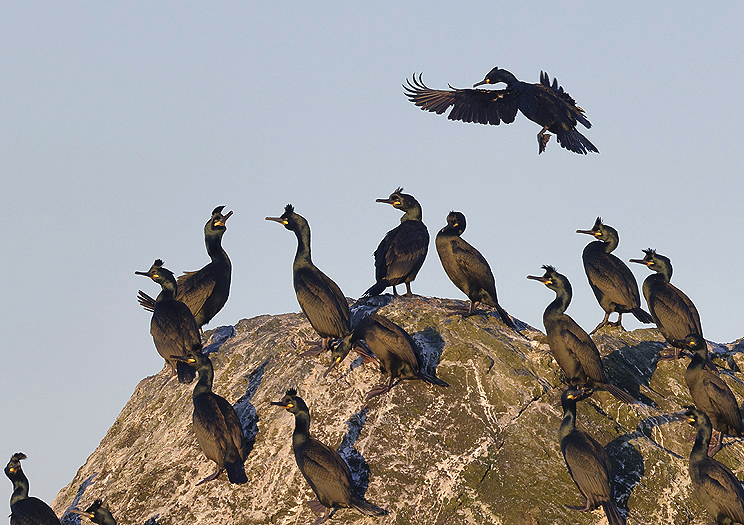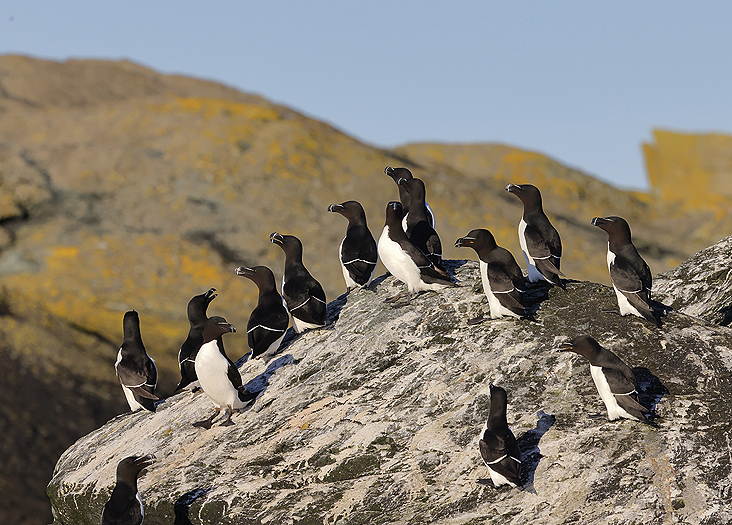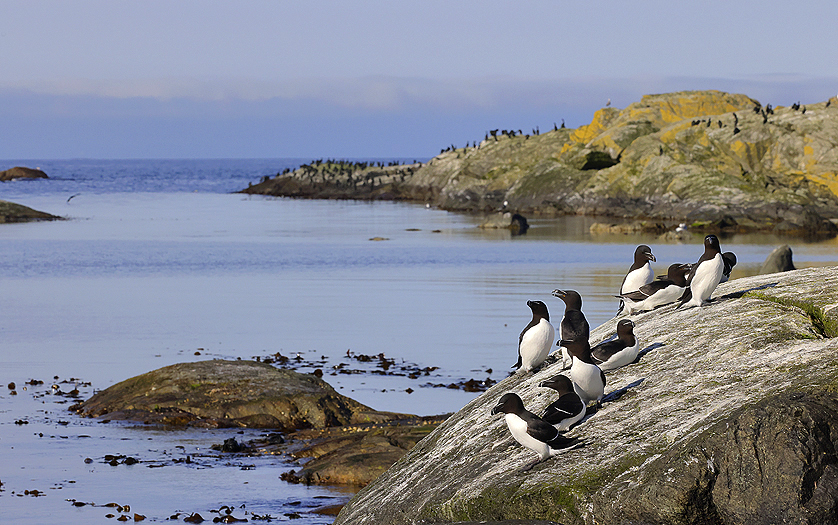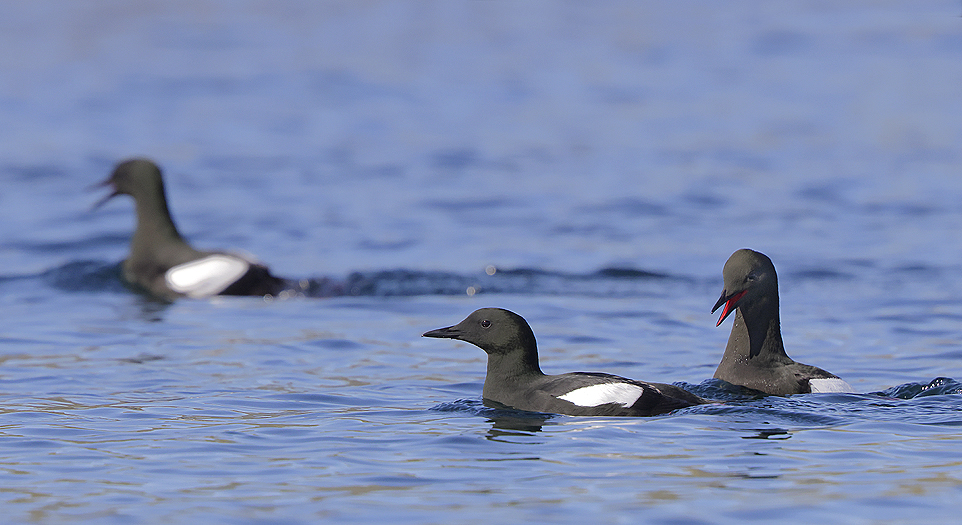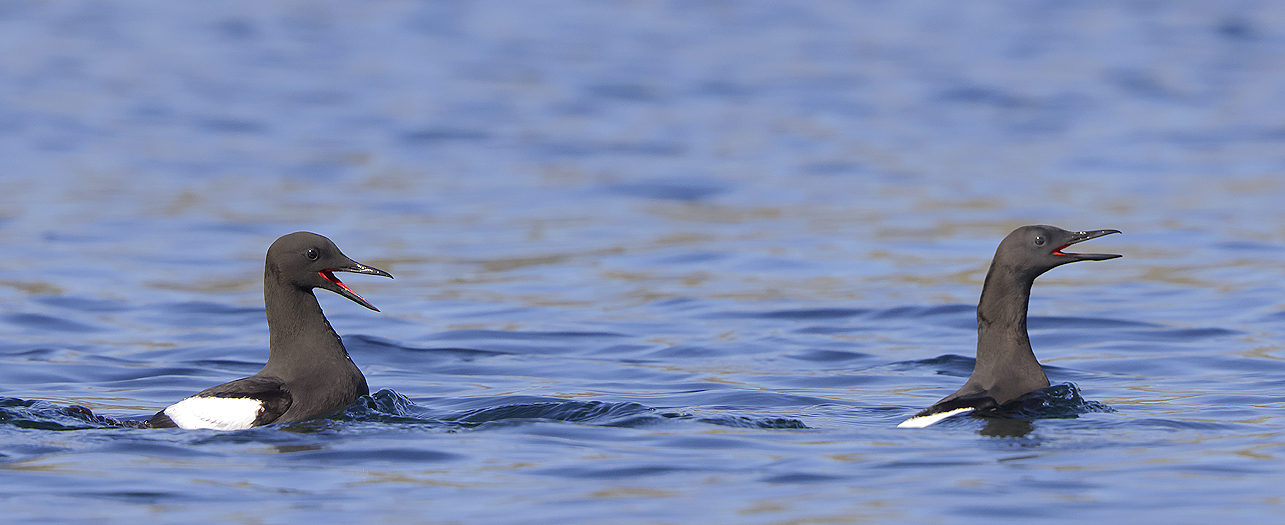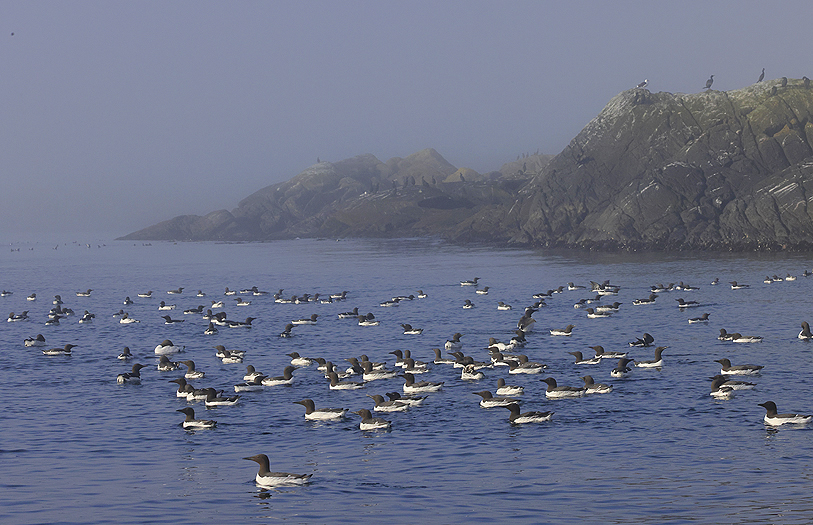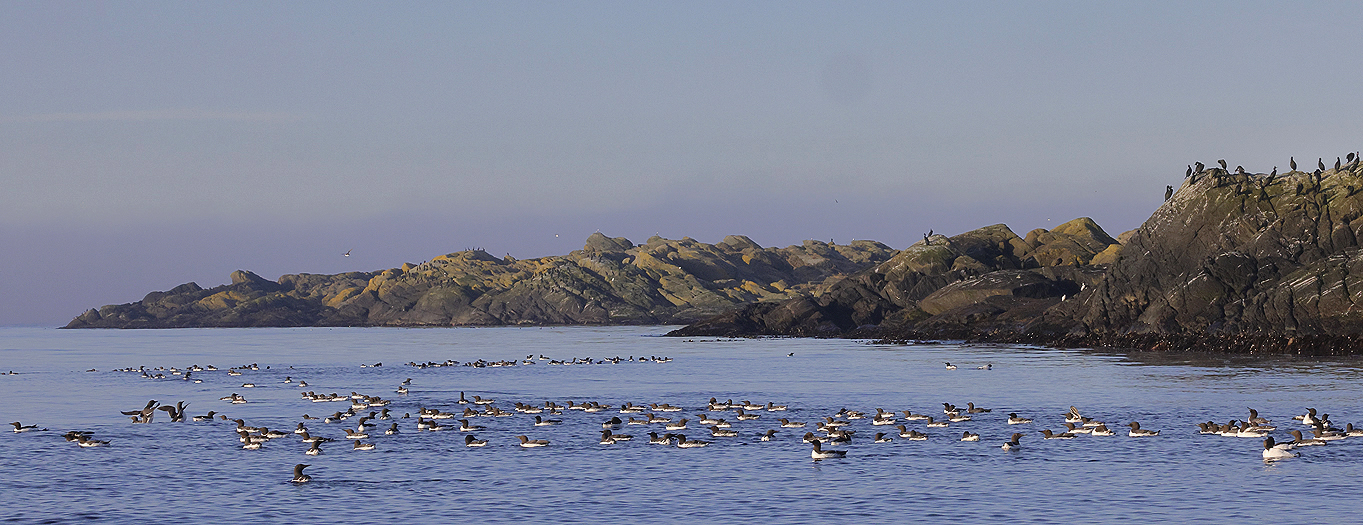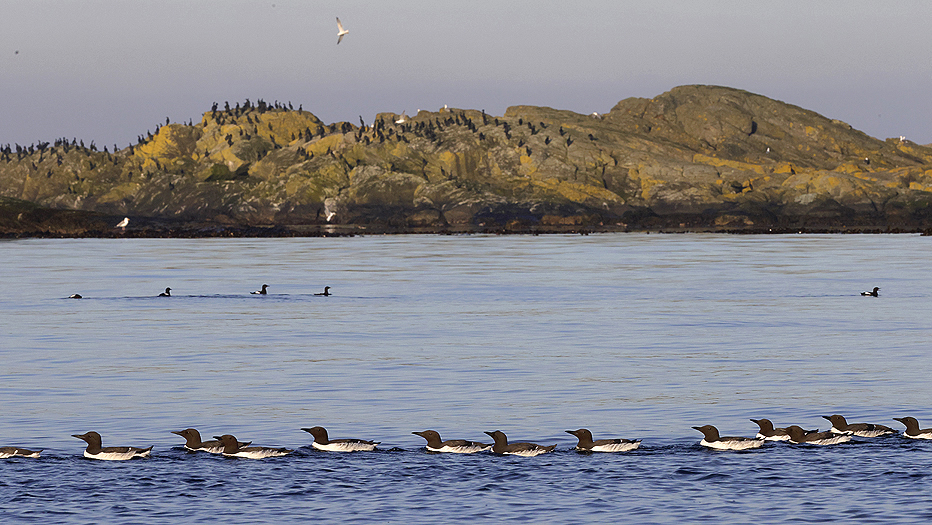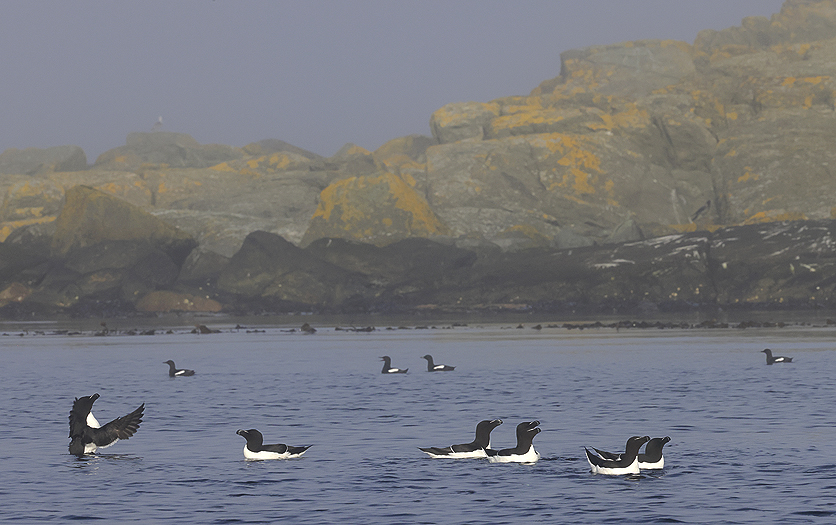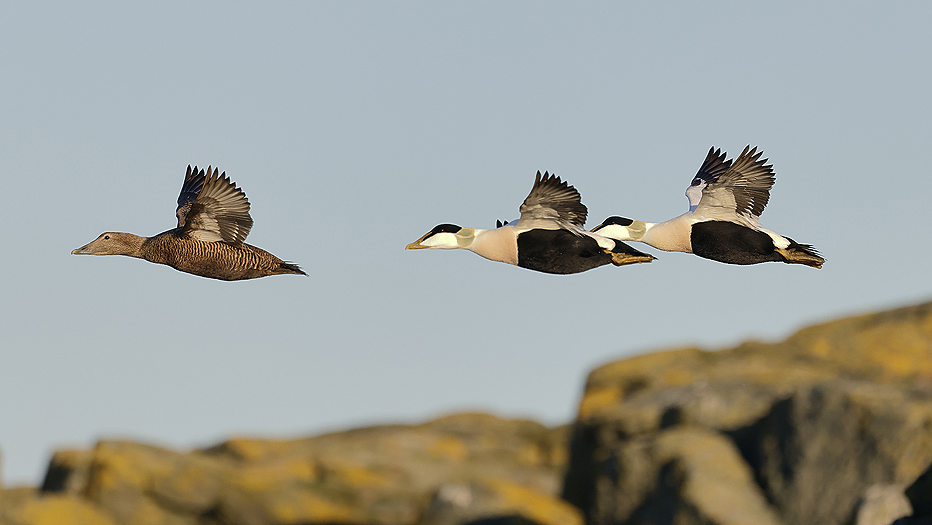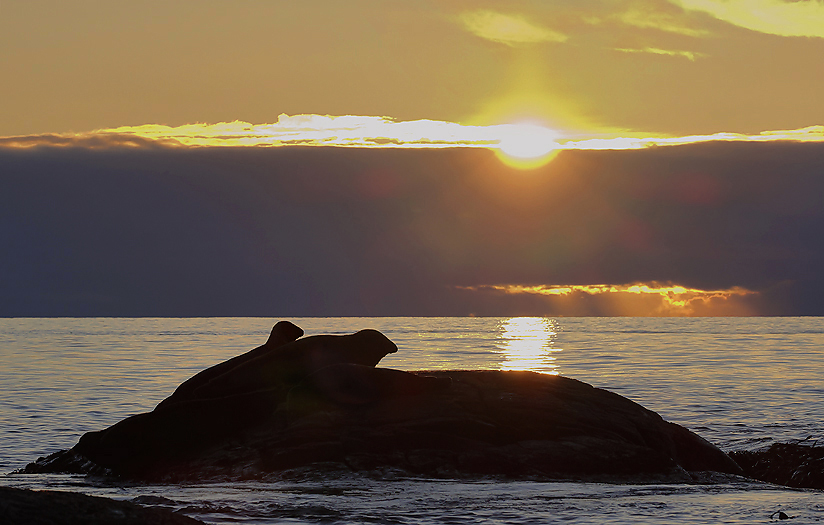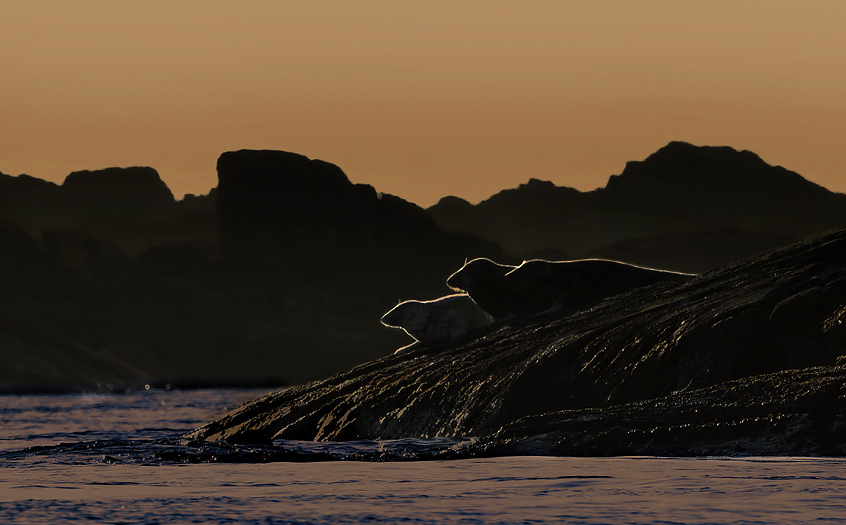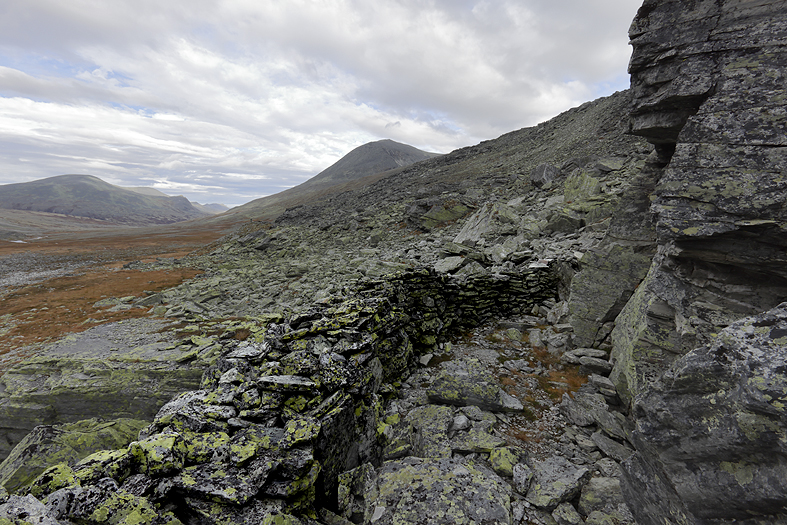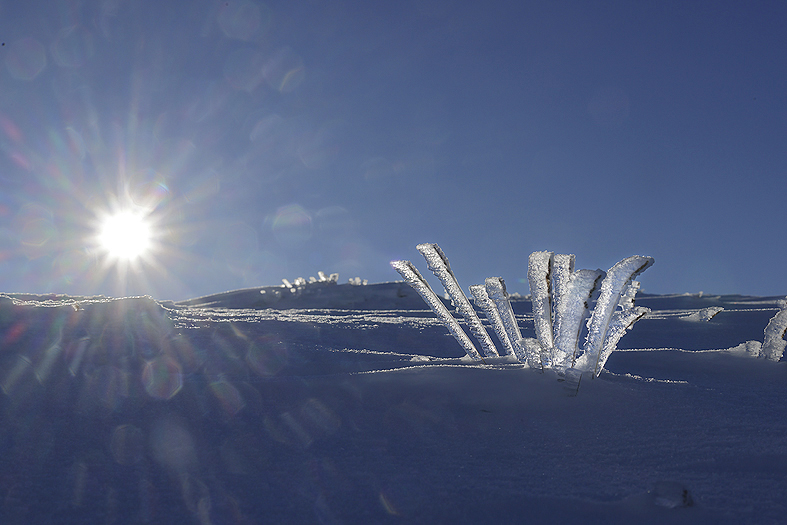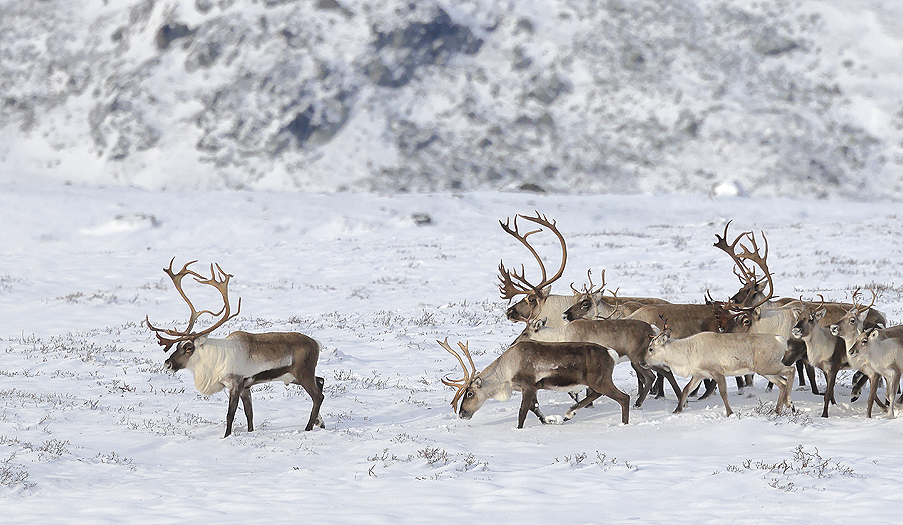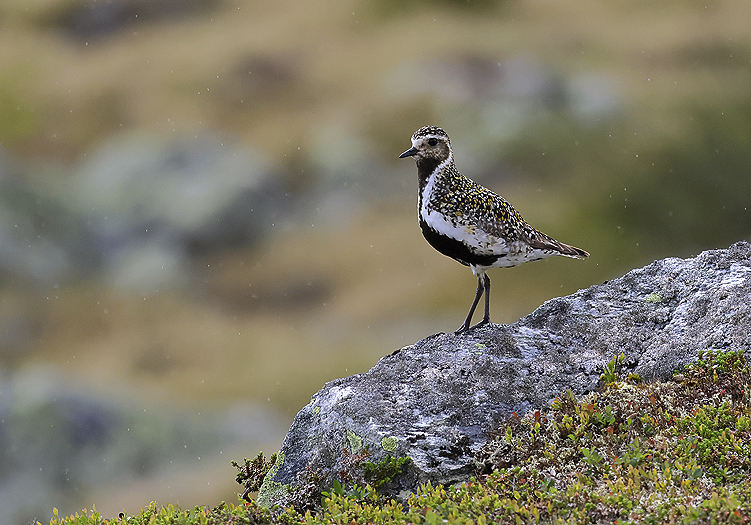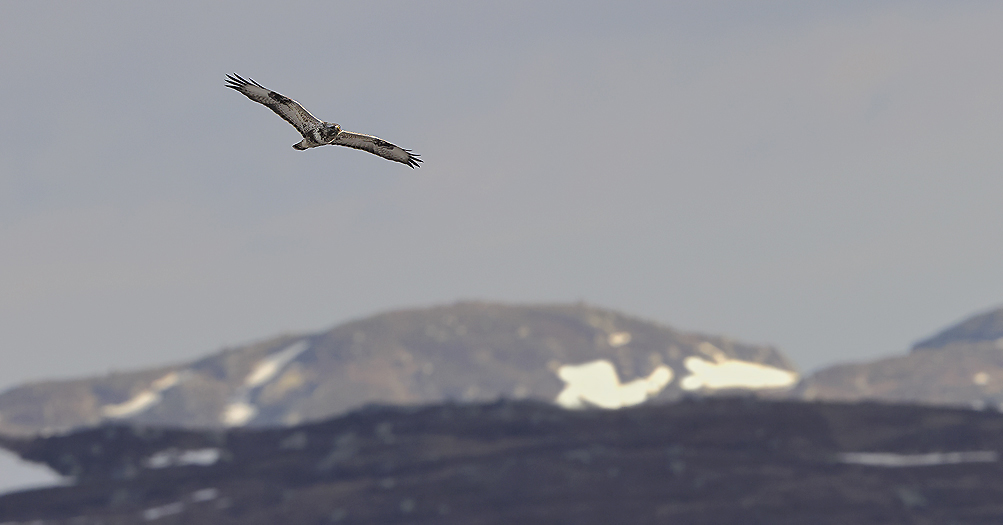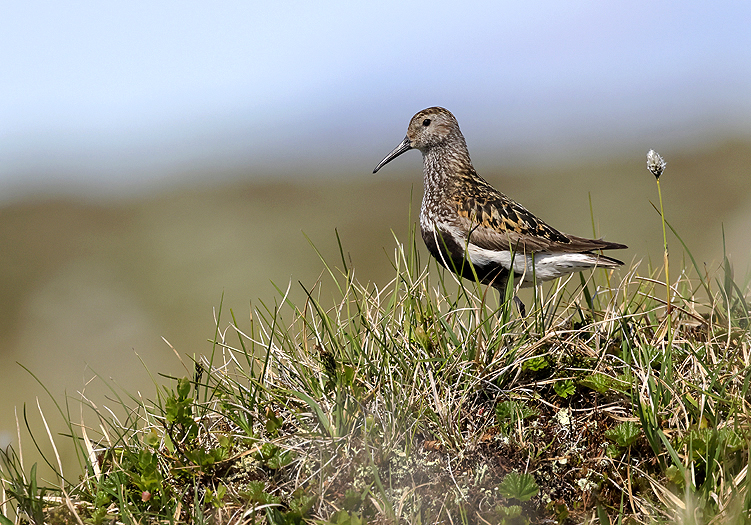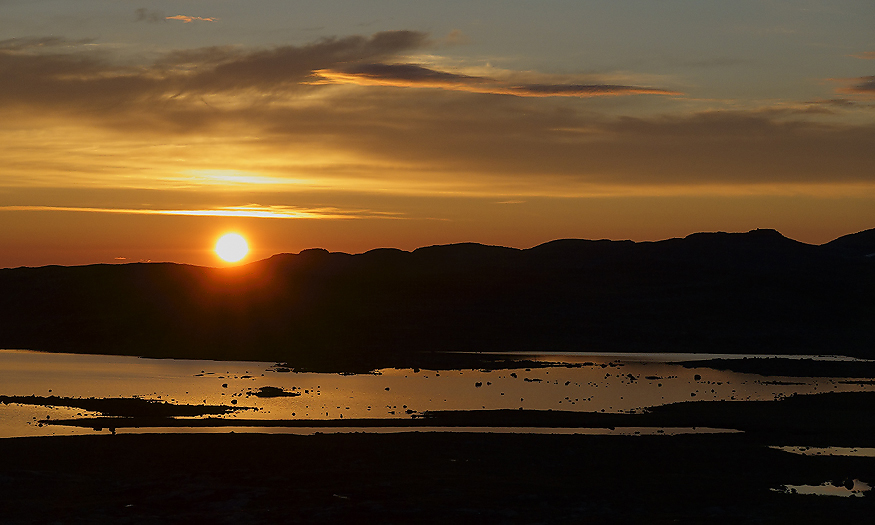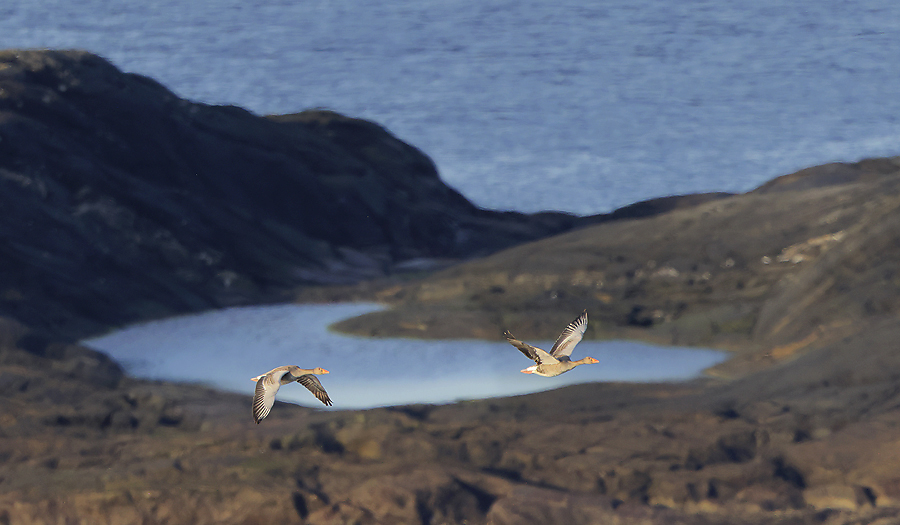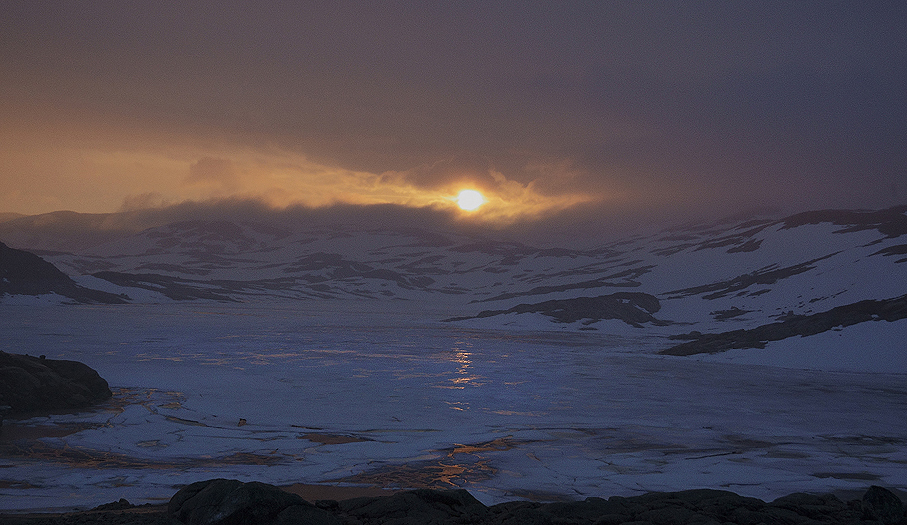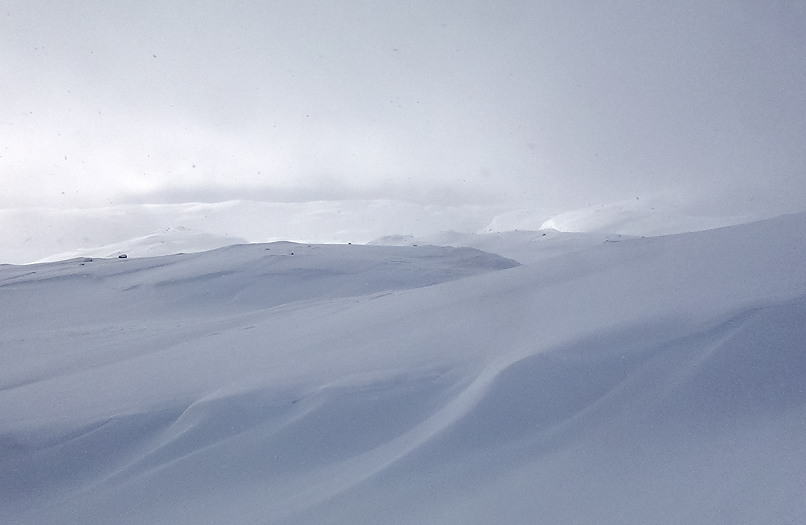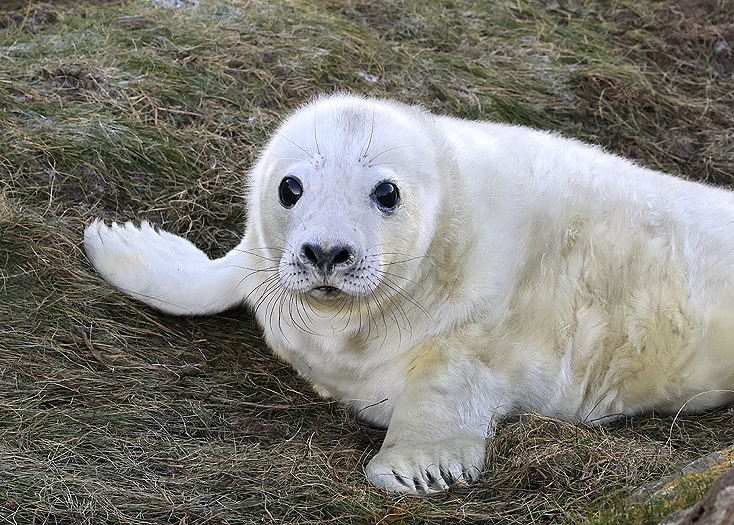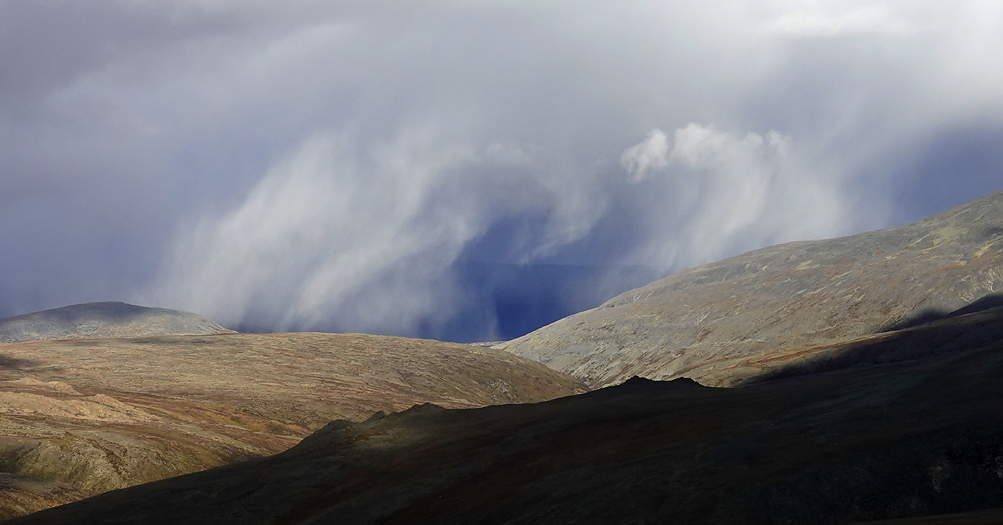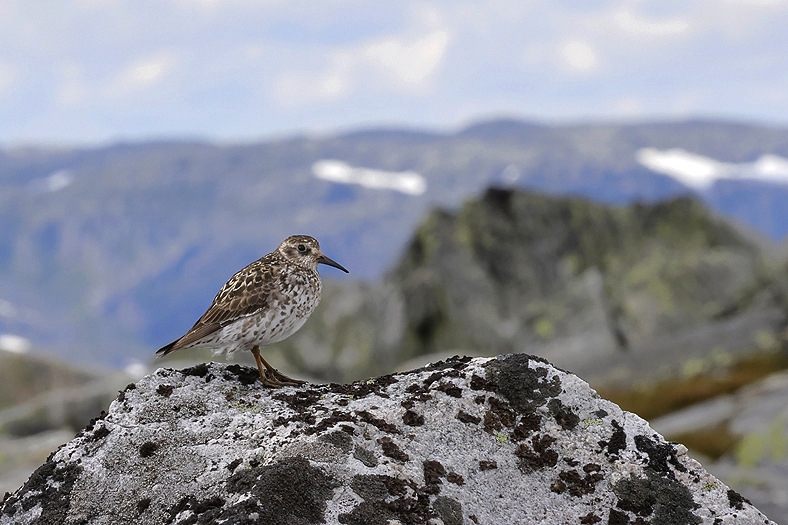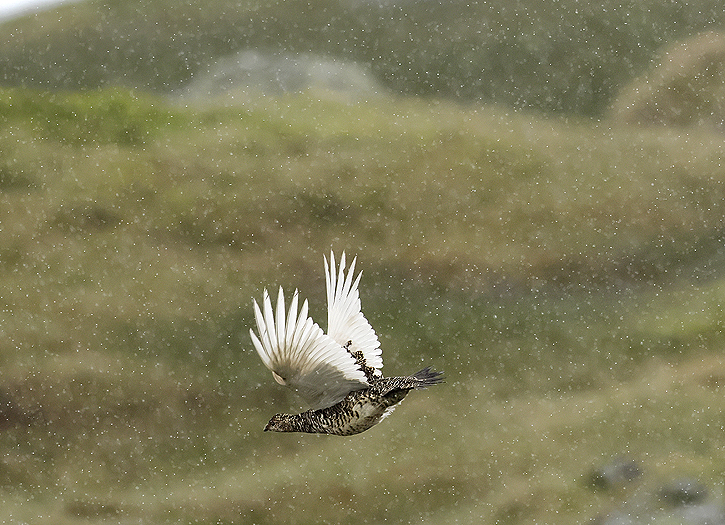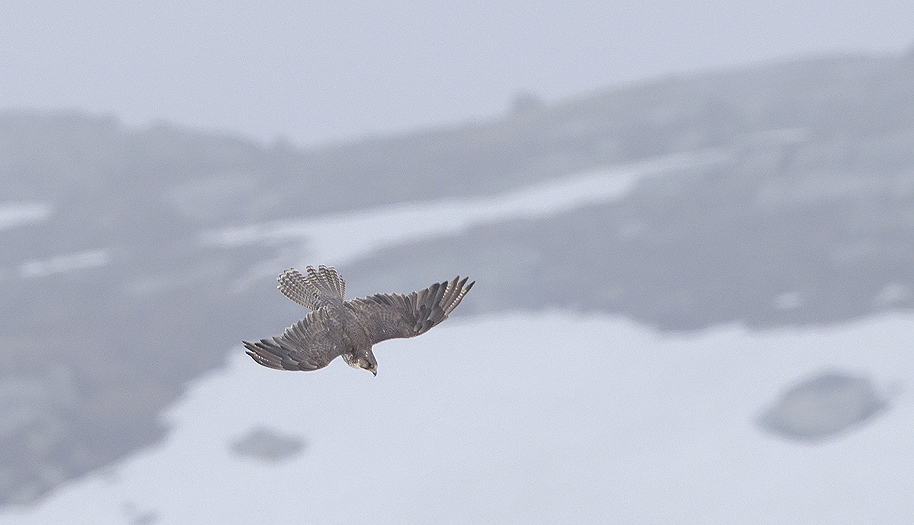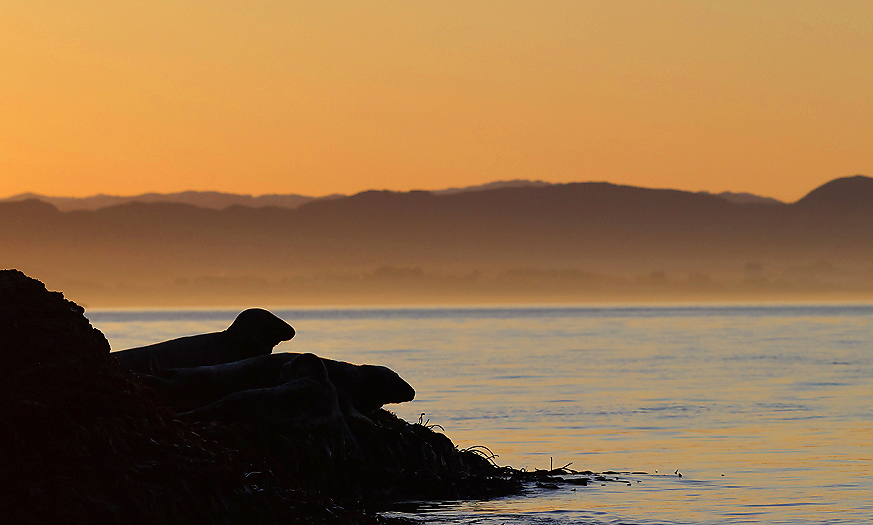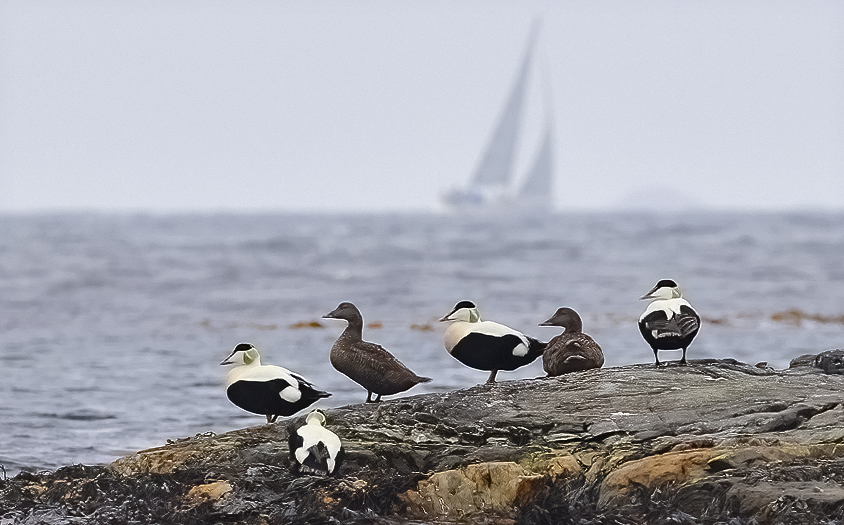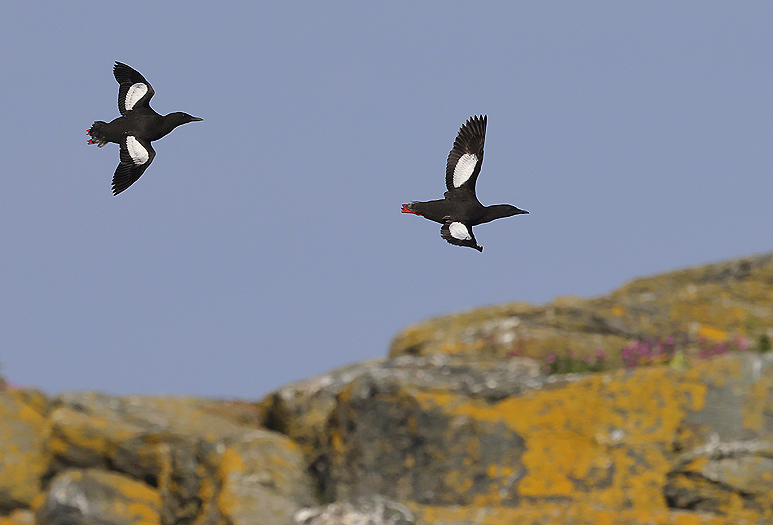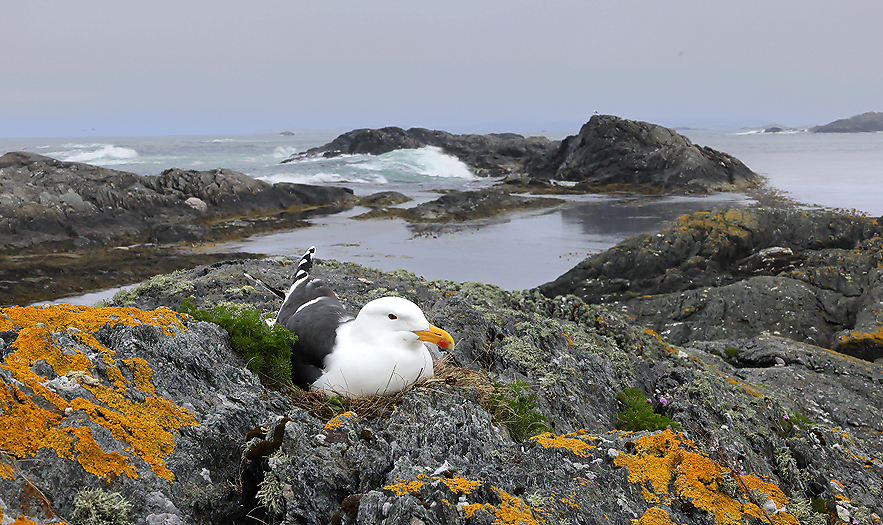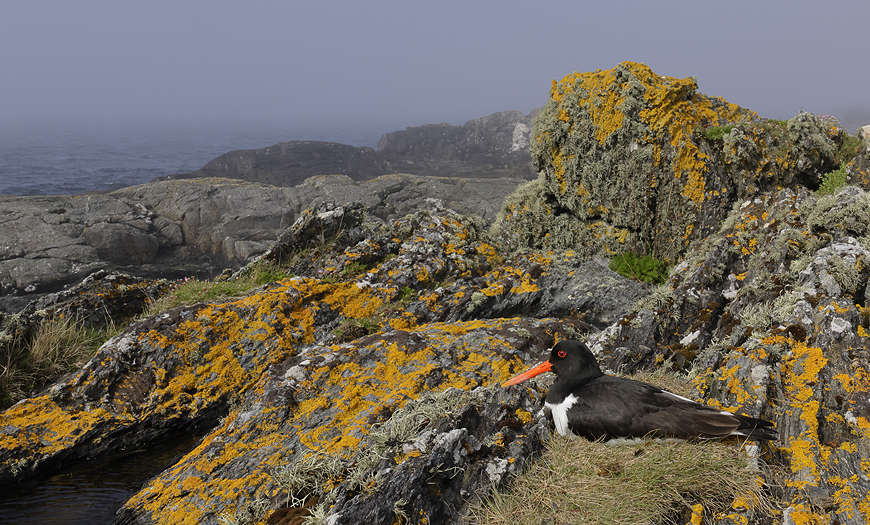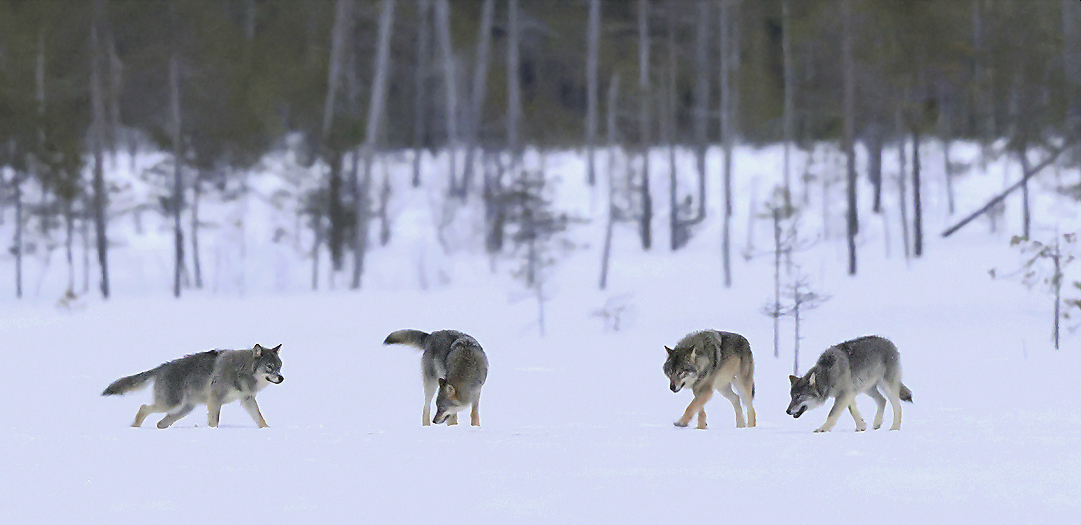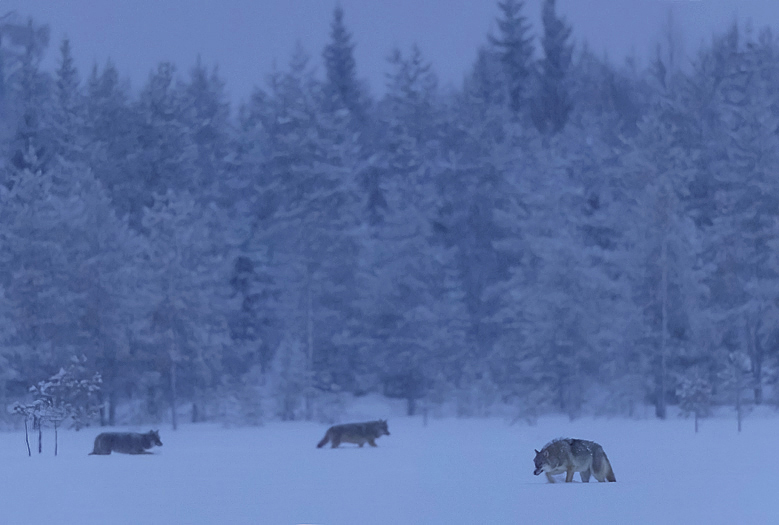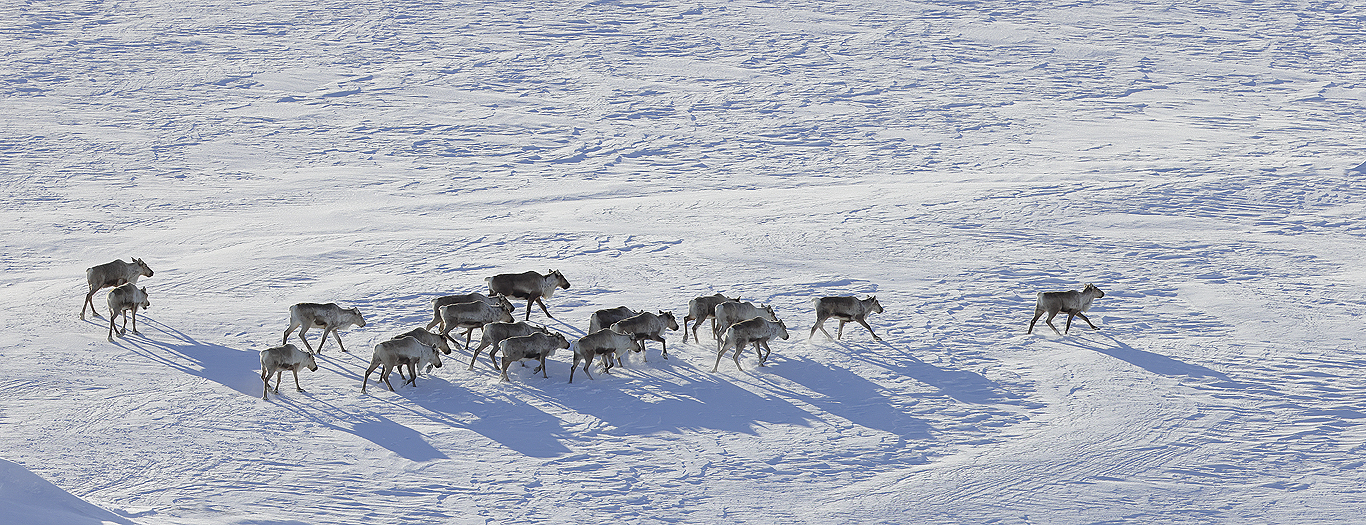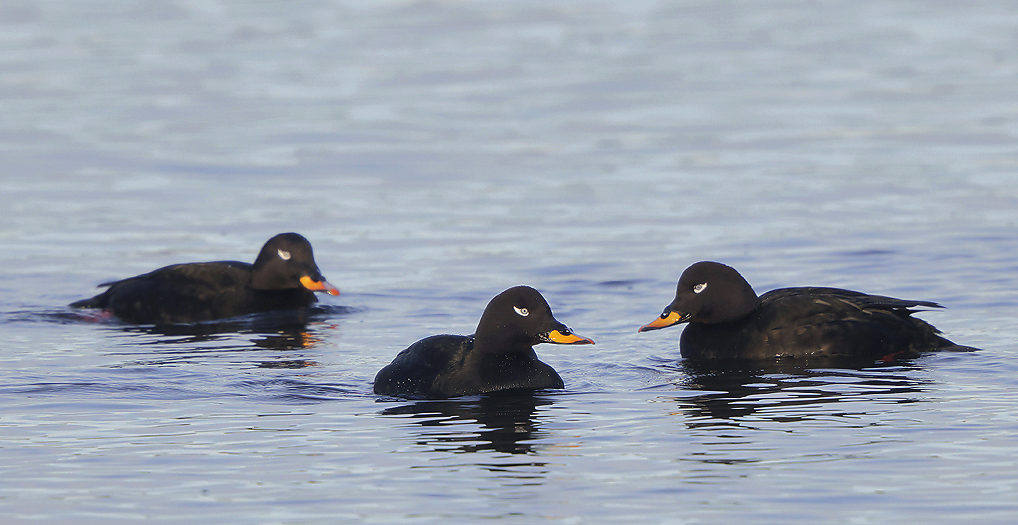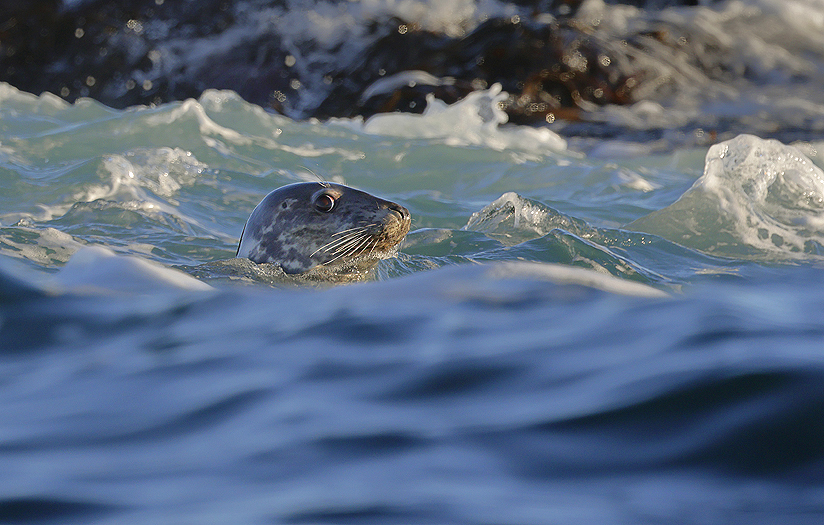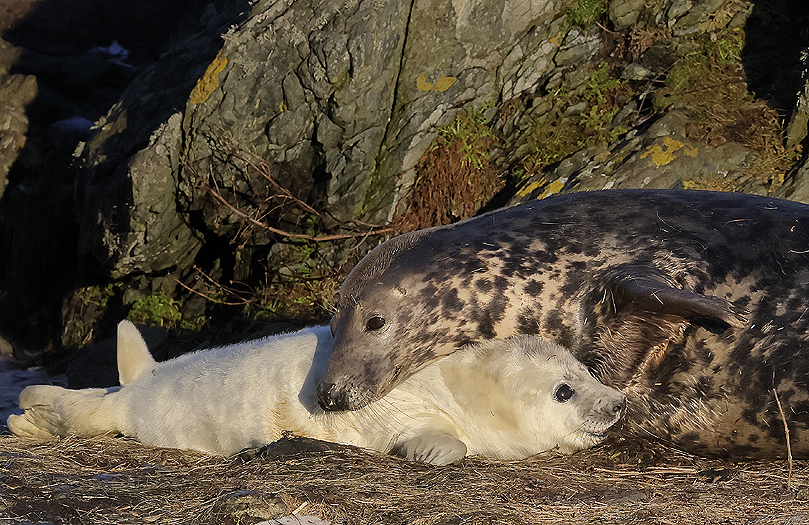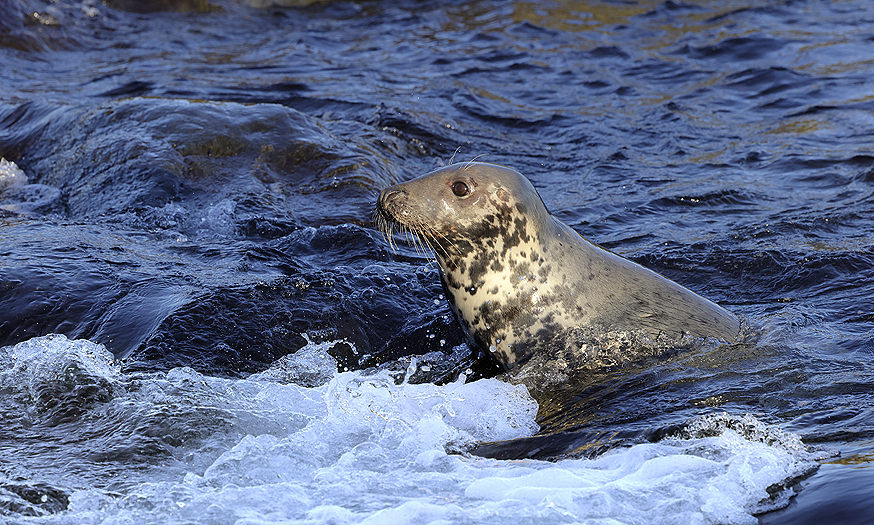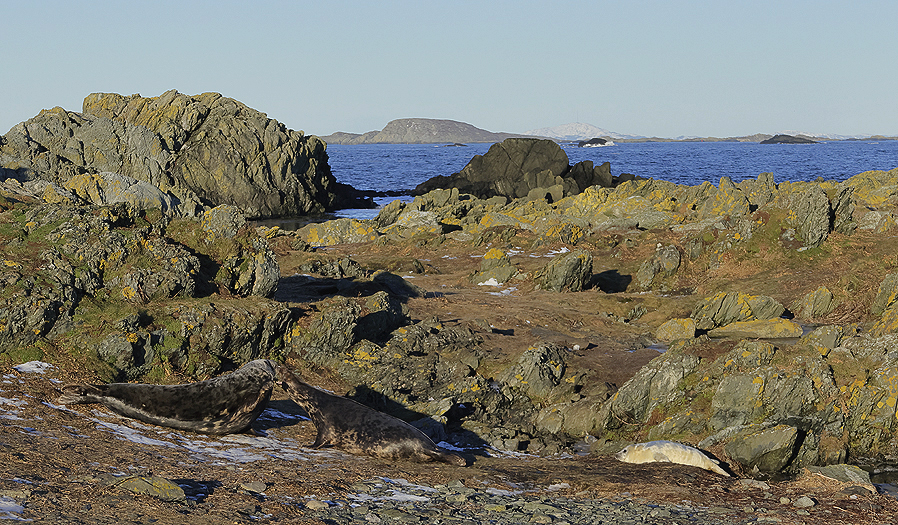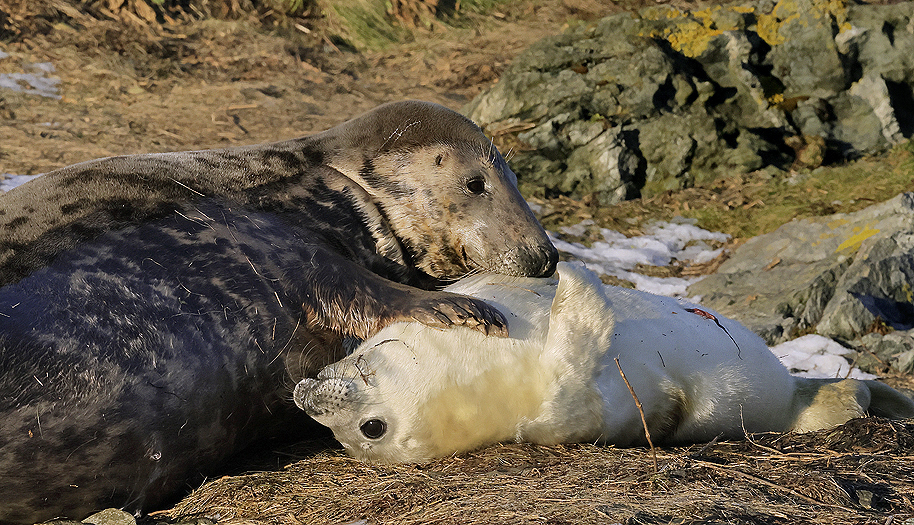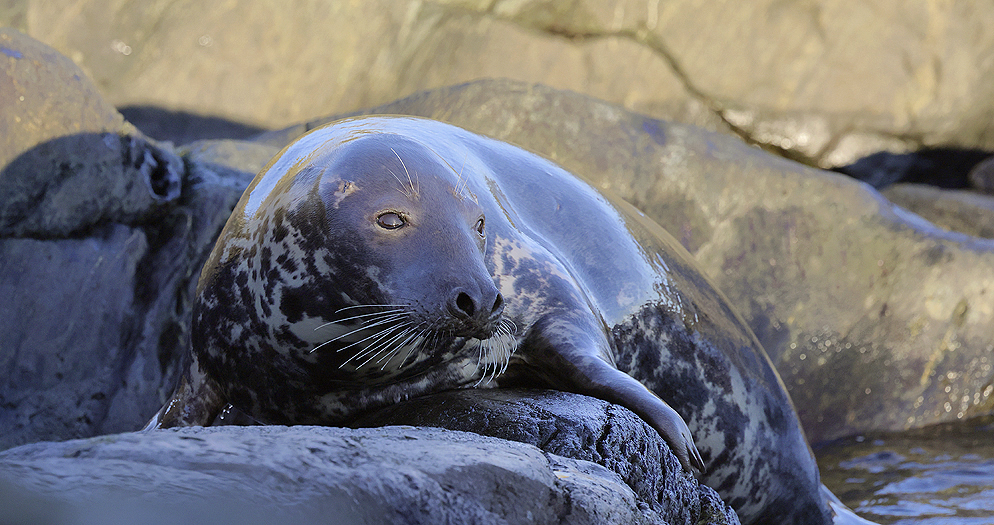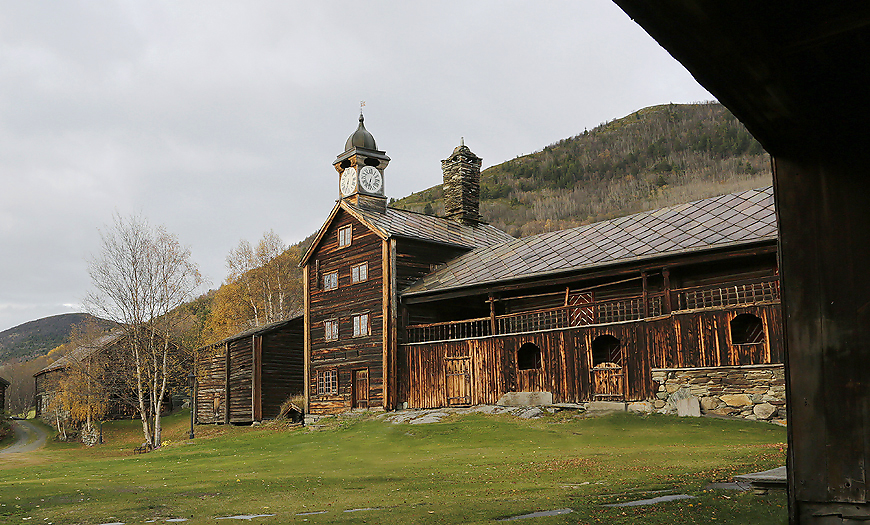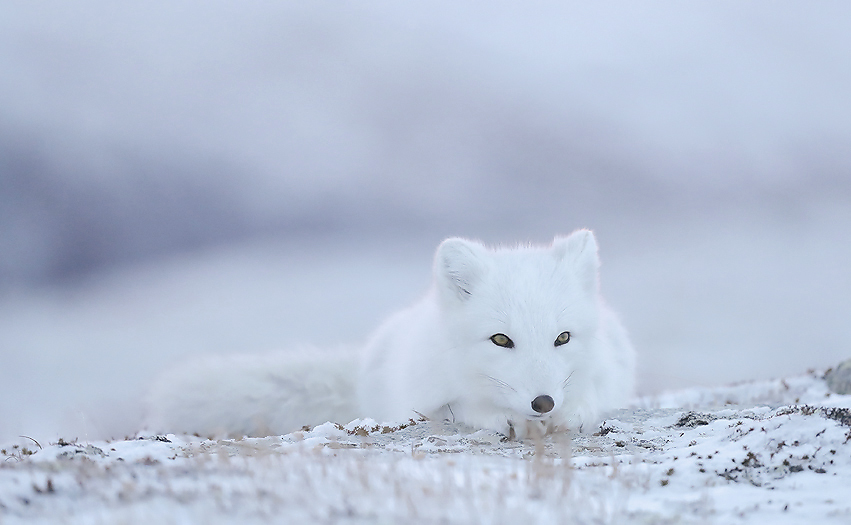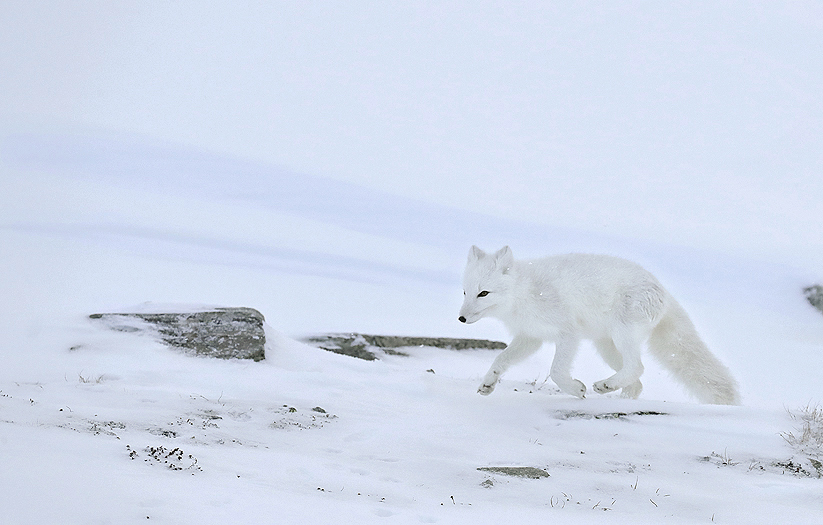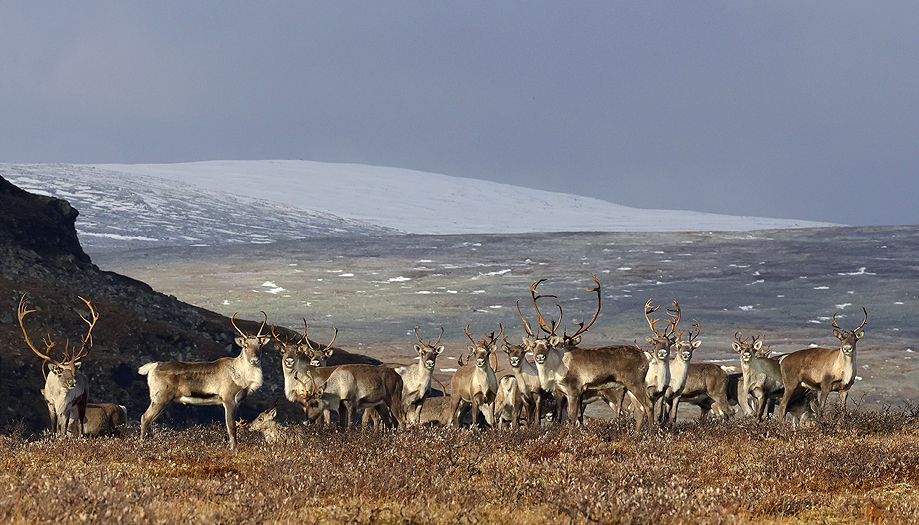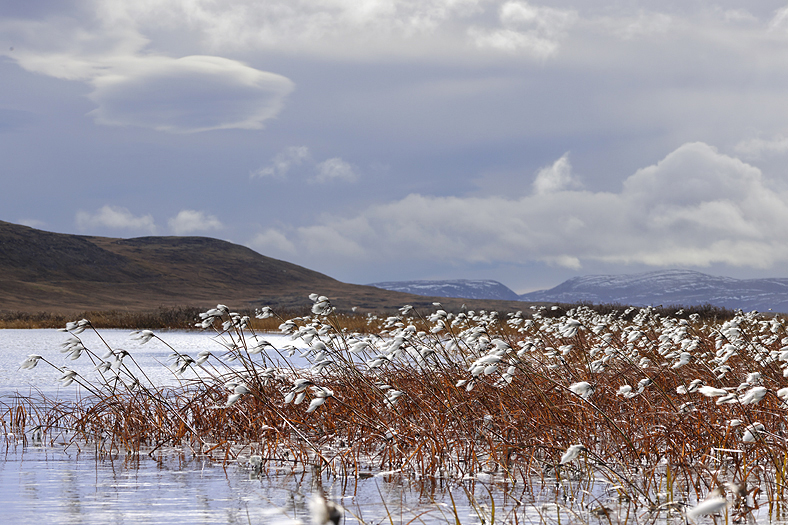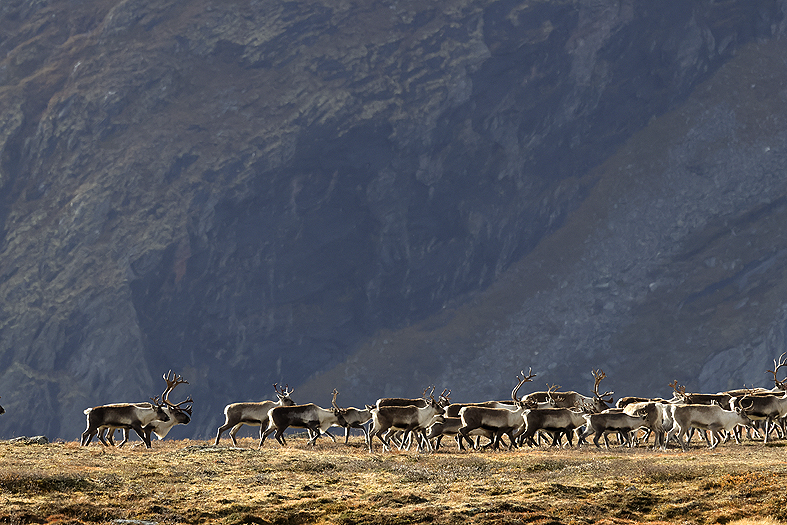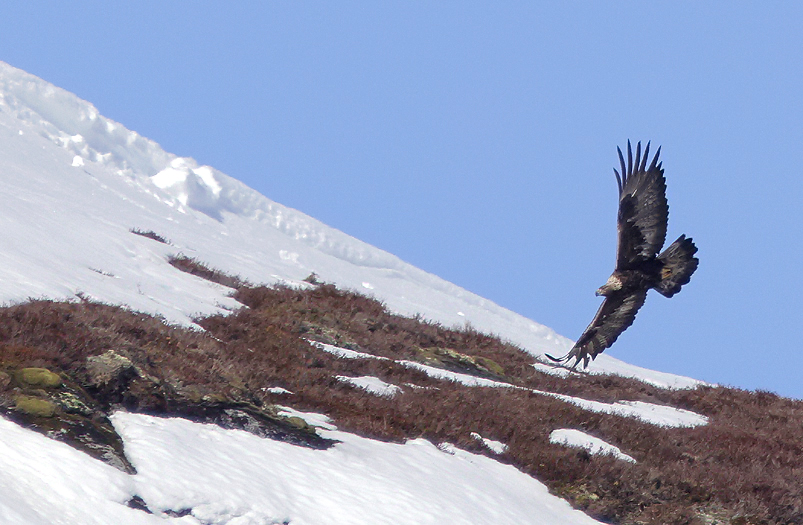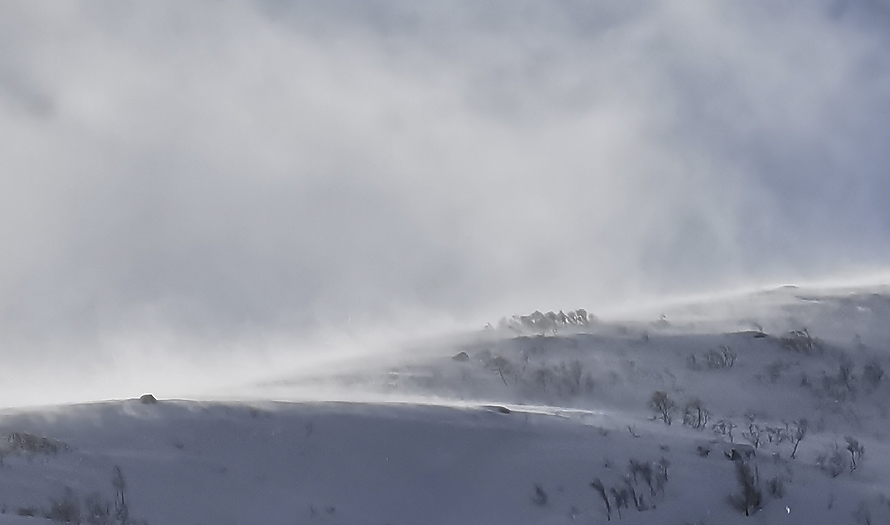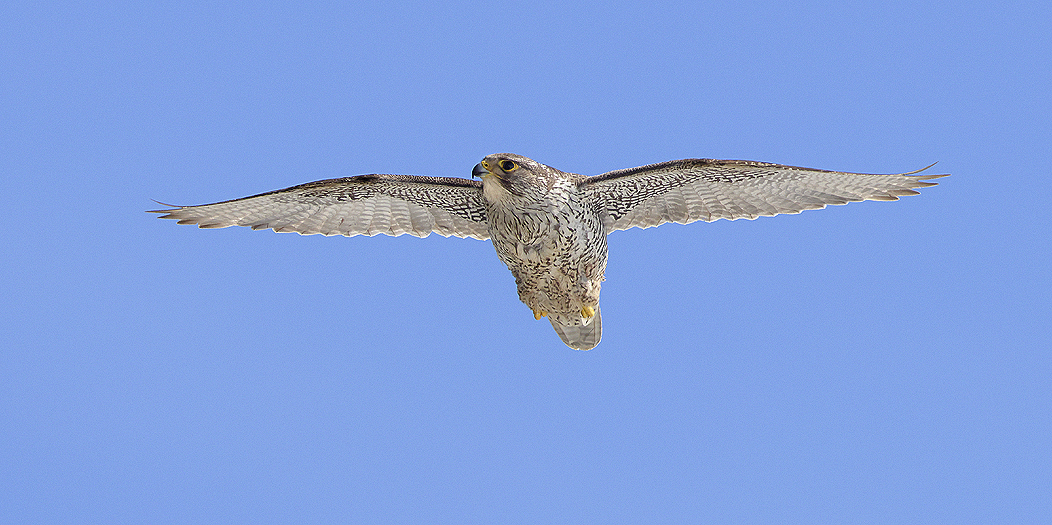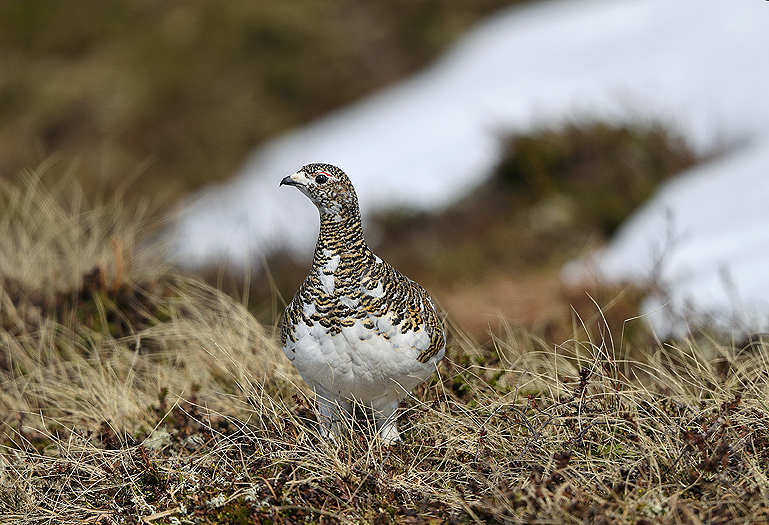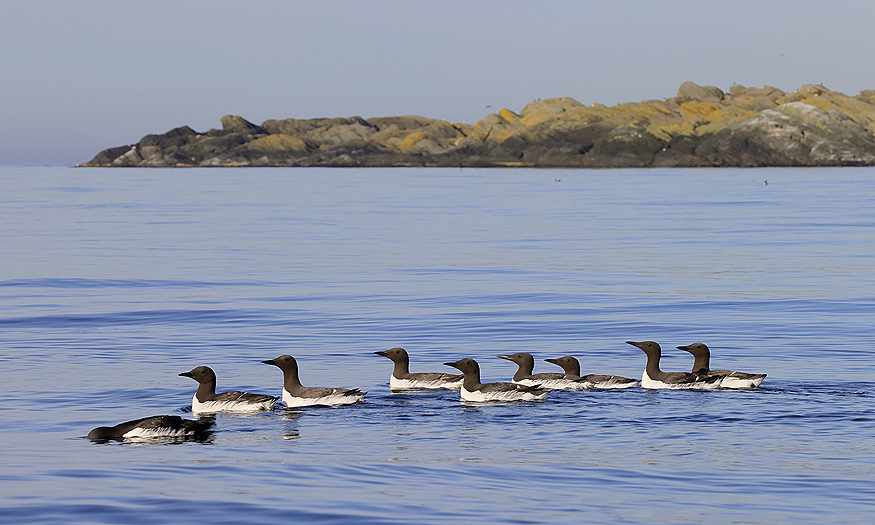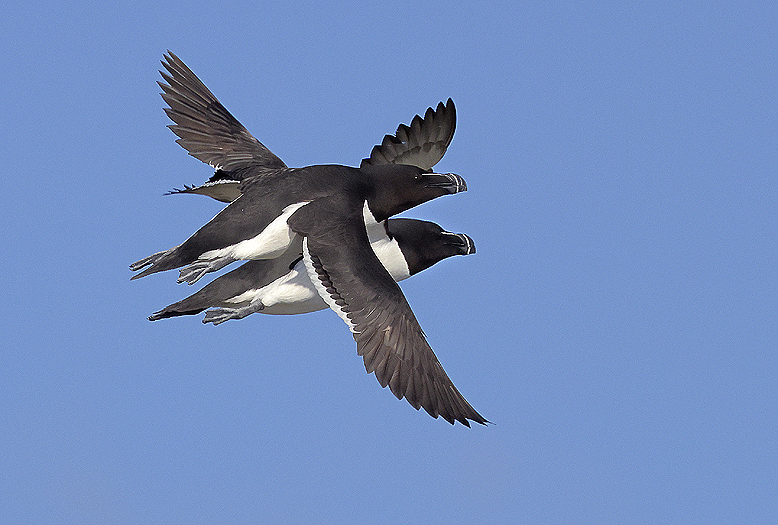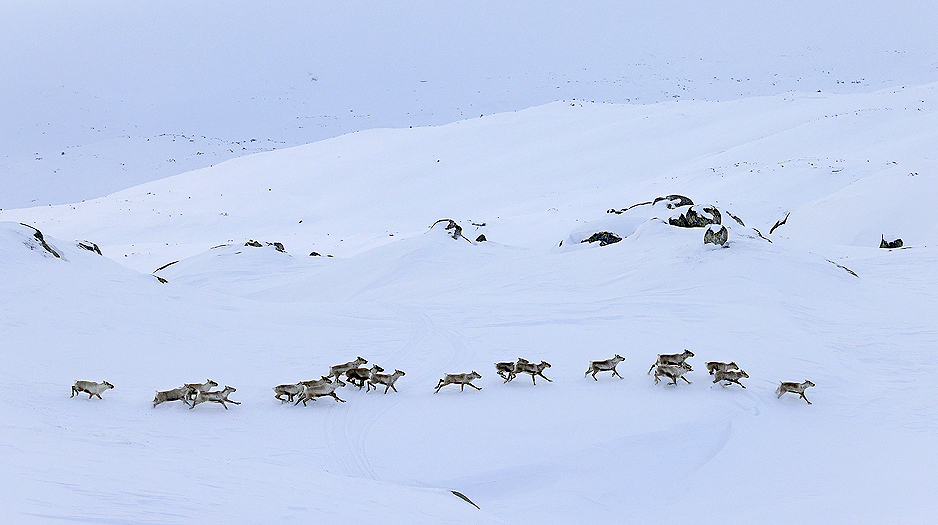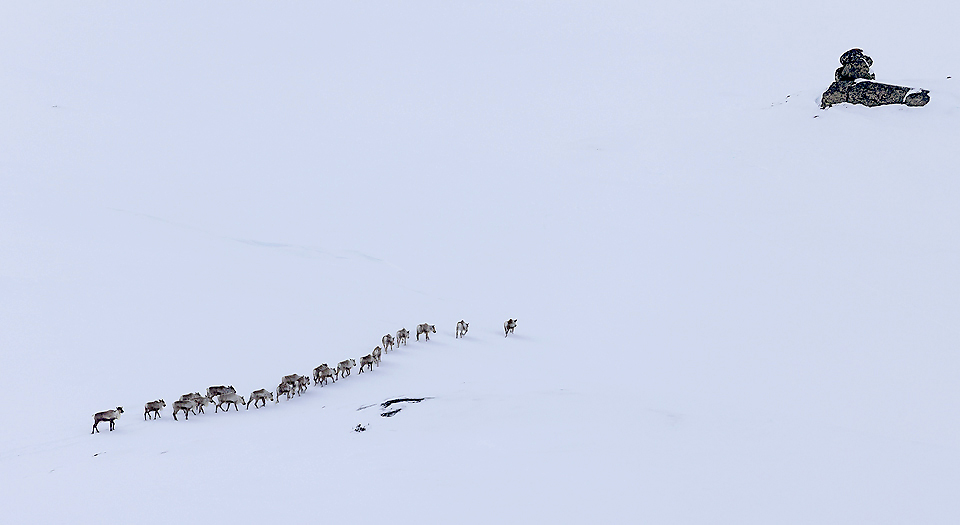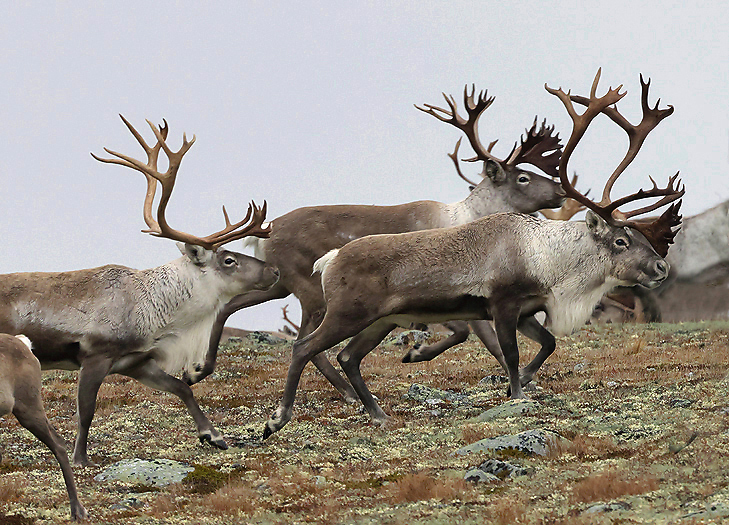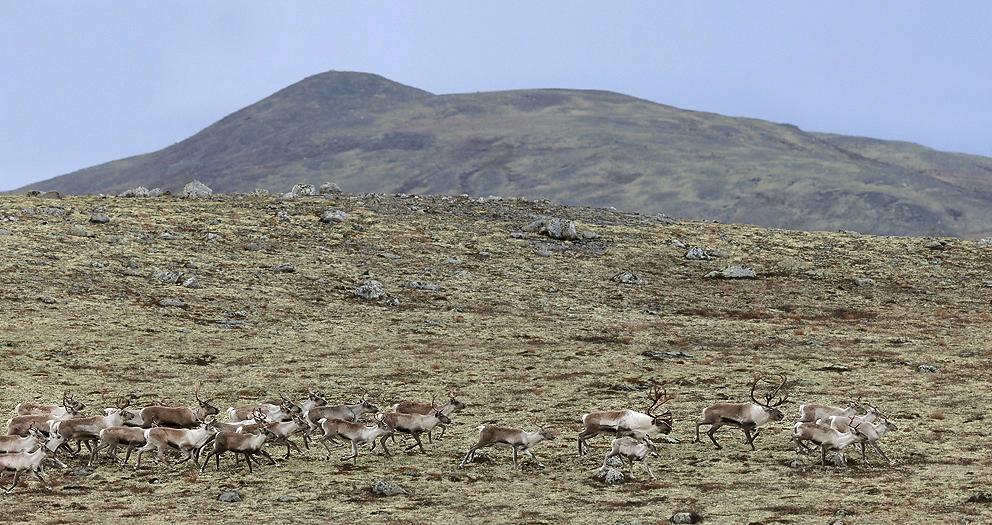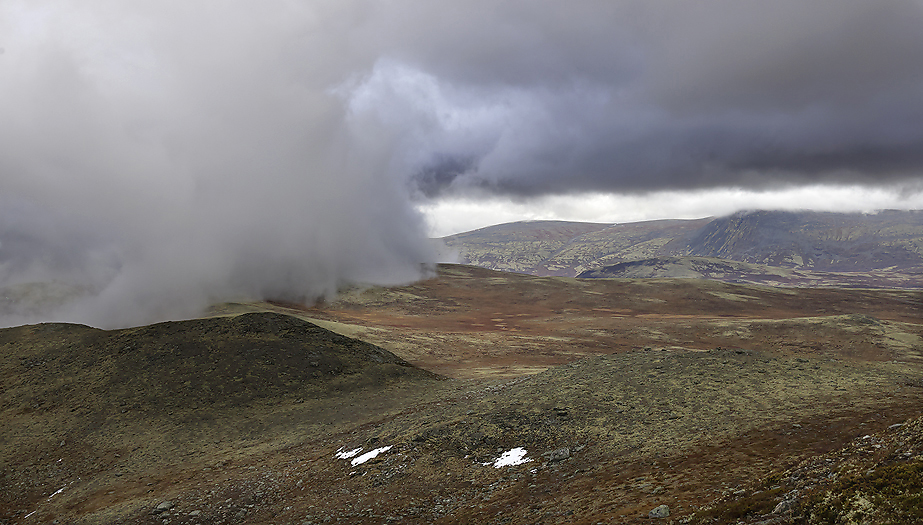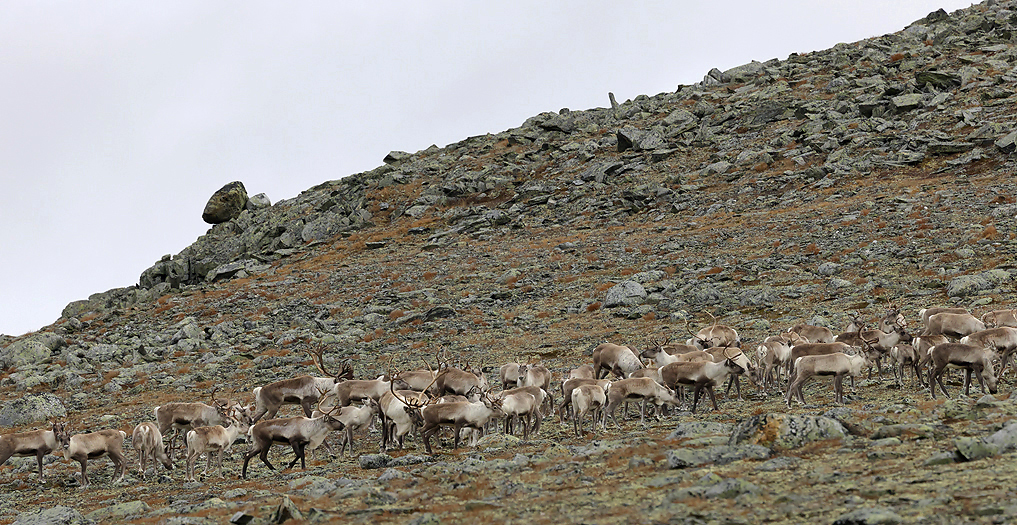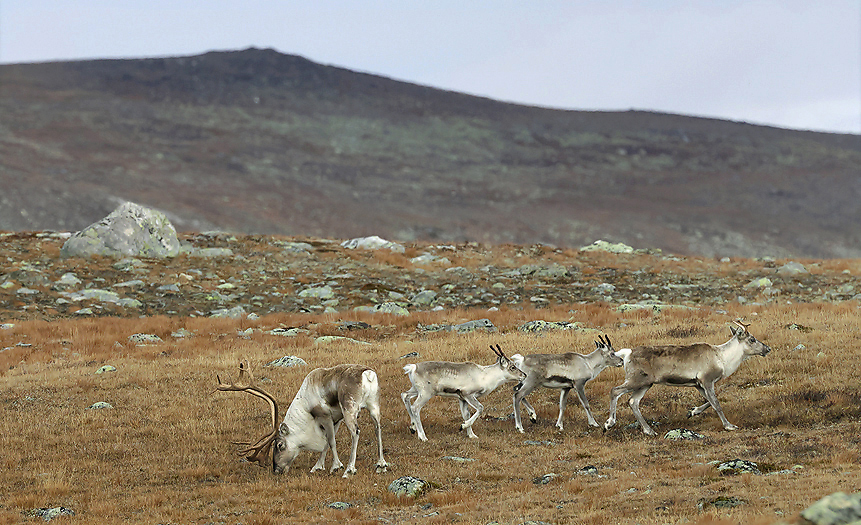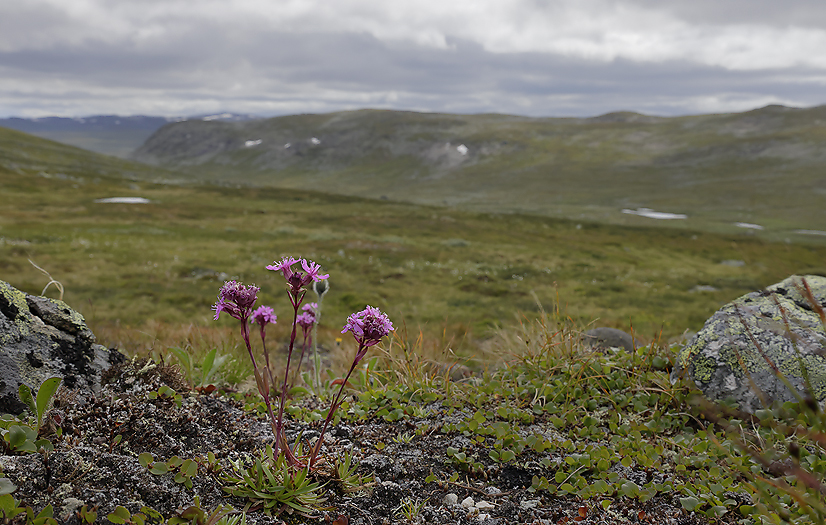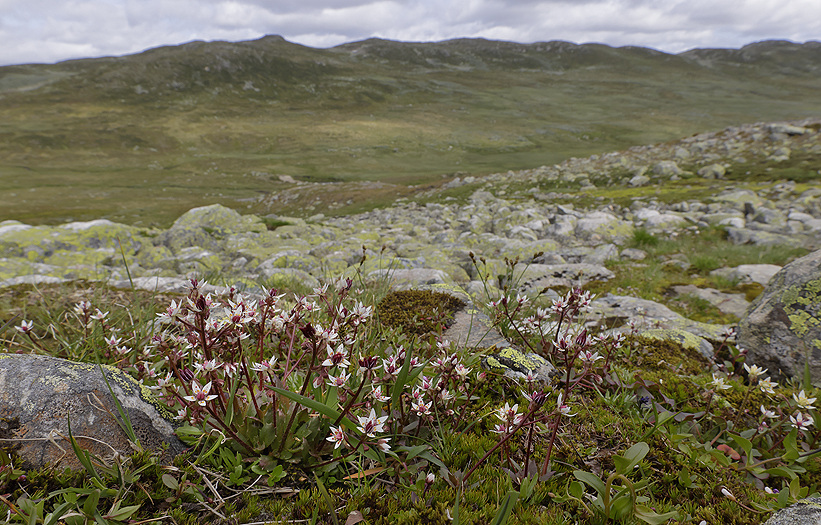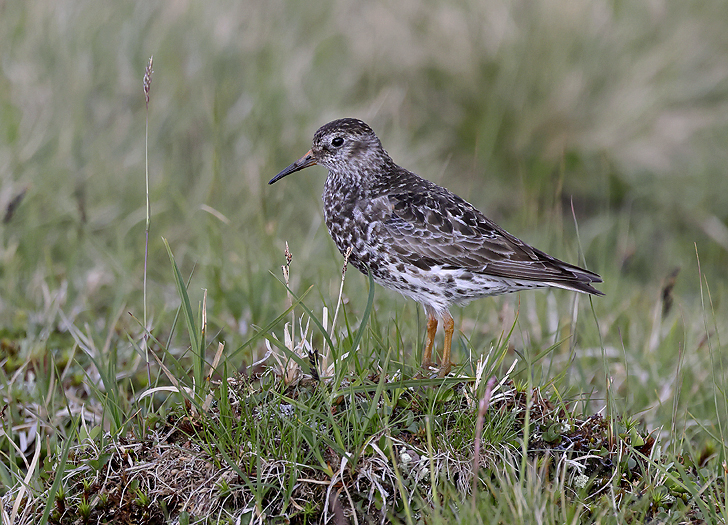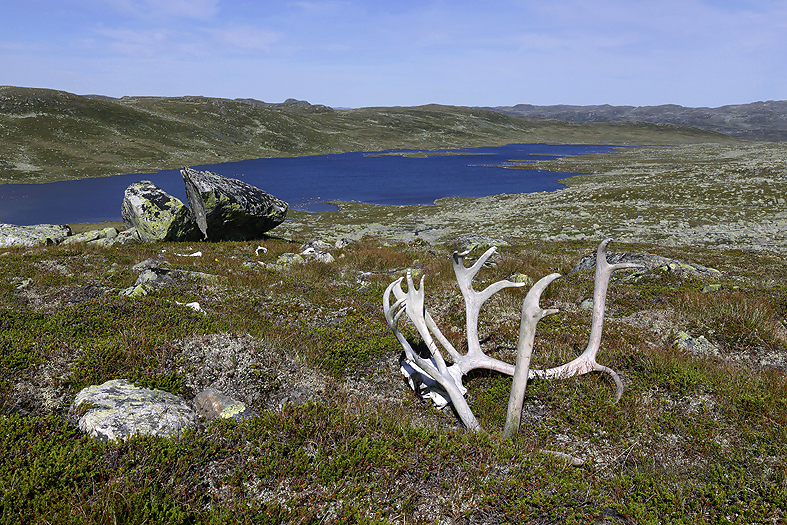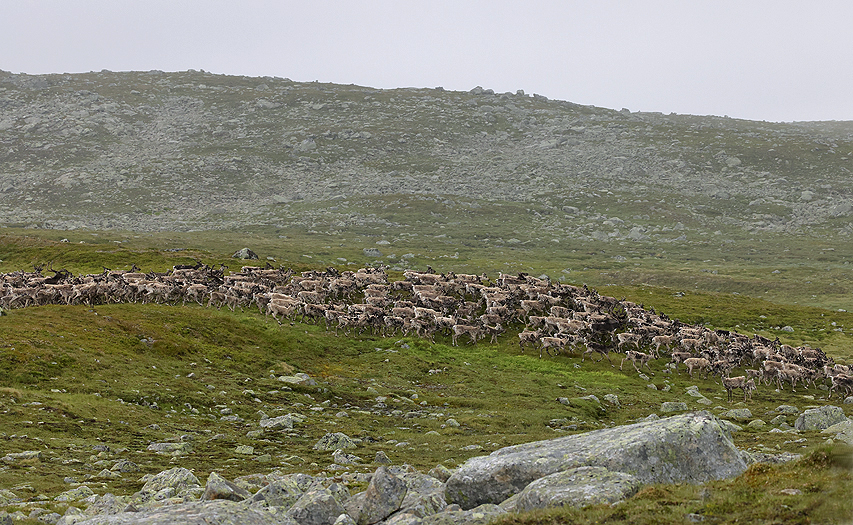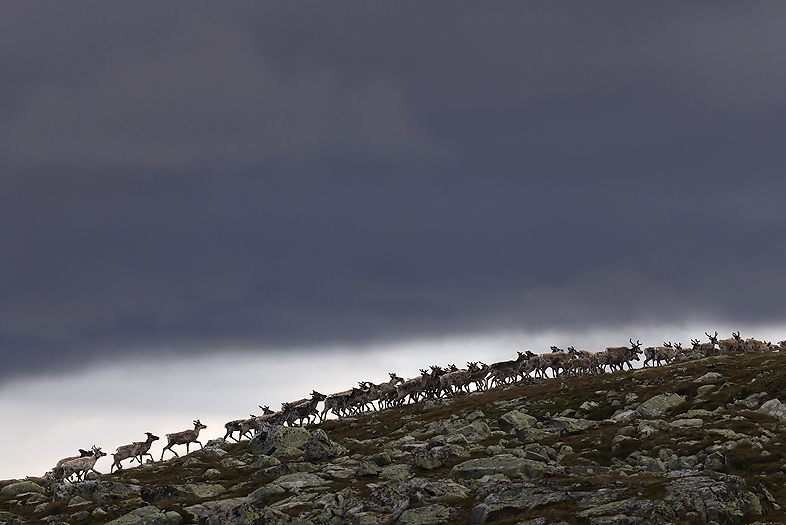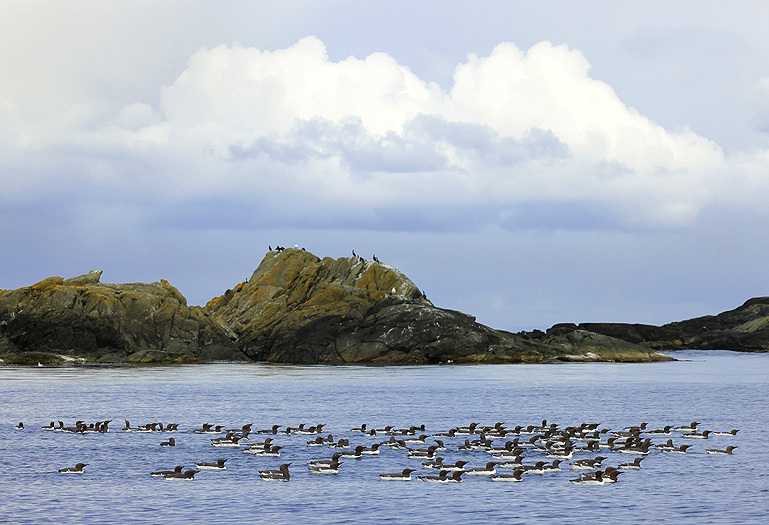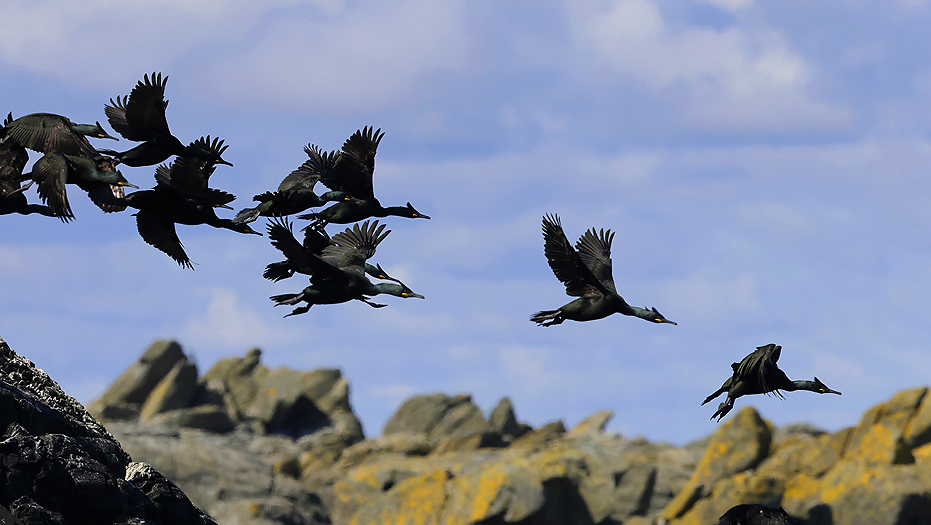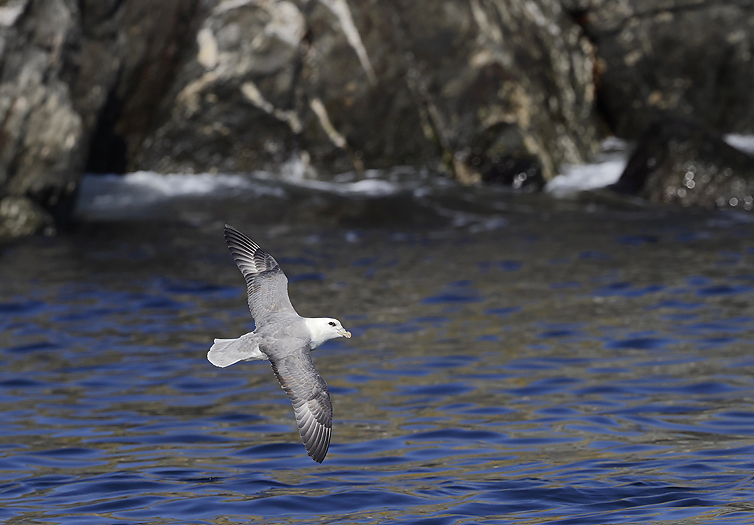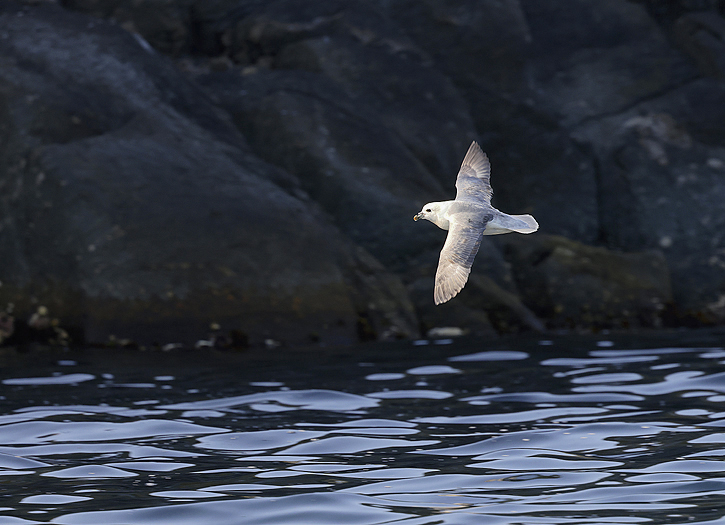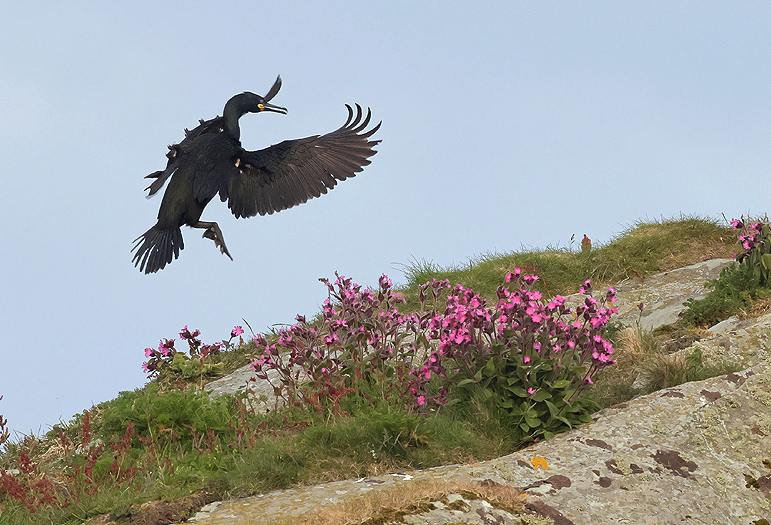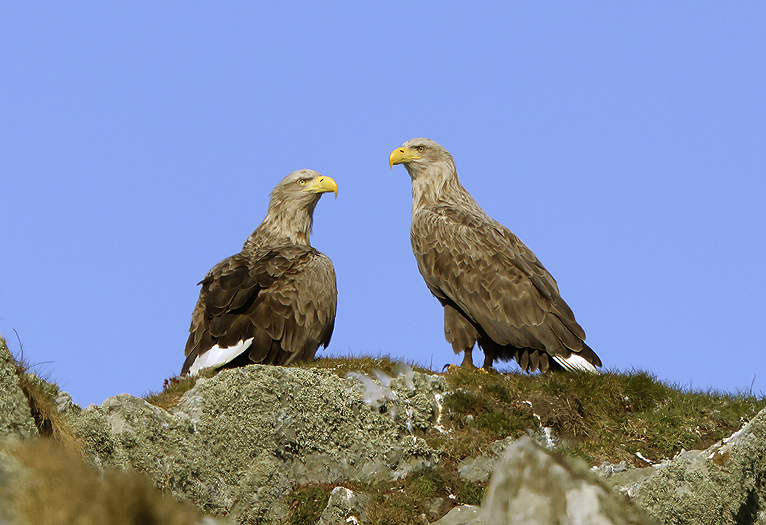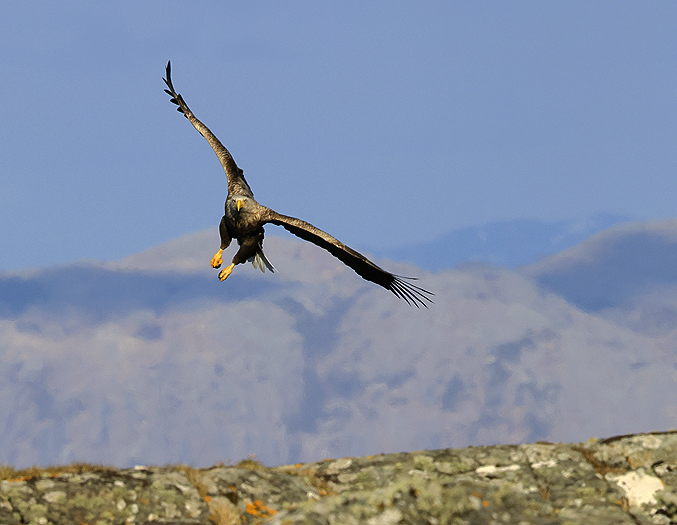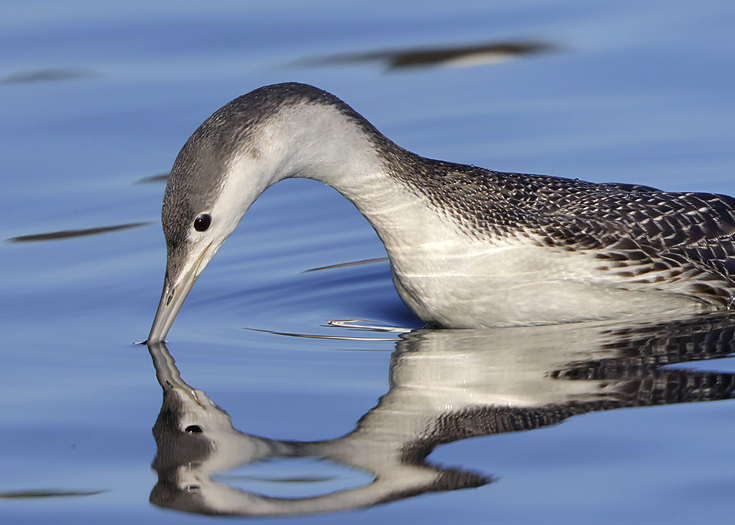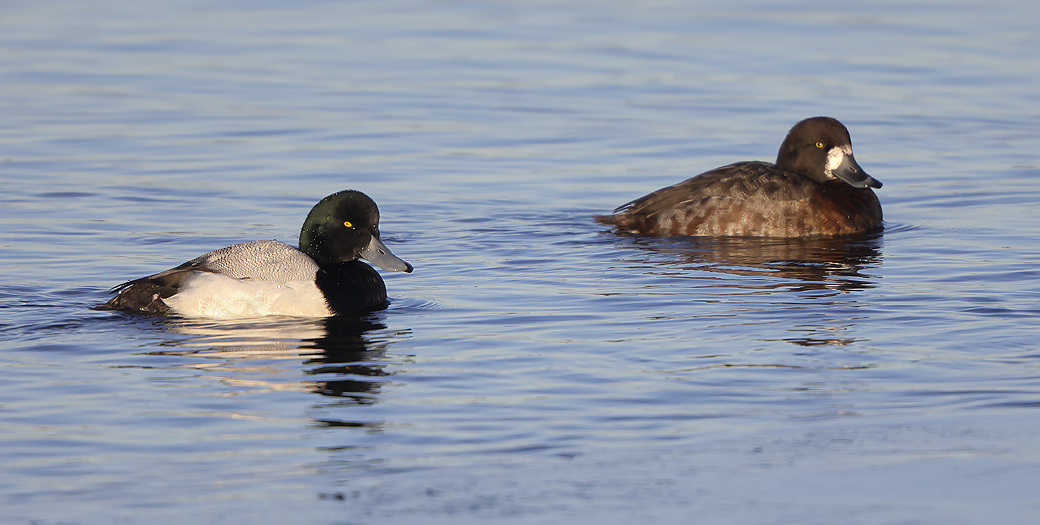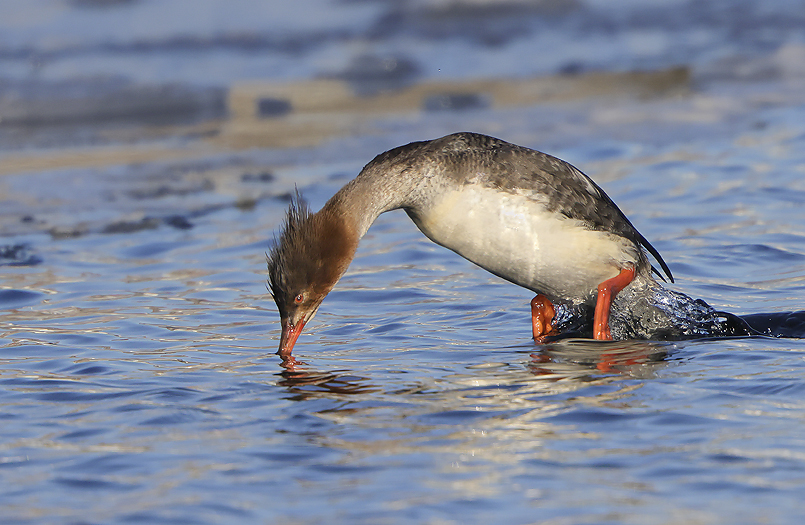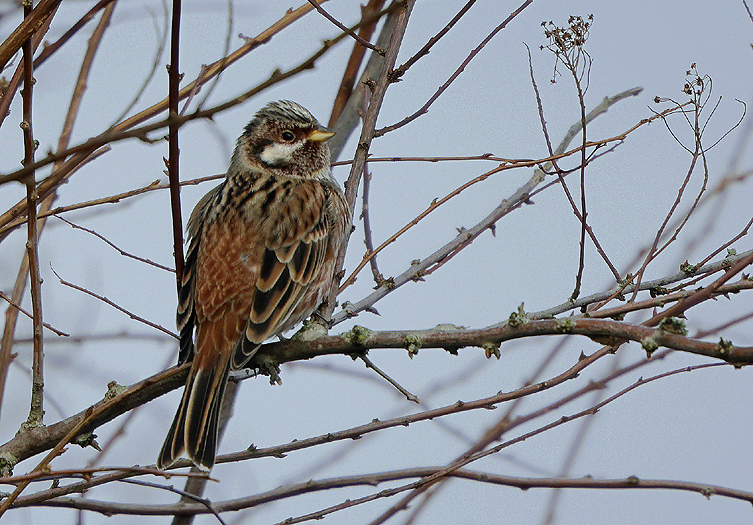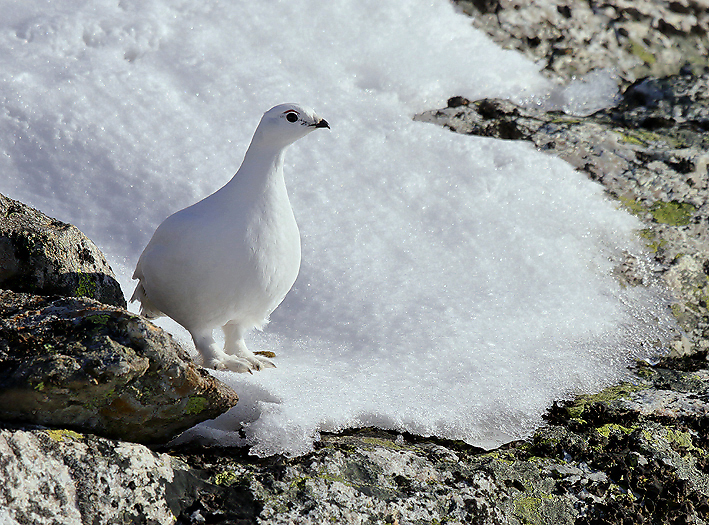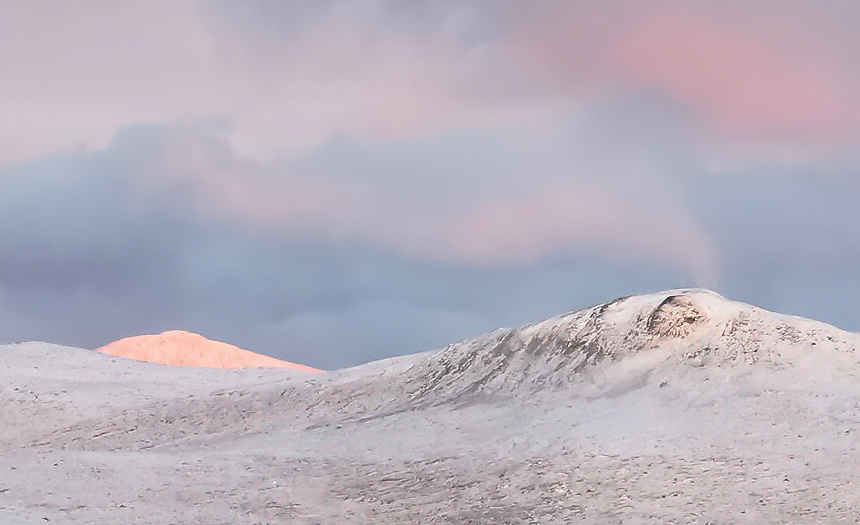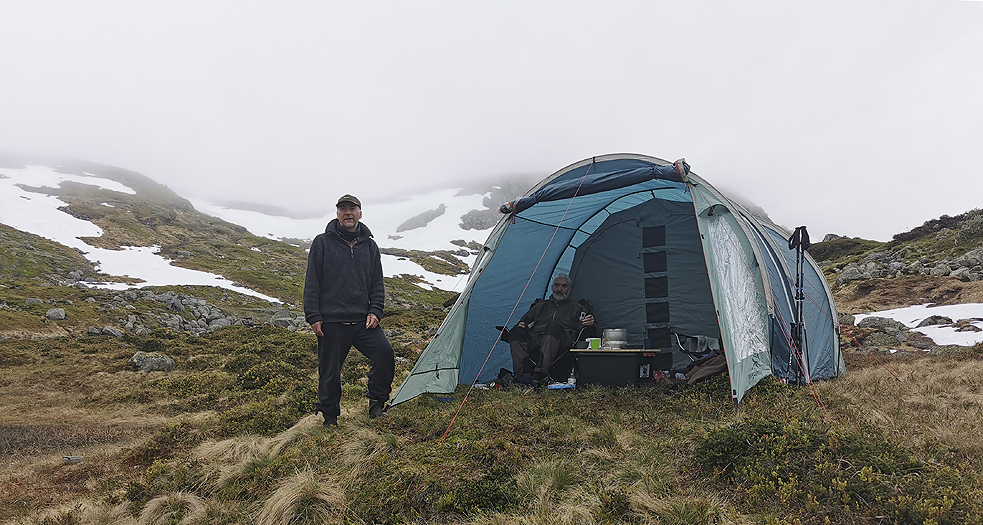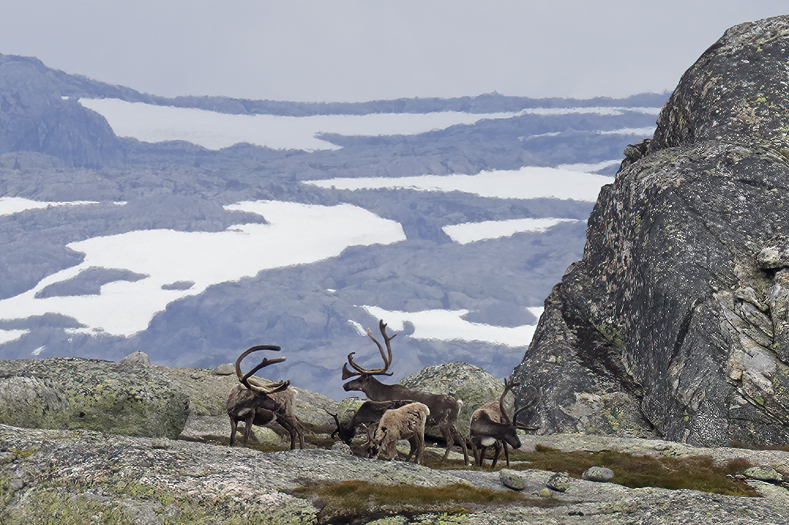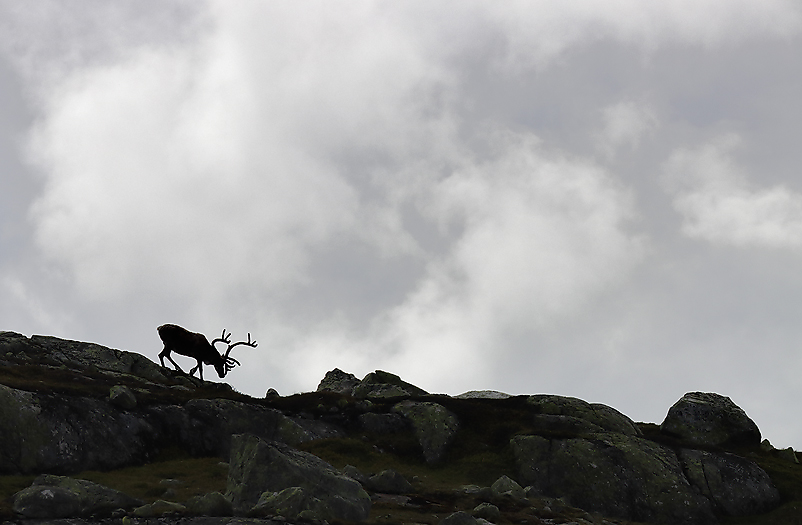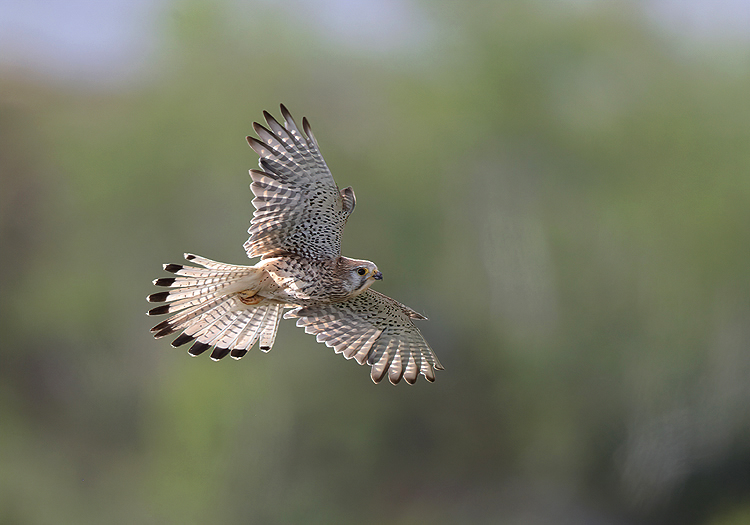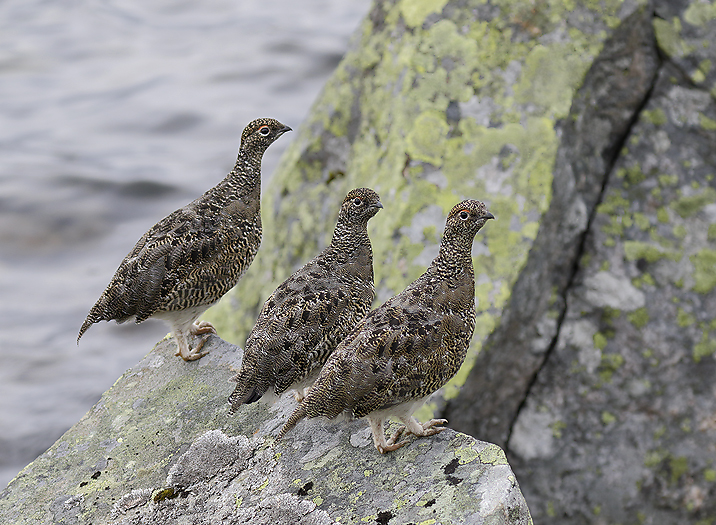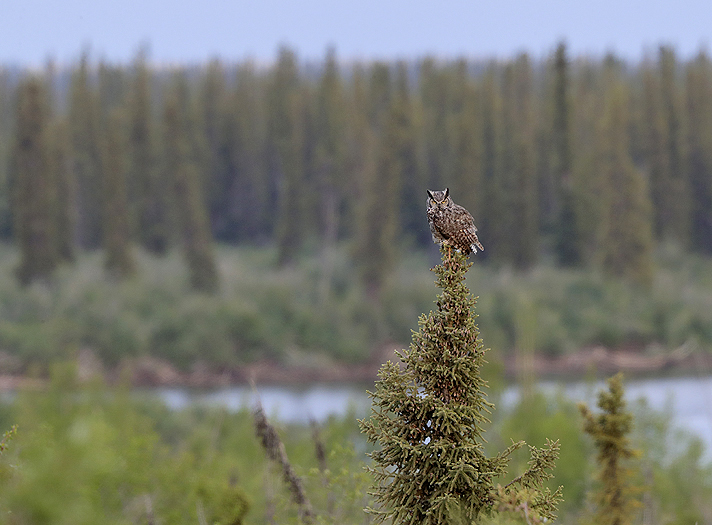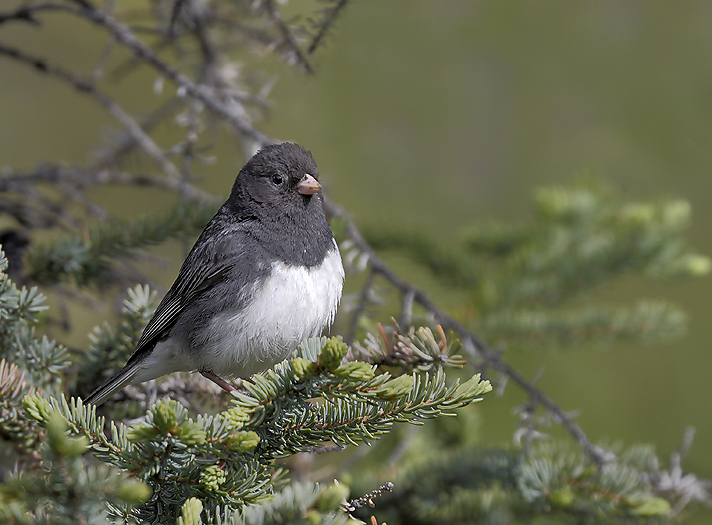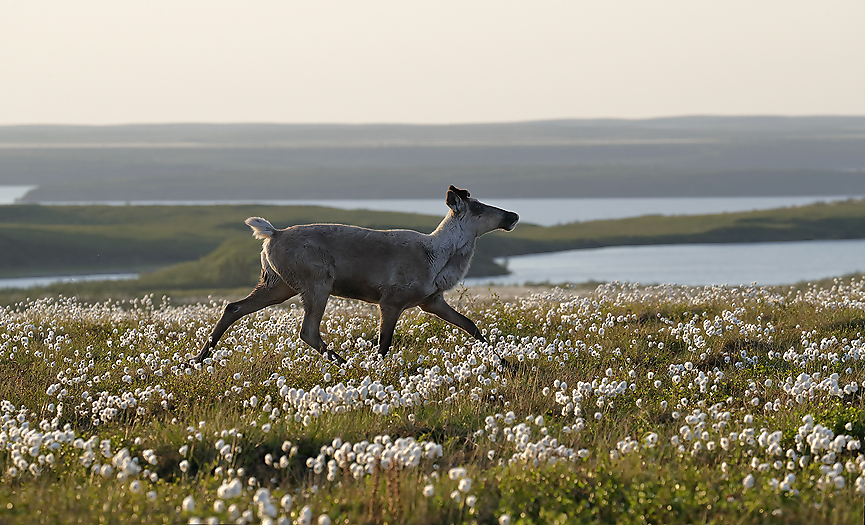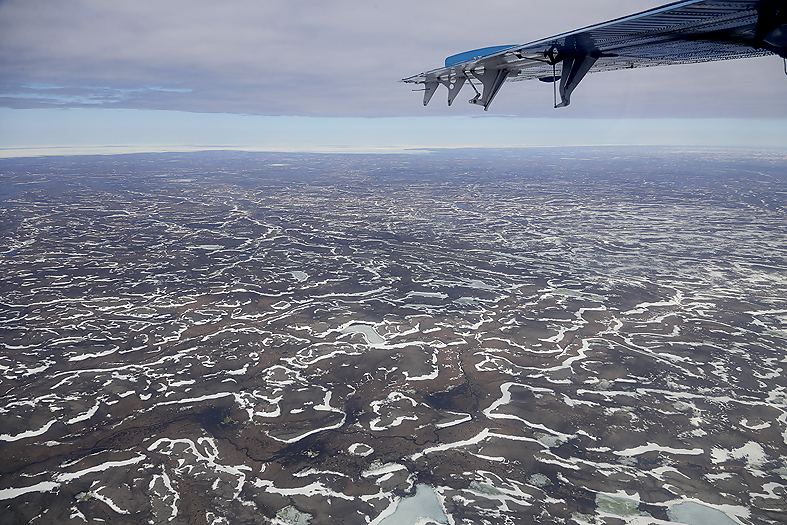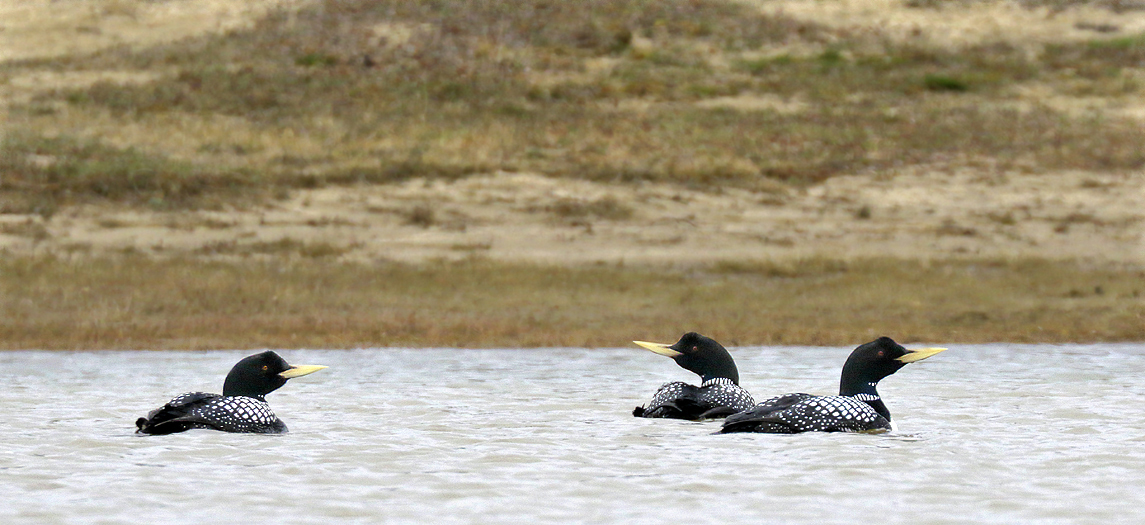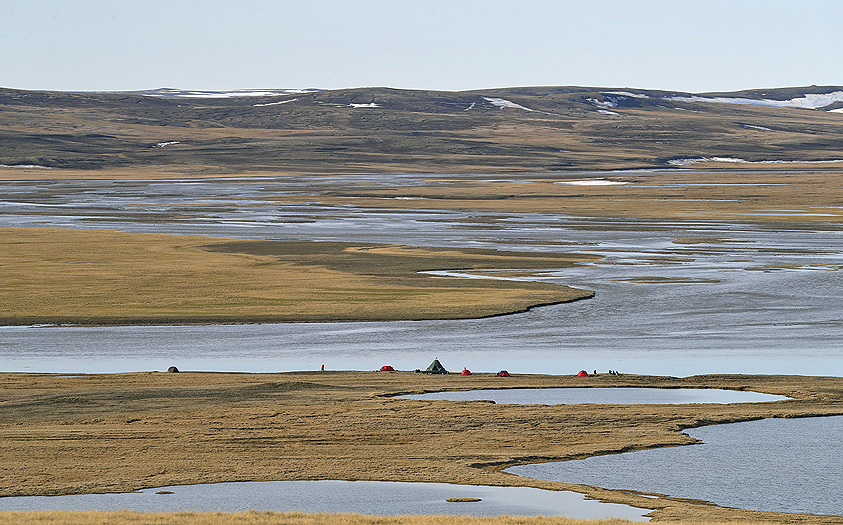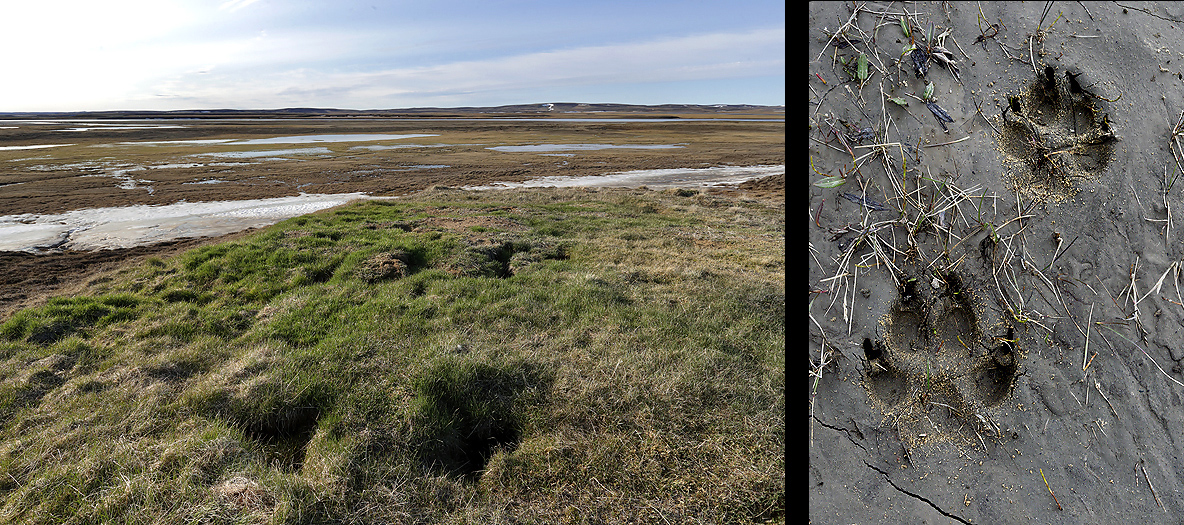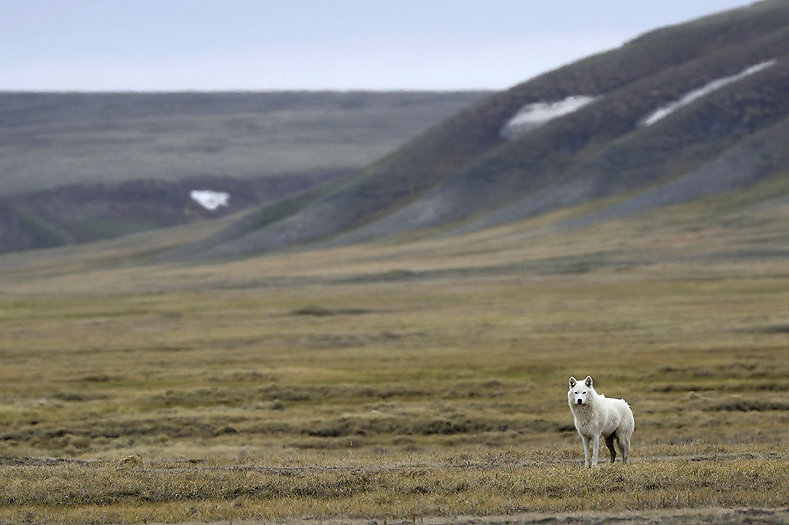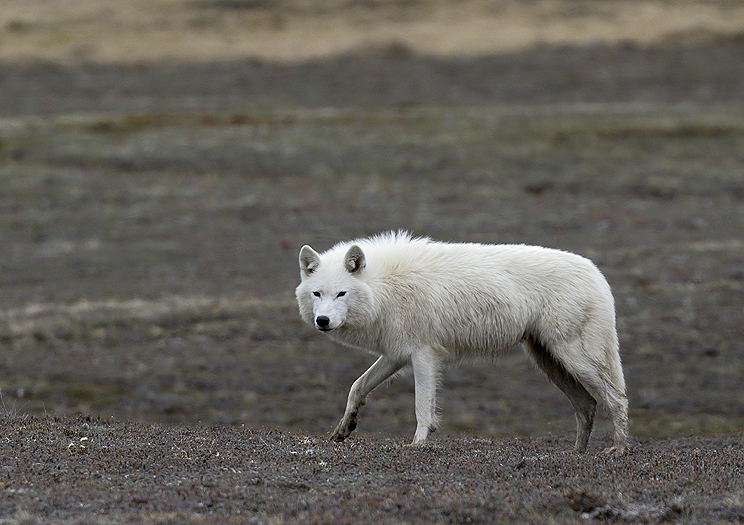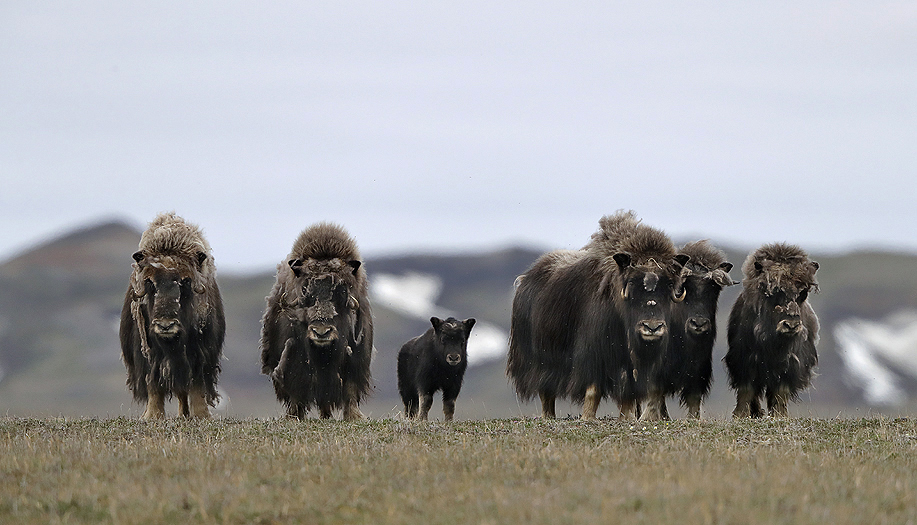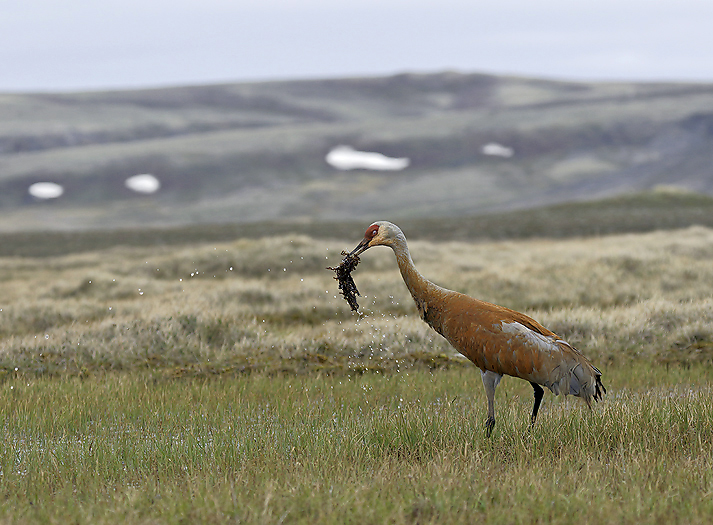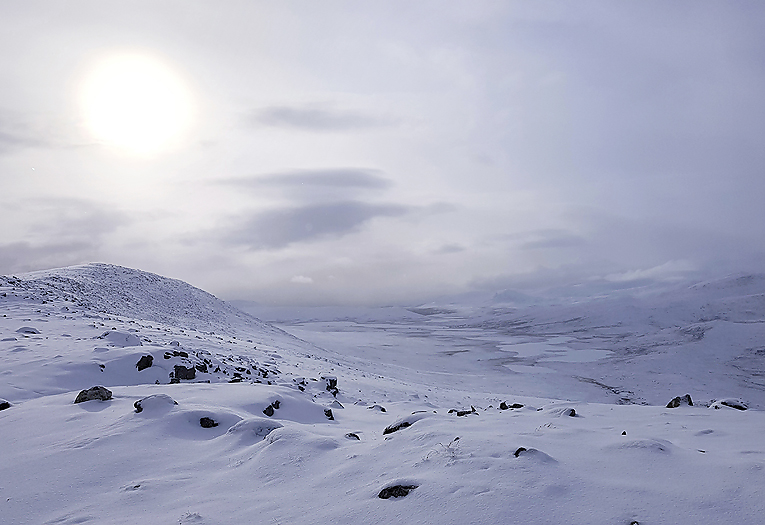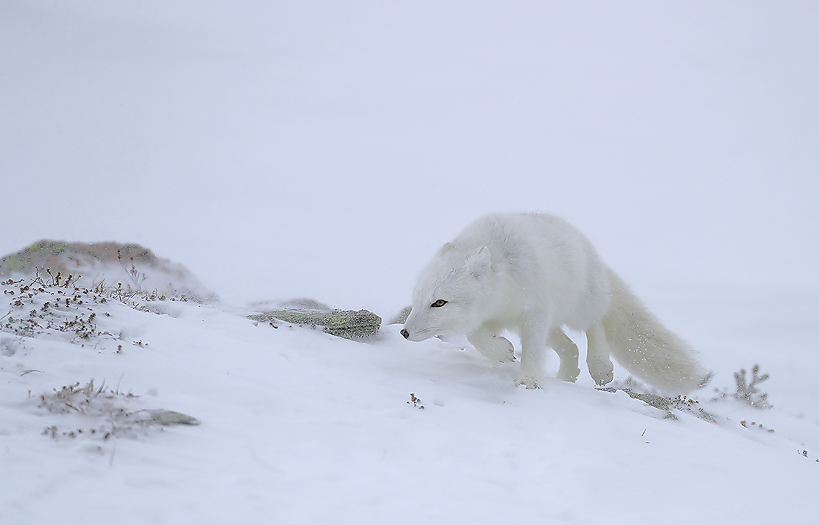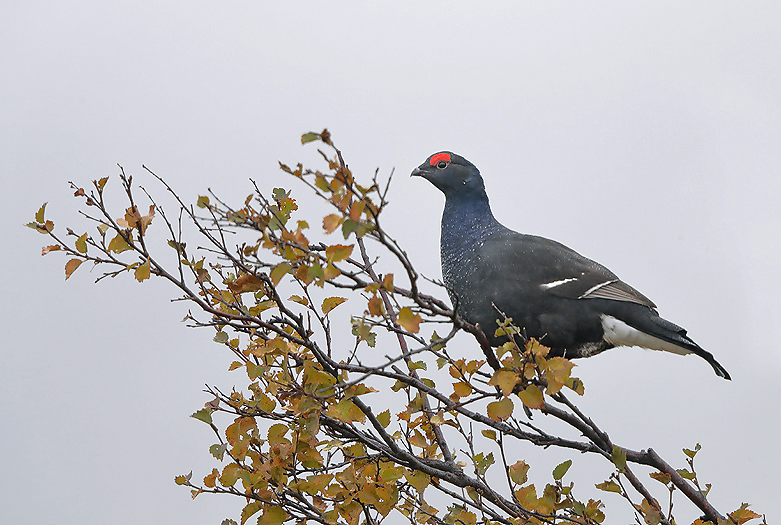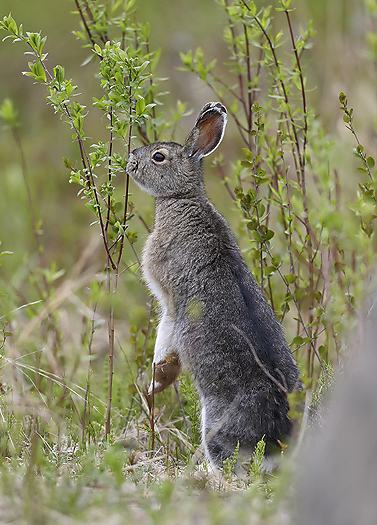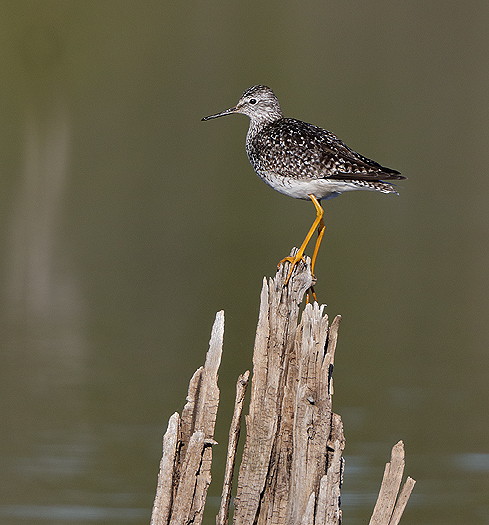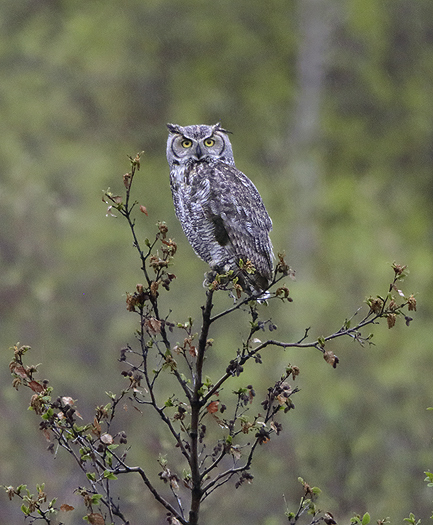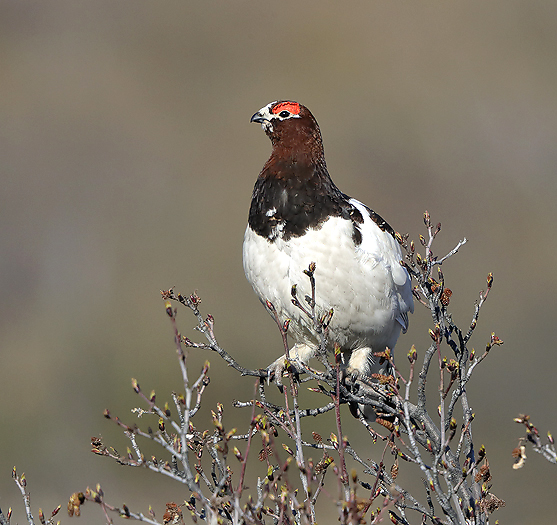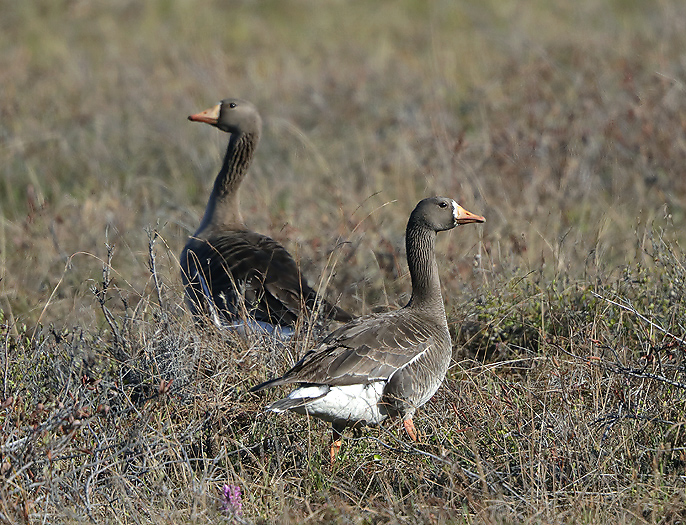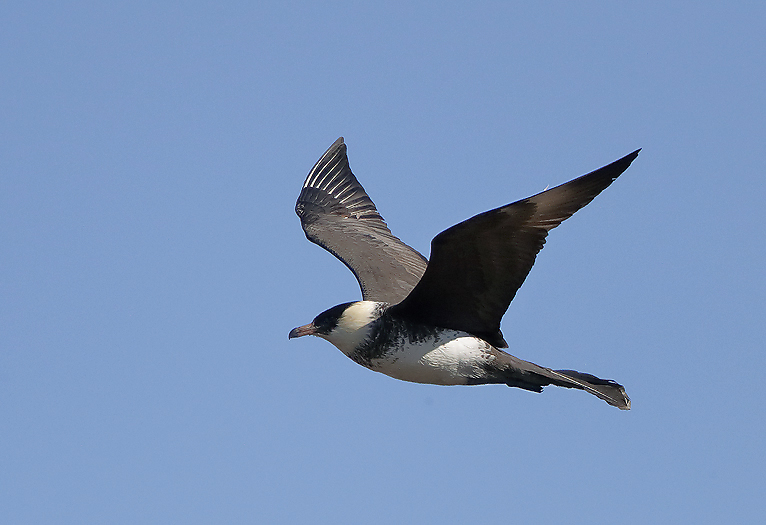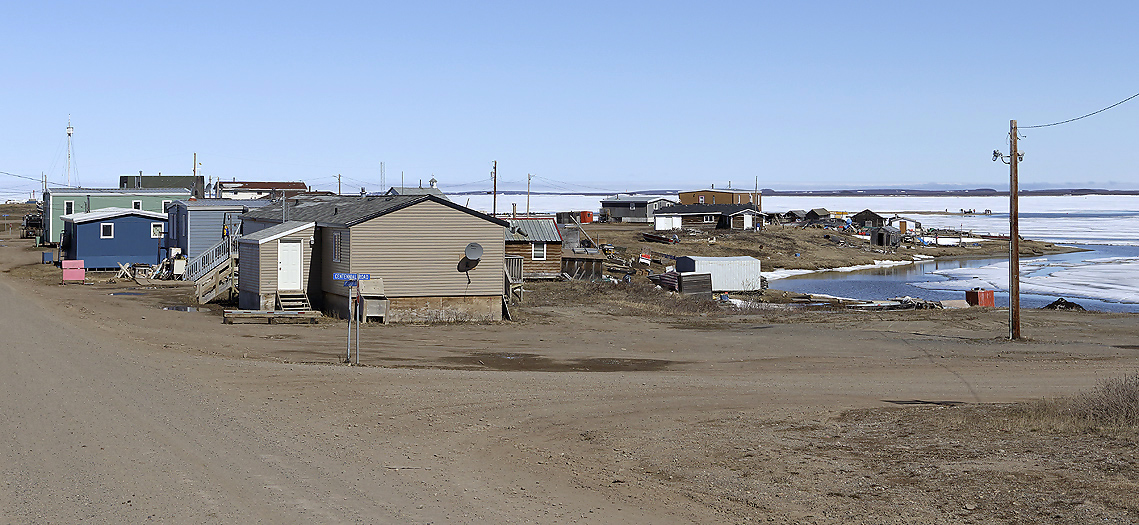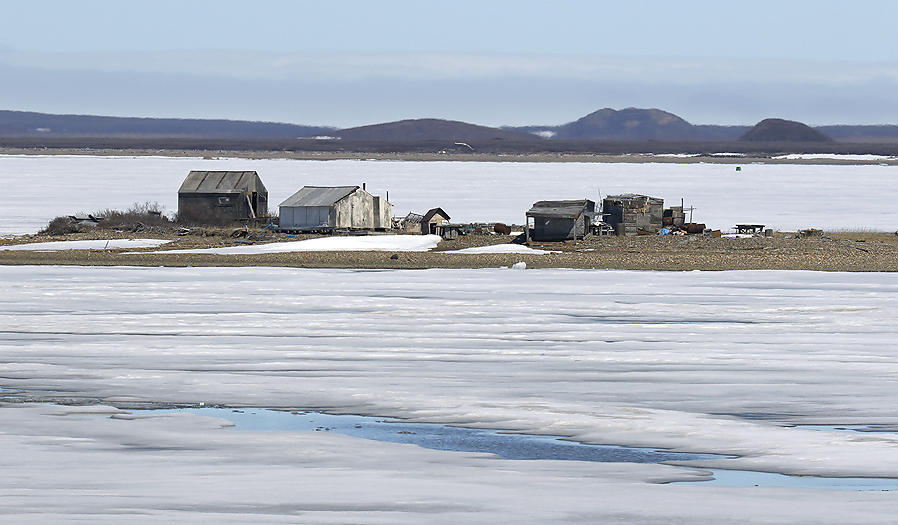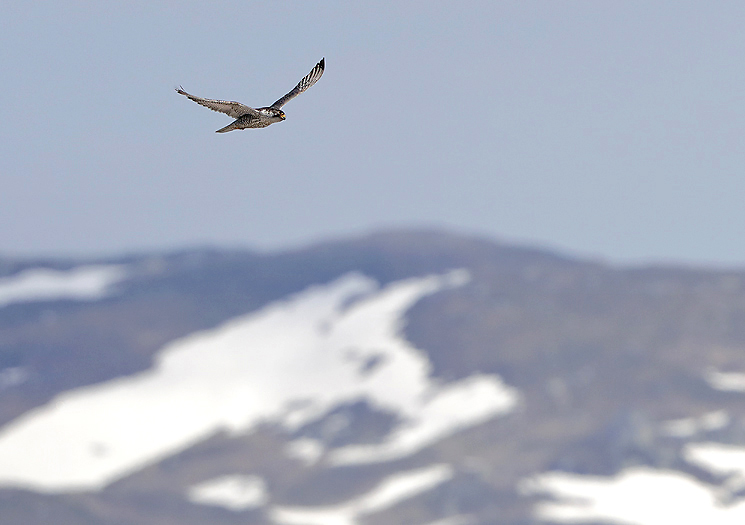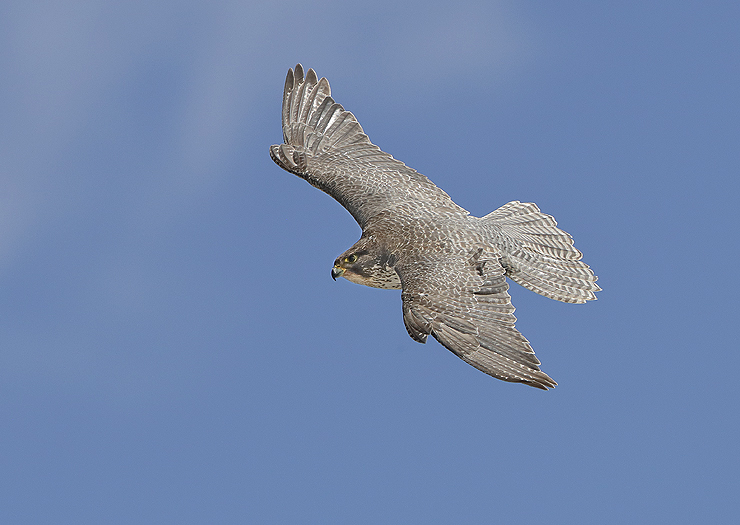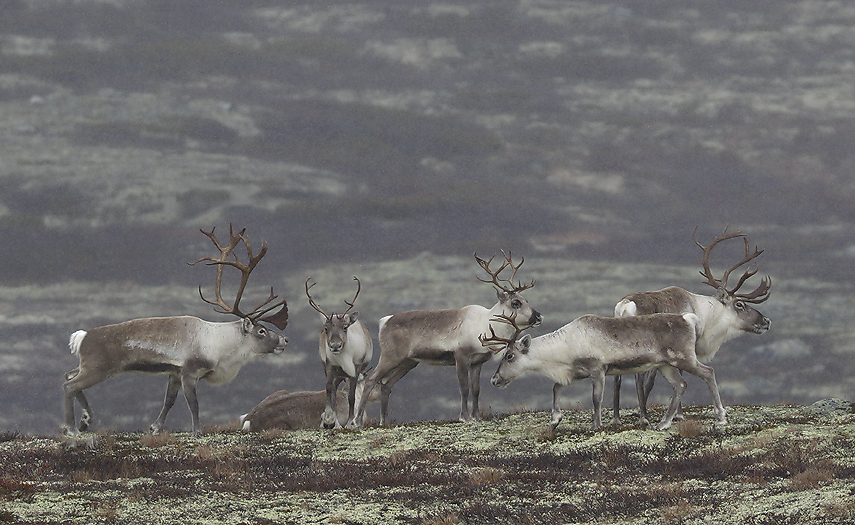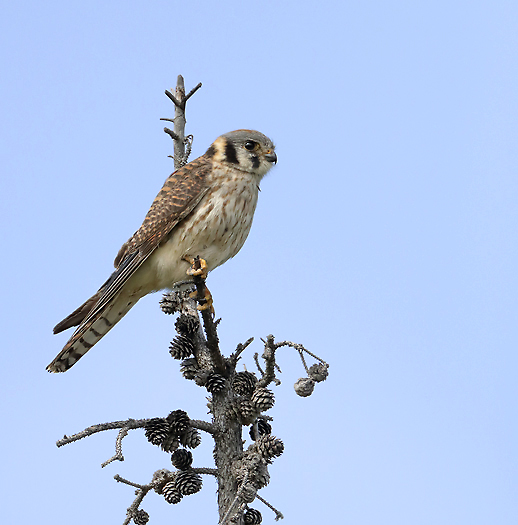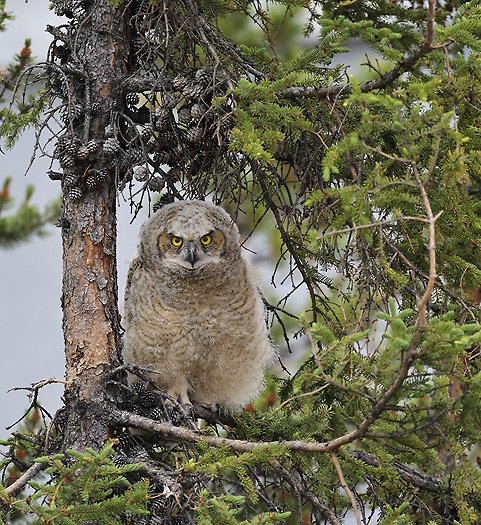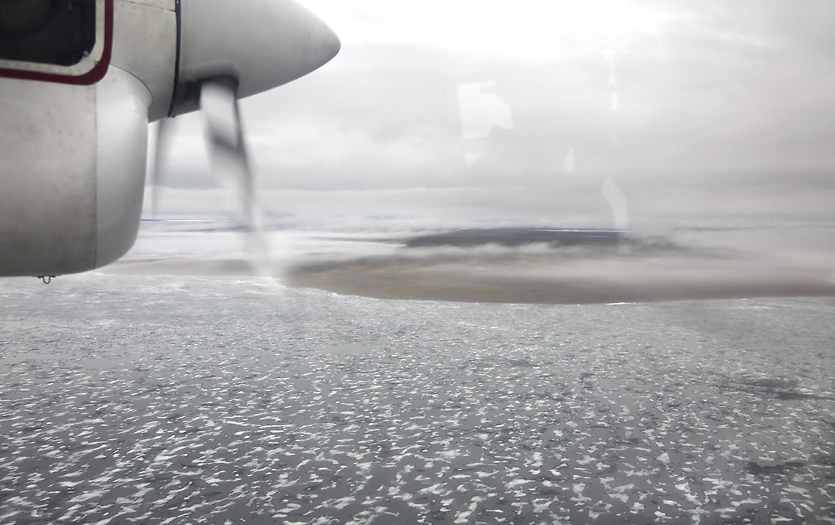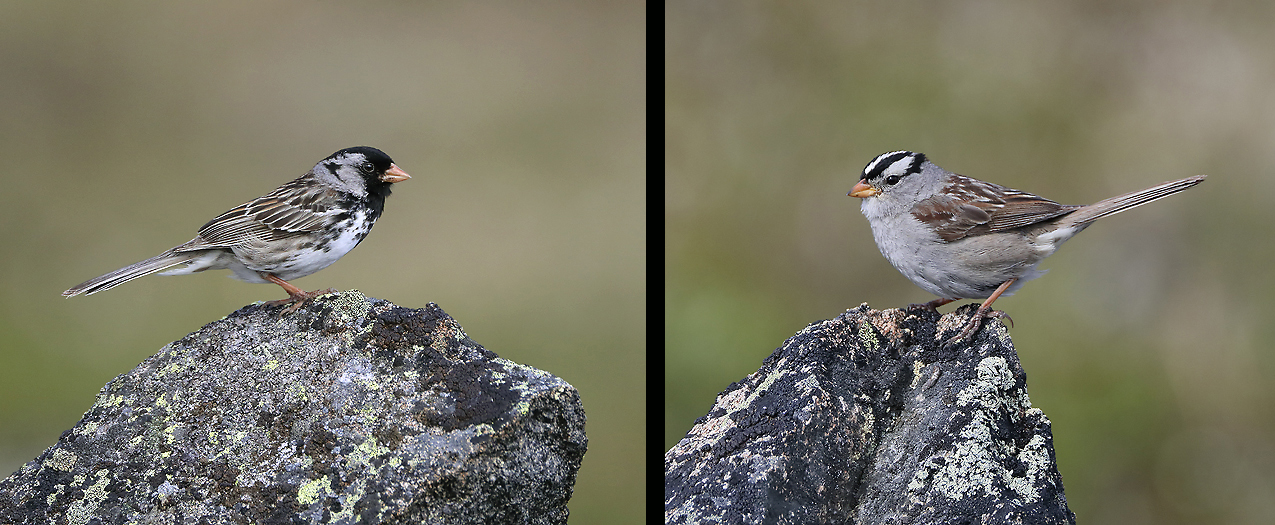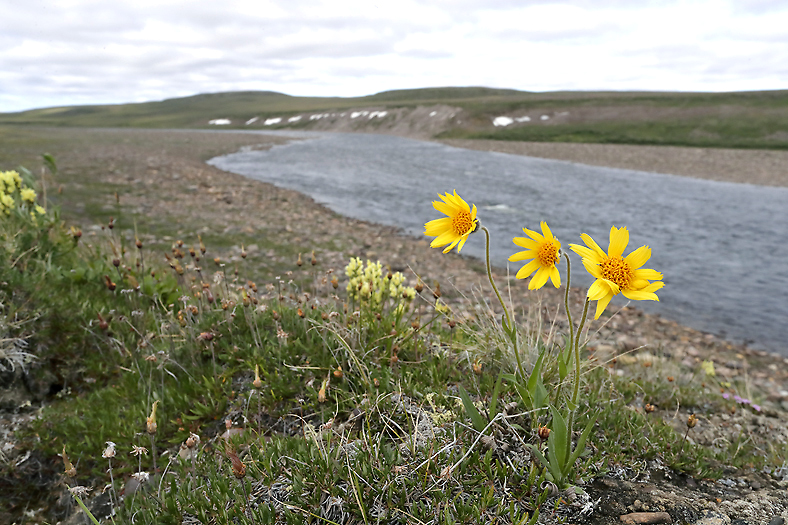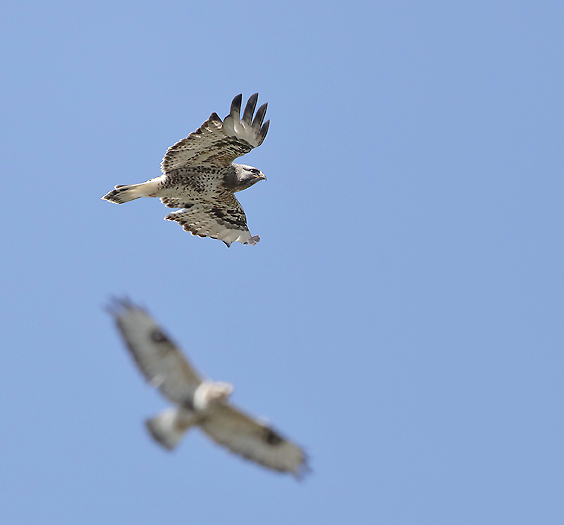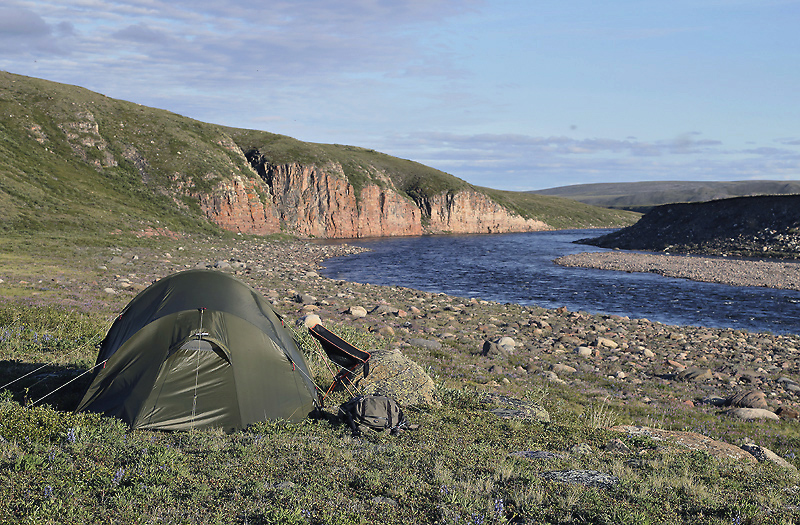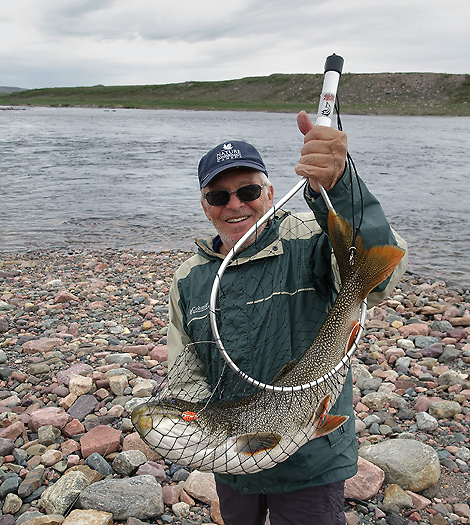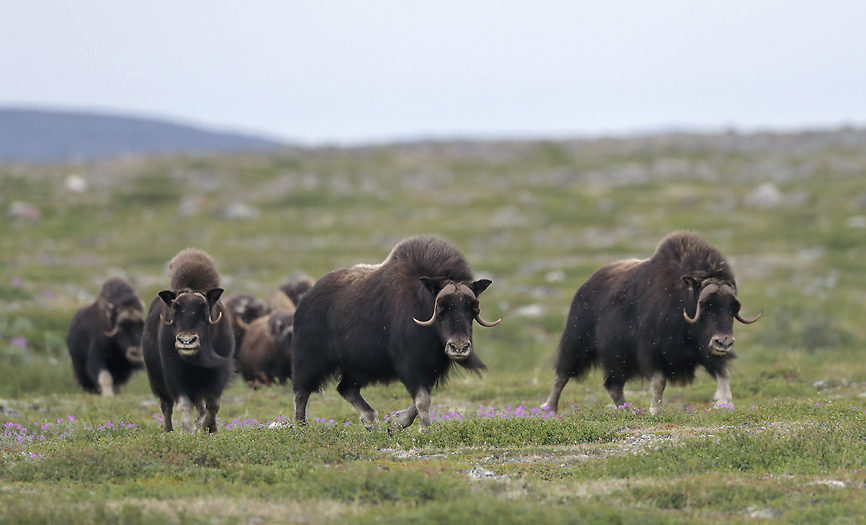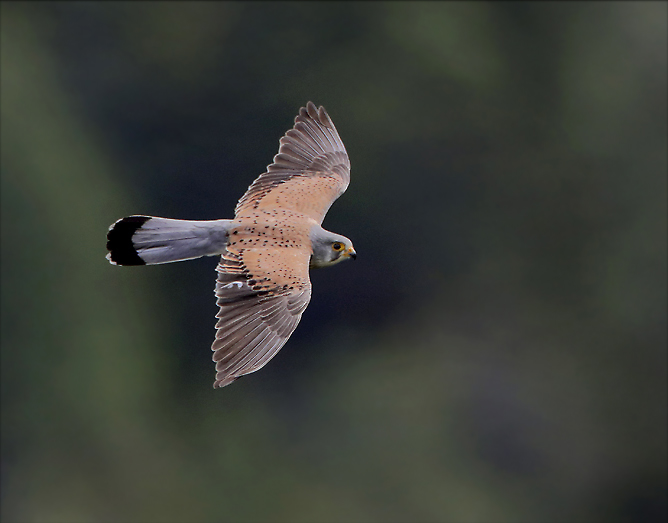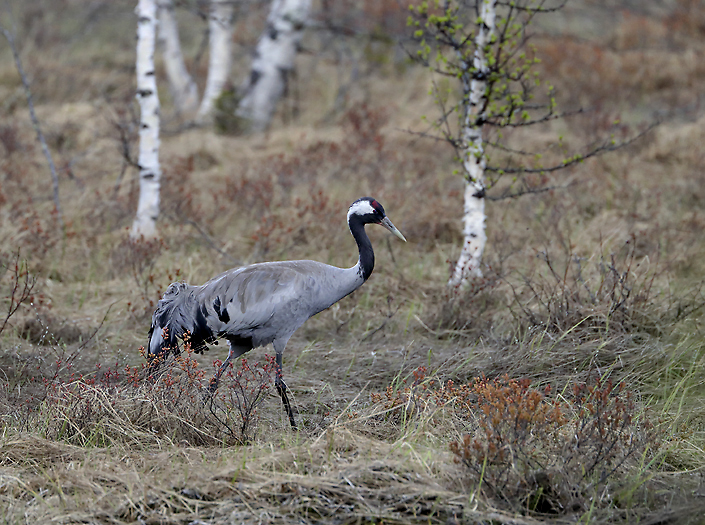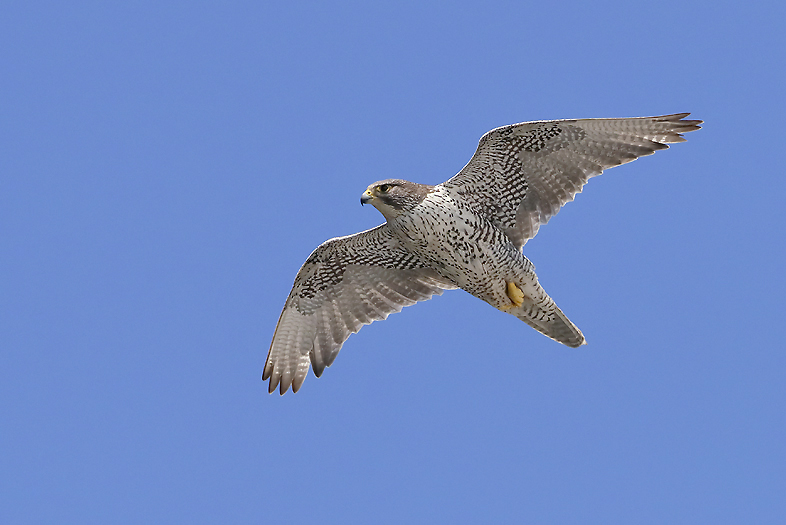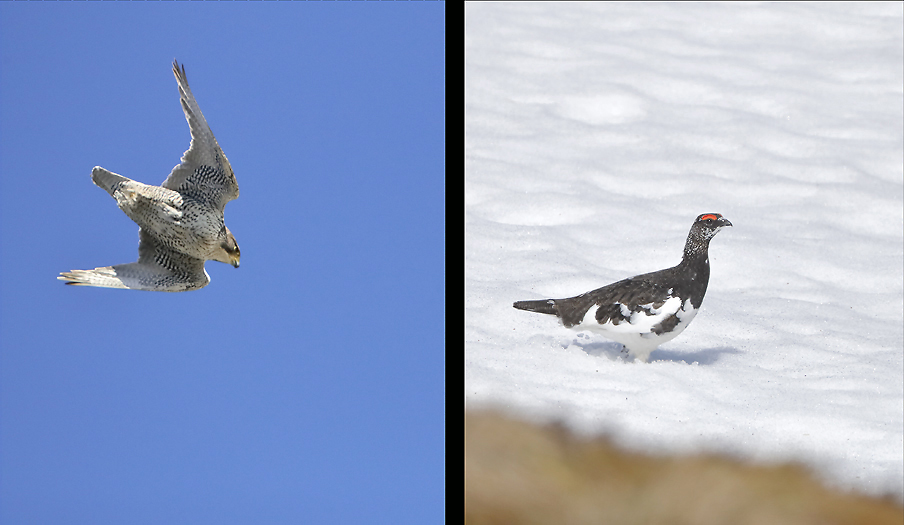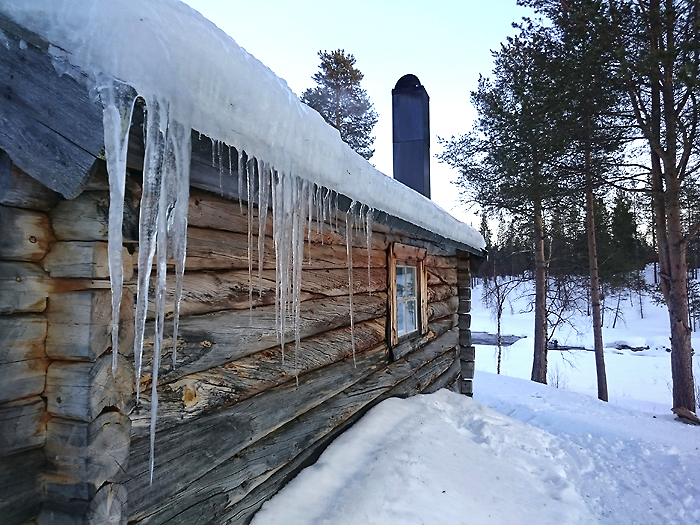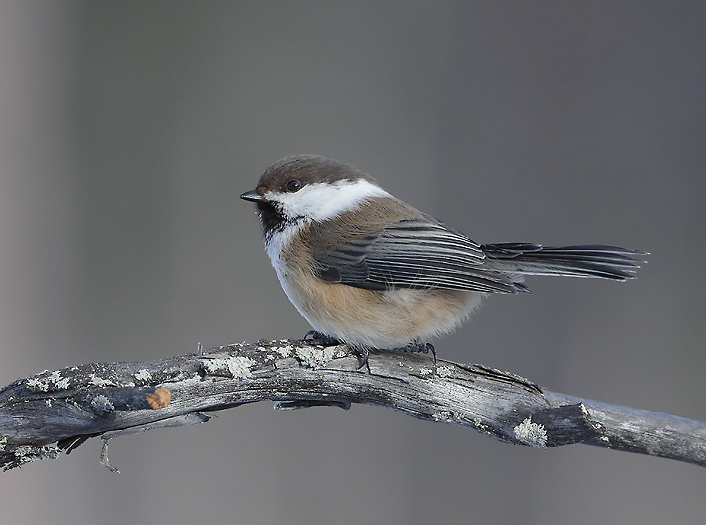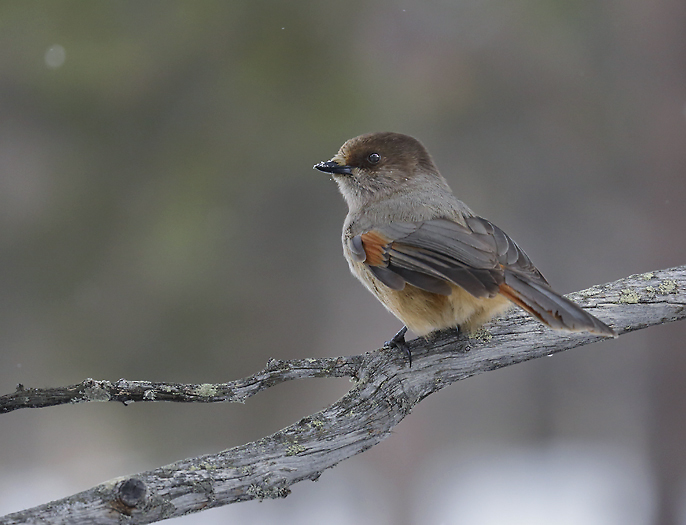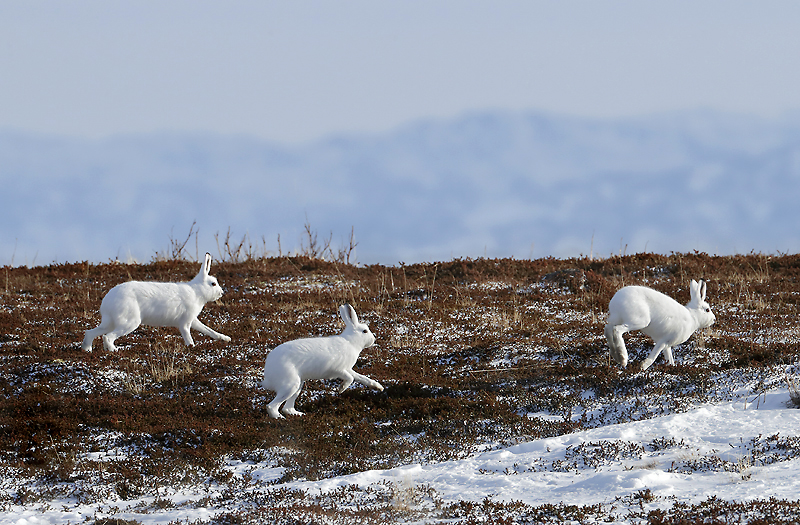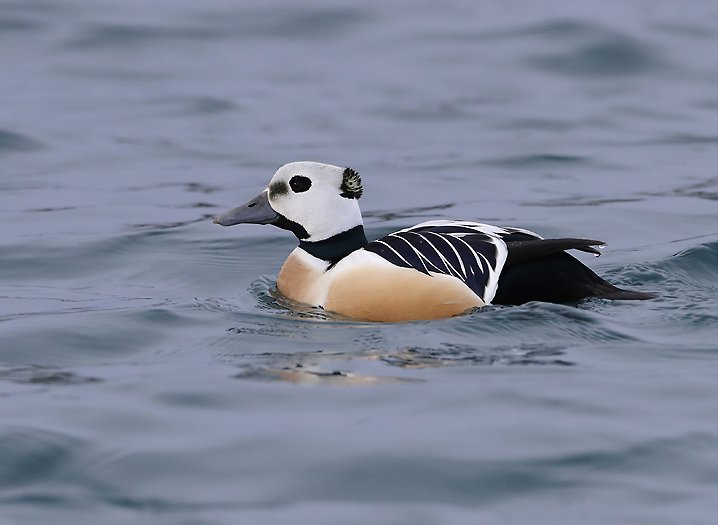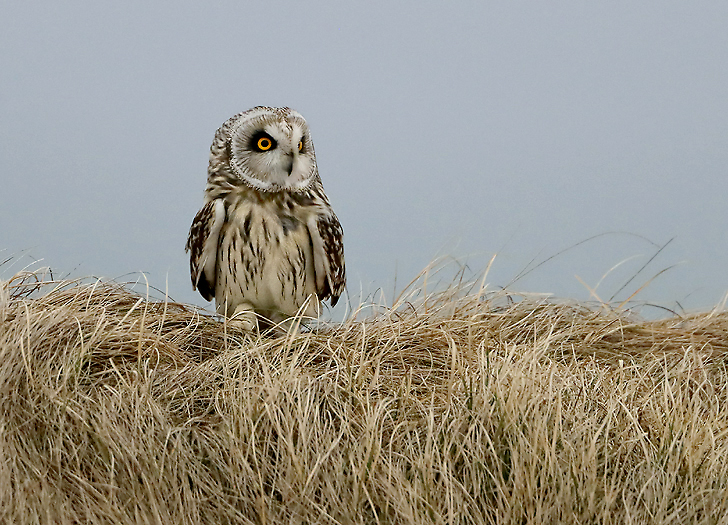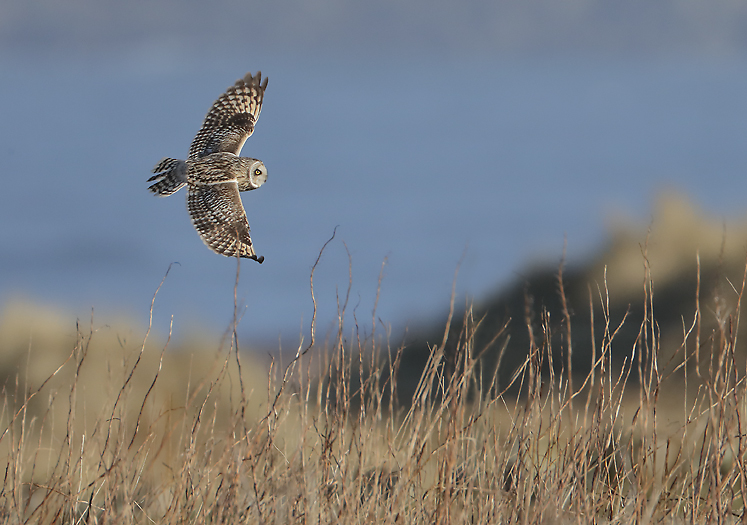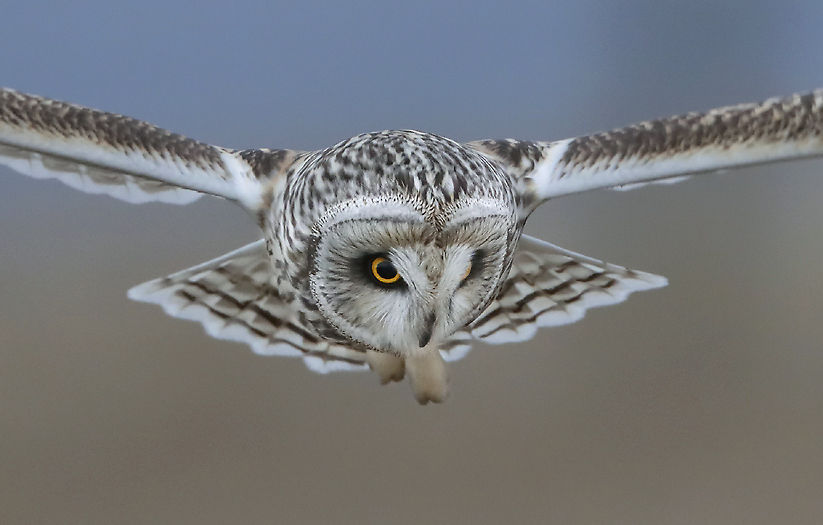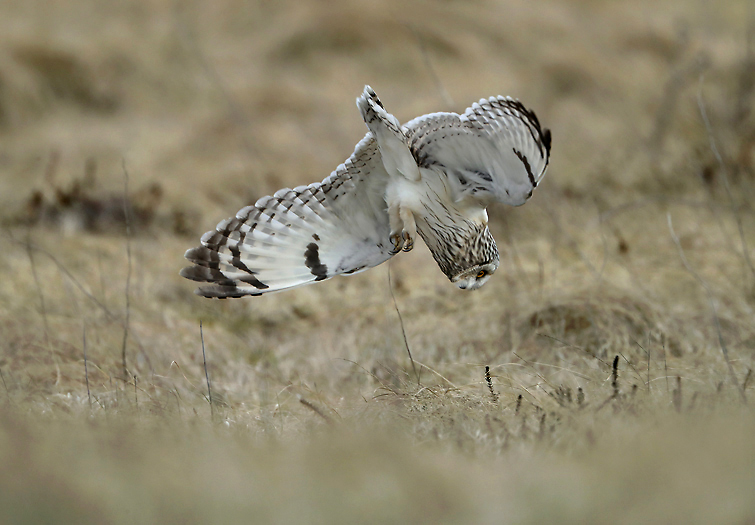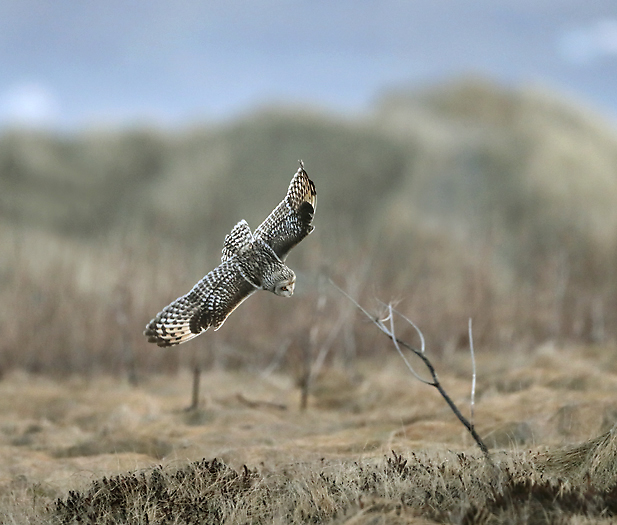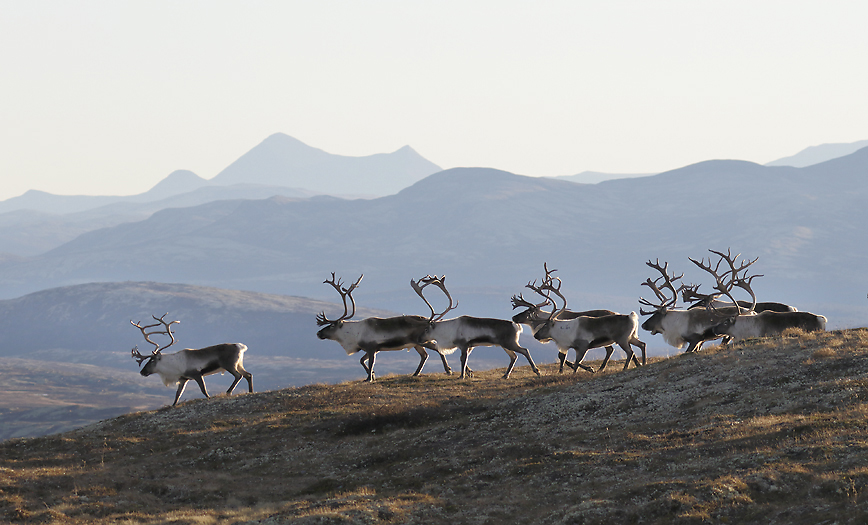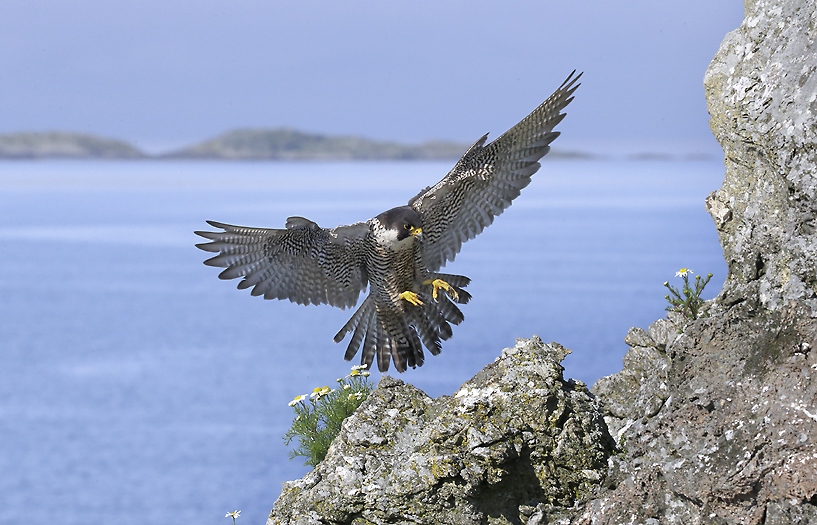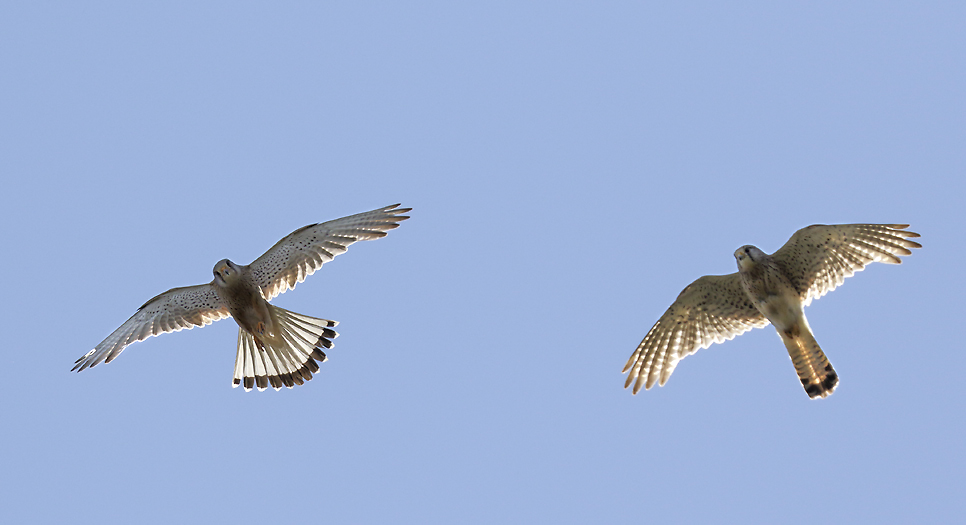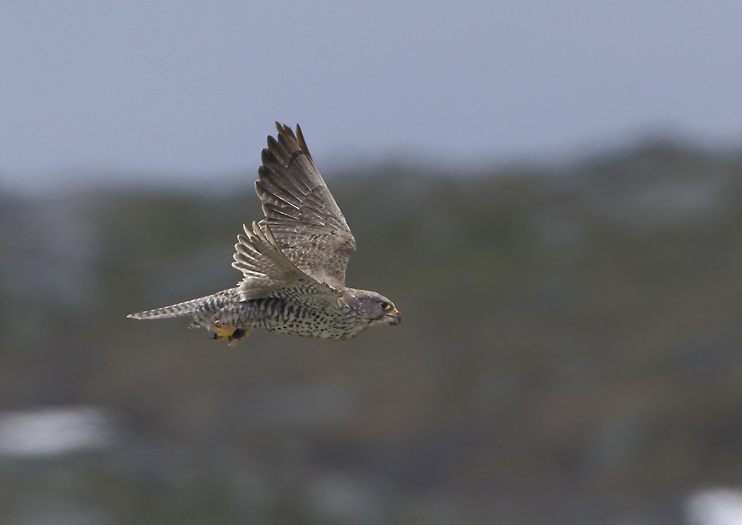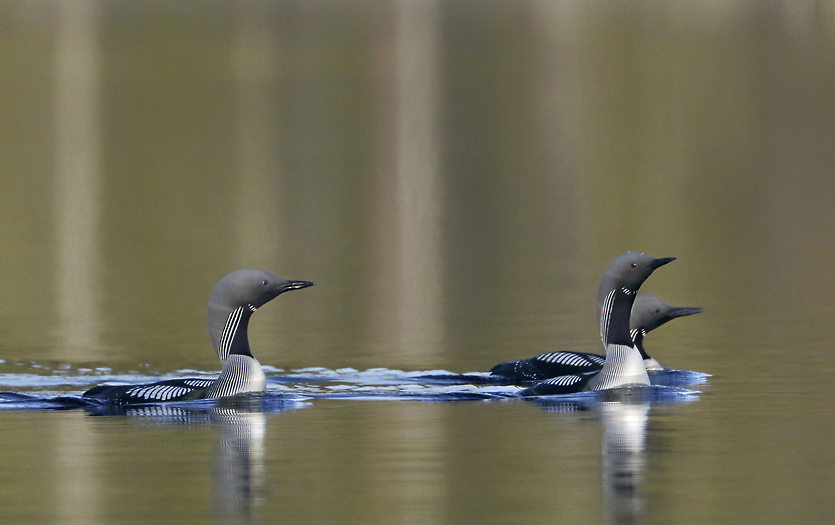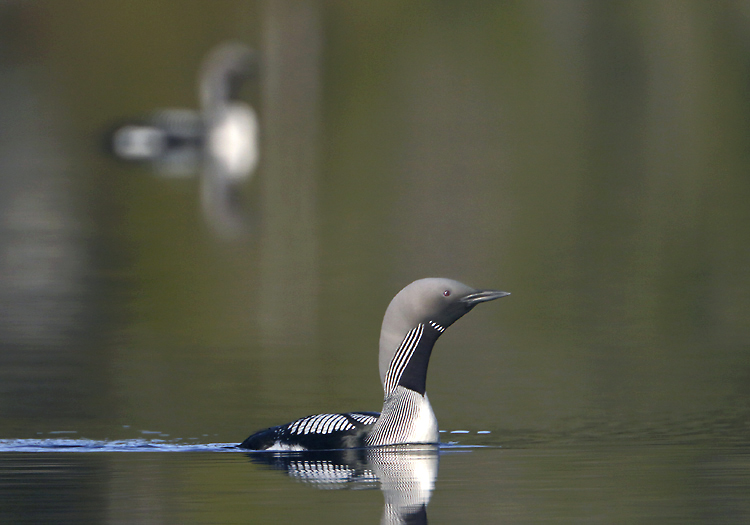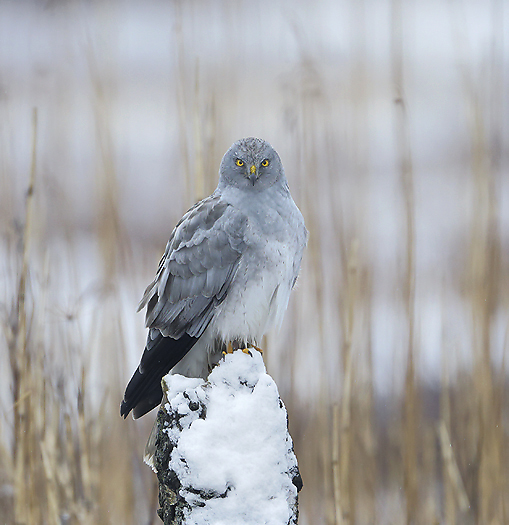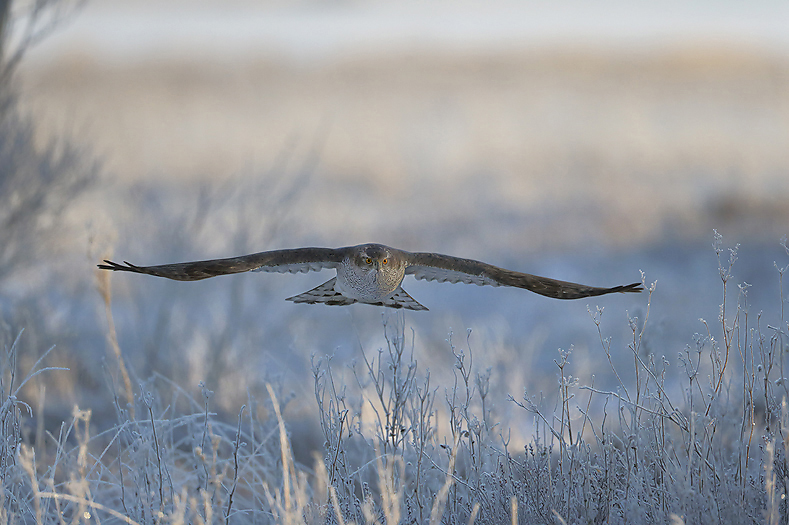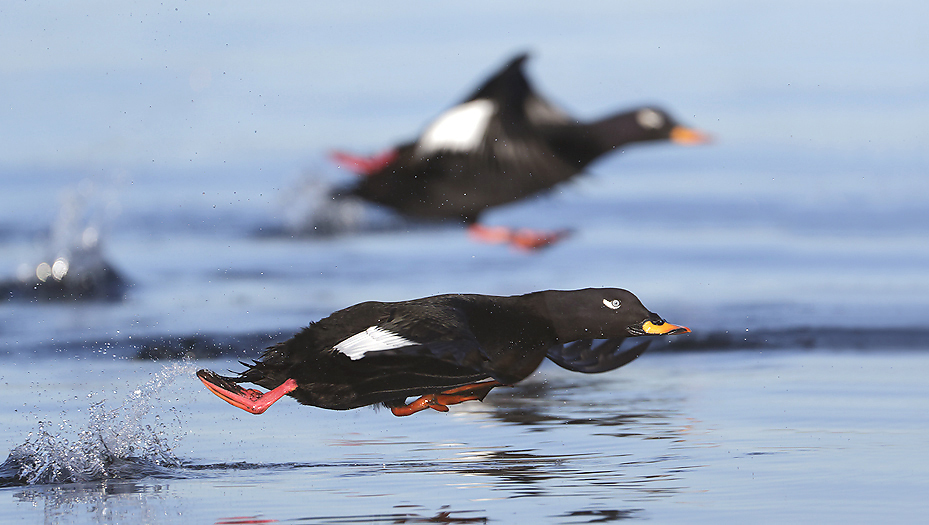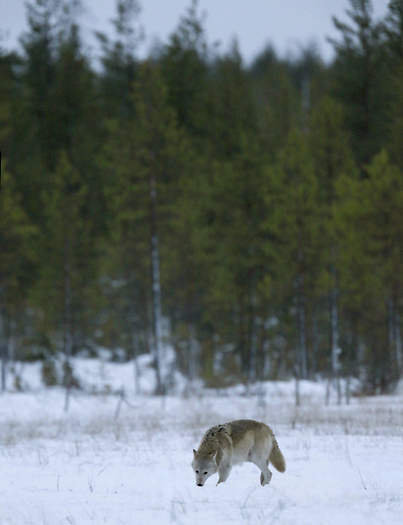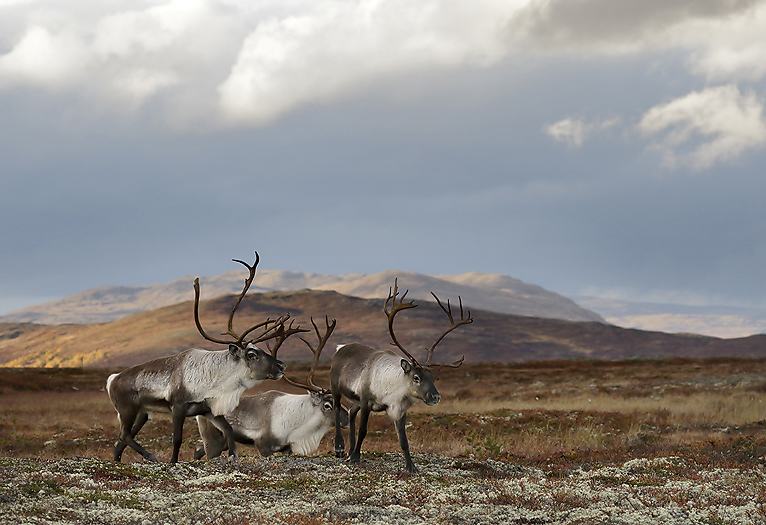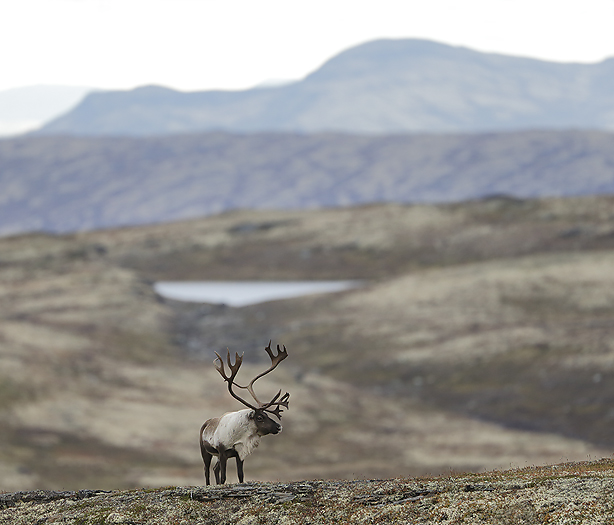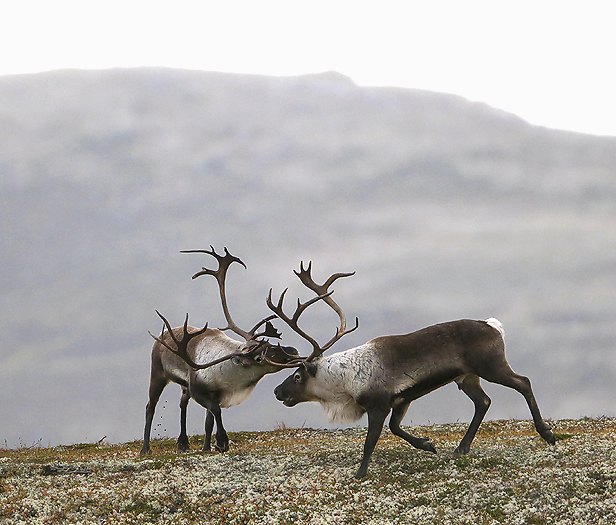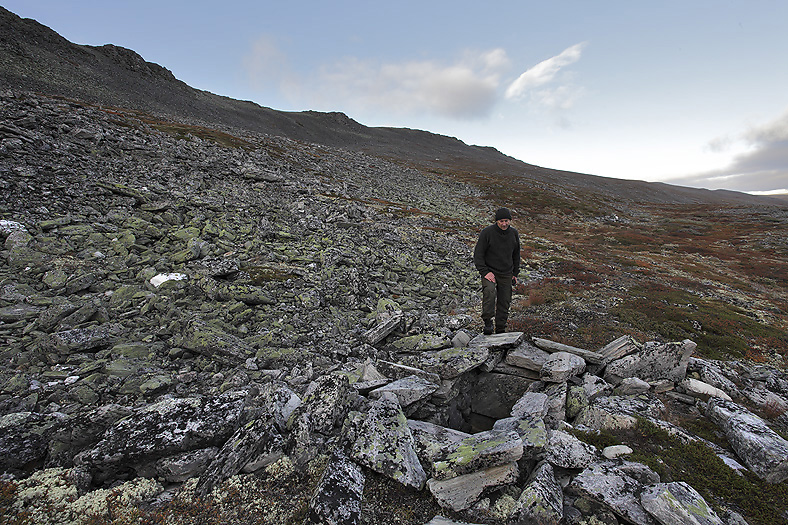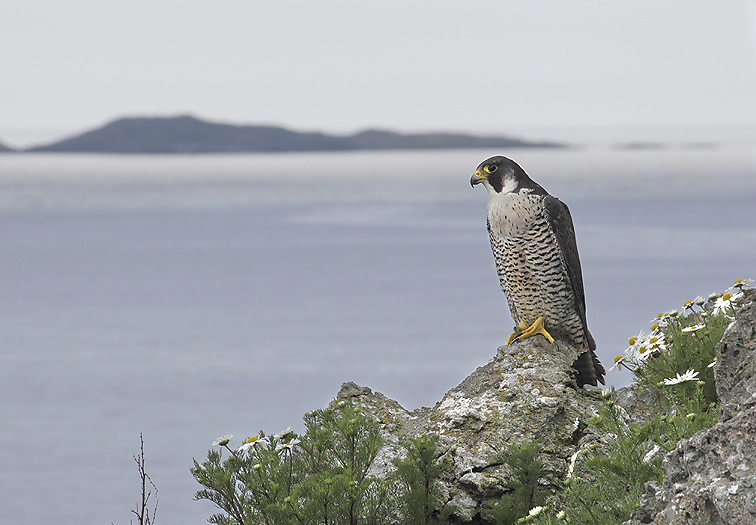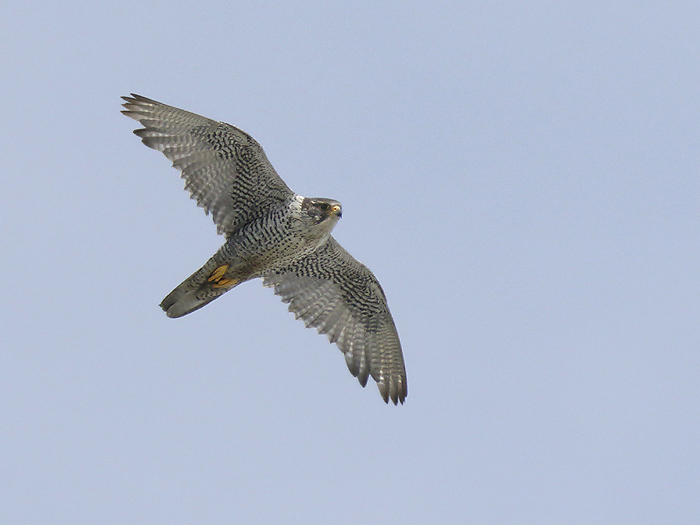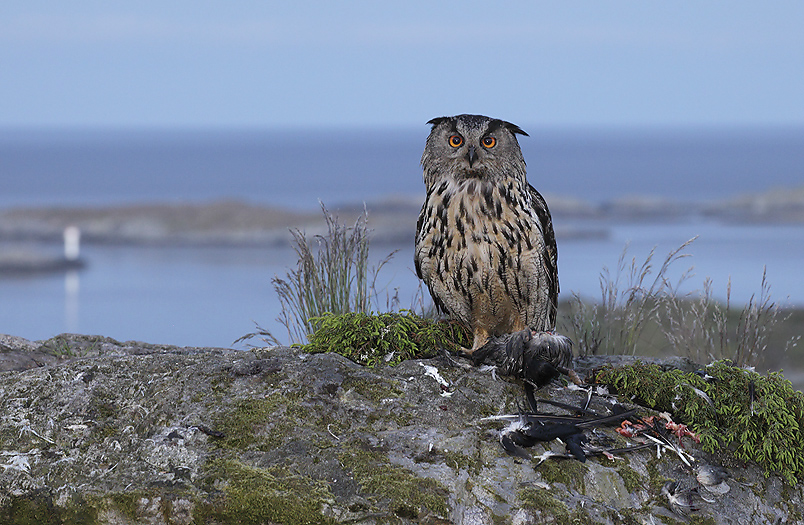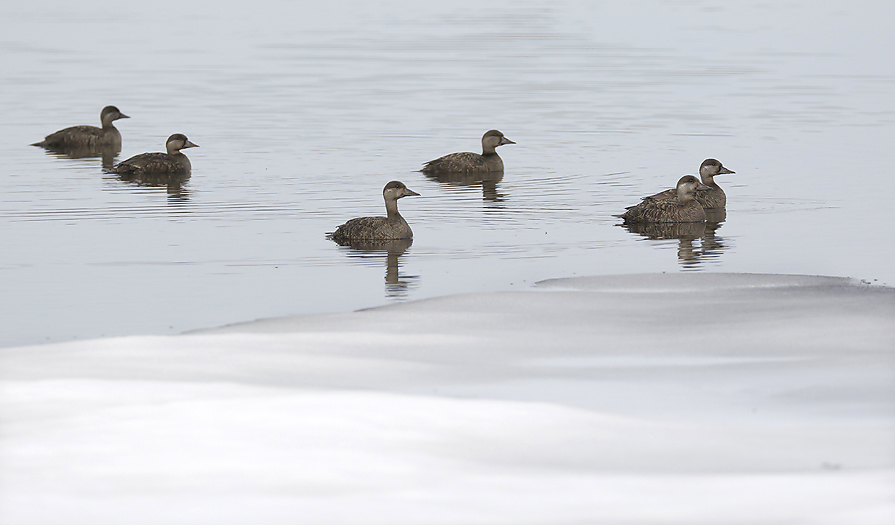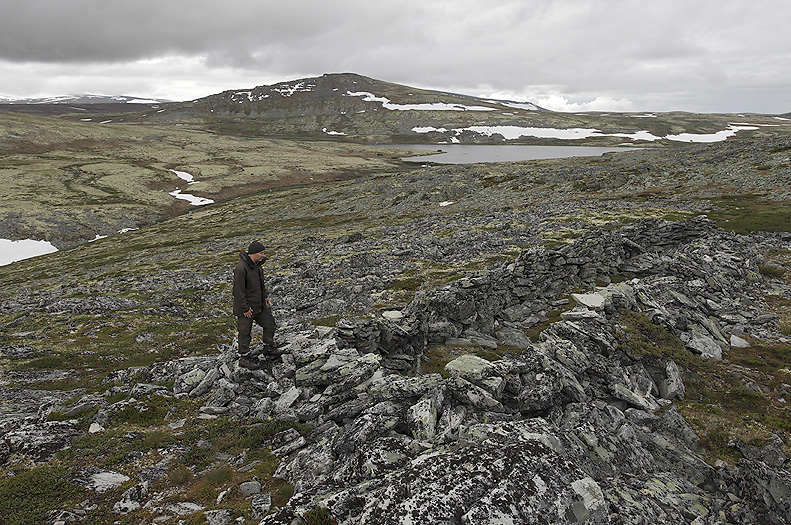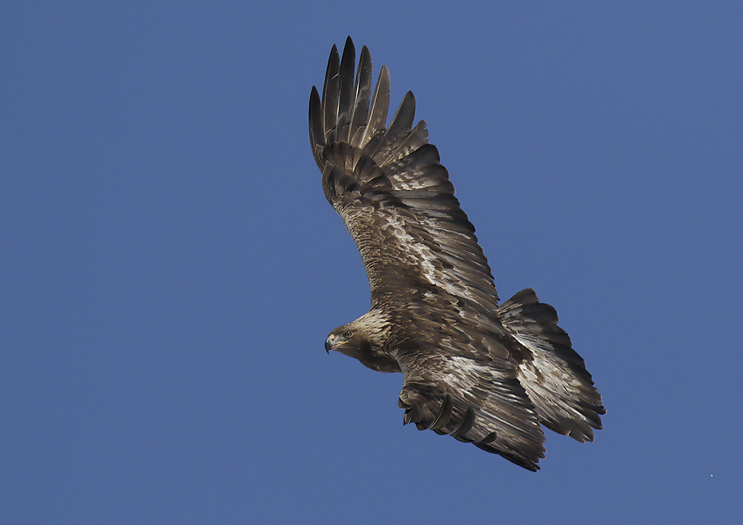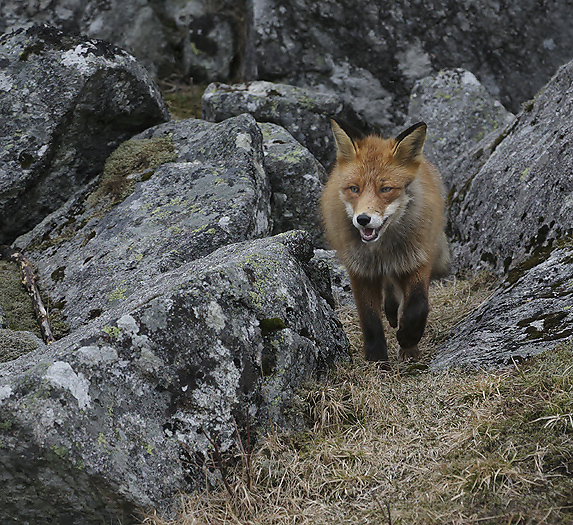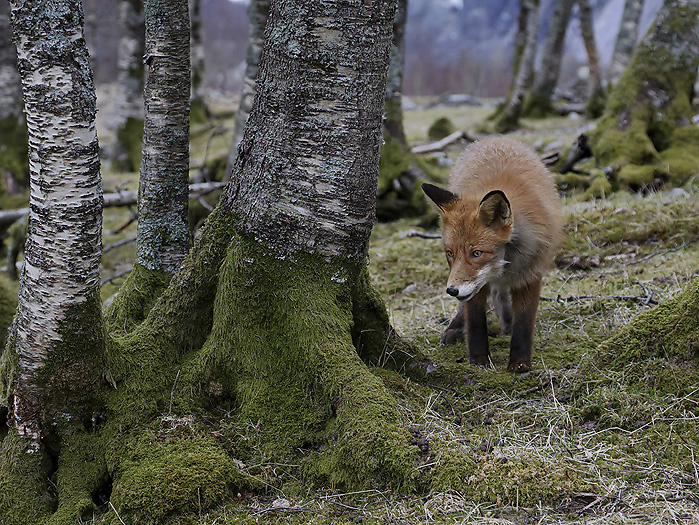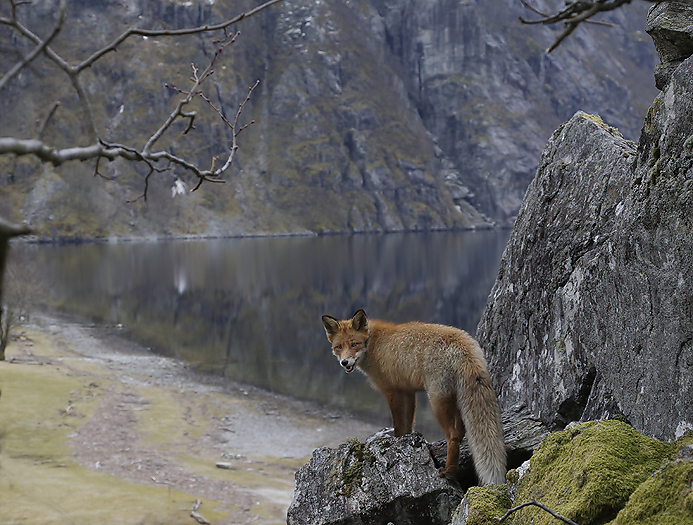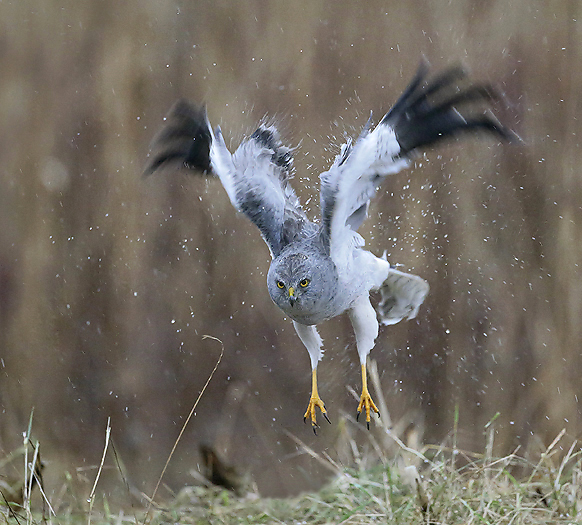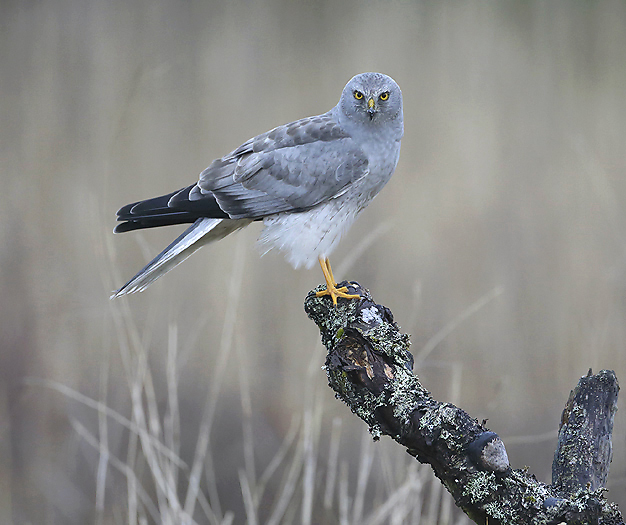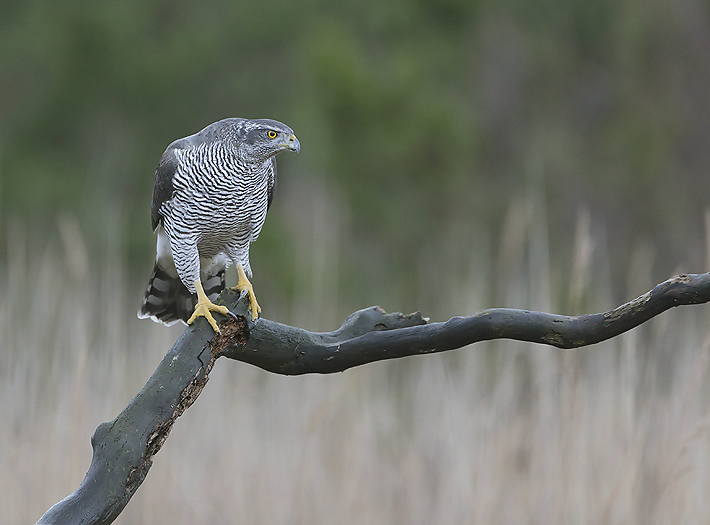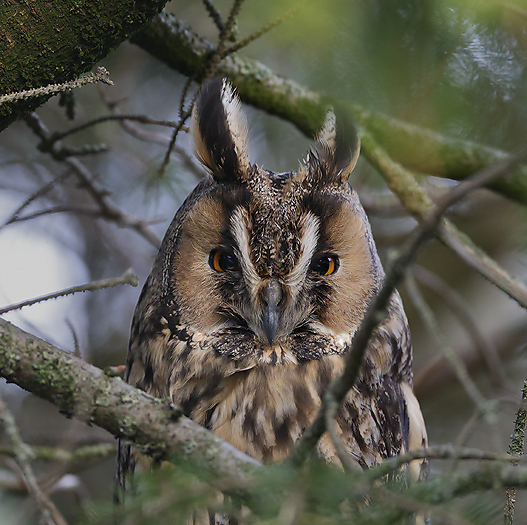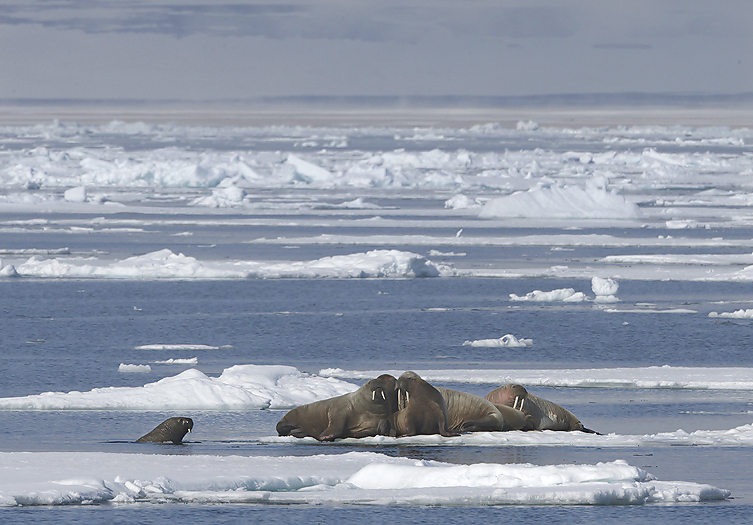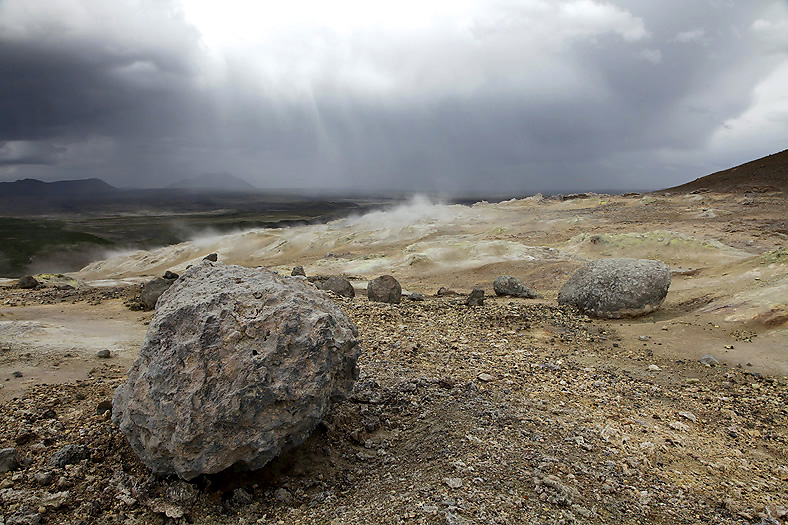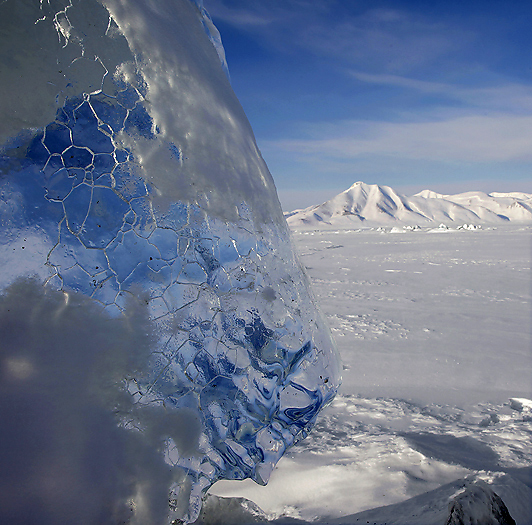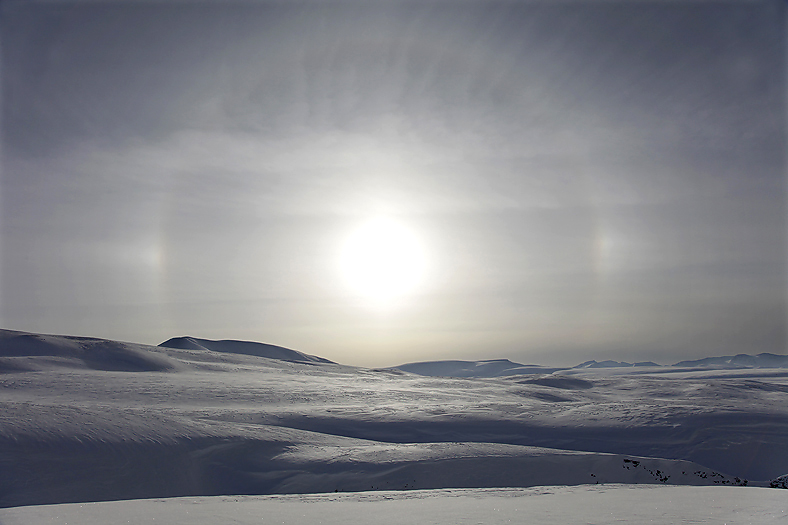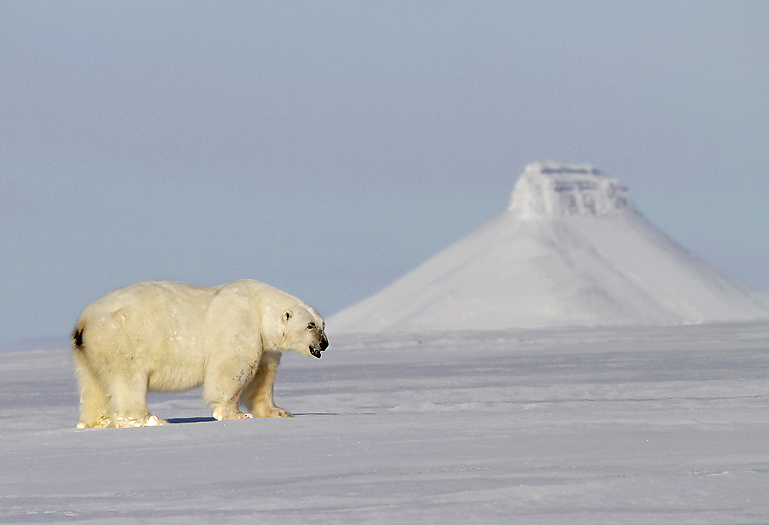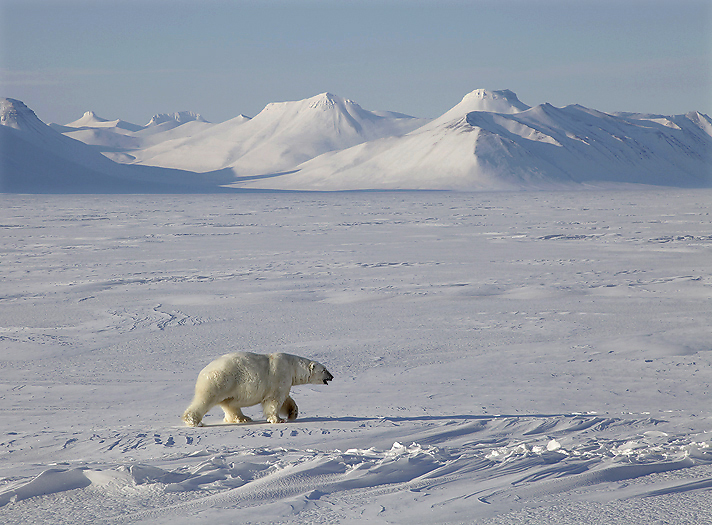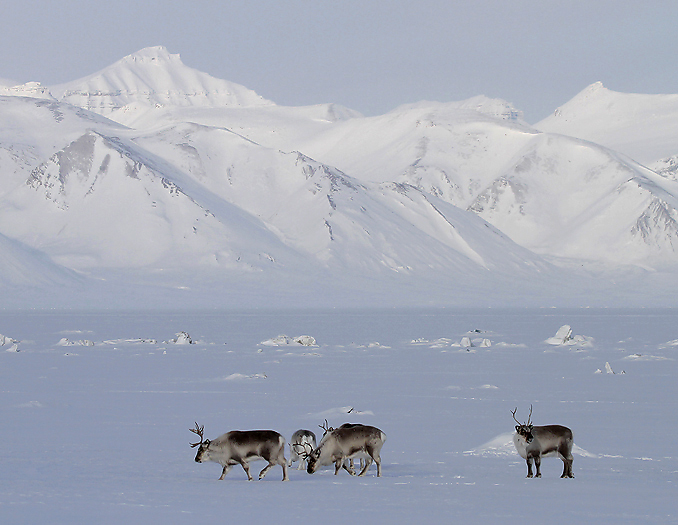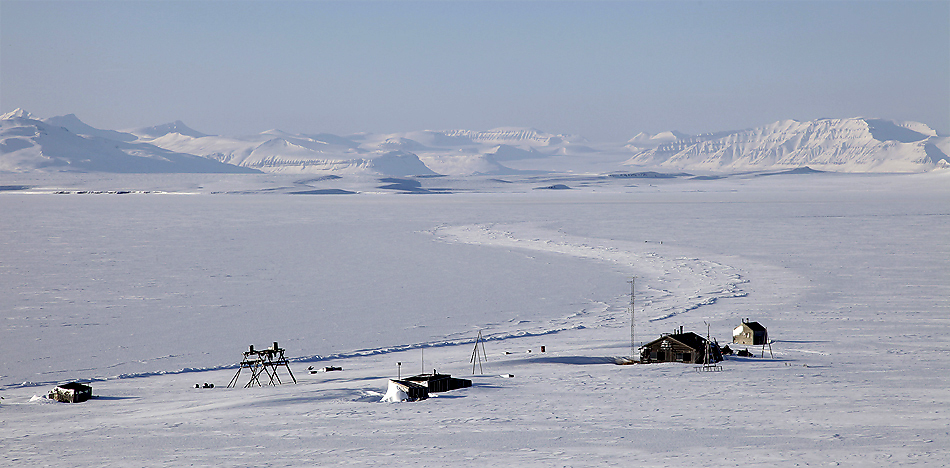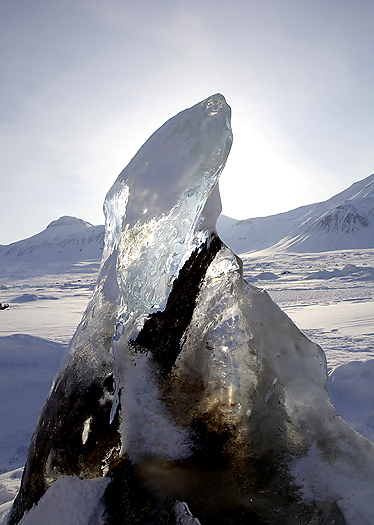WILDLIFE IN THE CENTRAL NORWEGIAN MOUNTAINS, SEPT/OCT – 2025.
Suddenly was autumn here again. It was then time for the usual 2-weeks trip to the central mountains (Rondane and Dovre area) for study wildlife and have a nice time hiking in a beautiful landscape. Below are some selected images from the trip.
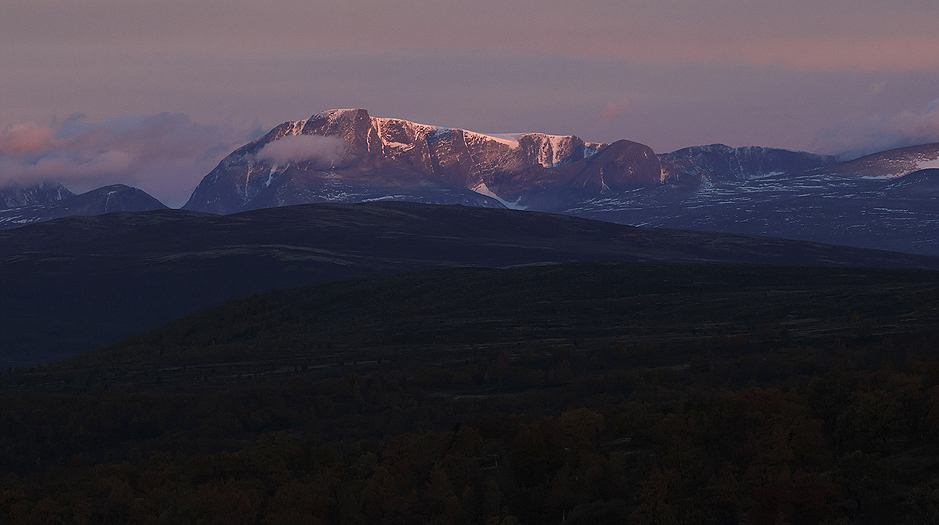
Sunrise over Svånåtindan in the Dovrefjell mountains.
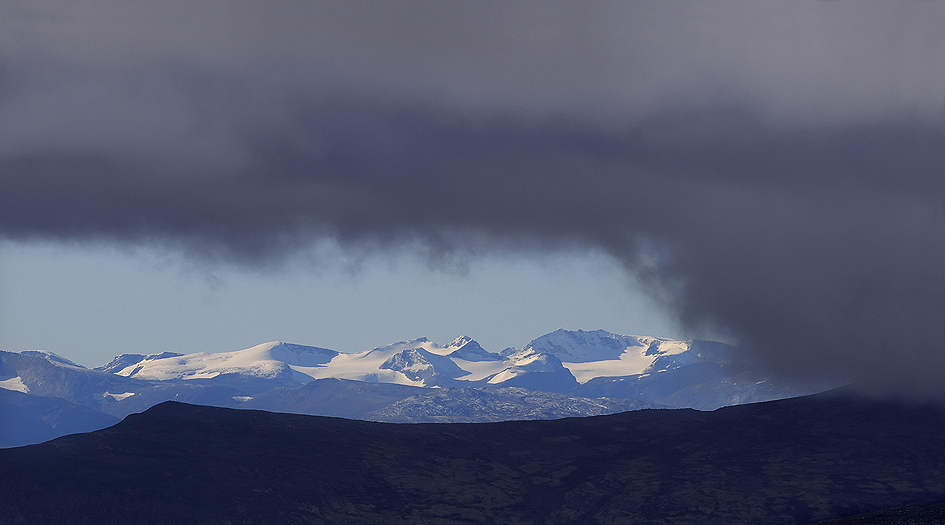
A window to the world up here. The Jotunheimen mountains seen from Rondane.
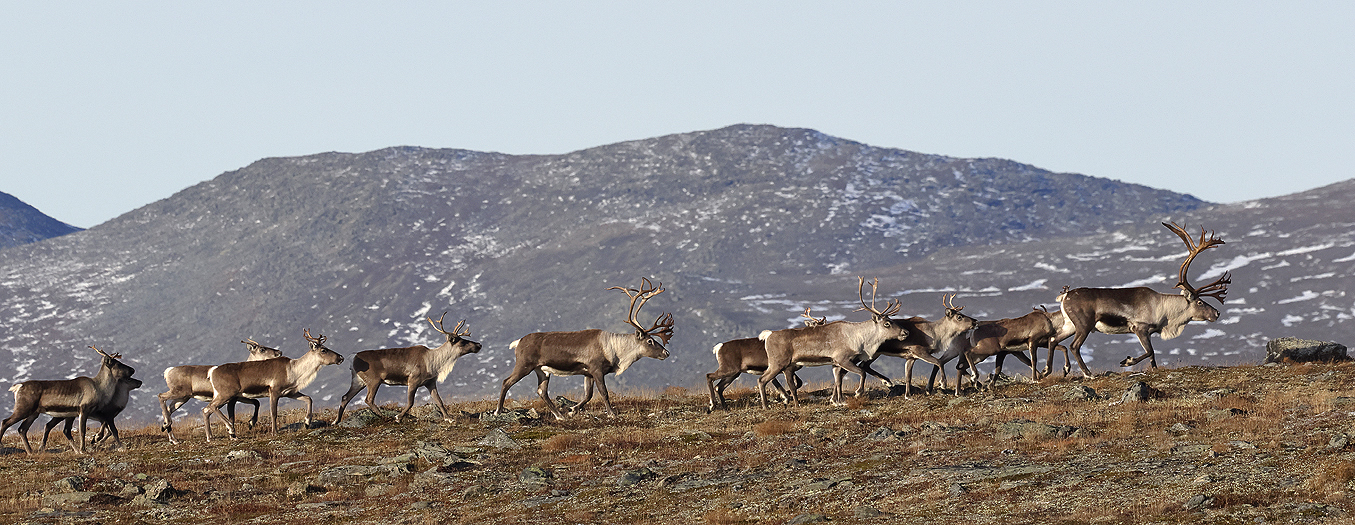
The reindeer population in the Dovrefjell ecosystem is one of the very few populations with no mix with domestic reindeer. This make this population extremely valuable to keep healthy and intact for the future.
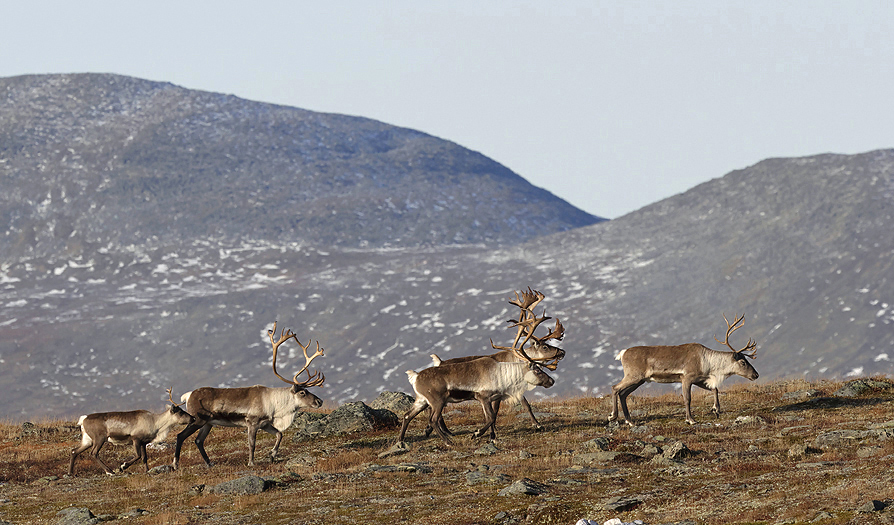
Reindeer Bulls, female and calf.
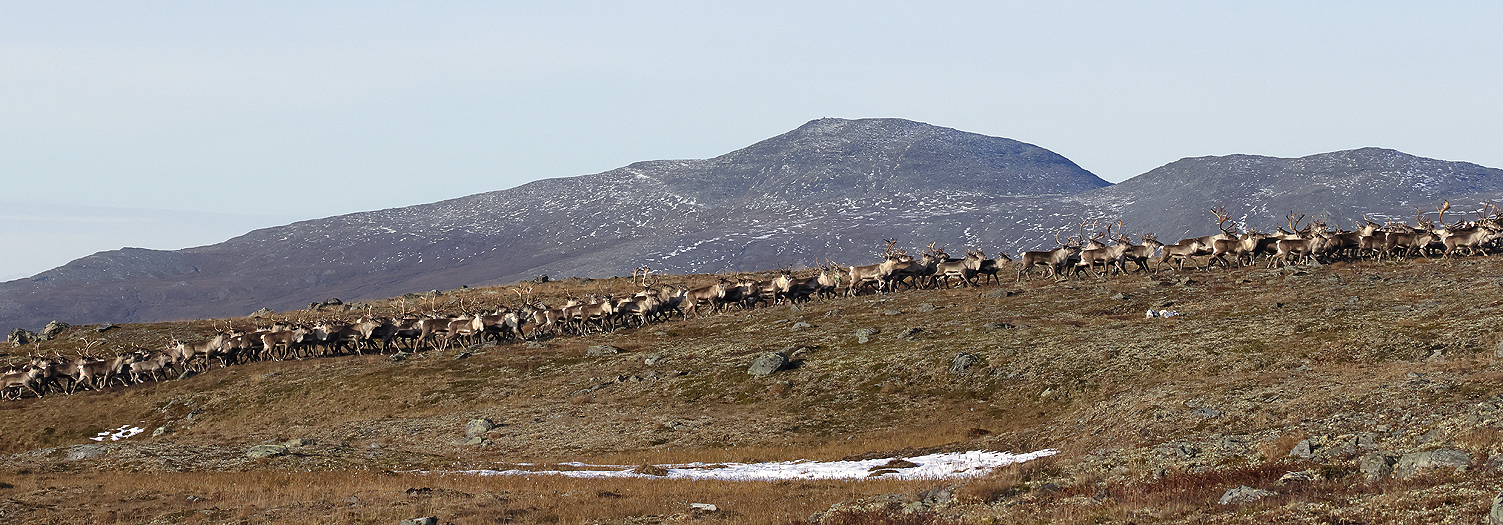
Part of the herd moving southwards after the wind direction changed from north to south. More new images of wild Reindeer can be seen in the “Reindeer” gallery.
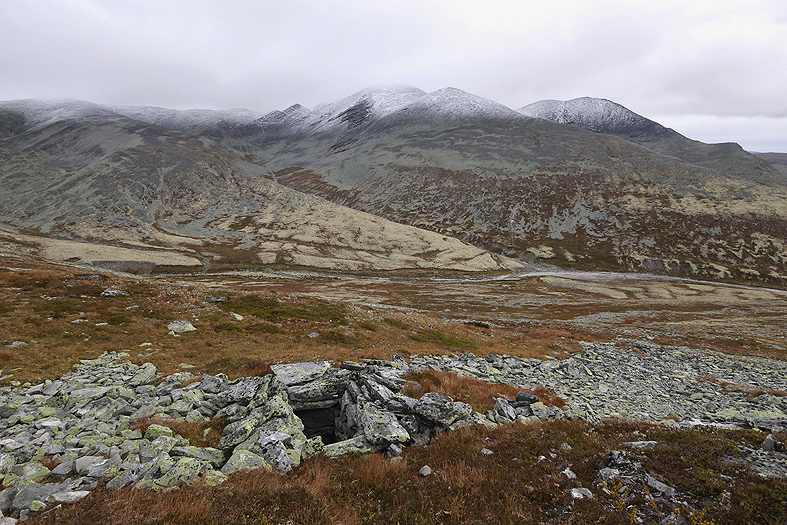
Intact Reindeer pitfall trap in the Rondane Mountain Range dating back to late Iron Age / early Medieval period. As the photos show the area beside each long-side of the trap are blocked by rocks. This mean that when the reindeer is slowly walking while grazing, there was a great chance that one of them will fall down into the trap (app. 1m wide, 2m long and 2m deep) and impossible for it to escape from. The trap opening was of course covered with vegetation similar to what the reindeer was grazing on.
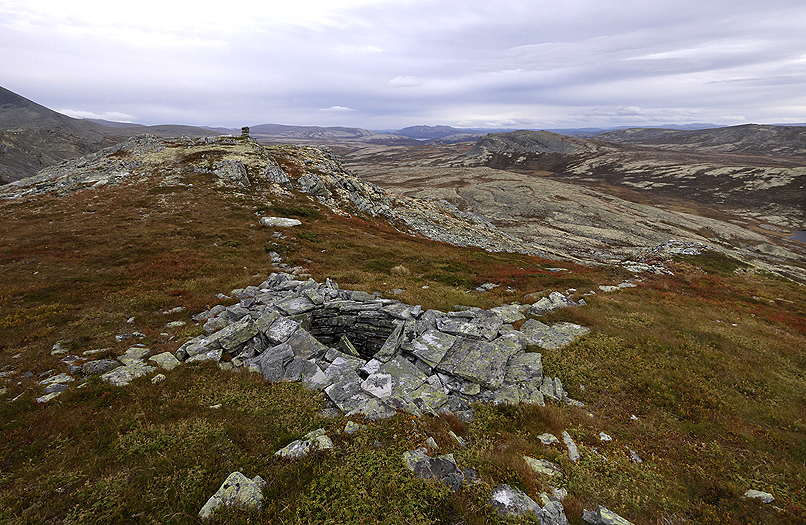
Another Reindeer pitfall trap in the Rondane mountain Range. This one is dug out on a mountain pass where the reindeer find favorable to use. Here we see that the lead fences stretching out from each corner of the trap for leading the reindeer against the trap opening.
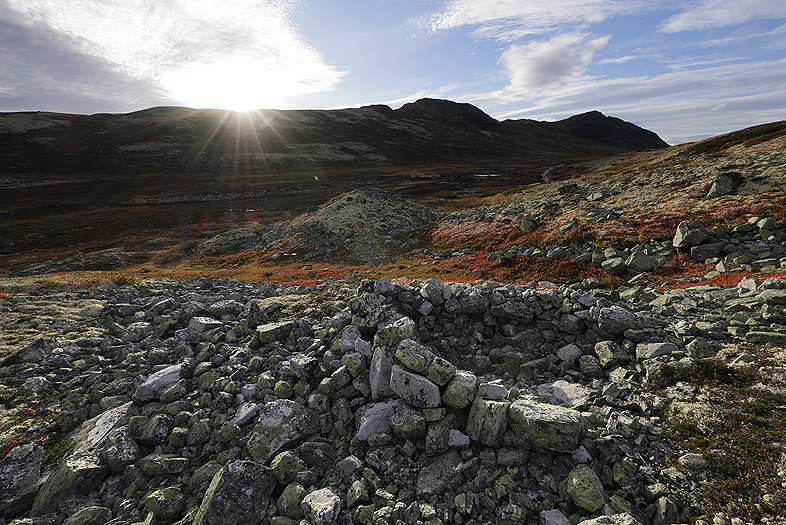
Reindeer hunting blind in the Rondane mountain range. It was a wonderful evening at this interesting place, and while taking a rest there, thoughts came up about the hunter who for a long time ago sat here with his bow & arrow waiting for the reindeer to approach. The reindeer hunting systems in these images are dated back to the late Iron Age / early Medieval period. More new archaeological images can be seen in the “Archaeological Sites” gallery.
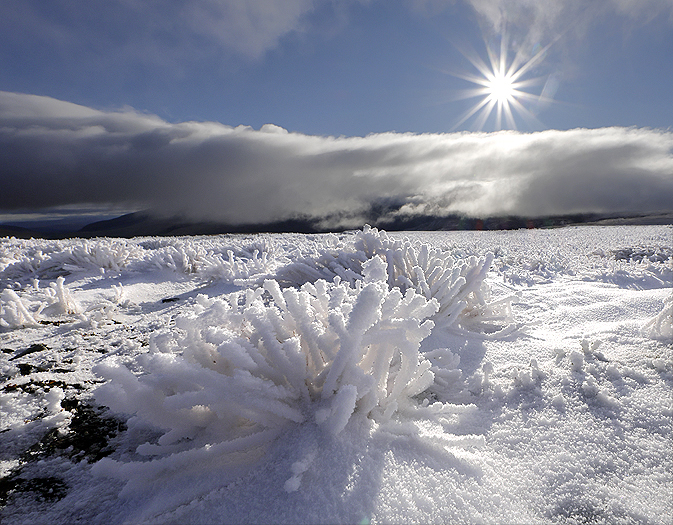
After a slight snowfall the landscape suddenly changed to a simpler world when the low clouds lifted.
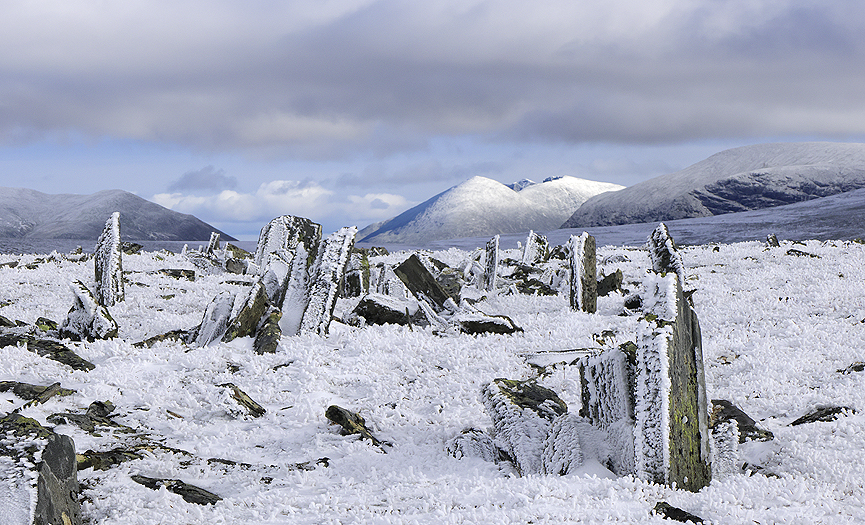
Near one of the peaks in Rondane mountain range we can see examples of rock movements caused by long term severe frost. The image show just a tiny part of a huge area containing these “standing stones”. When being there the sight can seem a bit odd.
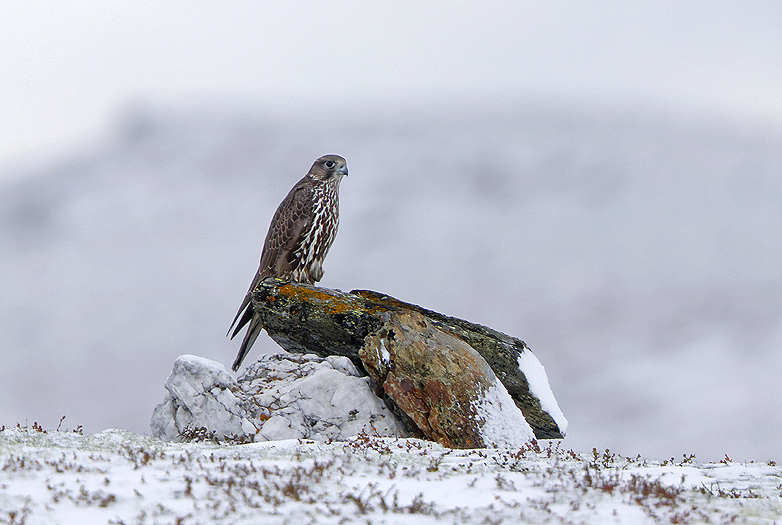
A young Gyrfalcon sitting watching for prey (Rock Ptarmigan). Rondane.
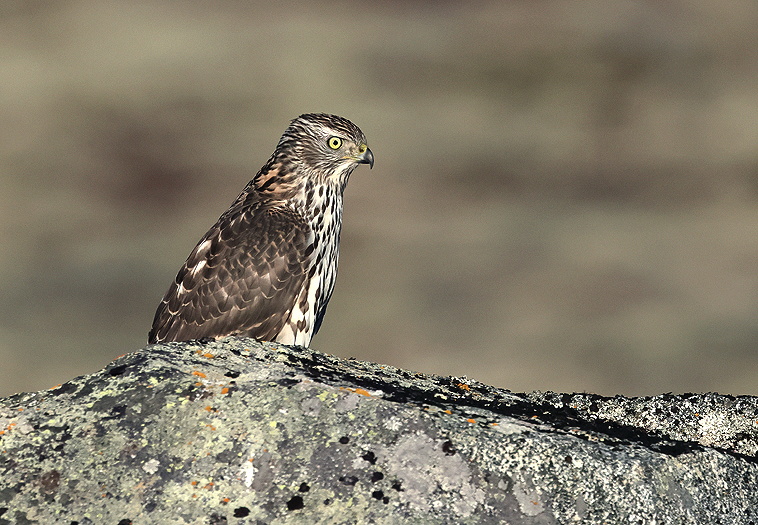
A couple of days later a young Northern Goshawk was also seen on a rock watching for prey. This one suddenly flew and managed to catch a Fieldfare. This was really impressive for a young Goshawk.
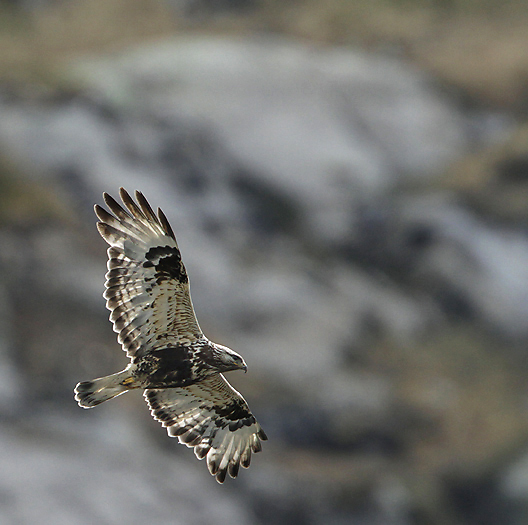
Even if the rodent population was low, there were a few Rough-legged Buzzards in the area (PAP).
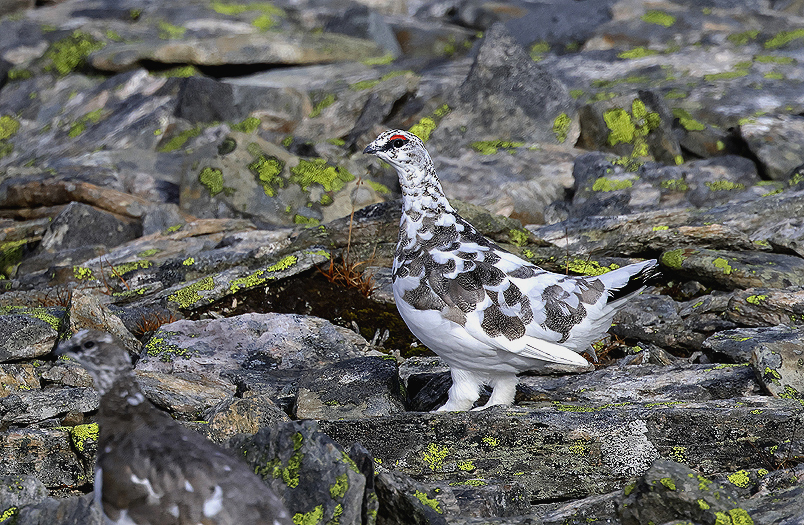
The Rock Ptarmigans start to change to pure white winter feathers in late September (PAY).
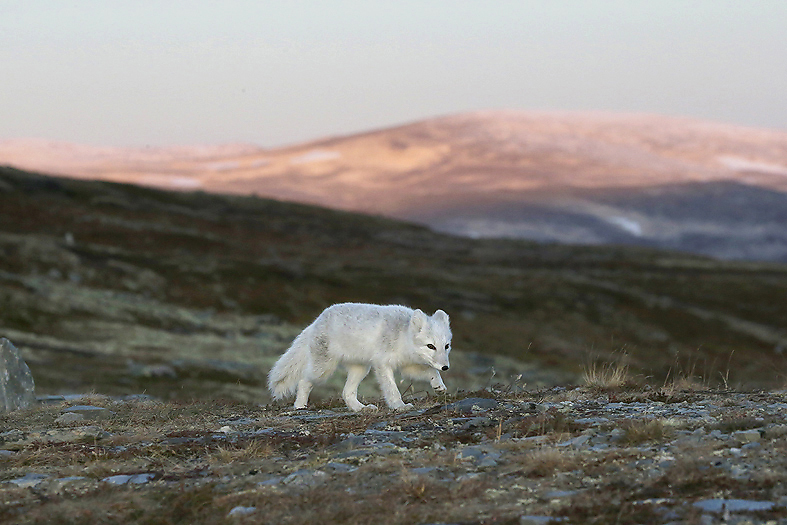
…and the Arctic Fox which also roam in these mountains are of course changing from brownish to white. This one is very close to has fulfilled the change (PAY). More images of Arctic Foxes from this area can be seen in the “Arctic Fox” gallery.
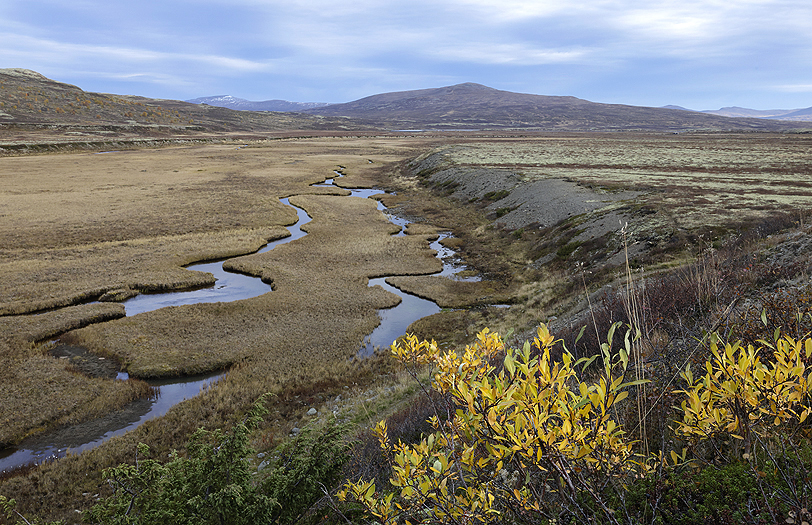
The landscape here in the central mountains is very varied, consisting of all kinds of landforms, from alpine mountains and rolling hills to more flat terrain.
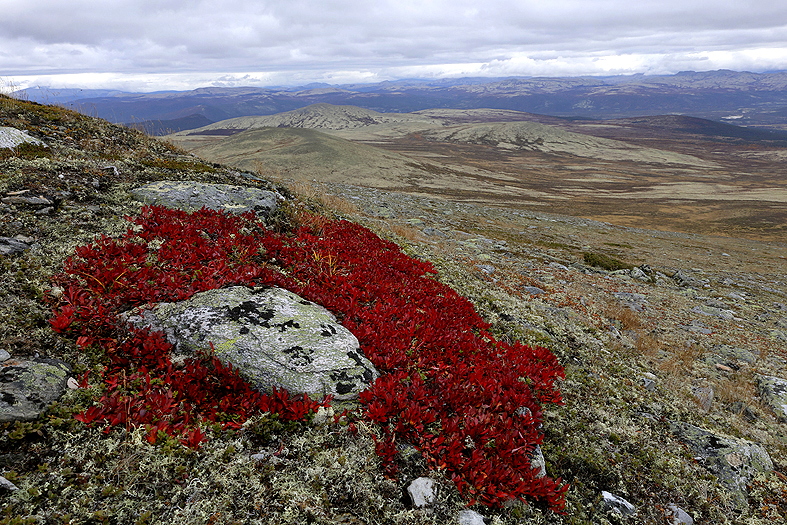
Alpine Bearberries are very colorful and make themselves visible in an otherwise brownish landscape.
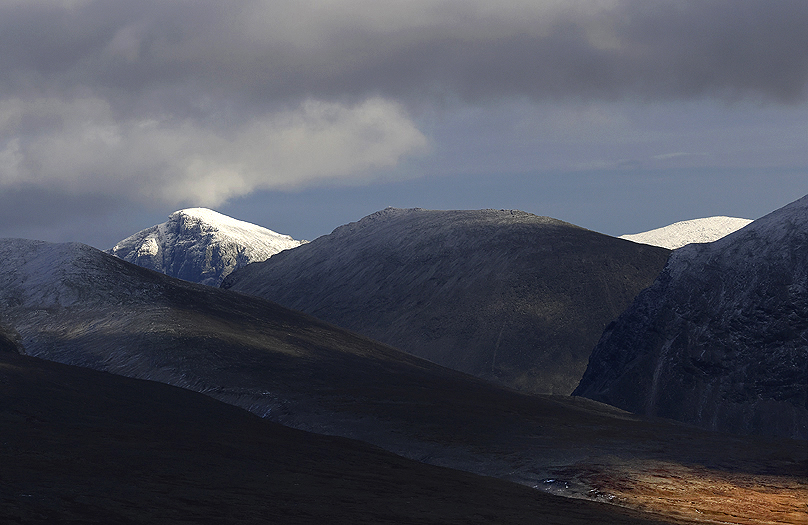
Part of Rondane mountain range in late daylight.
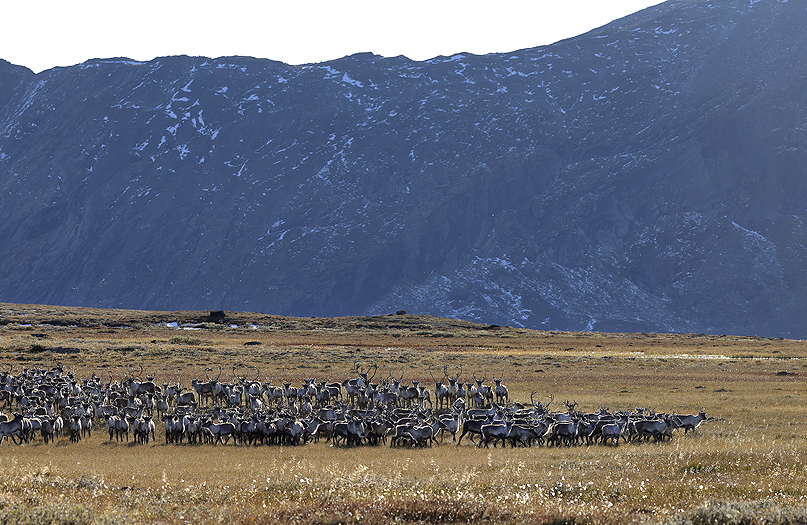
Part of a Reindeer herd consisting of 400-500 animals at the Dovrefjell mountains.
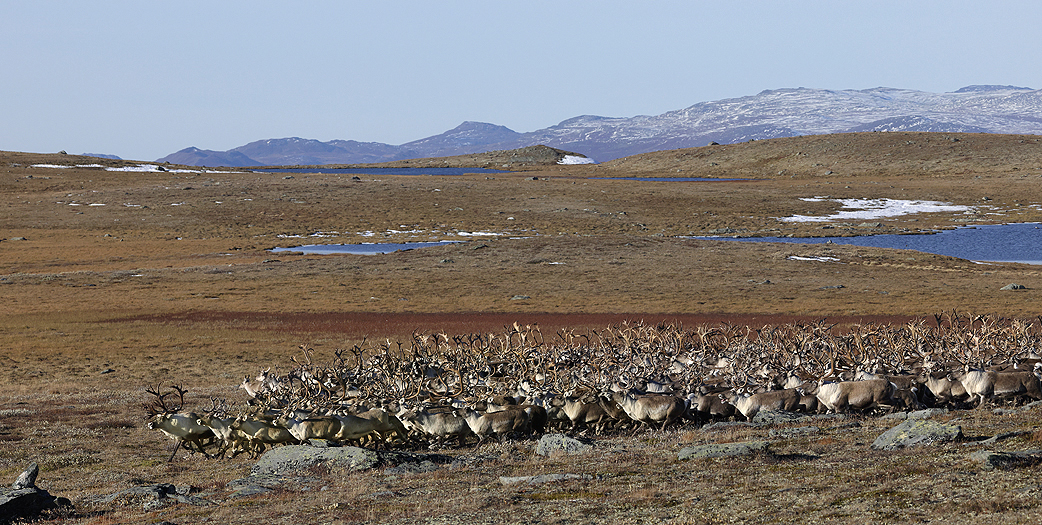
Reindeer herd on the move at the plateau. Dovrefjell.
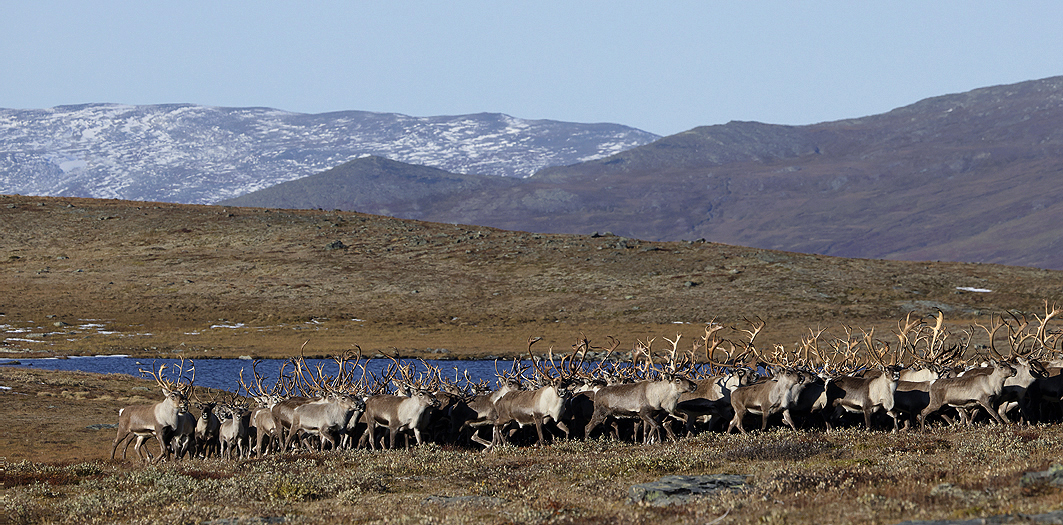
What beautiful animals. A sight in the mountains that nothing can compare to.
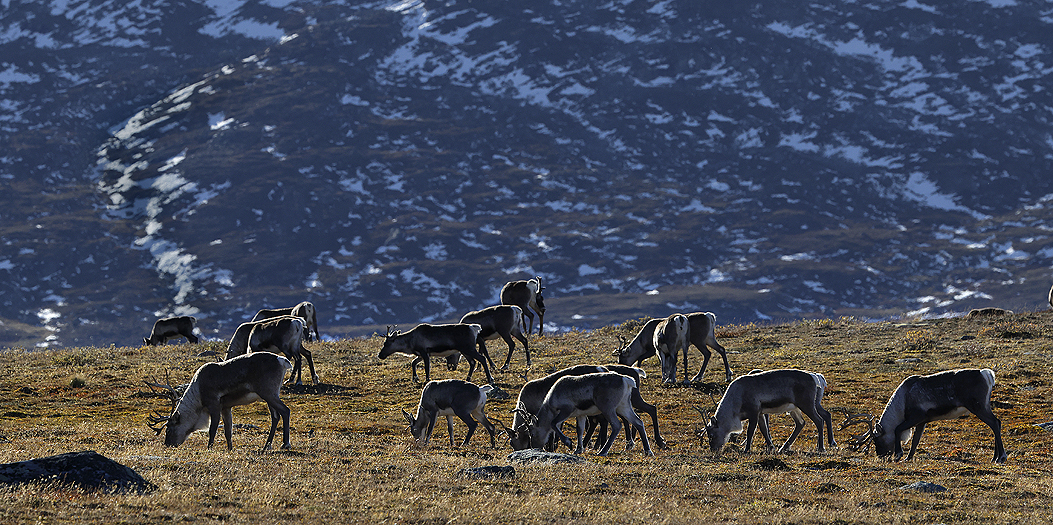
The Reindeer herd is peacefully grazing against the wind as normal.
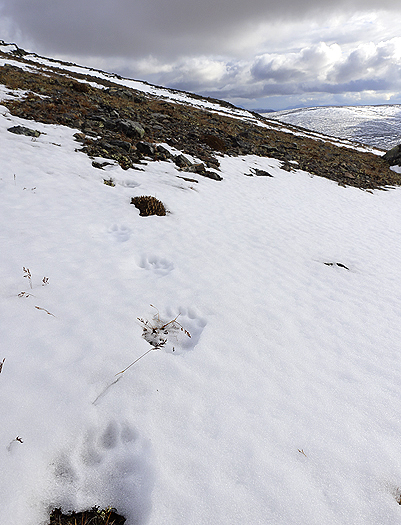
The eco system in some of the central mountains is still in a certain degree intact with predators such as Wolverines. Here are fresh tracks of a Wolverine who searched for food in an area where reindeer was present.
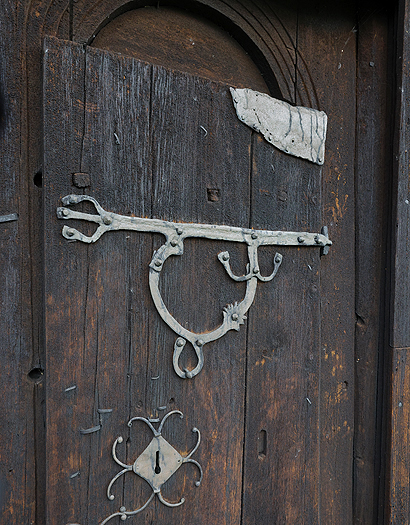
There is a myth that during the Black Death, so many people died, it is said, that the bodies were piled up inside the local stave church (built in 1168). A wolverine smelled the dead and gnawed through the door. The wolverine was killed in the church and its fur lies there to this day in front of the altar. The door was later turned upside down and the iron plate that is now visible at the top right corner of the door covers the opening the wolverine once gnawed through. The wolverine was killed in the church and its skin lies there to this day in front of the altar. Note the keyhole where the key is supposed to be inserted upside down.

The two weeks trip is about to end, and it is time to say goodbye to the Reindeer for now.
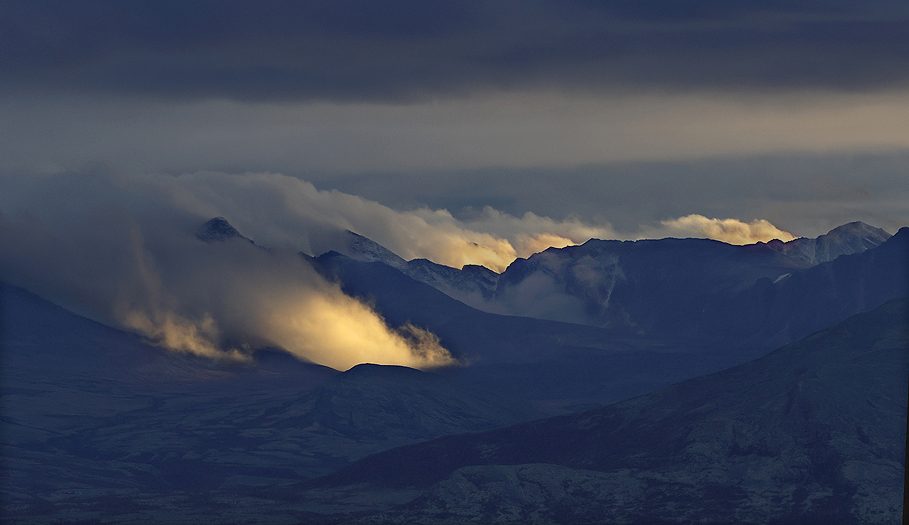
As leaving the mountains, -low sun set glimmers in the Rondane mountain range.
END.
________________________________________________
________________________________________________
NORWEGIAN WILDLIFE FROM SEA TO SUMMIT IN LATE SPRING & SUMMER OF 2025.
To follow further up in time from the previous blogpost I want to show some selected new images from the coast of the North Sea and up to the barren Rjuven mountain range in southern Norway.
Bird life at the archipelago by the coast which inhabits the southernmost bird cliff on the west coast is rich and diversed in late spring as for early spring.
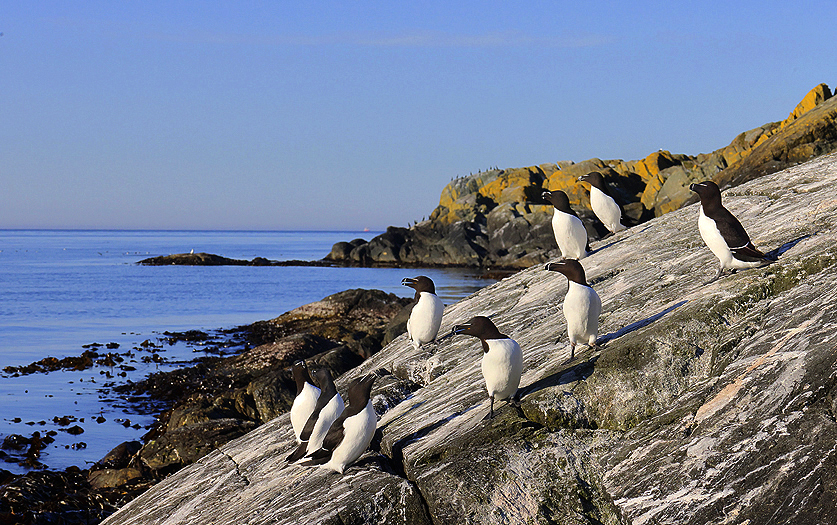
The beautiful Razorbills on one of their 3 favorite rocks. This species is not so shy compared to Guillemots.
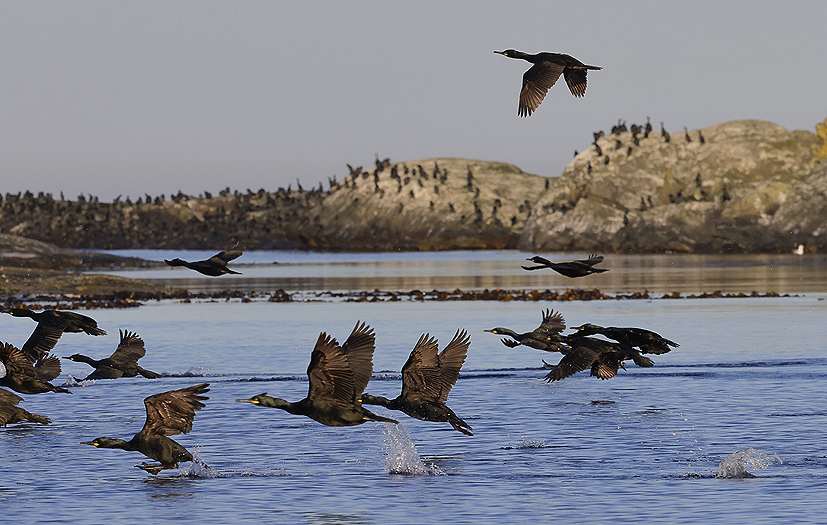
Early morning Shags lifting off.
Seabird/Auk situation at the archipelago:
The Kittiwakes which re-established a tiny colony for 3 years ago returned fortunately also this year. They found “their” nesting cliff and started to prepare to nest. Later in the summer they unfortunately aborted the nesting attempt.
A bit worrying is 98-99% of the auk population (except for Black Guillemots) were away from the archipelago several weeks earlier than normal. There was also extremely little guano from them left on the rocks late in the summer, -so odd matters might have happened to them as well.
Keywords: Food sources / overfishing, rising temperatures etc.
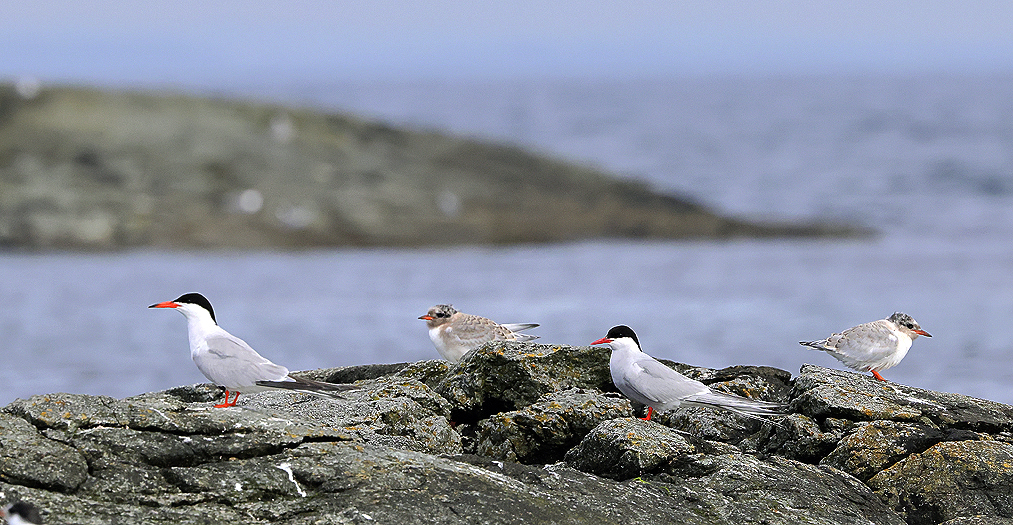
The Terns thrived all spring and summer and raised chicks. The tern colony out at the archipelago consist of roughly 75% Arctic Terns and 25% Common Terns. This photo show some of the main differences between the two species: The Common Tern to the left have orange curved bill with black tip, longer legs and white chest and cheek, the chicks are light brown in color. The Arctic Tern have dark red and shorter bill, dark red and shorter legs and grey chest up a small area with white on the cheek, the chicks are more greyish in color compared to the Common Tern chicks.
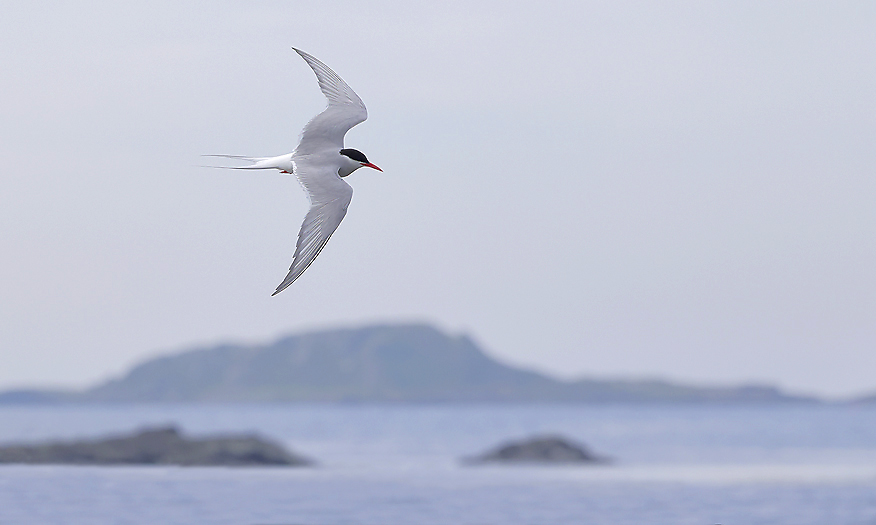
Arctic Tern (this species has longer tail than the Common Tern).
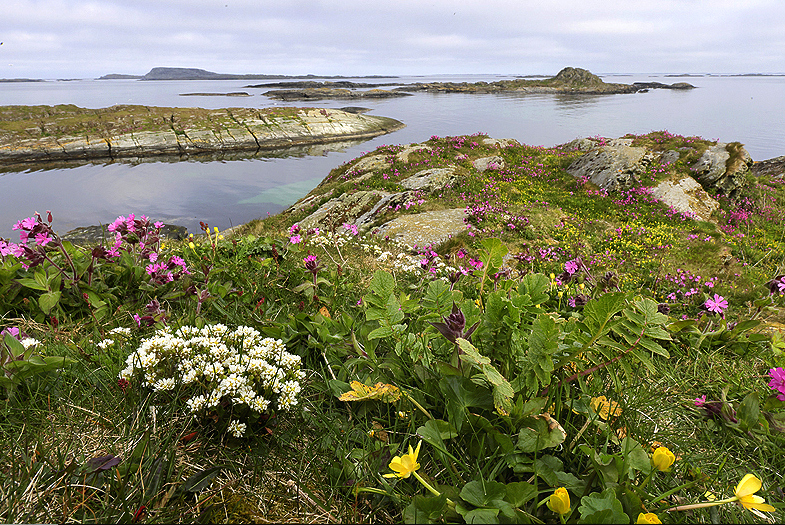
Variety of flowers at the archipelago from the Scurvy Herb, Lesser Celandine, Red Campion etc
Up in the mountains we recorded significantly lesser amount of snow patches this spring & summer compared to previous years. This is negative for the wild Reindeer who have less snow to cool themselves down on and to escape from bugs. There was a peak in the Lemming population in early spring, which unfortunately broke down in late spring. Despite for this, a certain population of other rodents was present in the mountains all summer.
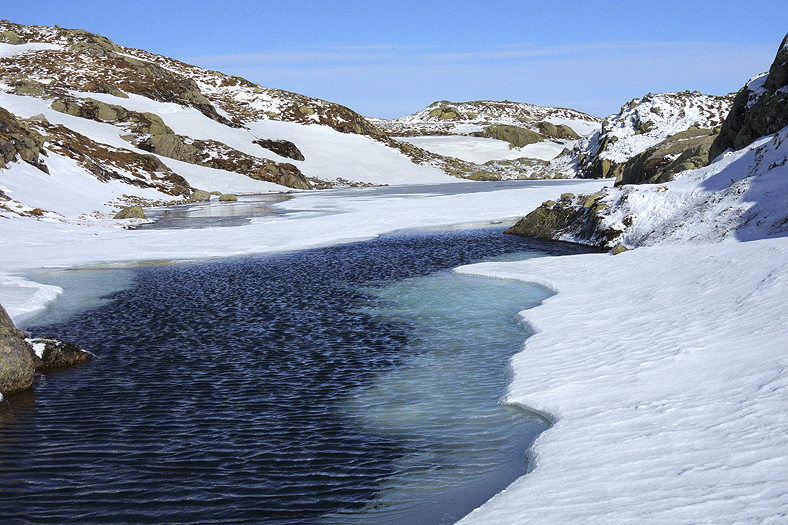
Late in spring, when the landscape is usually almost completely covered in snow, we see that only patches of snow remain.
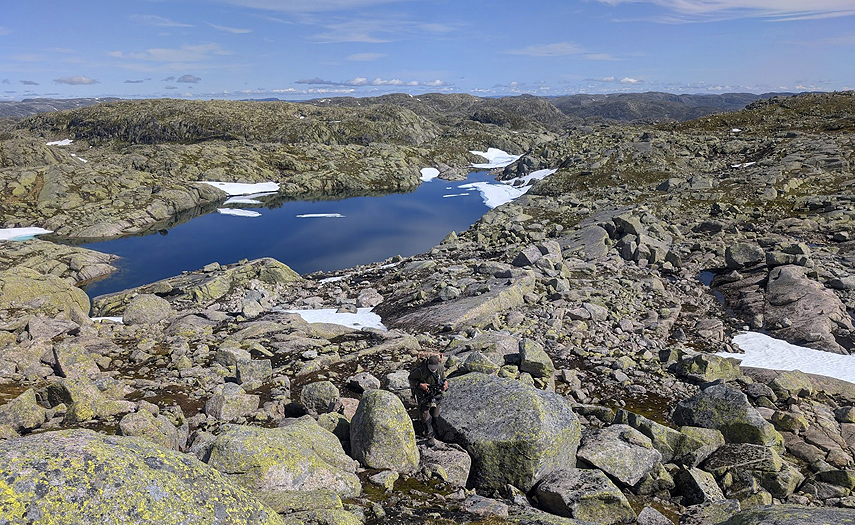
In early summer near all snow is melted, and the barren land with thousands of glacier grinded rocks spread all over show how the landscape really look like.
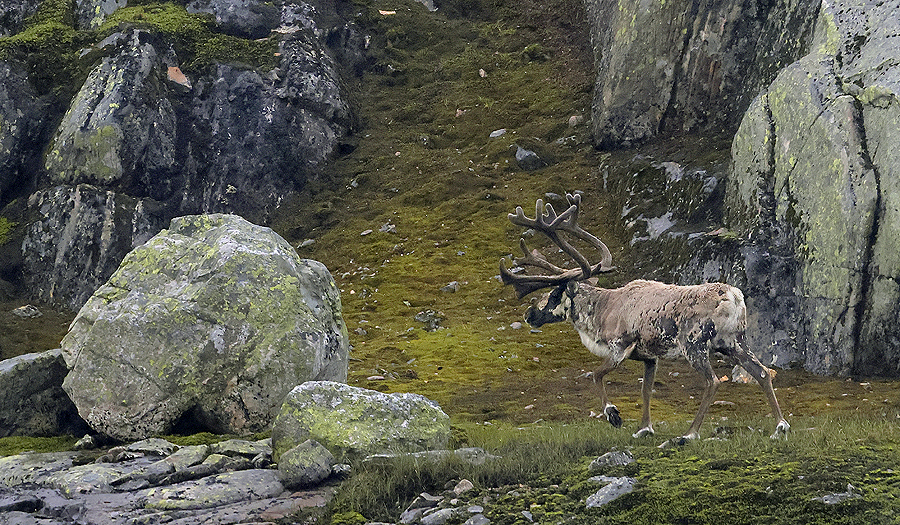
The Reindeer population here in the Rjuven area is the southernmost population in Norway. We are in the first week of July, so this bull will end up with a magnificent antler later in the summer and autumn.
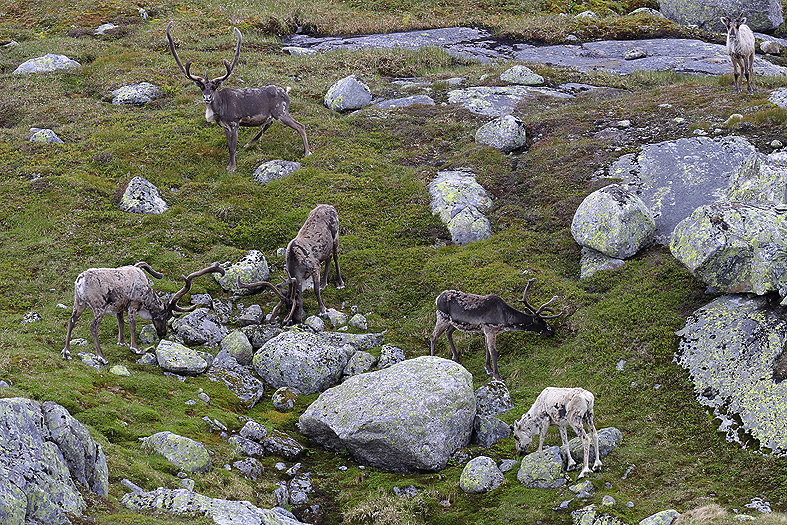
Herd of grazing wild Reindeer photographed 2 weeks later than the bull above. PAY.
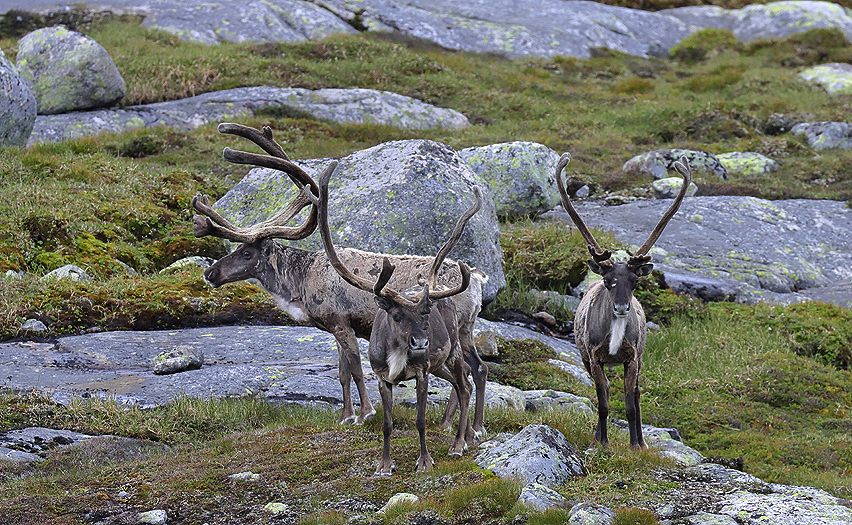
Wild Reindeer bulls. PAY. More images of Reindeer can be seen in the “Reindeer gallery”.
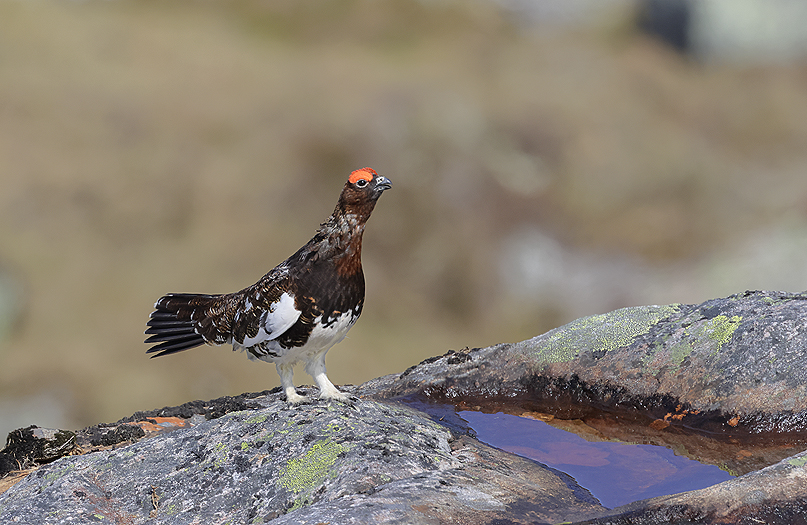
The Willow Grouse is close to have changed to summer plumage.
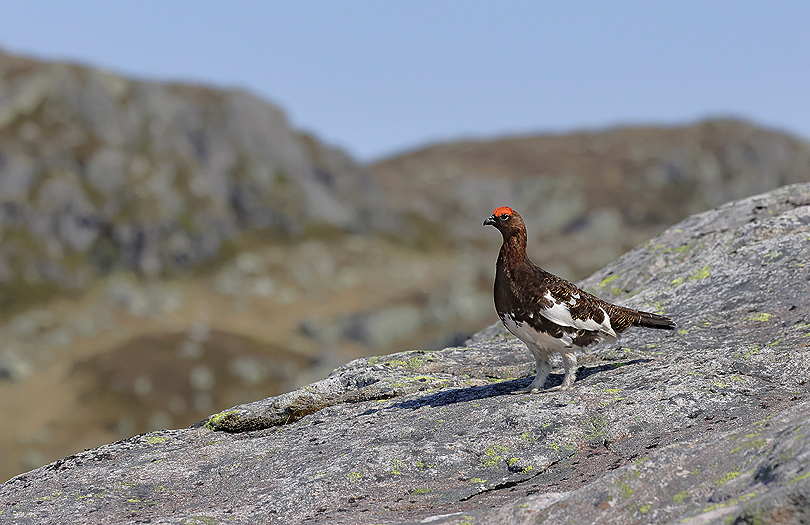
In the lower areas of the mountain range we find the Willow Grouse. But they, as well as other species living on the treeline is slowly expanding to higher levels.
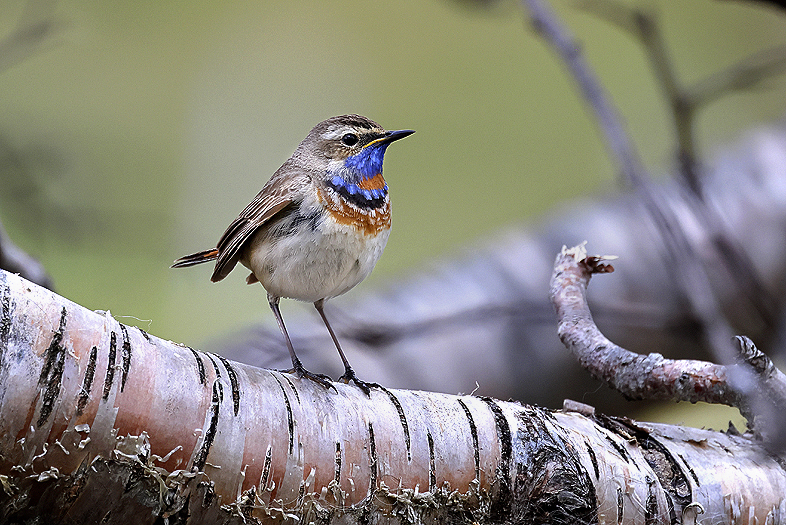
In the area where the Willow Grouse thrives, that means with a certain amount of vegetation, we can also find the beautiful Bluethroat.
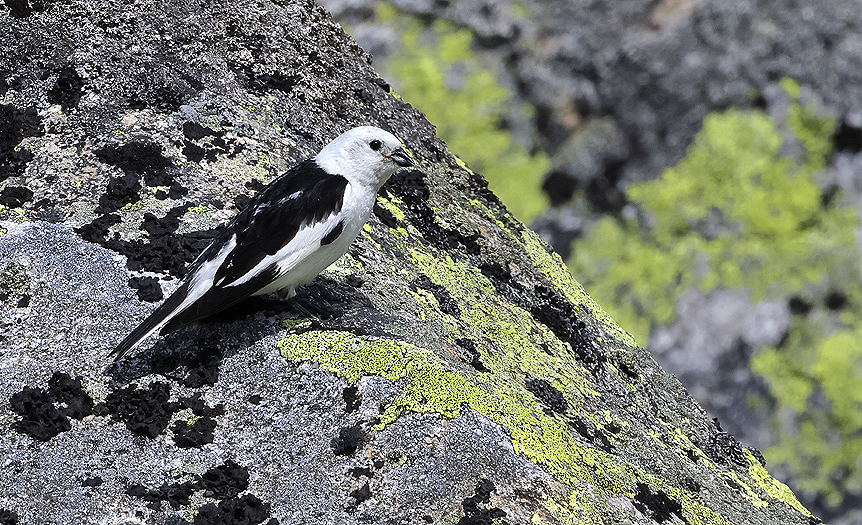
In the highest barren landscape the southernmost population of the Snowfinch is present.
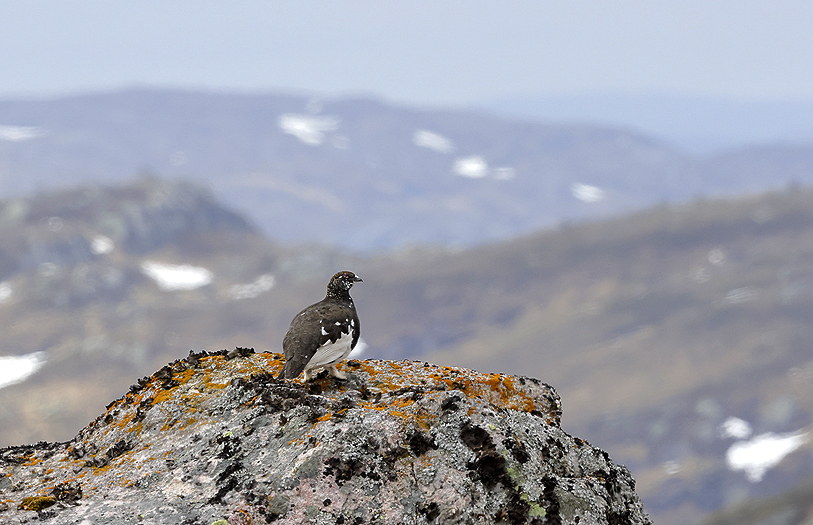
The Rock Ptarmigans is only to be found in the higher areas of the mountain range, well above the treeline. More new images of Rock Ptarmigans can be seen in the “Rock Ptarmigan gallery”.
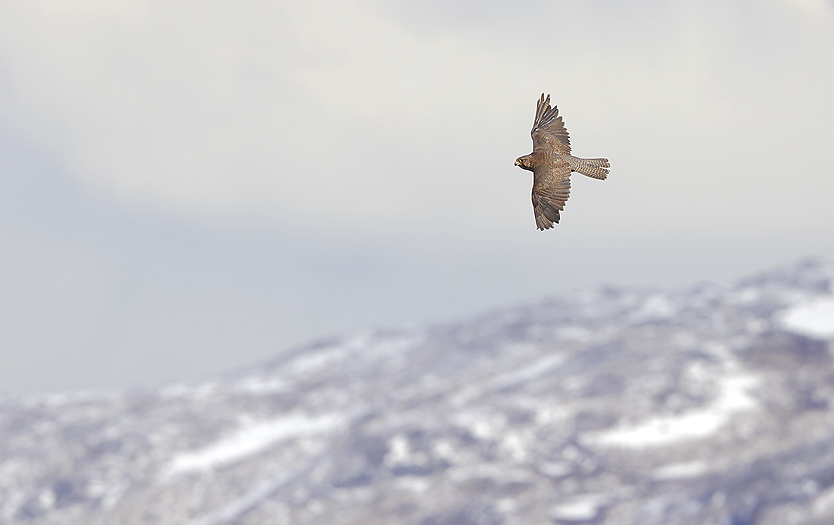
The Gyrfalcon is totally dependent on Rock Ptarmigans and to a certain degree Willow Grouse, and do not nest if the numbers of them are low. This year they nest, despite a moderate number of Rock Ptarmigans & Grouse.
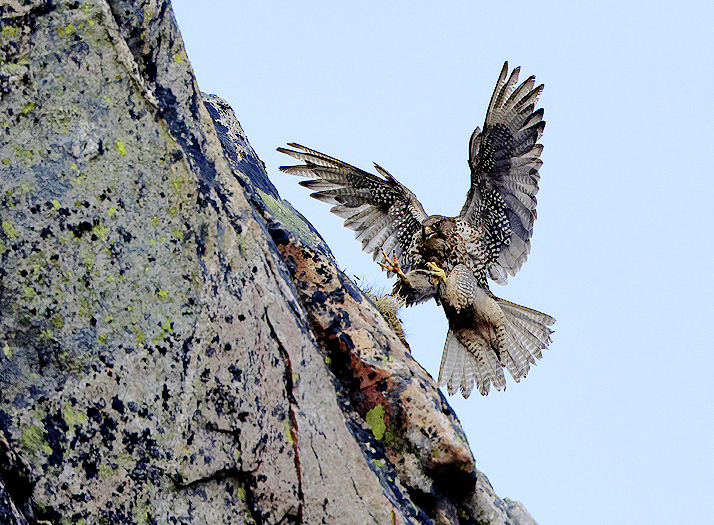
Gyrfalcon landing. More new images of Gyrfalcons can be seen in the “Gyrfalcon gallery”.
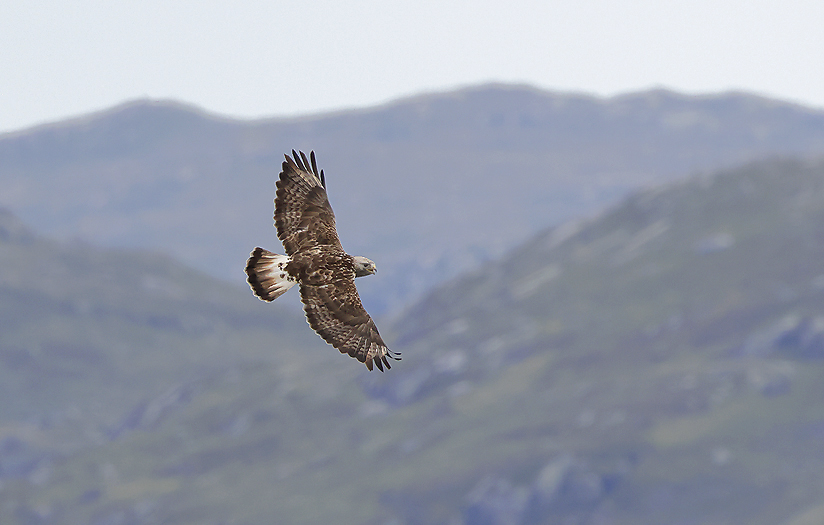
Several pairs of Rough-legged Buzzards nested this year. They expose themselves highly when strangers enter their territories. More images of Rough-legged Buzzards can be seen in the “Rough-legged Buzzard gallery”.
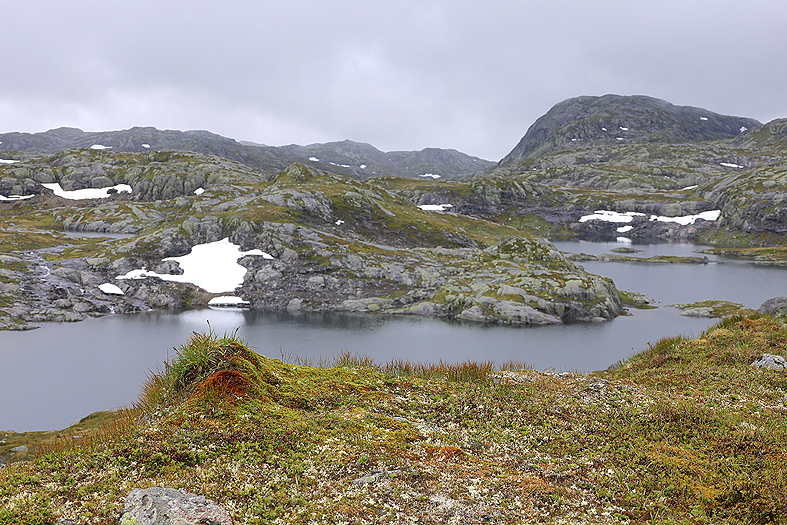
The turf of grass at a strategic “viewpoint” in an area rich of food/prey is a proof on that raptors, owls and other bigger birds has been sitting here for hundreds, may be thousands of years. Where they have been shiting, regurgitating, left food in such a degree that this point (turf) has very slowly “grown” in height.
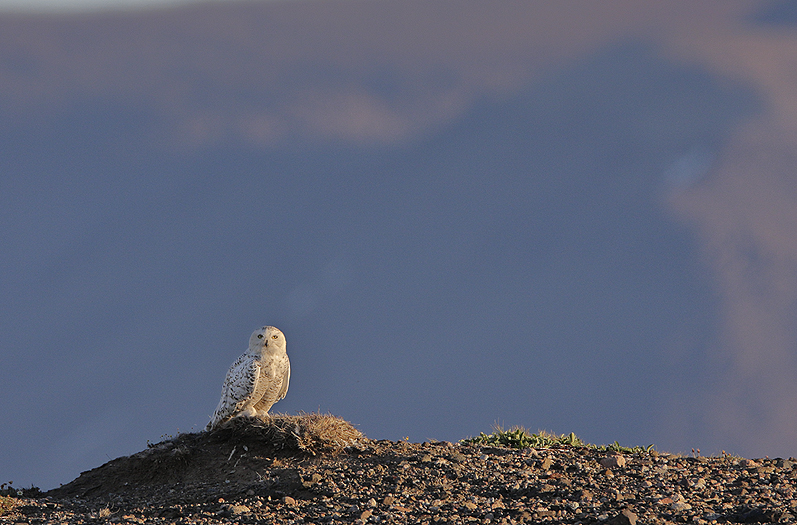
A single adult Snowy Owl was present when the lemming population was at the highest. PAP. More images of Snowy Owls can be seen in the “Snowy Owl” gallery.
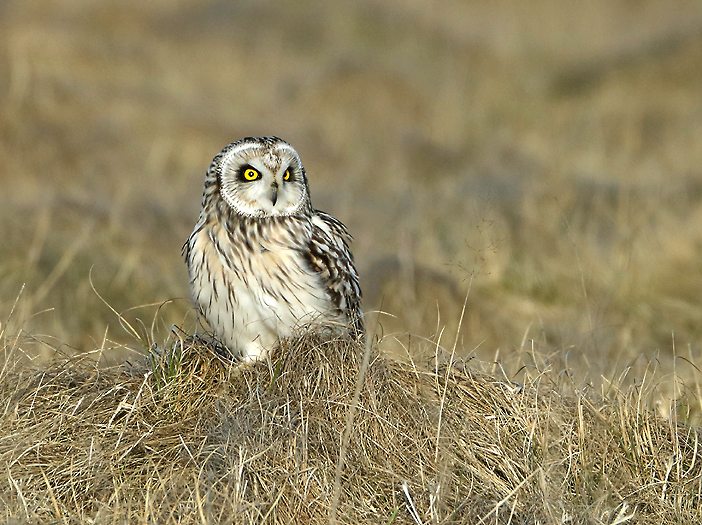
Some Short-eared Owls were observed by the mountain moors. This due to a certain amount of other rodents than lemmings (which population broke down a while ago). PAP. More images of Short-eared Owls can be seen in the “Short-eared Owl gallery”.
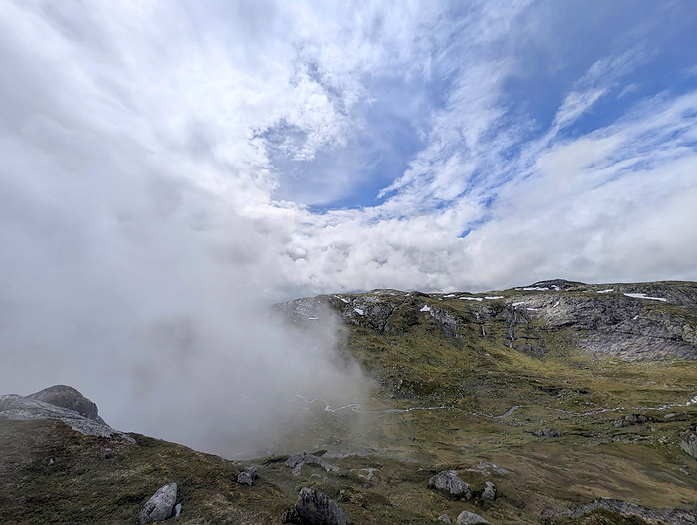
Incoming fog. The weather is as usual very mixed in these mountains which are influenced by oceanic weather systems. From calm to storm, and pouring rain to sun and “beach weather”.
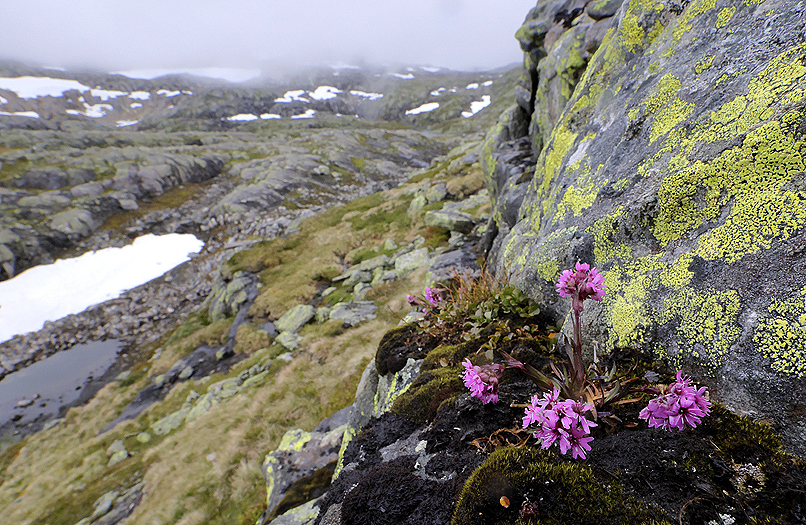
Near no flowers are blooming in the first week of July in the higher regions of the Rjuven area. The first ones out are the Red Alpine Catchfly which blossom in special sheltered areas.
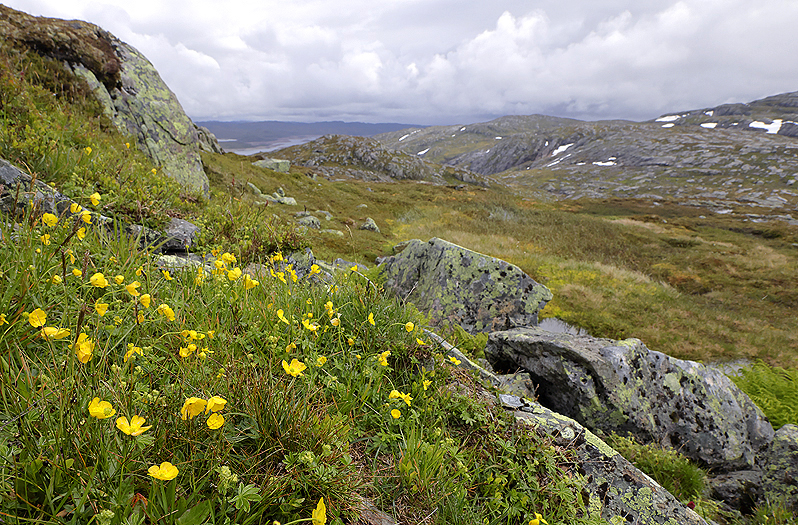
Snow Buttercup. The only one we observed on the trip.
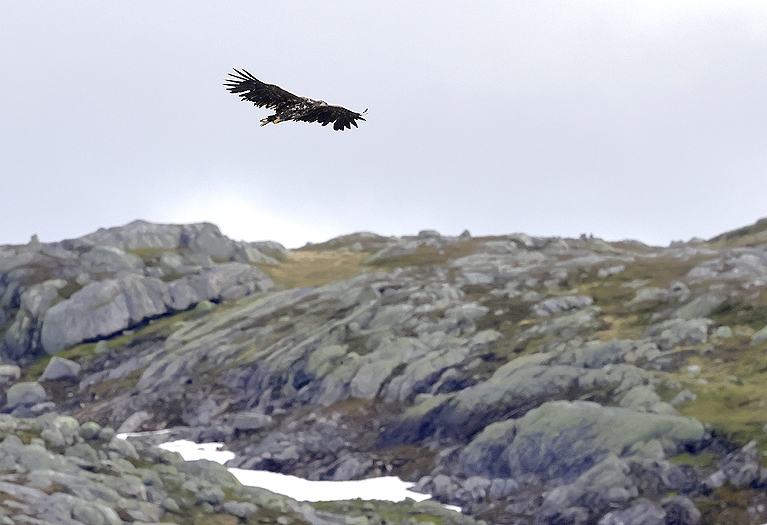
The White-tailed Eagles are expanding domain and found further and further inland. Some times these huge birds can look a bit scruffy.
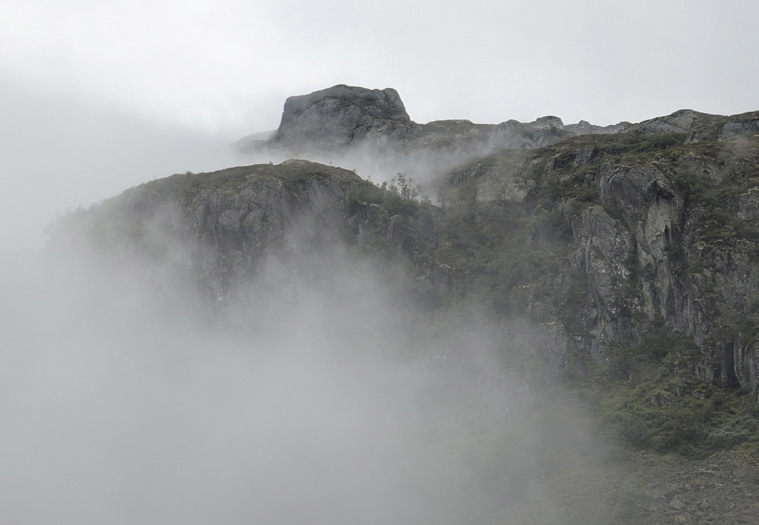
The fog lifted on and off while hiking in the Ryfylke Setesdalsheiene in late summer. It can be quite atmospheric actually, but important to have and use map & compass when navigating.
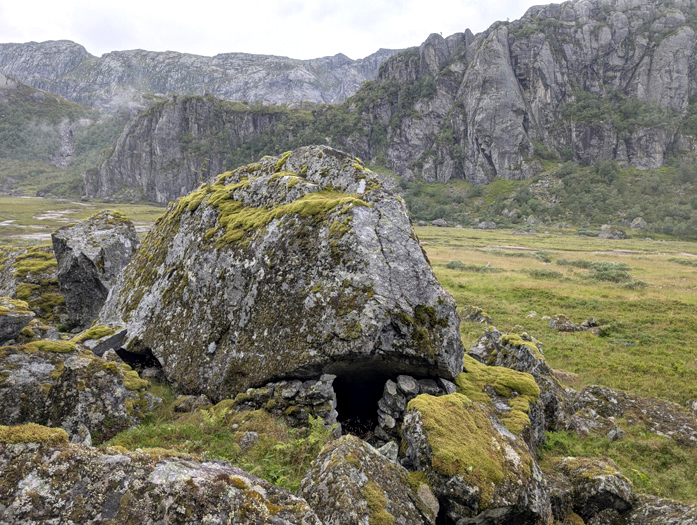
It is always interesting to look into historical or archaeological sites while out in the field. Here we see a simple shelter in a remote valley deep into the mount range. This place (Futeheller) has for sure at least been used from the medieval period and up to around 70-80 years ago in conjunction with hunting, herding and other activities. However, pieces of flint have been found at the place, -which can mean even earlier presence of humans there (Bronze Age and/or back to the Stone Age).
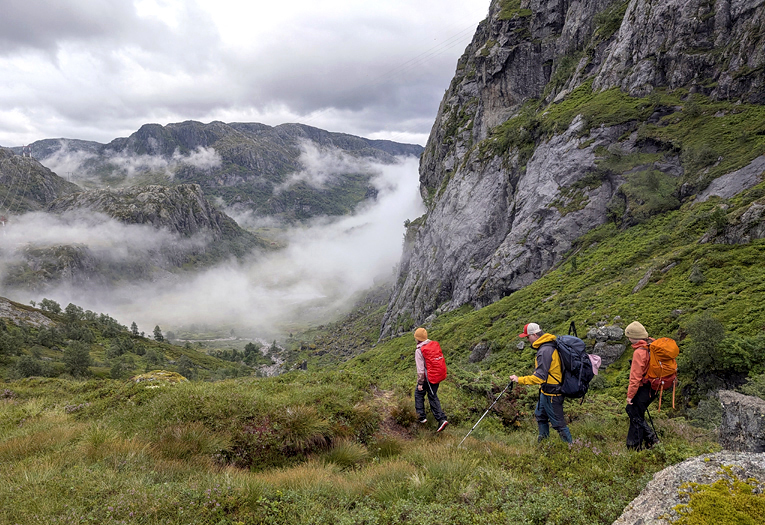
The summer hiking season in the mountains ends with a very nice (but wet) week hiking with son and grandchildren.
END.
________________________________________________
________________________________________________
WINTER / EARLY SPRING WILDLIFE BY THE NORTH SEA. JANUARY – APRIL. -2025
This post is to show some of the typical wildlife at the Norwegian Kjør-Håstein archipelago in late winter and early spring. That means first some wintering birds and thereafter when the local birds/seabirds arrive back again and prepare to nest.
Grey Seals resting in the early morning light. They stay at the archipelago year round. These islands contain one of the biggest Grey Seals colonies in Norway.
Calm winter days are quite rare here at the exposed coastline. But when those days occurs the light can often be beautiful. Here a flock of male Velvet Scoters.
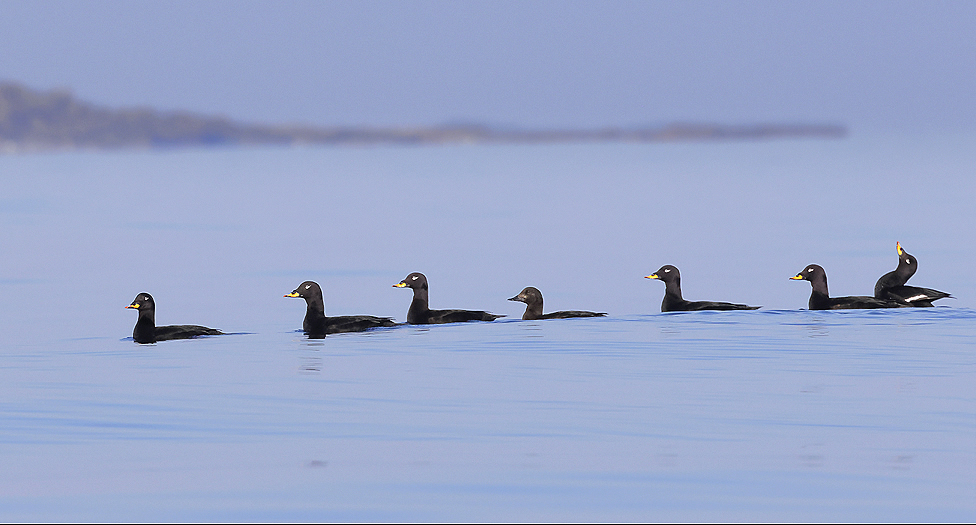
The arctic & sub arctic Velvet Scoters use these waters for wintering
Another common wintering species here is the beautiful Long-tailed Duck. Here we see two males and a female in winter plumage.
It is early March, and the males begin to be interested in girls. Here we se the female from the previous image that escape from the two fighting males. The Long-tailed Ducks nest both in the high arctic as well as in the sub arctic mountains
Flocks of Purple Sandpipers are found by the coast and out at the archipelago in winter time. Note the resting Grey Seal in the background.
Near an hour after sunset the light can be wonderful on clear evenings. Here a resting Grey Seal high up on a cliff. When the swells are heavy the seals move higher up on land.
The geology is exciting out at the archipelago, dominated by Palaeozoic and Caledonian folded rock formations mainly consisting of Green Shales.. The land here was connected to North East Greenland around 300 mill. years ago before the continental plates moved away from each other.
The remnants of a simple shelter of stone for the fishermen that made their living out here a long time ago. It is well sheltered from the cold northerly strong winds.
First signs of spring:
The common and beautiful Sea Thrift is preparing to flower out at the archipelago.
Scurvy herb. It is unknown if it was the fishermen that once brought this vitamin-C rich plant out on the desolated island here or whether the plant was distributed naturally.
The first sign of nesting birds this very early spring was the nest of a Grey lag Goose.
The Grey Lag Geese population has increased quite much for the last 10 years, and is found nesting on all of the bigger islands in the archipelago.
A small flock of Barnacle Geese on their way northwards to their nesting grounds at Svalbard or eastern Greenland make a sudden turn at the archipelago, -probably caused by a couple of White-tailed Eagle in the immediate vicinity.
The local White-tailed Eagle couple
Due to big swells on the exposed outer side of the archipelago the Grey Seals move higher up on land while resting.
Closing in to he nesting season the Shags have not got the characteristic head feather top. The Shag colony out here is one of the biggest in northern Europe.
The seabirds started to congregate in late March. Here a flock of Razorbills.
Gathered Razorbills on one of their favorite rocks. Shags in the background.
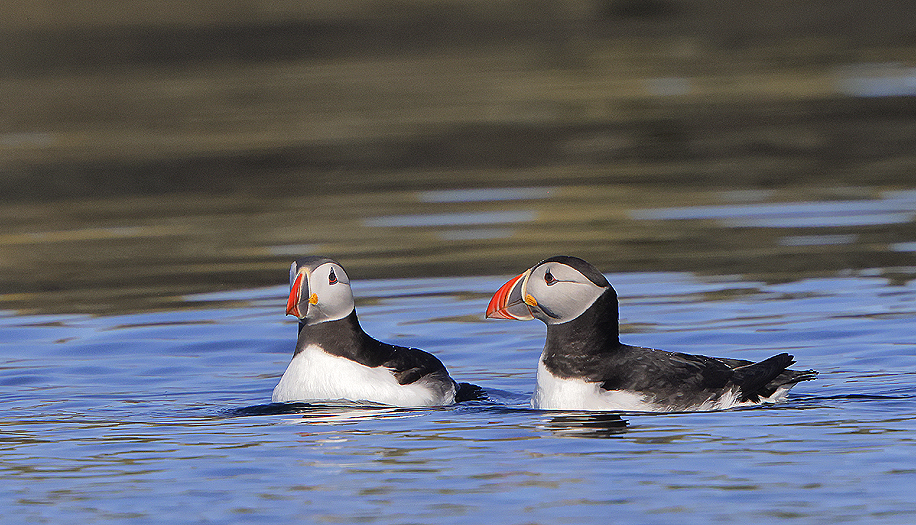 The Beautiful Puffins have also recently arrived at the archipelago.
The Beautiful Puffins have also recently arrived at the archipelago.
The Black Guillemots are quite common here. They are in full swing preparing to pair up.
Full activity among the Black Guillemots
It was with great pleasure to see that the amount of congregating auks was exceptional high this early spring. It shall be very interesting to follow this up and see if the numbers will be stable during the nesting time.
Panoramic view with part of the area where the seabirds thrives
Guillemots with Shags in the background
Razorbills
The numbers of Eiders have been reduced out at the archipelago for the last 5-10 years.
Grey Seals in late afternoon at out the archipelago.
Evening.
END.
________________________________________________
________________________________________________
MOST ABOUT WILD REINDEER, NORWAY SEPT/OCT-2024.
Due to domestication and lost living space caused by human expansion the European Tundra Reindeer population (Rangifer tarandus tarandus) has now been endemic to Norway.
The Reindeer is supposed to have arrived the northern part of the American continent from the southern part around 2 million years ago. Thereafter they moved into Eurasia via today`s Bering Strait, and have until now lived in the same areas as humans in over 500 000 years. Concerning Europa: In the periods of maximum Ice Ages their living area where exclusively south of today`s Nordic Countries, that mean in Central and Southern Europe.
In the last 700,000 years, several Ice Ages have haunted Northern Europe. Roughly calculated, the ice ages lasted around 100,000 years each, with a similarly long stay in time when the climate was warmer and the ice retreated northward.
It was not until near the end of the last Ice Age around 12 000 years ago the Reindeer began moving into what we now call the Nordic countries, and along with them the humans (hunter & gatherers) followed. From this period up to the Medieval time we find evidence of human Reindeer hunting, especially in the Norwegian Mountains (north and south).
It was not until before the 16-hundreds AD that the Sami people began to domesticate Reindeer.
At Hardangervidda mountain plateau in southern Norway, there is i.e. a place (Sumtangen) that has been in use for Reindeer hunting from Mesolithic time up to the Bronze Age, Iron Age and to Medieval time. Photos from this extremely interesting place can be seen in the “Archaeological Sites” gallery.
This blog post describes firstly a system for Reindeer hunting from the Viking Age (last part of the Iron Age) in Rondane mountain range. There are also remains of older Reindeer hunting arrangements at this place, but which are overshadowed by the system from the Viking Age. The place is in a narrow valley floor in the middle of the Rondane mountain range, surrounded by high and very steep mountains. This is perhaps the wildest and most secluded parts of this mountain range. No paths lead here and very few hikers go this way, and the only natural entrance and exit to the place is from the valley in the north.
Due to that snow is expected at any time now in late September the first priority for this 2 weeks trip is to visit this interesting place.
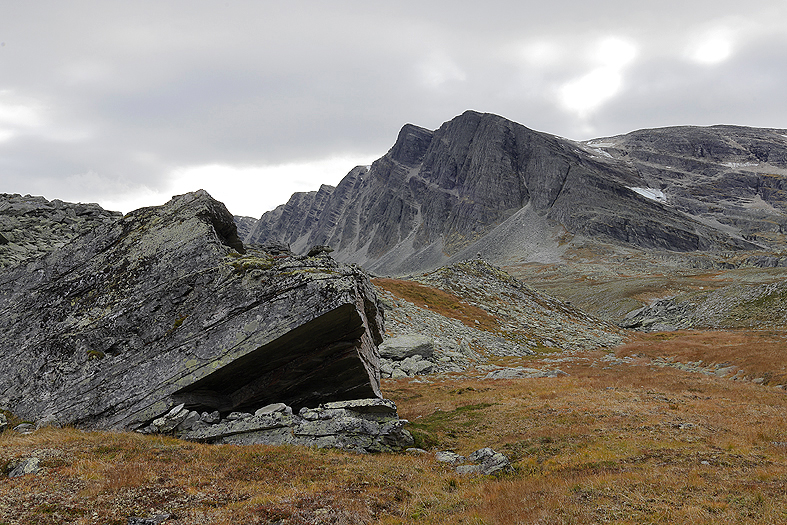
This shelter has been in use by people at least back to late part of the Bronze Age (2500 years ago).
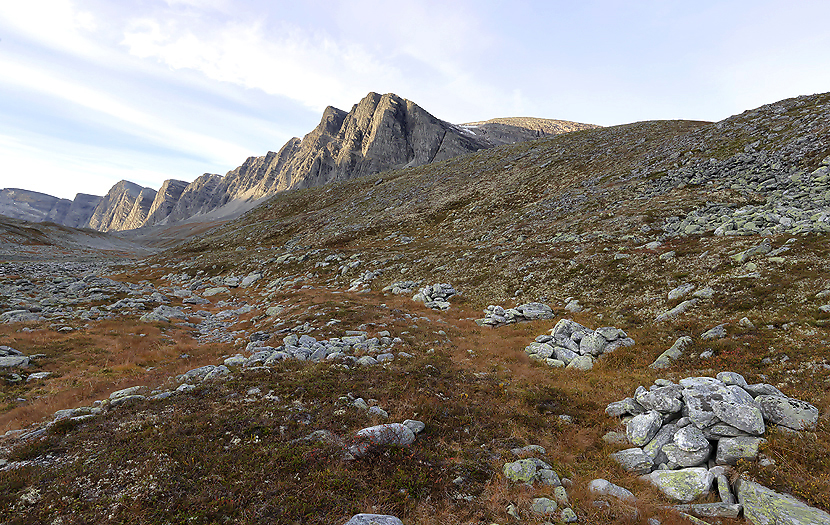
Part of the Reindeer hunting system from the Viking Age in the Rondane mountain range. Remnants of a lead fence row is now seen as massive pole mounts of stone. The distance between where the poles once was erected was measured to be around 3m.
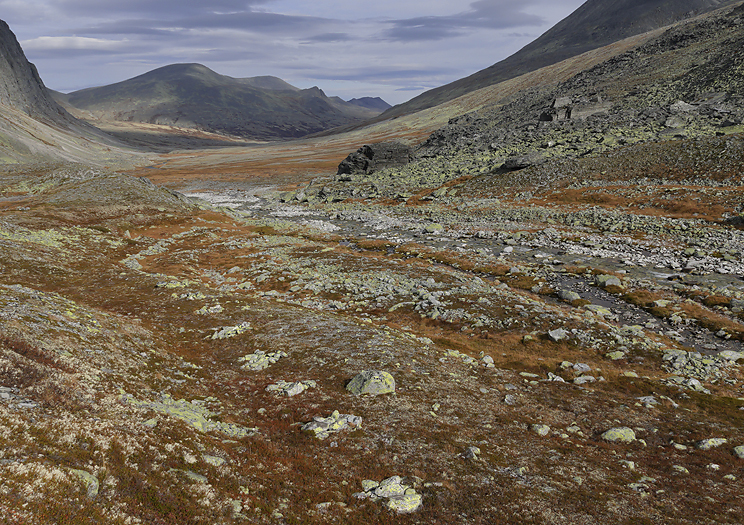
Image refer to previous but angled 180 degrees. The lead fence, now seen as pole mounts, supposed to lead the Reindeer herd from the last steep mountain wall to the mouth of the valley, crossing the river and ended surprisingly for the Reindeer herd up behind a huge stone block (the dark one above center of the photo) which was fenced by up to 1,8m high stone walls that made this spot (around 3 x 15m long) to a collect & kill place.
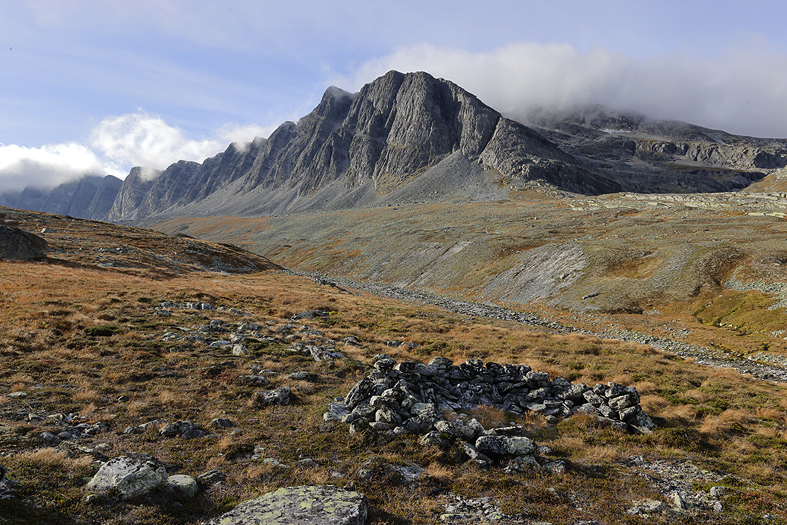
The Reindeer hunting system contain several hunting blinds where the hunter sat waiting with his bow and arrows.
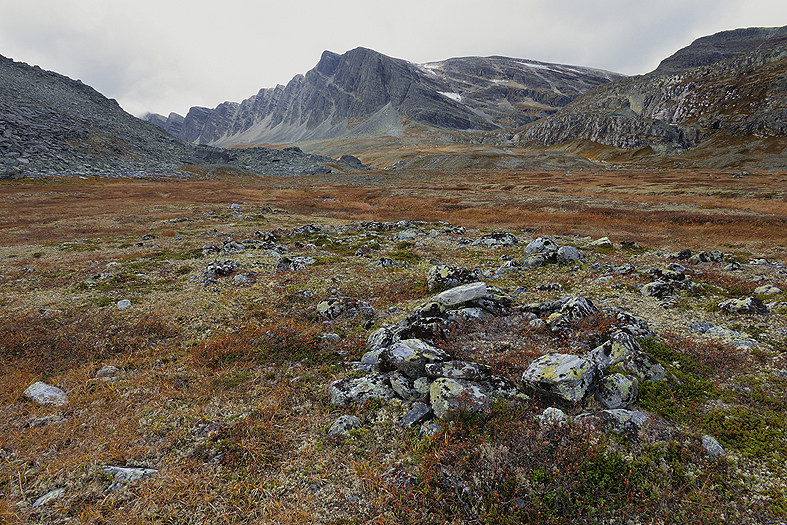
On the plain north of the hunting system there is a circular Reindeer hinting blind. More new archaeological images can be seen in the “Archaeological Sites” gallery.
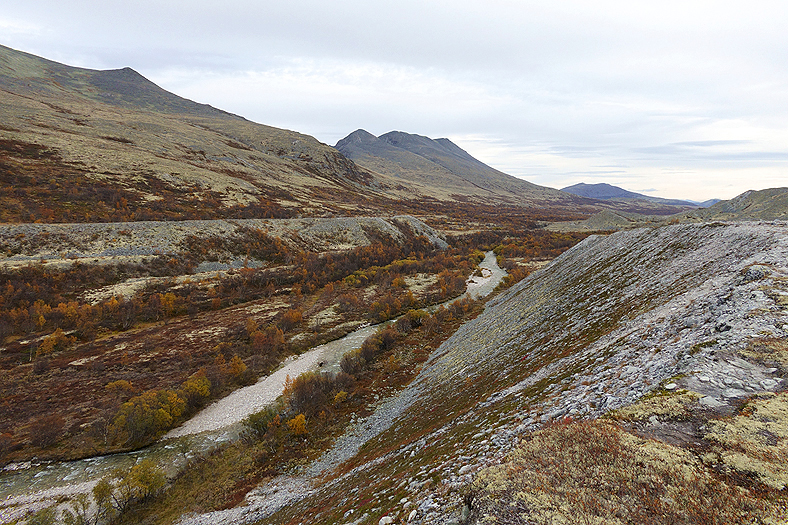
Some places in the Rondane mountain range there are huge deposits of stone and gravel. Evidence from the last Ice Age.
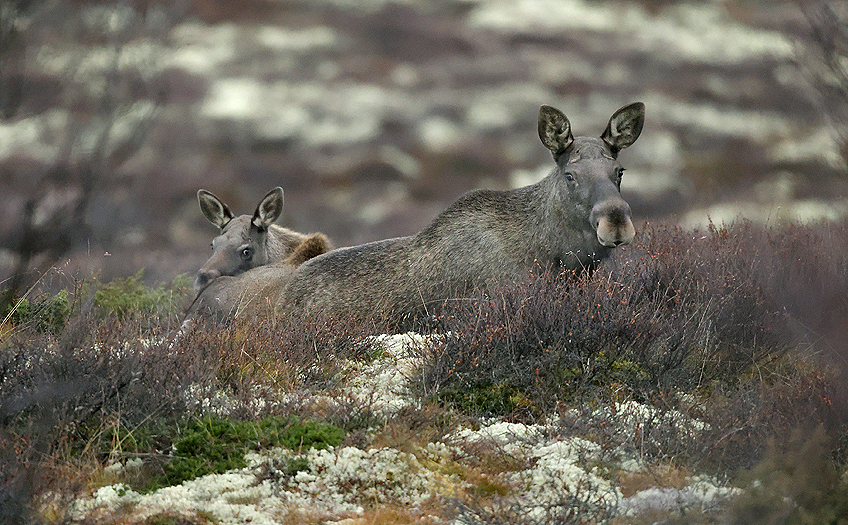
A Moose with her calf is resting in the lower areas of the mountain range.
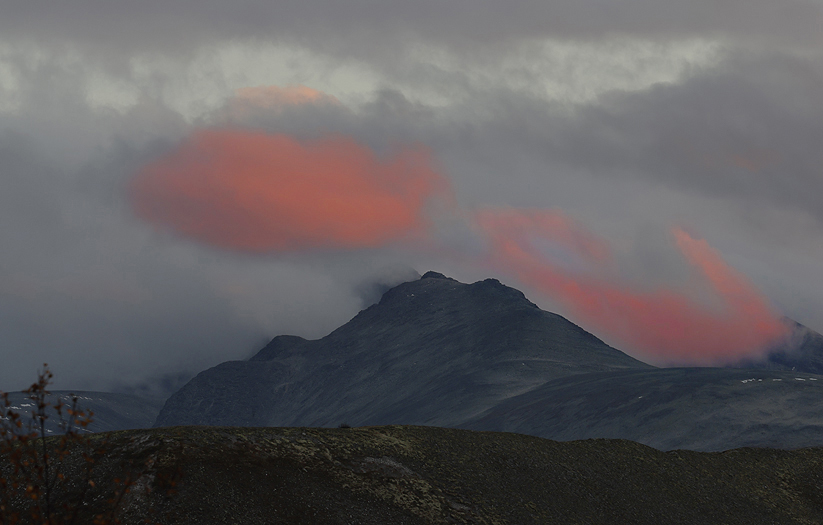
After arriving back to base camp in the evening after some days by the Reindeer hunting system the last sun rays of the day show up over the nearby peaks.
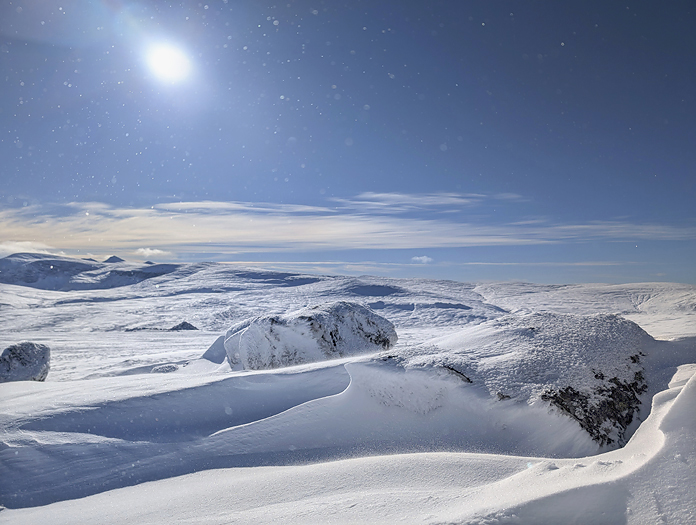
And then the snow came. Quite nice actually, -a taste of winter. White, cold & fresh!
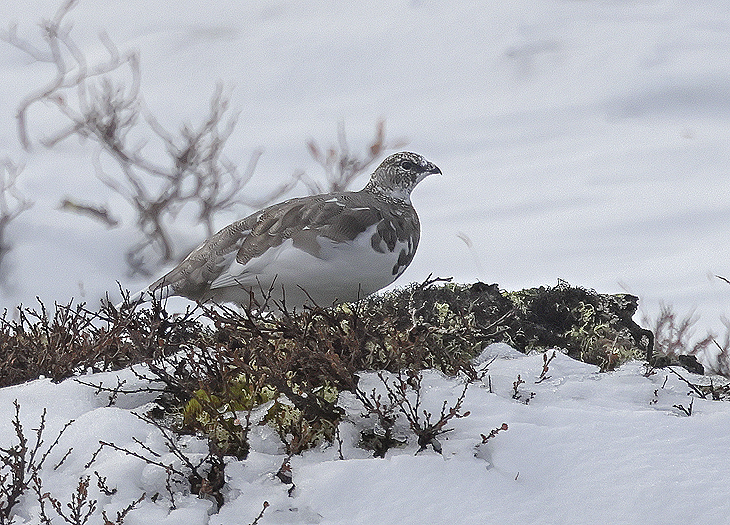
The Rock Ptarmigans have began changing to winter plumage. Since they are not all white yet in a white landscape they feels vulnerable and are more shy than otherwise.
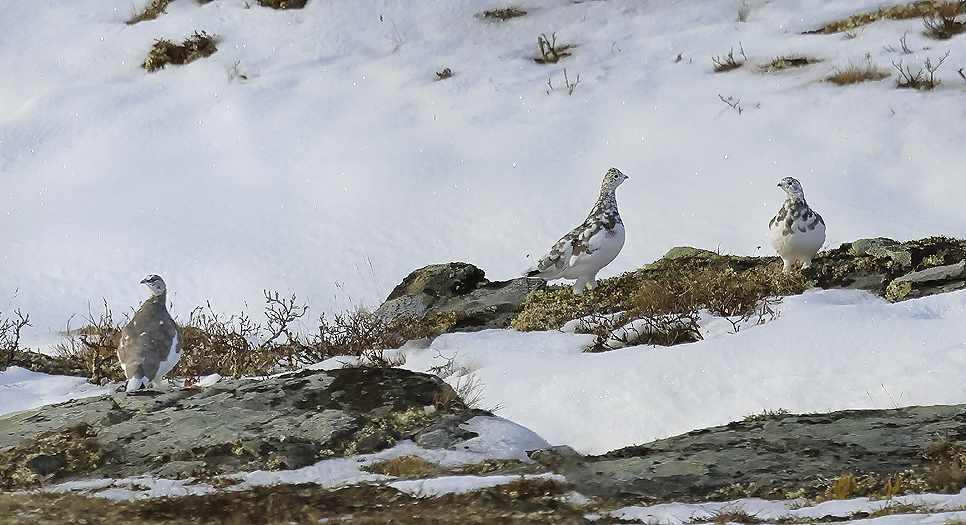
Rock Ptarmigans. More images of Ptarmigans can be seen in the “Ptarmigans, Grouse Capercaillie” gallery.
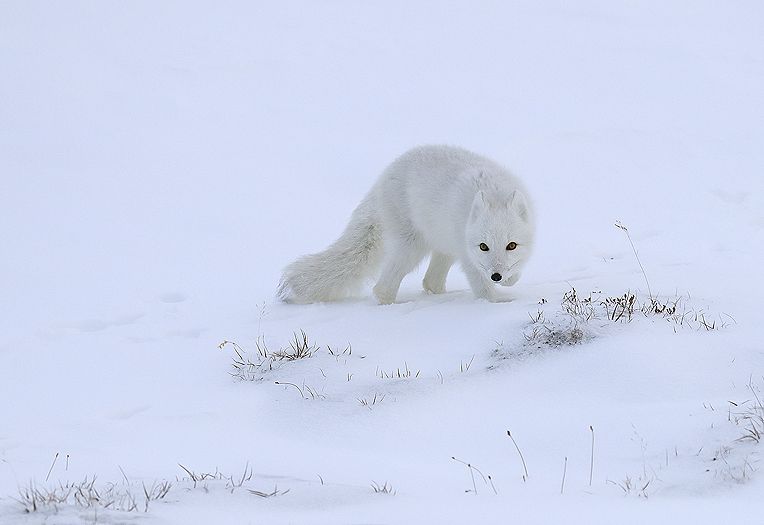
The Arctic Fox living here is in the final phase of changing to the beautiful winter fur. PAY
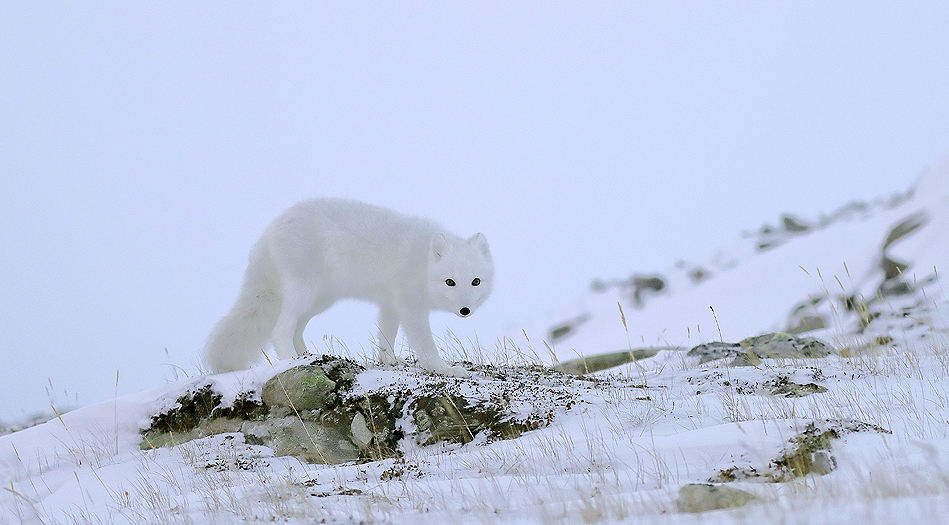
Arctic Fox. More images of Arctic Fox can be seen in the “Arctic Fox” gallery. PAY
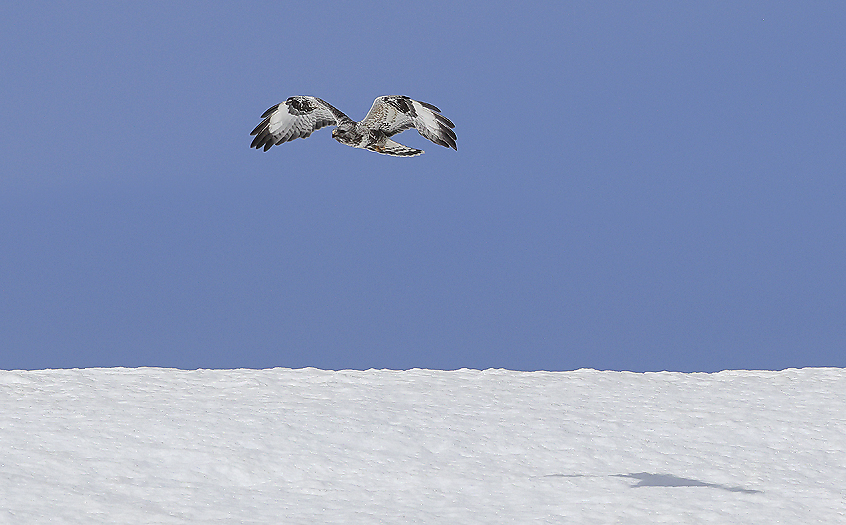
This autumn showed increase in the Lemming population and several Rough-legged Buzzards was seen hunting them. PAP
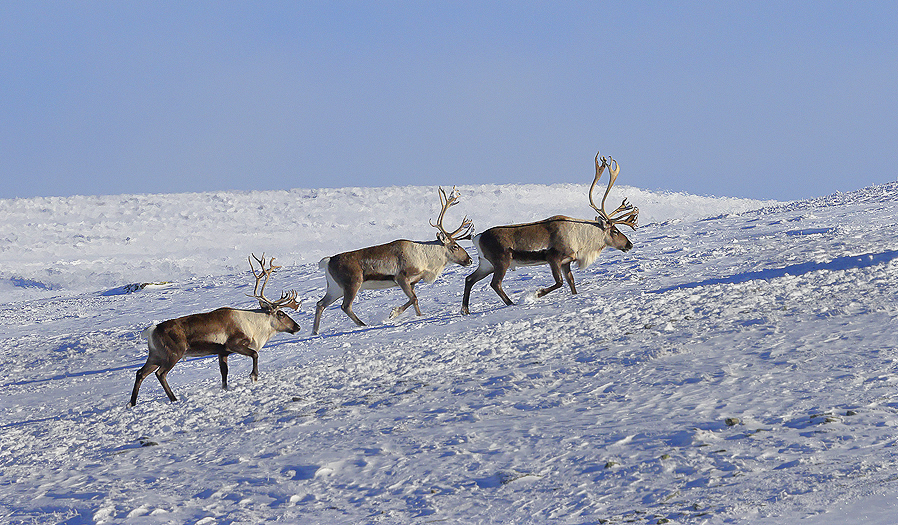
The Reindeer is as we know “animals of the Ice Age” and thrives good when the temperature goes down to sub-zero and the snow is coming. Here a couple of Bulls that following a herd of 150 animals in the Rondane mountain range.
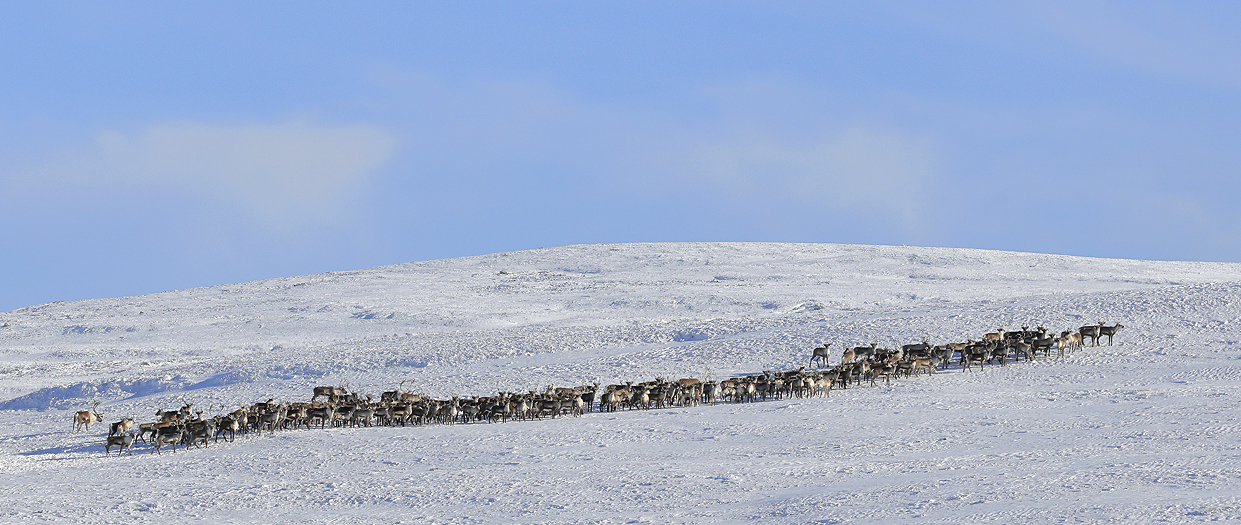
Reindeer herd in Rondane. More new images of Reindeer can be seen in the “Reindeer” gallery.
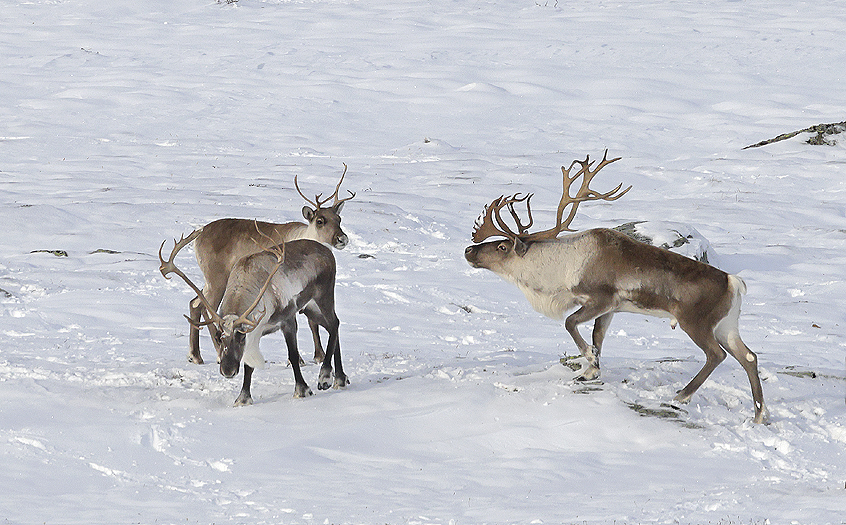
It is in the end of the Rutting time, and some Reindeer bulls are still interested in the ladies.
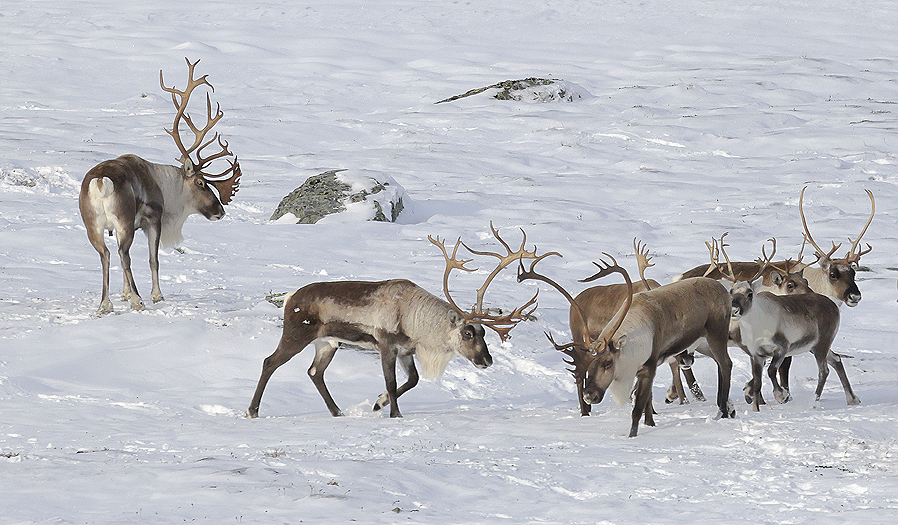
Minor confrontations between the Reindeer Bulls is part of the daily activity now in the autumn.
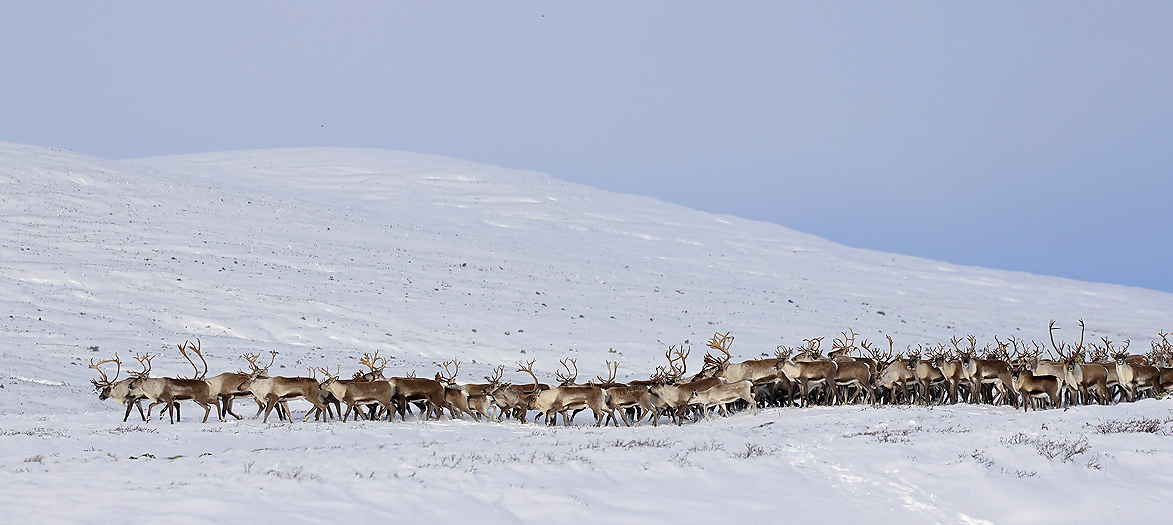
Reindeer on the move lead by some bigger bulls.
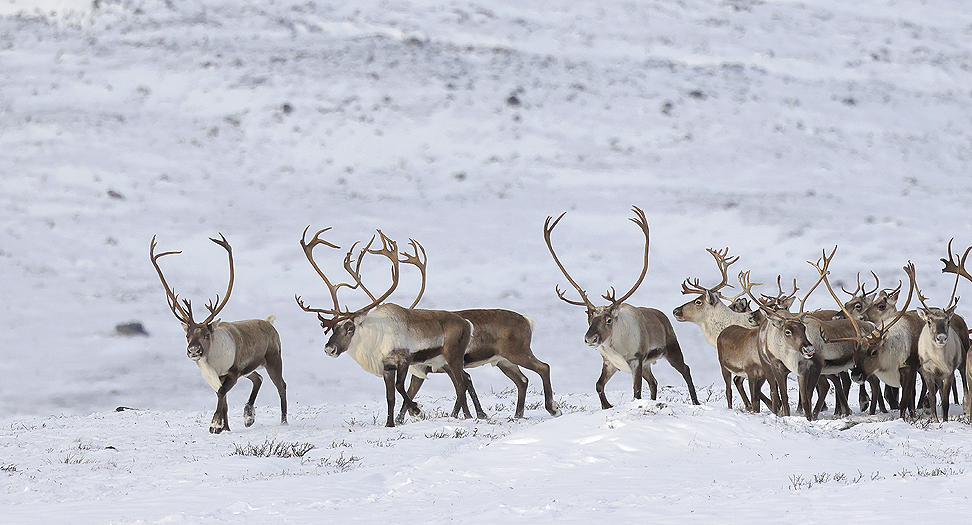
Close up photo of the heard in the photo above.
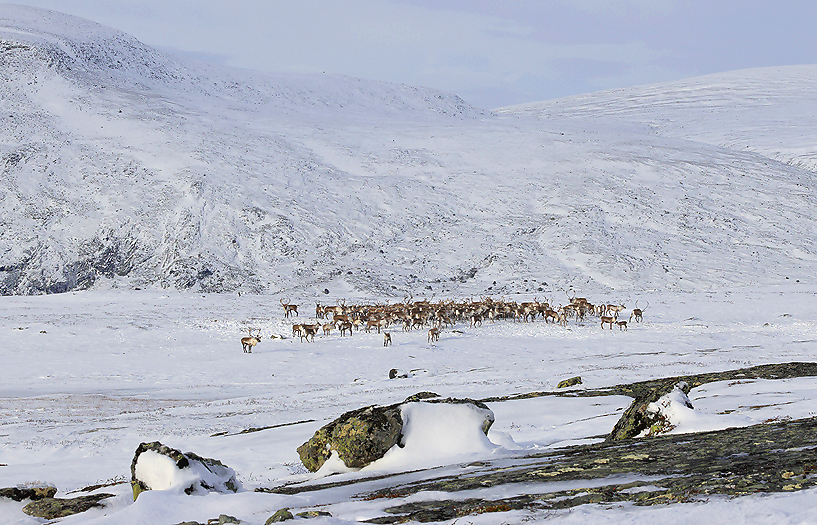
Reindeer herd in the Dovrefjell mountain range
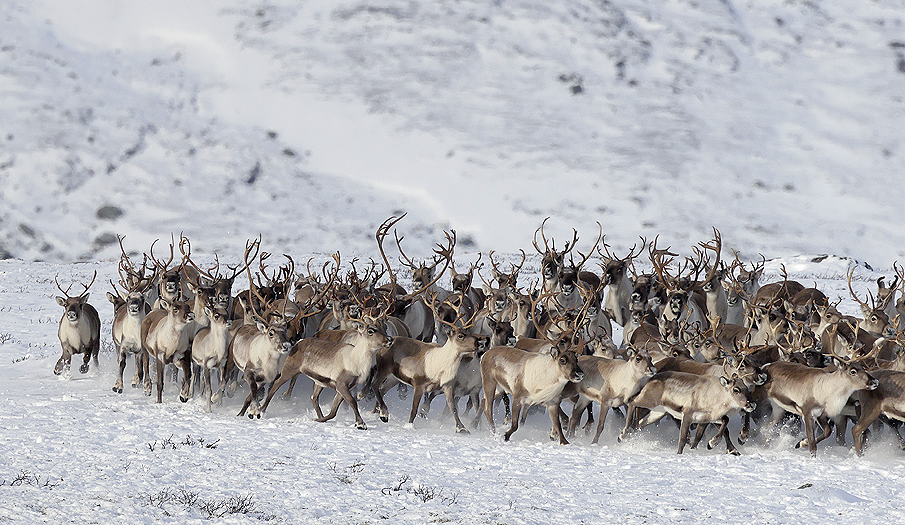
Suddenly the herd set up the speed for 5-10 seconds
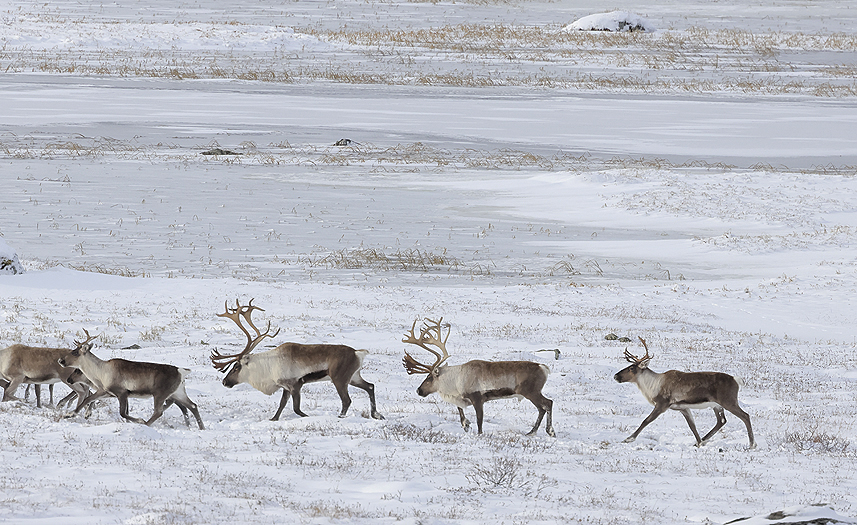
Always on the move, -against the actual wind direction.
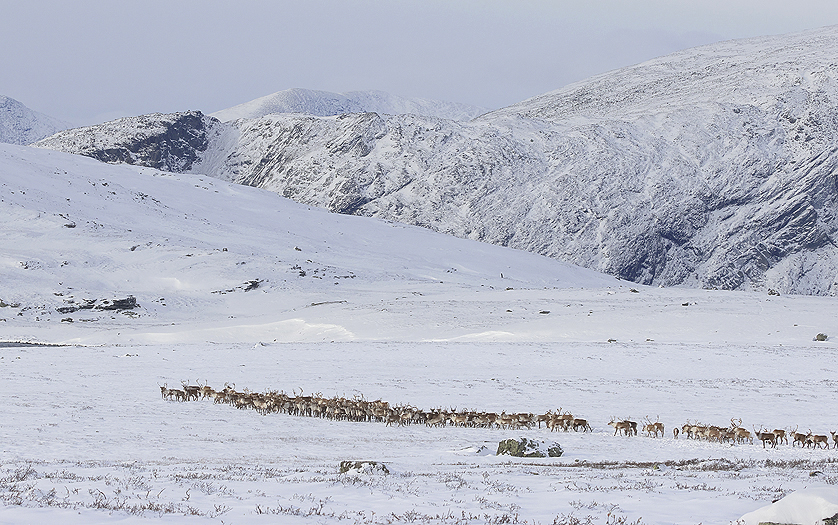
The Reindeer herd wanders on to new pastures.
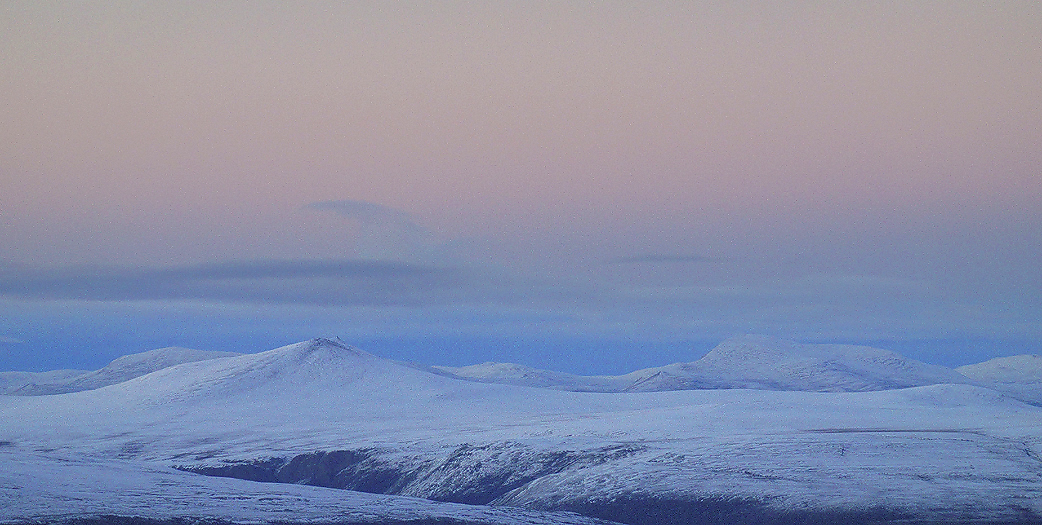
The sun has set and we leave these wonderful mountains for now.
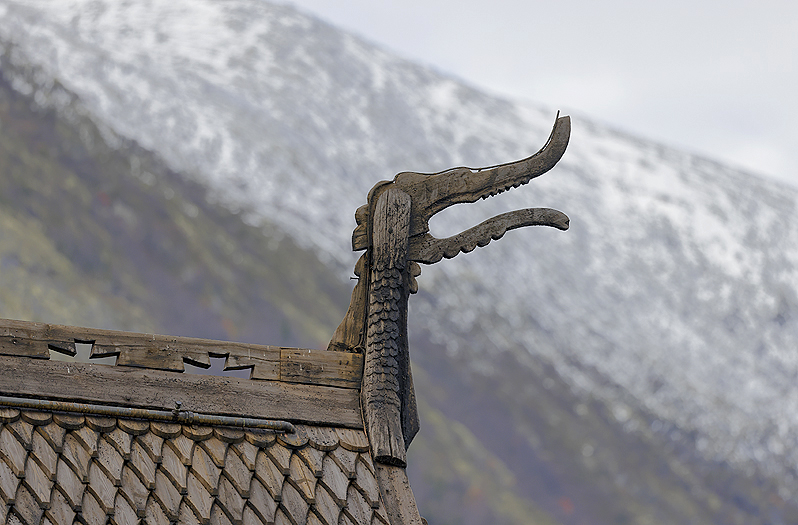
On the way back home after ended trip the thoughts went back to the beautiful place in the Rondane mountain range where the interesting Reindeer hunting system was. A stop by the wonderful stave church in Lom the dragon’s head there showed that even though Norway was Christianized in 1020, parts of the old faith from the Viking Age were still present when this church was built in 1170.
END.
________________________________________________
________________________________________________
HARDANGERVIDDA MOUNTAIN PLATEAU IN SOUTHERN NORWAY, JULY 2024.
Follow up from July 2021.
The intention with the trip to Hardangervidda this summer of 2024 was to check the wildlife situation abundance, and with special focus on the vulnerable wild Reindeer population there after the discovery of the CWD (Chronic Wasting Disease) for one animal in the autumn of 2020.
The Hardangervidda Reindeer population is still the biggest in Norway, both in area and population size (around 4500 animals, compared to 8000 in 2021).
The Norwegian responsible authorities have decided that the Hardangervidda Quote from 2021 blog post: Reindeer population shall be significantly reduced, starting with extremely high numbers to be harvested in the coming hunt.
As many as possible of bulls older than 2,5 years will be taken out this autumn, and worst case scenario for the next few years will be to reduce the population here down to an absolute survivable minimum of between 300-500 animals. There have been multiple discussions whether this is the correct way to go, but the authorities stand with their original plan. If unfavorable situations later should occur for the reduced population (other diseases, avalanches etc), the population can be totally exterminated.
Norway has a special responsibility to preserve the wild Reindeer due to that this is the only country in Europe where Tundra Reindeer (Rangifer Tarandus Tarandus) live in the wild. It would be incredible sad if the biggest Reindeer population should disappear. There are hundreds of place names mirroring the presence of Reindeer at Hardangervidda.
The Hardangervidda is the biggest high mountain plateau in northern Europe, covering 8130 km2. The SE part of the plateau is the least visited area by man with no paths and no commercial cabins. This was our activity area also this year.
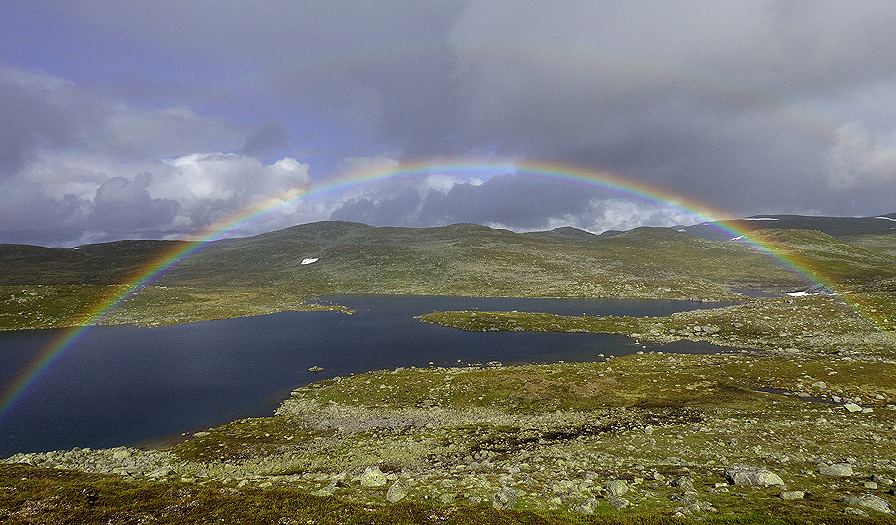
We are welcomed to this sub arctic world in a colorful way.
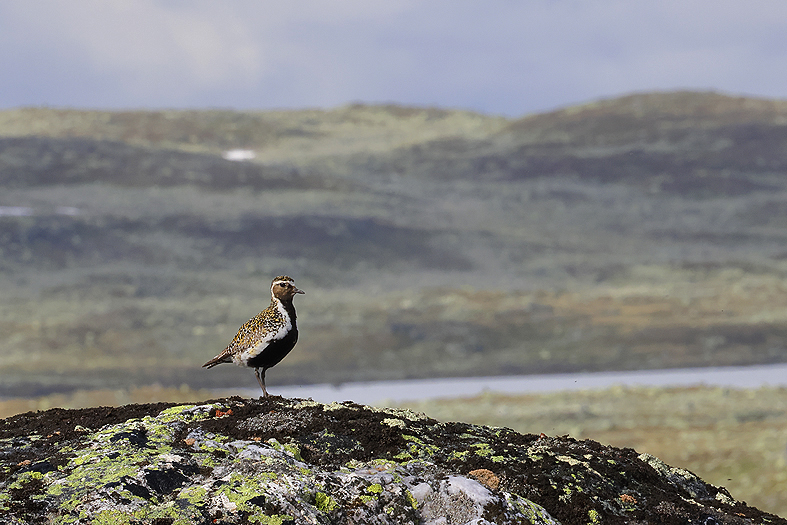
The Golden Plover is the typical bird here. This is normally one of the first birds to be seen and especially heard when entering the plateau.
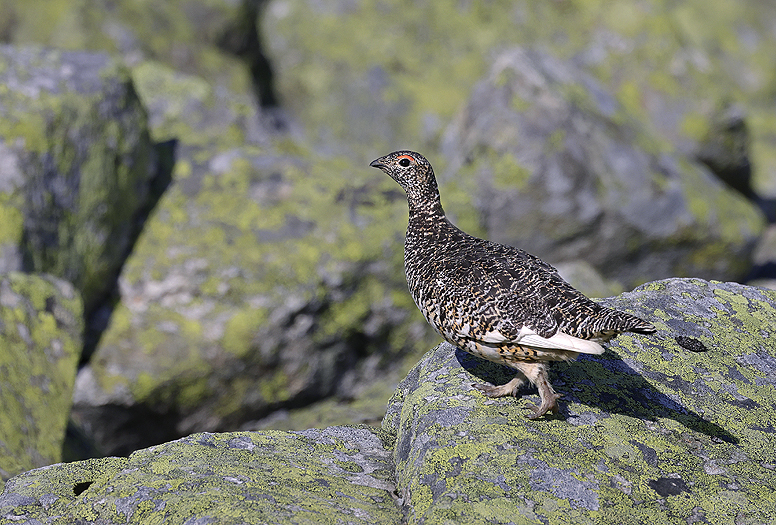
The Rock Ptarmigan is the other typical species on the plateau. The numbers of them is low this year due to collapse in the rodent population causing predators to eating more of them as they either would (PAY).
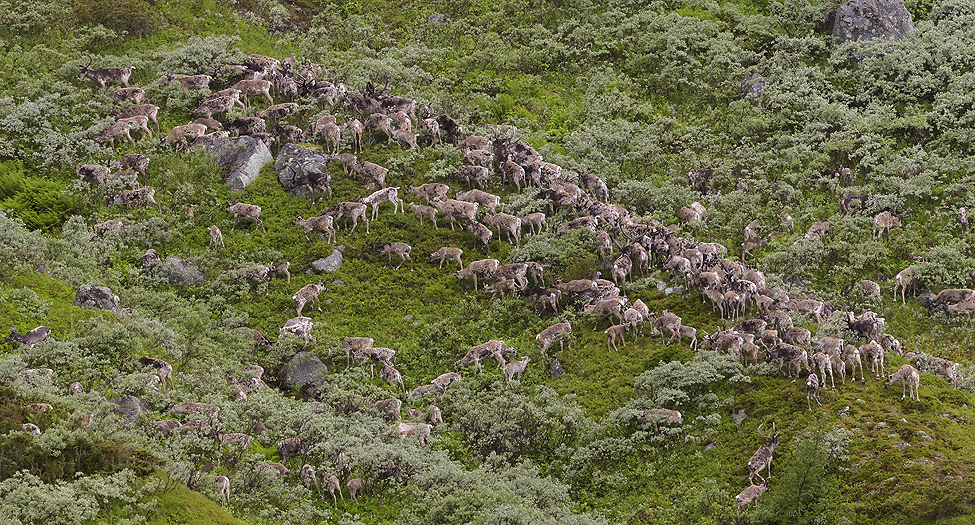
A herd of wild Reindeer in a sheltered valley favoring good growths of willow.
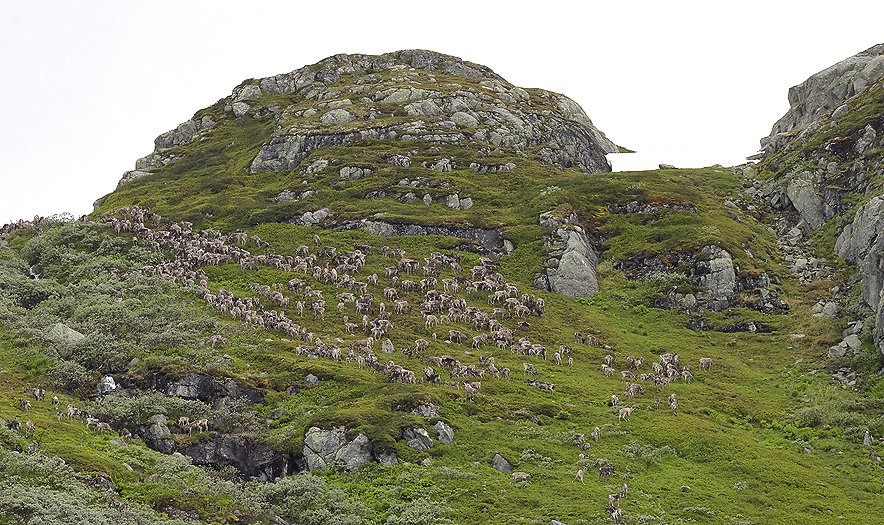
A Reindeer herd containing around 200 animals is slowly foraging in the mountains of the plateau. During our period at the plateau the Reindeer herds could move from around 0 up to around 20km per day (24hrs), and normally consistently against the wind direction.
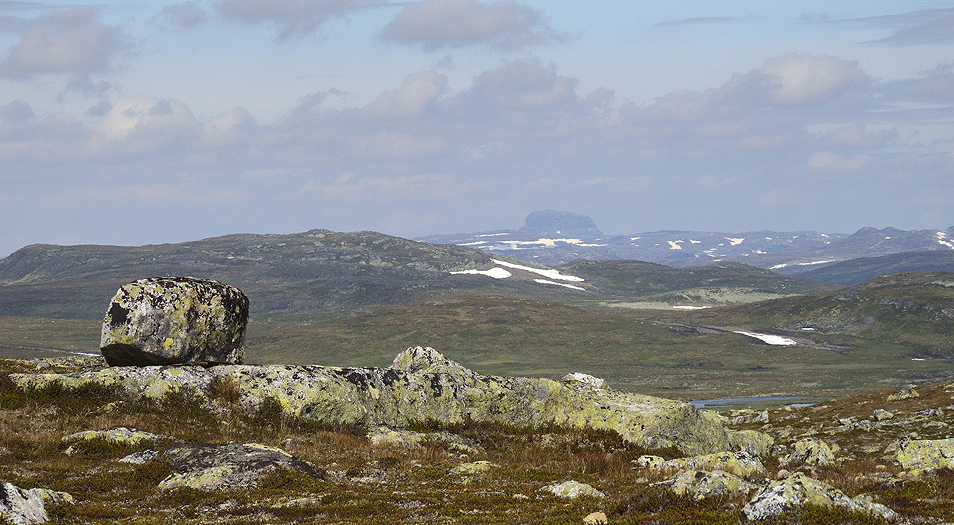
View over part of our activity area at the Hardangervidda mountain plateau.
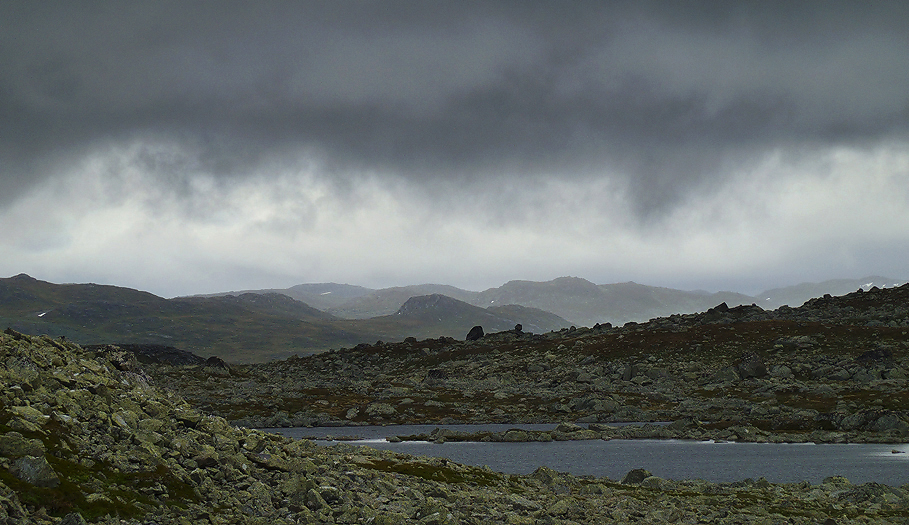
The weather at the plateau is famous to be unpredictable where bad weather can occur without any warning. A short while after this photo was taken the clouds lowered and made visual navigation difficult. We had to use map & compass to find back to the camp which we arrived safely around 4 hours later.
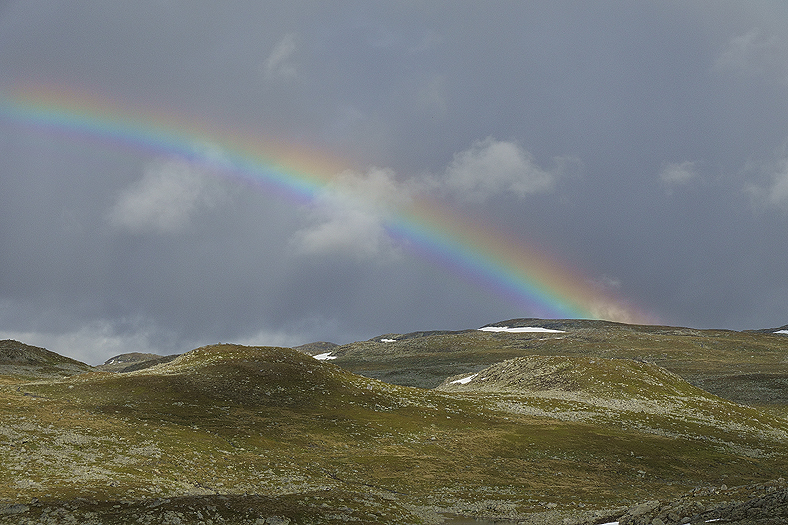
This is not an uncommon sight when the weather is clearing up after a low pressure system.
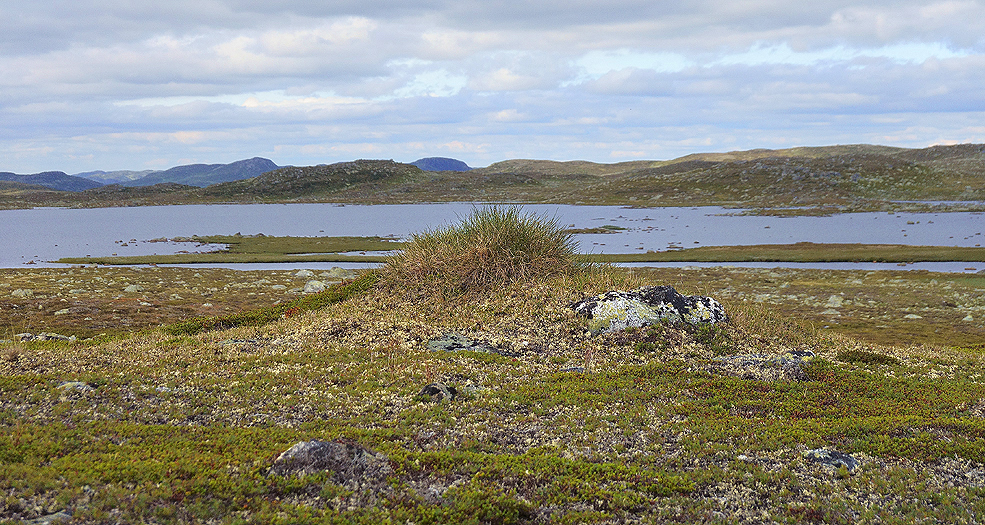
Some of the lakes in our activity area was more nutritious than others. This leading to increased visit by raptors and owls feeding on birds by these lakes. This turf of grass is a proof on this where those birds has been sitting for hundreds (thousands) of years watching for prey. There they have been shiting, regurgitaded, left food in such a degree that this point (turf) has “grown” in height.
We found a couple of Rough-legged Buzzard in the area, and regurgitations at the turf which probably originated from them.
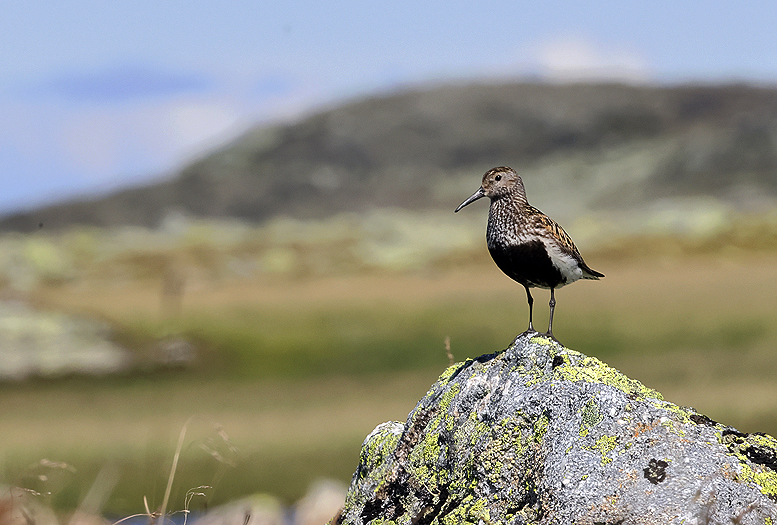
The Dunlin is one of the waders who are nesting by the fertile lakes here.
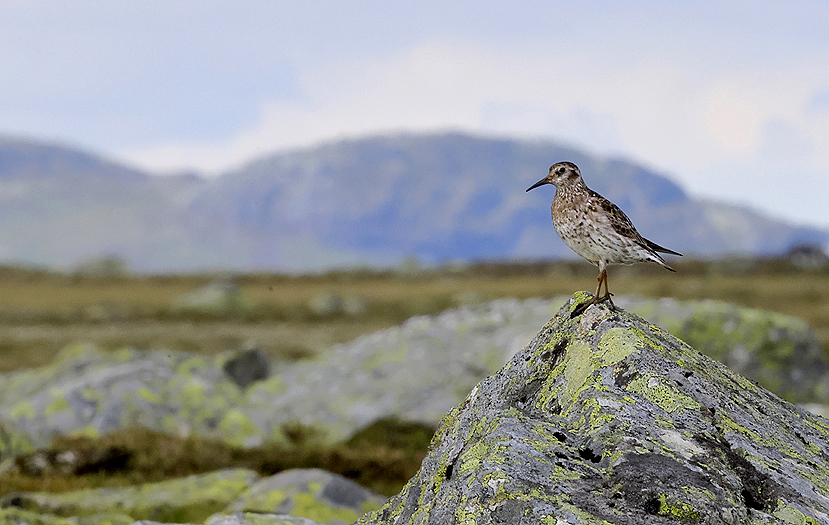
The Purple Sandpiper is the typical wader species at the plateau.
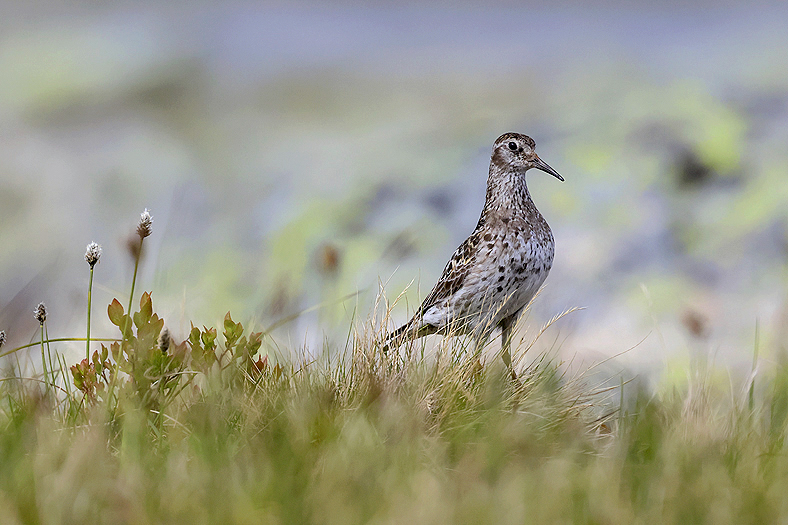
Purple Sandpiper (adult female).
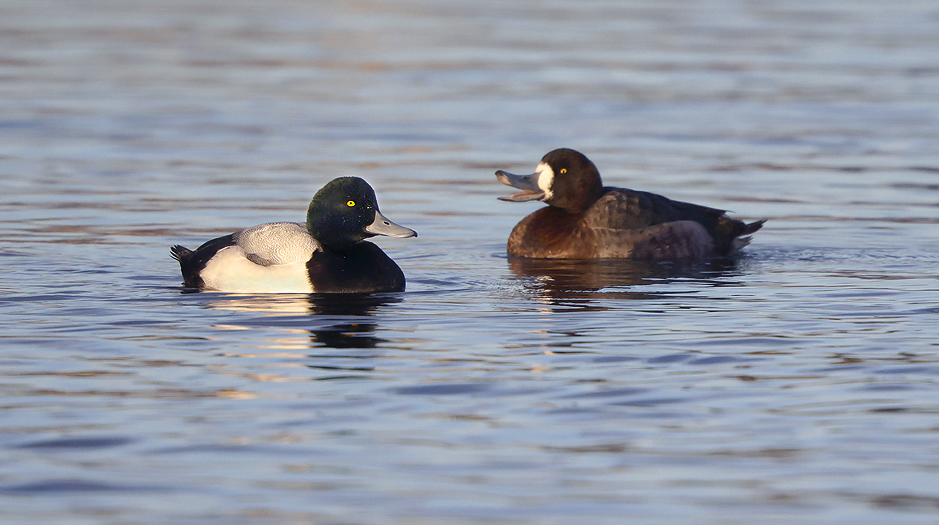
As mentioned in the previous blog post the population of mountain nesting ducks are in decline in Norway. In these fertile lakes there were still several pairs of nesting mountain ducks, such as this Greater Scaup couple (PAP).
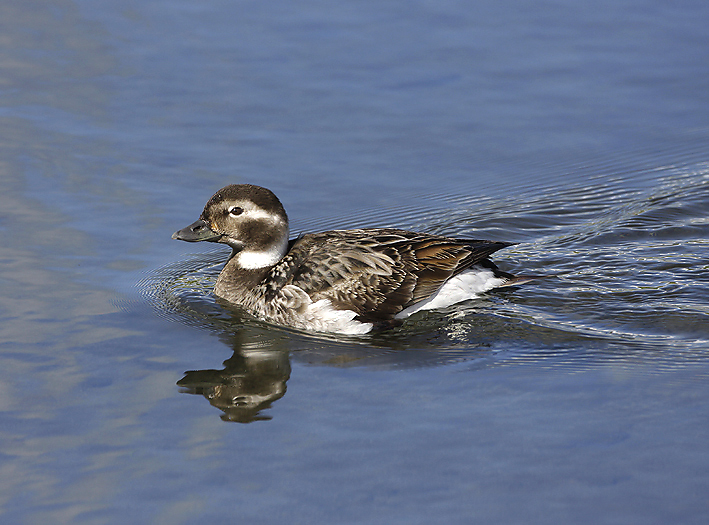
The photo above mention the decline of mountain nesting ducks in Norway. This includes the Long-tailed Ducks. In these fertile lakes there were still several pairs of nesting mountain ducks, such as this Long-tailed Duck (PAP).
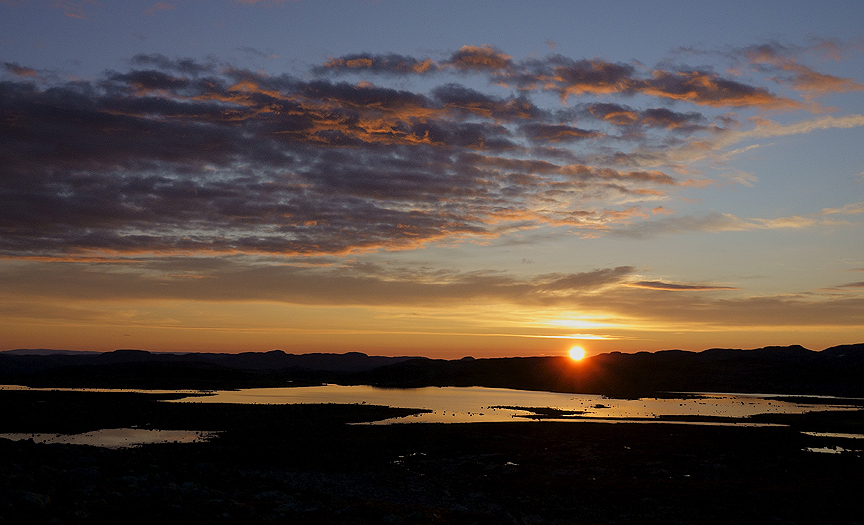
We had a wonderful period up here at the plateau. Early morning times gives often the best chances to see wildlife and give also the most beautiful light/atmosphere.
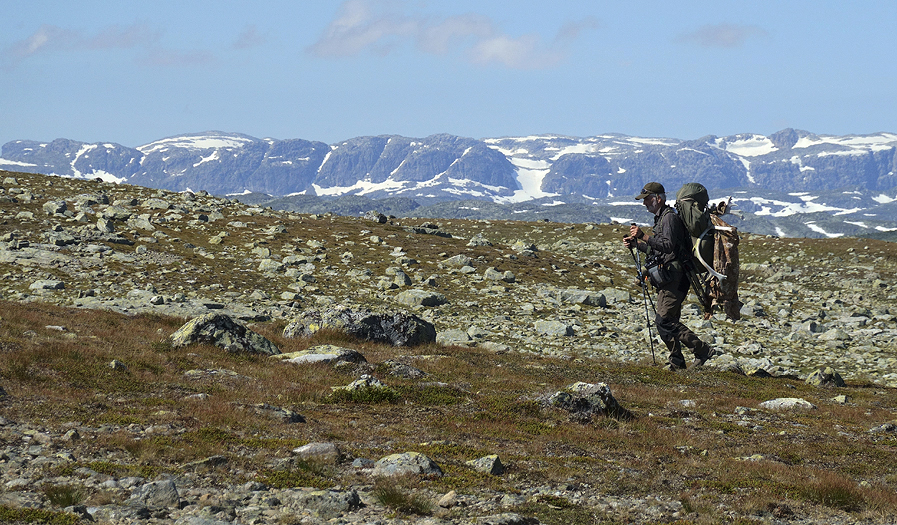
We travelled through this beautiful landscape carrying all we needed for over a week. It is great to be total independent of cabins, marked paths etc.
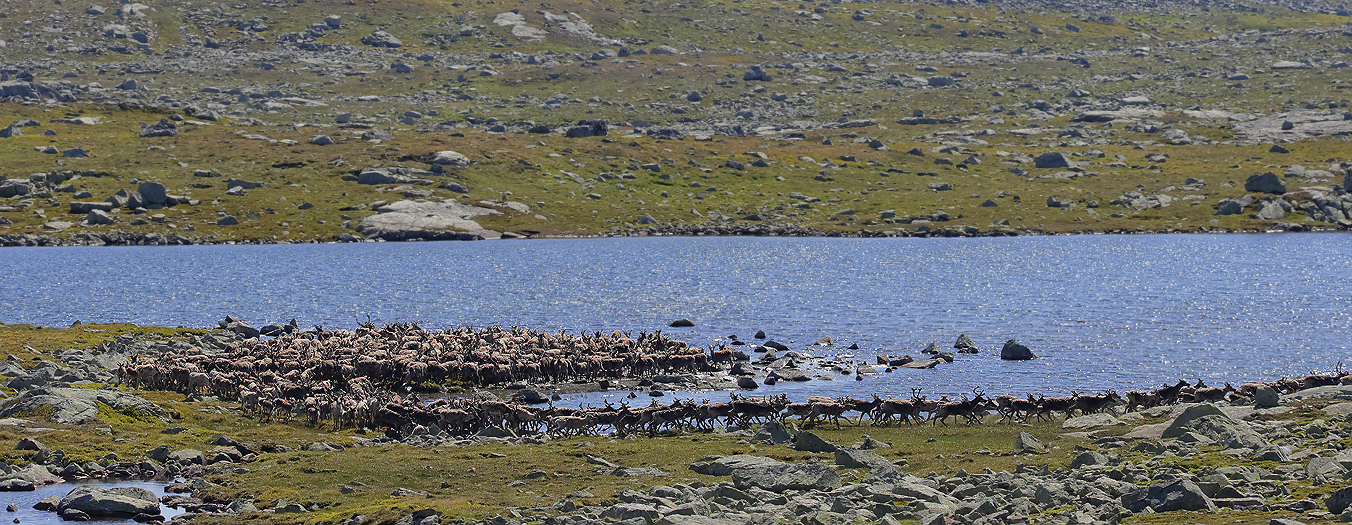
On warm & sunny days the Reindeer often seek cool areas such as snow paths, proximity to cold water (as here) etc to be cooled down and avoid troublesome insects. This herd contained around 300-400 animals.
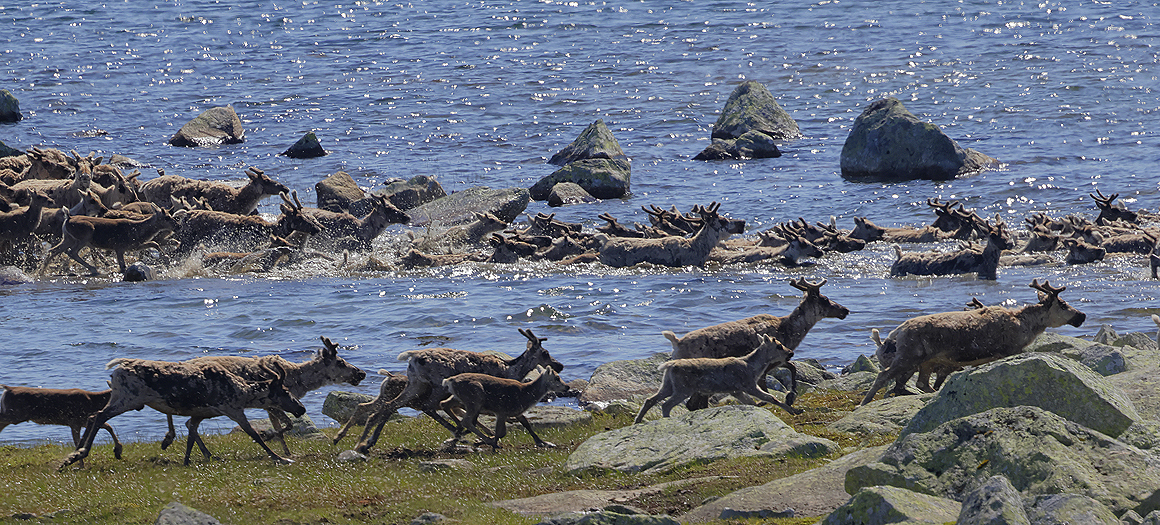
Something must have scared the Reindeer, probably some of the animals began to run due to heavy insect attacks, -and the rest followed after.
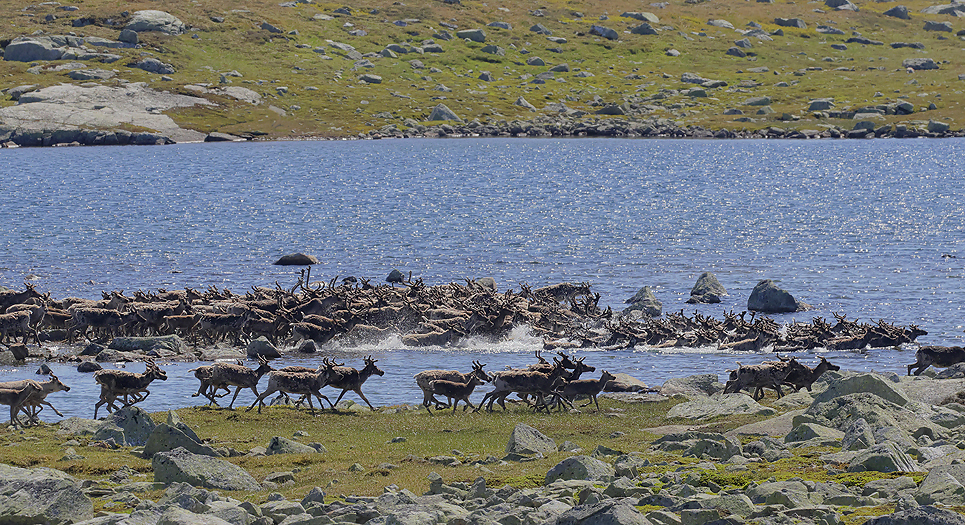
Reindeer herd. More images of Reindeer can be seen in the “Reindeer” gallery.
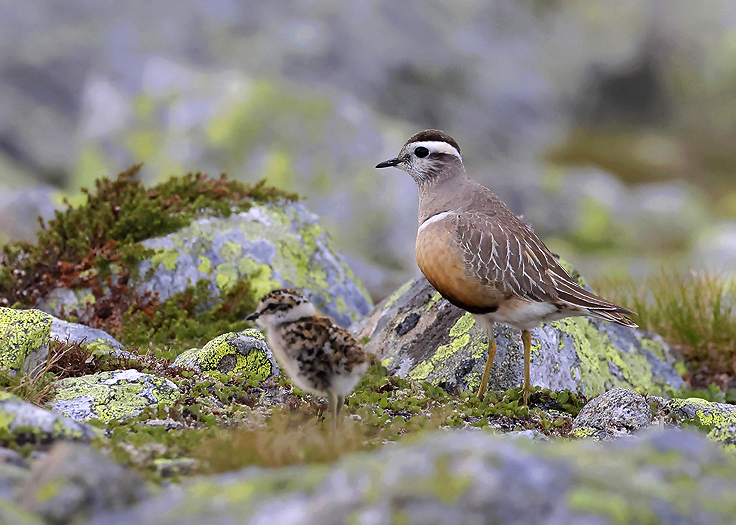
The trustful Dotterel with 3 juveniles turned up by our tent camp a late evening.
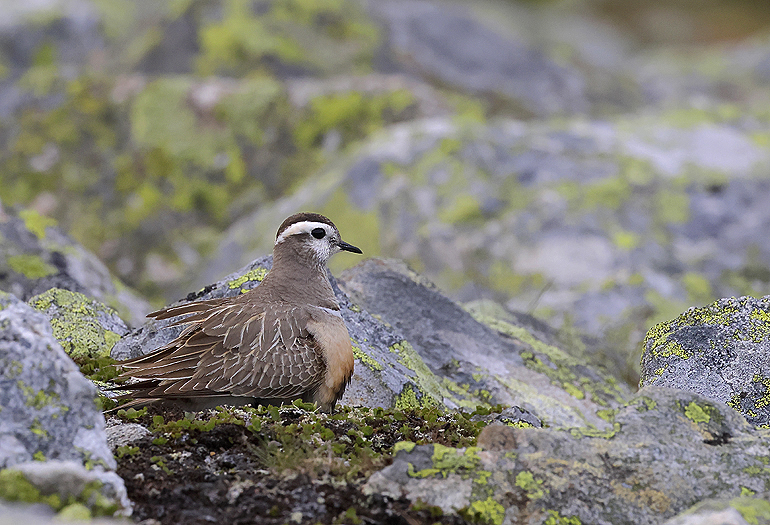
The Dotterel opened the feathers at the underside and 3 juveniles went under the warm and safe place to their father. This species including the Golden Plover, Red-necked (and the Grey) Phalaropes are the only ones in Norway that have reversed gender role pattern.
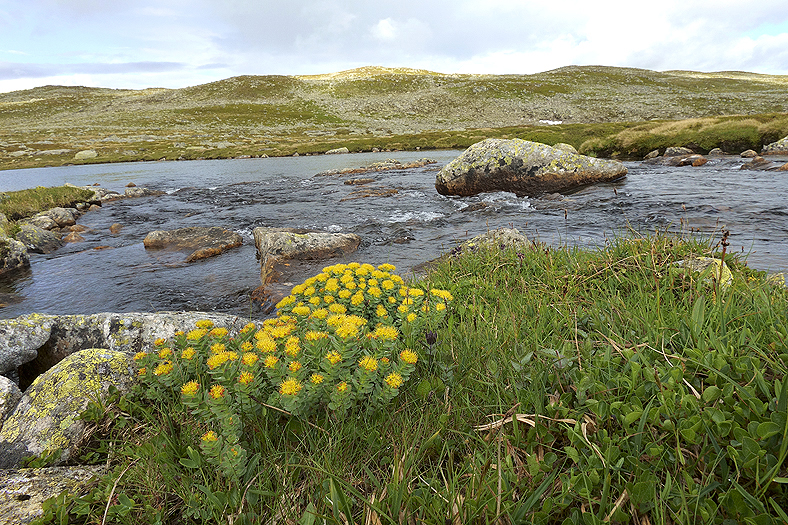
The Rose Root (Arctic Root) can be found close to very humid areas such as beside streams etc.
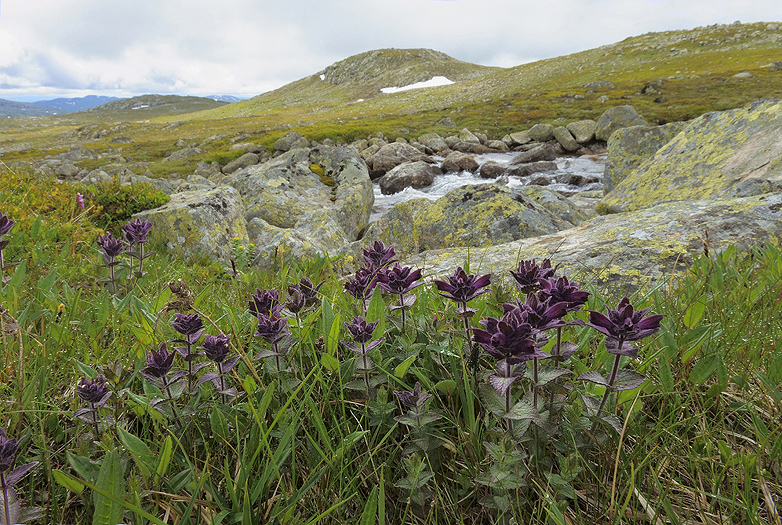
The Bartsia Alpina is typically found in the higher mountain areas.
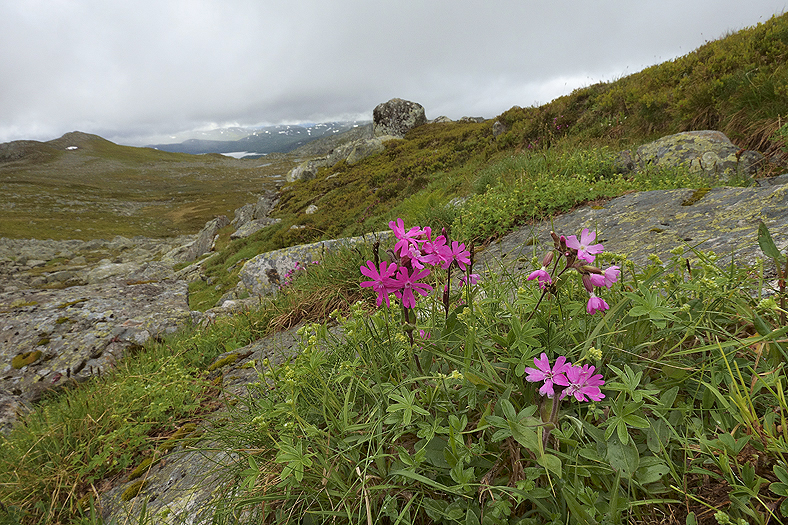
The rare Primula Scandinavica Bruun is endemic to the mountains of the Scandinavian Peninsula.
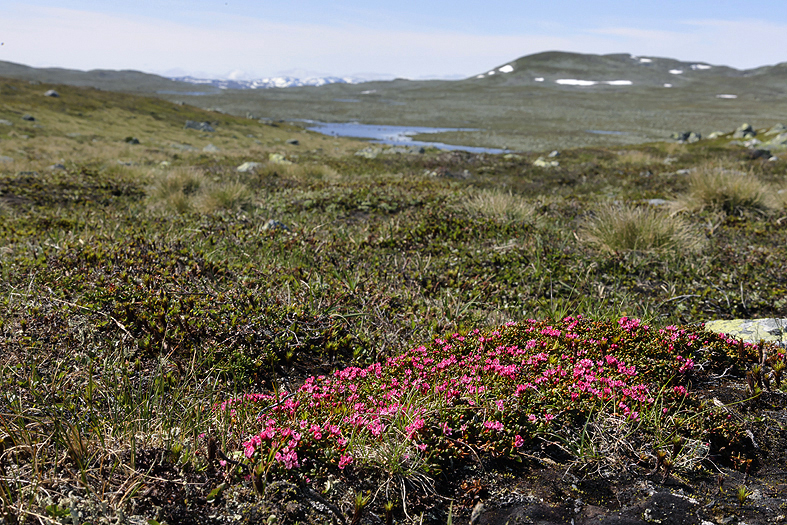
The beautiful colored miniature flowers Alpine Azeala is found on windswept and dry areas.
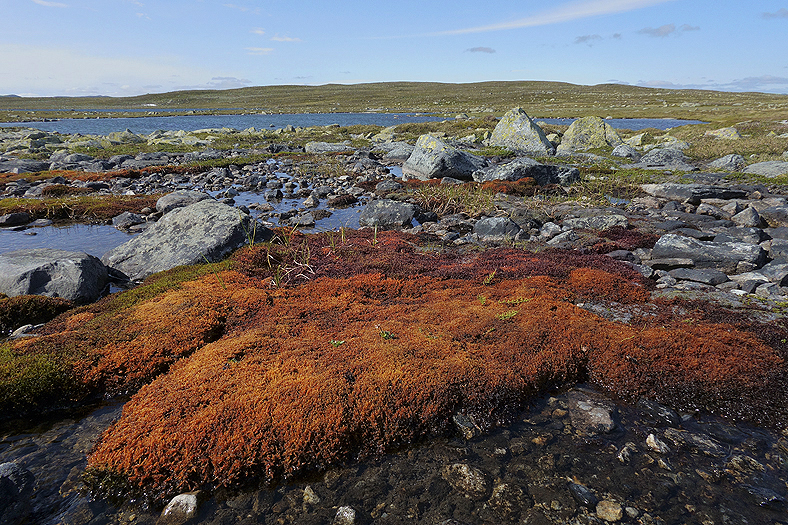
The Red Moss colorize the landscape quite well.
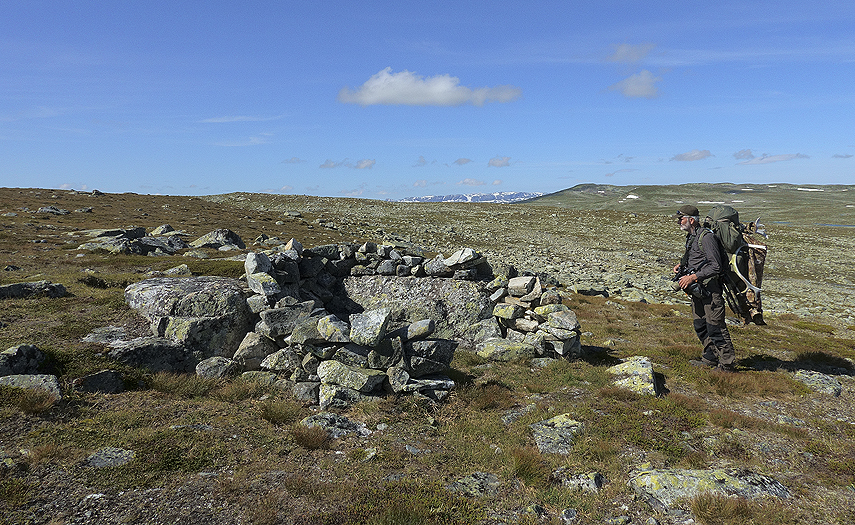
Arnfinn study one of the shooting positions for Reindeer in the area. Due to the height of the walls and the amount of lichen on the stone walls we can conclude that this one is made for rifles (flint, percussion and up the modern fire arms).
END.
________________________________________________
________________________________________________
WILDLIFE IN THE NORWEGIAN SPRINGTIME, APRIL / MAY-2024.
Spring has past for a long time ago, and it is still summer. So it is really on time to make a post with some selected images of the most typical and interesting species from this beautiful time of the year. Starting from the seaside and ending up in the mountains.
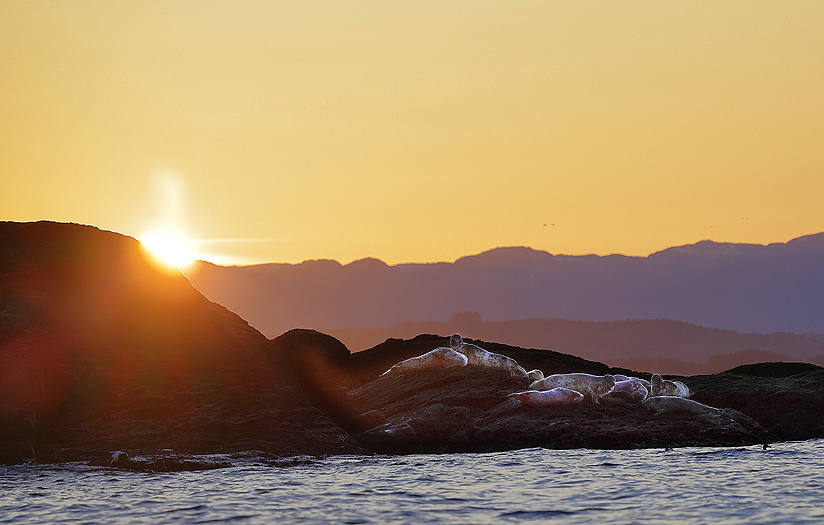
To observe the wildlife at sunrise is always pleasant. Here we see resting Grey Seals.
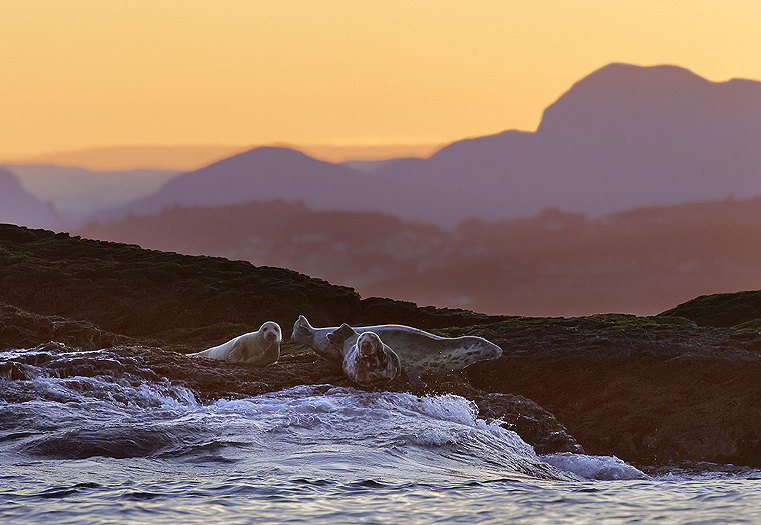
The yesterday’s storm was followed by big swells during the night have forced the Grey Seals somewhat longer away from the sea than they else prefer to be.
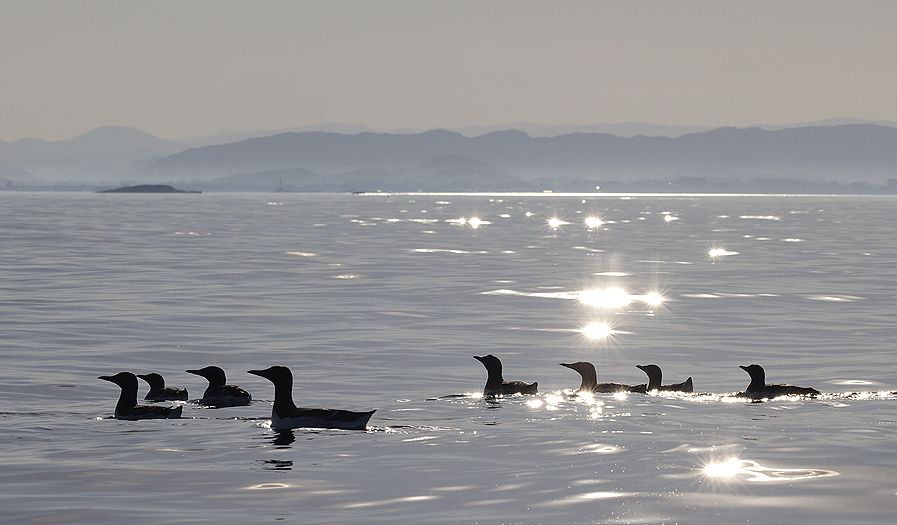
Congregating Guillemots before nesting time an early morning at the archipelago by the North Sea. The population of Guillemots here has been further reduced this year compared to last year when around 30% of the nesting versus 2022 and some years back in time.
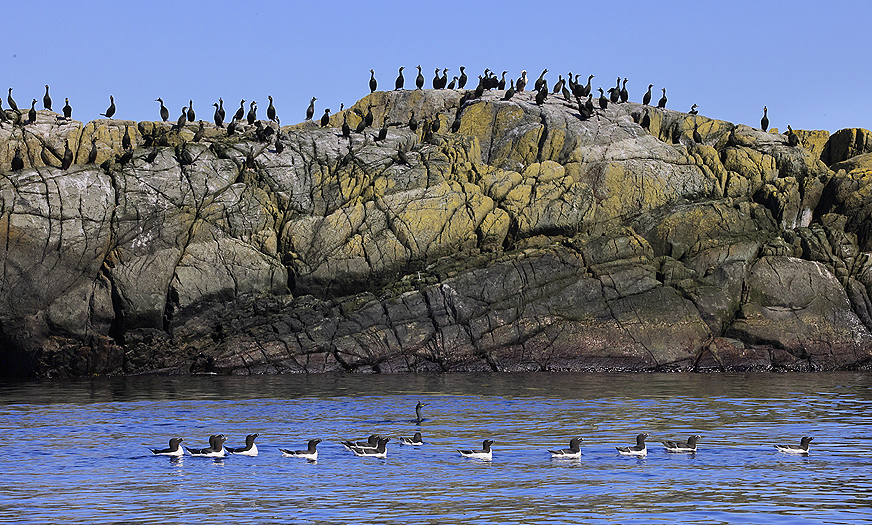
Razorbills in front of the Shags on their favorite sitting place.
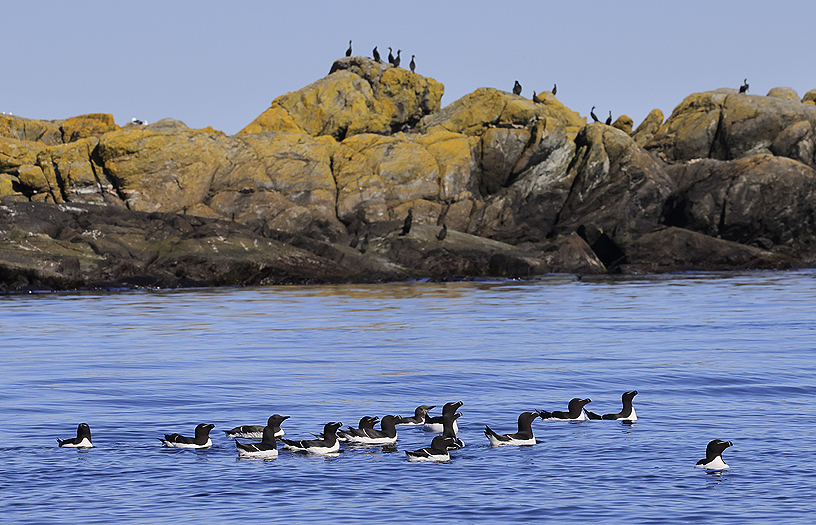
The Population of Razorbills has also been reduced this year compared to last year, but not as much as for the Guillemots (percentage wise).
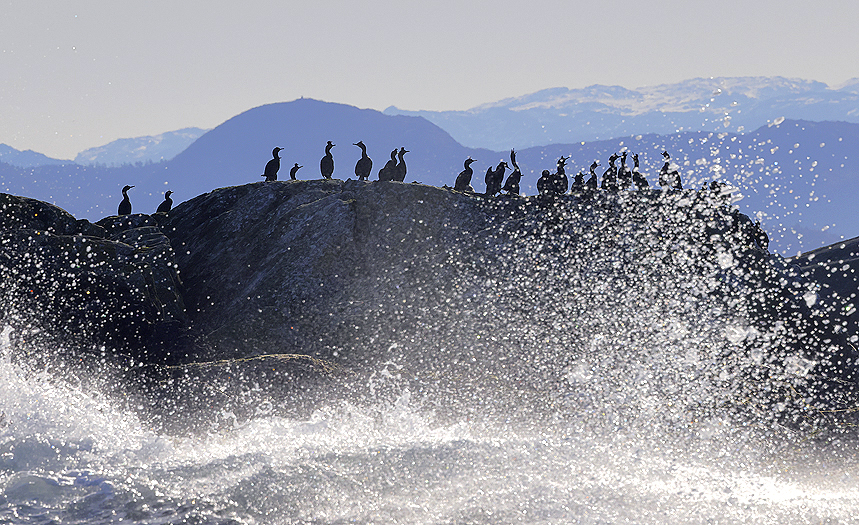
The area on the outer-side of the archipelago is very weather exposed, and even on calm days the swells can be severe.
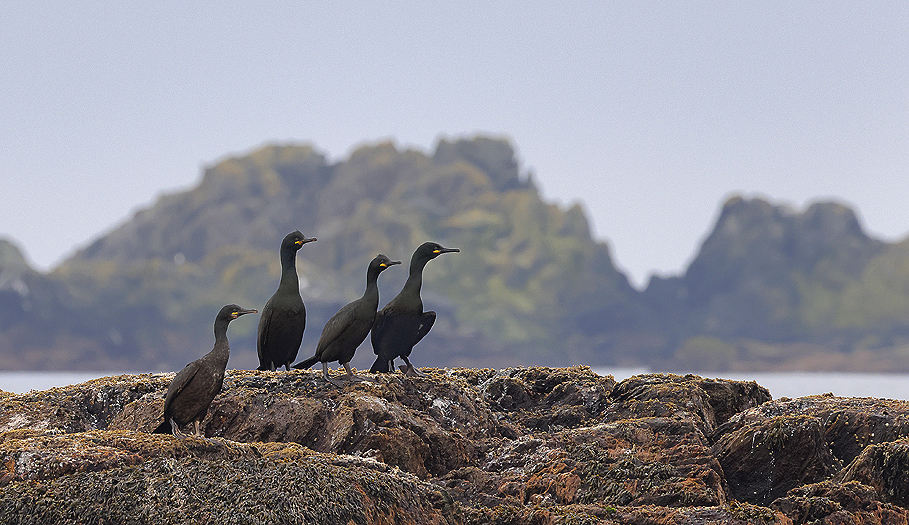
Opposite to the population of the Auk birds which are in decline for the last 2 years here, the Shag population seems to be rather constant.
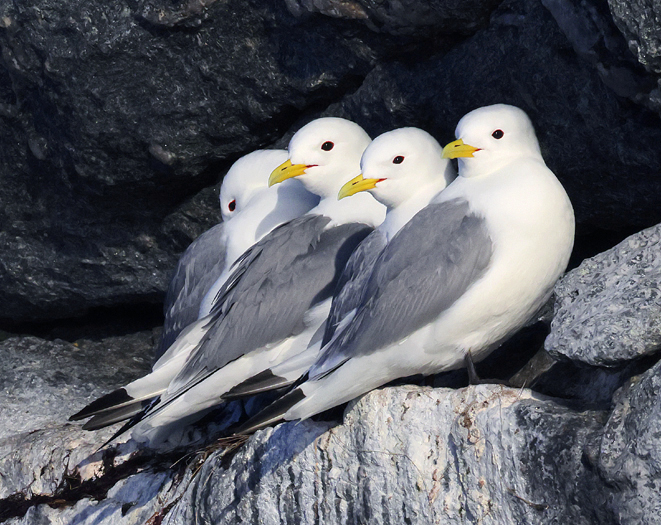
Kittiwakes has been away as nesting species for 15 years at the archipelago, but started to nest again in 2023 with 5 pairs. Despite last years bird flu (especially among the Kittiwakes) it was with great excitement that we waited to see if they would return this year. 4 individuals showed up early in the spring on the nesting cliff so we were in good hope.
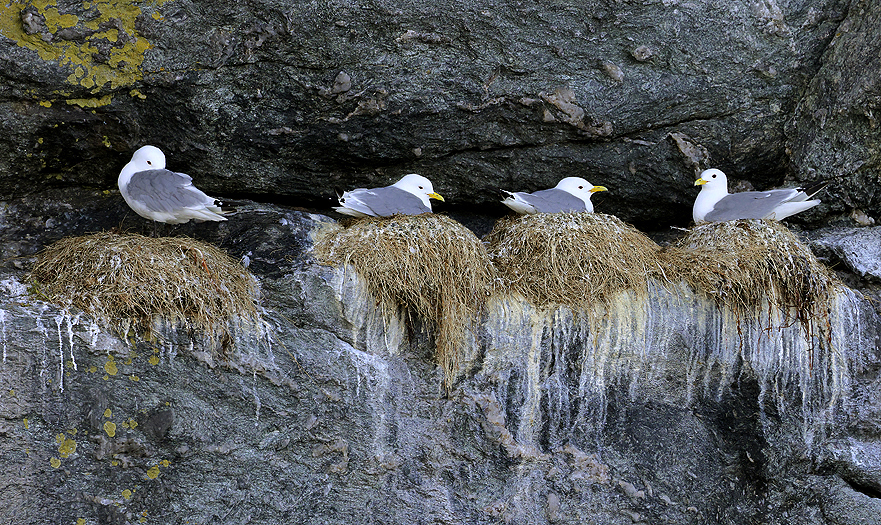
The Kittiwakes started to nest and managed to increase in numbers this year and counted 7 nesting pairs. Hurray!
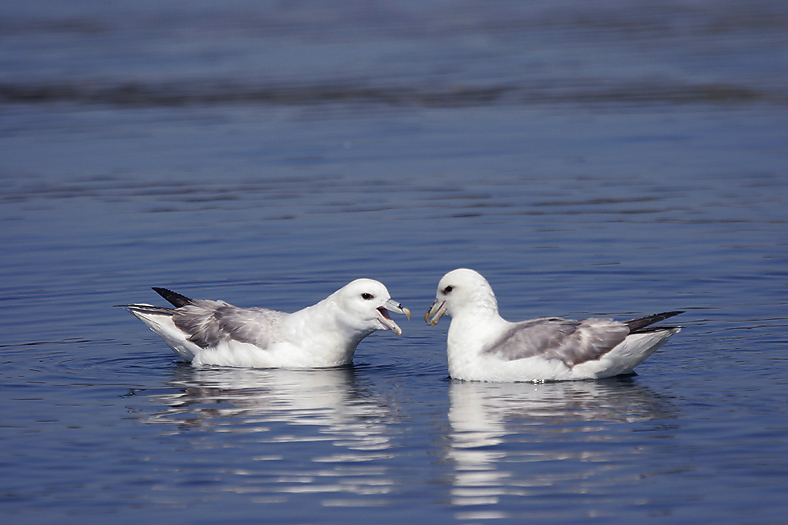
The population of Fulmars keep stable at the archipelago with around 15 nesting pairs (PAY).
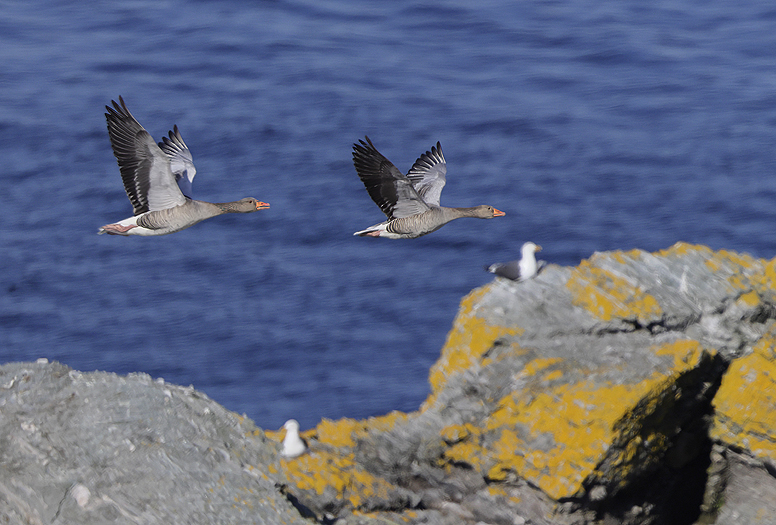
The Greylag Goose have steady increased in numbers for the last 20-30 years, and they are now “everywhere” at the archipelago.
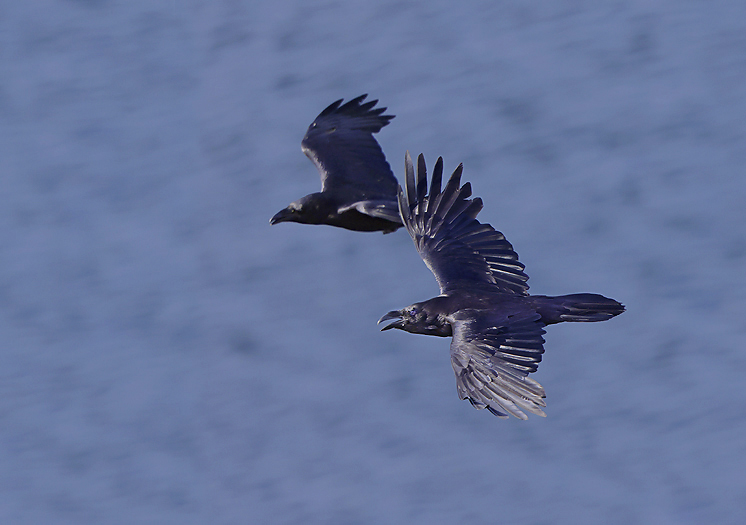
One couple of Raven nest at the biggest island at the archipelago, which they have been doing for decades.
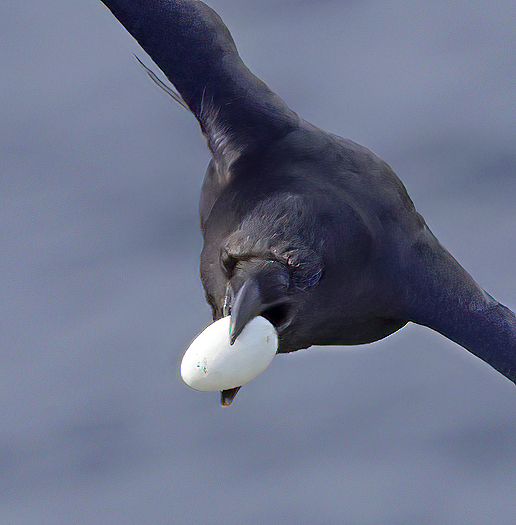
The pair of Ravens live and raise their young mainly on seabird eggs, young and carrion.
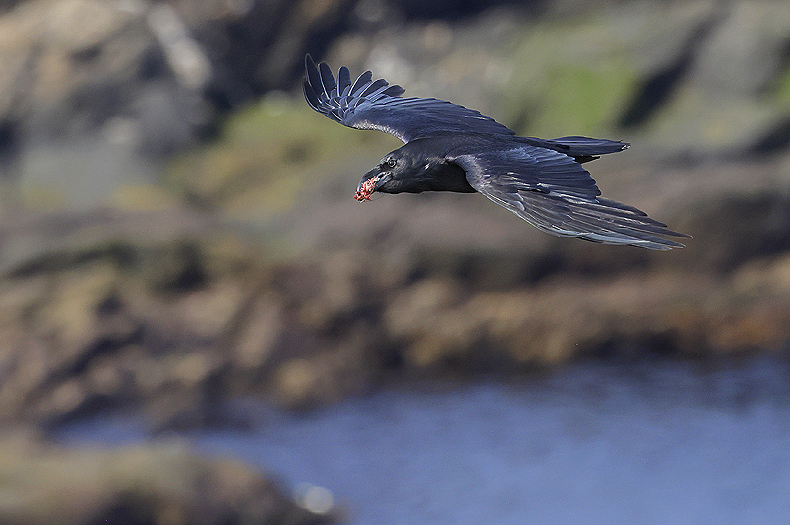
Raven with carrion on the route to its nest.
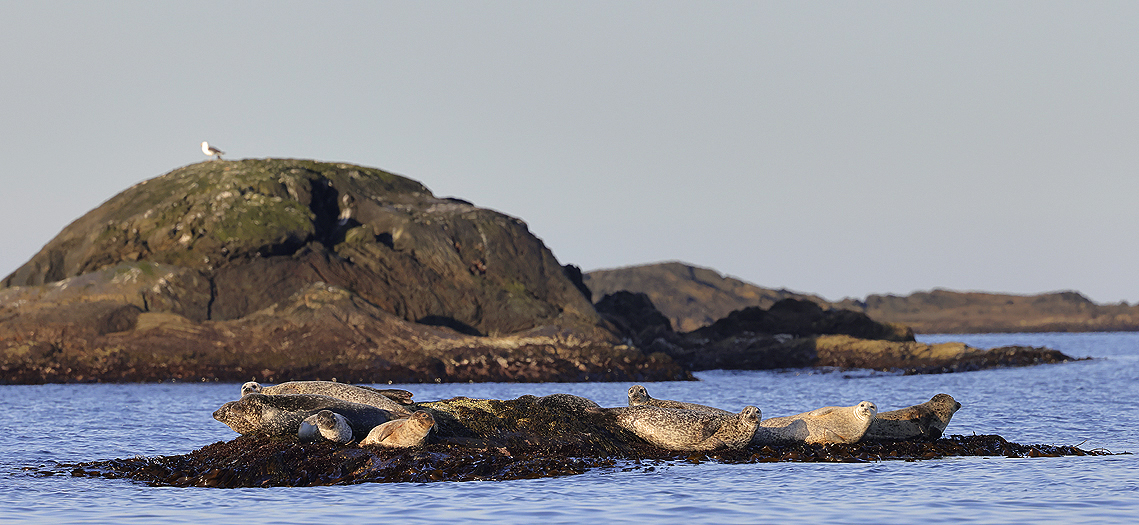
Grey Seals enjoying the warmth of the morning sun.
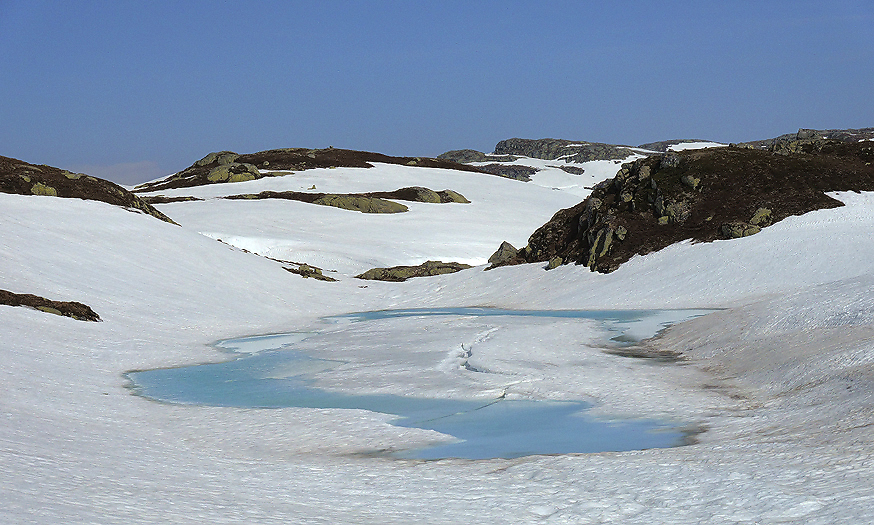
We move up in the mountains for watching the present wildlife there. In late May there are still some snow left, but it is thawing quite fast when the sun is shining.
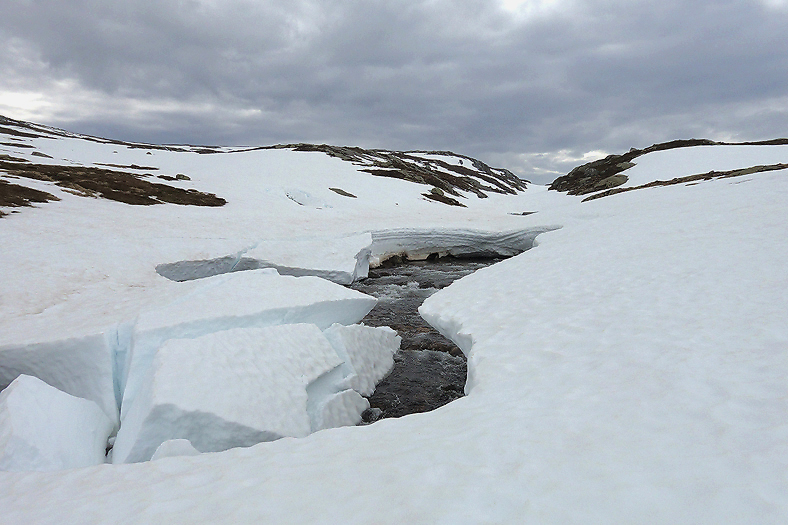
Travelling in the mountains at this time of the year can be challenging due to rivers and lakes opening up and lead to much detouring.
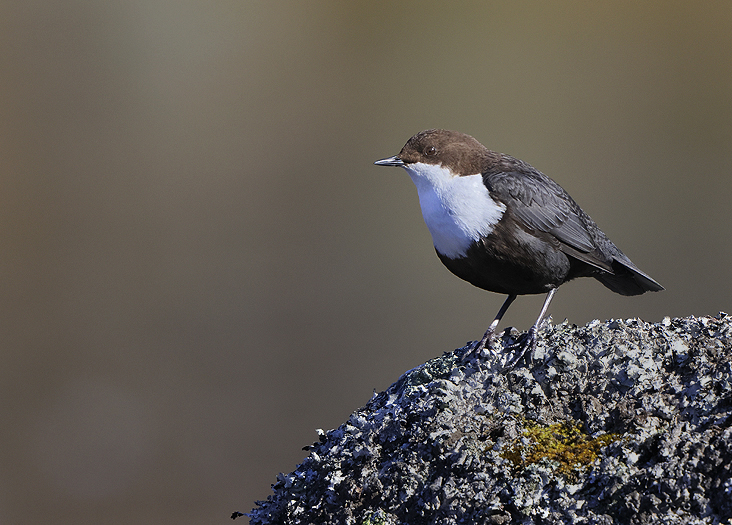
Opening of streams mean that the Dipper find its way for catching food.
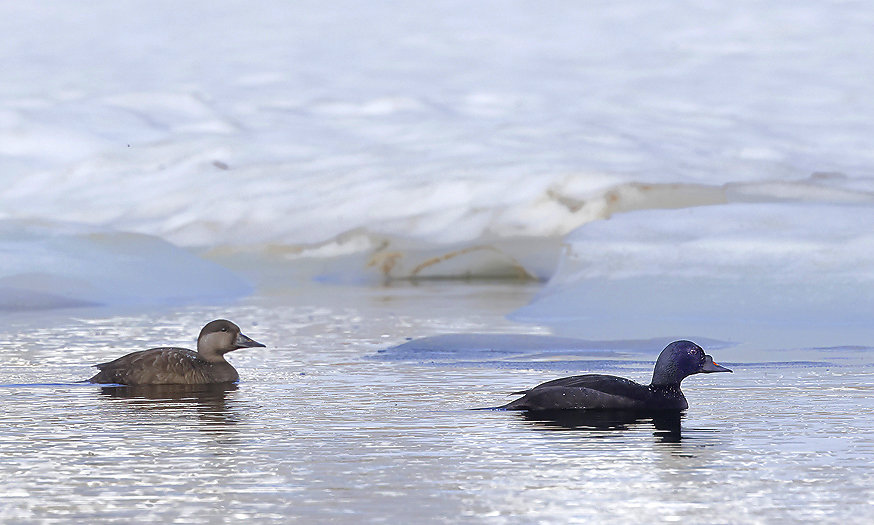
With the opening of lakes the species of the high mountains show up. Here a Common Scoter couple. The population of mountain nesting ducks are in decline in Norway. This is also include the Common Scoter. In a couple of weeks when the higher elevated and northerly lakes opens up most of them are away from these lakes and have flown further to their “home-areas”. Only a few is left for nesting here.
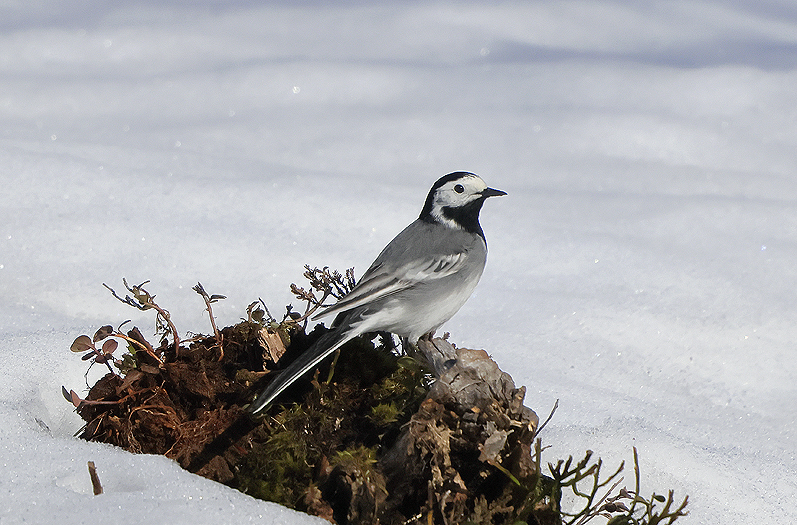
The first observation of the White Wagtail is always very nice, and welcomes the spring. A bit strange perhaps, but my experience is that I normally have my first observations of this bird up in the partly snow covered mountains.
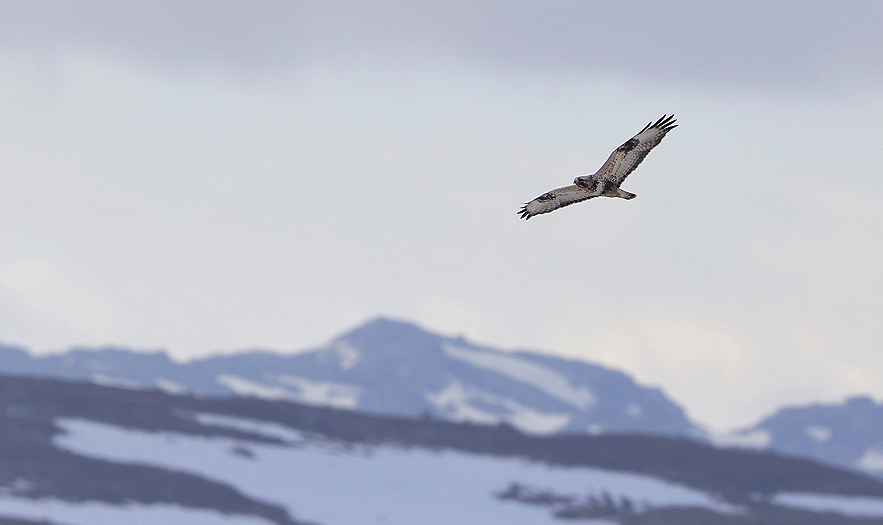
The Rough-legged Buzzard has arrived their normal nesting areas and search for prey. If the amount of prey (rodents) is high enough they will start to nest.
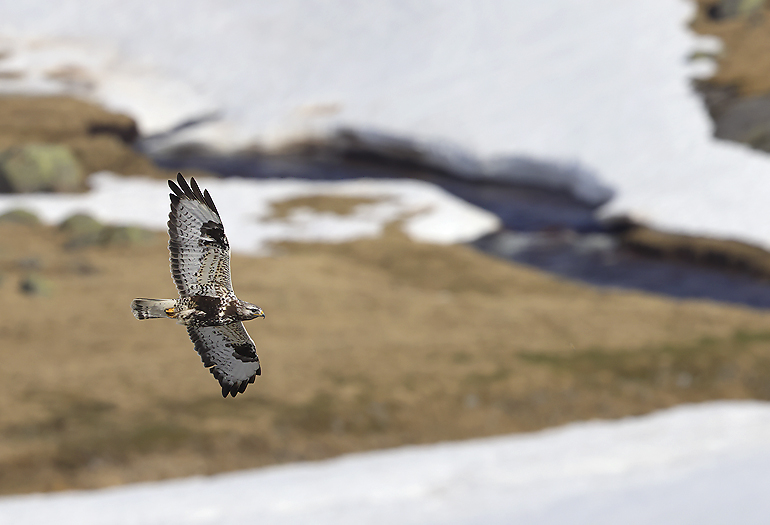
Rough-legged Buzzard. It was estimated to be a sever increase of the rodent population this year, but unfortunately it broke down during the winter. Despite this several pair of this species were found nesting. It is not concluded, but the main reason to the collapse of the rodent population could be the periods with extremely mild weather with rain up to 1500 m above sea level during the winter.
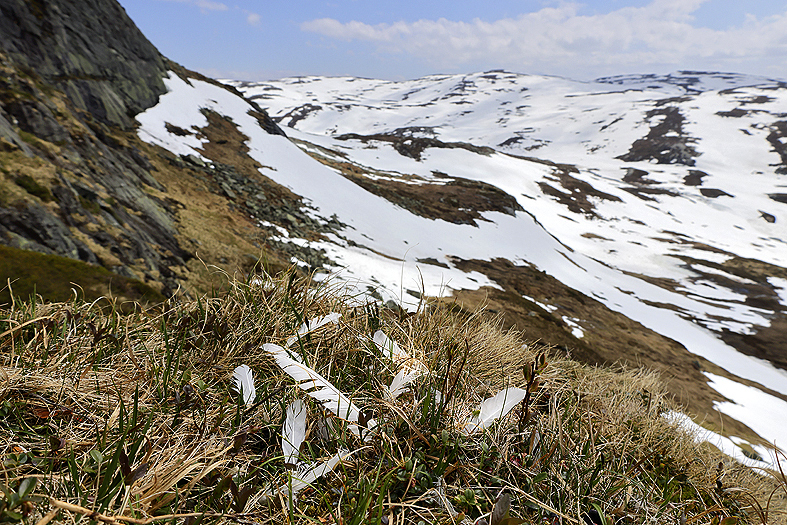
The absence of rodents in the mountains cause predators (i.e Red Fox) to increase their hunt for food to a greater proportion Rock Ptarmigans. This causing the typical Ptarmigan hunter as the Gyrfalcon to catch less of their main prey. The photo show remnants of a Ptarmigan kill which show the Gyrfalcons are still in the area.
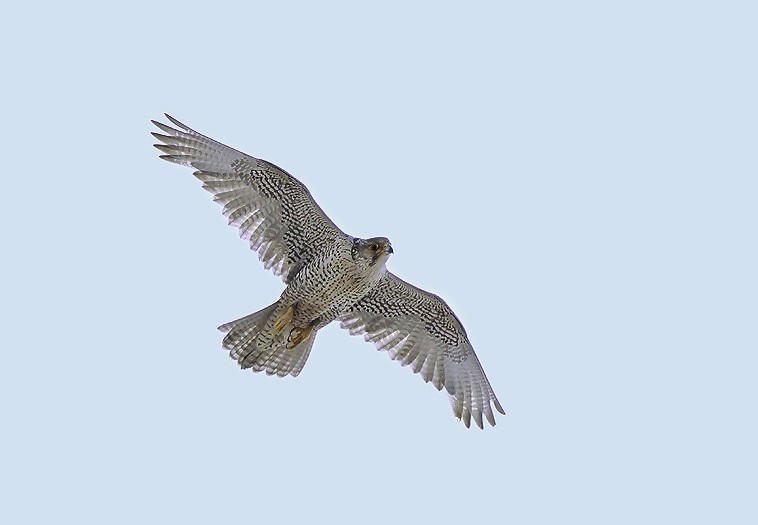
The Gyrfalcons does not nest this year due to too low numbers of Rock Ptarmigans. The couple however are still in the territory.
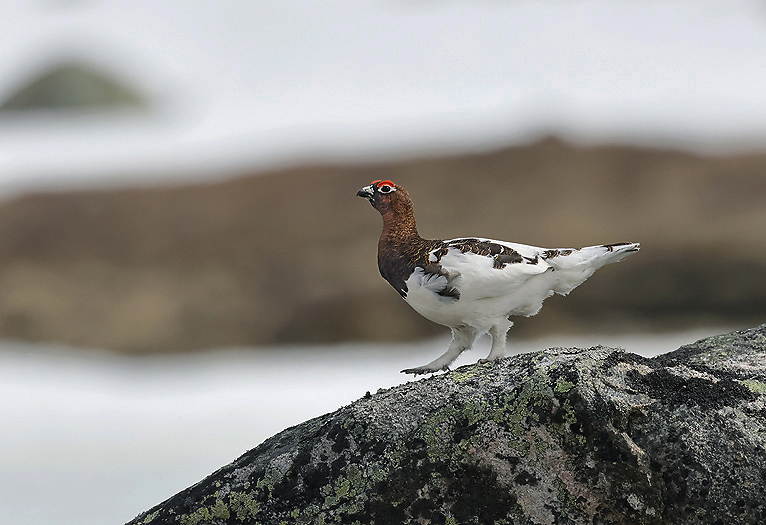
Down against the treeline we find the Willow Grouse. This specific dominant male claims his territory very strong. A general trend in southern Norway is that the nesting areas of the Willow Grouse is moving higher up in the mountains, even above the treeline.
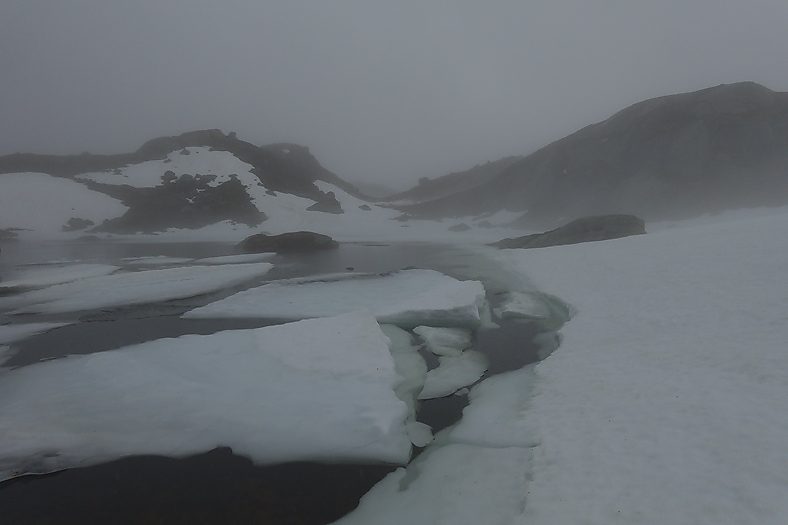
When we have sunshine and green grass with blossing flowers in the lowlands, the weather up in the mountains can be very different. So when travelling up here at this time of he year it is important to bring along equipment for all kind of weather, including GPS, map & compass.
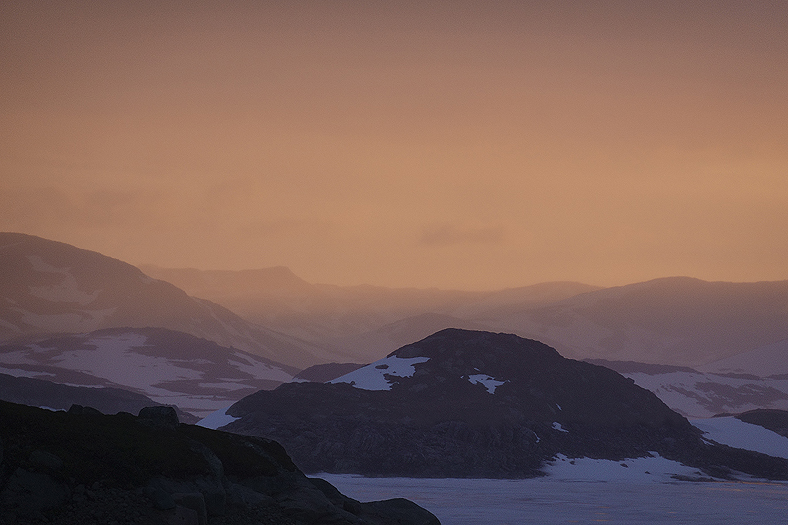
Opposite to fog, rain and dark weather, the light and atmosphere can be very beautiful up here in the mountains.
END.
________________________________________________
________________________________________________
WINTER IN SOUTHERN NORWAY, JAN/FEB-2024.
The weather this winter has been characterized by instability with much easterly winds which are often persistently strong and cold affecting both at the sea side and the high mountains.
I will here share some images from this period. First of a couple of exclusive species by the low land, followed by an expedition to the high mountains in the Rjuven area to see how the species there survive in some of the harshest winter conditions in Norway.
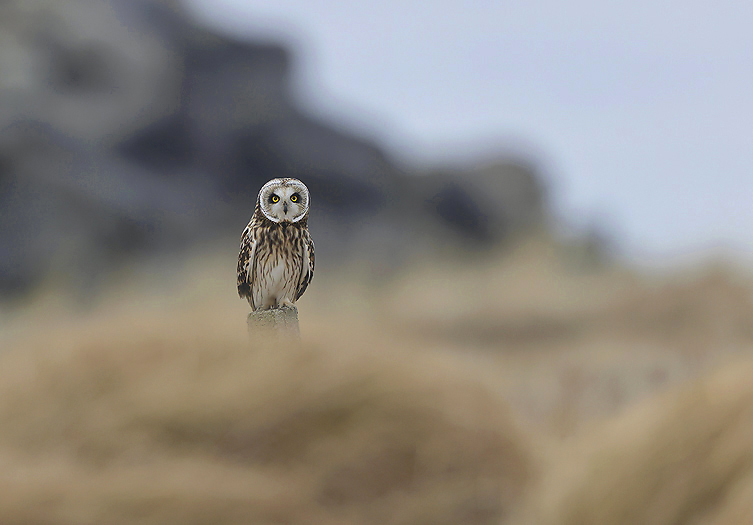
A Short-eared Owl in the lowland close by the seaside.
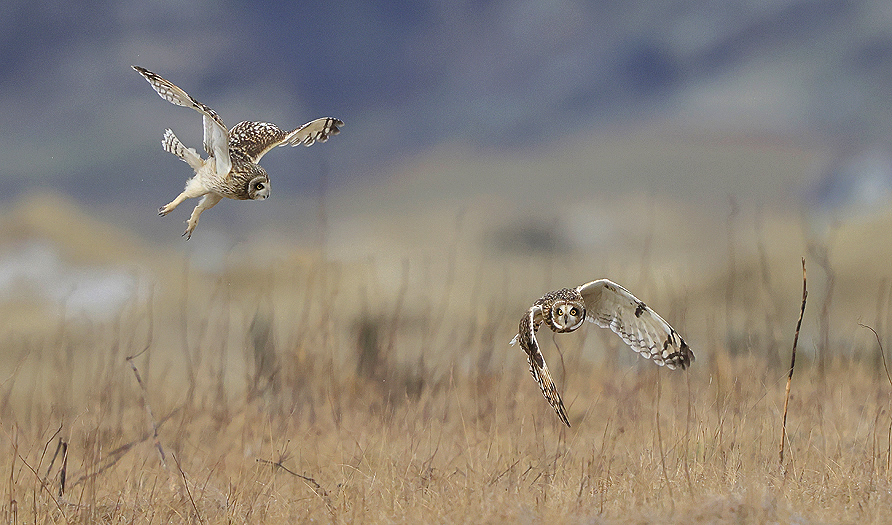
The rodent population this winter has been good in parts of the western lowlands. This is especially great for owls and some birds of prey species. Some times there are several Short-eared Owls at the same place, -and as always they compete for food and try to scare others away.
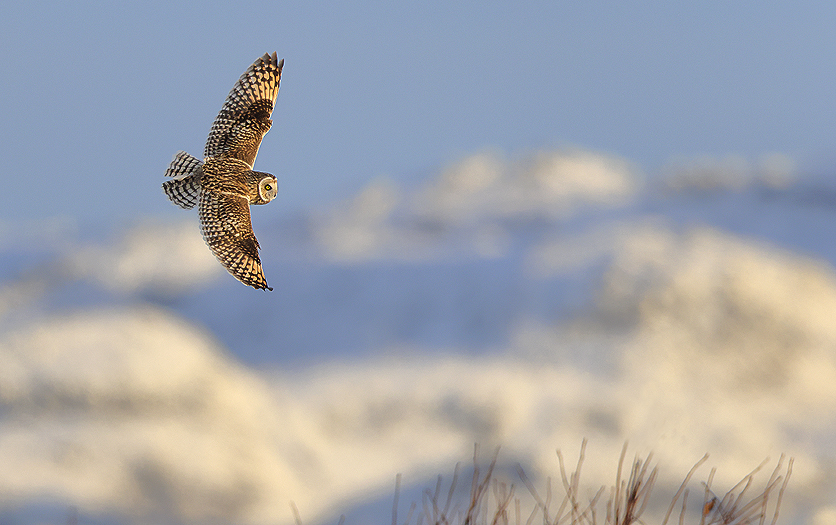
Short-eared Owl. The snow is laying in the lower mountains in behind.
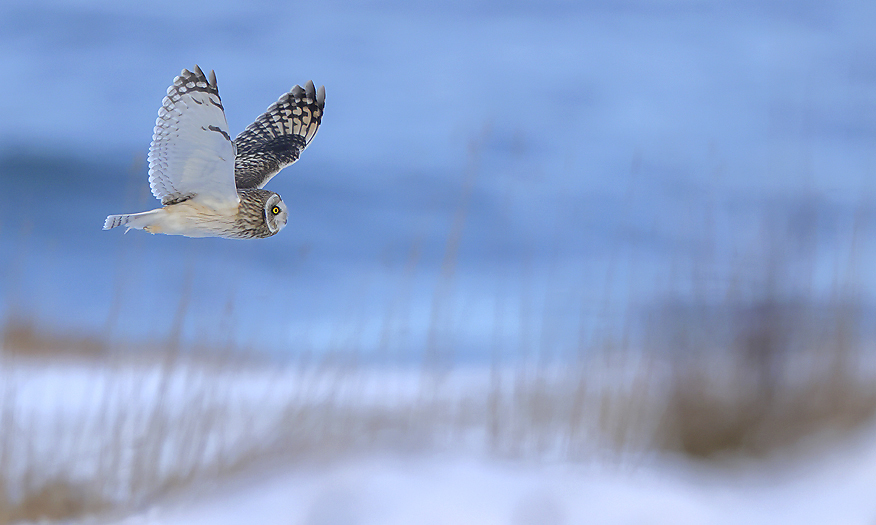
When the snow covered the coastal fields the Short-eared Owl were forced to hunt in exposed places where the snow are swept away, and by river sides etc.
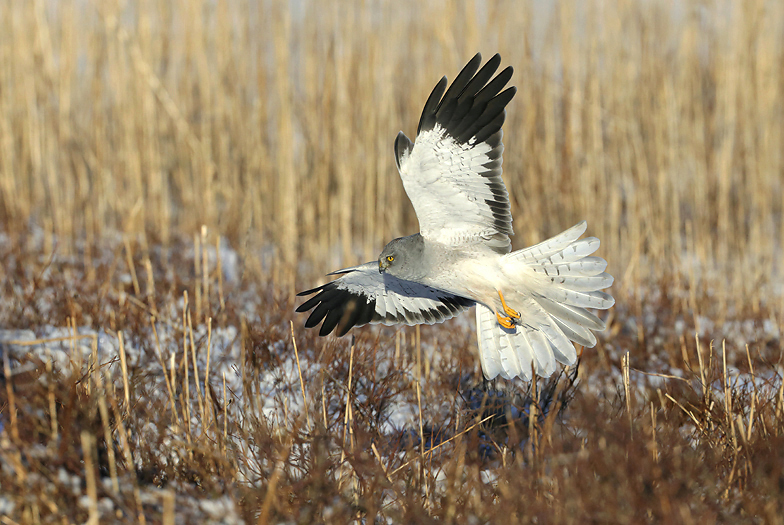
Some Hen Harriers are also wintering here, they are among the rodent eaters. Here a male. PAY
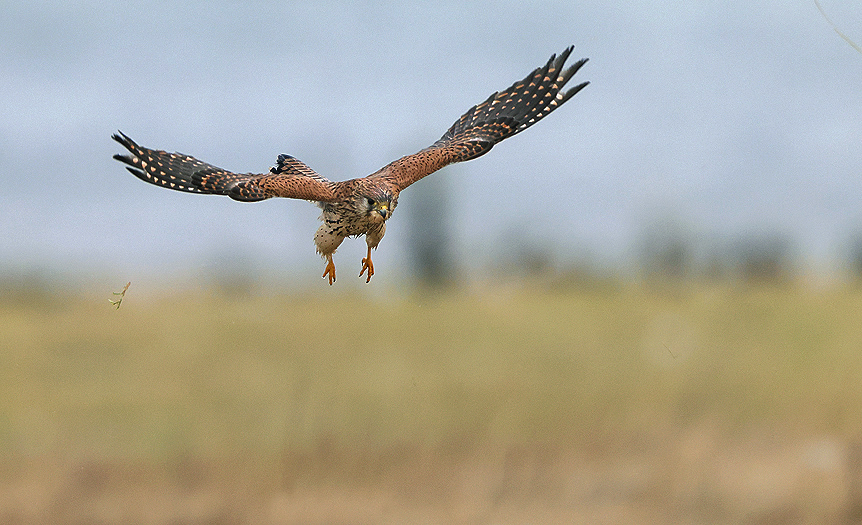
This Kestrel is regularly harassing the Short-eared Owls and try to steel the prey from them (some time with success).
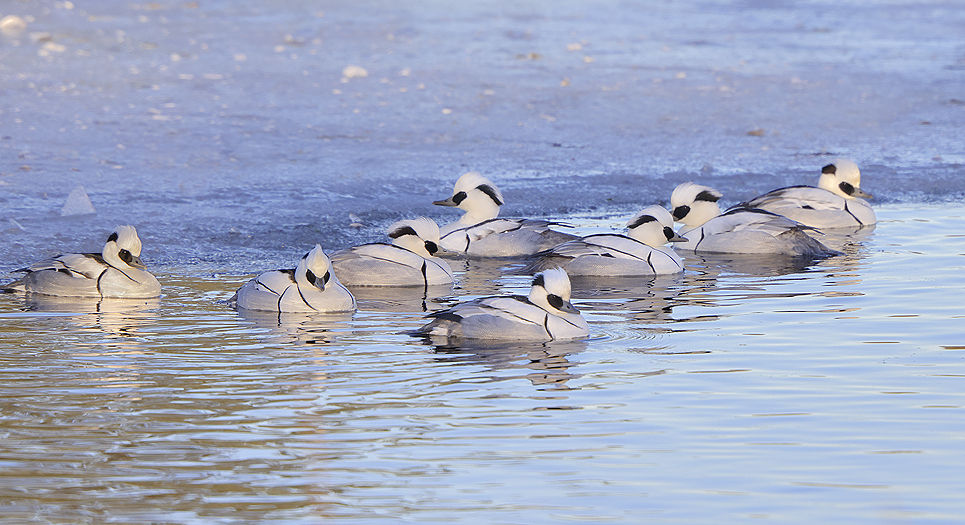
A small part of the Smew population stay over winter at coastal near ice free og partial ice free lakes. This winter most of the lakes was very close to freeze totally up, and the ducks and geese had difficult times. STI
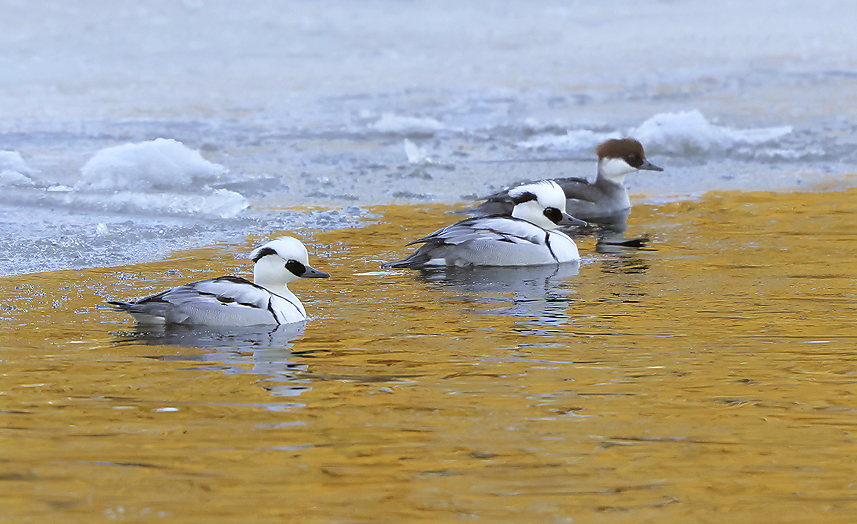
Smew males and female. This species is only to be found in the sub arctic parts of the old world / the Eurasian taiga. STI
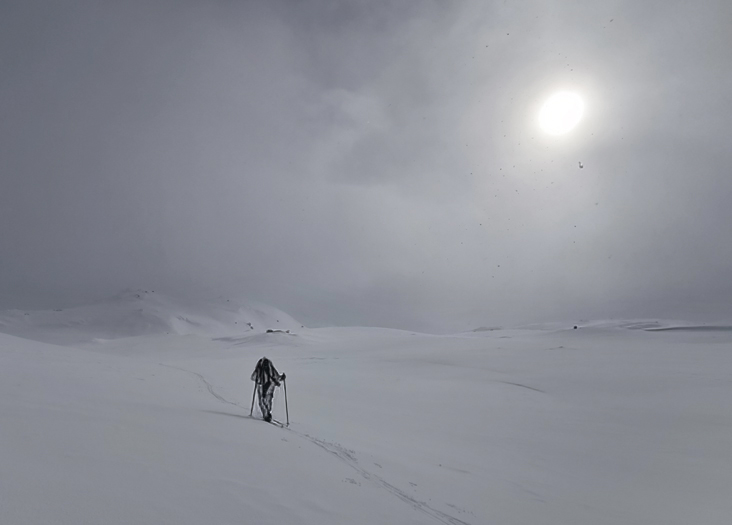
We are changing activity area and are now in the high mountains of the Rjuven.
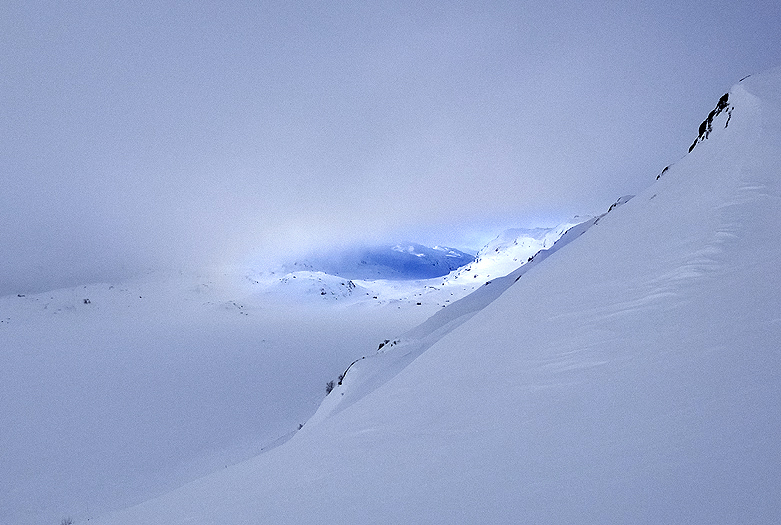
Up in the mountains between Sirdal and Setesdal valleys the amount of snow can be severe at this time of the year. The weather is often very unstable with heavy winds. We had both good and bad weather when we visited the area.
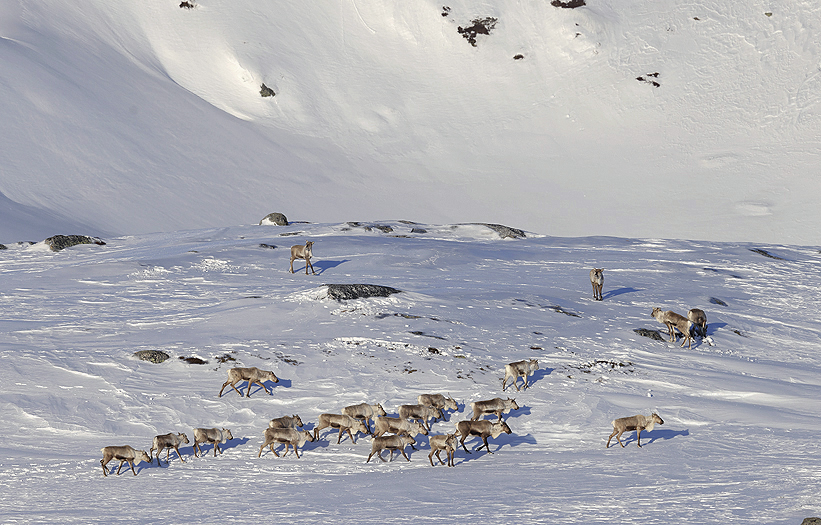
The southernmost population of wild Reindeer in Norway lives here in the “The Setesdal Vesthei, Ryfylke Wild Reindeer area”. The N.E. parts of Rjuven is an important calving area for this population. It is estimated to be around 3000 of these magnificent animals here in SV&R south of the Hardangervidda Mountain Plateau. PAY
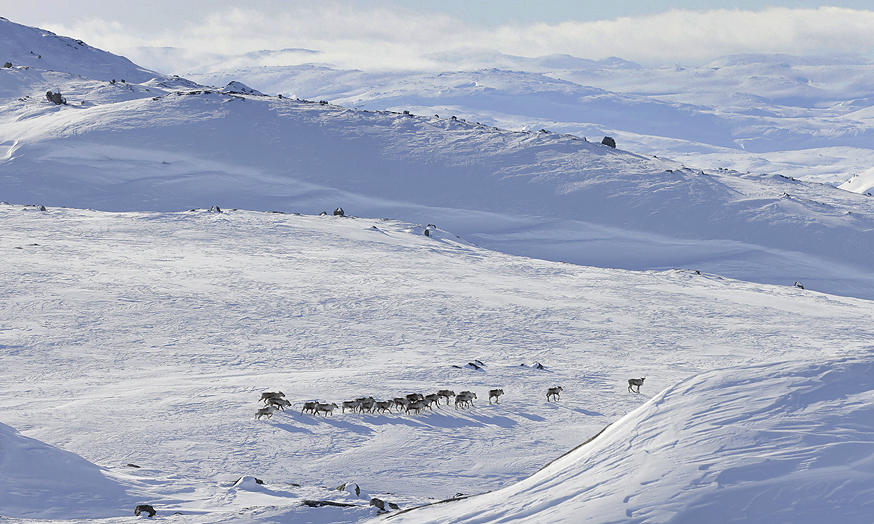
Quated from the blog post in the winter of 2022: This specific population is living under extremely rough conditions in winter time where the weather is affected by a humid oceanic climate. This causes frequent storms where the temperature can vary between around 0 -30°C. The snow depth is normally several meters at this time of the year. The ongoing climate changes have more and more often resulted in temperature above zero with rainfall up to the highest peaks & plateaus followed by freezing up again where the landscape then is being covered by an ice shield making it hard for the Reindeer to dig/scrape through the snow for finding food. When the pastures here contain the least amount of lichen in the Norwegian Reindeer population areas we understand that life can be hard for these amazing animals. PAY
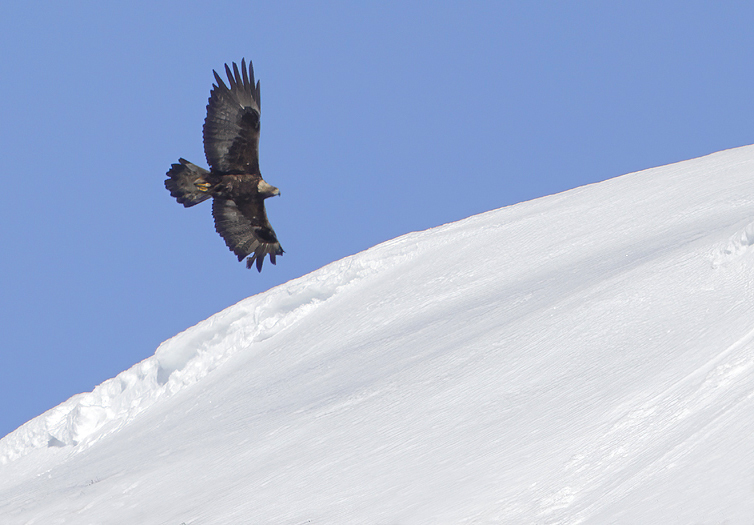
The Golden Eagles are often following Reinder herds, especially if there are several minor, sick or wounded animals in a herd. PAP
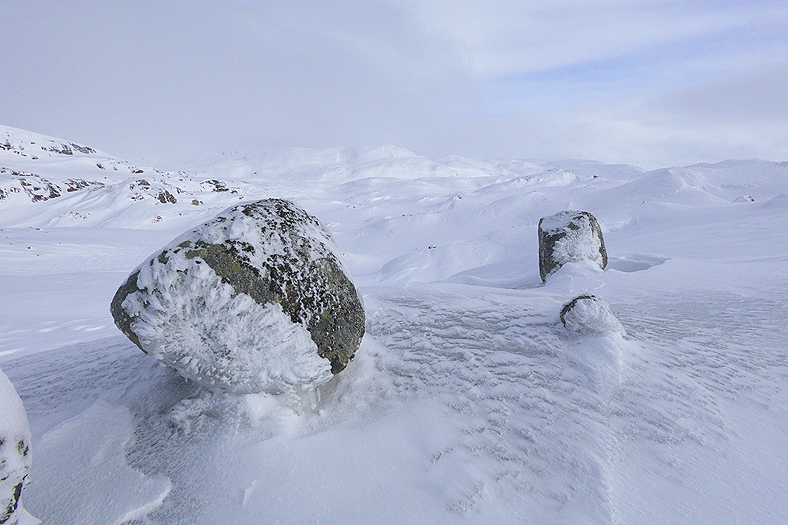
Ice rosettes formed by the storm ending with rain & sleet yesterday which forced us to stay in the base camp.
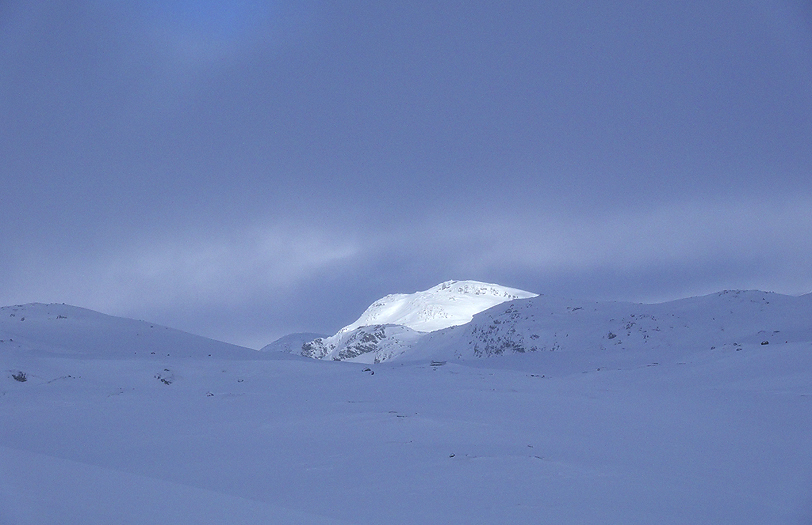
Welcome to the sun! Some days we had completely white-out when we were out skiing, making it difficult to see if the terrain went up or down. Many times we had to put a ski pole in front of the ski tip to be sure we did not fall into a ravine or a snow hole. Just a little sun gives contrasts on the ground and we can see as good as ever.
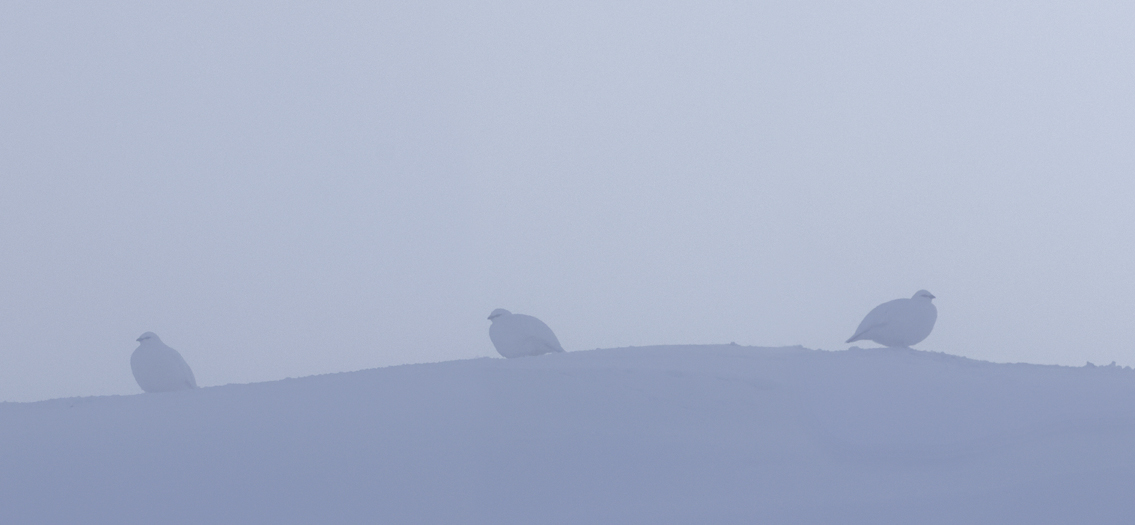
Suddenly 3 Rock Ptarmigans showed up on an edge in the foggy weather.
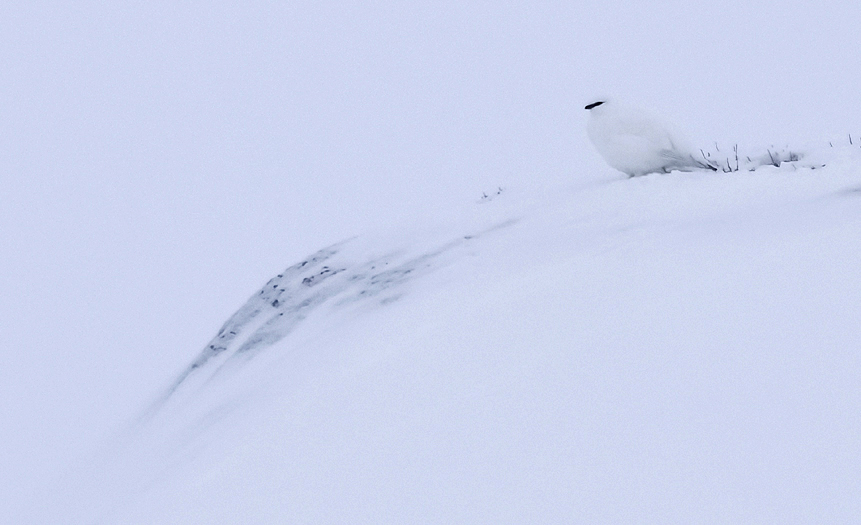
The land here are quite icy after the storm. Only here and there the vegetation has avoided being glazed by the freezing rain. The Rock Ptarmigans are one of the very few wintering birds here, and they know where to find food.
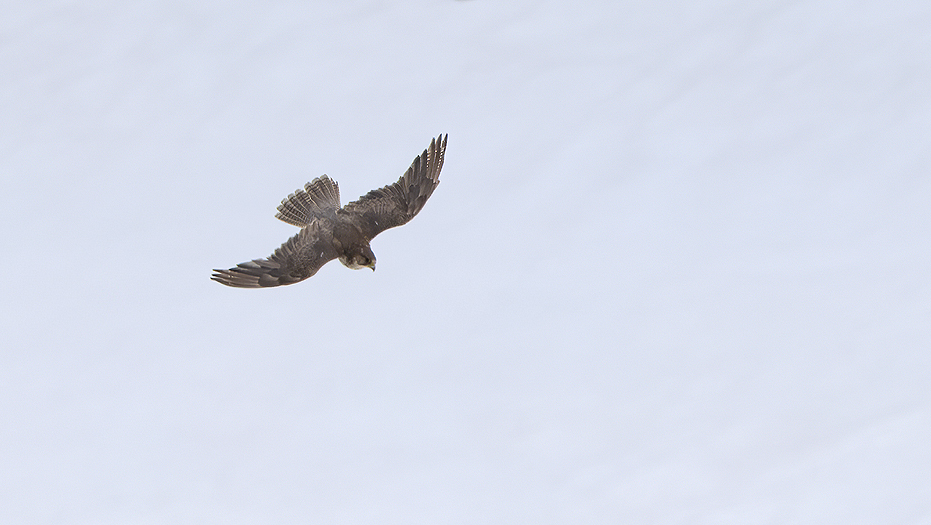
…and the Gyrfalcon know where the Ptarmigans normally are. The Ptarmigans are the Gyrfalcons main food source. PAP
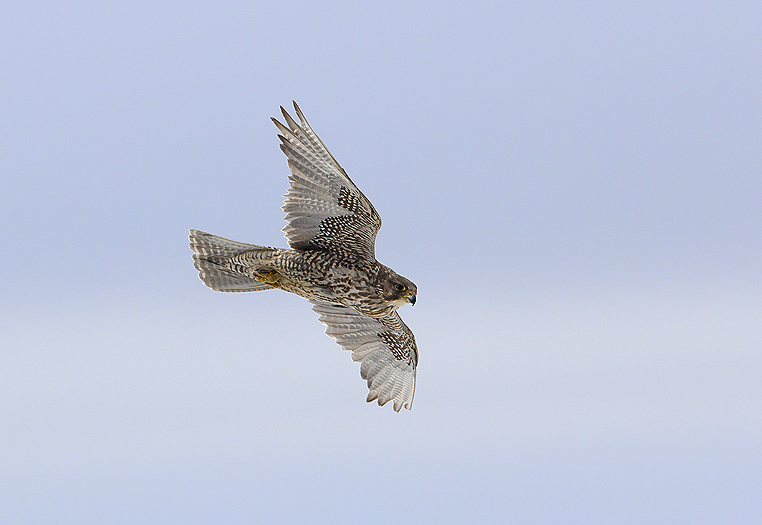
Together with the Rock Ptarmigans and Ravens the Gyrfalcons are the only wintering birds here. PAP
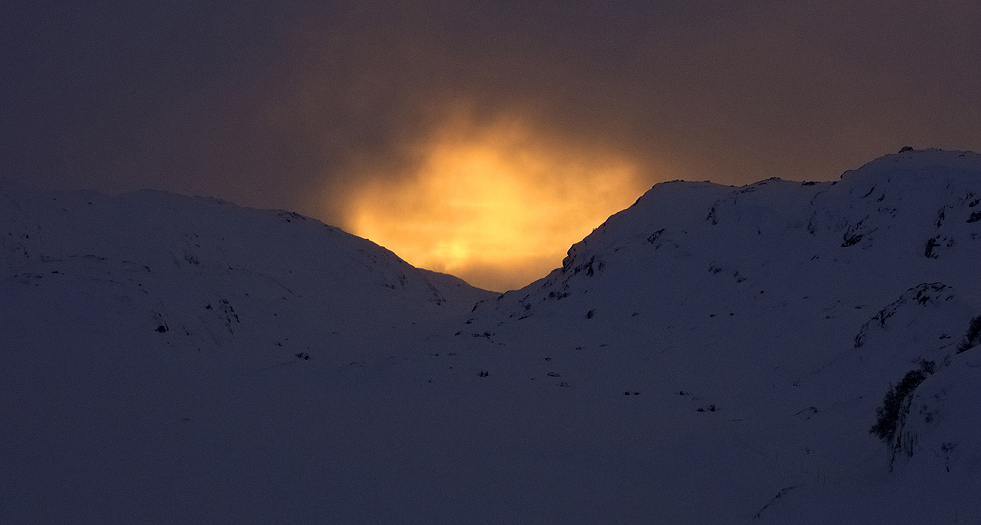
The very last rays of the sun seen from base camp on the last evening in this beautiful and exciting wilderness.
END.
________________________________________________
________________________________________________
GREY SEAL WINTER ACTIVITIES IN SOUTHERN NORWAY. December 2023
Below I share some photos after having studied the Grey Seals for some days in the highlight of their annually life cycle: In November and December they give birth and nurse up their puppies, then immediately followed by the mating season. The puppies are pure white for the first 4 weeks and called “Kvitunger” in Norwegian (= White babies) before the fur changes to a greyish color. The white fur tells us that this species originally give birth in icy/snowy areas for best possible camouflage for the puppies against predators.
The main island with highest activity level in the offshore archipelago west of southern Norway is near divided into two halves caused by a kind of channel cut 3/4 through. Innermost of this “channel” we find the main “birth & nursing chamber” area to the Grey Seal population here.
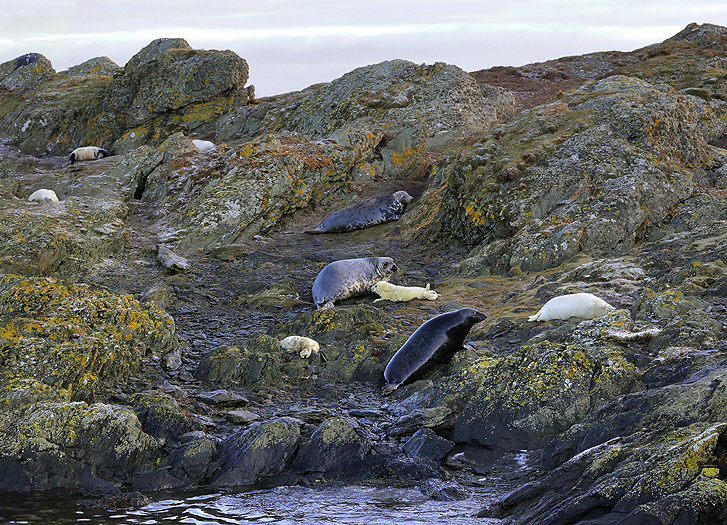
Part of the central «Birth & nursing-chamber” area.
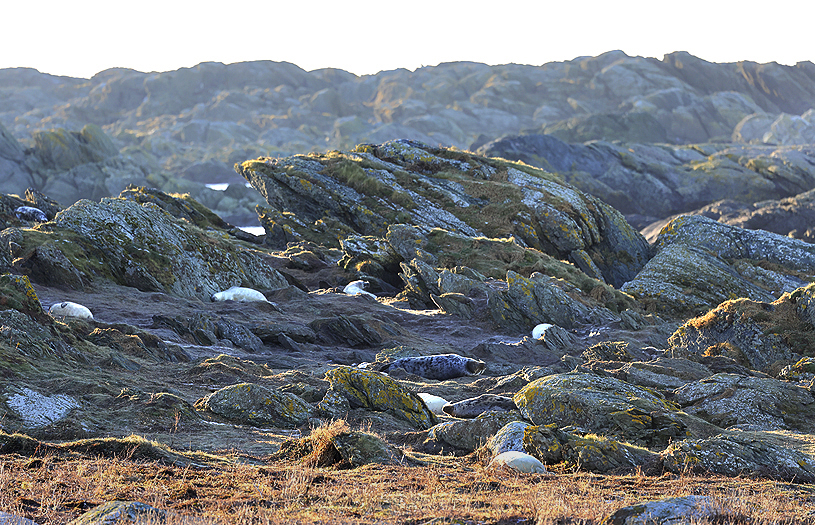
Spread over the upper part of the main area we see quite a lot white puppies resting on the ground, where some of them have company of their mothers. With such an amount of puppies there are near always one or more who shout at the mother for milk.
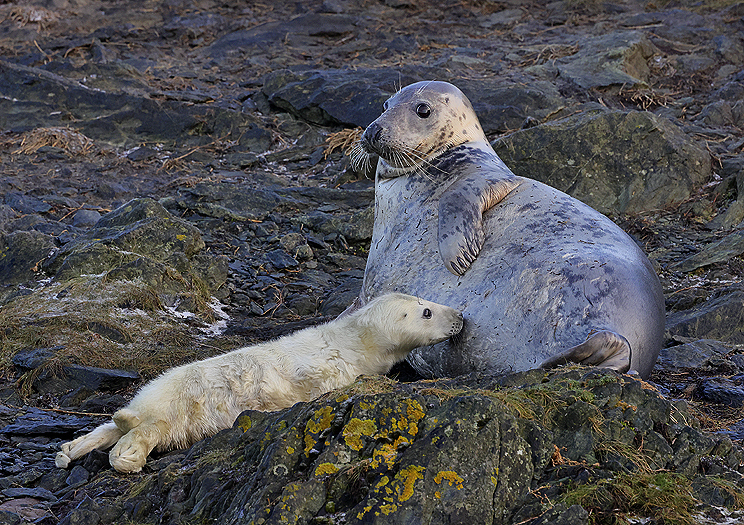
This nursing puppy is relatively new born and rather skinny. But it will grow fast as the mothers milk is extremely nutritious and consists of up to 60% fat.
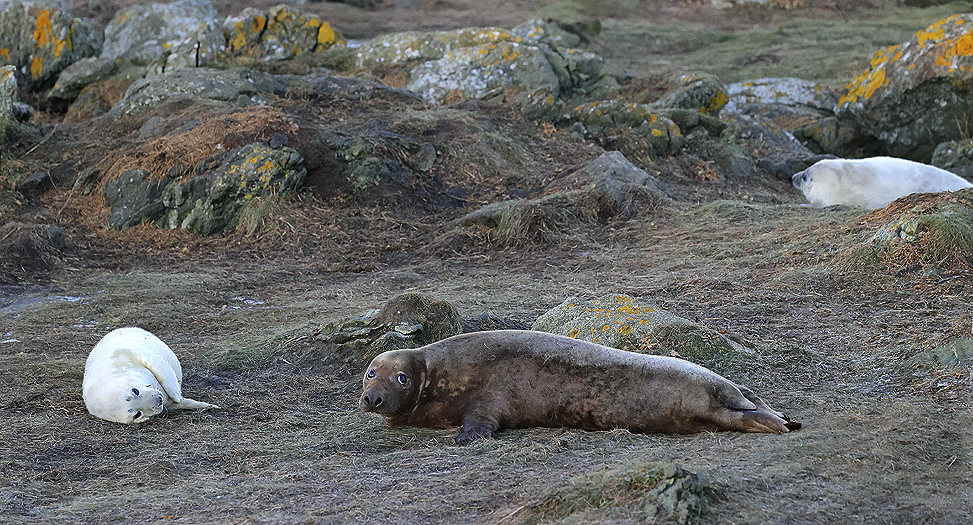
The puppy nurses for 2-4 weeks and then triples its birth weight. When the nursing period is over, the cub sheds its white birth fur and goes to sea. It then loses approximately ten kilograms of its weight due to a lack of experience in catching fish.
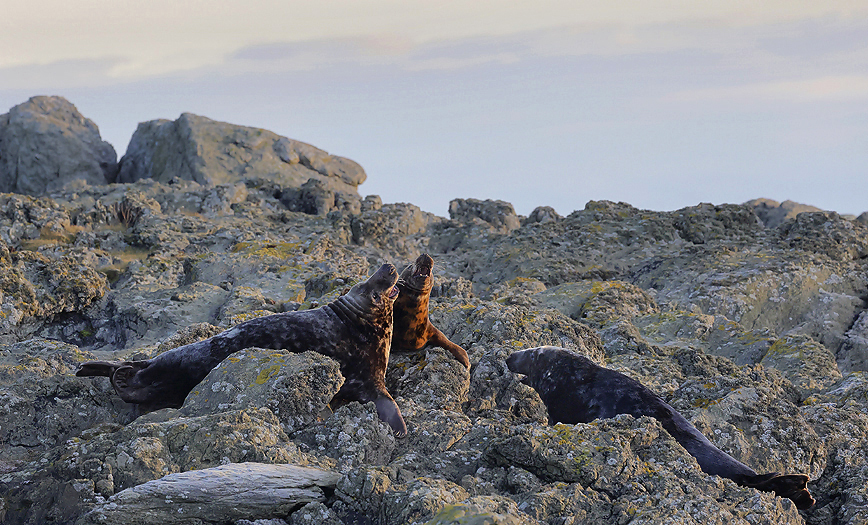
At the end of the nursing time the mating season starts. The males are normally ready for mating before the females are finished nursing the puppies. Here we see a male going onshore and meet resistance on his way.
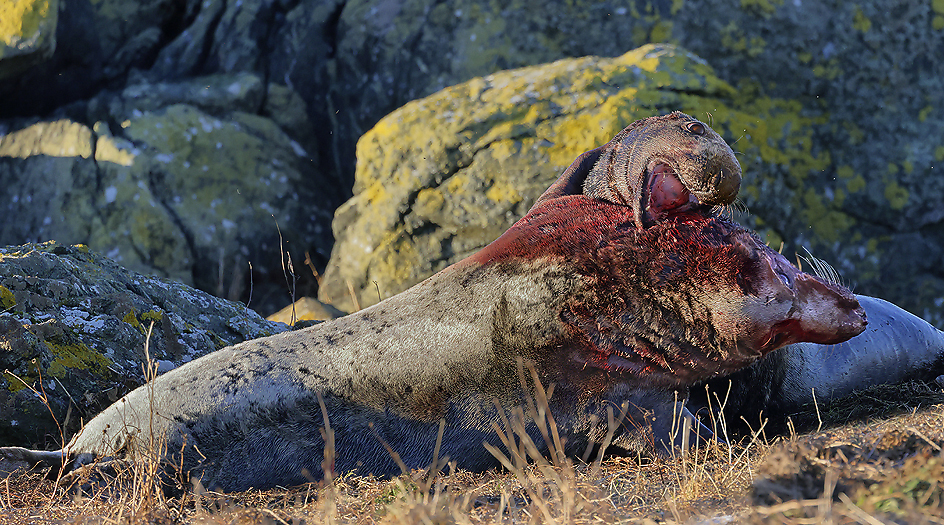
The mating season includes fighting among the males. A female and male do necessarily not end up as a couple, especially not if there is an extra dominant male who can end up having a harem.
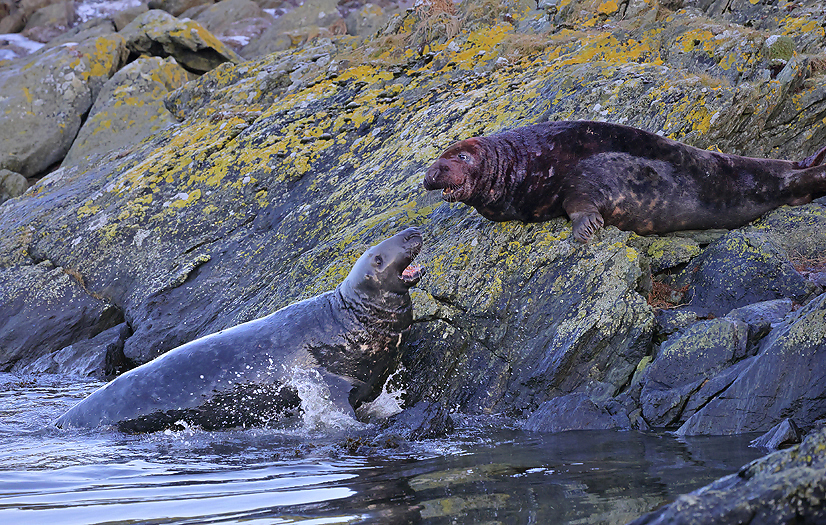
A dominant male innermost in the channel at the center of the “birth-center” area is waiting in the water for one of the females, but is met of another male who do not seem to be welcomed there. He hesitate for a while, -but jump so into the water. See the 2 photos in sequence below…
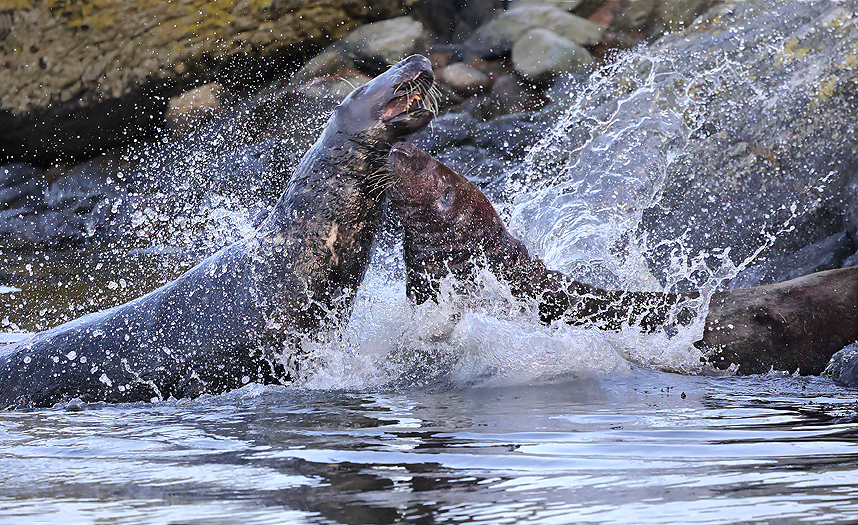
Fights between males happens frequently now in the mating time.
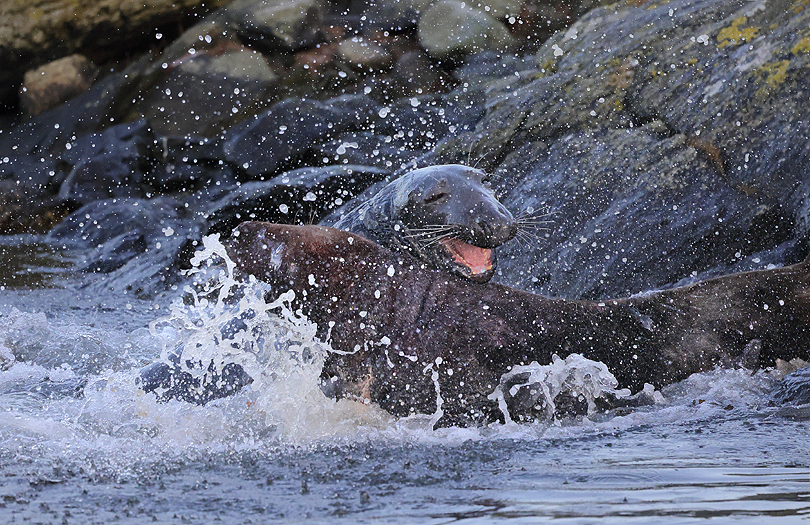
The fighting between the males lasted for about 20 seconds, thereafter they split up and the losing non-dominating male swam outwards in the channel.
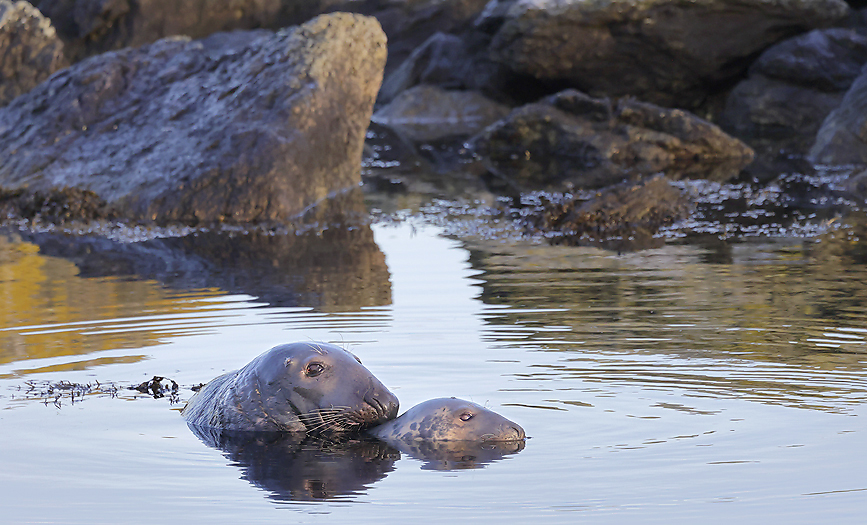
The dominant male short after the fight found a ready female and they mated in the channel water.
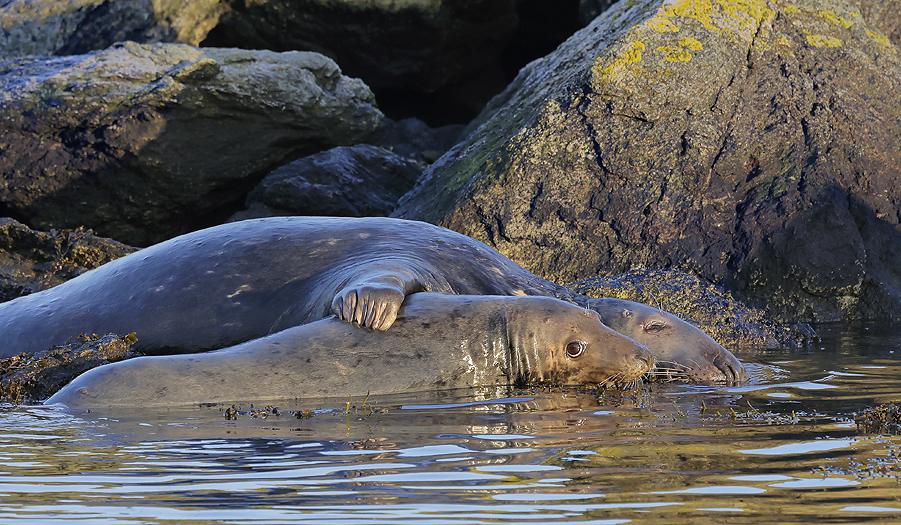
Relaxing after the mating (the female in front).
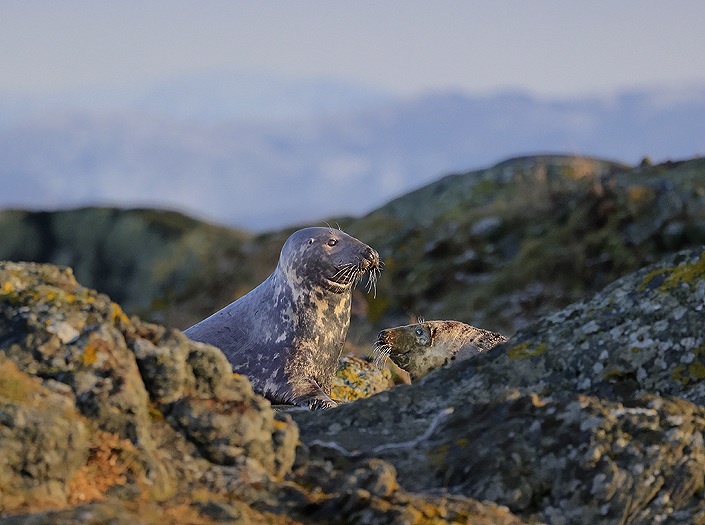
A non-active period on mid-day day follows. Relaxing Grey Seals at the top of the small island. More new images of Seals can be seen in the “Seals” gallery.
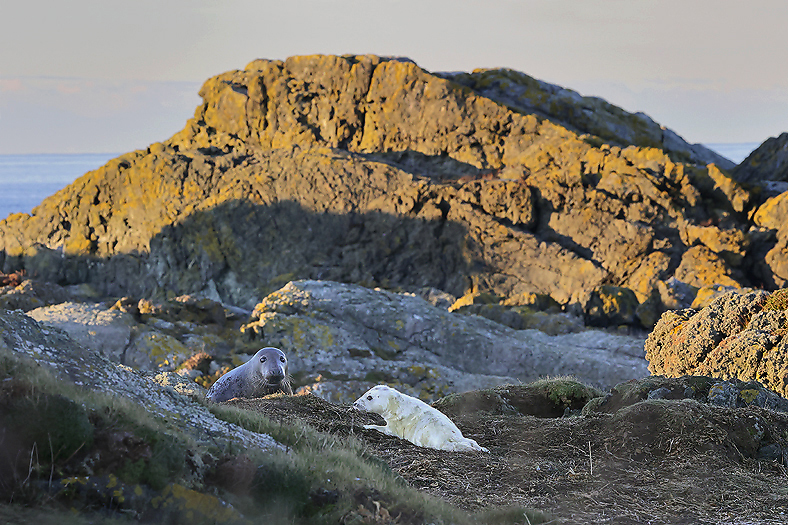
The mother to one of the puppies who have called for the mother is showing up.
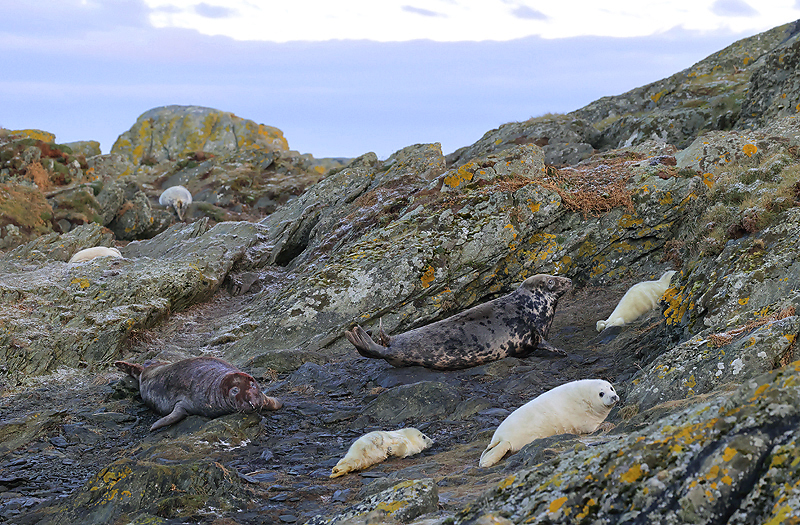
Part of the birth & nursing-chamber with Grey Seal mothers and their puppies.
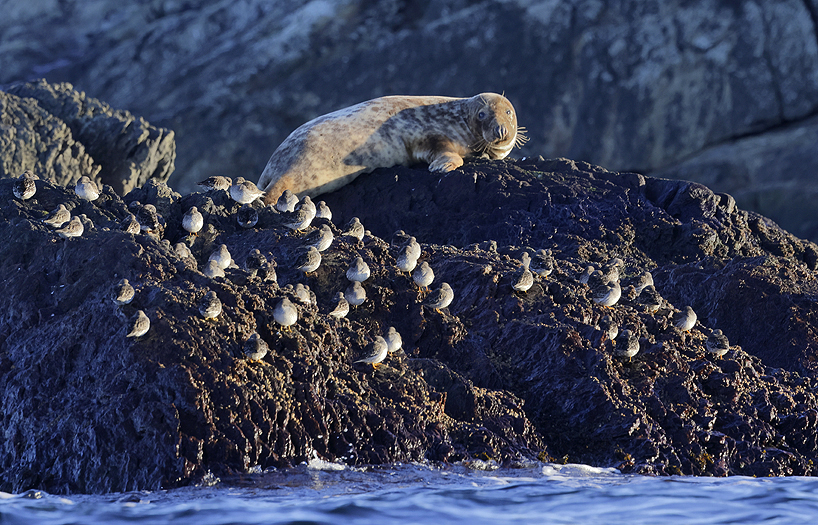
Both male and females have daily trips to the sea for feeding. Here is one of them resting beside a flock of Purple Sandpipers who overwinter at the archipelago. The long pointed snout of the Grey Seals have nostrils that can be closed while diving. It has whiskers around its snout that register currents and pressure changes in the water, for example from movements of fish. The adult eats averagely around 4-5 kg of food a day. When the Grey Seal hunts for prey, it attacks from below. It swallows its food so as not to drink salt water and because its teeth are bad for chewing.
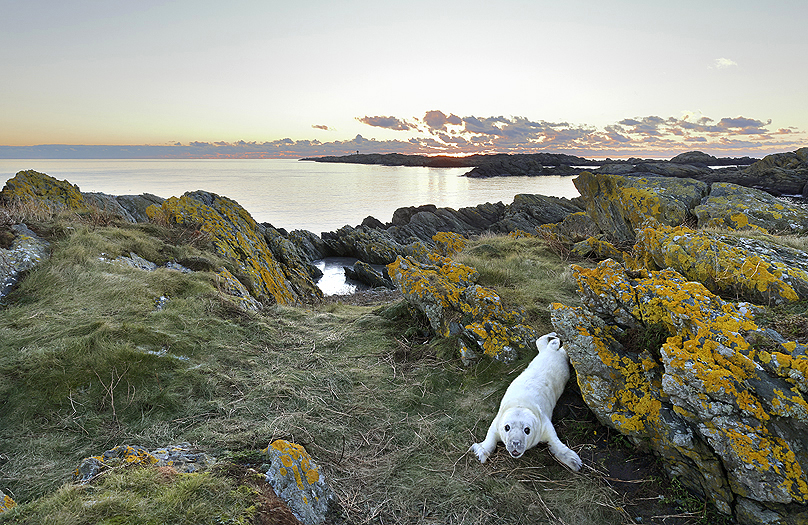
The puppies are alone parts of the day when their mothers are out at sea catching food.
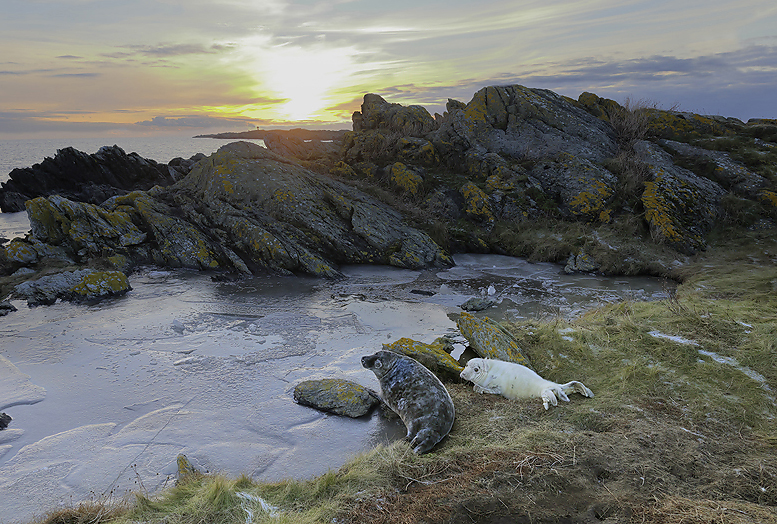
One small «Kvitunge» and one puppy who have changed away the white fur is resting beside each other.
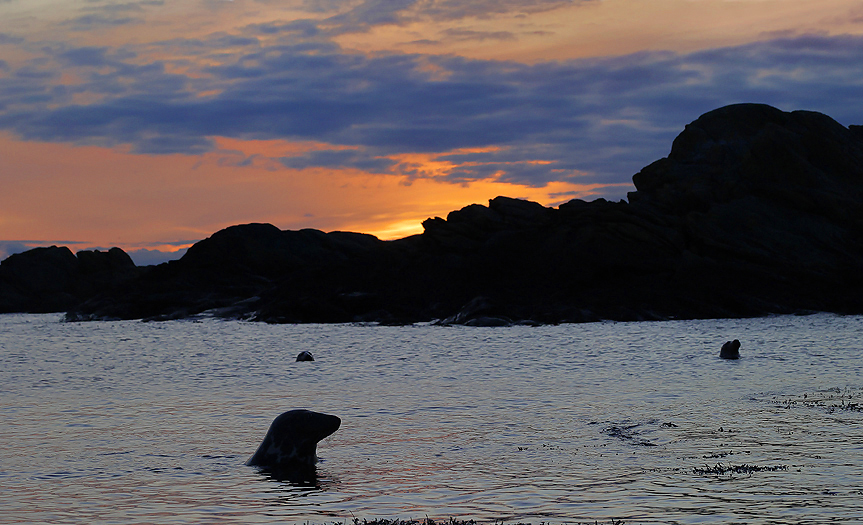
Sunset over part of the archipelago.
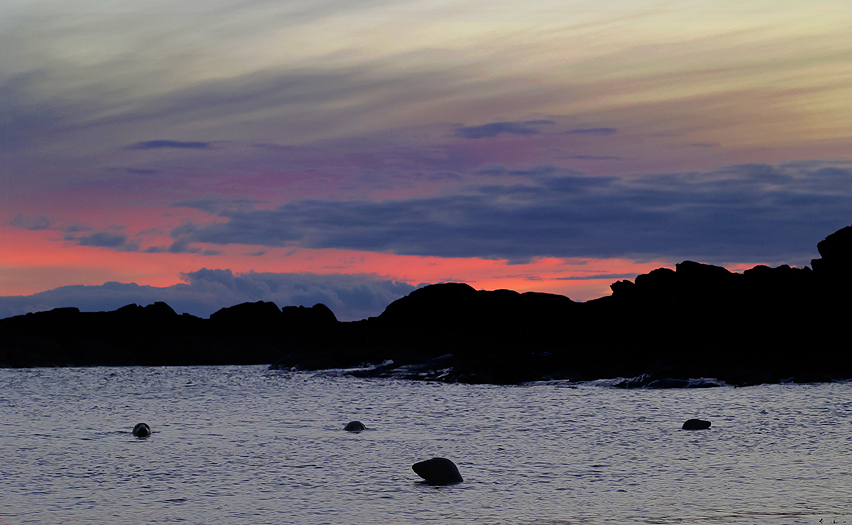
The last day is over for our study and photographing of the Grey Seals here in the archipelago. The night is closing in, and we leave them in peace for the rest of their exciting period and travel back to the mainland again.
END.
________________________________________________
________________________________________________
AUTUMN IN THE CENTRAL NORWEGIAN MOUNTAINS, Sept/Oct. 2023.
Returning back after 2 weeks in the Rondane and Dovre Mountain Ranges I would like to share some images from the trip.
The weather conditions was milder than normal in the area, with near to no snow at all below 1800m above sea level. The last few days it turned and snow covered the land above approximately 800m a.s.l.
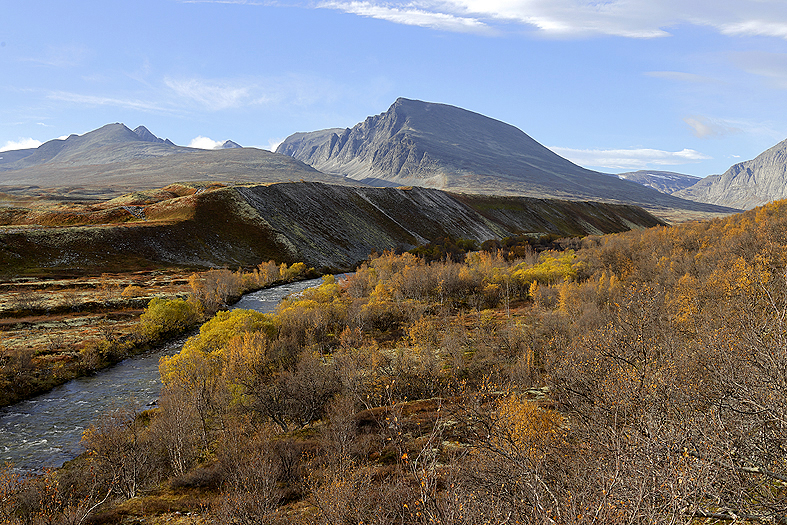
Autumn in the mountains can be both rough and beautiful. Here we see an example of the latter in the majestic Rondane Mountain Range.
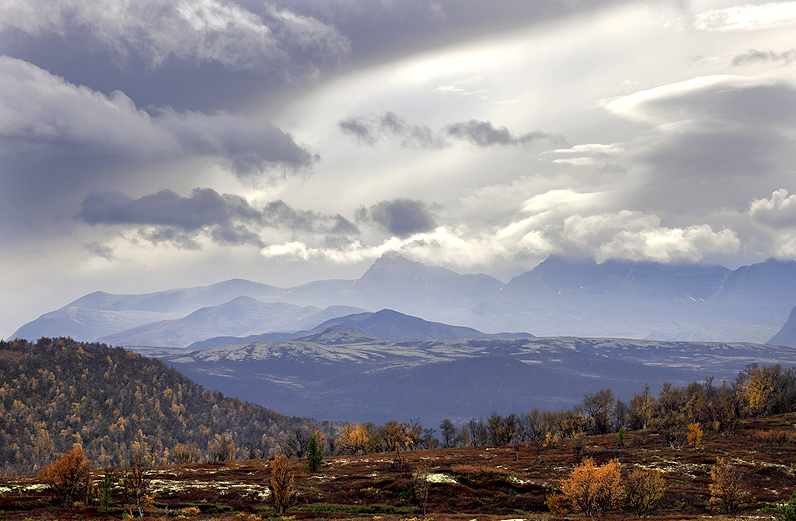
The Rondane Mountain Range from a distance. Together with Dovrefjell Mountain Range they are about the “most Norwegian” we can come.
Rondane Mountain Range has in general more alpine look with sharp peaks than Dovrefjell. The average peaks in Rondane are from 1700-2000m above sea level with the highest peak is Rondeslottet at 2178m. And for Dovrefjell respectively 1600-2000m with Snøhetta at 2286m.
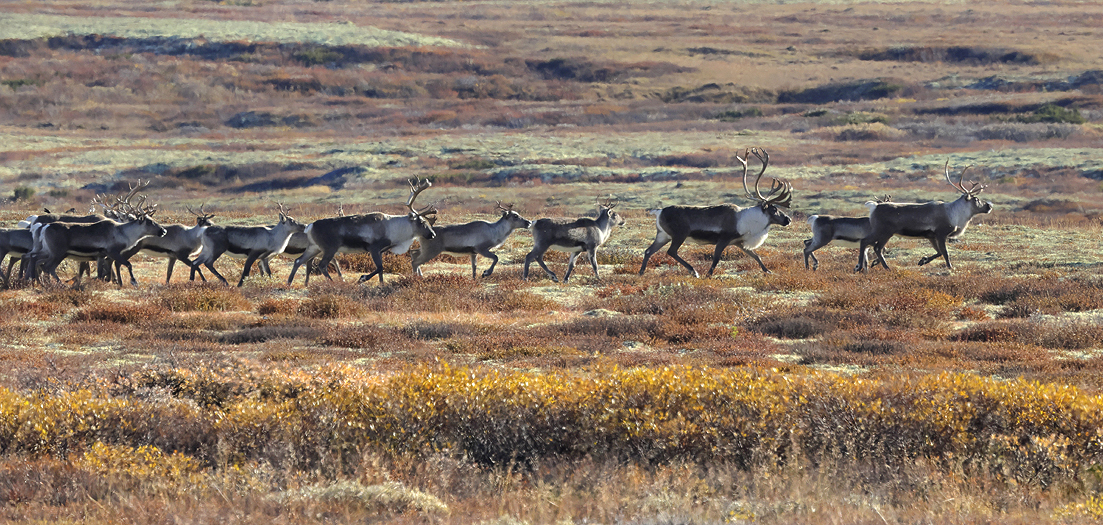
As described in earlier blogposts the Reindeer in Dovre and Rondane Mountain Ranges are among the very few Reindeer populations in Eurasia that have their original DNA intact without any interference from domestic Reindeer. It is also the be mentioned once again that these populations have their origin from Beringia, and not from southern Europe as most other populations found further south in the Norwegian mountains today.
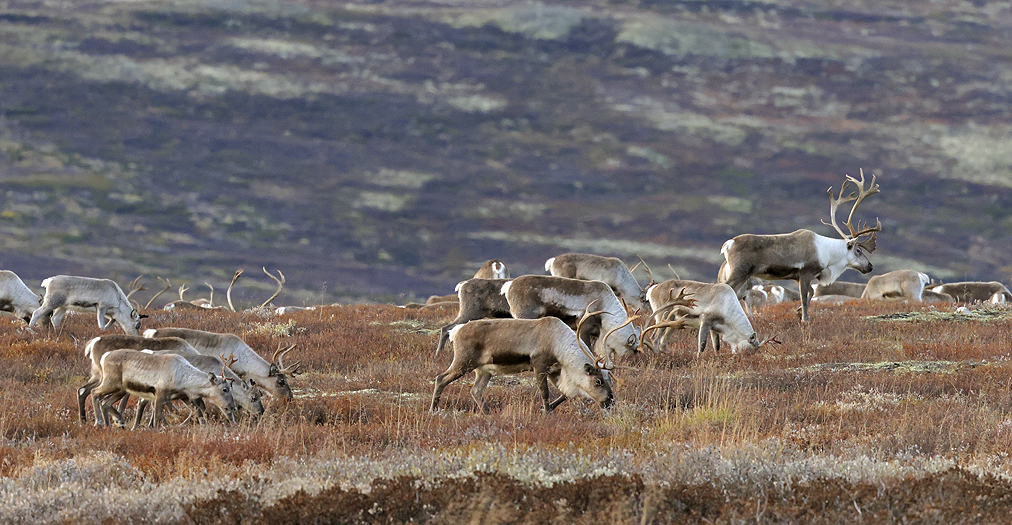
Reindeer move normally against the direction of the wind to be able to smell danger ahead of them (predators including man). For near a month now the wind has in general been south westerly, which causes most of the Reindeer ending up in S.W. areas of the mountain ranges. More images of Reindeer can be seen in the “Reindeer” gallery.
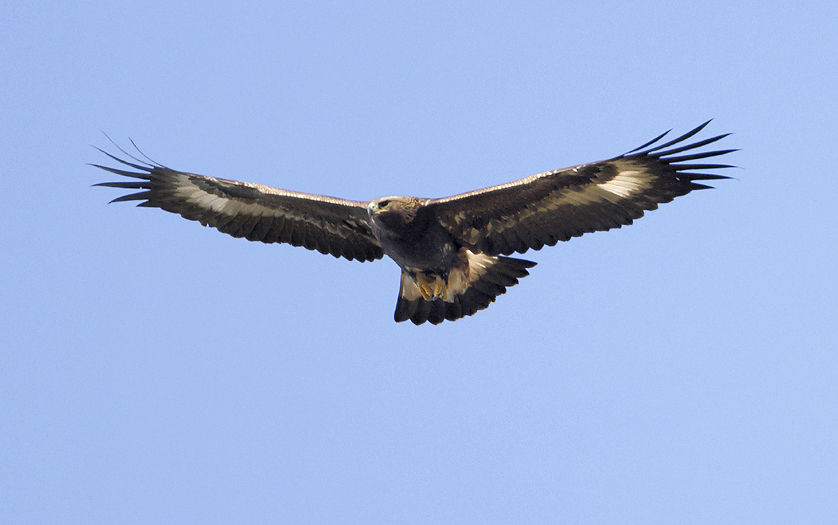
This year the majority of the Eagle species was Golden Eagle. These eagles can often be seen in conjunction with Reindeer herds. It can of this reason be wise to scan the landscape for Reindeer if you are interested in this species and see Golden Eagles in the area. PAP.
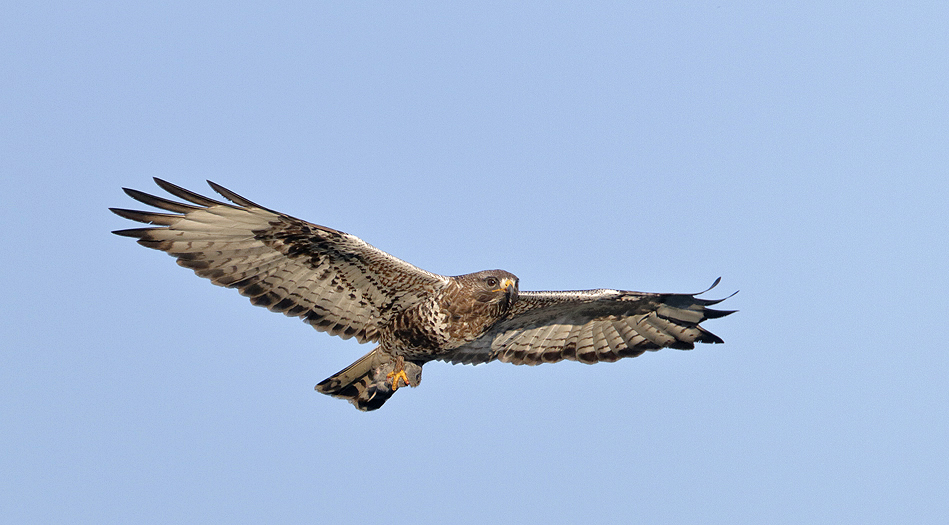
Despite very low numbers of rodents in the mountains, some Rough-legged Buzzards were present. PAP.
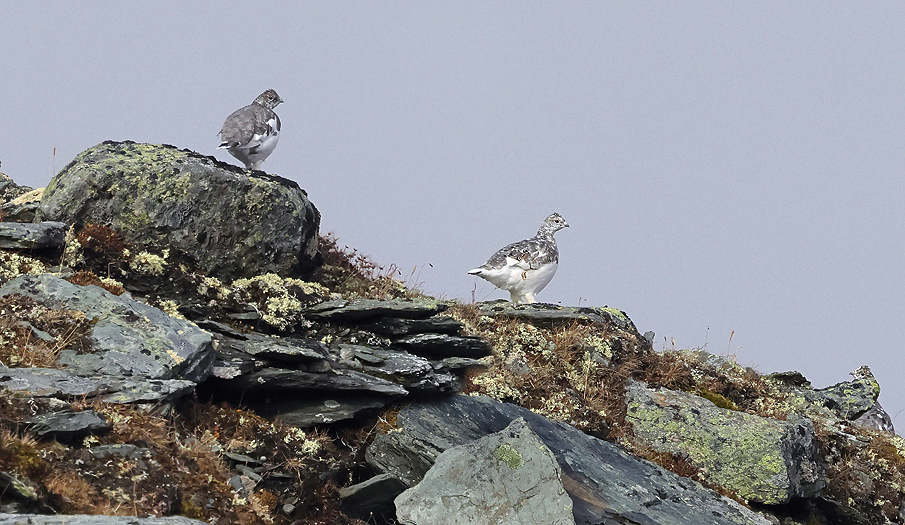
When the Rodent numbers are low, so will often the Rock Ptarmigan numbers be. This is caused by increased predation on these birds by i.e. foxes, raptors and owls.
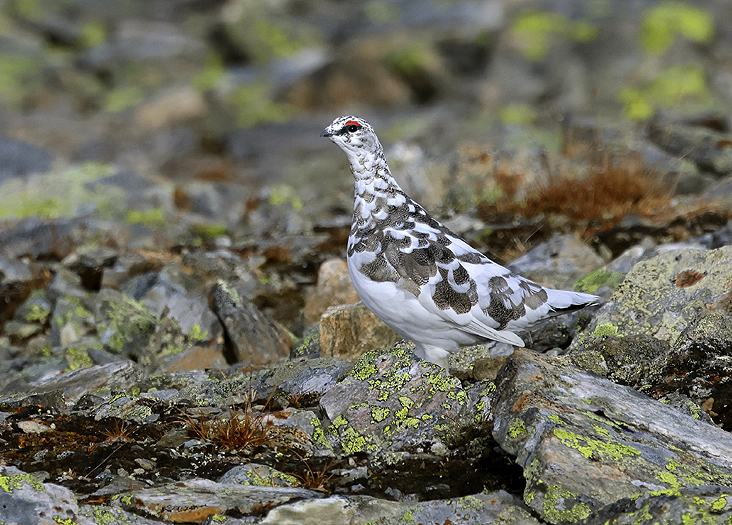
Now is the time for the Rock Ptarmigans to start changing from Summer to Winter Plumages. This one and the two in the previous photo have started the process as we can see.
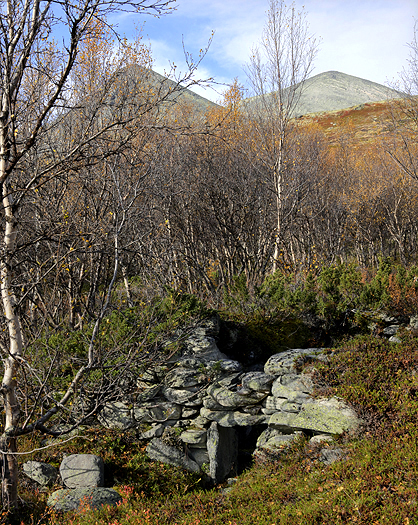
The only “Ruphus” (= direct translated “Ptarmigan House”) in Rondane Mountain Range. This Ruphus ruin is a simple shelter where Ptarmigan hunters used to stay in when they were on hunting trips for Ptarmigans in winter time. The entrance has only this 50 x 50cm opening as we can see in the front, and is to avoid loss of the warm air inside. This Ruphus is dating back to the Medieval Age, and is supposed to be used until the 1880`s .
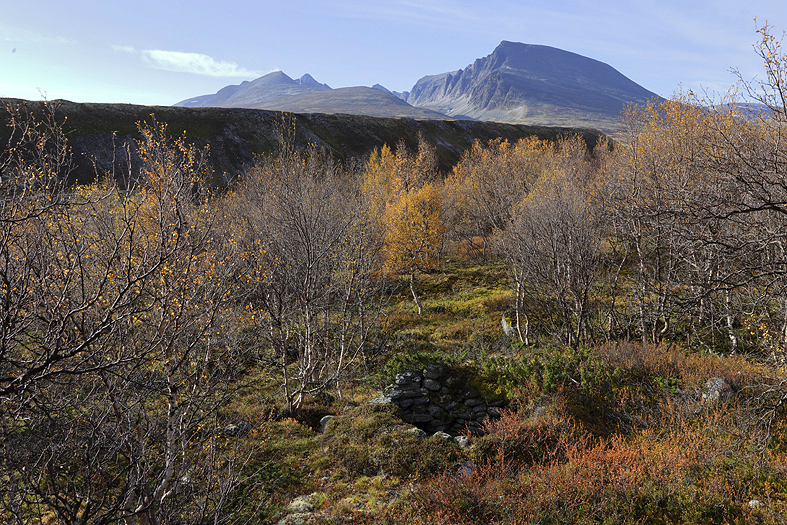
The “Ruphus” seen from above. The roof is as we can teared away.
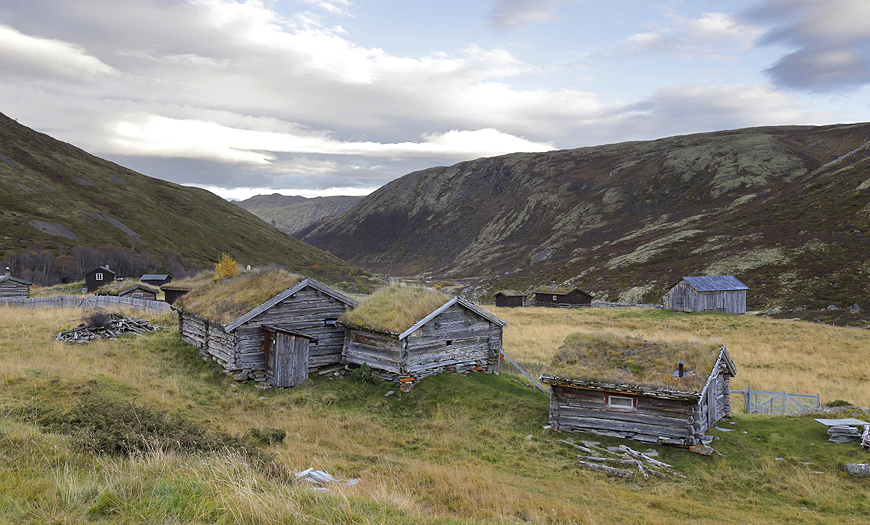
Traditional Mountain Farm houses in Rondane Mountain Range. They were normally used only in Spring an Summer time when the farmers moved their livestock up in the mountains to used the fresh pastures there. When living there in the summer time people made dairy products such as Butter and Cheese This tradition is now soon history.
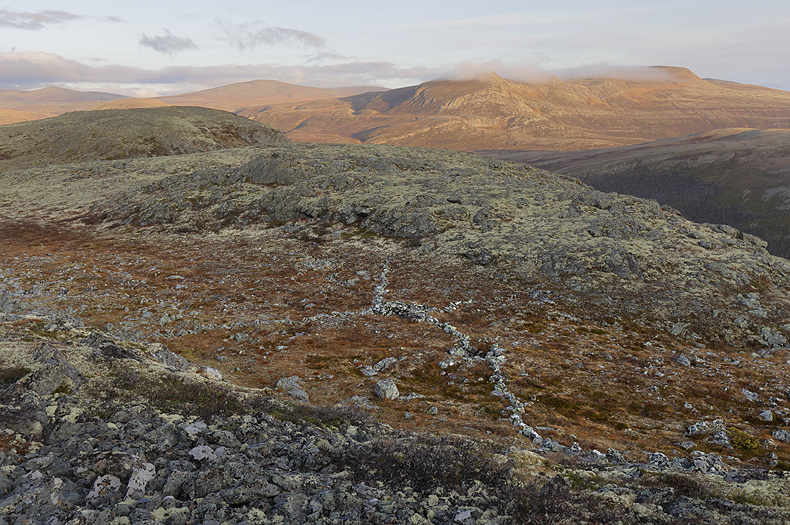
When the Ice Age ended around 10 000 years ago, the hunter & and gatherer man followed the Reindeer who expanded northwards after the retracting ice. Reindeer has been an extremely important food source for thousands of years until only 50-60 years ago. Still we can find trapping arrangements for catching these animals spread over great parts of the Norwegian mountains. They can date long back in time. Here we see one of these systems. The hunters have narrowed the passage in this tiny elevated valley with low “fences” of stones for leading the grazing animals into two pitfall traps. This system dates back to medieval Age / late Iron Age.
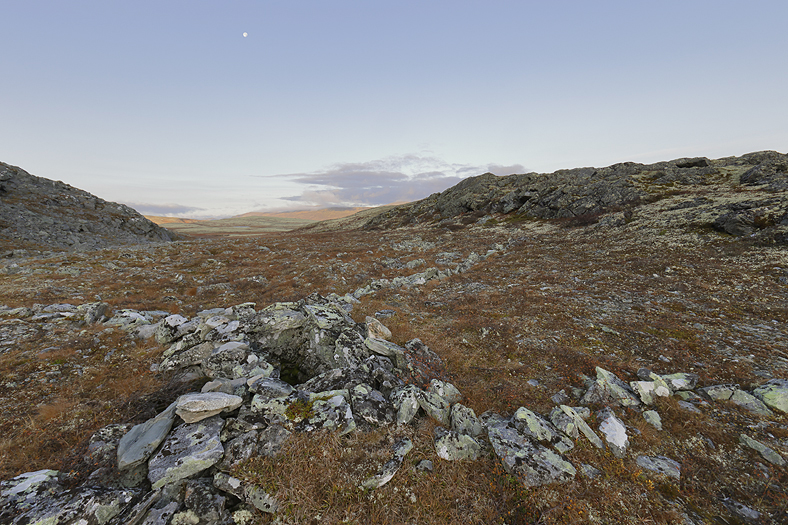
Close up photo of one of the two reindeer pitfall traps described above. When they were in use the trap opening was covered with surface vegetation (i.e. grass, heather and lichen) held in place by horizontal sticks/branches. When photographing this specific pitfall trap two Reindeer was grazing up against the pitfall trap. Unfortunately they observed the photographer from a distance of 150m and ran away. It is then unnecessary to say that many of the old Reindeer trails and migration routes in these mountains are still in use.
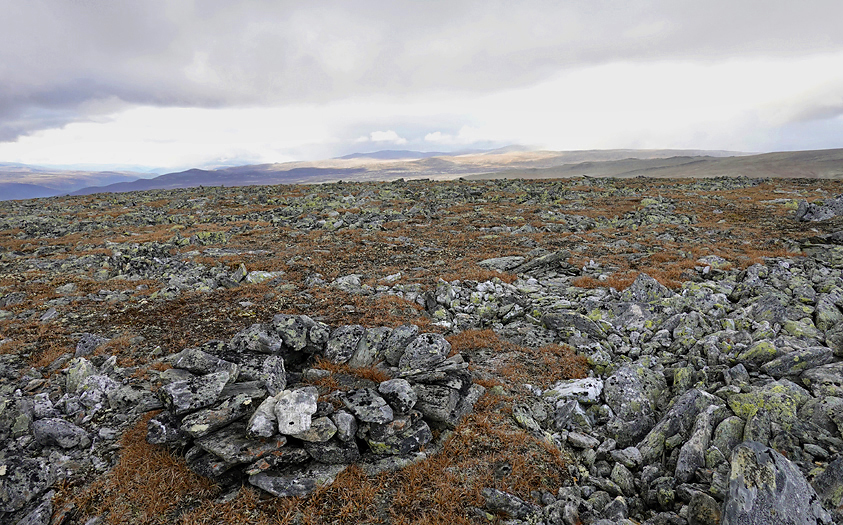
The mountain ranges cover big areas, and some times the Reindeer hunters in earlier days as well as nowadays cannot carry the catch to their shelters/dwellings etc on the same day. Then they need to make a cache to store the meat in so that predators cannot get hold of it until they can come back and transport it away. Here we see a meat cache from Medieval Age. More new images of archaeological sites can be seen in the “Archaeological Sites” gallery.
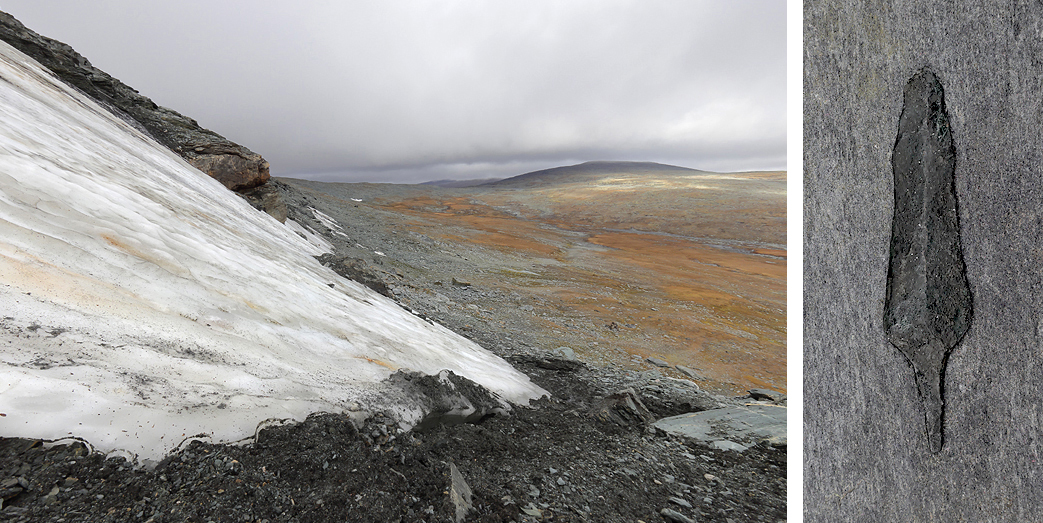
As we know most of the worlds glaciers are shrinking due to climate change. In both Rondane and Dovrefjell Mountain Ranges there are many glaciers, -the majority rather small. The smaller ones can seem to shrink and disappear quicker than the bigger ones with great thickness (which is not necessarily true when the glaciologists measure volume melted water vs total ice mass). When ice which have been there for thousands of years are melting away we some times can find old artifacts from earlier times (mainly in conjunction to Reindeer hunting), such as arrowheads, leading fence sticks etc. Here we see a small glacier which is melting away and “release” exciting artifacts, such as the artifact beside. /PAP.
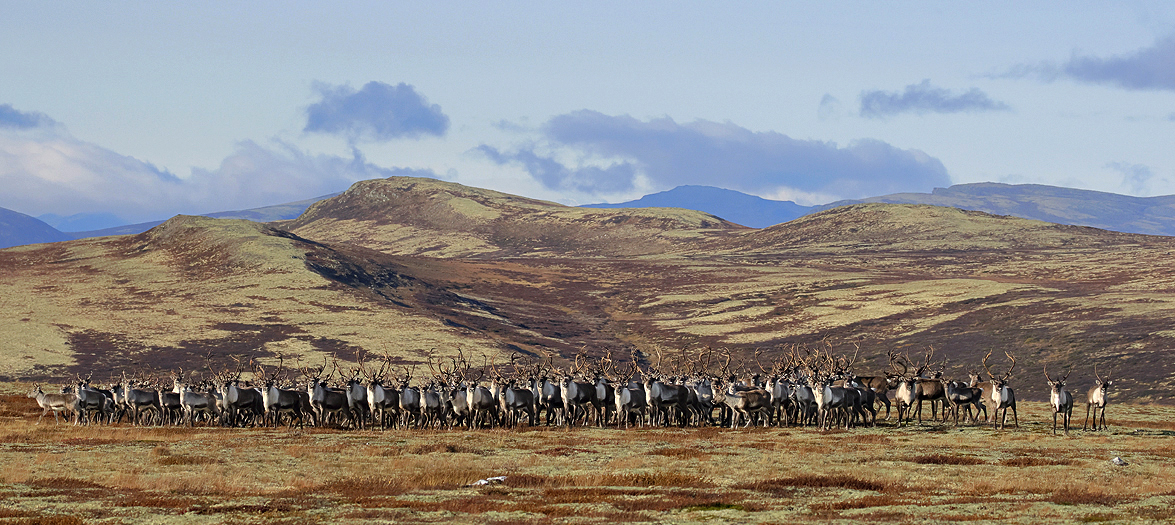
Reindeer herd in Rondane Mountain Range.
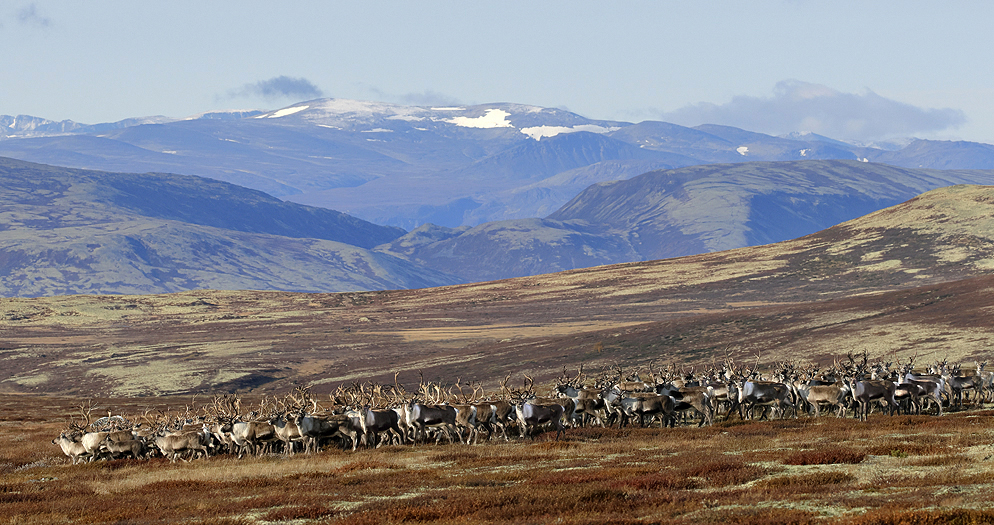
Reindeer herd in Rondane Mountain Range.
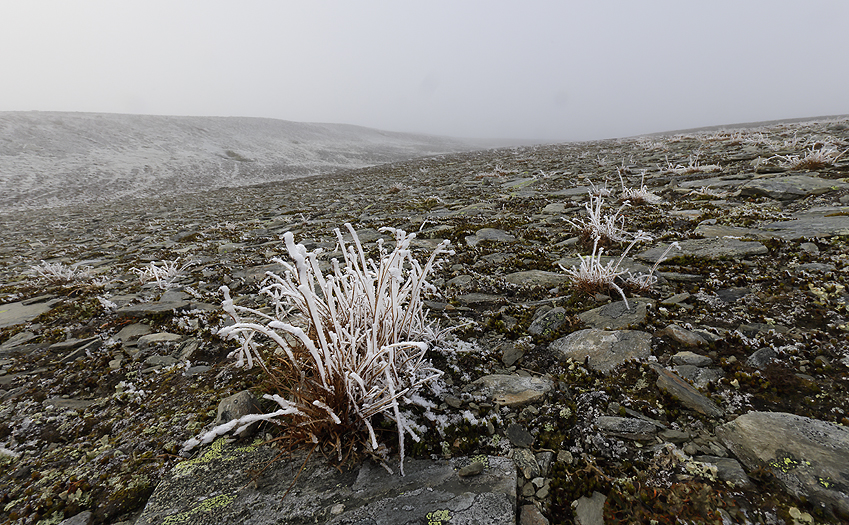
Moving up in the higher areas in Rondane Mountain Range the weather becomes more cloudy and cold with icy vegetation.
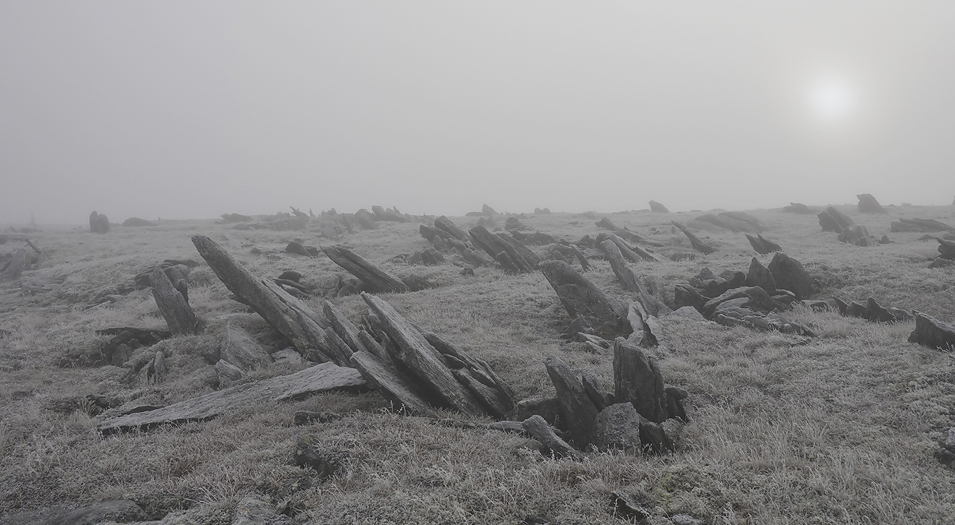
High up in the mountain the misty world take over. Here we see stones which have been moved into this position due to frost.
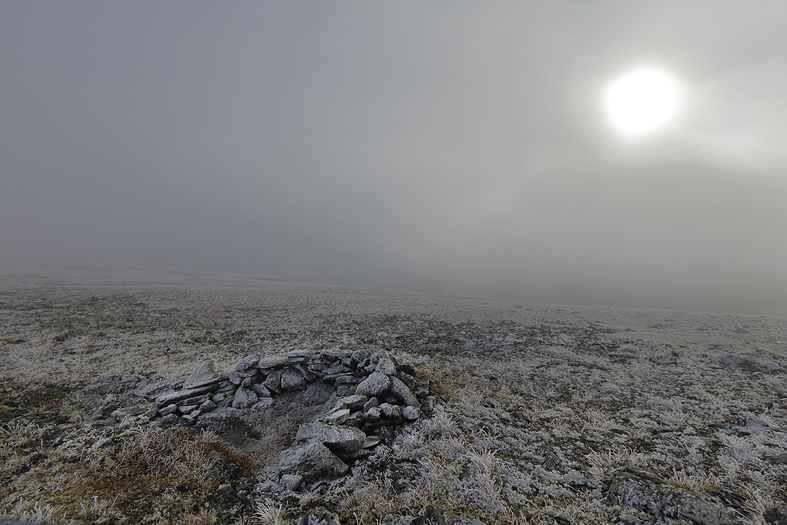
An interesting Reindeer Hunting Blind from the Viking Age show up in the fog. When sitting down here for a while the thoughts automatically comes to how our ancestors once lived and hunted here.
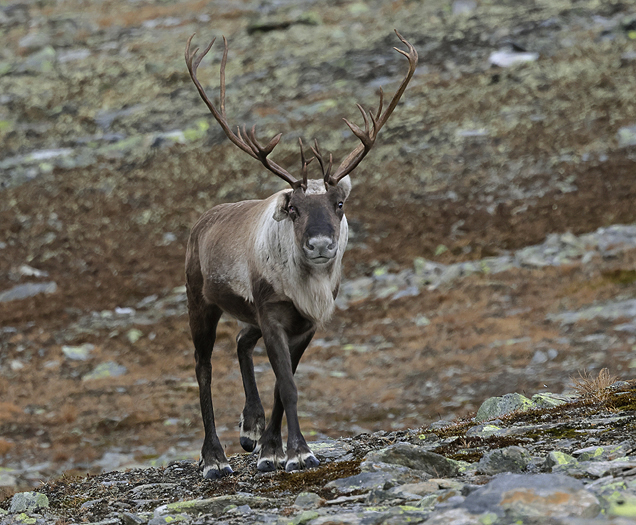
Later that day, on the way down from the higher areas a lone Reindeer Bull suddenly approached.
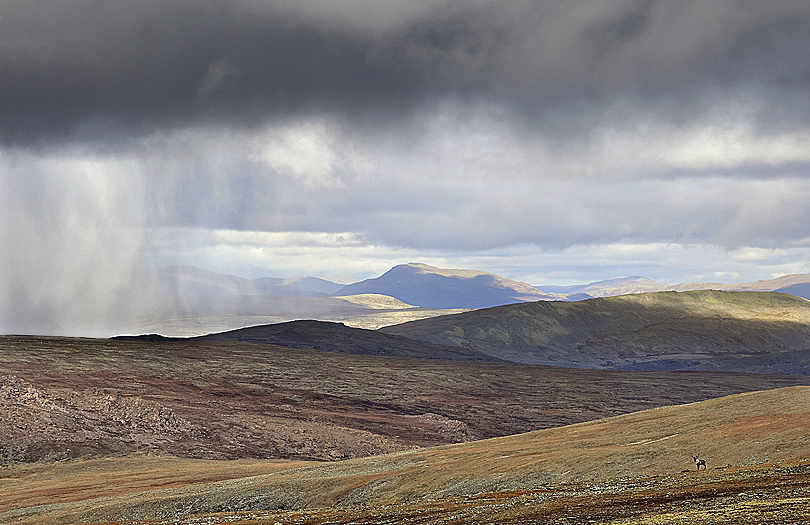
The unstable weather continues with heavy snow/hail showers. Note the watching Reindeer Bull far away on the lower right side of the image.
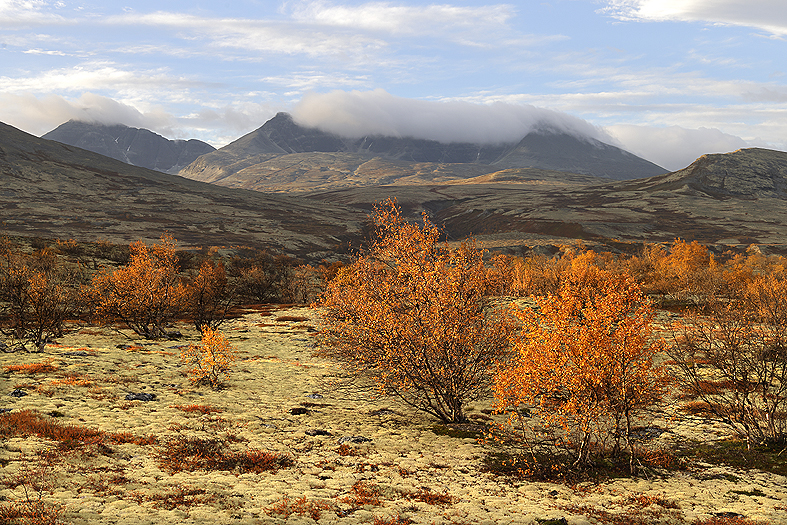
Lower down in the Rondane Mountain Range we are met by vegetation again.
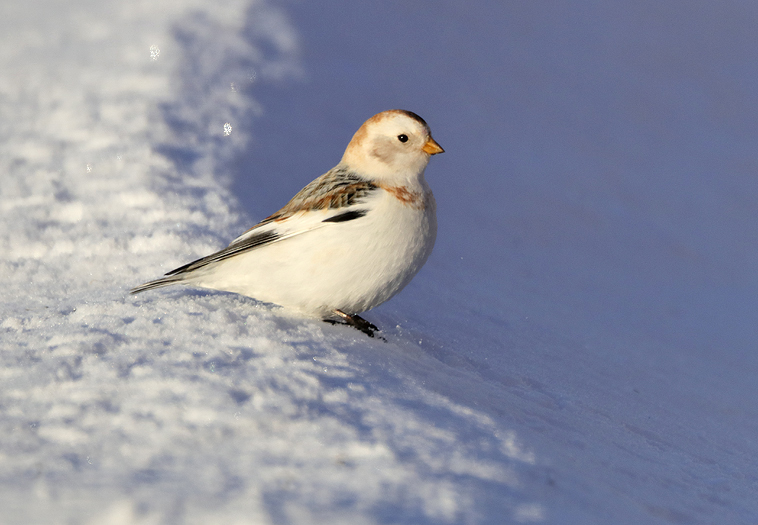
I autumn there are flocks of Snow Buntings in the area. Here is one in winter plumage who has found a snow patch to rest on. PAP.
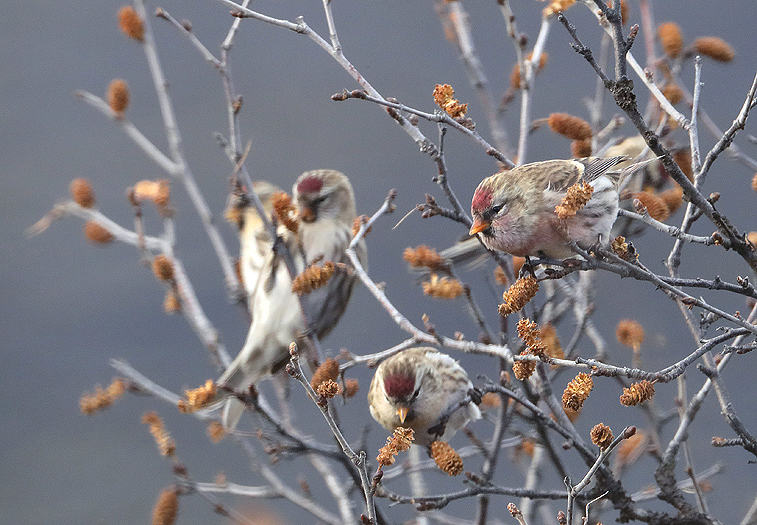
Also the Redpolls congregate in autumn. Mostly Common Redpolls are seen here, but now and then some Arctic Redpolls join the flocks. Redpolls are very fond of Birch seeds. PAY.
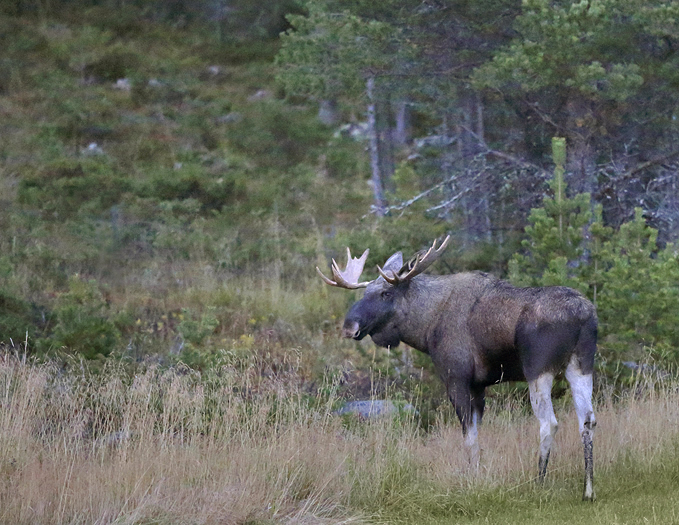
In the very low areas the Moose rules the woodland.
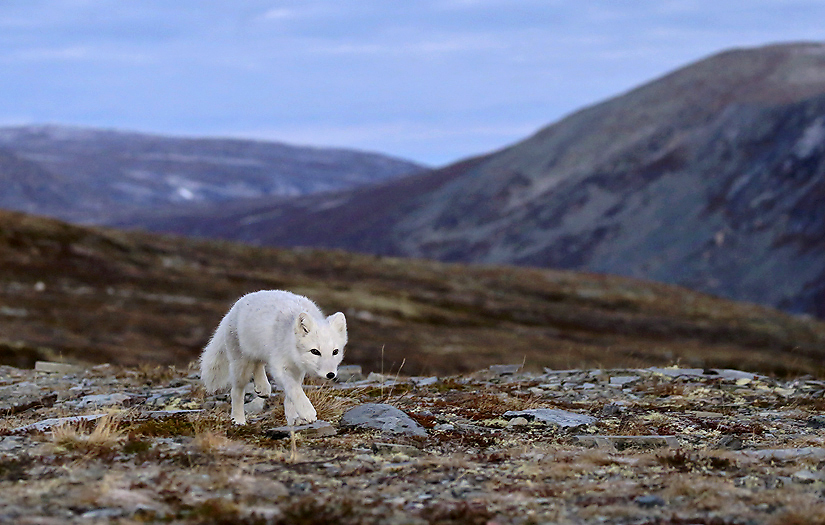
In the near by Dovrefjell Mountain Range the Arctic Foxes are soon finished changing to winter fur. Also they have more challenging times now due to the low number of Rodents. PAY.
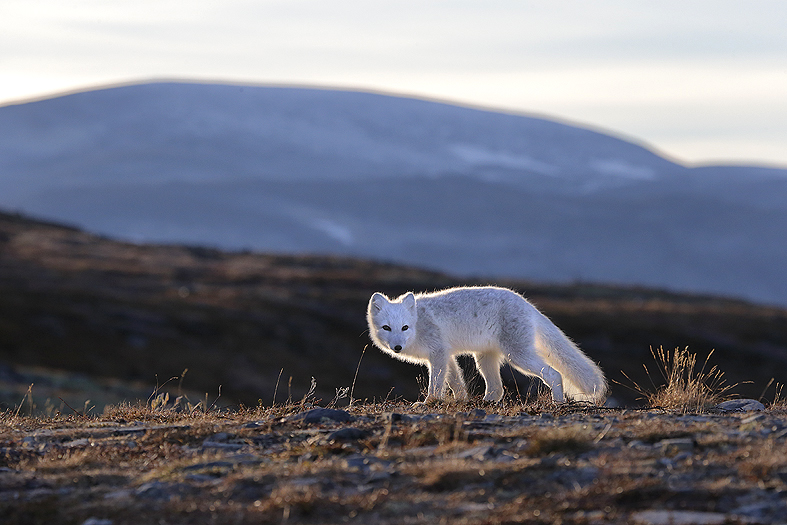
Arctic Fox an early morning. PAY. More images of Arctic Fox can be seen in the “Arctic Fox” gallery.
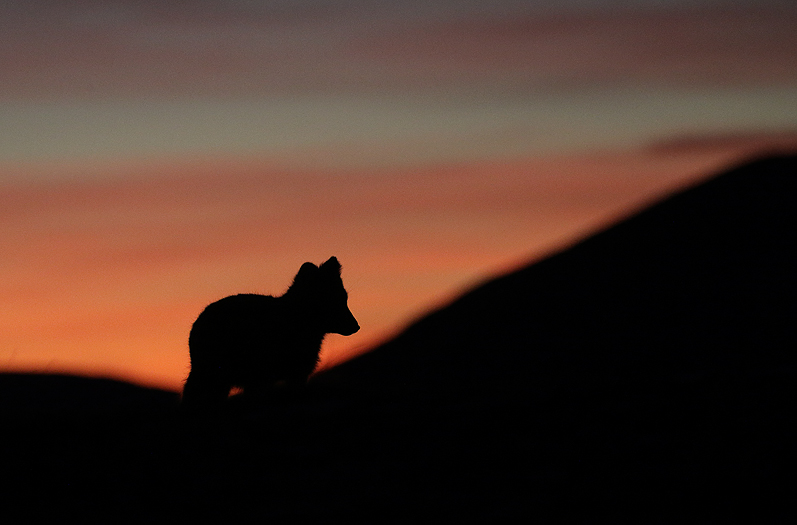
When the sun sets one day late on the trip it is time to say goodbye to the wildlife in Dovre and Rondane Mountain Ranges. PAY.
END.
________________________________________________
________________________________________________
SUMMER IN THE SOUTH NORWEGIAN MOUNTAINS, July-2023.
After a week observing wildlife etc in the Langfjella mountain range I would like to share a selection of photos from the trip.

The mountain range are influenced by the Atlantic Ocean Climate, causing mixed weather. The highest areas stretches from 1400-1600 m above sea level and include the Rjuven Mountains.
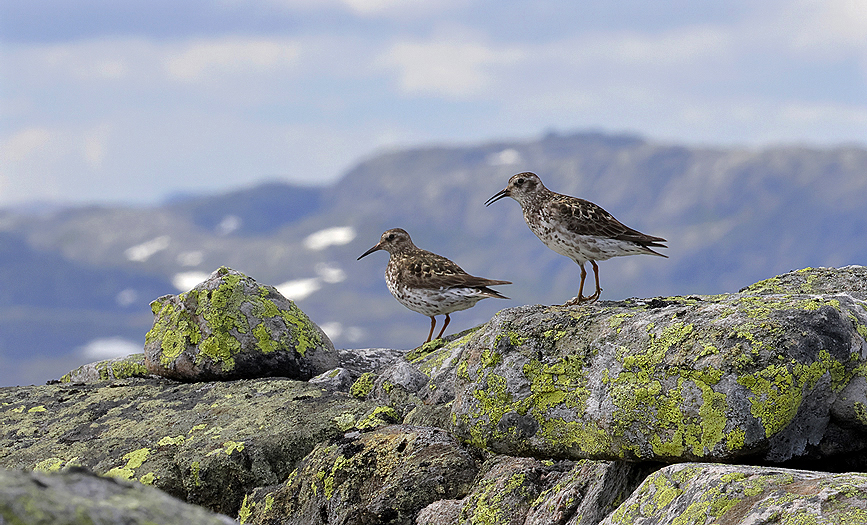
The highest elevations of the mountain range are extremely barren with very little vegetation. In these areas several pairs of Purple Sandpipers nested.
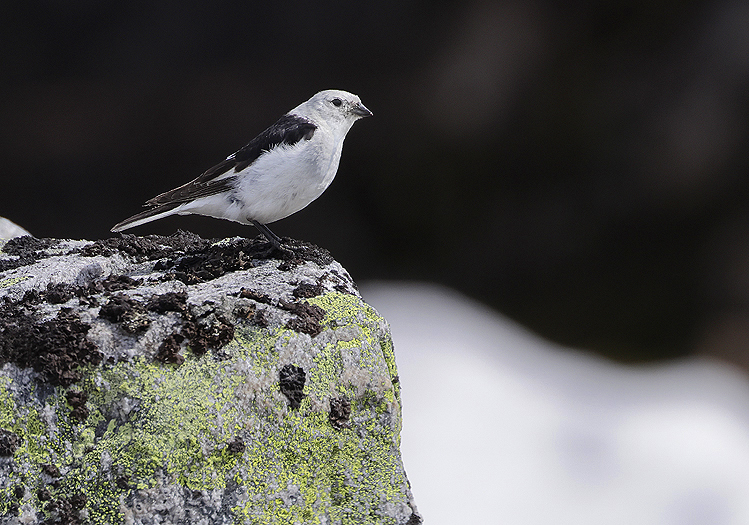
In these barren areas the Snow Bunting also thrives. This is the southern limit in Norway for nesting Snow Buntings
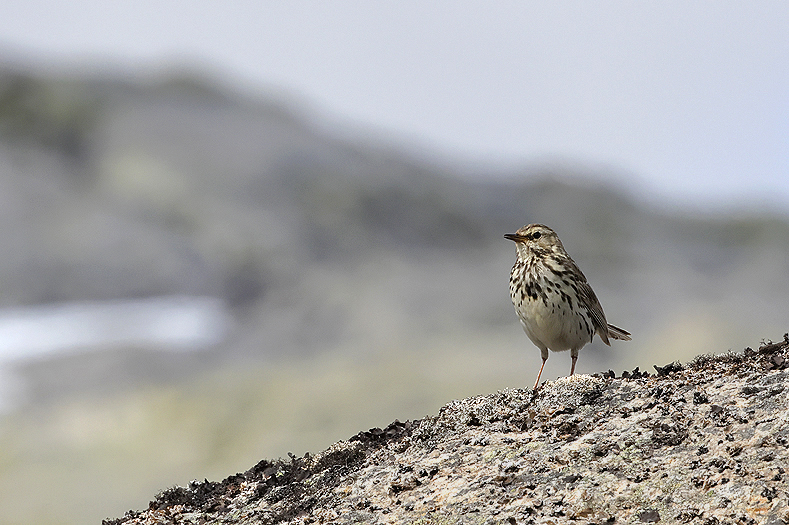
The Meadow Pipit is to be found all over the area and is the most common bird to see here.
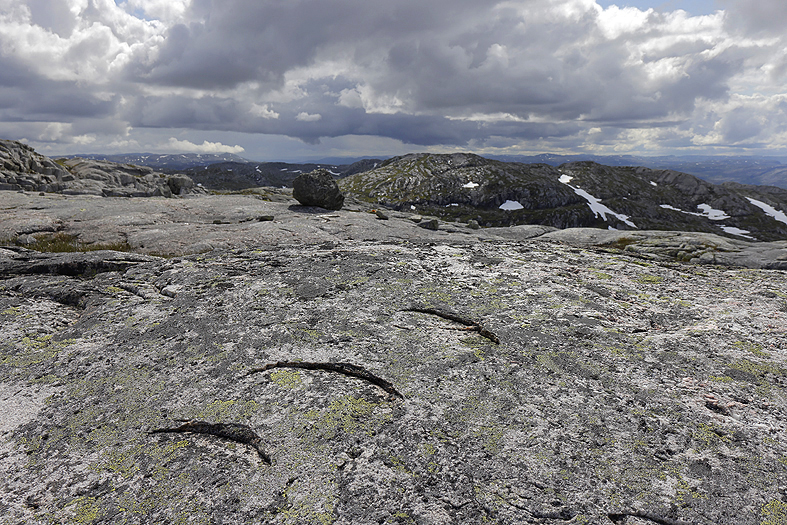
The lack of vegetation shows us good insight to the geological processes which together with erosional processes have formed the landscape. These Sickle Marks were formed when boulders frozen in the bottom of the ice flow pressed against the bed rock surface during the last ice age. The arches point in the direction of the ice`s movement..
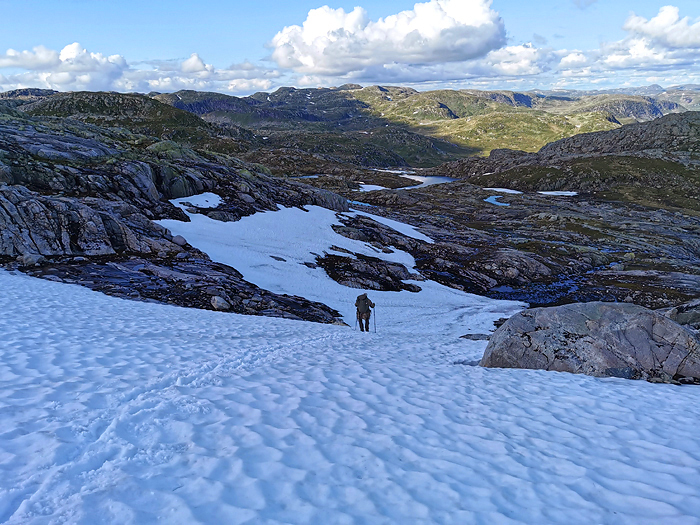
Returning to base camp from the highest peaks before dusk arrival. These mountains are characterized by large amounts of snow and where huge snow patches can be present all summer.
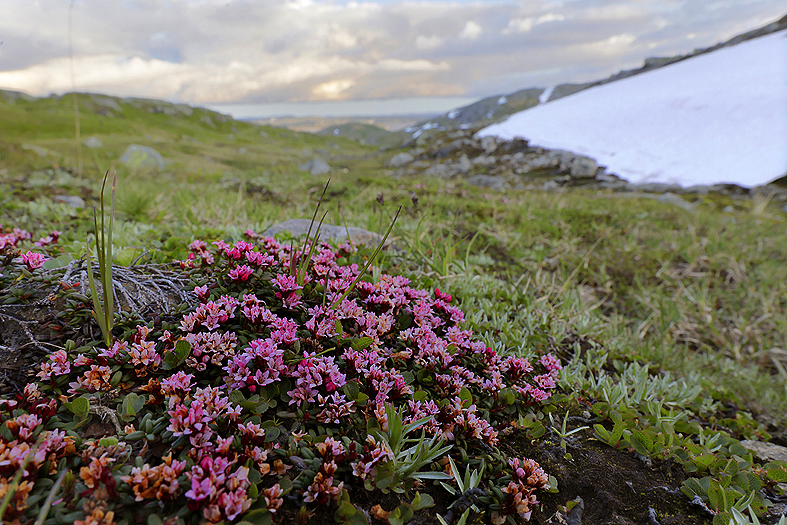
Alpine Azalea. Below the highest areas beautiful flowers can found, especially below melting snow patches that together with the sun gives excellent living conditions for them.
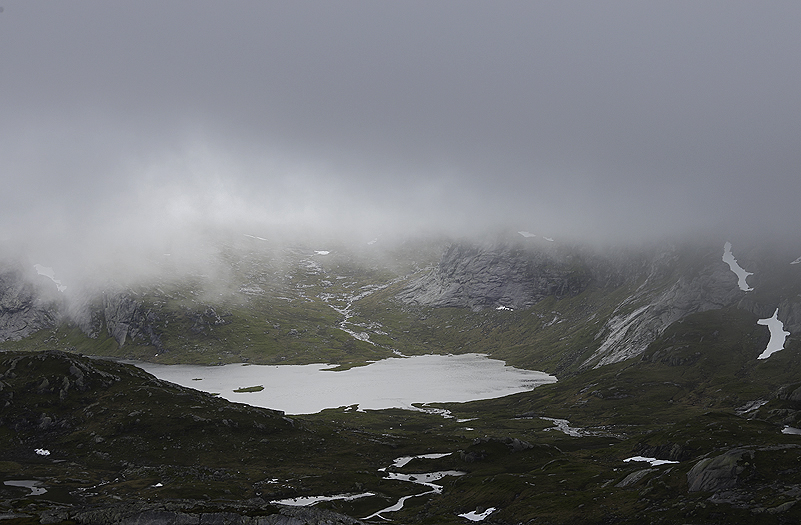
As mentioned earlier this mountain range are influenced by the Atlantic Ocean Climate and therefor causes mixed weather. We really experienced this and had all kind of weather you can imagine in the time we were there.
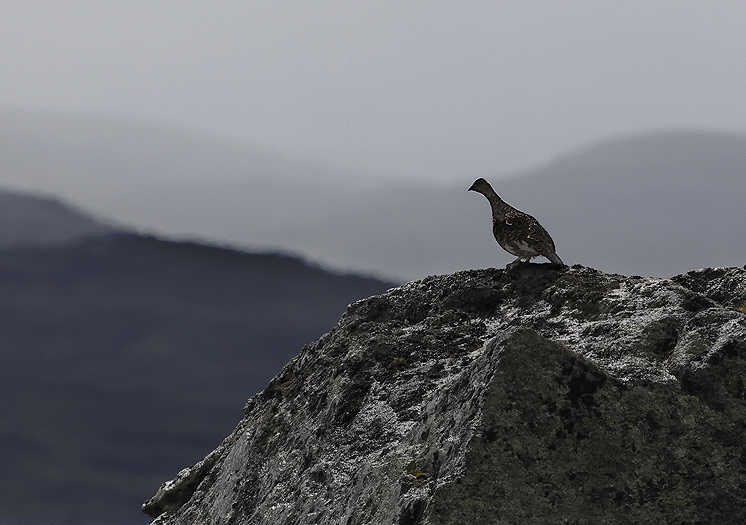
Ptarmigan after a heavy rain shower.
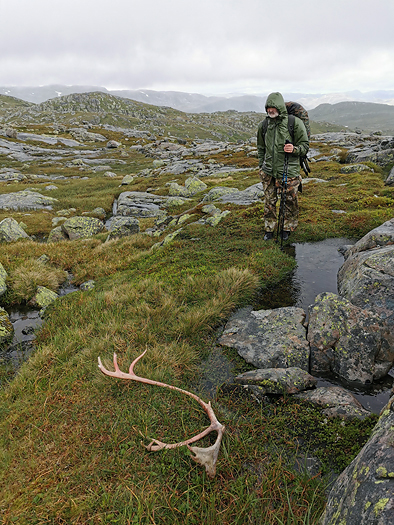
After some weather clearing we continued our hike in the Langfjella mountains. These mountains hosts the southernmost population of Reindeer in Norway (“Setesdal/Ryfylke” population). This population, as most other populations of wild Reindeer in Norway are endangered due to diseases caused by milder climate, human prevalence (i.e. roads, cabins, dams for hydro power station and human “traffic” in general). As described in earlier blog posts this specific Reindeer population have the most severe living conditions of all populations in Norway due to the influence of the humid Atlantic Ocean which amongst others cause non-ideal winter pastures.
Here we take a look at a Reindeer Bull antler. The Bulls loose their antler after the rutting time, normally in November and December months.
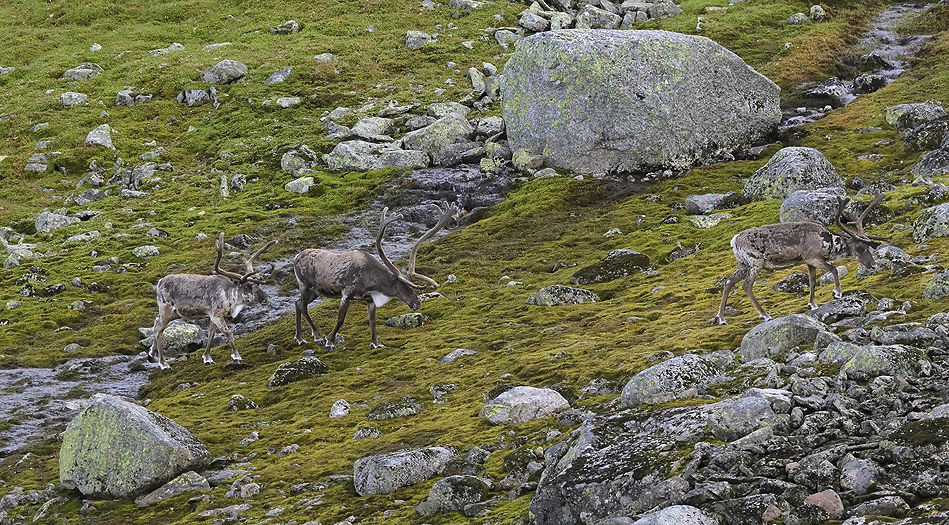
Suddenly a couple of Reindeer showed up between the rain showers.
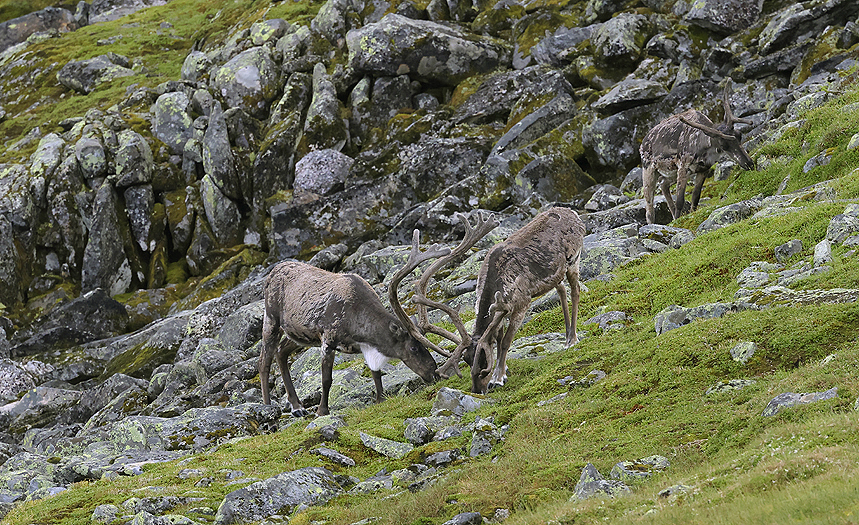
Grazing Reindeer Bulls. These mountains have excellent spring and summer pastures with much fresh herbs and grass watered by melting snow. The winter pastures are however not good with sparce Reindeer Lichen and where the land is covered by meters of snow. Including this, the snowy land in winter time frequently is covered of ice caused by freezing up after the more and more frequent “warm low pressure systems” with rain instead of snow in mid-winter.
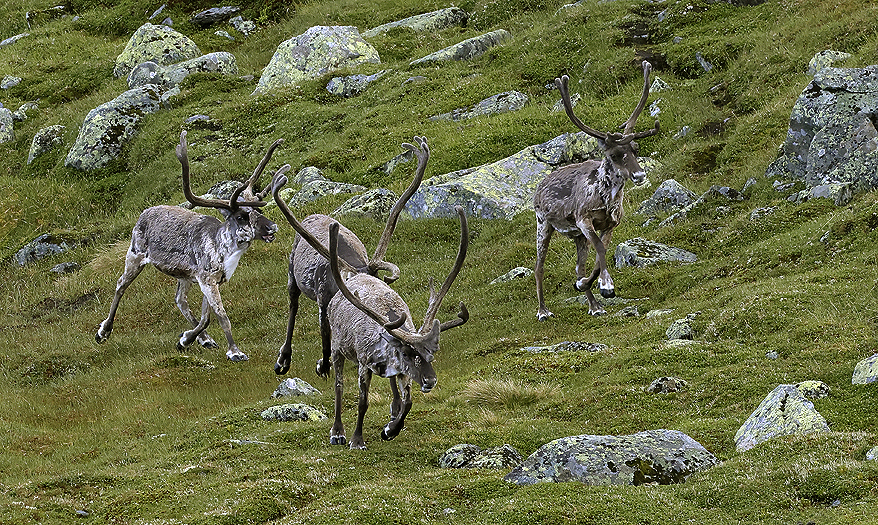
Part of a Reindeer Bulls herd on the move. They feel vulnerable and increase their speed when closing into a narrow pass.
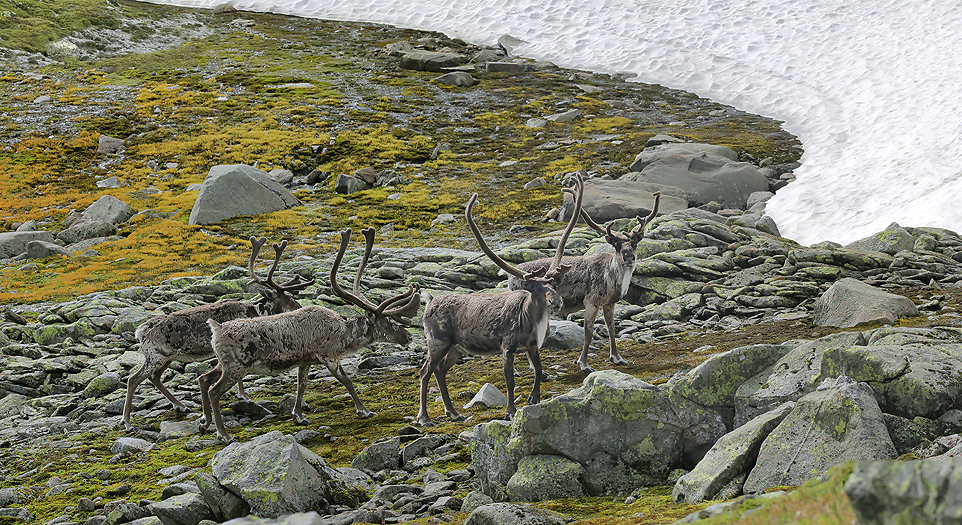
Part of a Reindeer Bull herd in the narrow pass. More new images of Reindeer can be seen in the “Reindeer gallery”. Stitch.
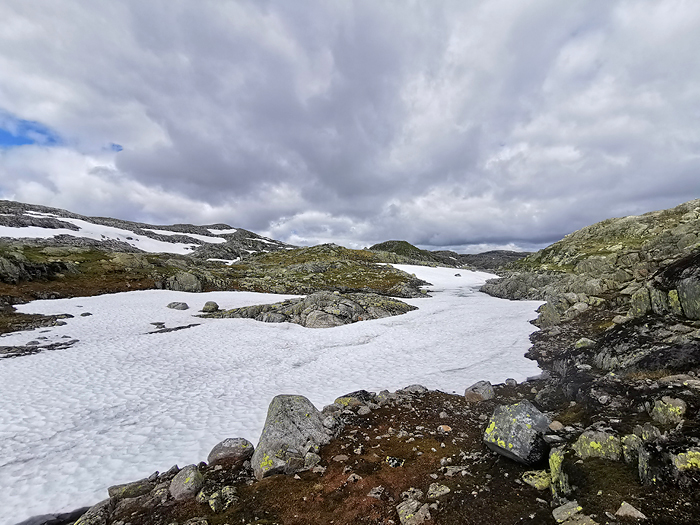
Part of the land below the highest peaks.
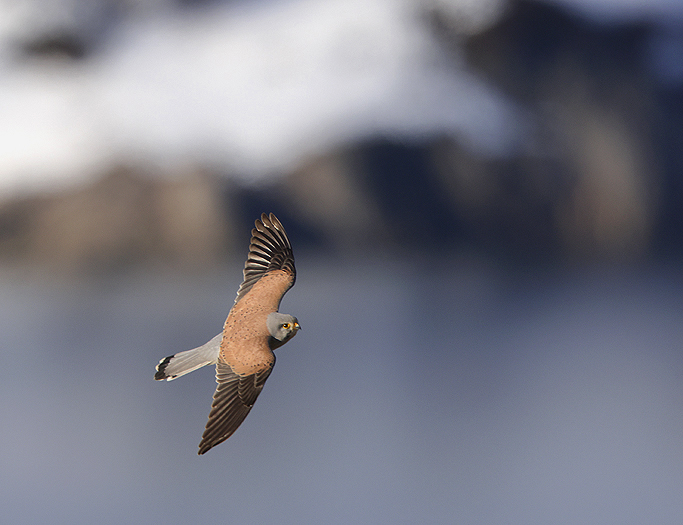
A pair of Kestrels occupy a cliff. Her we see the beautiful male. PAY
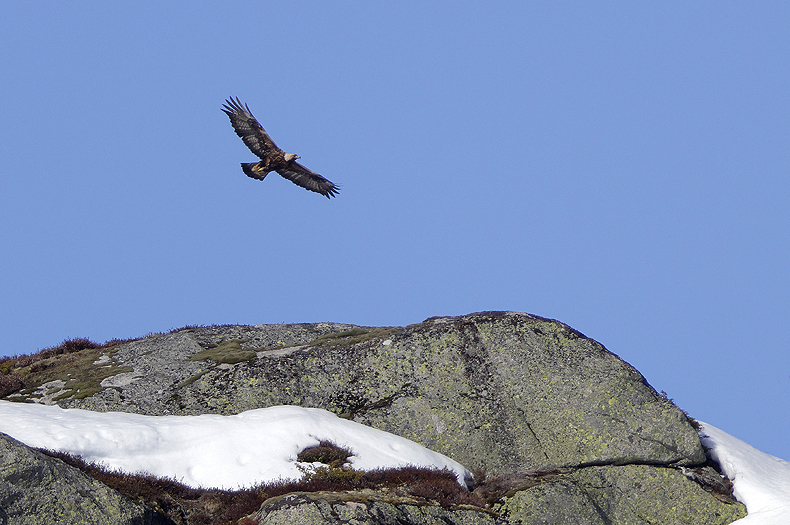
Below against the tree line the Golden Eagles have their territory. PAP
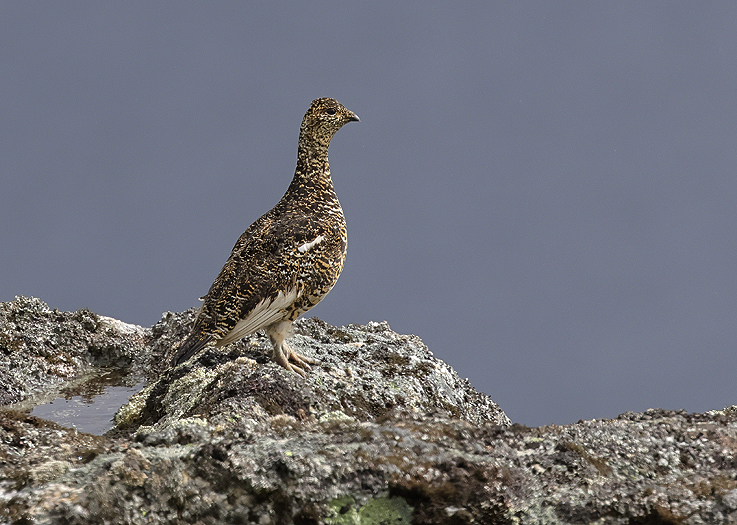
Ptarmigans are seen all over the mountain range. A bit lower in numbers this year as the rodent population is in rather low numbers. Here we see a female.
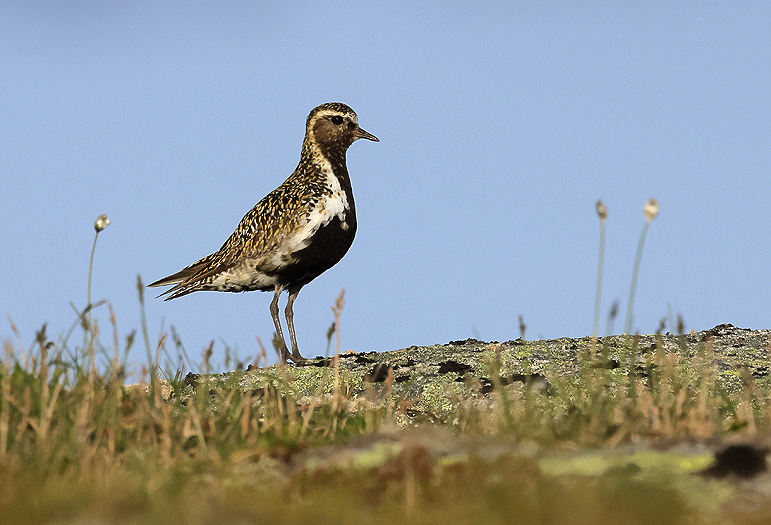
Golden Plowers are commonly present in the Langfjella mountain range.
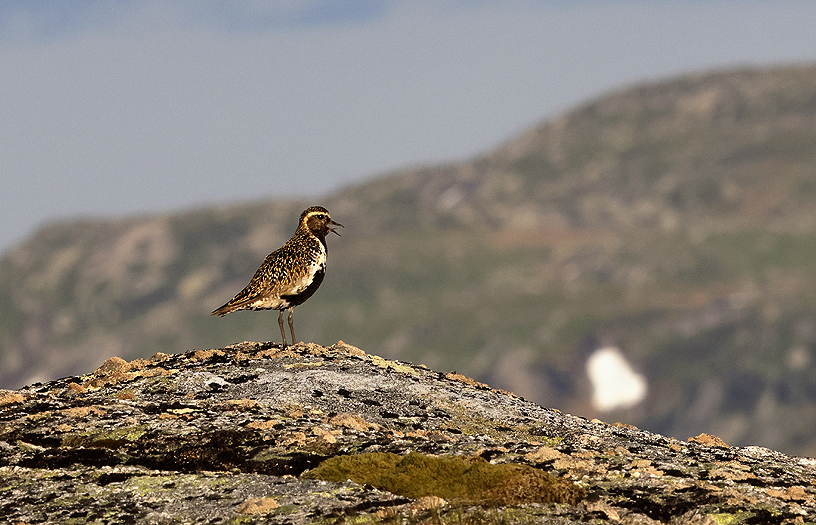
Golden Plower a late sunny evening.
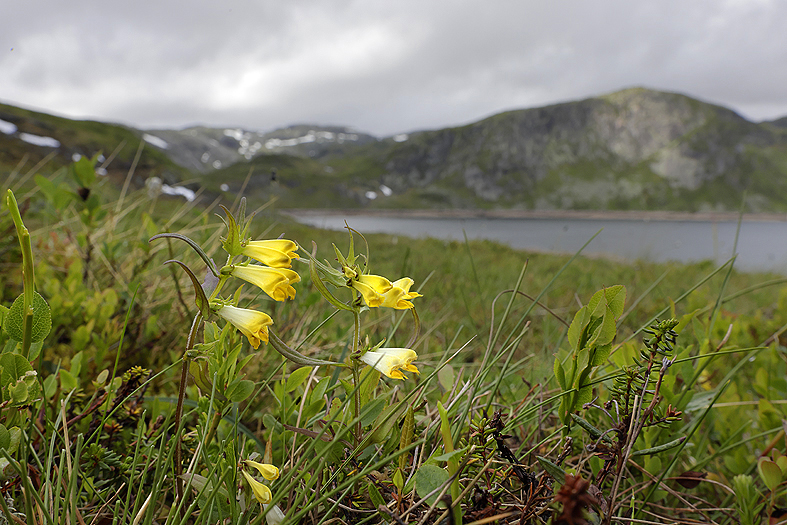
In the lower areas of the mountain range, but still over the tree-line we find Common cow-wheat flowers.
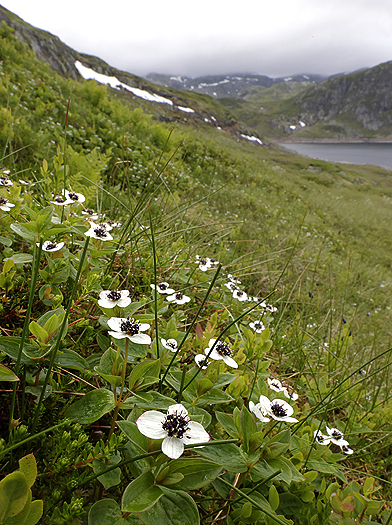
…and also the Lapland (Dwarf) Cornel.
END.
________________________________________________
________________________________________________
SPRING IN SOUTHERN NORWAY, April & May-2023.
Below is a selection of images from mountains to sea in the always beautiful and exciting spring time. Also this year the spring arrived late, with lower temperatures than average.
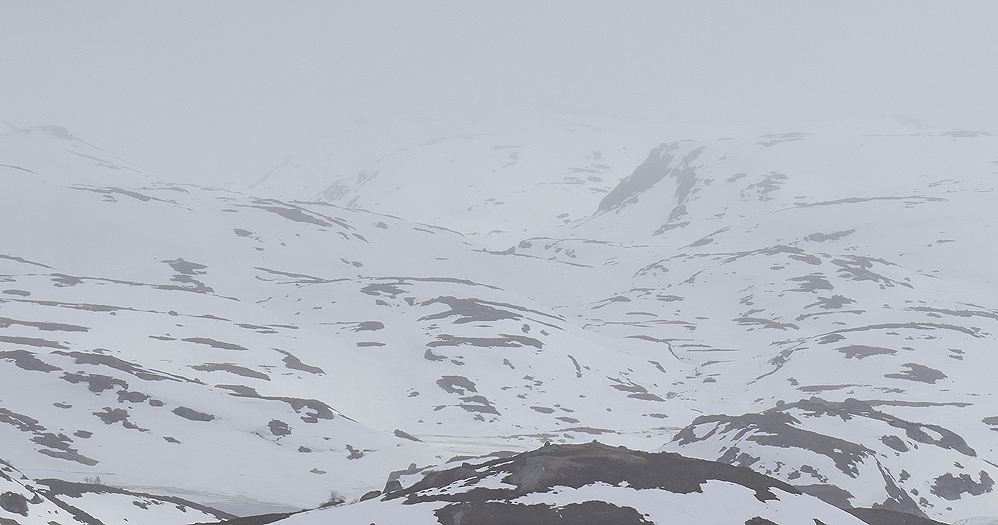
A glimpse of the conditions in the mountains in the last days of May. Still very winterly as we can see. Navigation when travelling in these areas was some time done using GPS because of foggy weather.
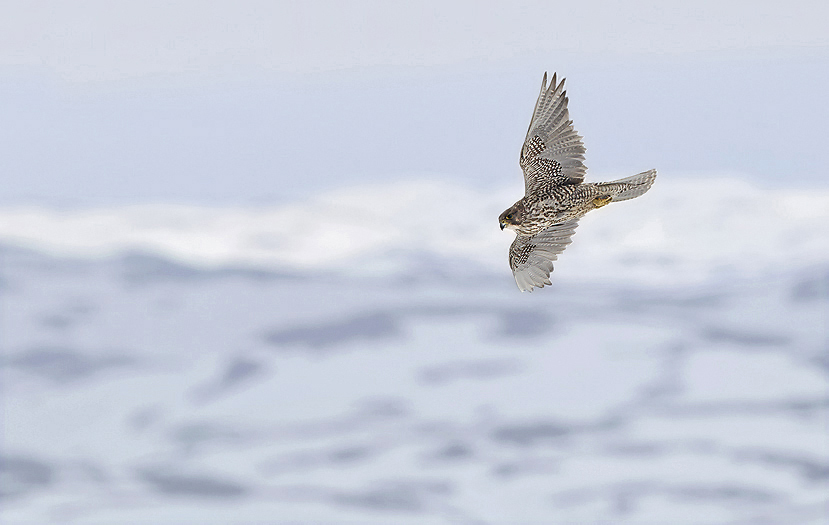
Due to low numbers of Ptarmigans the Gyrfalcons did not nest this year, but stayed in their territory. Here we see the male Gyrfalcon.
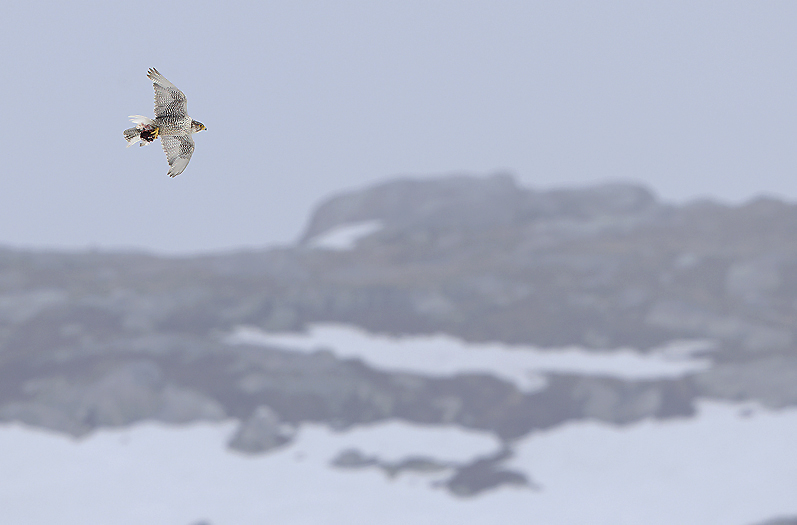
The female Gyrfalcon have caught a Ptarmigan
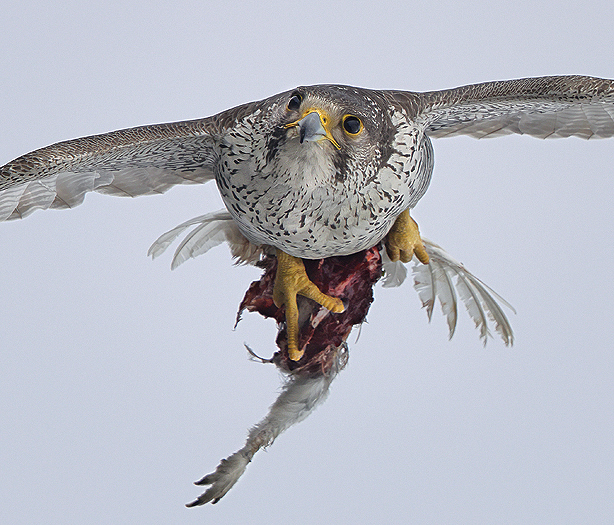
Close up study of the female Gyrfalcon. More new images of Gyrfalcons can be seen in the “Gyr Falcon” gallery.
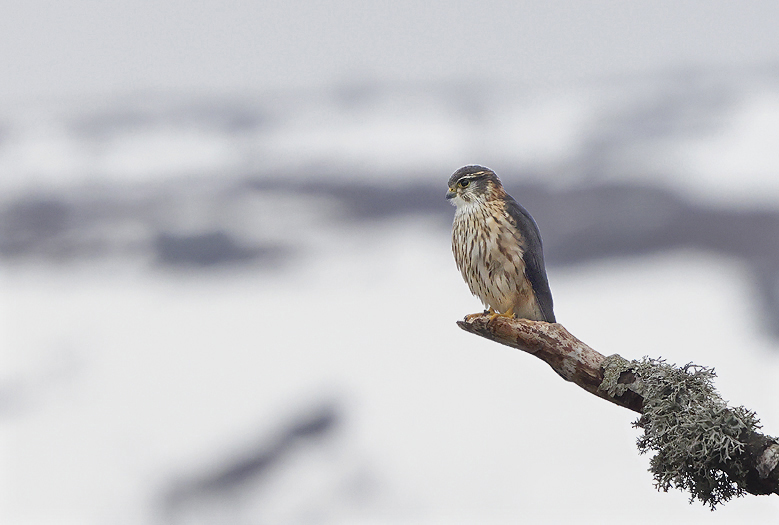
The Merlins are not affected by low numbers of Ptarmigans or rodents for nesting. They nest both below and over the treeline. Here we see the male.
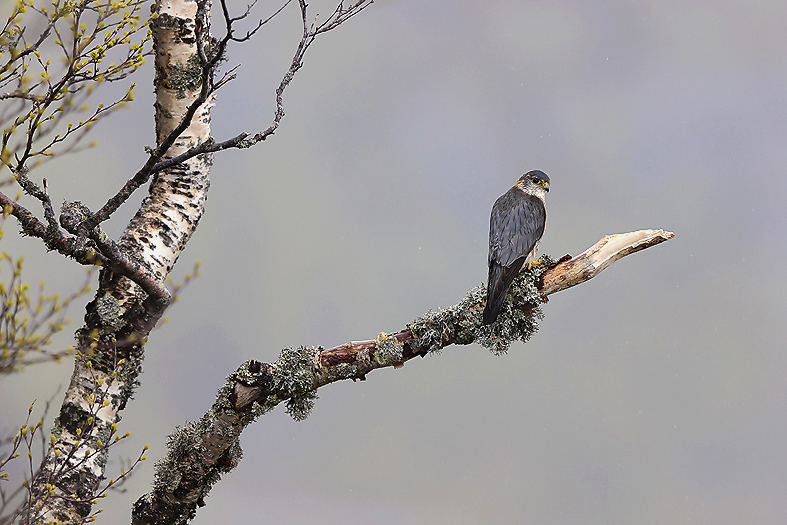
Male Merlin. More images of Merlins can be seen in the “Merlin” gallery.
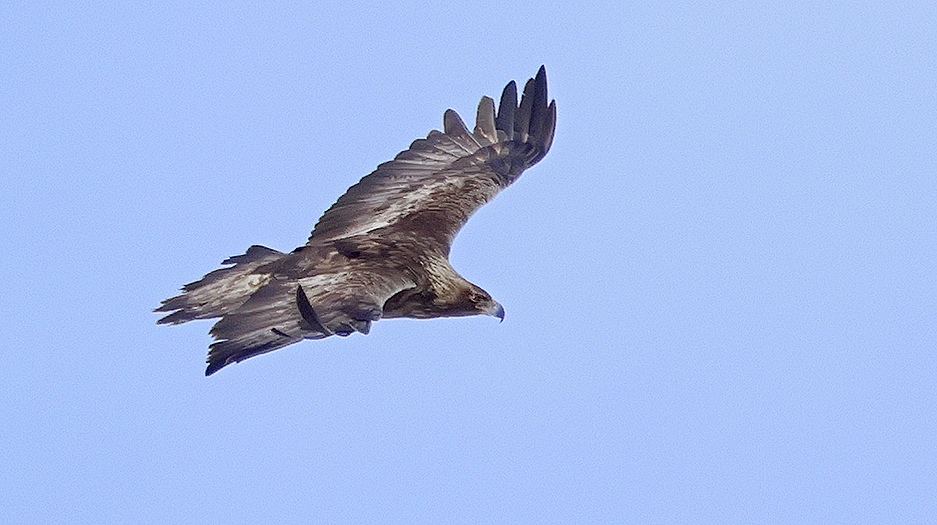
Adult Golden Eagle searching for prey at the treeline.
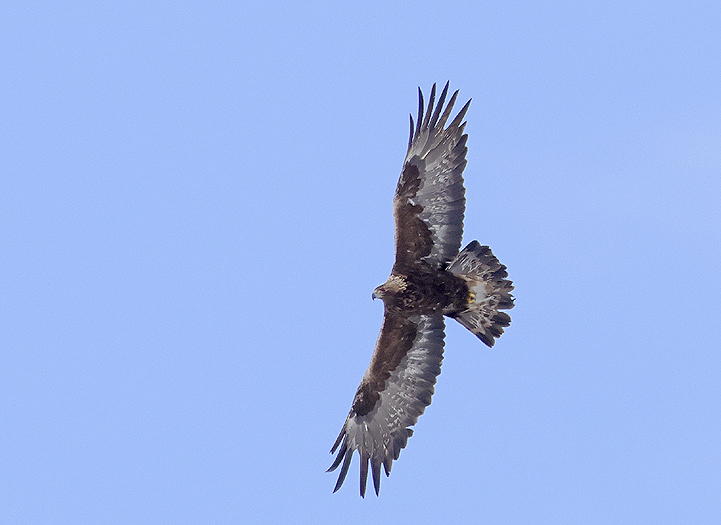
Adult Golden Eagle. More images of Golden Eagles can be seen in the “Golden” Eagle gallery.
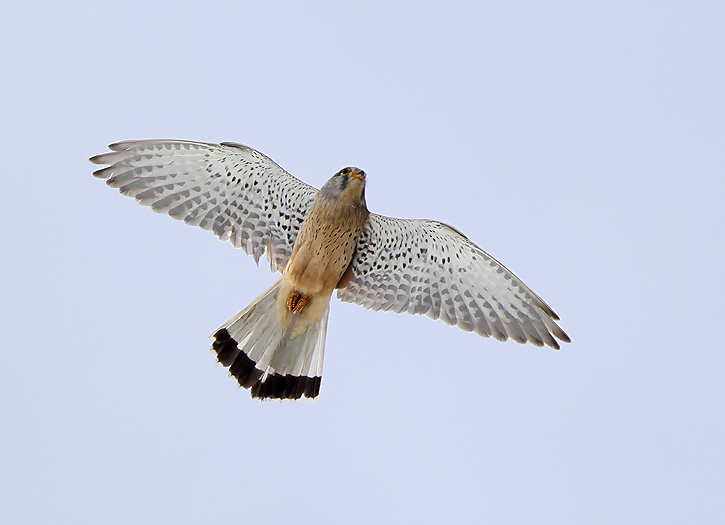
The Kestrels are in a certain degree dependent of rodents to nest. Her we se a male searching for prey in the still snow covered landscape high above the treeline.
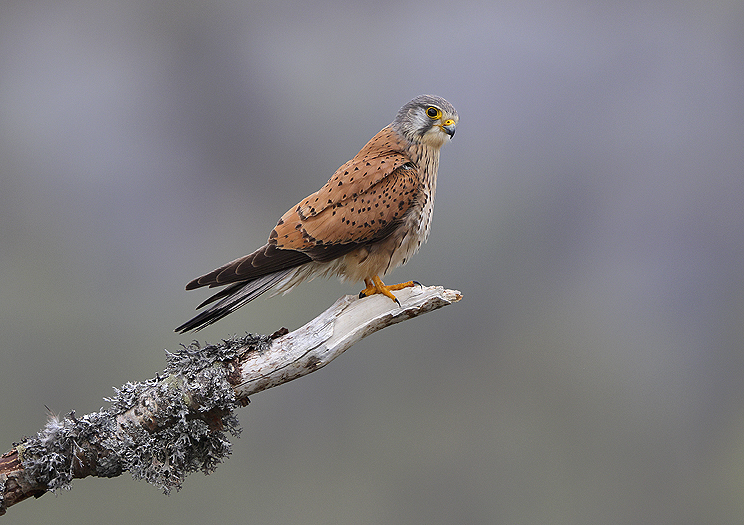
Male Kestrel. More images of Kestrels can be seen in the “Kestrel” gallery.
We now travel down to the sea side, that means a bit westwards out in the North Sea to the fabolous archipelago of Håstein and Kjørholmane Nature reserve. Here there are myriads of wildlife containing Grey and Harbor Seals, seabirds, waders and much more interesting.
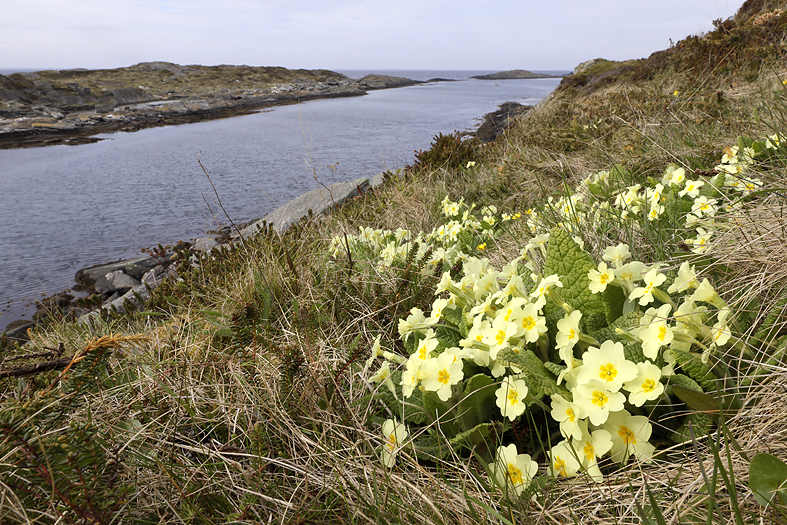
At the archipelago by the seaside the flowers are blooming in mid May. Here a Primrose which is among the most common flowers here.
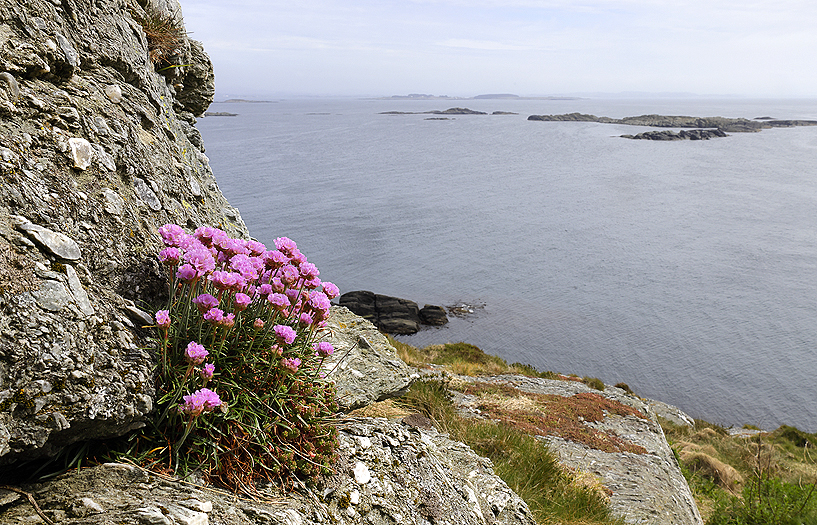
The Sea Thrift is perhaps the most common flower here. Note how well sheltered it growths, -this against the strong north and westerly winds that is dominating for the archipelago.
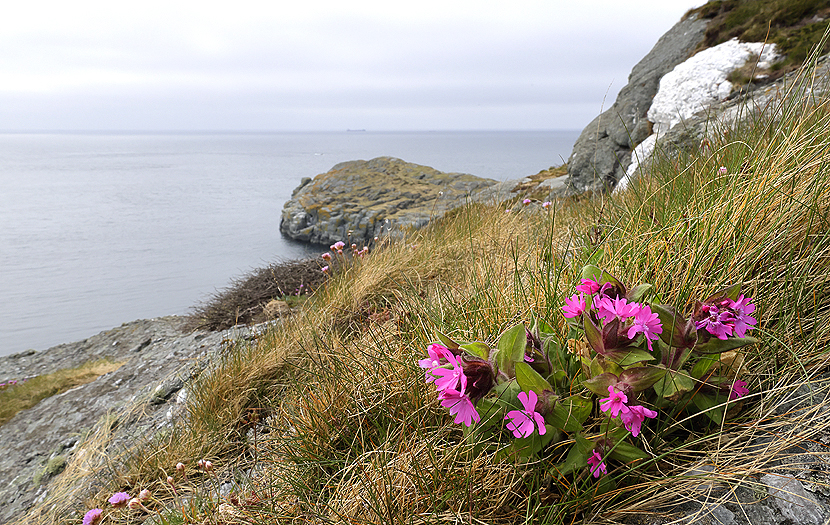
On some of the islands the Red Campion find so good growth conditions that the litterally can cover bigger parts of those.
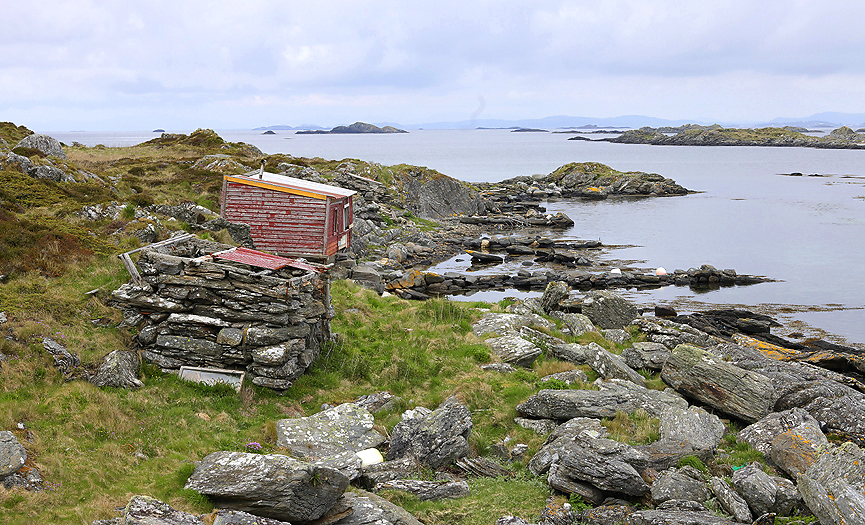
Lobster catching has been a tradition to fishermen for hundreds of years back in time at the archipelago, and this tradition continues. Here we see one of the tiny cabins the fishermen used in conjunction with this, and ruins of another.
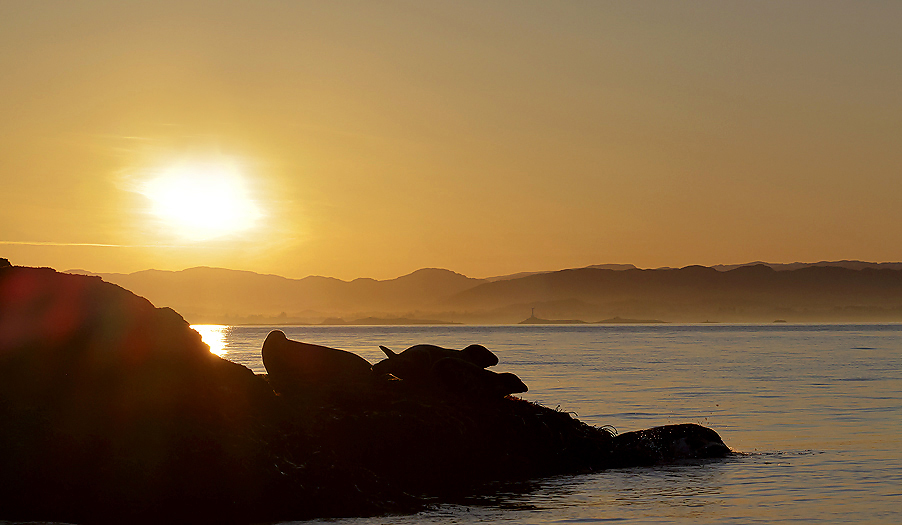
Sunrise at the archipelago`s inner-side with resting Grey Seals. More new images of Seals can be seen in the “Seals” gallery.
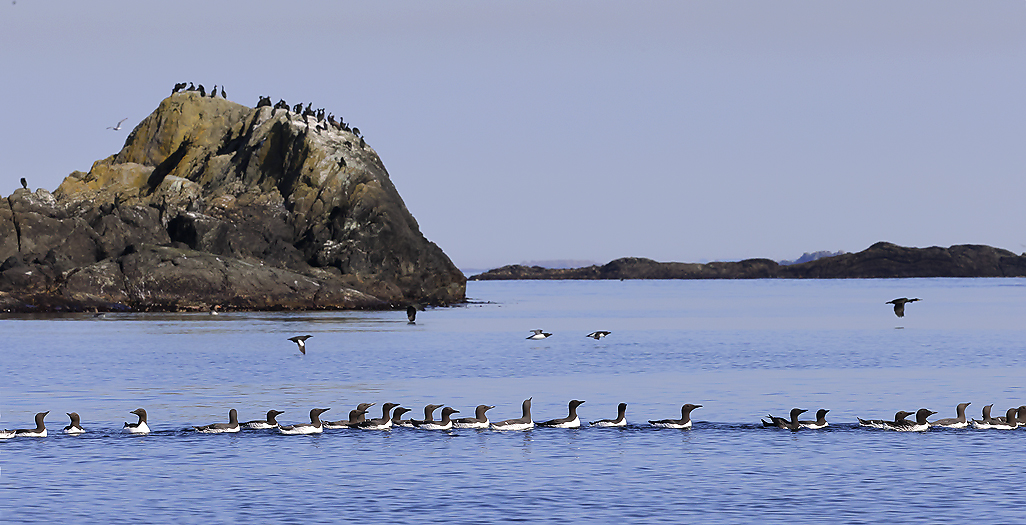
In April month the Guillemots really start to gather up at the archipelago for finding a partner. It is enjoyable to be out there when the sea is calm and the birds are active.
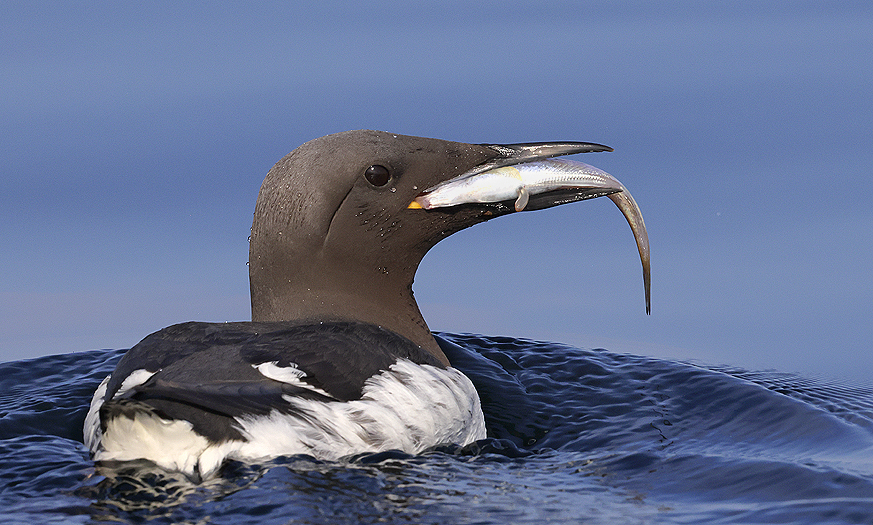
Later in the spring we experienced that the numbers of Guillemots and Razorbills had been severe reduced at the archipelago.It seems that only around 30% were nesting compared to the last 3 years (which was very good years for those species). In general, it is ormally it is lack of correct food that is the main reason for decline of seabirdfs. This Guillemots have caught a fish as wee can see, but a rather big one which are not suitable for the small ones in the nest.
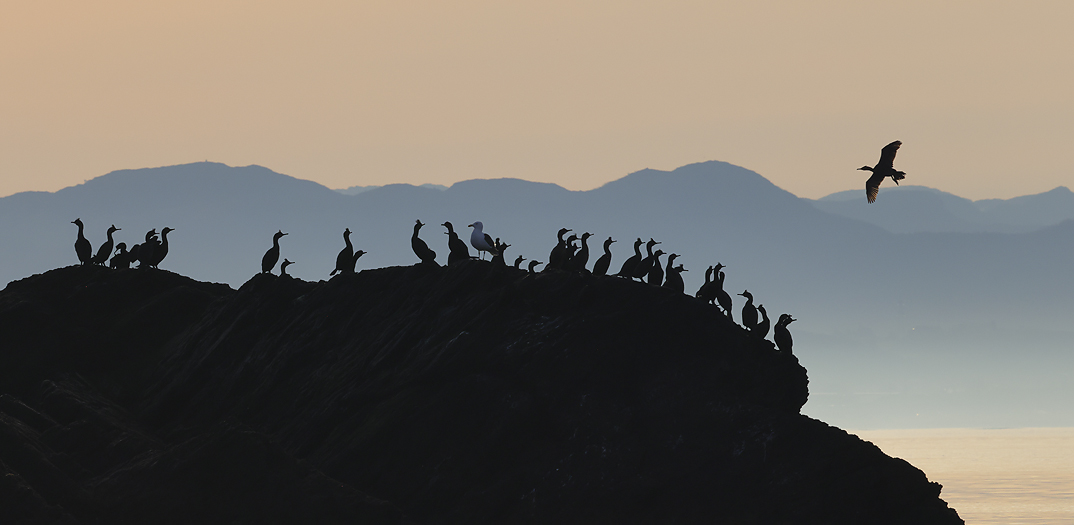
Shags are one of the other character sea birds at the archipelago. Here an early morning when they have returned to the cliffs for drying up after they have gathered food in the sea.
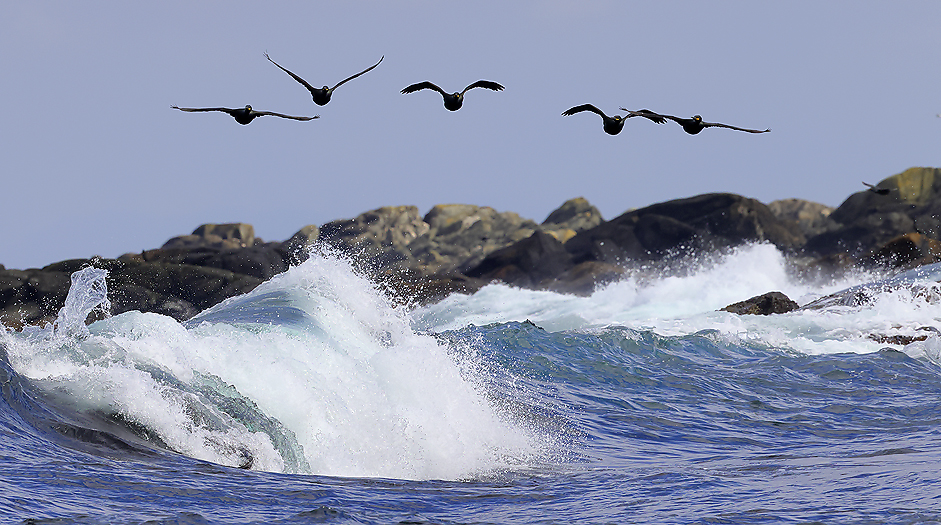
Shags. The early mornings are often rather calm at the archipelago, but later on the day the wind is often strong and with great swells, -especially on the outside of the archipelago.
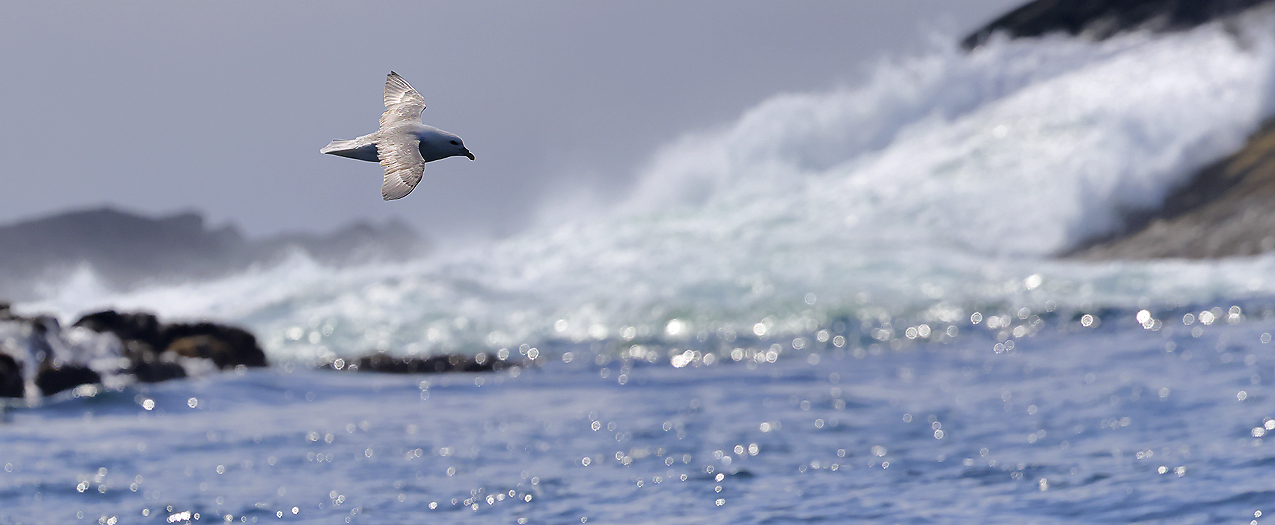
Fulmar by heavy swell against a land.
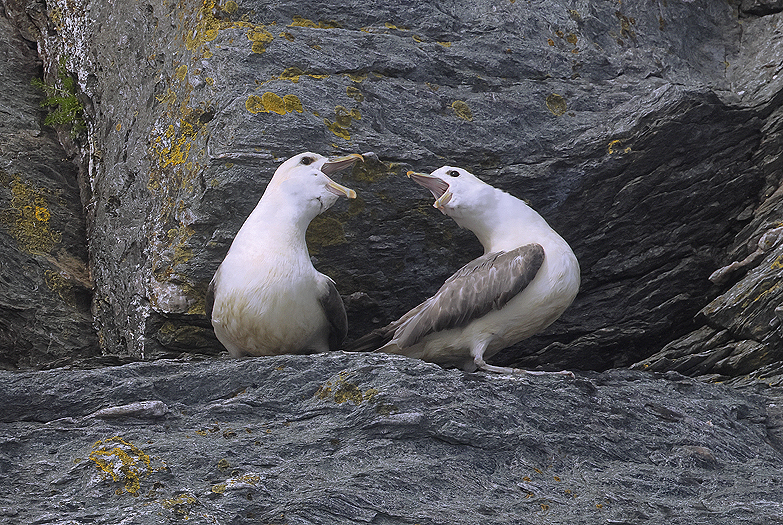
It is satisfying to see that the Fulmars are still nesting here. Those two are obviously pairing up. More new images of Seals can be seen in the “Seabirds” gallery.
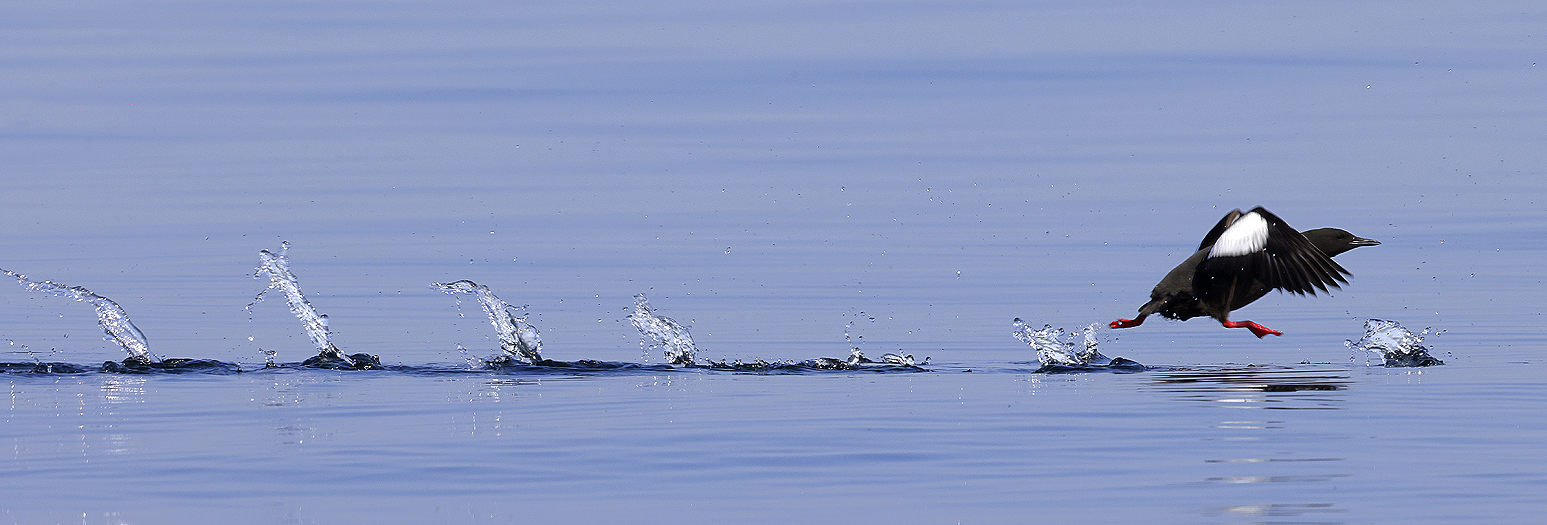
Rapid footwork is obviously needed for getting the Black Guillemot in the air.
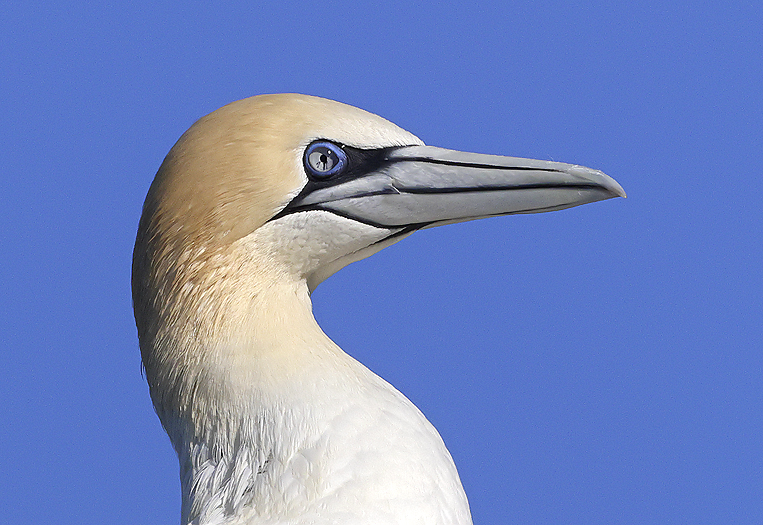
In early spring it could look like nesting of Northern Gannet might could happen for the first time in the archipelago. This because an adult one kept territory at an ideal nesting place on one of the bigger islands there. “Luckily” (?) it did not turn out to be so, which would perhaps meant that it was the start of change in bird species to a more southern fauna caused by climate change.
END.
________________________________________________
________________________________________________
WINTER MOMENTS FROM THE NORDIC COUNTRIES, February-2023.
From the Finnish Taiga to the Norwegian Mountains.
February is normally the coldest time of the year and with the biggest snow depth. It was therefor interesting to visit one of the Wolf packs in Finland to observe and photograph their behavior. It can be a real challenge as they normally are only active at night this time of the year. The study area is in No Mans Land between Finland and Russia where the animals live in relative peace and is not affected by hunting in such degree as in the countries behind each side of the border.
Below is a selection of photographs from the week in No Mans Land:
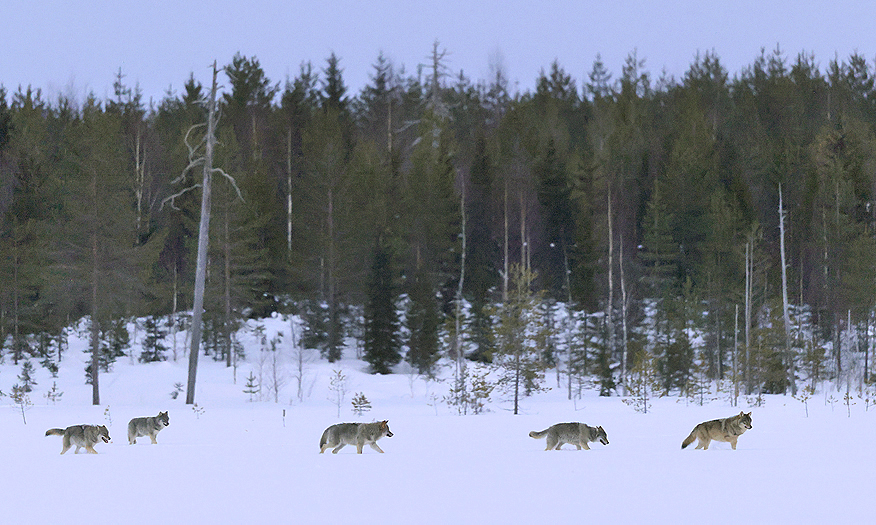
The Wolf pack with the Alpha female in front. The Wolf population in Finland is estimated to be between 200 and 250 animals.
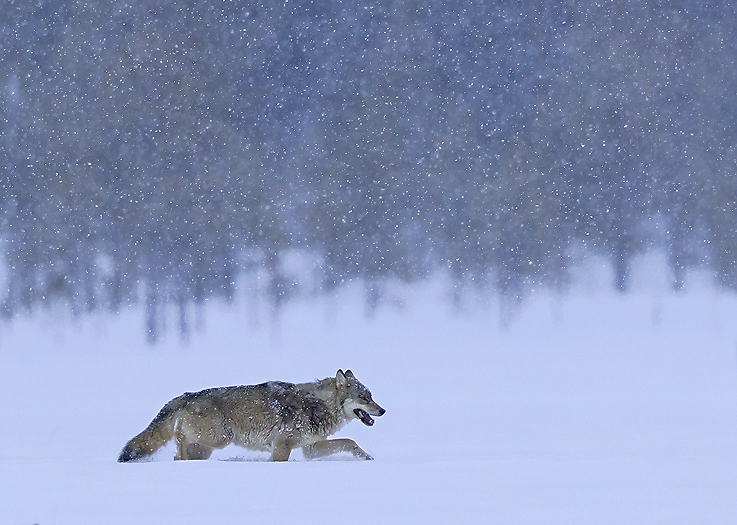
A male Wolf an early morning. More new images of Wolves can be seen in the “Wolf” gallery.
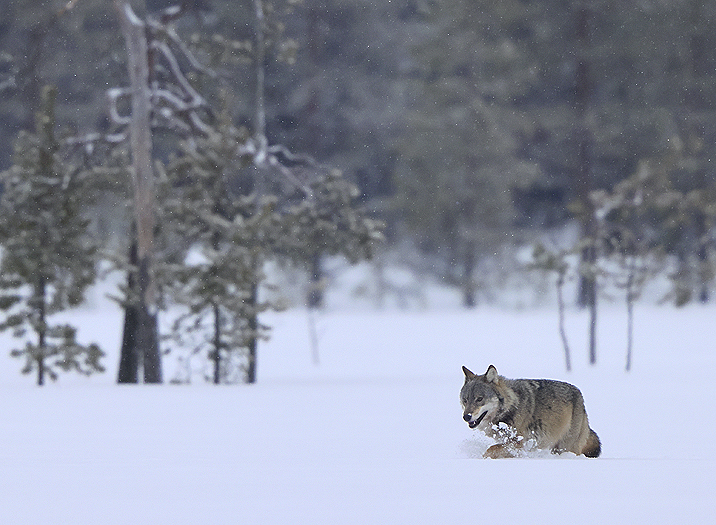
The snow depth is around 70 cm, temperature -28Deg.C.
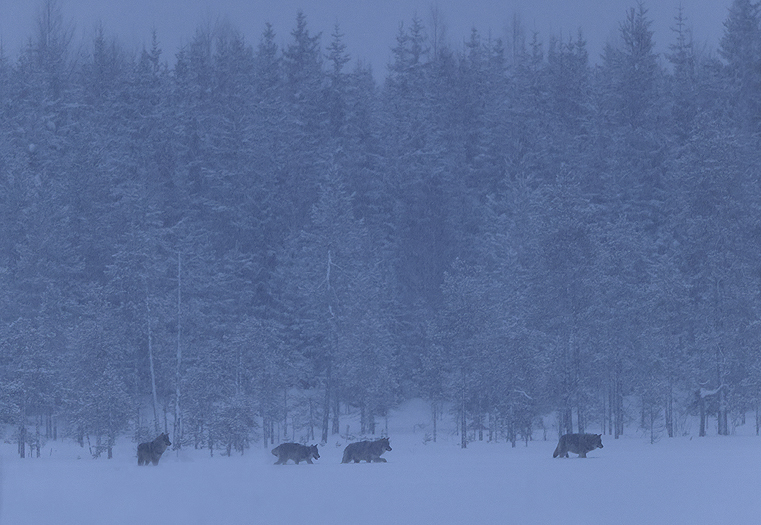
Wolf sightings like this is most common in the winter time, either before sunrise or after sunset as here.
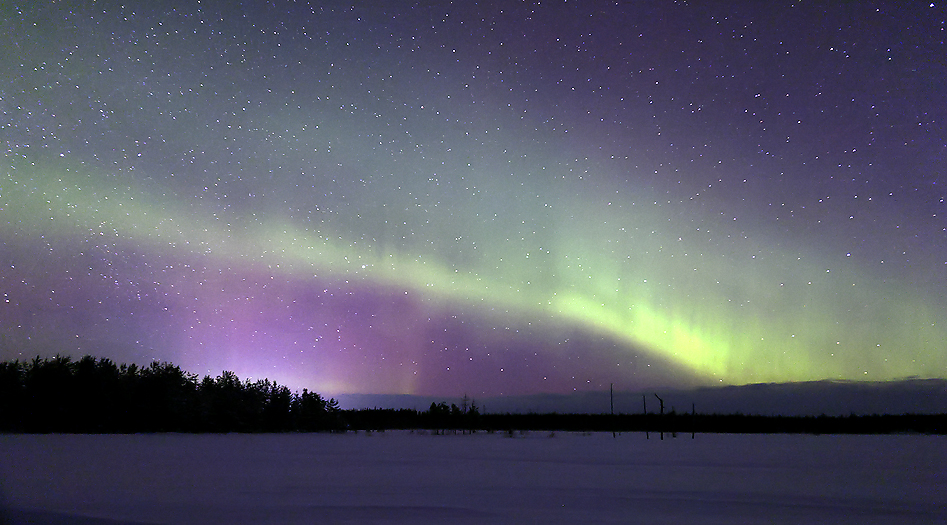
A beautiful evening with the Aurora Borealis which showed up here at the border between Finland and Russia.
Later in February. With ref to last year`s Blogpost “Reindeer survival in one of the most challenging winter climatic areas of Norway, Feb/Mar-2022” The report from the same time of the year is as follow:
Opposite to 2022 the condition was significantly more challenging for the Reindeer this year. Huge amounts of snow, and a mild period in mid January with rain up to 1300-1400 m above sea level obviously made the life for the southern most Reindeer population in Norway difficult. We experienced that the very few snow free areas was completely iced down which made the pastures unusable. Only one place one single Reindeer had tried to find some food, and that was part of a rock with the size of less than ½ m2. The Reindeer herds only moved though the area to reach better pastures.
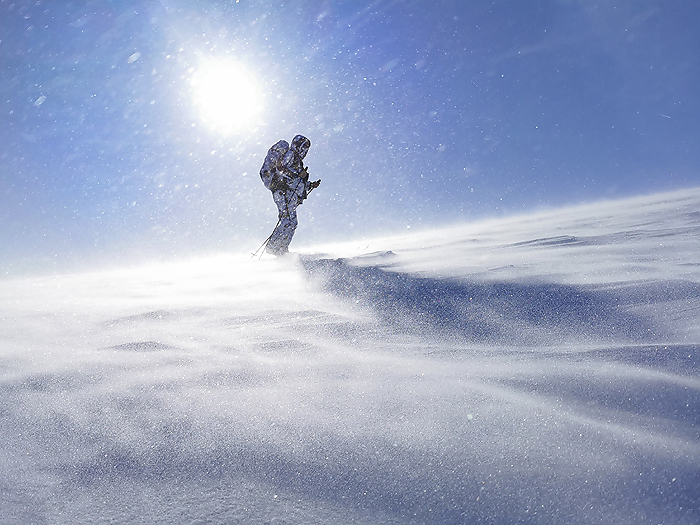
The first days we experienced harsh winds with strong cooling effect.
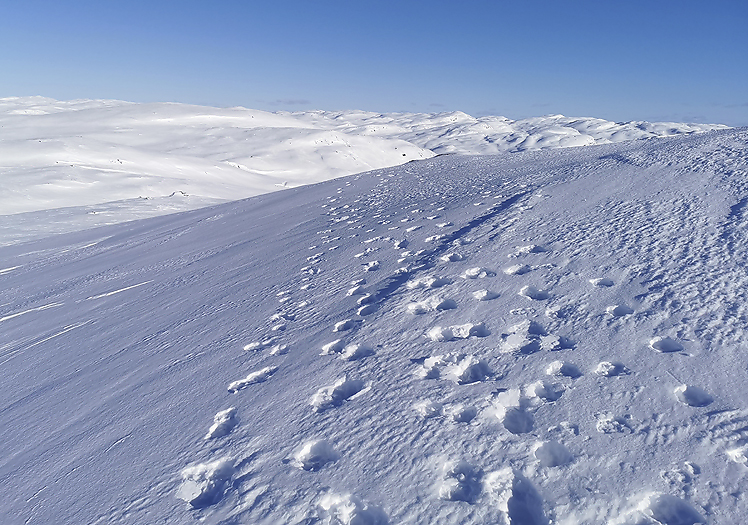
Tracks of a Reindeer herd travelling through the land against east.
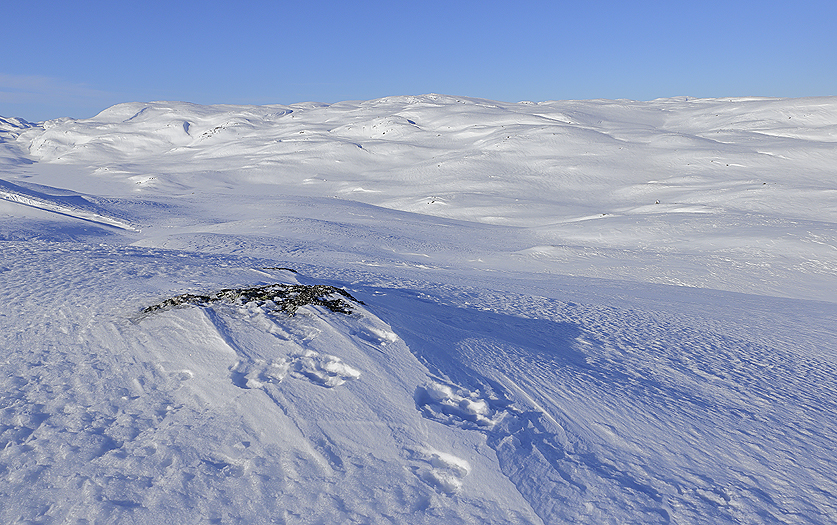
…and where one in the herd had stopped to try to reach some food.
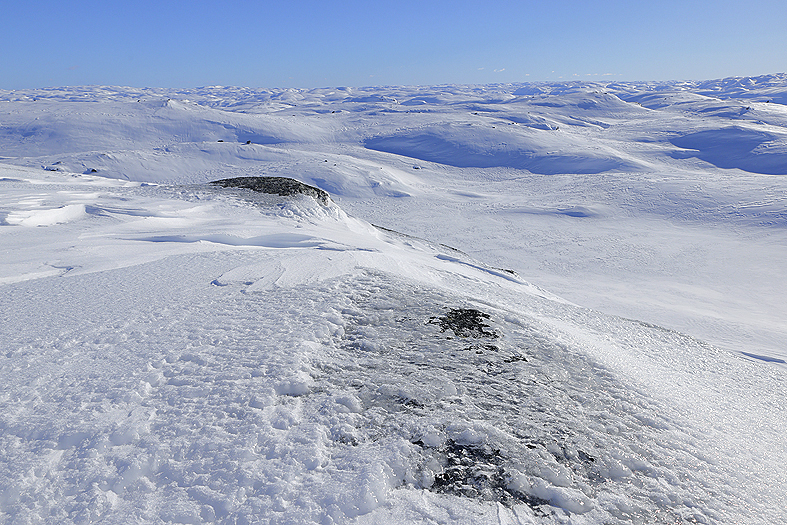
As we can see the tiny barren areas is iced down and unreachable for the Reindeer. Several of such winters can be catastrophic for the Reindeer here.
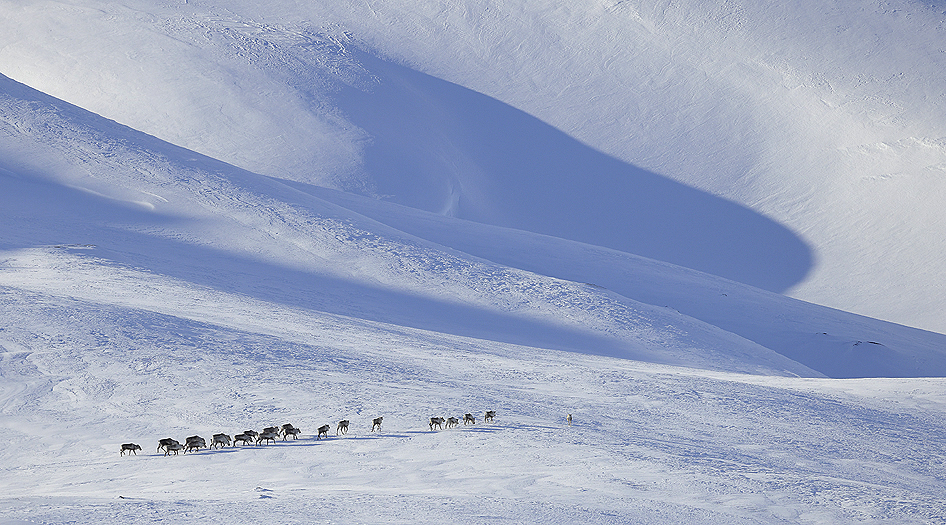
Reindeer herd travelling through the land. PAY
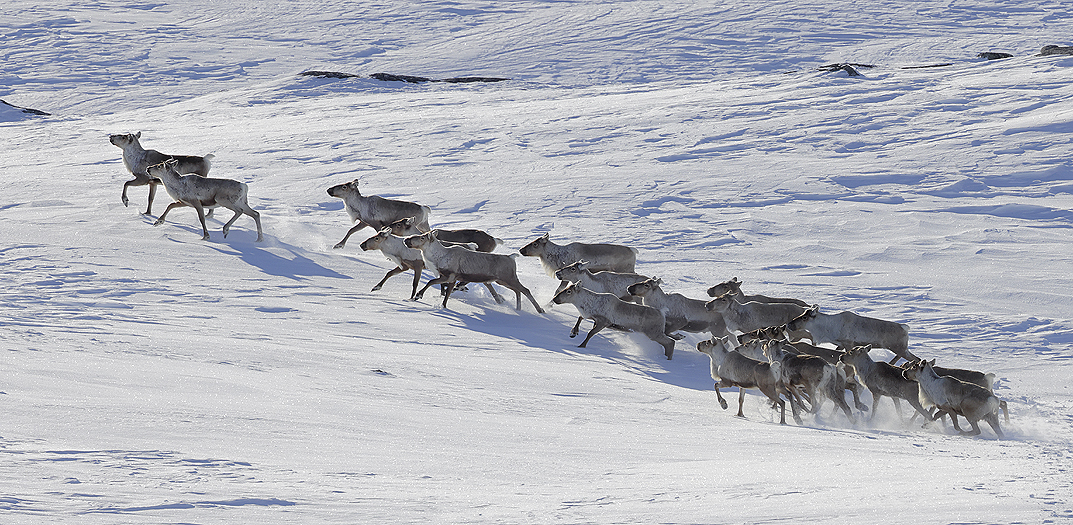
Reindeer herd. More images of Reindeer can be seen in the “Reindeer” gallery. PAY
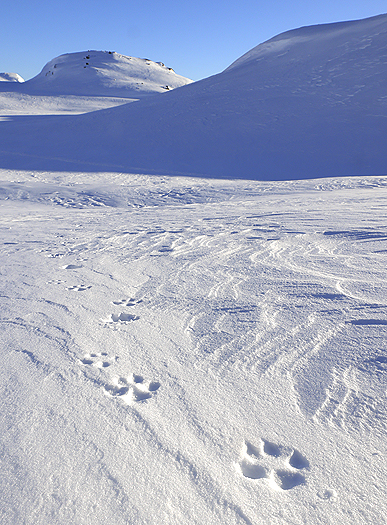
A Red Fox followed one of the Reindeer herds eastwards.
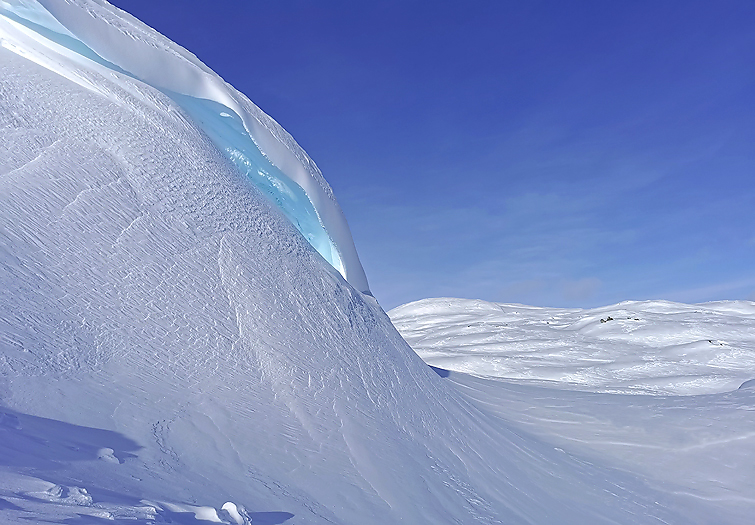
A surprising but beautiful detail appeared on a hill side one day.
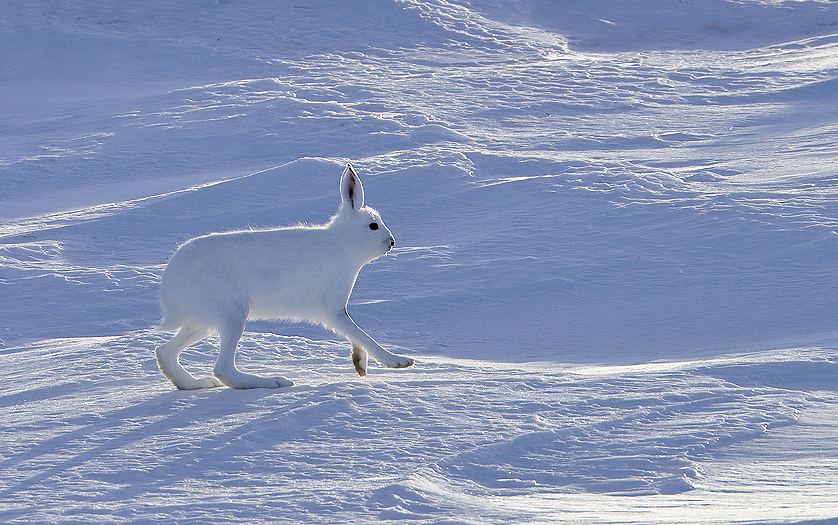
The Mountain Hare is not frequently seen high up in the barren mountains, but live more down against the Treeline. PAP
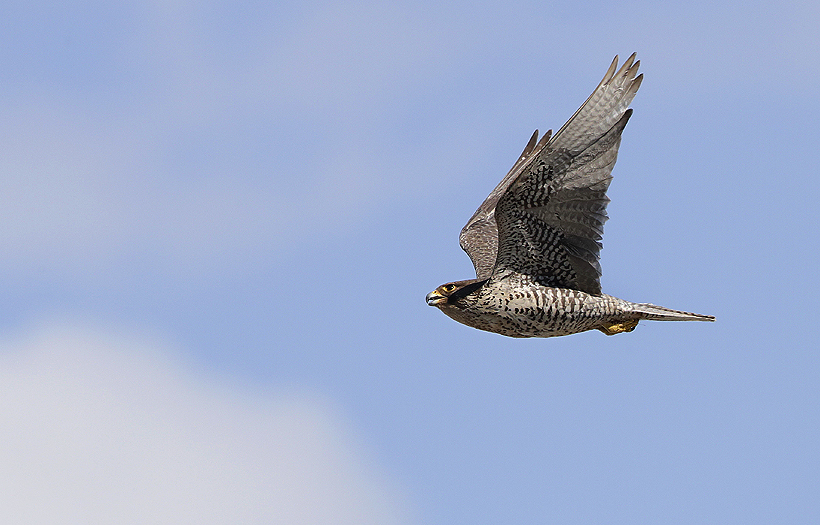
One of the toughest species living her is the Gyrfalcon. This one was observed at a place where we normally can find Rock Ptarmigans. PAY
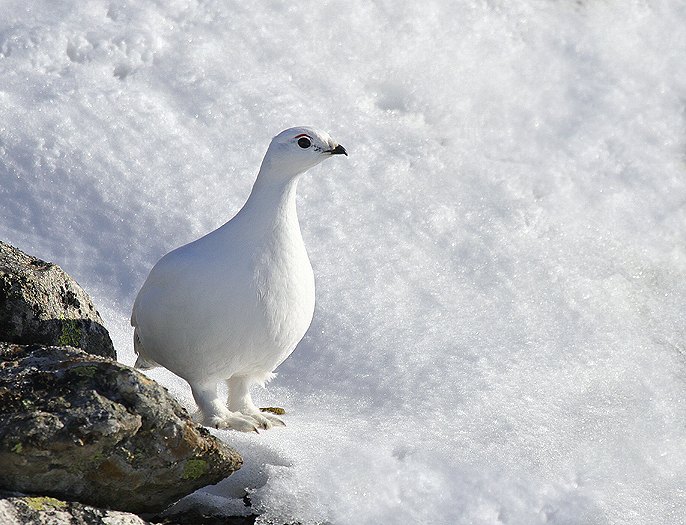
Another winter inhabitant here is the tough and beautiful Rock Ptarmigan. At this time of the year they have not paired up yet, and can be observed in flocks. PAY
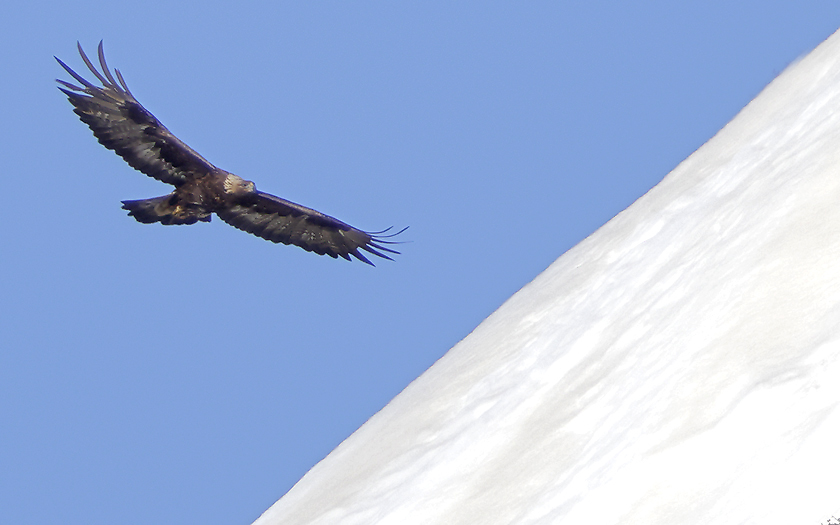
An adult Golden Eagle was seen one day hunting for pray. PAP
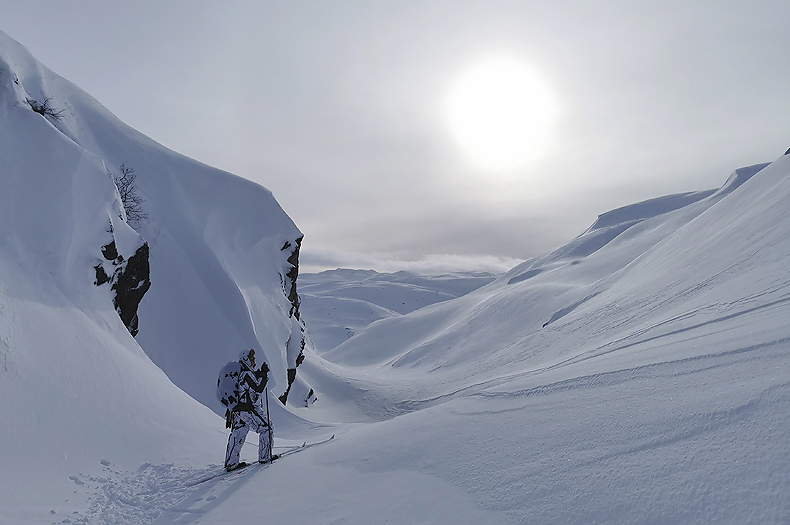
Returning to Base Camp for the night. The sky is hazing up as a sign of an incoming weather system.
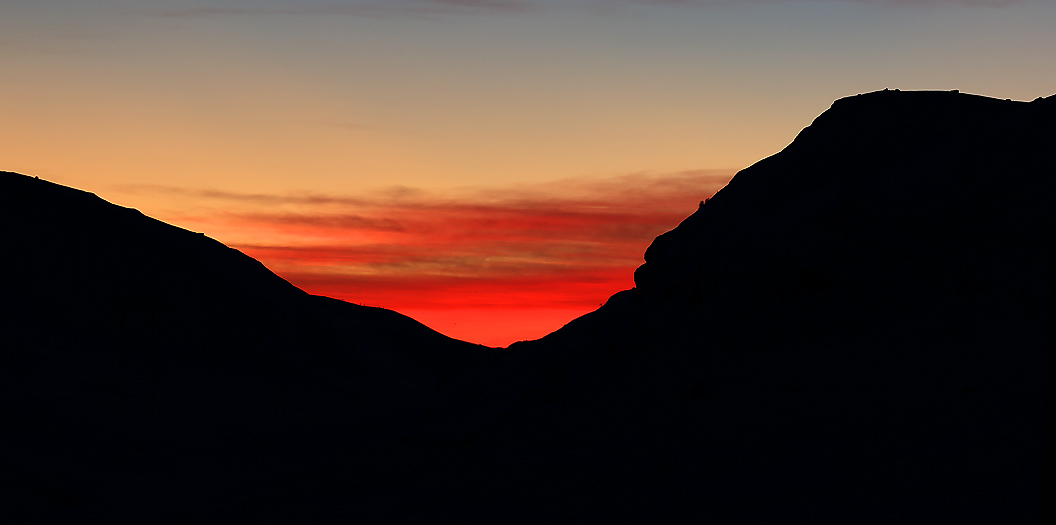
One of the nights after sunset.
END.
________________________________________________
________________________________________________
WILDLIFE BY THE SEA OF SOUTHERN NORWAY, January-2023.
A small selection images of the most common wildlife to see by the coast now in mid winter time.
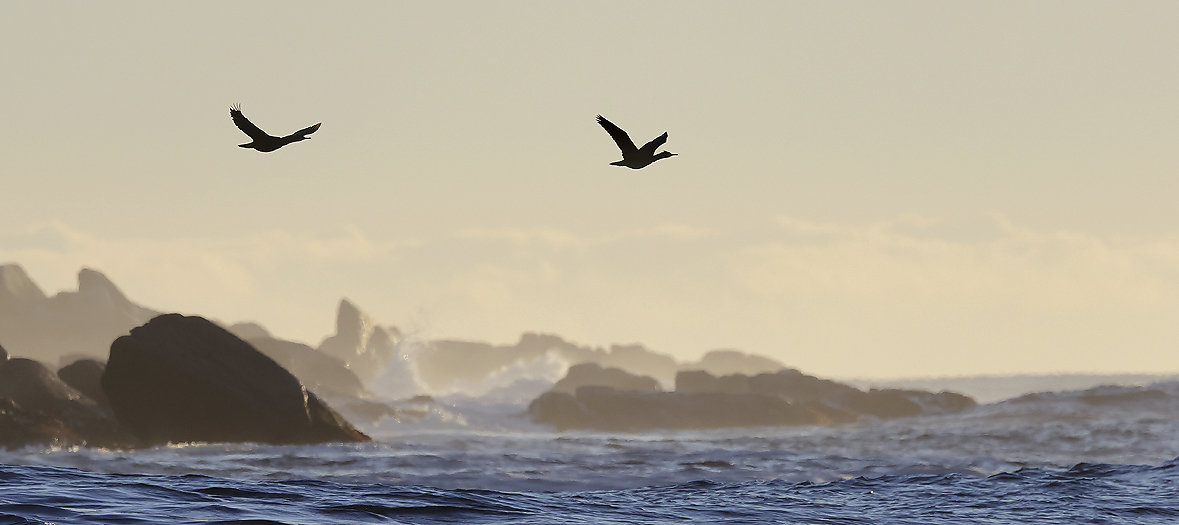
Only a few Shags left at the remote islands offshore. In the Summer time there are around 1500 of them here, which is one of the most important nesting places for Shags in Norway.
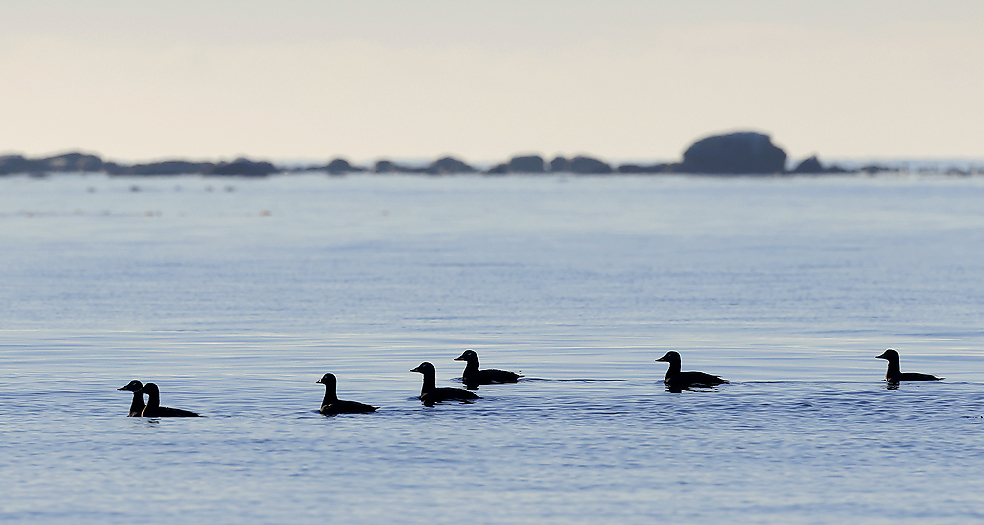
Velvet Scooters are one of the character species by the coast. They are high arctic to sub arctic breeders which nest in Scandinavia and Russia.
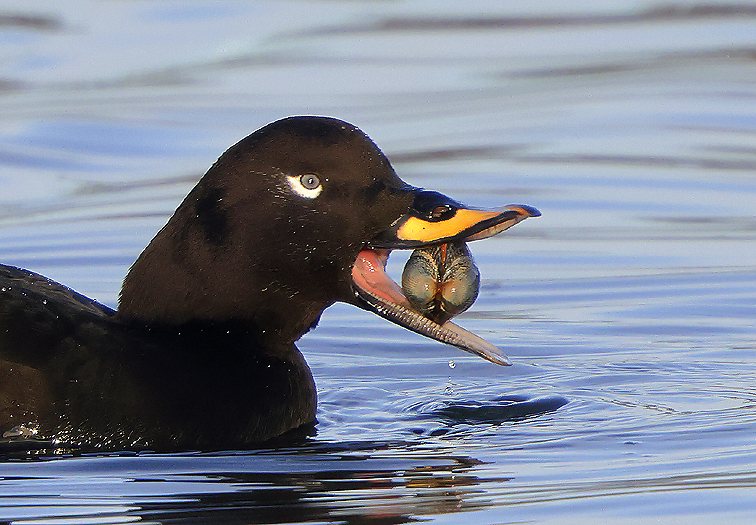
One of the main food sources to the Velvet Scooter are sea shells and mussels. The have quite a strong stomach acid to be able to dissolve the hard shell.
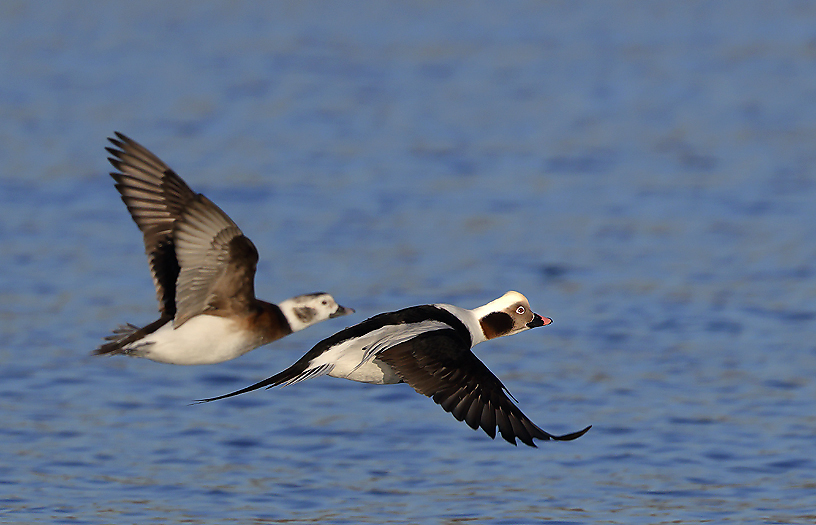
Another rather common duck by the coast are the Long-tailed Duck. Unfortunately this species are in decline. This circumpolar species is also high arctic to sub arctic breeder and are circumpolar distributed.
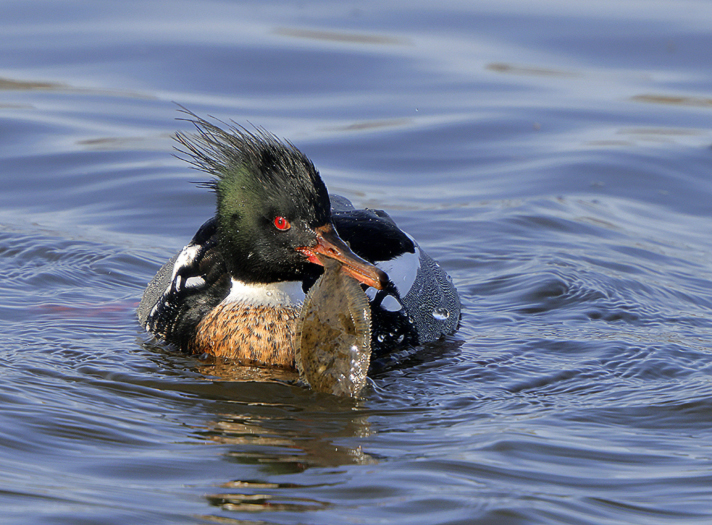
A male Red-breasted Merganser with Flounder. This is experience wise the favorite food for these Ducks here in Winter time.
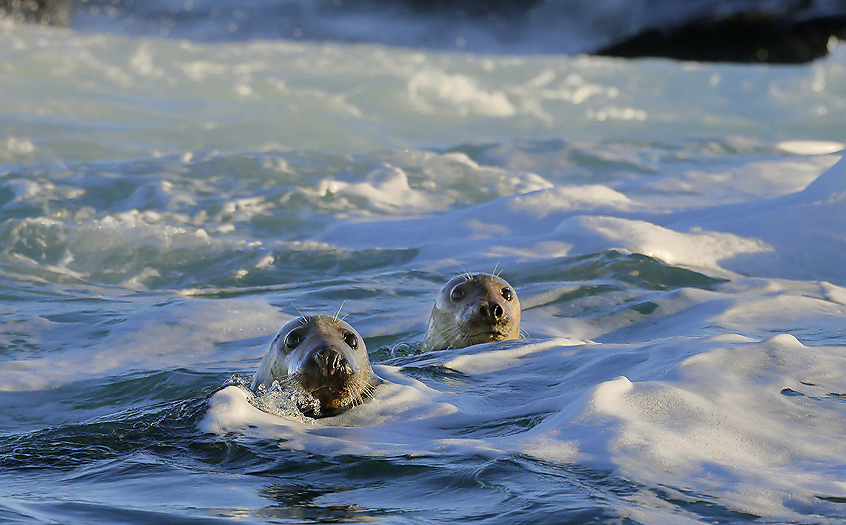
Most of the Grey Seals in the colony here stays in the area year around.
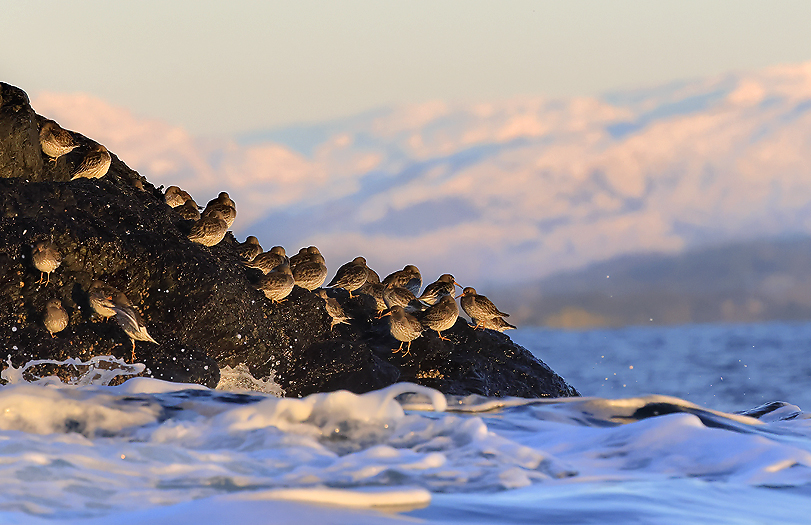
Some Purple Sandpipers stay behind and winters in southern Norway.
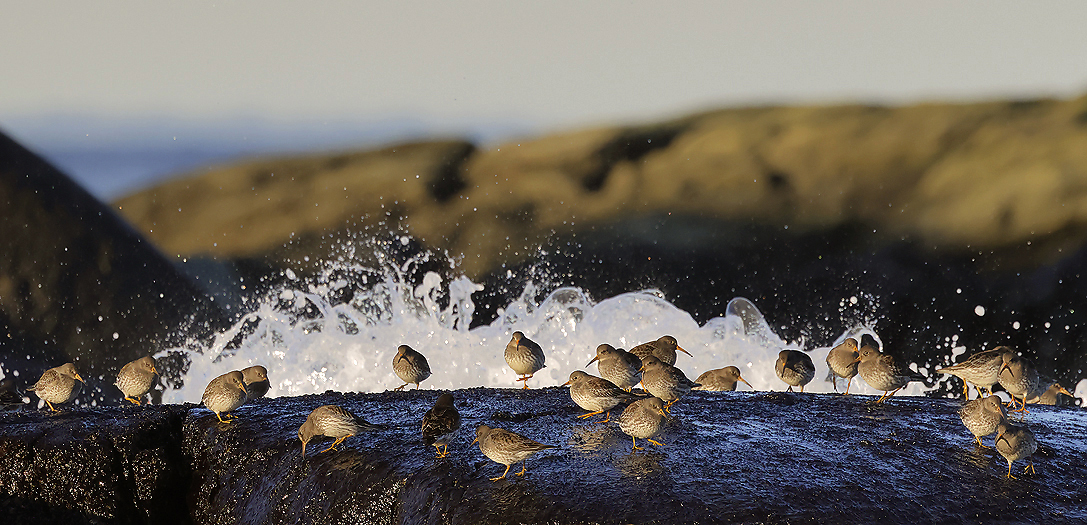
The Purple Sandpipers is obtaining food close to the water, and follow the waves where they are running down to the exposed rocks between the waves and find themselves there.
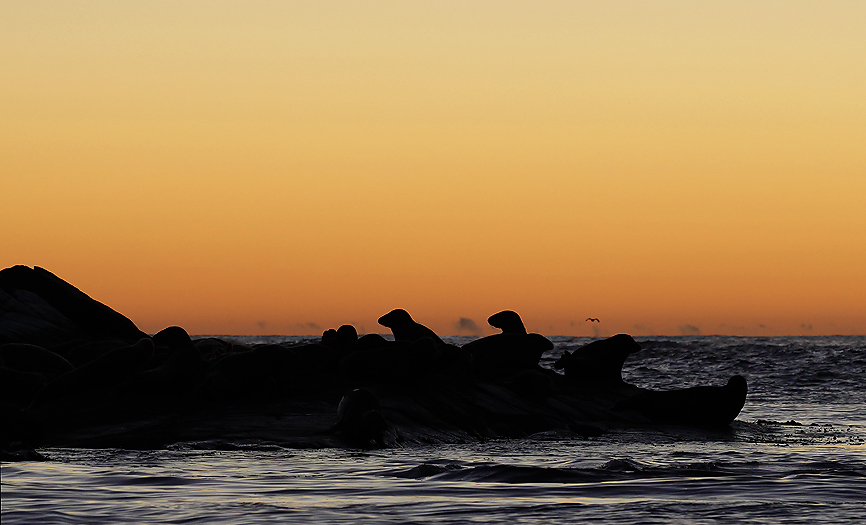
The light at winter time can be very beautiful, especially at sunrise and sunset. Here we see a herd of Grey Seals after sunset.
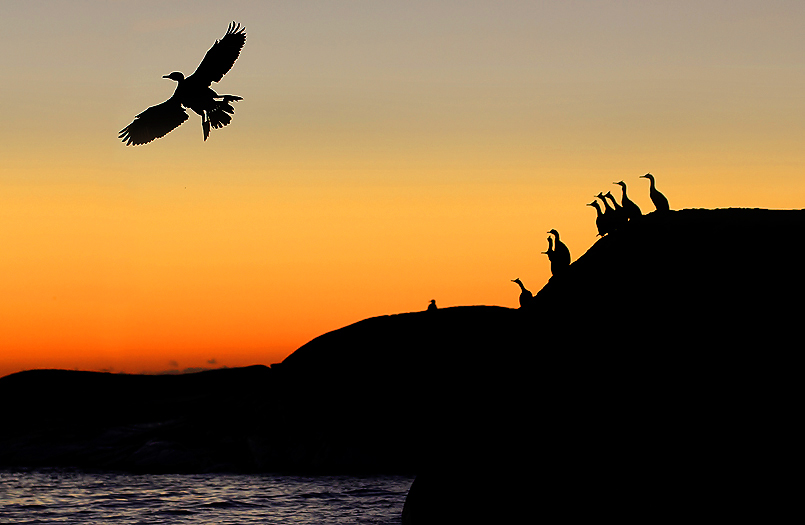
The Shags are finding their place to stay overnight.
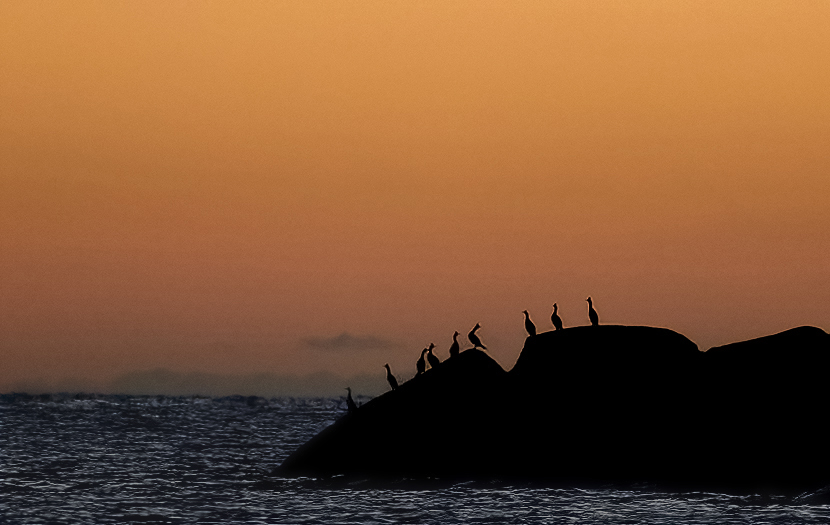
Shags an hour after sunset when we leave the area.
END.
________________________________________________
________________________________________________
A GLIMPSE INTO THE LIFE OF THE GREY SEALS, NORWAY -DECEMBER 2022.
The most exciting period of the life to the Grey Seals are in late autumn/early winter. This is when the cows at Kjørholmane in Norway give birth to the pups, – and thereafter followed by mating. We therefore made a trip out to these islands to observe and document parts of their interesting life in this time period. The photograps in this blog post show clearly it is winter with warm light and long shadows as it is only a week away from being the darkest days of the year. Most of the snow had recently blown away from the islands, but the water puddles are ice covered. The temperature is -8°C on the mainland and -3°C out here.
Heading out with a strong and stable rapid boat at first light of the day we approached the small islands out against the rough North Sea after a while. In spring and summer time the islands is teeming by thousands of seabirds out here (for this, please see the 2nd latest blogpost ”Spring in southern Norway 2022”). Now, near all of them are gone, only a couple of Cormorants and a Little Auk (Dovekie) kept around. The only wintering creatures now are the seals, consisting of mainly Grey Seals. Here we find the biggest Grey Seal colony south of Trøndelag. It is only around 25 years ago the locals on the nearby inhabited island discovered that the seals here gave birth to pure white pups, called “Kvitunger” (White babies) in Norwegian. It is normally seal species that give birth on the sea ice who are white for camouflage. The Grey Seal population in the Baltic Sea still give birth on the sea ice, while the other western populations (UK, Iceland, Scandinavian and Kola Peninsula) does normally not. The eastern populations (New Foundland and Labrador) partly give birth on sea ice, mainly in Labrador.
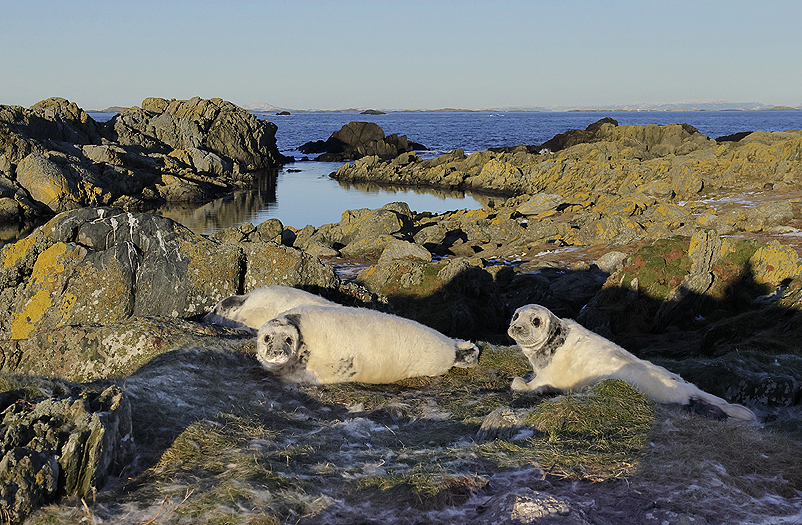
When the puppies are around 3 weeks old the white fur is starting to moulte and change to greyish color. At this time the mothers will go for shorter time in the water in search of food to herself. When the nursing period is over and the puppies have moulted completely, they goes to sea, for so to lose approximately ten kilograms of its weight due to a lack of experience in catching fish.
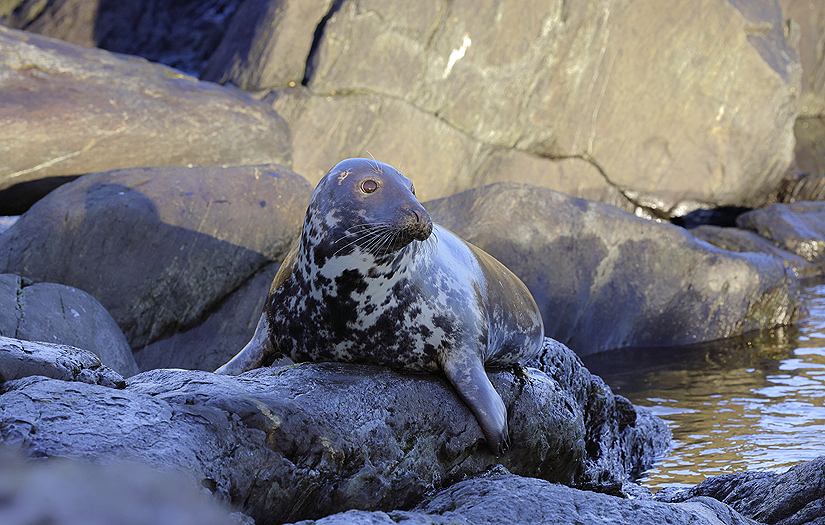
Grey Seal mother on her way back to her pup again.
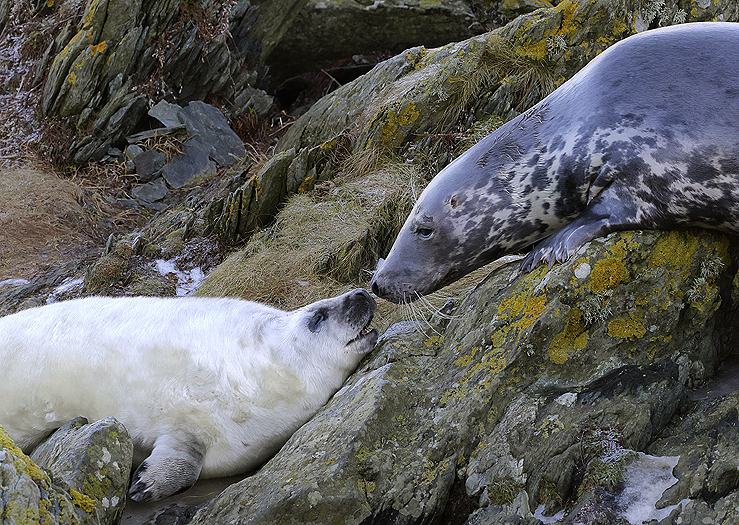
When the mothers are away in the sea the white puppies are alone on land. They grow very fast, they are between 13-17 kg new born and increase their weight by around 2kg a day due to the extremely fat-rich milk (up to 60% fat). The puppies can shout loudly on their mothers when they are out in the sea for a short while as they are very eager to get the mother back again When she is on her way back on land the puppy often moving against her mother. Their reunion gesture is sniffing each other face to face.
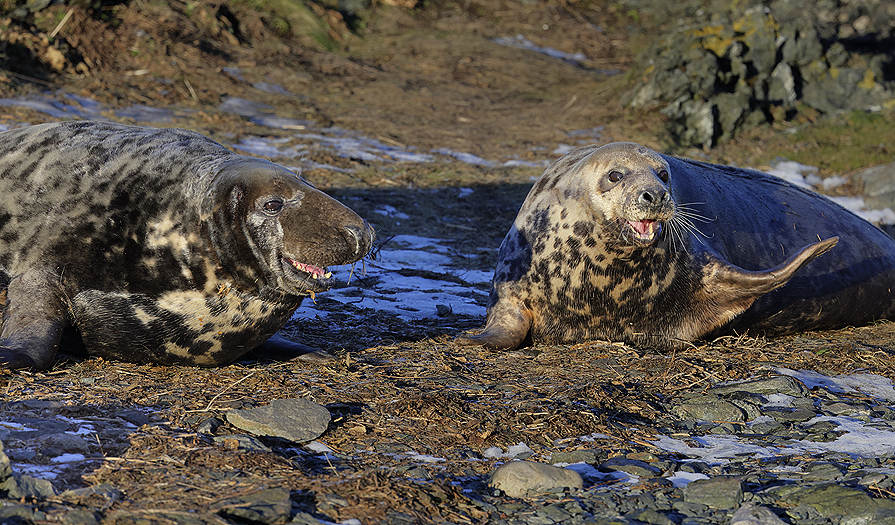
The breeding and mating time is very close in time after each other. Not long after the cows had given birth the males are ready for mating. The females are not necessarily ready when they have new-born puppies. The male to the left seek contact with the female.
Overview over part of the breeding area at Nord-Kjør. The island of Håstein in the background. The female has a fight with the male (left) because she is not ready for mating yet as she have a small pure white puppy.
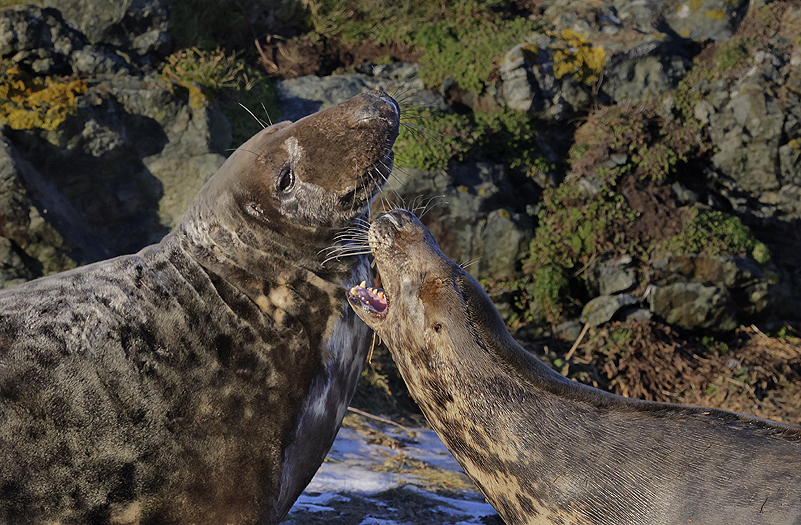
Close up photo of the adult Grey Seals in the photo above (male to the left)
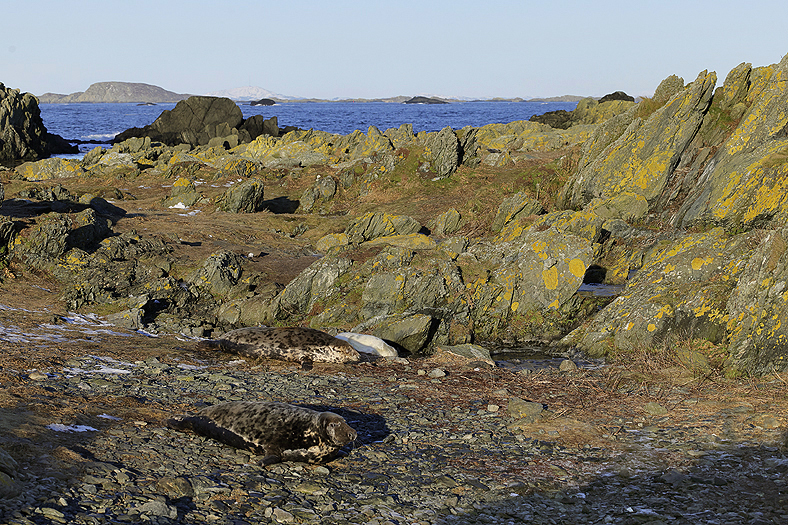
The male (in front) gave up and is moving over to another female on the arena. The female is moving back to her puppy again.
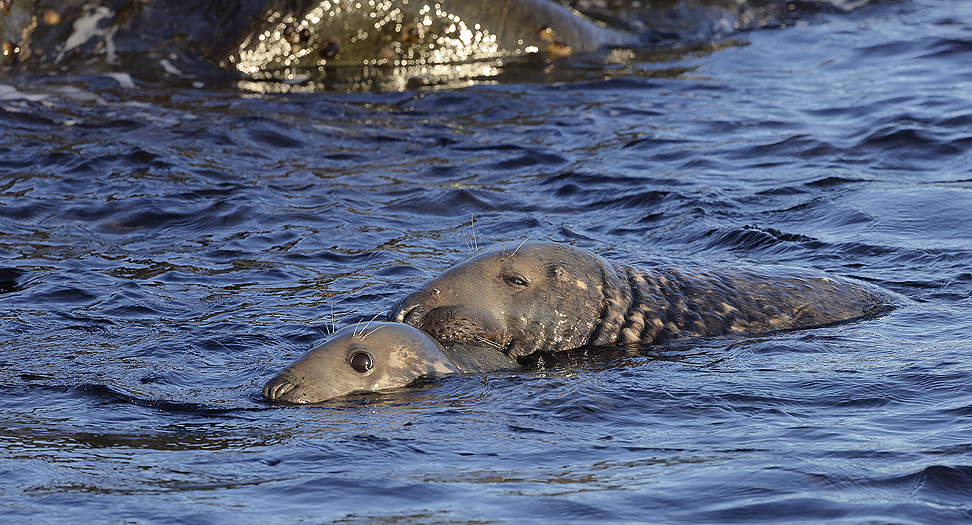
Out at sea in the bay beside the breeding area there is a Grey Seal couple who seem to be ready for closer contact.
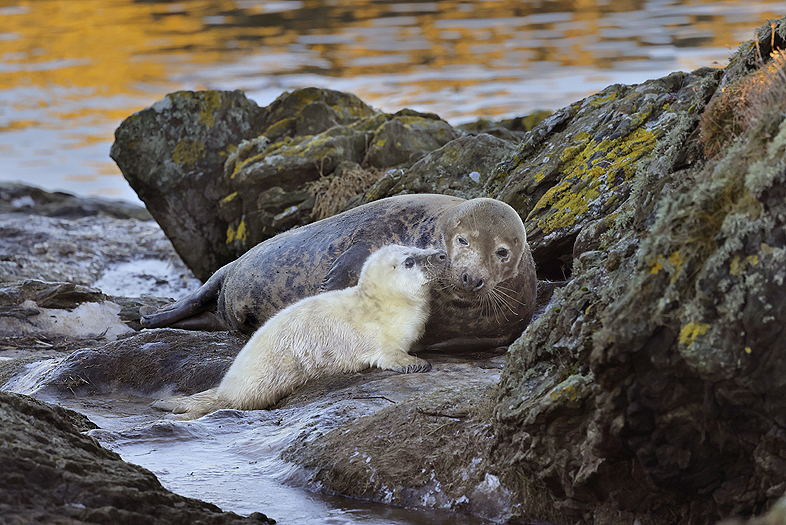
Another mother and pup at the breeding area.
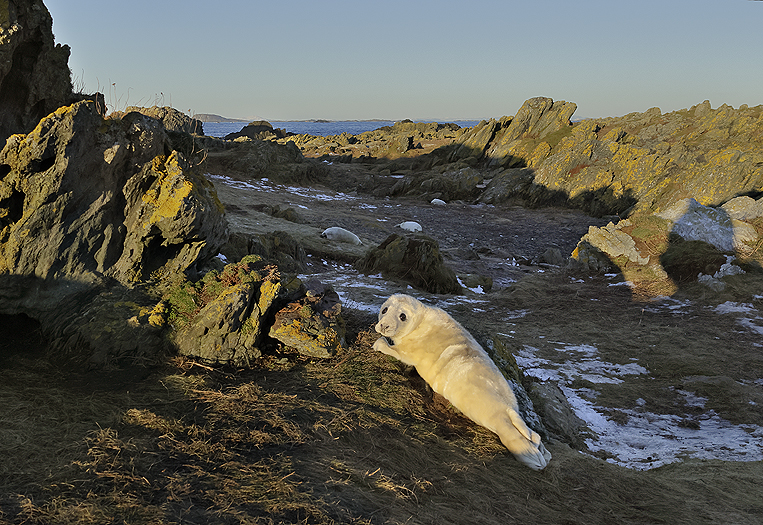
We leave the breeding area before sunset. Note the other 3 white puppies in the shadow in the middle of the photo.
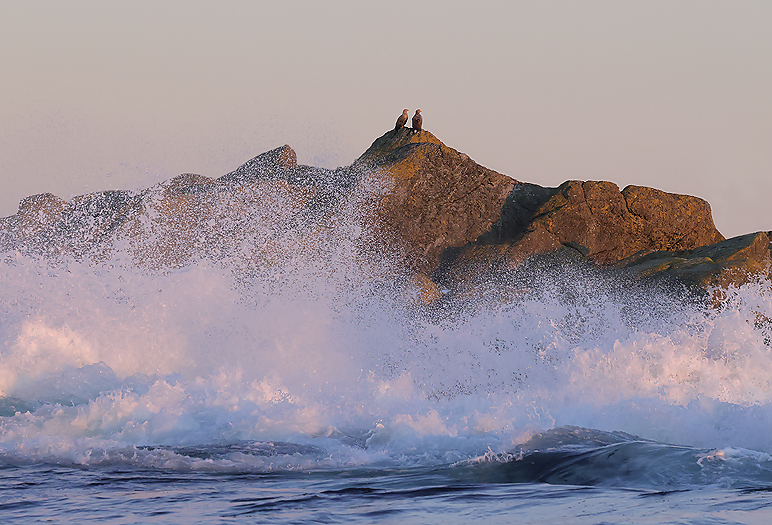
Well out in the boat again we take a round trip of the islands at sunset and say goodbye to the White-tailed Eagle couple who also winter out here.
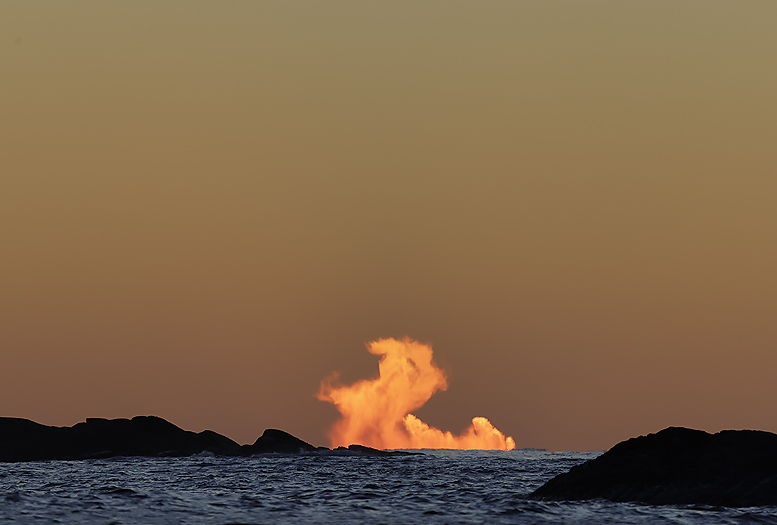
Half an hour after sunset mother nature show her glory far out at sea…
END.
________________________________________________
________________________________________________
AUTUMN REPORT FROM THE MOUNTAINS OF SOUTHERN NORWAY, September / October -2022.
Returning back after 2 interesting weeks in the Rondane and Dovre mountain ranges I share some of the images from the trip in this blog post.
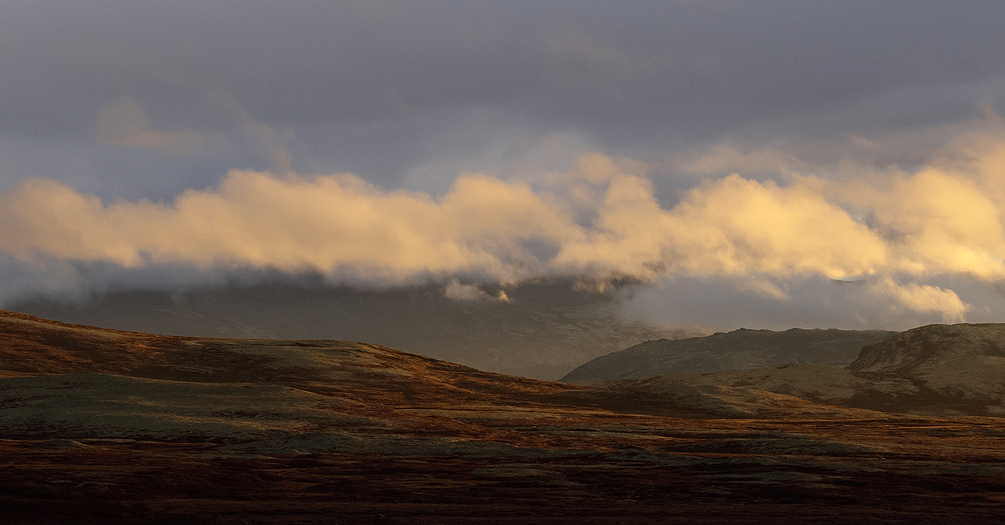
Mixed weather ahead as the area of interest is closing in on a late afternoon.
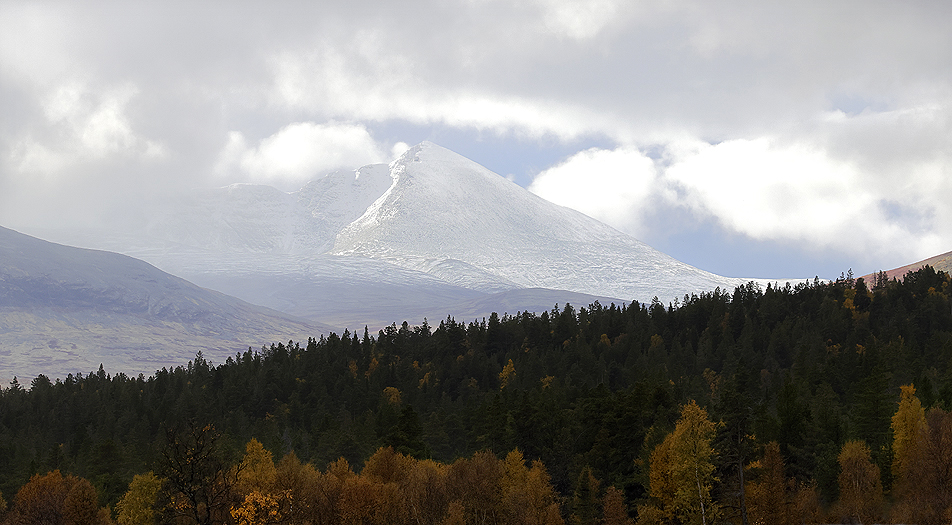
The upper Rondane peaks are normally snow covered in late September.
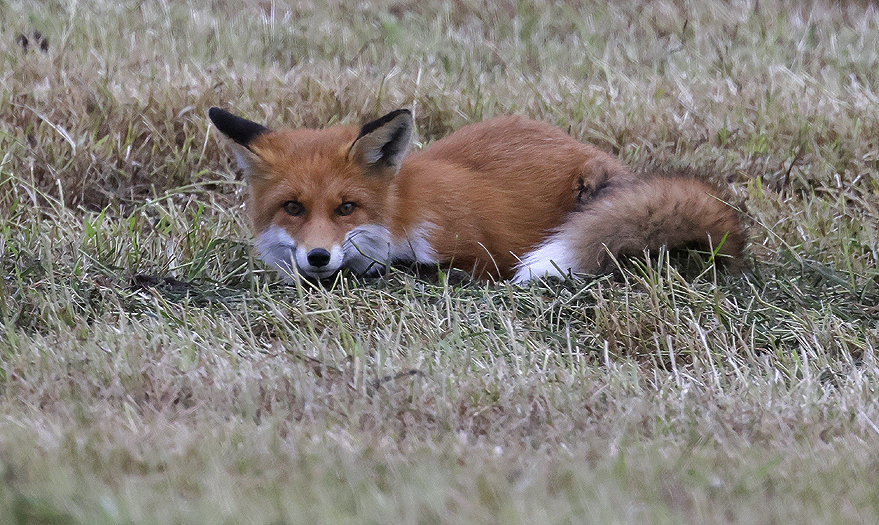
The local wildlife is following trespassers on the way into the mountain area.
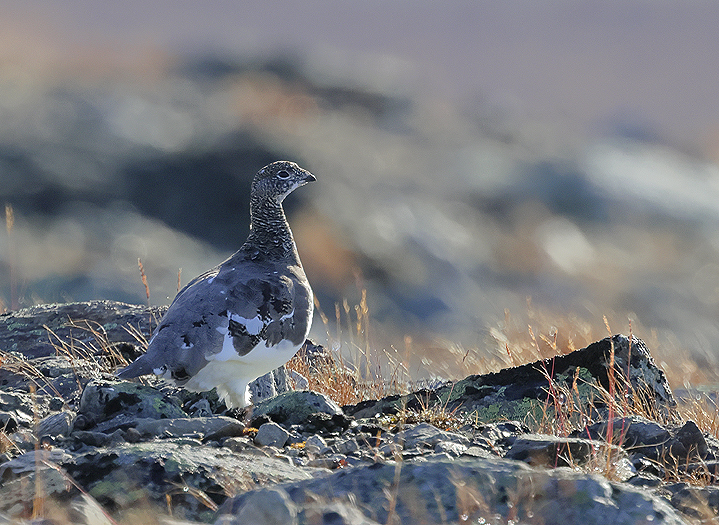
Rock Ptarmigan is one of the very few all year round inhabitants here.
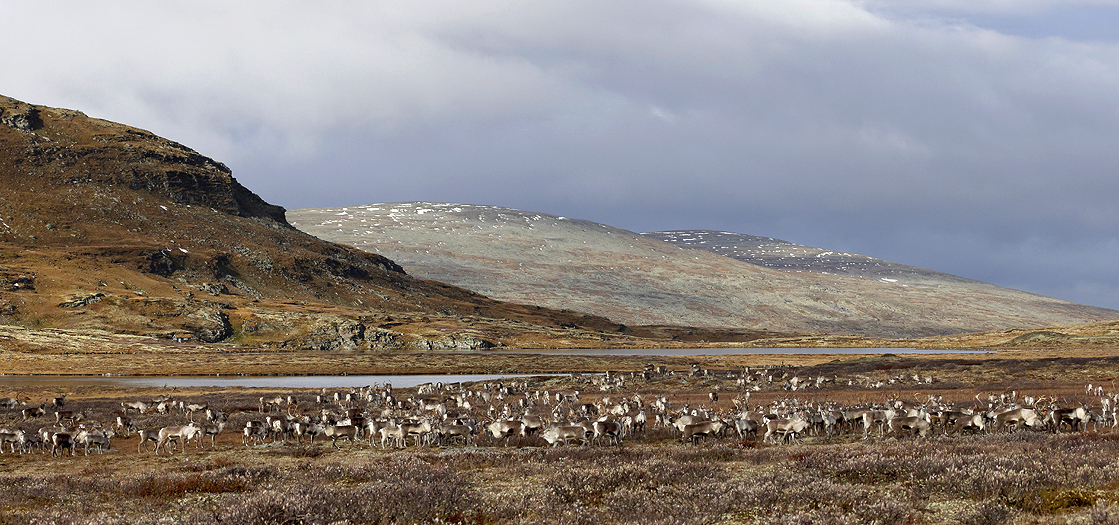
Part of a huge Reindeer herd that roam the mountains of Dovrefjell.
F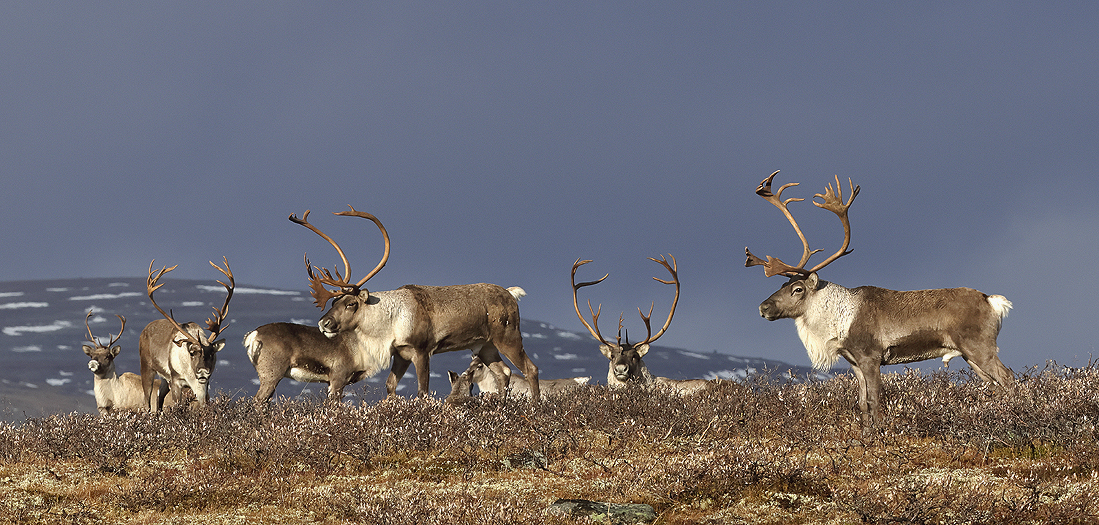
Powerful Reindeer Bulls. As described in earlier blogposts the Reindeer in Dovre and Rondane mountain ranges are among the very few Reindeer populations in Eurasia that have their original DNA intact without any interference from domestic Reindeer. It is also to be mentioned once again that these populations have their origin from Beringia, and not from southern Europe as most other populations found further south in the Norwegian mountains today.
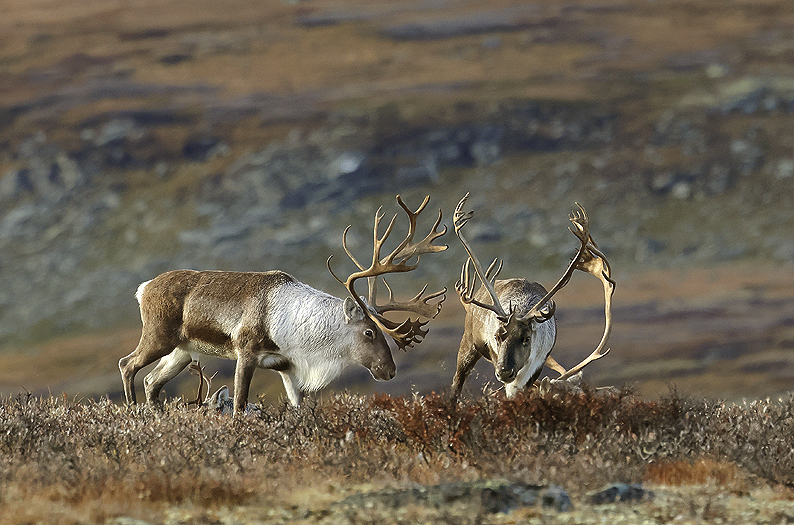
The rutting season is not over yet, bulls can now and then show some aggression.
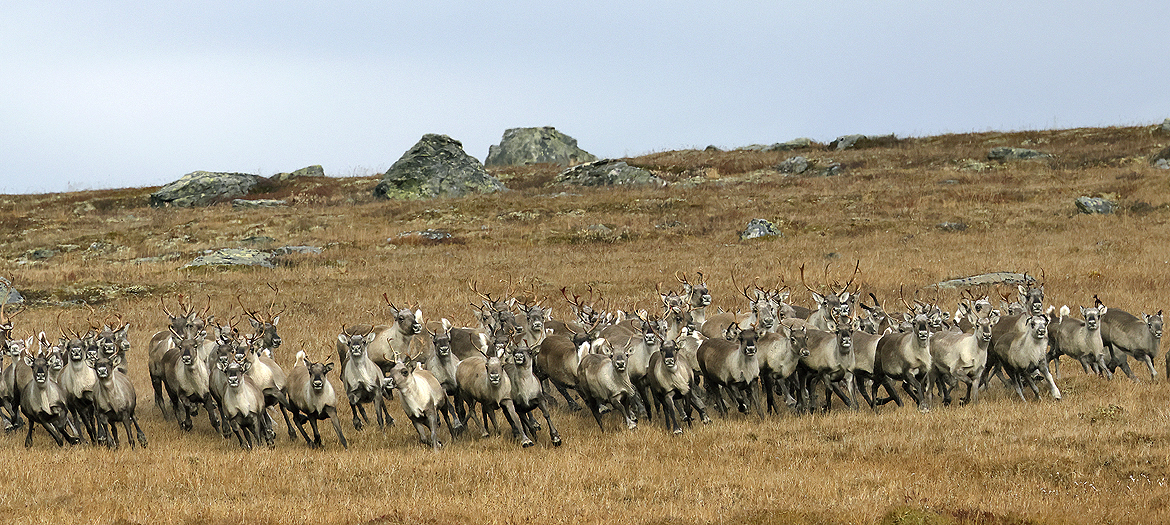
Incoming Reindeer at full speed. More new images of Reindeer can be seen in the “Reindeer” gallery.
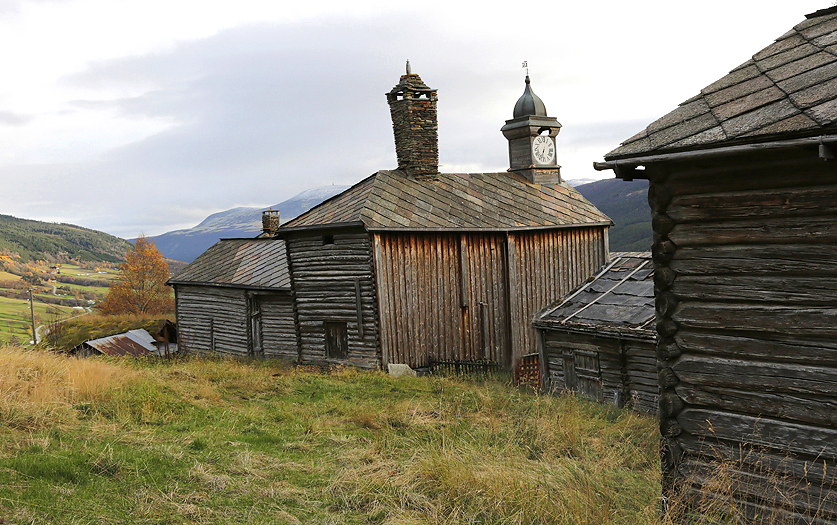
Tofte, the biggest and perhaps oldest farm in Dovre is referred to as a royal estate under the Viking King Harald Hårfagre who united Norway under one kingdom in the year 872 (the battle at Hafrsfjord) was a crown estate in the Middle Ages. PAY
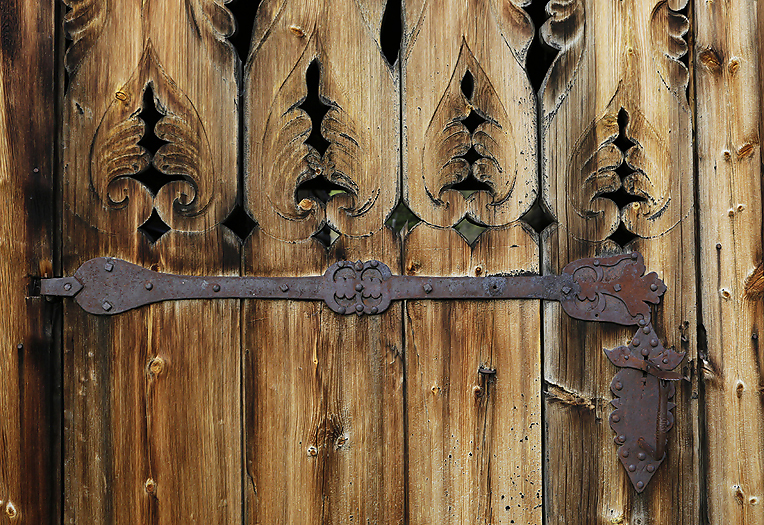
Part of the existing buildings at Tofte are dated back to the Viking Age. PAY
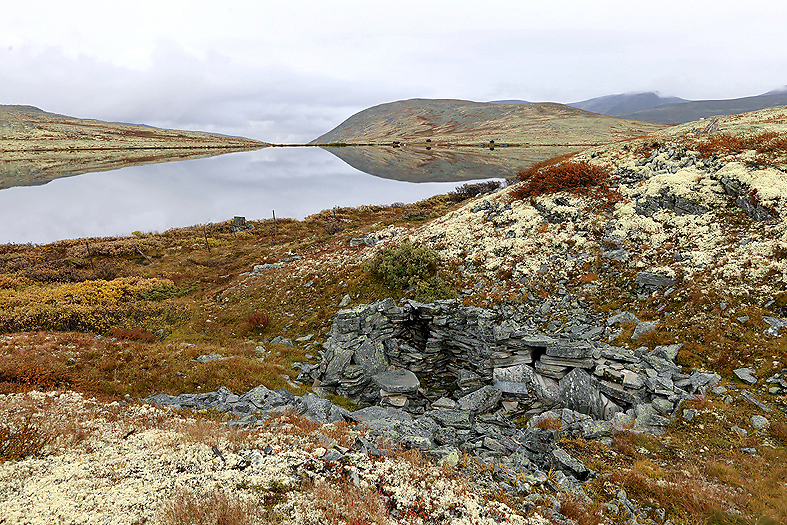
Perhaps these remains of a building in the Rondane mountain range made in early medieval period was used by people from Tofte?
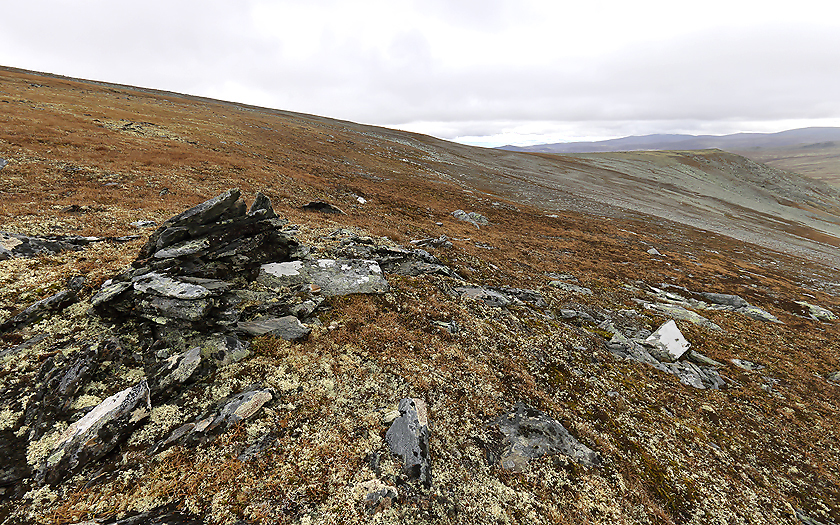
Reindeer Hunting Blind from the Iron Age in the Rondane mountain range.
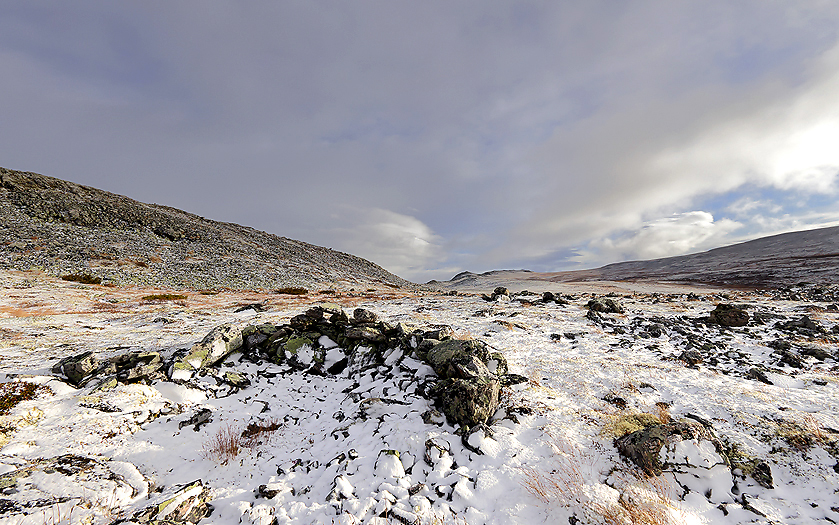
Reindeer Hunting Blind from late Iron Age in Rondane mountain range. The crescent shape is 3m at the widest, and the blind front wall is measured to be 70cm at the highest. Here we can imagine ourselves that the Reindeer hunter sat waiting with his Longbow. On this small plateau there are around 20 of these blinds. A remarkable place. More new images of archaeological sites can be seen in the “Archaeological Sites” gallery.
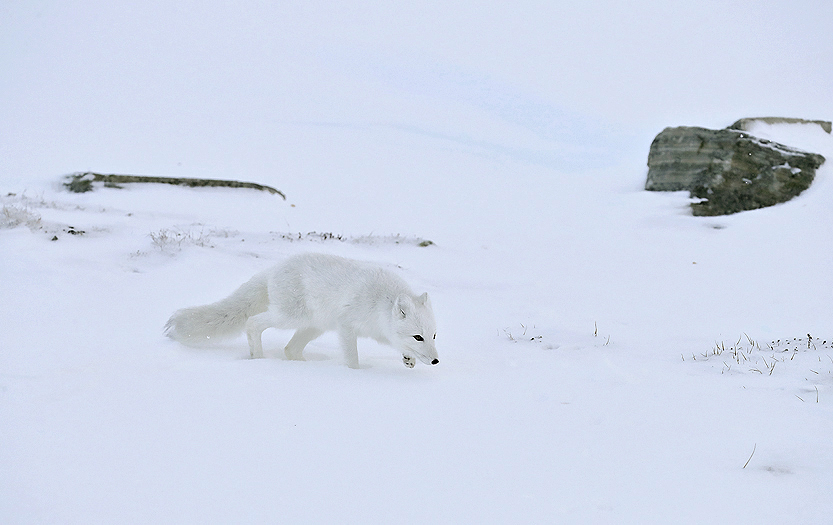
Arctic Fox in the Dovrefjell mountains. PAY
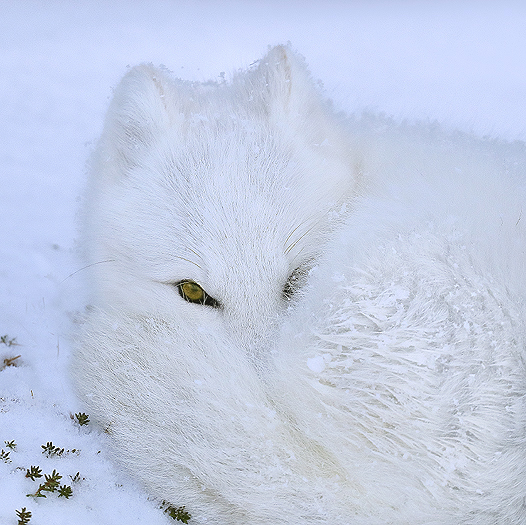
The Arctic Fox is resting in the chilly wind, covering the nose with its tail. More images of Arctic Fox can be seen in the “Arctic Fox” gallery. PAY
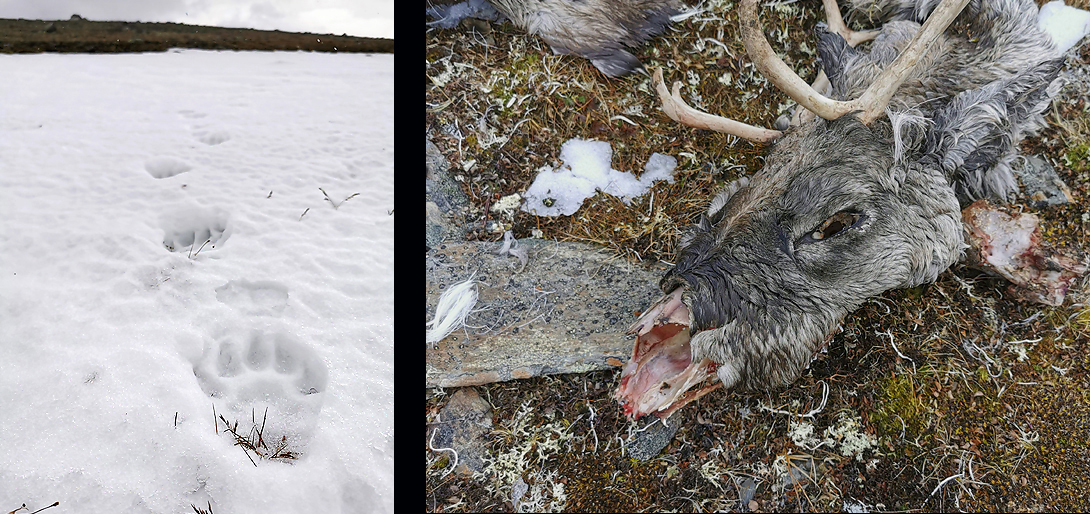
Wolverine tracks and kill. Wolverines normally eat the softest part of the animal first.
The Dovrefjell mountain range is one of the very few places in Norway that still holds near a complete eco system.
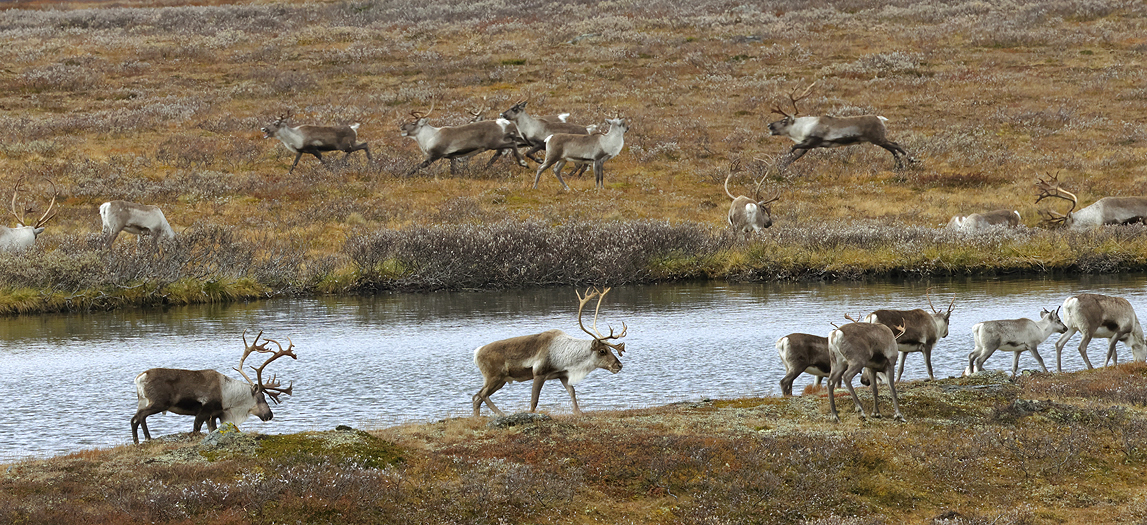
Daily Reindeer life at Dovrefjell…
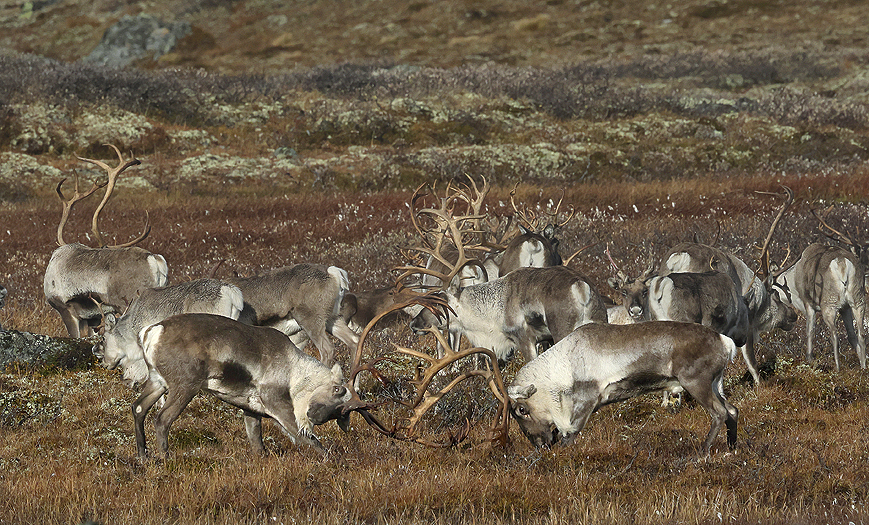
Fighting Reindeer Bulls at Dovrefjell.
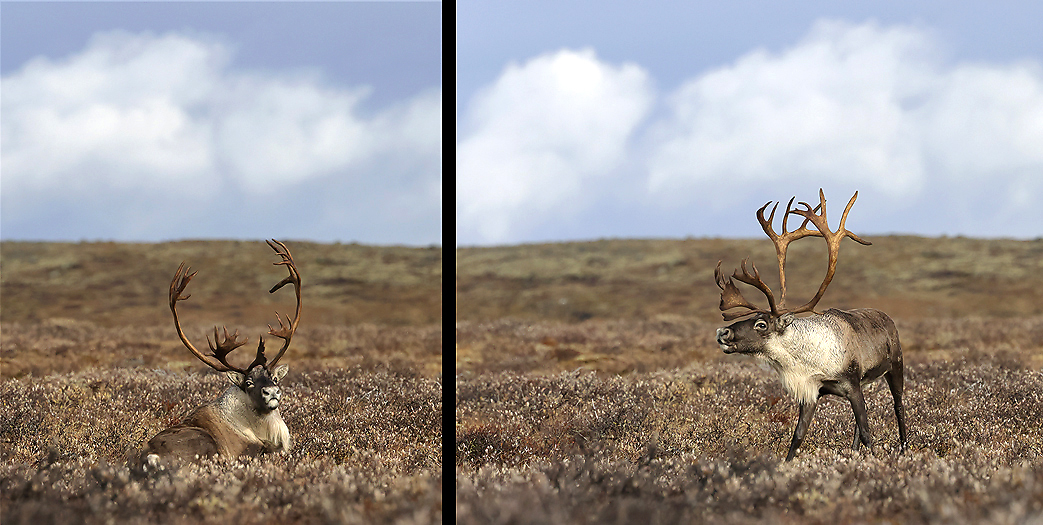
This big guy woke up from his sleep and discovered that the herd had left the place. He seemed at bit surprised.
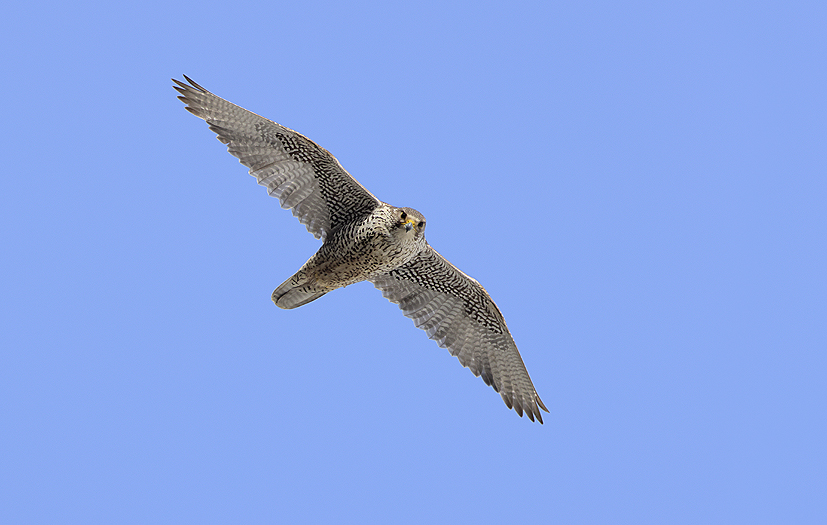
An adult Gyrfalcon passed over and took a quick look down. PAP
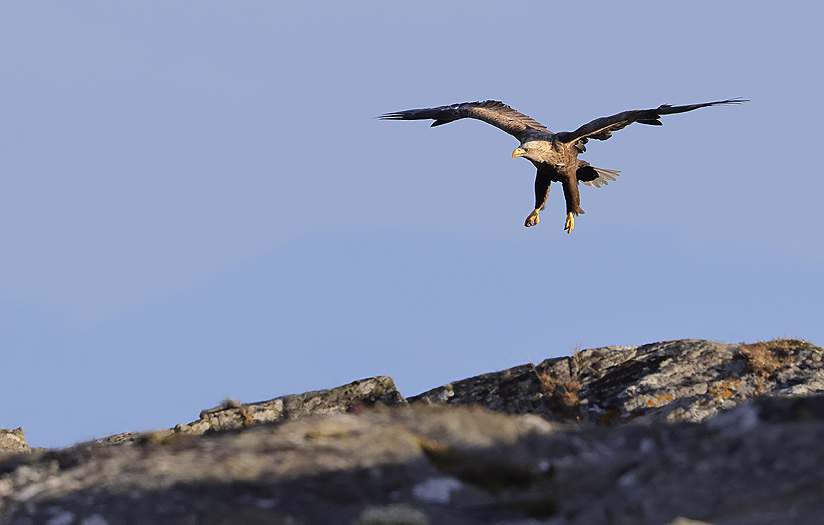
Surprisingly no Golden Eagles was observed, only White-tailed Eagles. PAP
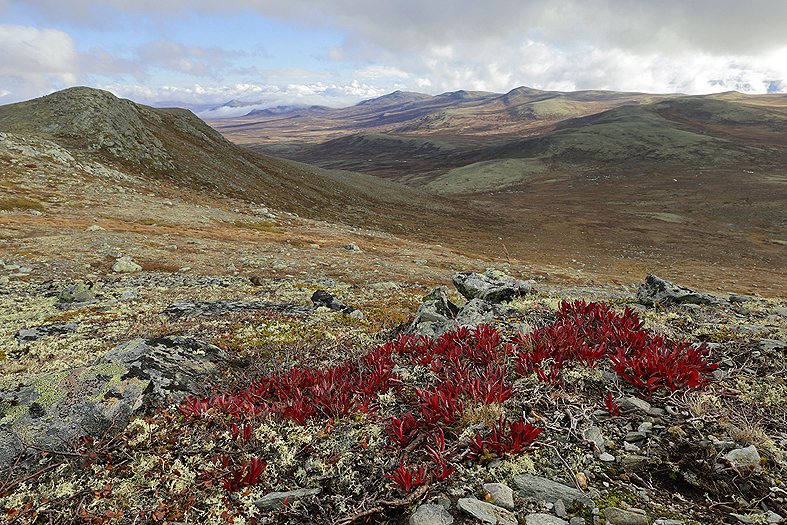
Near all flowers have of course ended their blossom in the autumn. The Mountain Bearberry (Arctous Alpina) is one of the very few that give colors to the landscape at this time of the year.
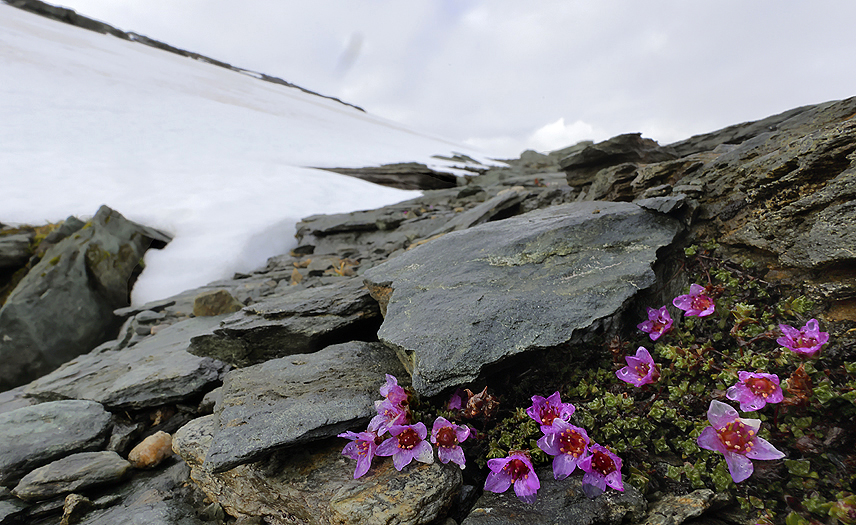
The only flowering plant was the Purple Saxifrage. The reason for the late flowering is that the spring and summer growth was delayed due to the proximity to the cooling glacier behind.
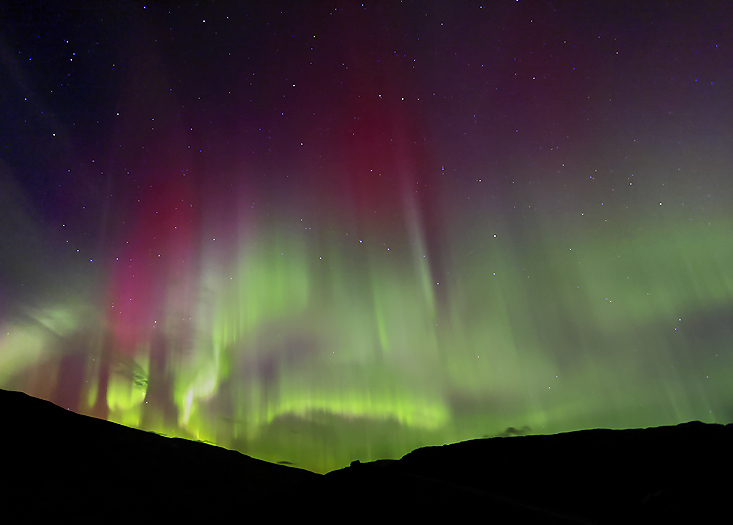
Definitely more colors to see in the Aurora Borealis that showed up on the sky a couple of nights.
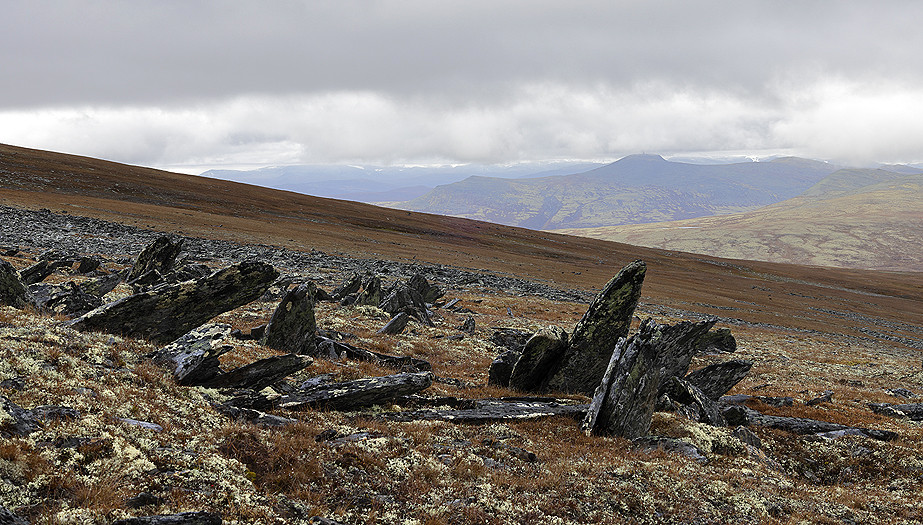
Standing rocks caused by freezing / thawing for thousands of years. From Rondane mountain range.
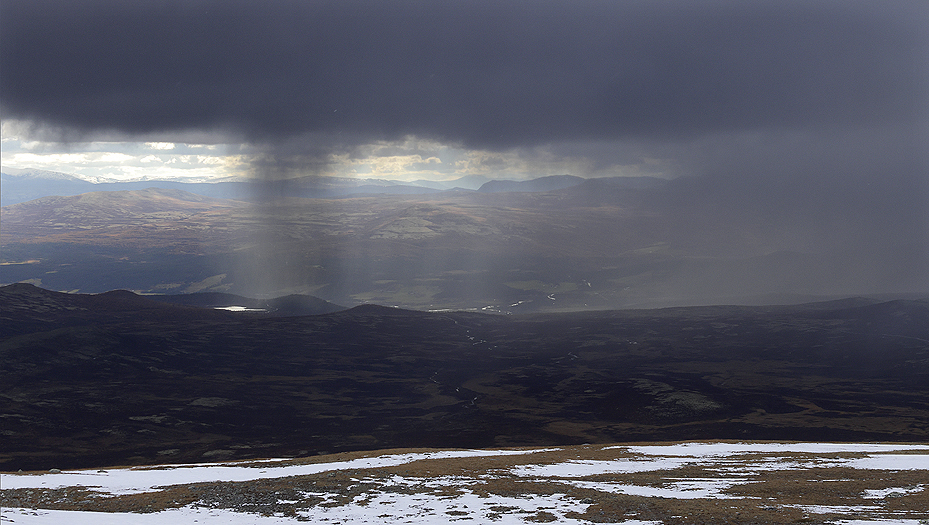
Typically autumn weather, -sudden incoming snow showers with strong winds…
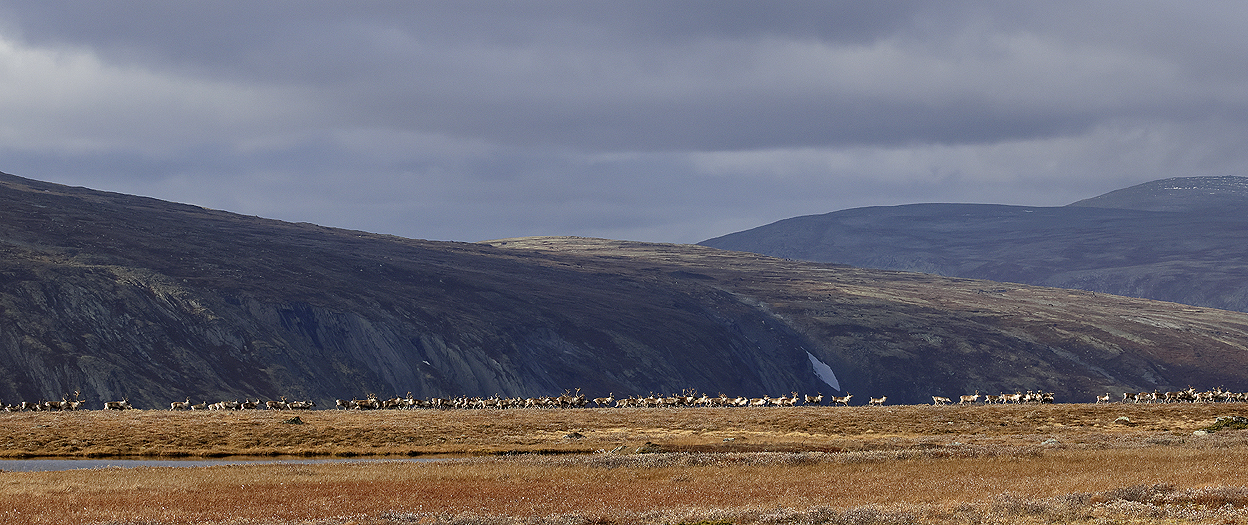
Goodbye to the Reindeer for now.
END.
________________________________________________
________________________________________________
SUMMER IN THE MOUNTAINS OF SOUTHERN NORWAY, Medio July-2022.
Spring went and Summer followed. Below is a couple of photos from the mountains of southern Norway I would like to share with you in this blog post. They are taken both in the lower regions that surrounds the Rjuven mountain range, and in the highest elevations of the mountain range itself. See the blog post from Feb/Mar-2002 says, “the name Rjuven means “the rocky and bare ridge”, and the name suits well for this area containing hard granite”.
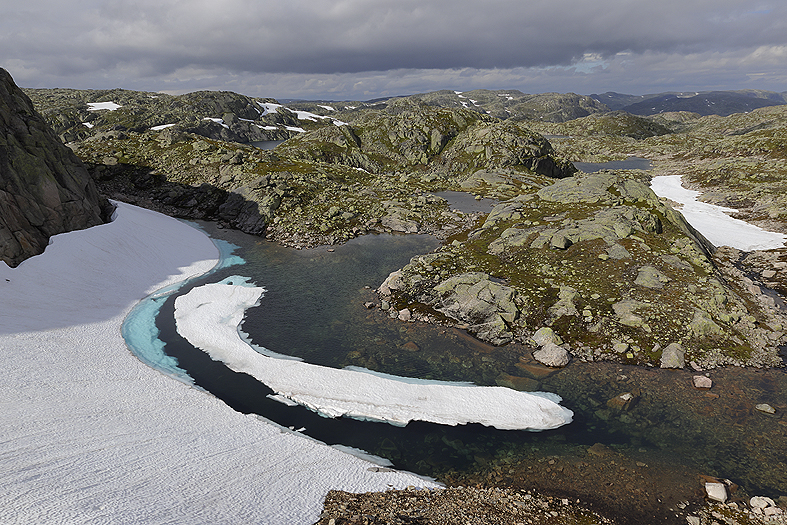
The lakes are soon ice free, only a very few still have some ice left. Here at 1350m above sea level.
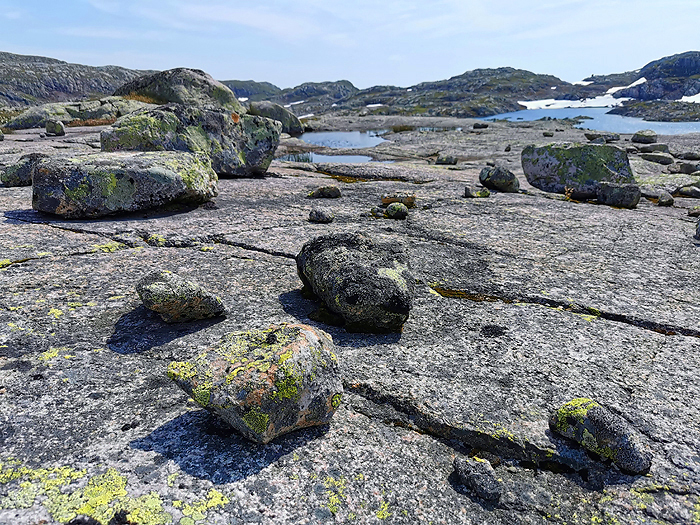
Glacial remnants. The land is in general barren here in the central Rjuven area.
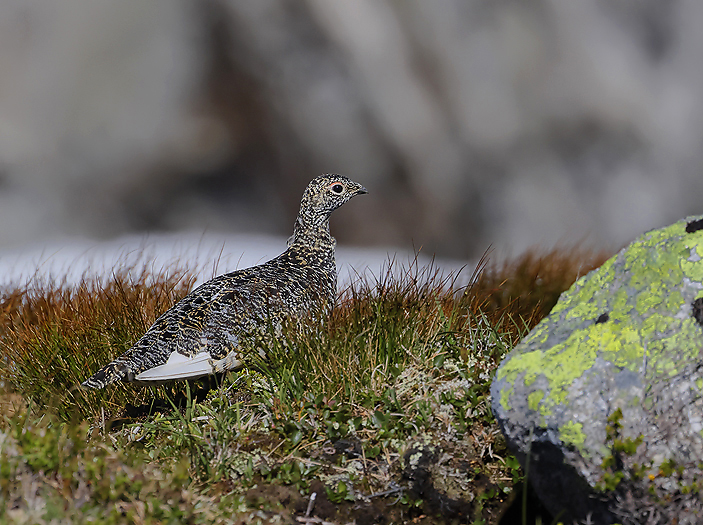
Rock Ptarmigan is one of the character species here.
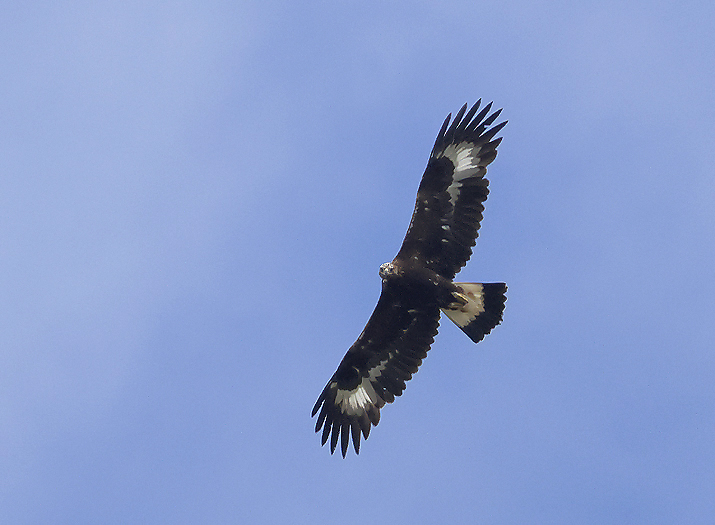
The Golden Eagles nests in the lower parts of the mountain range, here a young one which are observing the visitors into the eagles hunting grounds.
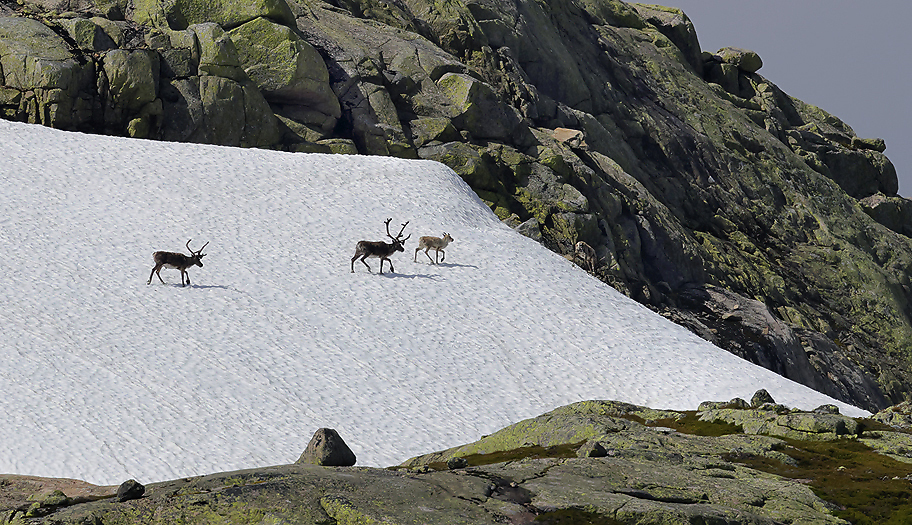
Part of a small Reindeer herd. On hot summer days they often cool down and avoid troublesome insects by either rest on snow fields or walk on them instead of snow free areas.
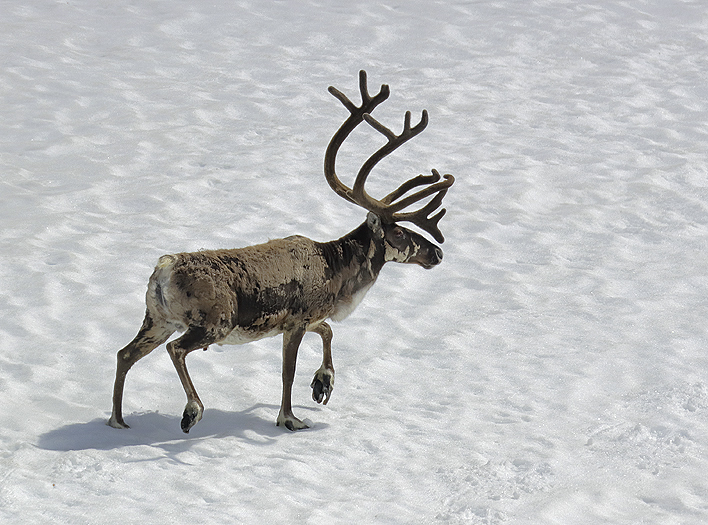
In mid July the Reindeer antlers are still growing. This magnificent Bull will end up with an impressing antler when the rutting time begin in September. Note that the animal still have most of the winter-fur (PAY).
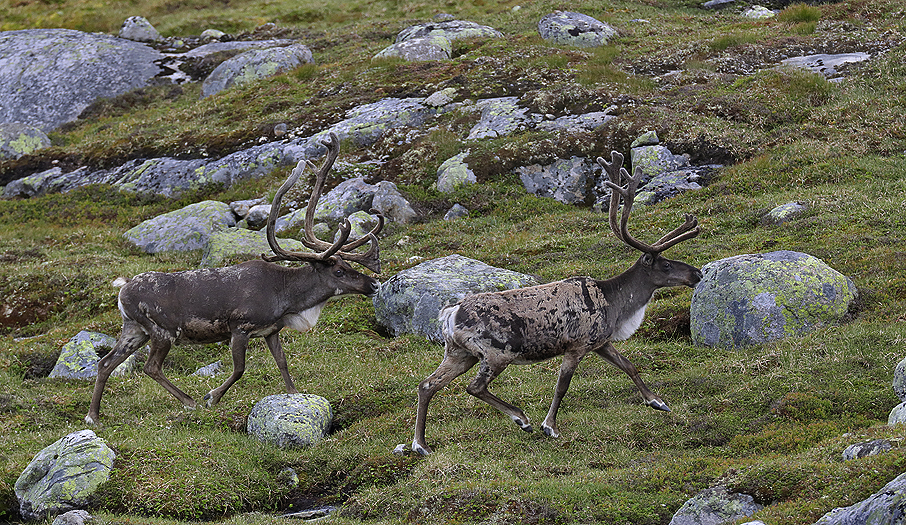
Reindeer Bulls (PAY). More images of Reindeer can be seen in the “Reindeer gallery”.
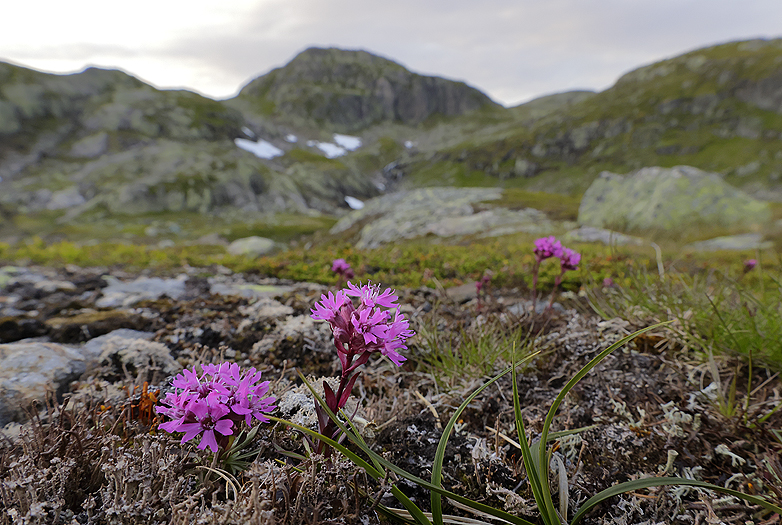
The first plants to bloom after the snow melt are Red Alpine Catchfly
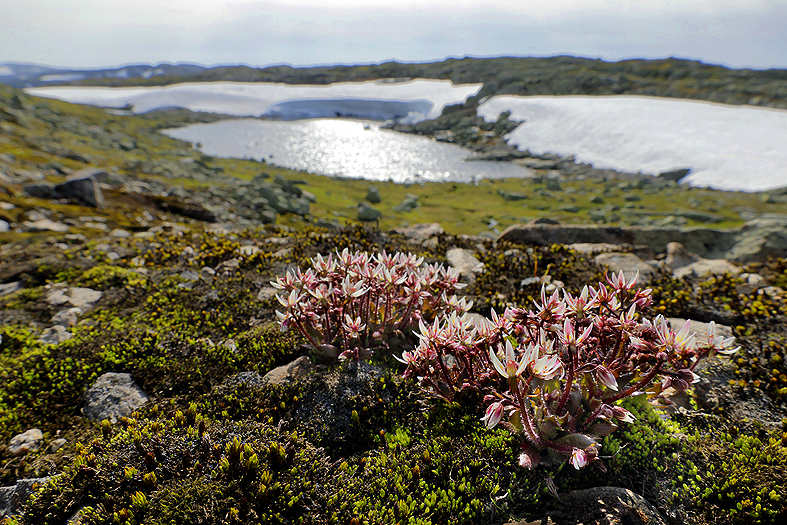
…and Saxifraga Stellaris. Both character species here.
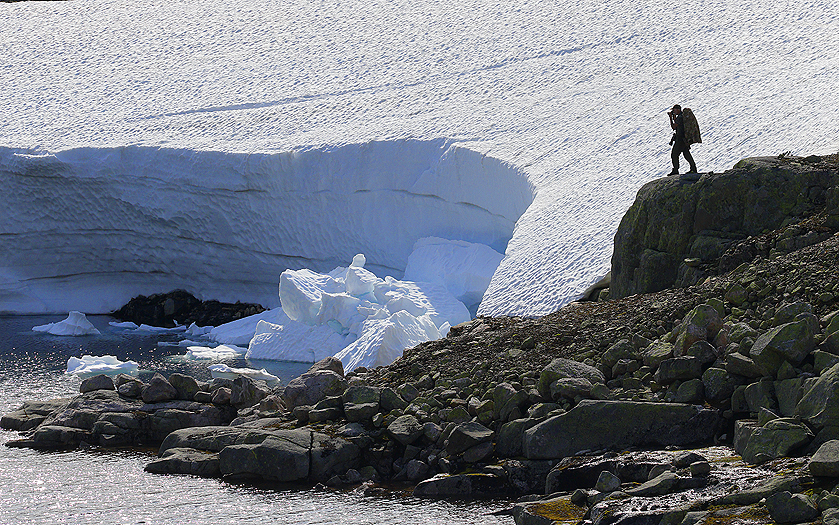
The snow fall are heavy in the Rjuven area, which are partly caused by oceanic climatic influence. Humid winds from the North Sea are blowing in from west and create meters on meters with snow. It can take near all summer to melt these down.
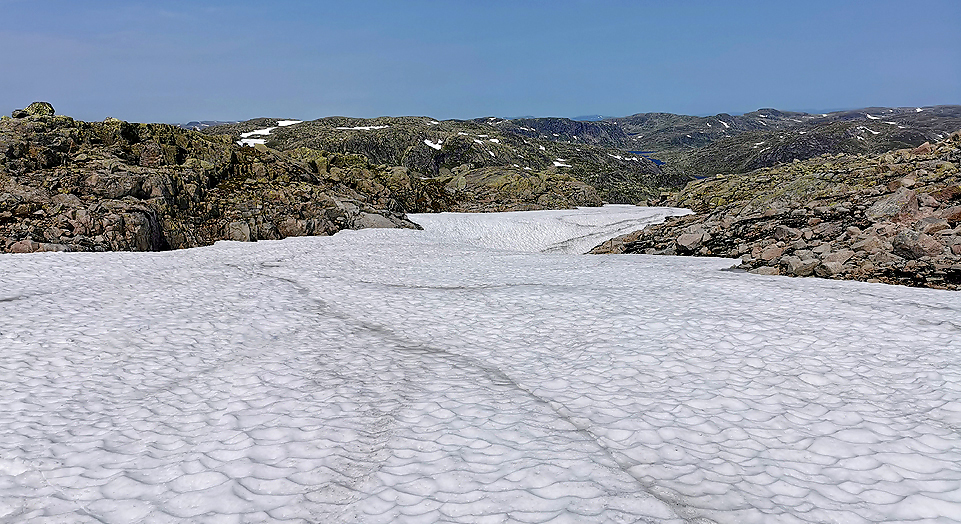
Huge snow fields stretches down from the highest peaks in the Rjuven mountain range.
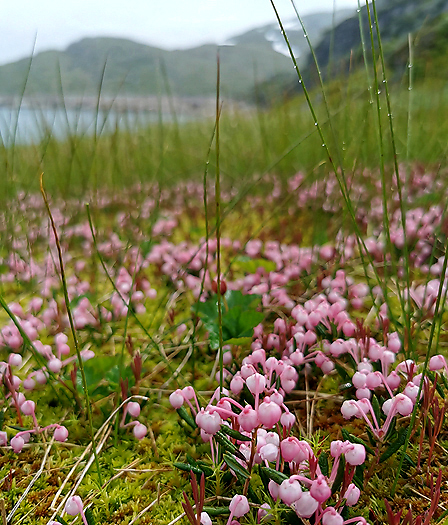
In mid-July the Bog Rosemary is flowering in the lower areas, but still above the tree line, of the Rjuven mountain range.
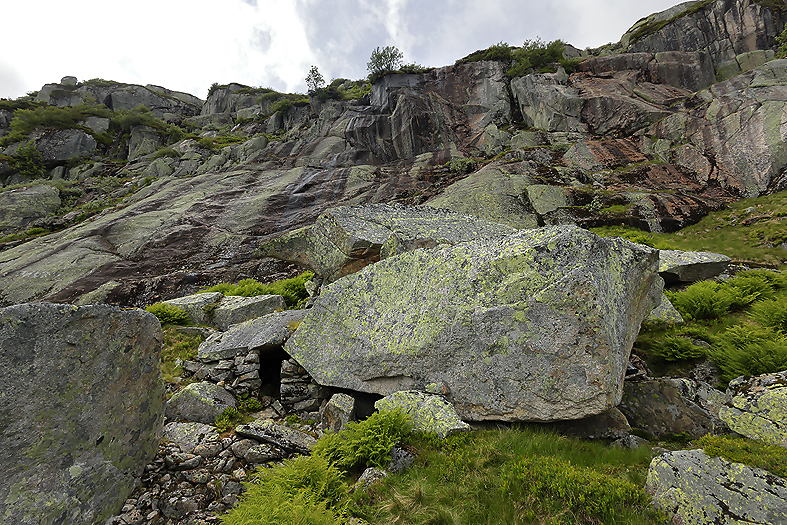
The area here have been used by mankind for thousands of years, -by reindeer hunters, herders etc. Some places mother nature has made the basis of a sheltered place to stay at night time and when the weather was to rough to be outside. This is such place, and where people back in time have improved the shelter by stacking stones and placed moss in between for preventing wind, rain and snow to force through the walls.
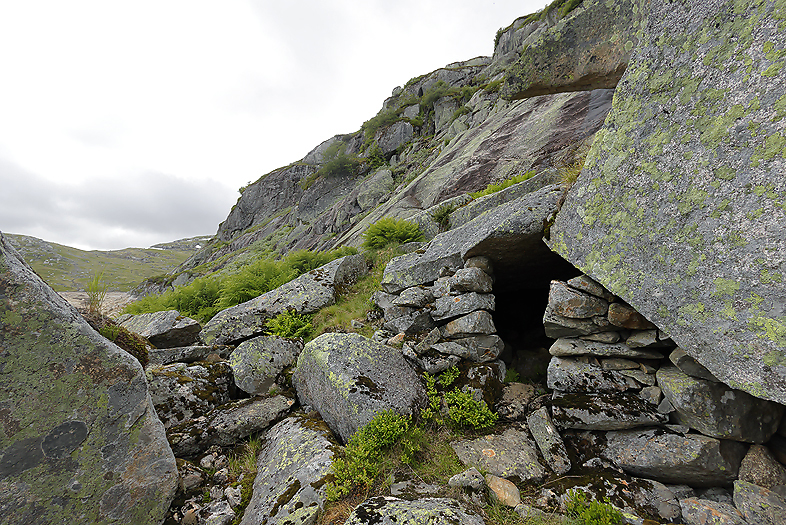
The entrance to the lowest shelter.
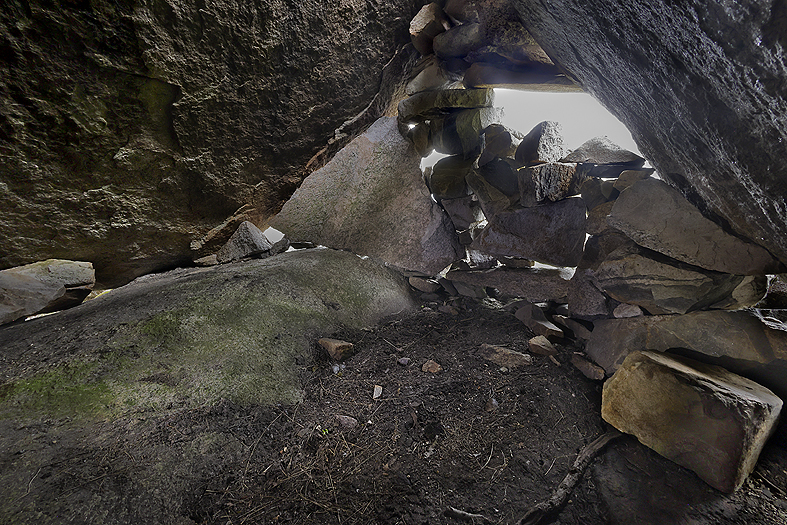
Inside the upper shelter. Maximum height is well over 2m.
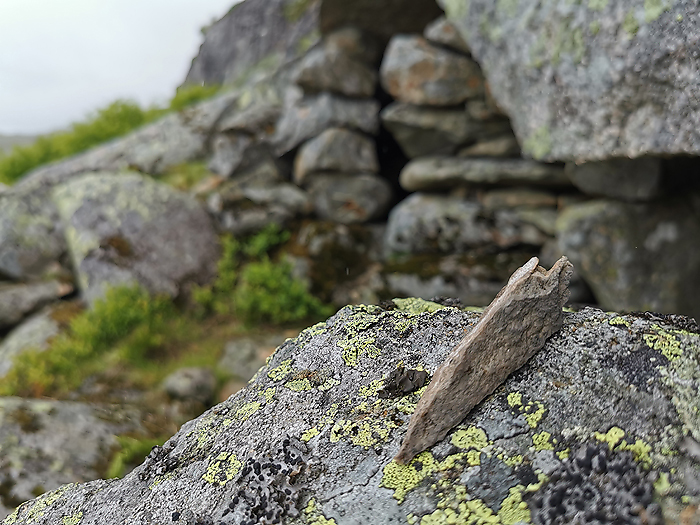
When visiting places like this one can find interesting objects that due to the remoteness has not been found by others and removed. More ancient material/photos can be seen in the “Archaeological Sites gallery”.
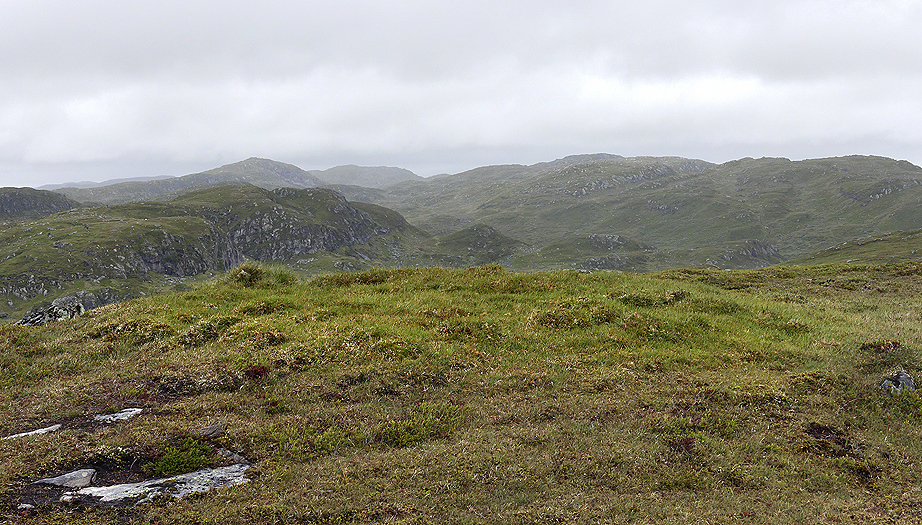
From the 1200-hundreds the King of Norway had all rights regarding catching Gyrfalcons for game hunting. Here we see remains of one of the very few places of this activity. It is estimated that this one dates back to the 1600-1700-hundreds and was used by Dutchmen. The circular grassy shape in the center of the photo is from a turf hut. The falcon catchers did not take falcon chicks from the nests, because they did not become very good for falconry. They only caught falcons that had learned to catch their prey in the wild. To achieve this, the hunters built small turf huts (3-4m in diameter) where they sat and guarded/waited. Outside the hut, they mounted at least two high poles with a pulley system with ropes that could be directed from inside the hut. When a falcon approached, a decoy (pigeon) was hoisted up on top of one of the poles, and when the falcon dived down to catch the pigeon, the pigeon was pulled down into the correct position for to release a net. The net was released at the same moment and fell over both the pigeon and the falcon.
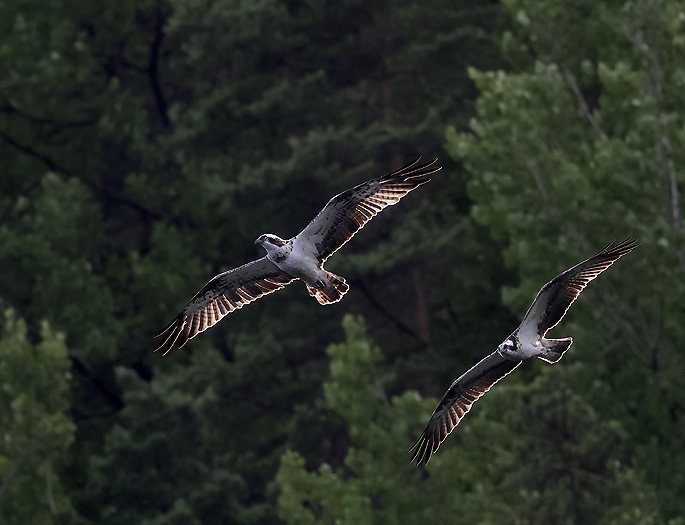
Below the Treeline the Osprey is nesting.
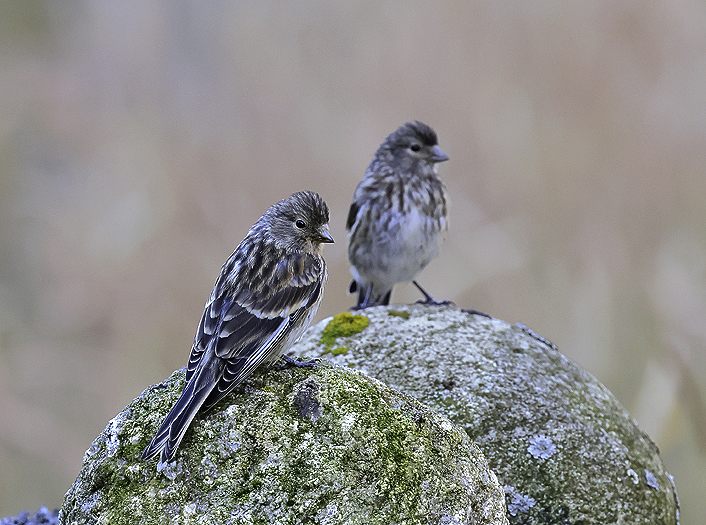
Twites. These have been one of the character species in the somewhat lower mountain areas, but have now been reduced in numbers.
END.
________________________________________________
________________________________________________
SPRING IN SOUTHERN NORWAY 2022.
Below is a selection of photos from mountain to coast this spring. Winter came late this season and with significantly less snow than average. At the end of the winter it is always a pleasure to see the increasing length of day light, and the well-known signs that springtime is closing in. When writing this blog post the spring is turning in to Summer.
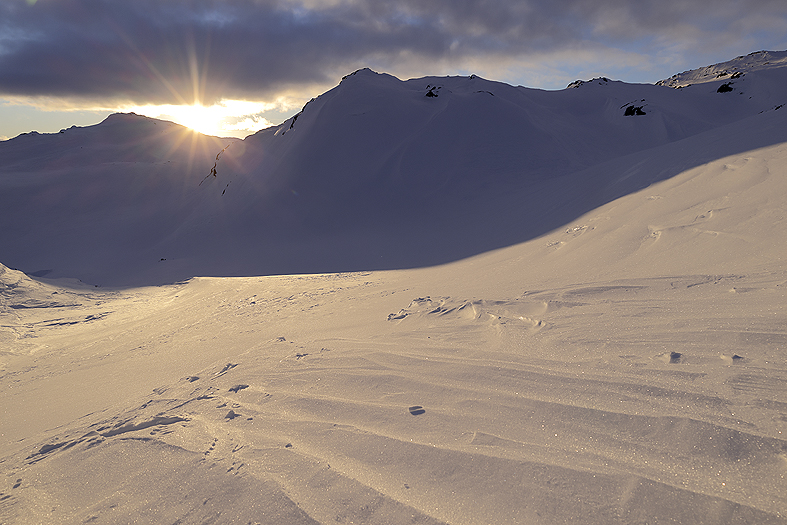
High up in the mountains it is still winter-like conditions, but spring is just around the corner.
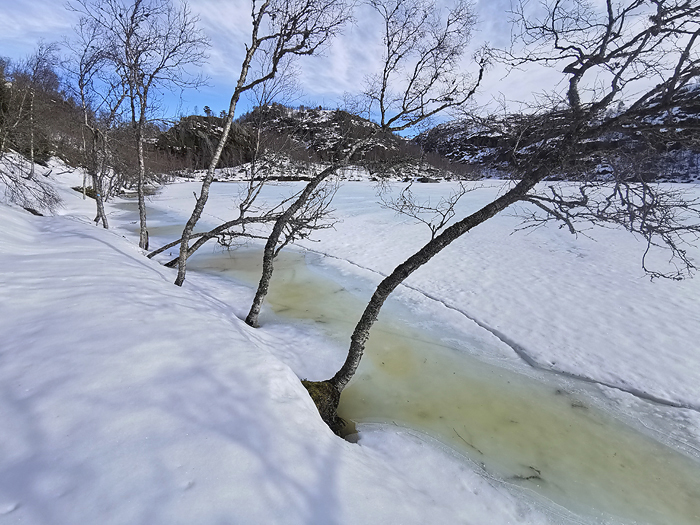
A bit lower in the mountains the lakes slowly start to open up.
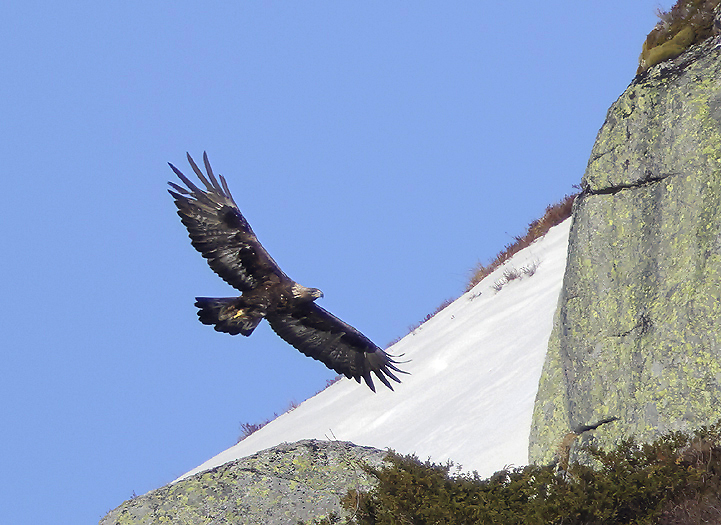
The Golden Eagles seem to nest in the high elevated mountain valley this year. The adult female is looking for prey when gliding along the upper side of this valley stretching from below the tree line and ending high above.
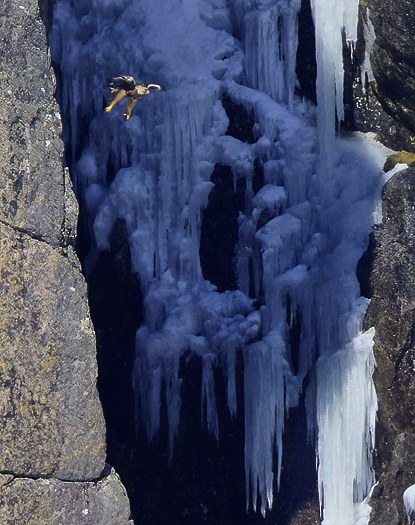
The Golden Eagle female is sliding down in front of a frozen water fall. More new images of Golden Eagles can be seen in the “Golden Eagle” gallery.
Even if spring is closing in the weather can be harsh in the mountains. Especially for us humans.
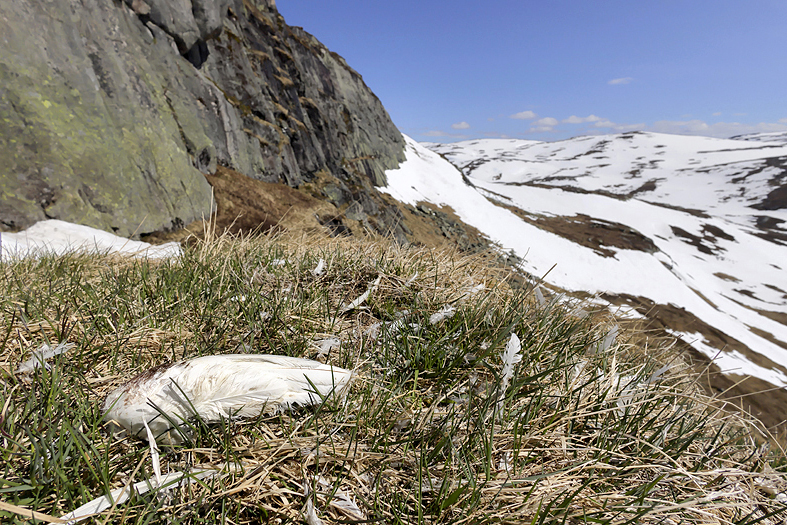
Signs of Gyrfalcon presence. Rock Ptarmigans are definitely the most important prey for Gyrfalcons. Leftovers from a fresh Ptarmigan meal speaks for itself. This year there a good numbers of Rock Ptarmigans in this part of Norway which make bigger chances for successful nesting with raising of young ones.
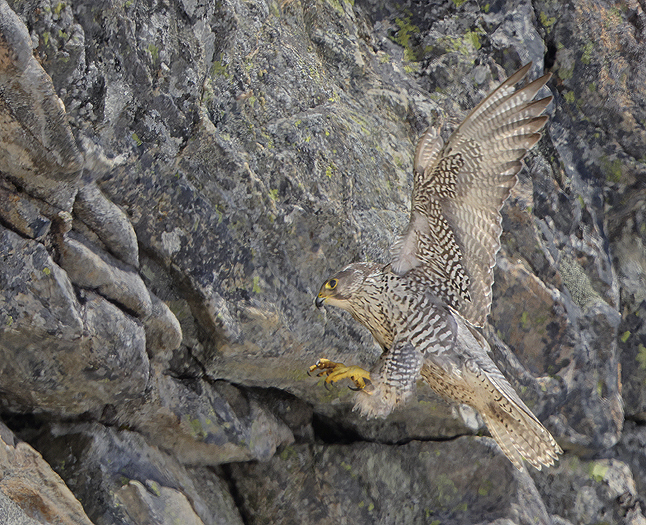
Gyrfalcon female. More new images of Gyrfalcons can be seen in the “Gyr Falcon” gallery.
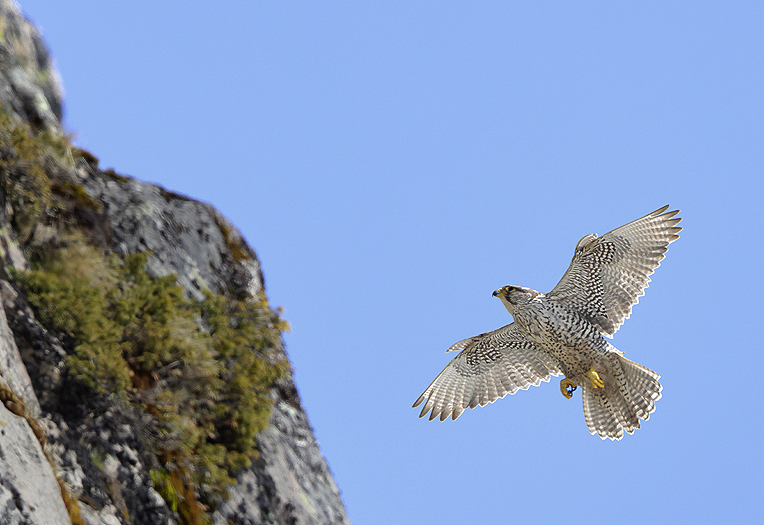
The Gyr Falcon female about to land on her favorite cliff in the rock wall.
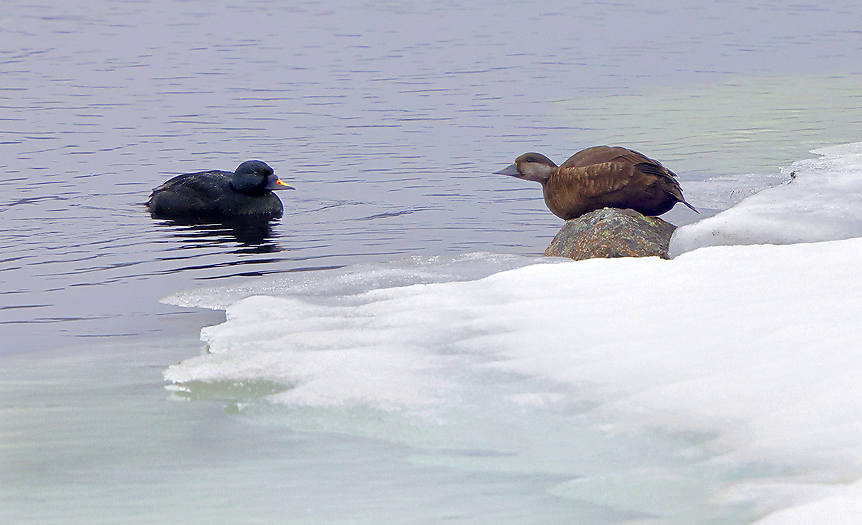
When the lakes start to open up in the mountains well above the tree line the Common Scoters arrive. These two have already started the ritual to form pair,
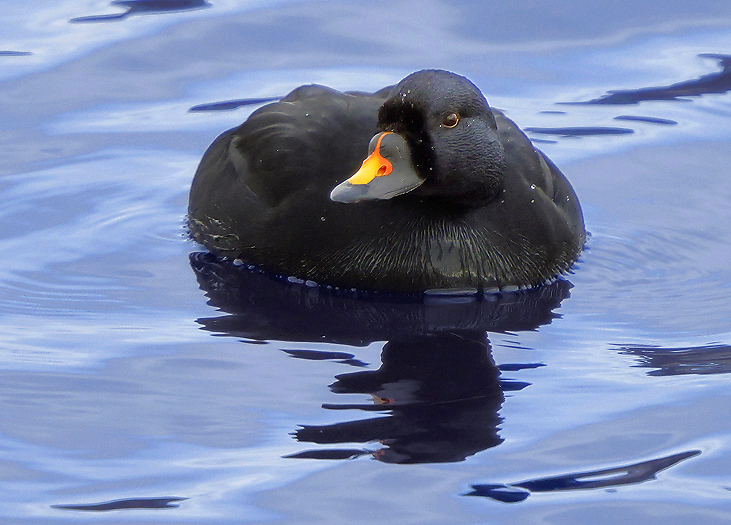
Common Scoter male. More new images of Common Scoters can be seen in the “Ducks” gallery.
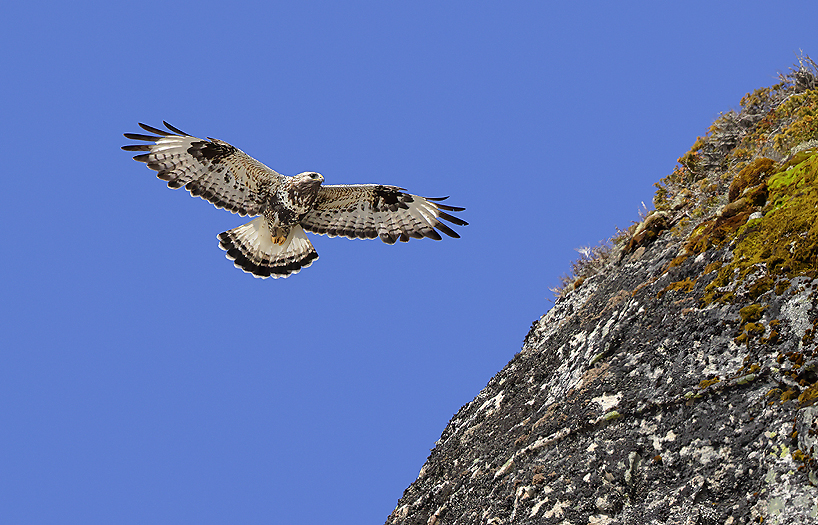
A Rough-legged Buzzard is drifting along a rock wall. The snow on ground lightens up the bird underside. As for the Rock Ptarmigans there are good numbers of Rodents this year, so it is expected several nesting pairs of these birds in the area. More images of Rough-legged Buzzards can be seen in the “Rough-legged Buzzard” gallery.
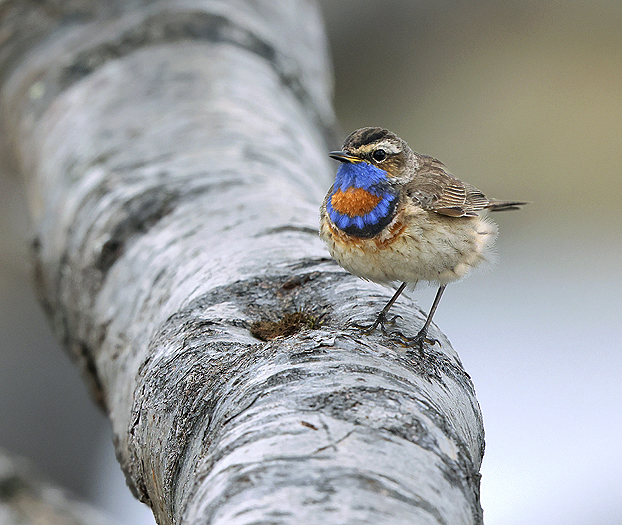
Th characteristic Blue Throat have already occupied territory on a small wooden spot with 5 Birch trees and is now calling for a female. More images of Blue Throats can be seen in the “Others” gallery.
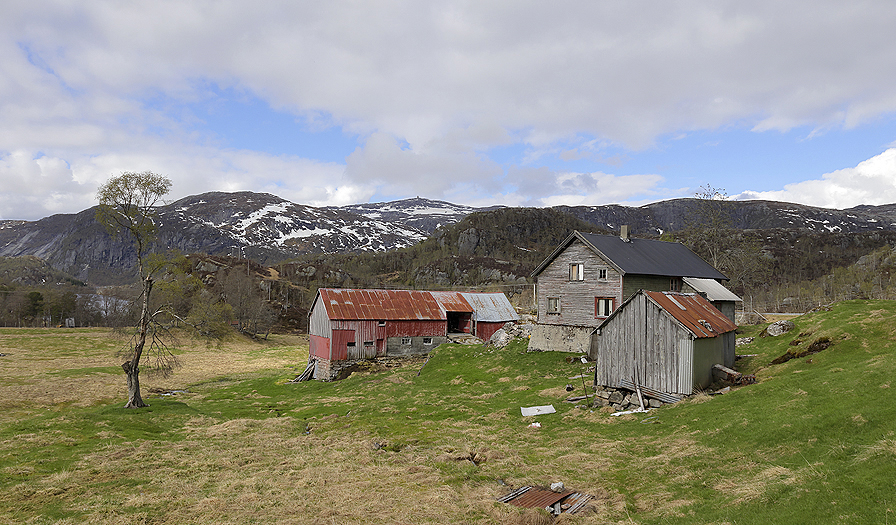
One of the many abandoned farms that border to the mountainous areas in Norway. This was abandoned for around 30 years ago and will probably stand until it falls down by itself due to general decay.
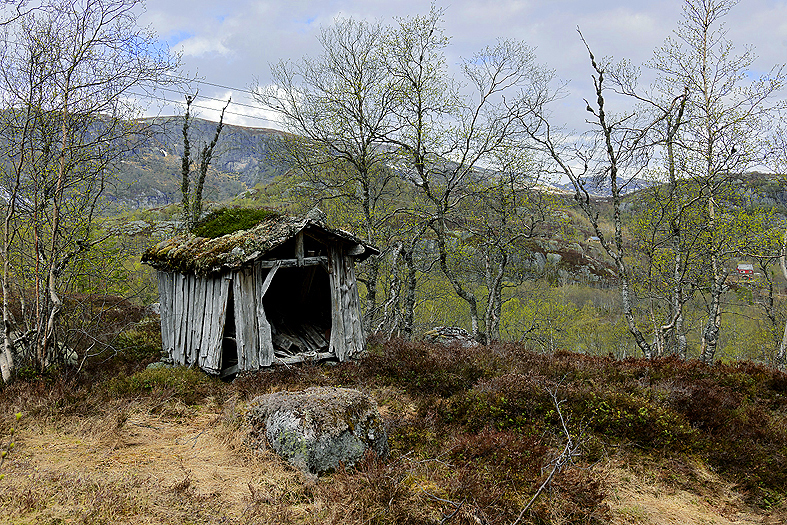
…and this tiny building for storage of hay have seen better days, thousands of such buildings have rotten down due to abandoned farms that does not need hay for animals that are away for decades ago.
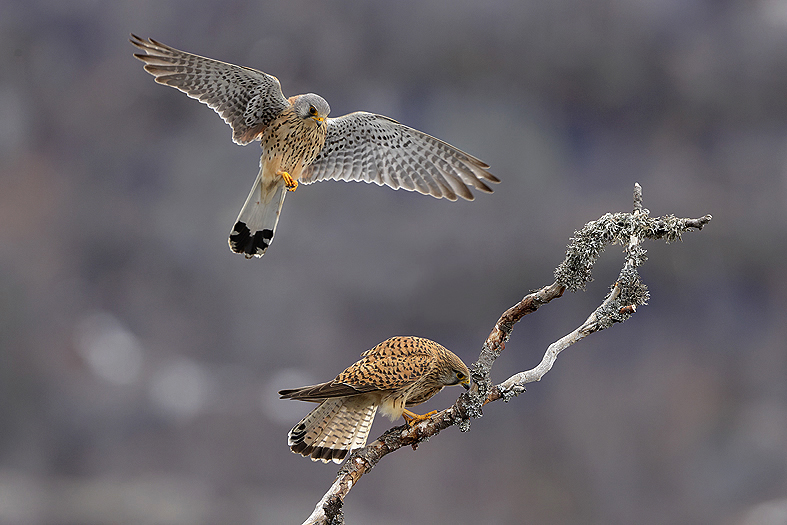
In the mountains, below the Tree line a pair of Kestrels is preparing the nesting season.
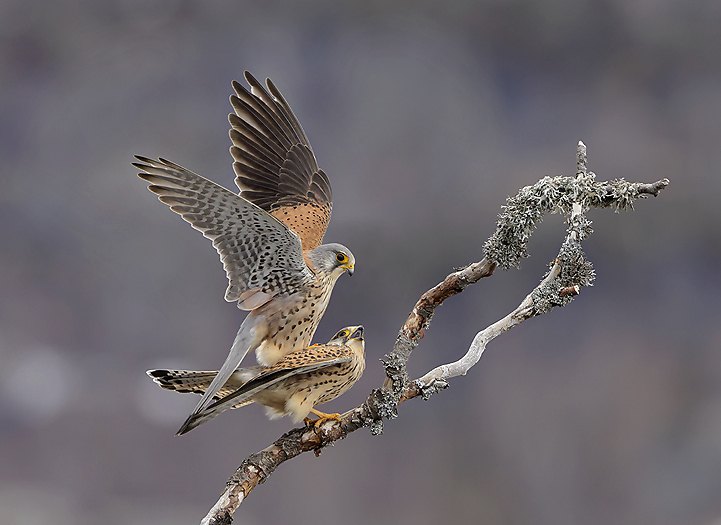
Mating Kestrels. In 2-3 weeks the female will lay her eggs. More images of Kestrels can be seen in the “Kestrel” gallery.
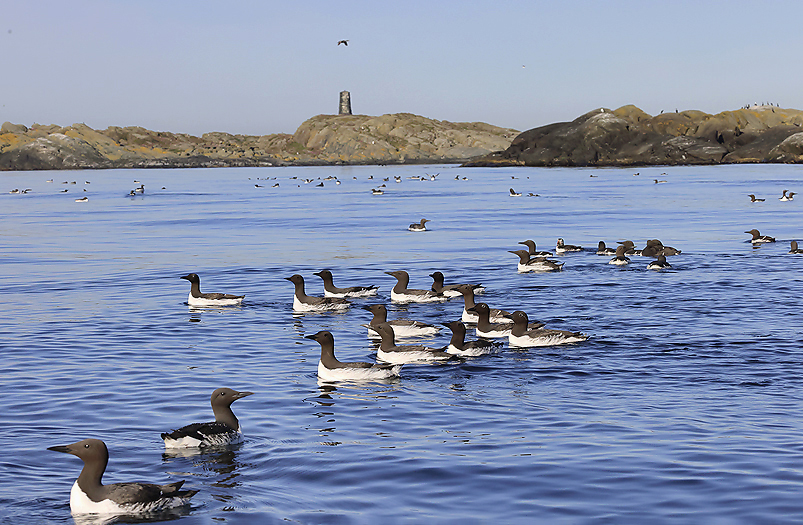
Suddenly down by the coast we meet another world containing myriads of birds. Here we see that the Guillemots have started the spring congregating at the archipelago far out from the mainland. It is great to see that also this year the numbers of Guillemots on this location is good, -together with last year “better numbers than ever”.
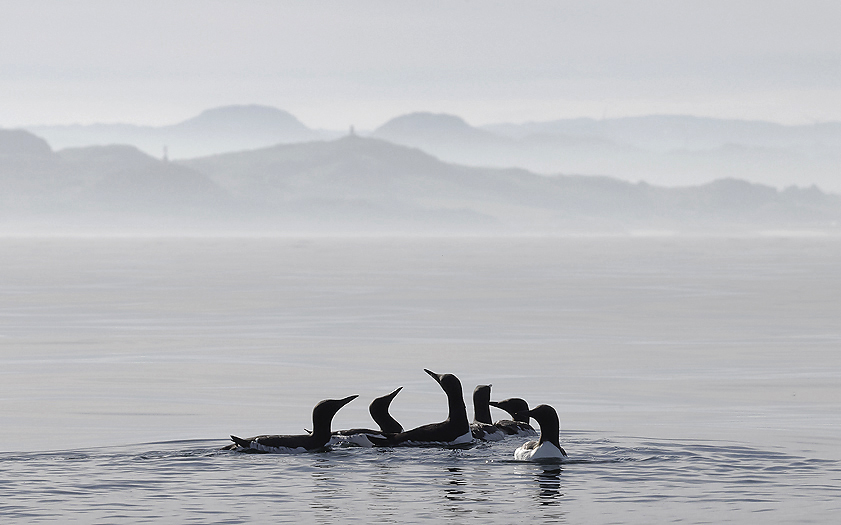
Guillemots an early morning. The mainland in the distance.
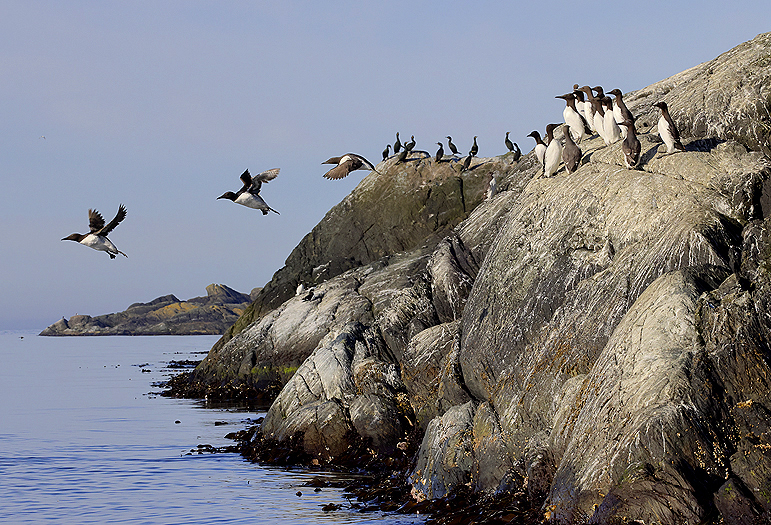
Part of the archipelago`s coastline. Guillemots with Shags in the background.
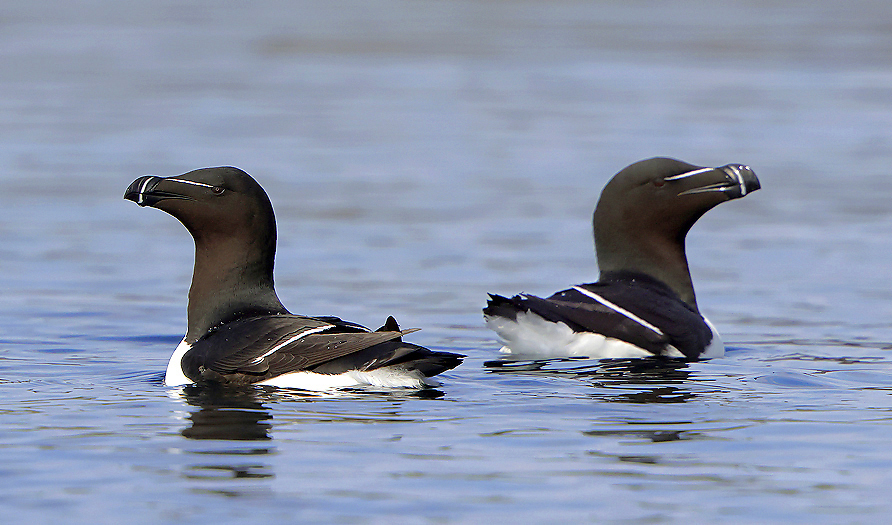
Some of the Razorbills have already formed pair.
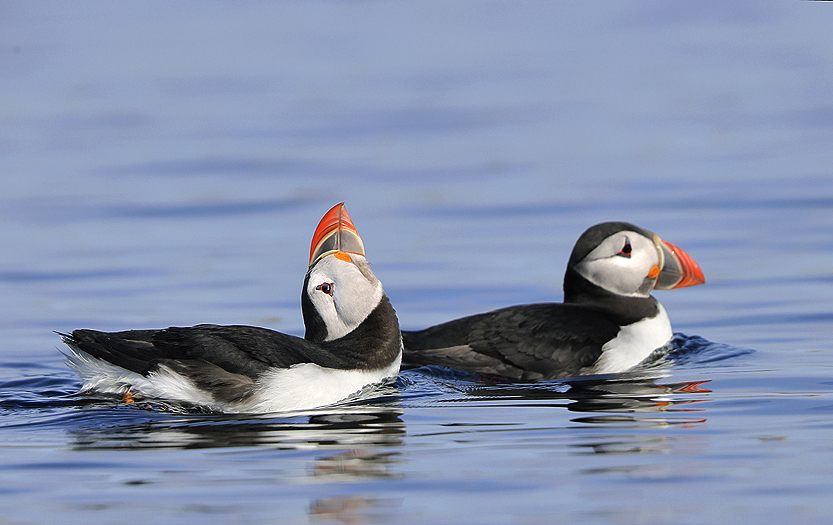
…as well as the Puffins. Typical for Puffin males to impress the ladies is to bend his head backwards for a couple of seconds. This year the number of Puffins was rather low. Less than 10 pairs
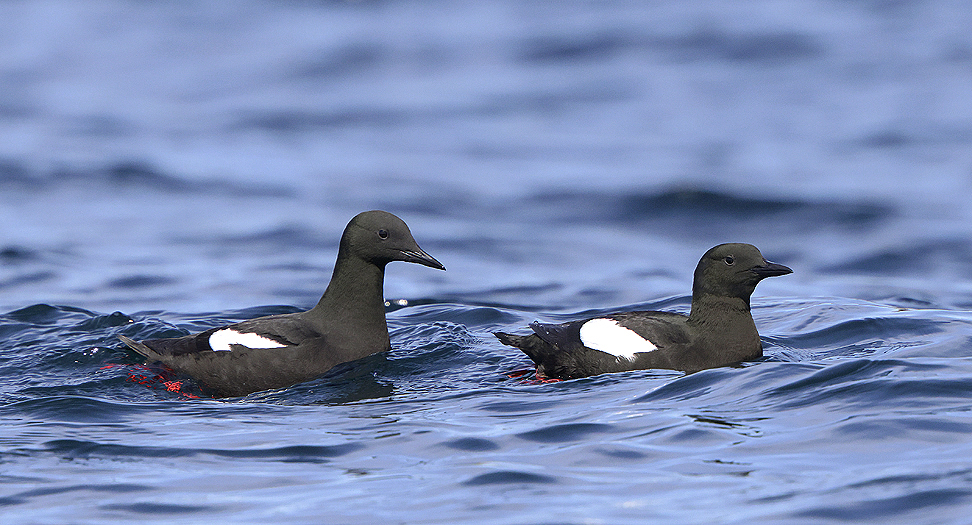
Black Guillemots couple. Their numbers have been stable for years.
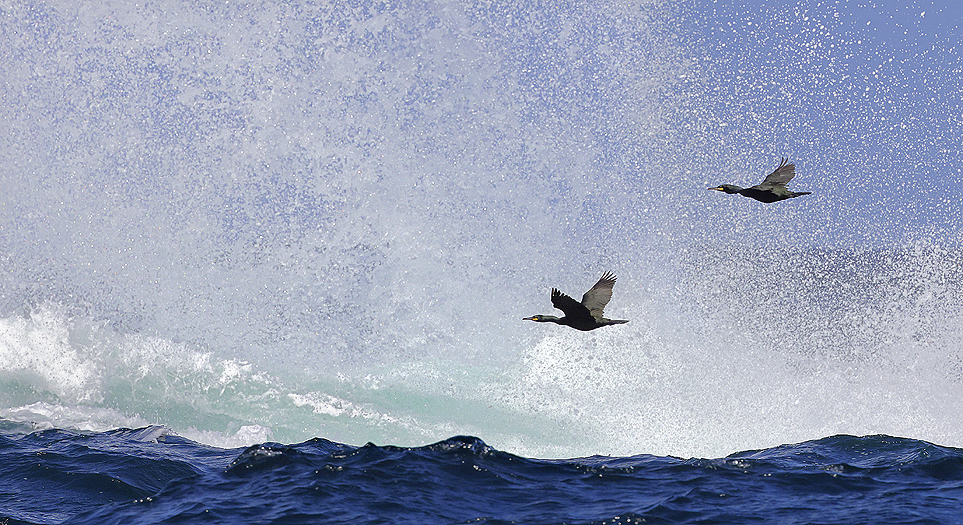
Despit6e stormy weather the Shags are on their way further offshore to the fishing fields.
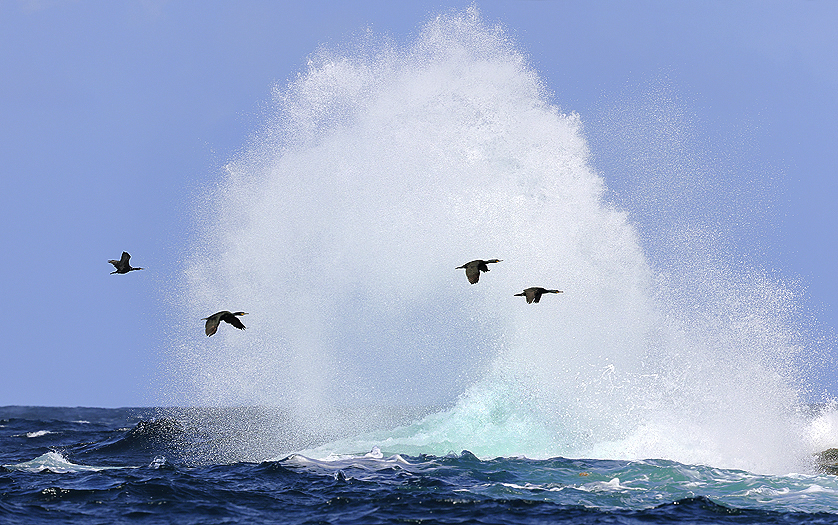
Shags return back to the archipelago from the fishing fields offshore. Quite a bit spray from the swells after the recent storm. More images of Seabirds can be seen in the “Seabirds” gallery.
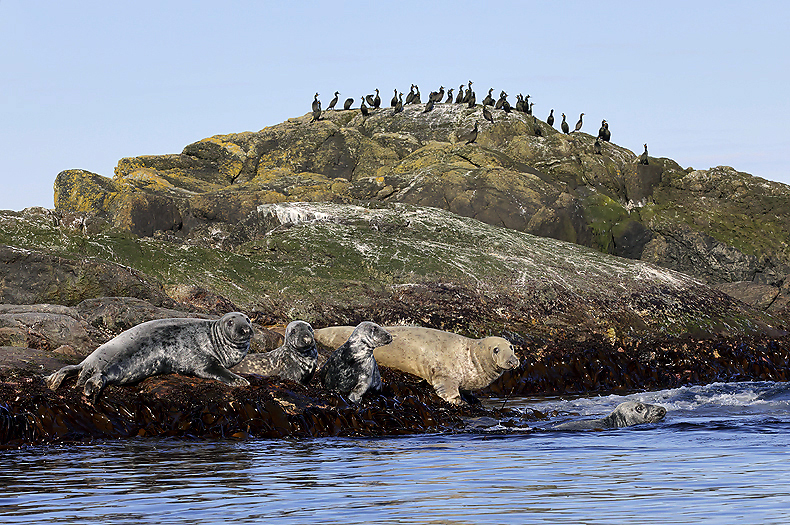
Grey Seals with a flock of Shags sitting on one of their favorite places in behind.
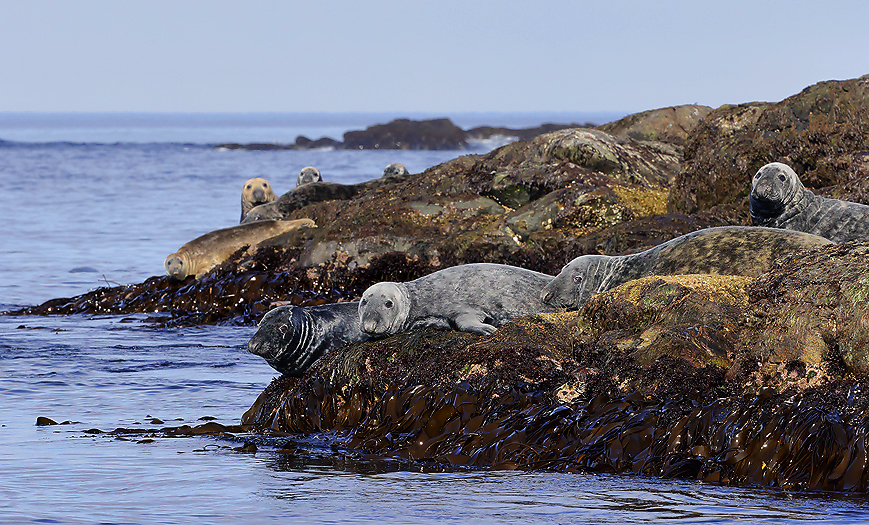
Grey Seals. More images of Grey Seals can be seen in the “Seals” gallery.
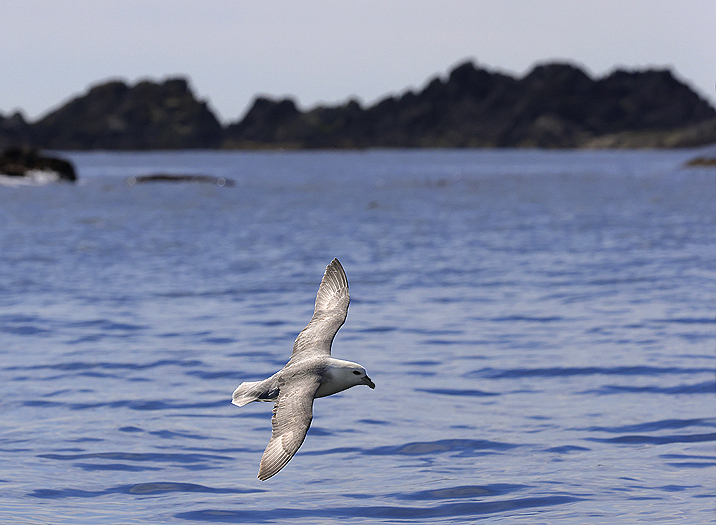
Fulmars also nests out at the archipelago. In stable numbers.
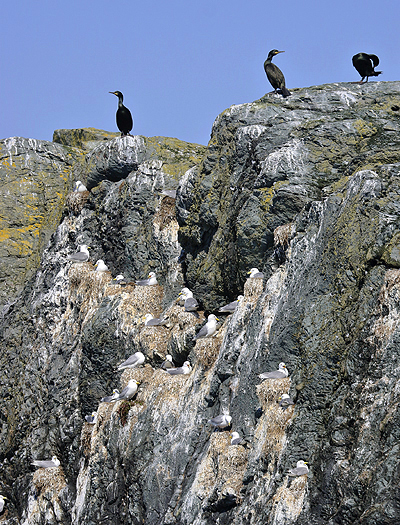
This is a historical photo of nesting Kittiwakes taken 15 years ago on the archipelago. Due to lack of specific food source for them they have not nested for the last 10 years, -at least. Some birds were observed close to this traditional nesting cliff this year, so there are a tiny hope they perhaps can find back gain if their food source show up again. PAY.
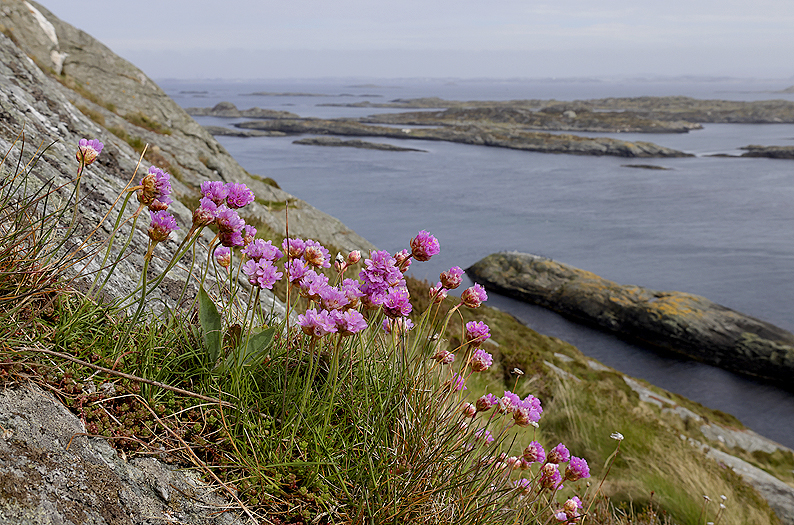
Sea Thrift at the archipelago. PAY.
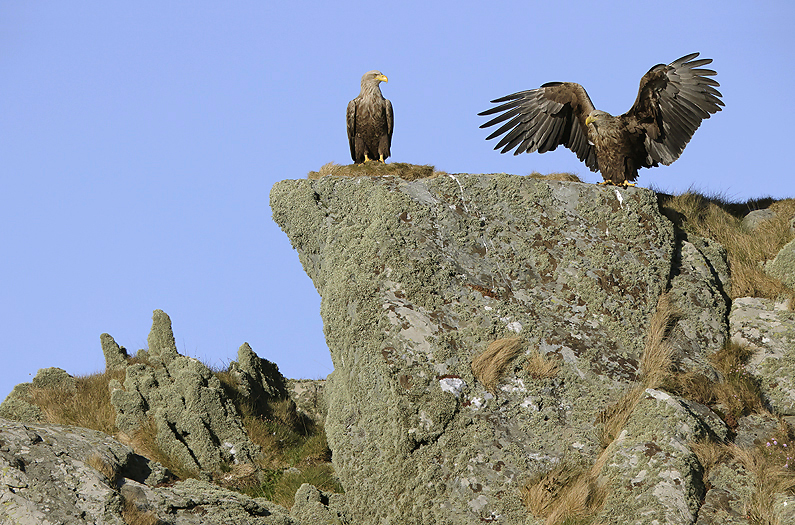
The White-tailed Eagles continue to nest at the archipelago, but at another location compared with last year. Great to have these magnificent birds back again after decades away due to earlier persecution. PAY
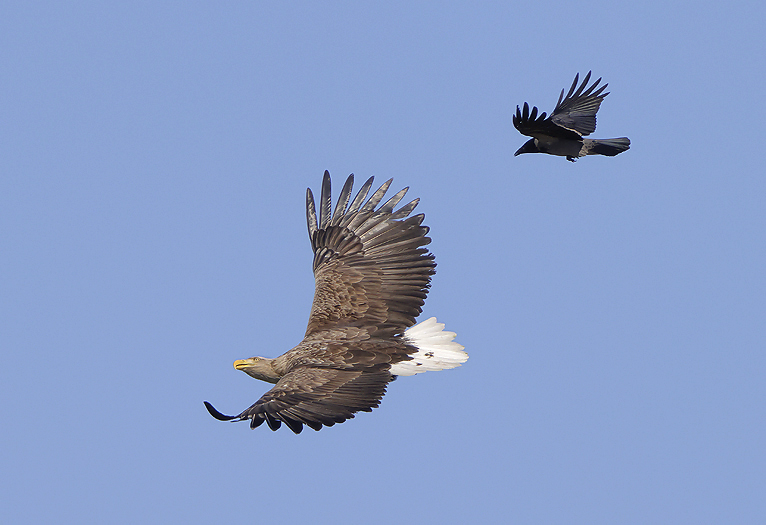
The White-tailed Eagle is harassed by a Hooded Crow. PAY. More images of Grey Seals can be seen in the “White-tailed Eagle” gallery.
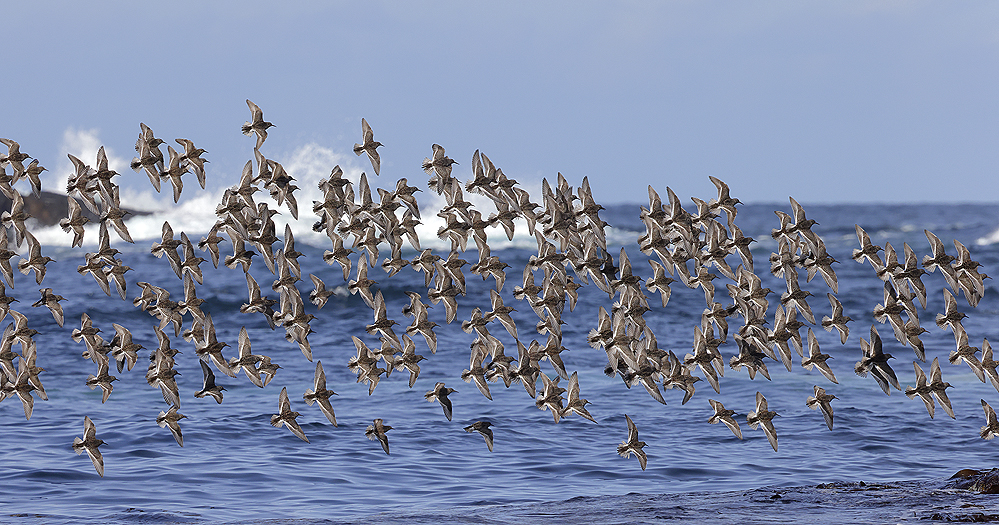
Early spring show up huge flocks of waders by the coast. Here a number of Purple Sandpipers.
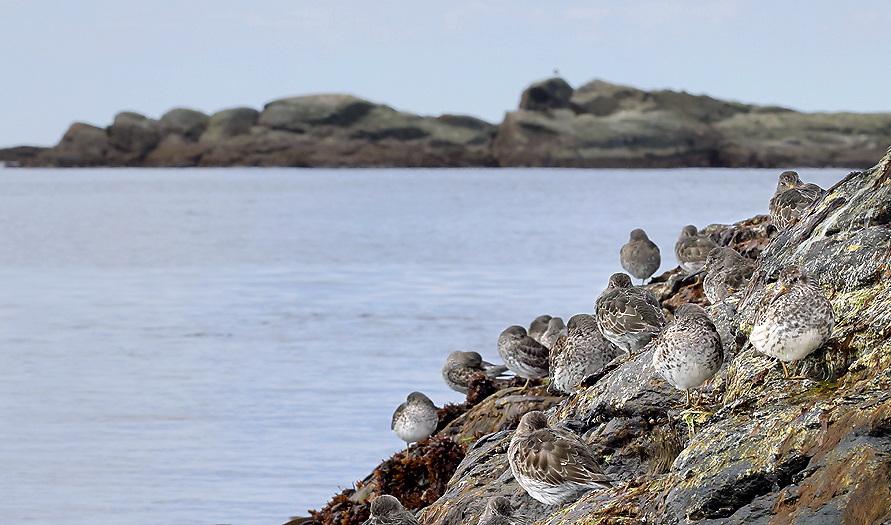
Resting Purple Sandpipers after migration “pit stop”.
END.
________________________________________________
________________________________________________
REINDEER SURVIVAL IN ONE OF THE MOST CHALLENGING WINTER CLIMATIC AREAS OF NORWAY, FEB/MAR-2022.
Below is a selection photos from a recent trip into the snow covered mountains of southern Norway for observing how the population of wild Reindeer live in the winter time.
This specific population (Setesdal vesthei, Ryfylke Wild Reindeer area) is living under extremely rough conditions in winter time where the weather is affected by a humid oceanic climate. This causes frequent storms where the temperature can vary between around 0 -30°C. The snow depth is normally several meters at this time of the year. The ongoing climate changes have more and more often resulted in temperature above zero with rainfall up to the highest peaks & plateaus followed by freezing up again where the landscape then is being covered by an ice shield making it hard for the Reindeer to dig/scrape through the snow for finding food. When the pastures contain the least amount lichen we understand that life can be hard for these amazing animals.
The northern part of this Reindeer area the peaks reach 1658m above sea level, in the central part we find the mountain range Rjuven (Urdalsnuten 1434m above sea level), and in the south the Reindeer area falls down to 500m above sea level. The name Rjuven means “the rocky and bare ridge”, and the name suits well for this area containing hard granite.
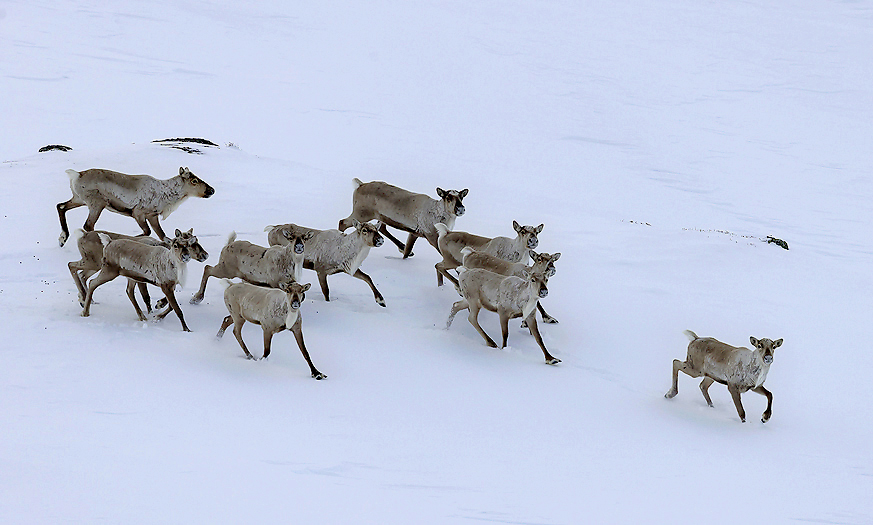
Part of the Reindeer herd is closing in to check the visitors.
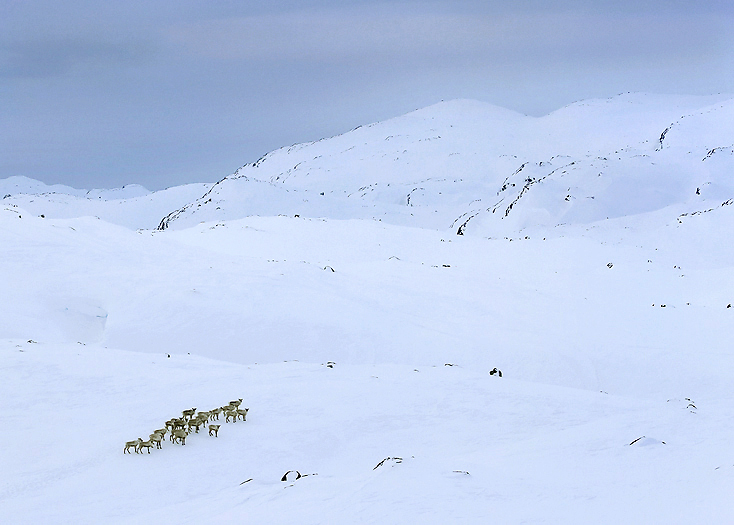
A small herd on a late afternoon.
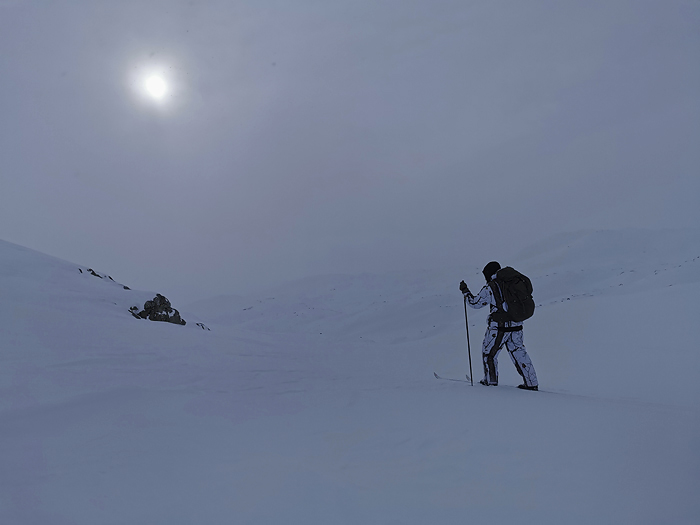
Heading back to base camp for the night.
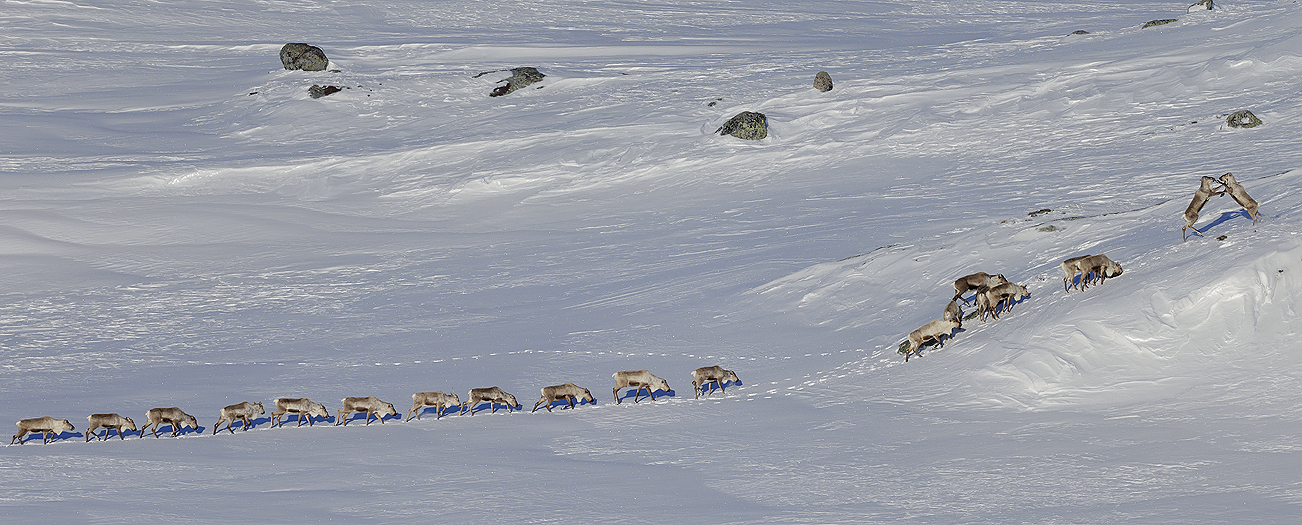
When the snow is deep and soft the Reindeer very often follow each other in the same track to save energy.
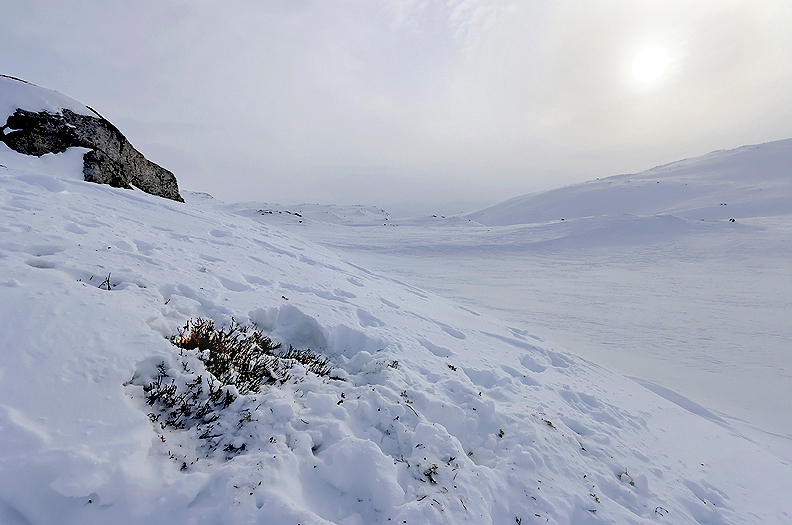
Here we see that the Reindeer have scraped away snow to find food on the ground. Blueberry plants have been on the menu. Due to limited vegetation caused by barren bedrock with very little Reindeer Lichen they must eat what is edable and available.
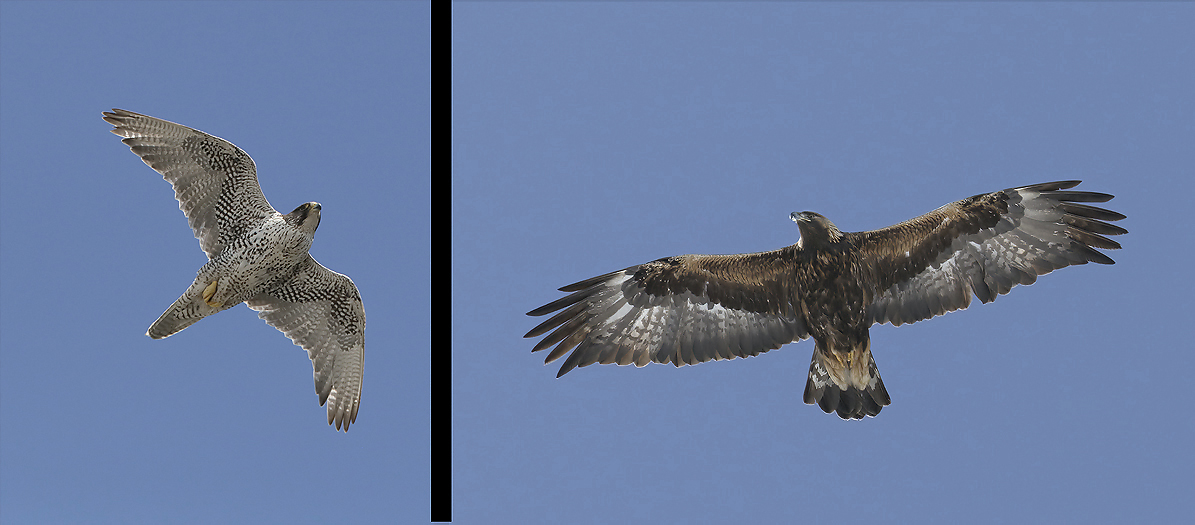
Both Gyrfalcon and Golden Eagle have territories in the area. The latter one in the treeline. (PAY)
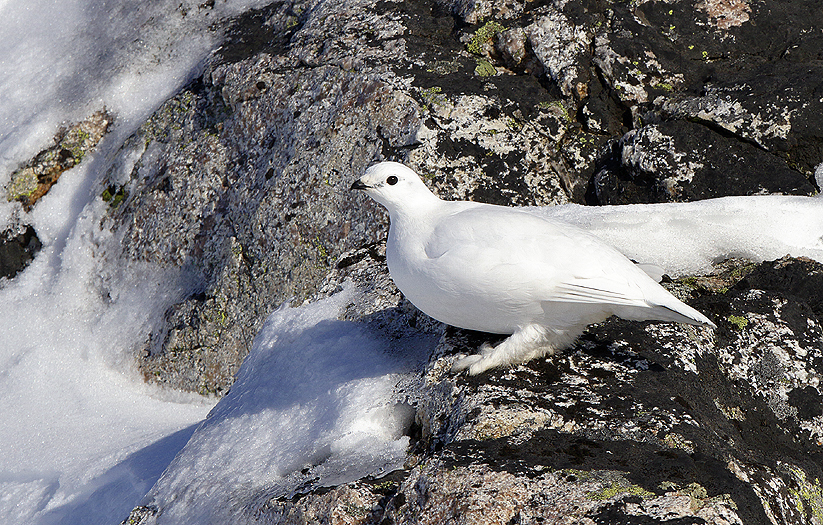
Rock Ptarmigan is normally common here. However, -this year they seem to be in very low numbers. (PAY).
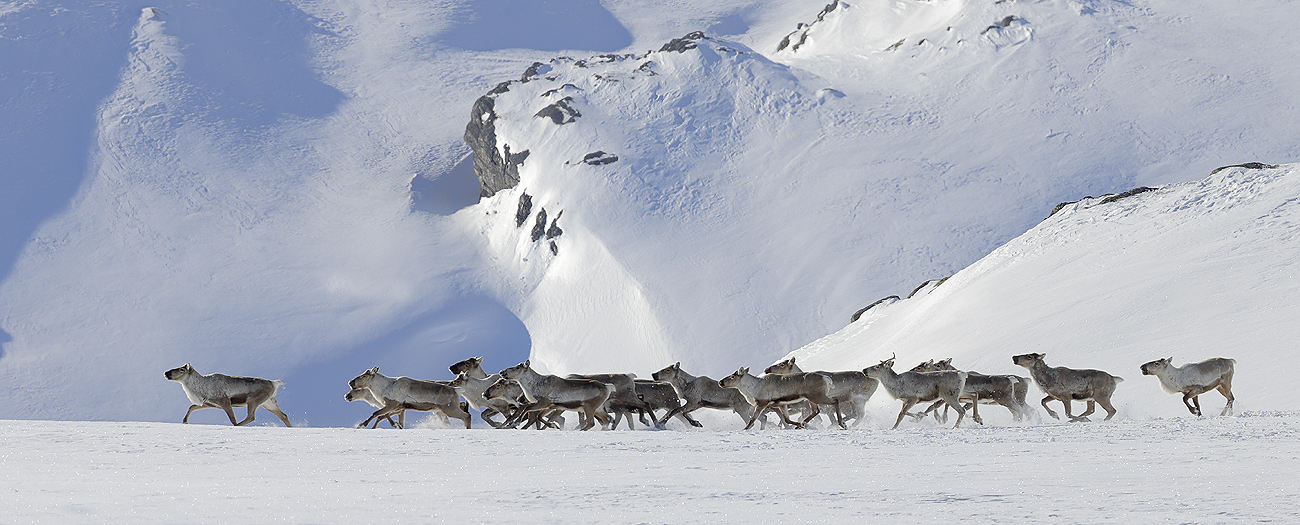
Reindeer herd. More new images of Reindeer can be seen in the “Reindeer gallery”.
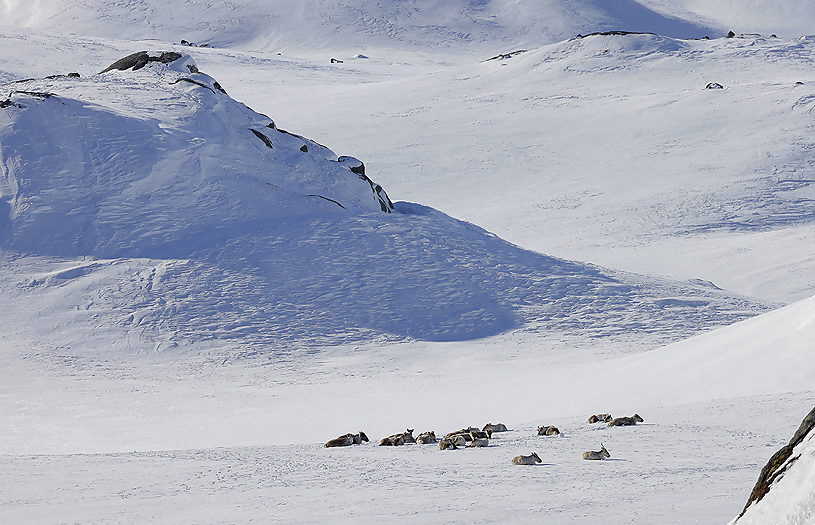
Already in March month the sun can create warmth at this latitude. This specific day is like that, and where the Reindeer therefore rest until the sun is lower on the sky.
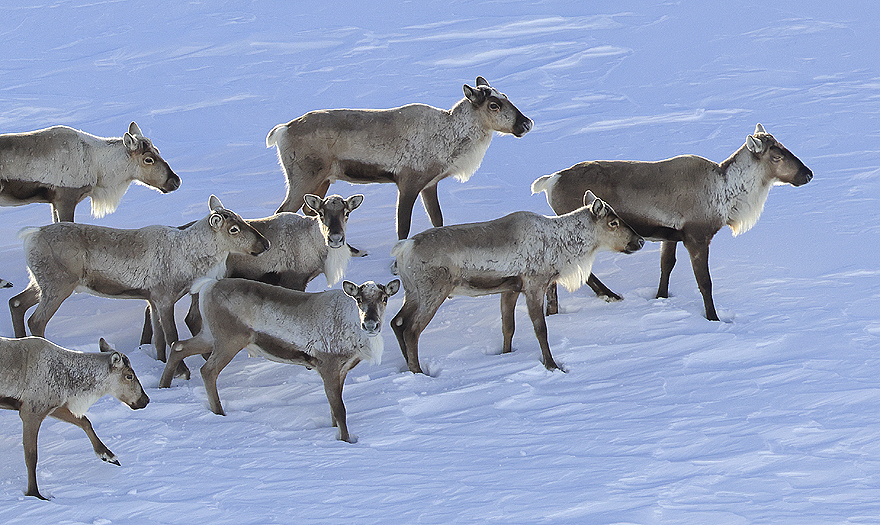
A close up study of these magnificent animals.
END.
________________________________________________
________________________________________________
A TRIBUTE TO THE LAST EUROPEAN WILD REINDEER ! SEPT / OCT -2021 IN THE SOUTH NORWEGIAN CENTRAL MOUNTAINS.
Due to the threats to Reindeers caused by Chronic Wasting Disease (CWD) in Norway described in previous blogpost “HARDANGERVIDDA MOUNTAIN PLATEAU IN SOUTHERN NORWAY, JULY 2021” this post is once again dedicated to the wild Reindeer of Norway.
As earlier described the Reindeer that migrated to what now is Norway after the last ice age came from two different areas:
1). From the southern European continent: They now inhabits Hardangervidda, Nordfjella, Setesdal-Ryfylke, Setesdal East etc. These Reindeer populations are now a mixture of released domestic & original wild animals.
2). From east (Beringia): Now inhabits only Dovre (incl. Knutshø), Rondane and Sølnkletten mountains. The Reindeer here are the direct ancestors of the original Reindeer (Rangifer Tarandus Tarandus) that migrated to the land after the ice retracted around 10 000 years ago (no mixing with domestic animals).
The disaster would be complete if the animals from Beringia should be infected with CWD and where the authorities should run the same decimation / extermination program as for the Hardangervidda and Nordfjella populations.
This blogpost show a selection of photos of the Reindeer at Dovre (Dovrefjell) that was taken during a 14-days period in late September and early October this year:
The mountain areas roamed by the Reindeer are huge and it can be a real challenge finding them. The wind blowing direction is an important factor here as the animals always move against the wind.
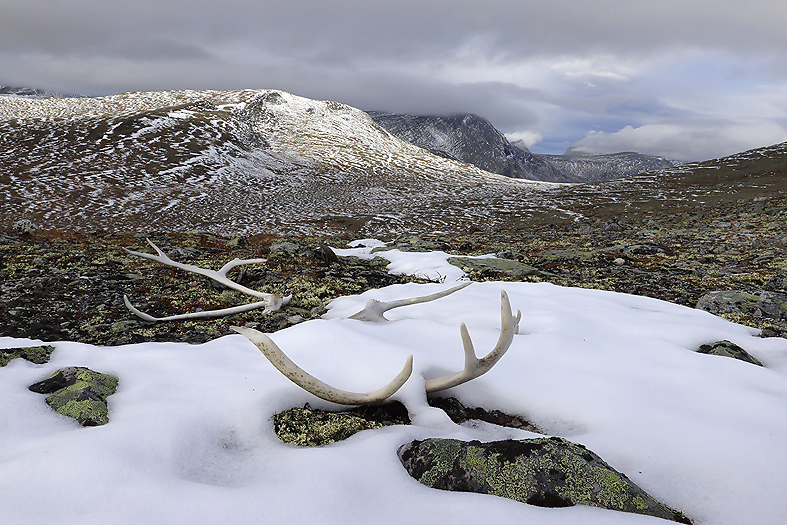
Evidence that the area is inhabited by Reindeer…
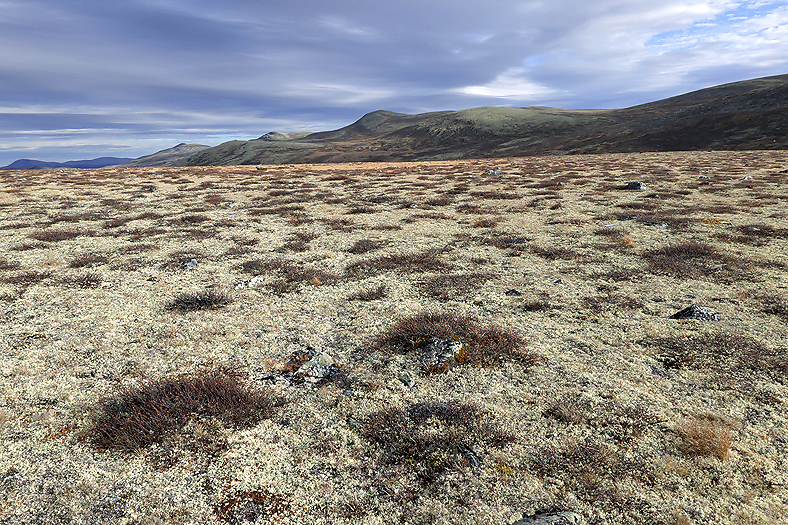
A few sheltered valleys show especially good Reindeer pastures.
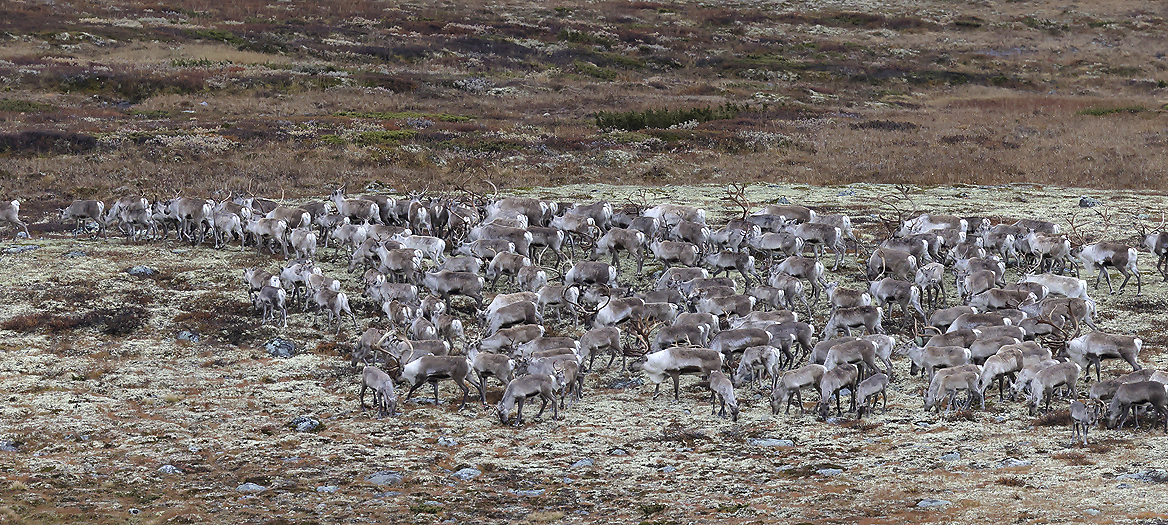
Part of one of the Reindeer herds.
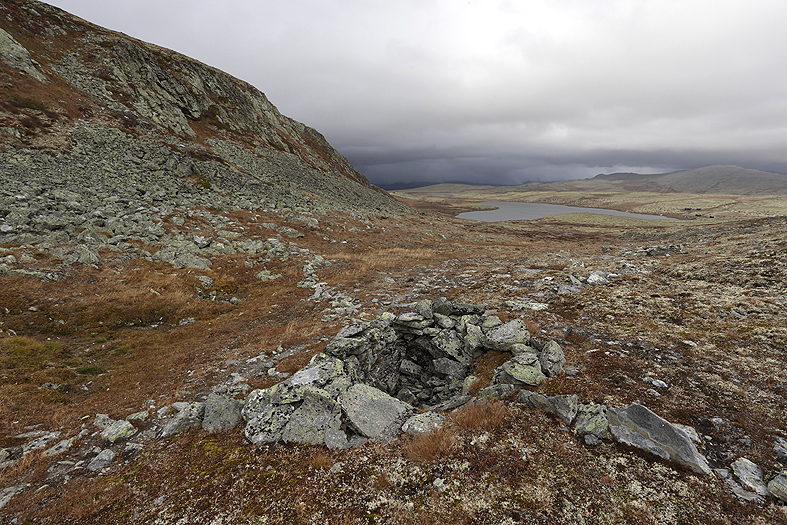
Reindeer pitfall trap with lead fences, dated back to the Iron Age.
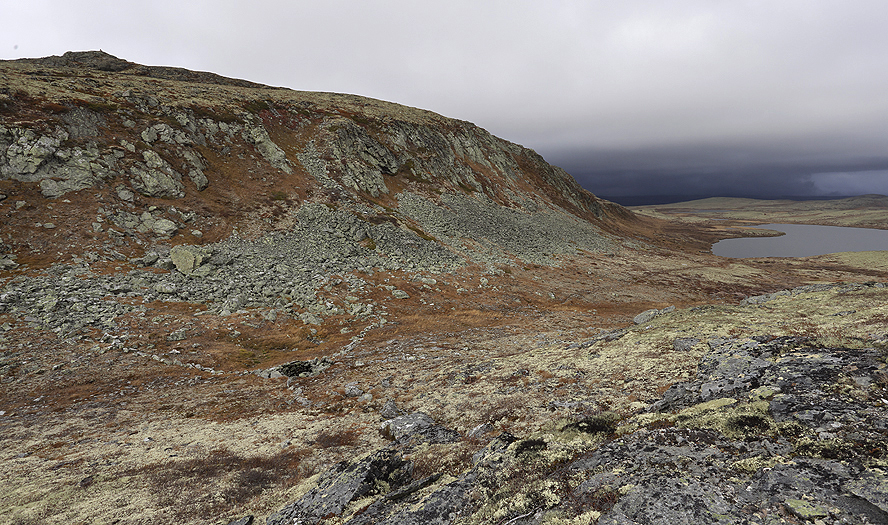
The same pitfall trap as above. Here we can see that the trap “covers” the whole canyon. Even today the Reindeer trail here follow the depression. The pitfall trap was covered with vegetation upon thin wooden sticks placed across the trap opening. The Reindeer was totally unaware of the trap and did not discover it before it had fallen down into it. More new images of Archaeological Sites can be seen in the “Archaeological Sites” gallery.
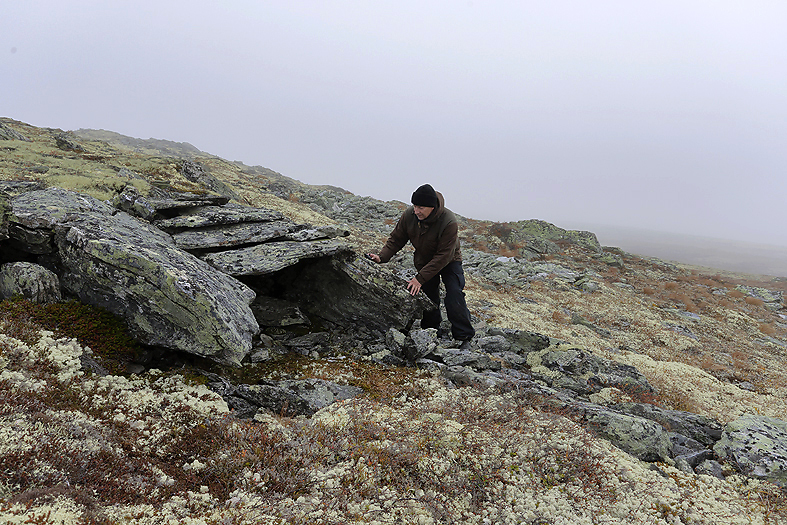
The author look into a primitive shelter from late Iron age. This was probably in use in conjunction with a bigger Reindeer trap-system close by in late Iron age /early Medieval time period.
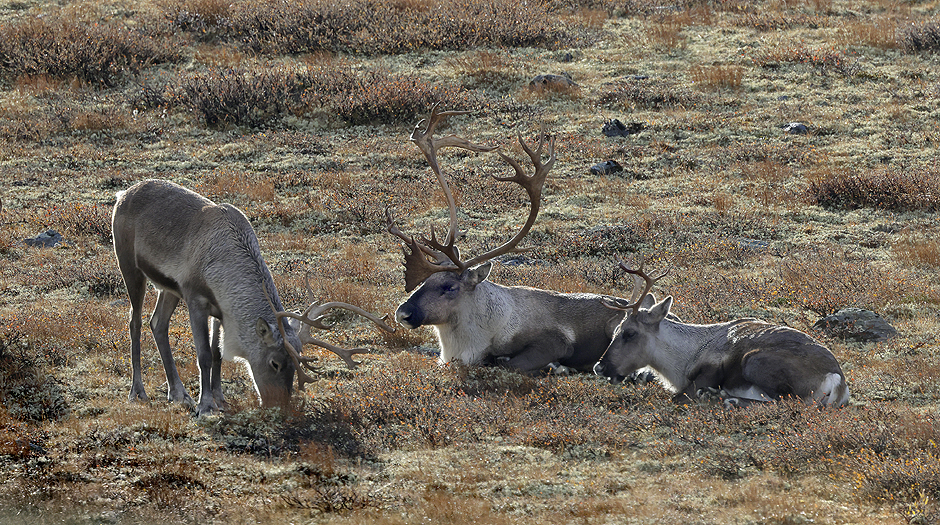
The Reindeer in these mountains are normally very shy, but if the wind direction is favorable and the landscape can provide some kind of shelter it is after all possible to come quite close and study them more relaxed.
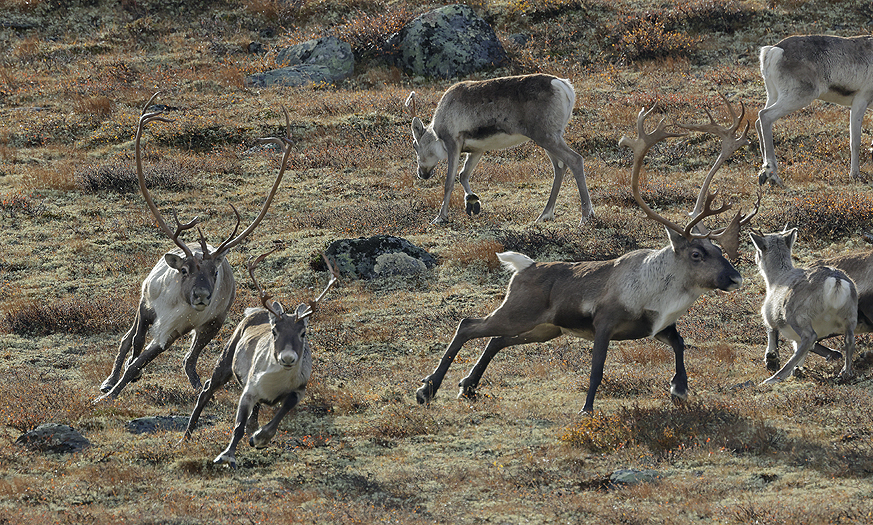
Internal smaller fights now in the end of the Rutting time occur.
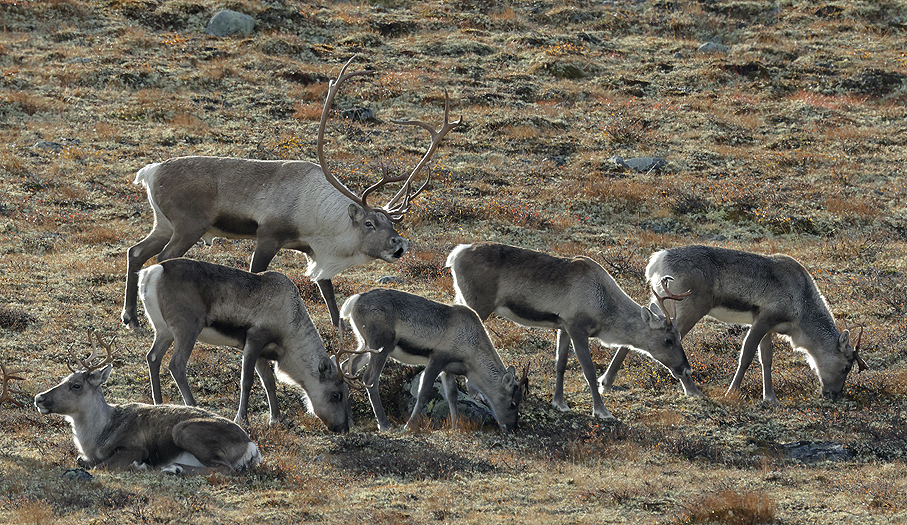
This Bull is still interested in ladies. Look at his circular shaped mouth, -he is making typical sounds for impressing them.
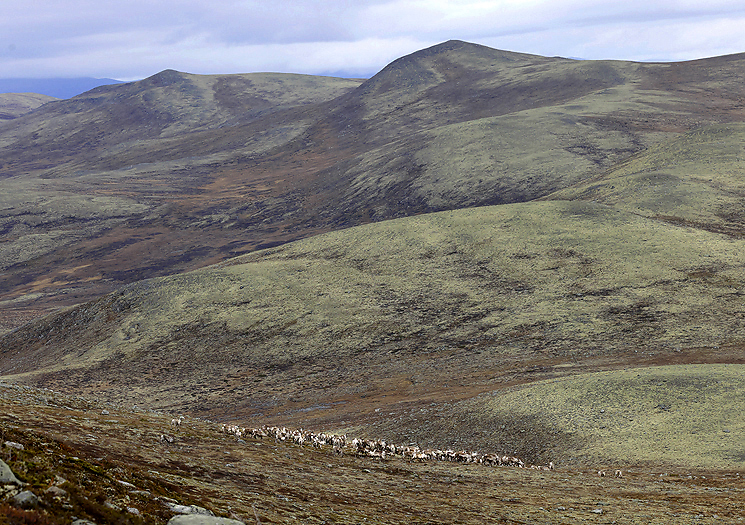
The yellow-greyish colors of these mountains are caused by Reindeer Lichen. Note the Reindeer herd in the foreground.
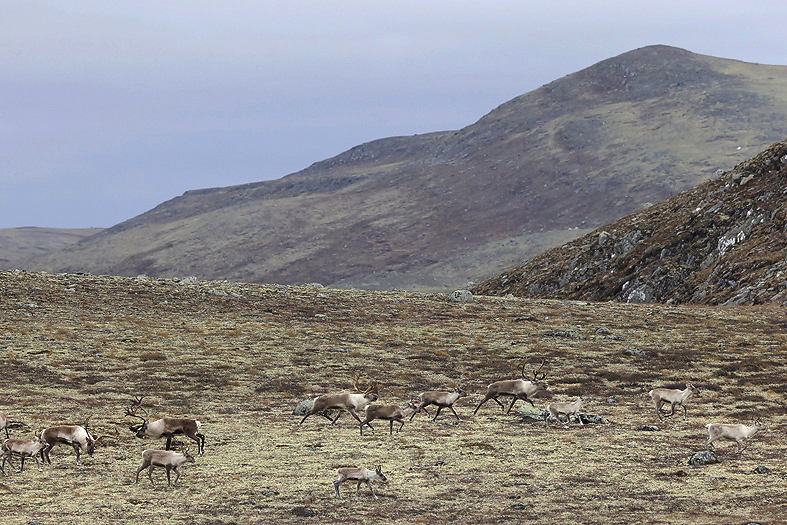
More Reindeer. Note the fighting Bulls in the left of the photo.
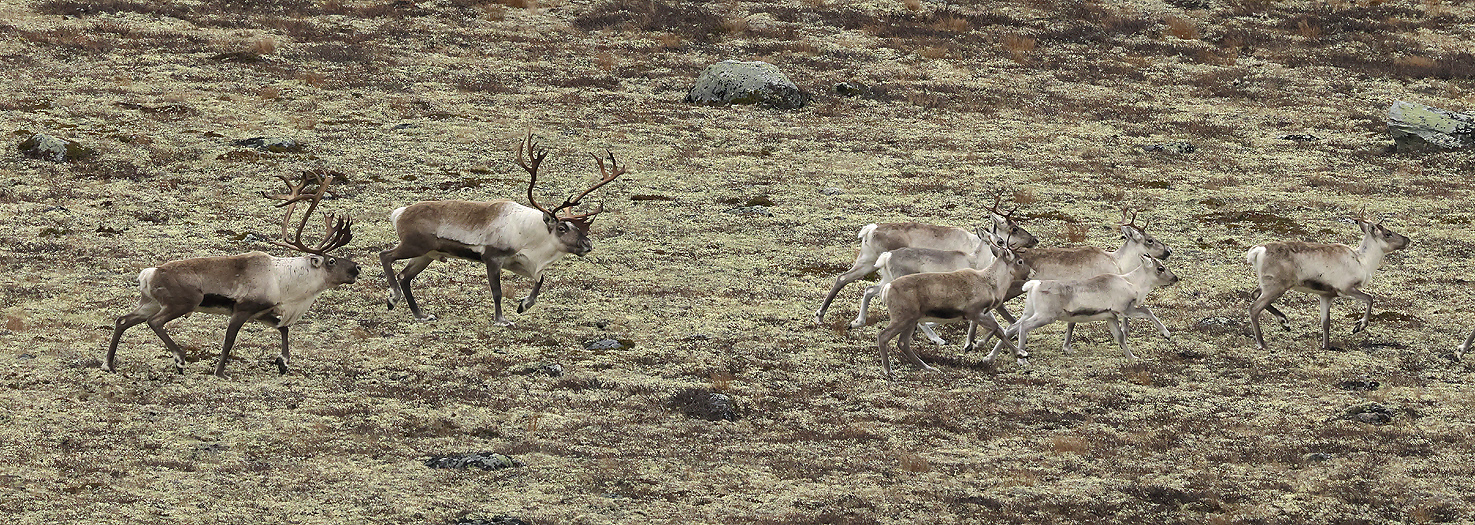
it is in the end of the Rutting time, but the Reindeer bulls does not seem to be finished with the ladies yet. The ladies however, seem to be finished with the bulls for this time.
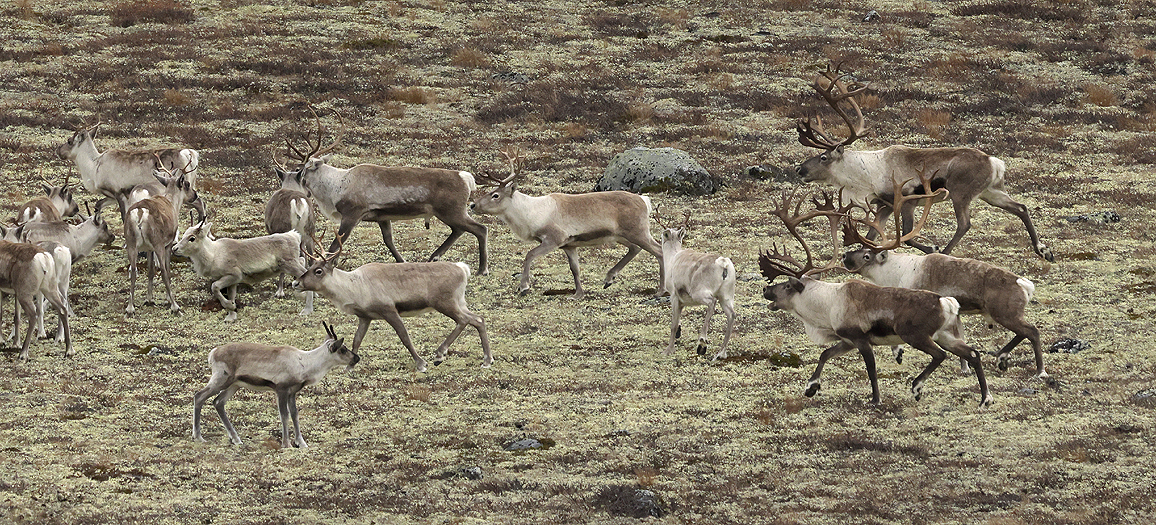
More “Bull-harassment” upon the females…
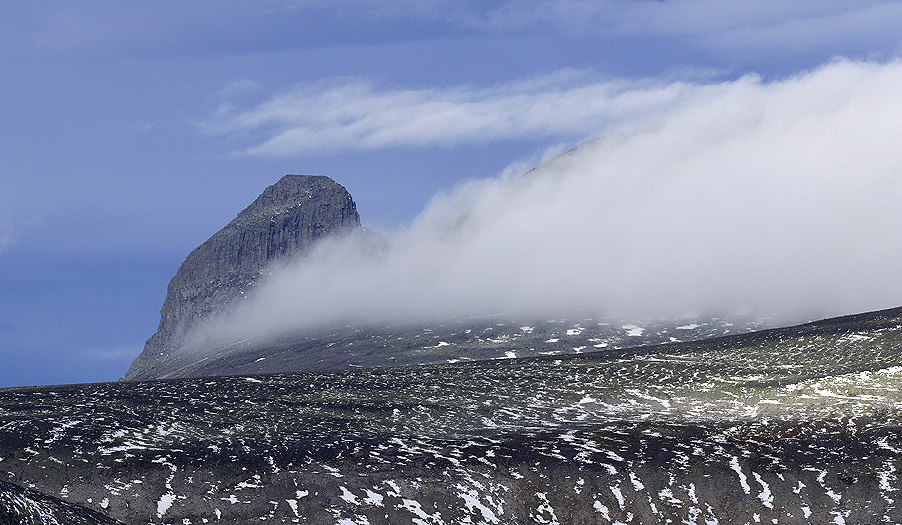
The weather in the mountains can be unpredictable and make a quick change to the worse. It starts with a tiny part fog.
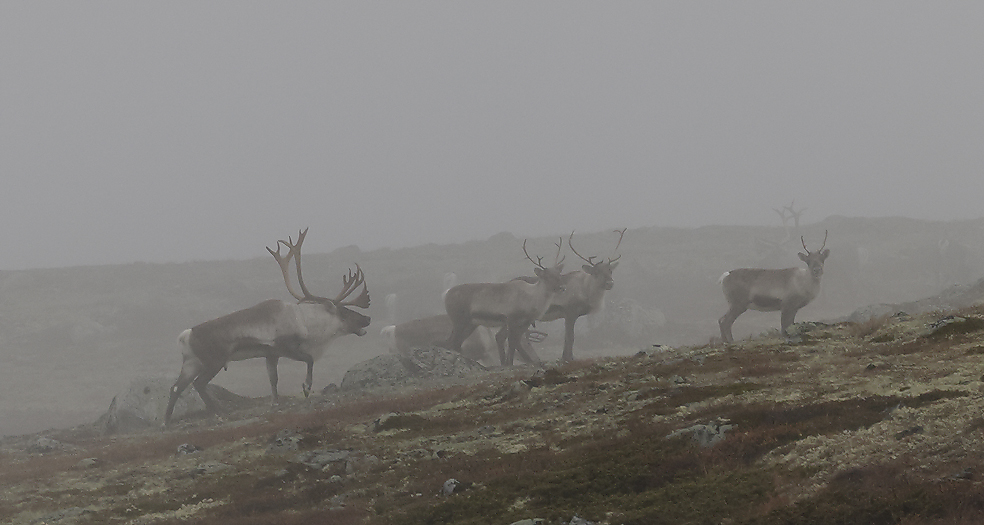
Reindeer in higher elevations got suddenly covered by fog.
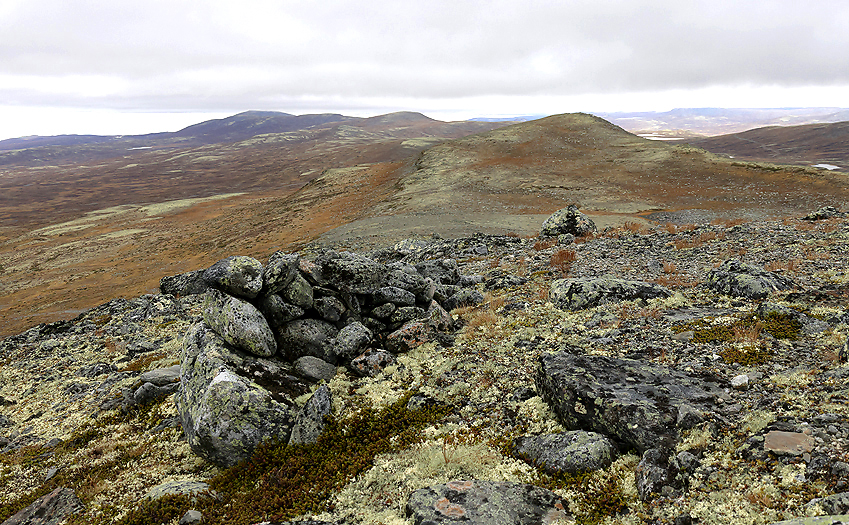
The Reindeer herd in the photo above here passed just beside this hunting blind from late Iron Age. If the Viking hunter sat here he would for sure placed his razor sharp arrow into one of the Reindeer in this herd… These people knew where to place the hunting blinds.
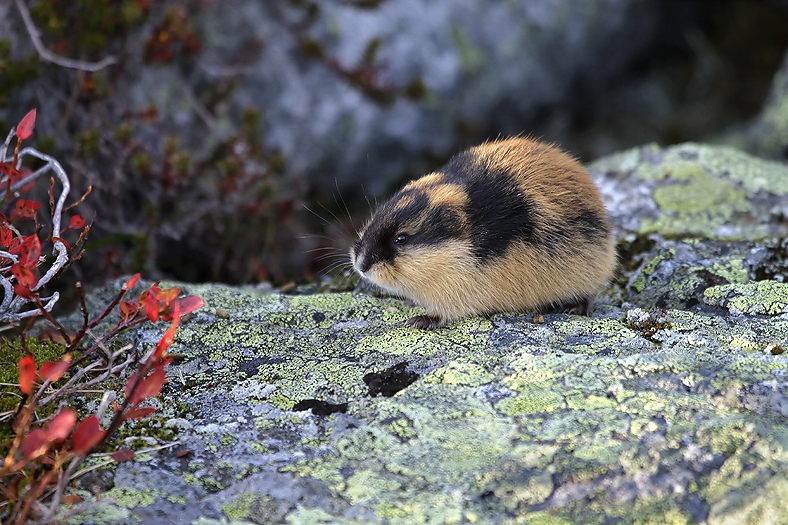
The Lemming population in this part of Norway made a peak this year. This cause more rodent-depending birds and animals to be abundant in the area. (PAP)
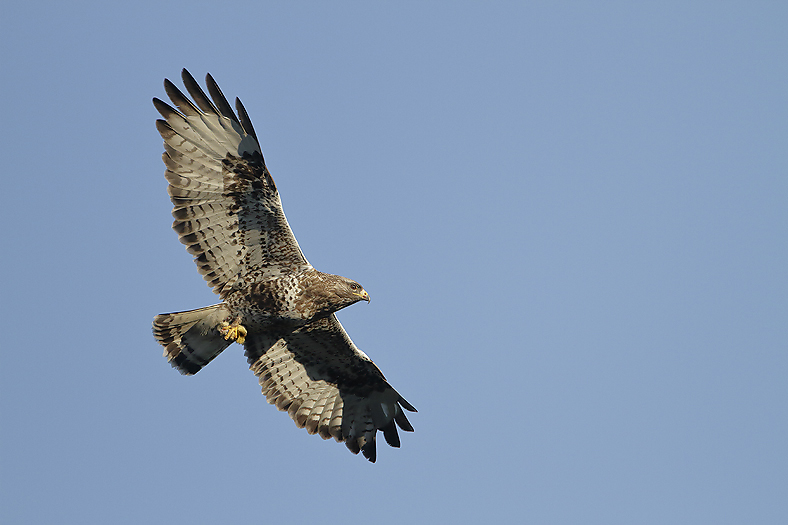
Quite many Rough-legged Buzzard was seen on daily basis. (PAP)
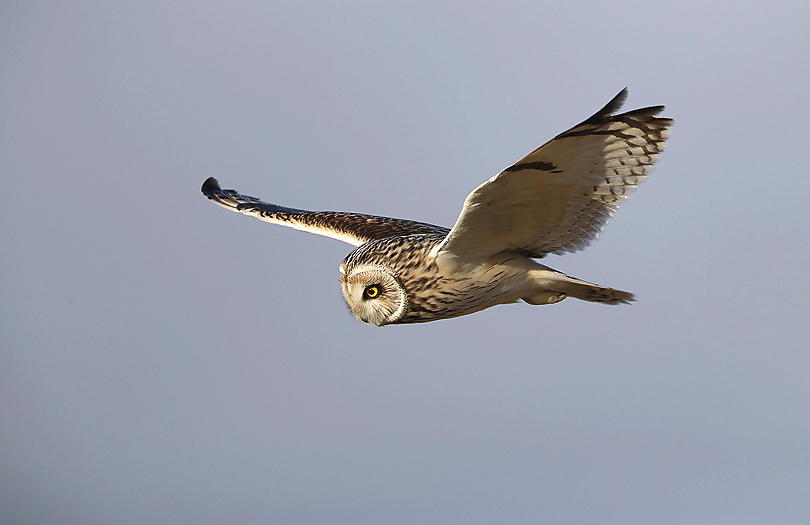
Short-eared Owls occur high up in the mountains and was seen hunting for rodents. (PAP)
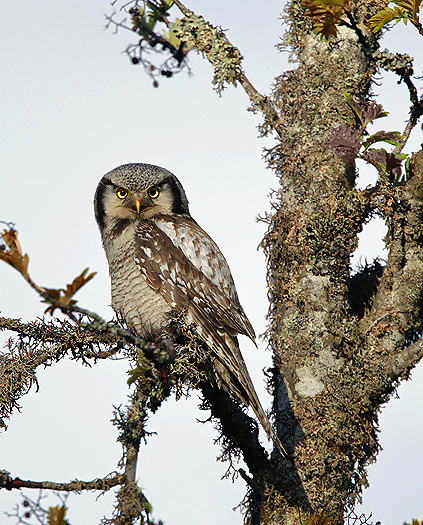
Northern Hawk Owl is also dependent of rodents. This owl is normally hunting below the treeline. (PAP)
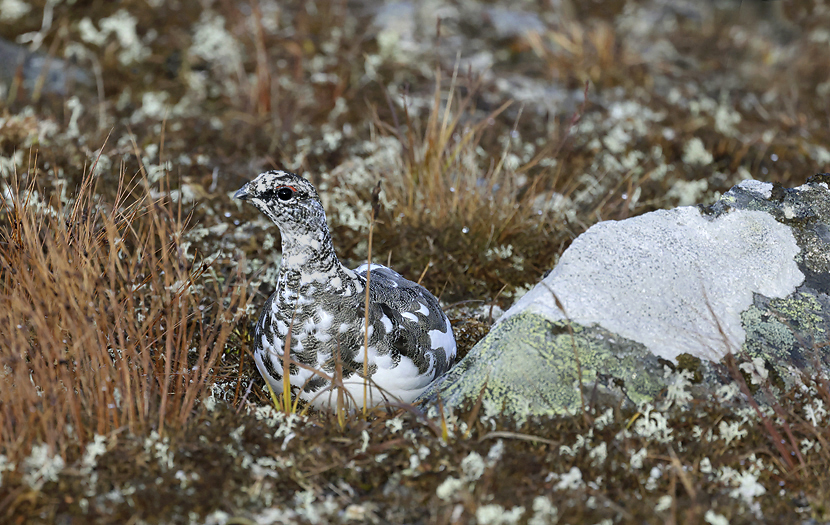
Rock Ptarmigan. They are now changing plumage from greyish summer to fully white winter colors and are shyer than normal when this happens.
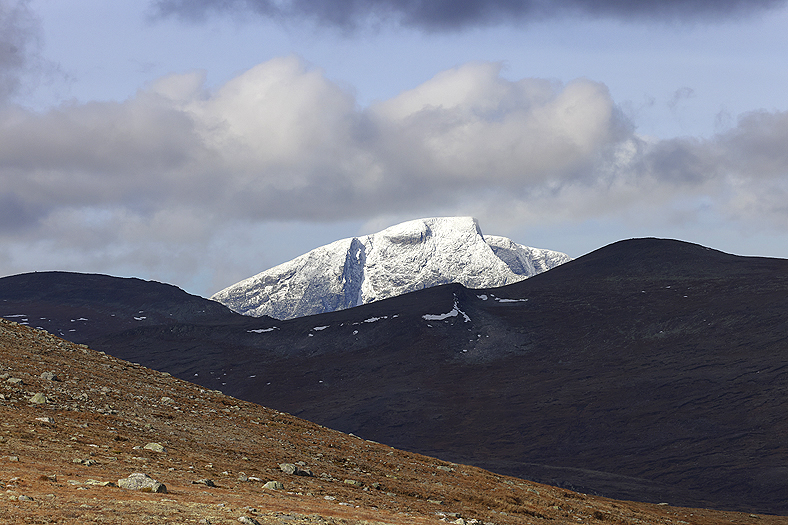
The mountain peaks got the winter coat on, and in the lower areas the snow is off and on in the transmission time between September and October.
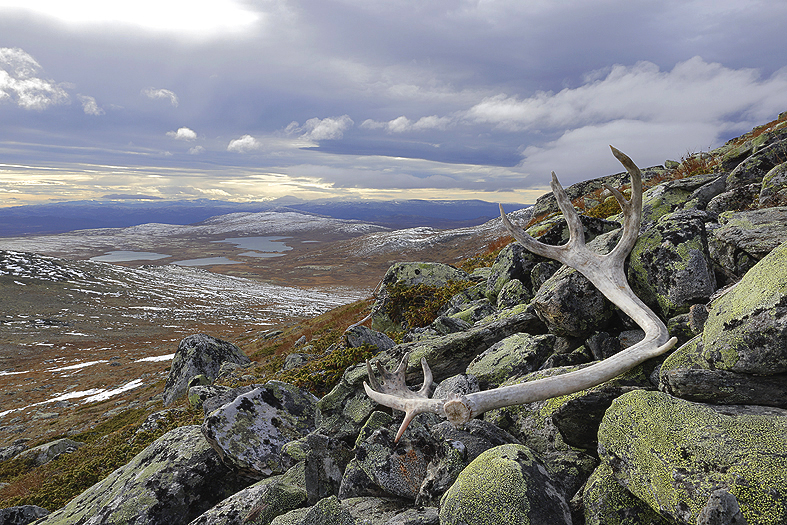
Scenery of these beautiful mountains.
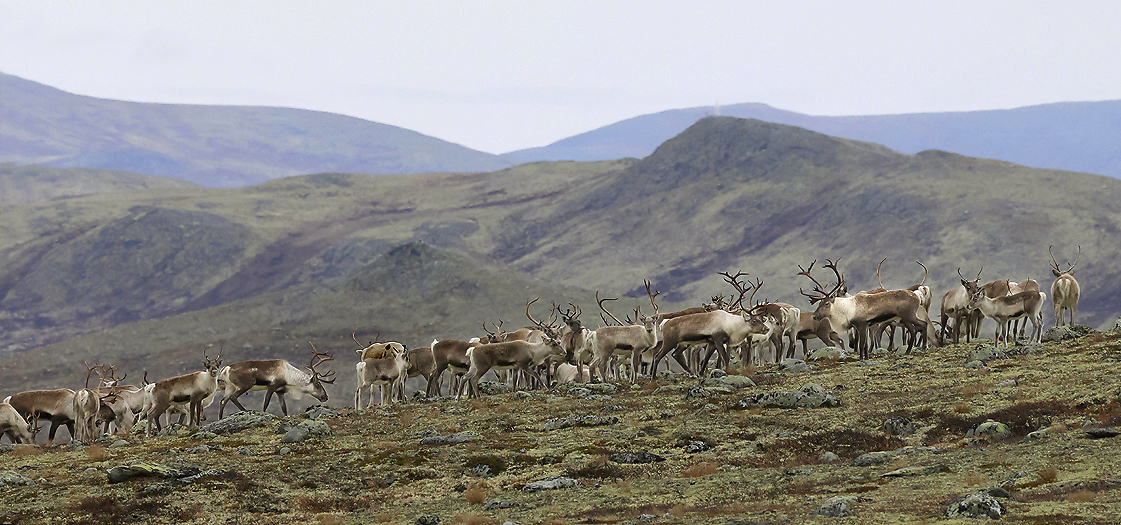
Reindeer herd at Dovrefjell. More new images of Reindeer can be seen in the “Reindeer” gallery.
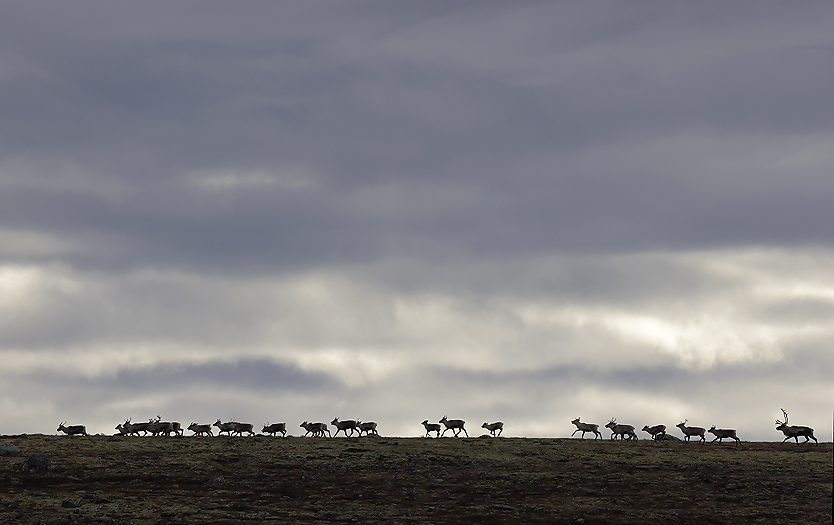
Goodbye for now to the Reindeer…
END.
________________________________________________
________________________________________________
HARDANGERVIDDA MOUNTAIN PLATEAU IN SOUTHERN NORWAY, JULY 2021.
The main background for the visit to Hardangervidda is that Chronic Wasting Disease CWD) was unfortunately discovered there on Reindeer during the hunting season of 2020.
For about 3,5 years ago Nordfjella Reindeer population which border to Hardangervidda was taken fully out (1500 animals) due to this prion disease (17 animals tested positive for the disease).
The number of infected Reindeer at Hardangervidda was only 1 animal. 1 out of 3600 animals tested. The Hardangervidda Reindeer population is the biggest in Norway, both in area and population size (around 8000 animals).
The Norwegian responsible authorities have decided that the Hardangervidda Reindeer population shall be significantly reduced, starting with extremely high numbers to be harvested in the coming hunt.
The hunting season is prolonged and begin as early as August 10th this year. All bulls older than 3,5 years will be taken out this autumn, and worst case scenario for the next 2-3 years will be to reduce the population here down to an absolute survivable minimum of between 300-500 animals. There have been multiple discussions whether this is the correct way to go, but the authorities stand with their original plan.
We was of this reason eager to experience and document the last big Reindeer bulls and big herds at Hardangervidda before they deminish/disappear. If unfavorable situations later should occur for the reduced population (other diseases, avalanches etc), the population can be totally exterminated.
Norway has a special responsibility to preserve the wild Reindeer due to that this is the only country in Europe where Tundra Reindeer (Rangifer Tarandus Tarandus) live in the wild. It would be incredible sad if the biggest Reindeer population (Hardangervidda) should disappear. There are hundreds of place names mirroring the presence of Reindeer at Hardangervidda.
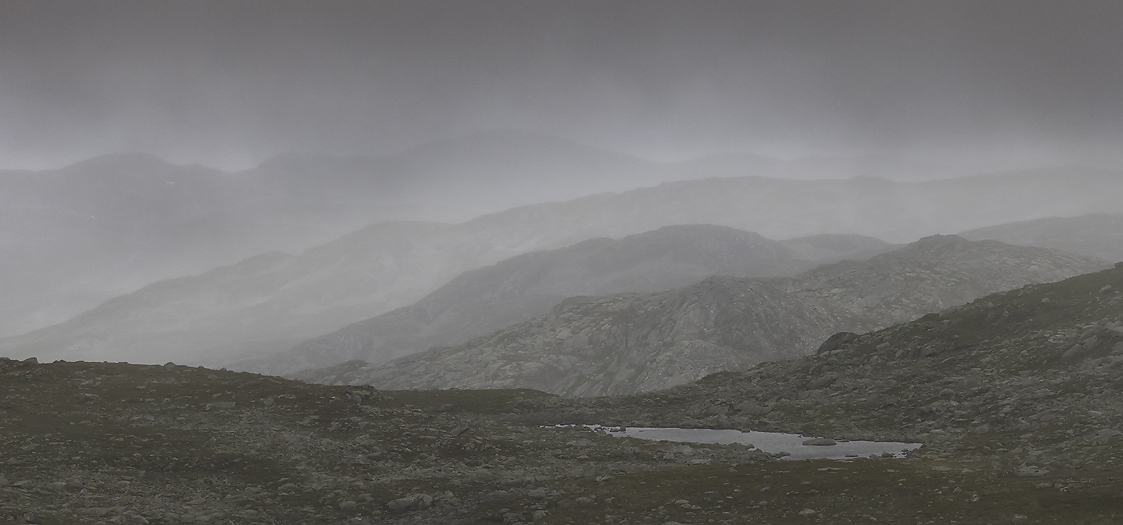
Rugged landscape on the border to the plateau.
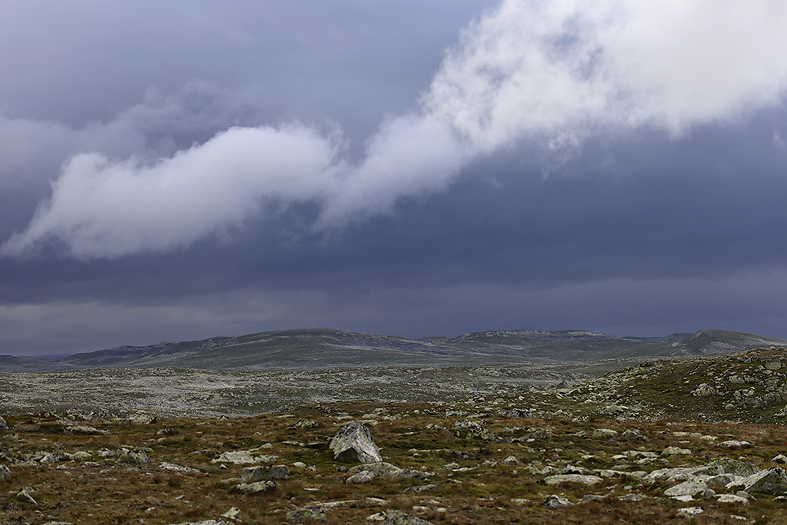
Hardangervidda is the biggest mountain plateau in northern Europe covering 8130 km2. We enter the plateau from the SSE side which is least visited by humans, and from there we cover great areas searching for these exiting animals.
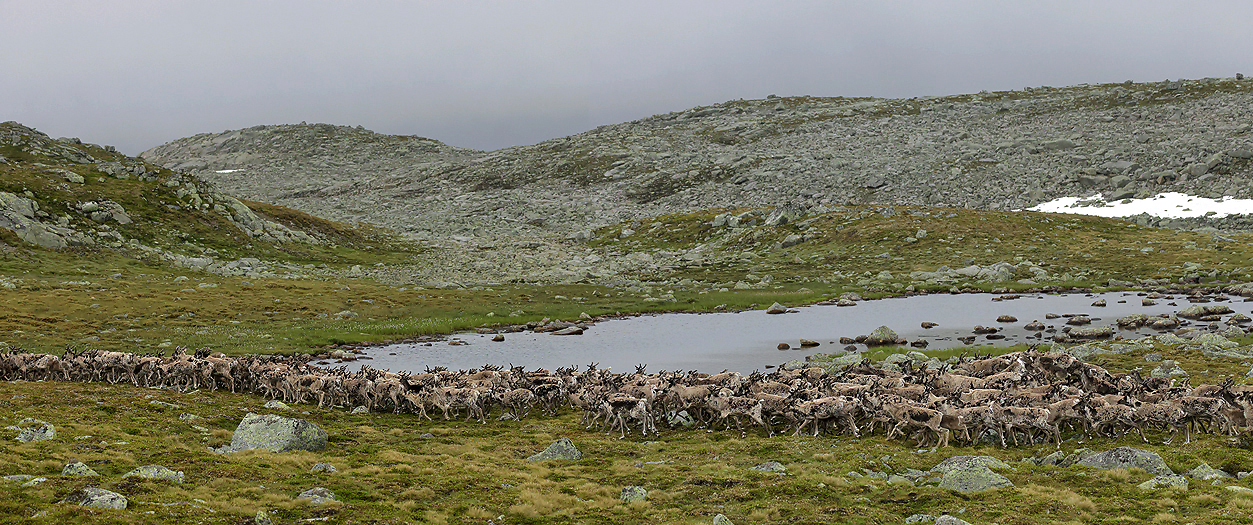
Part of a Reindeer herd counting around 350 animals. What a magnificent sight!
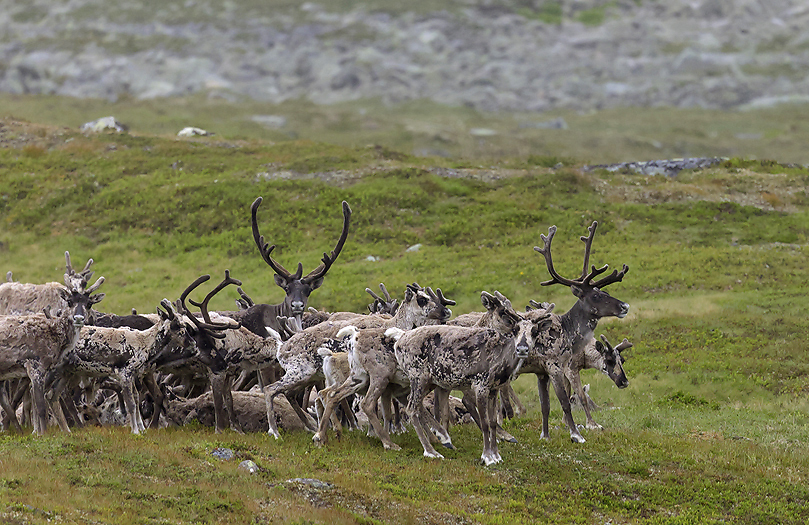
Reindeer Bulls among females and younger males. The antlers are not fully grown yet as we write medio July. in autumn they will be (or perhaps better to say would be) huge compared to the size now.
This specific herd with around 350 animals contained surprisingly low numbers of big bulls, -we counted only 10-12 of them.
Big bulls are very important for a herd, not only to keep the population strong and healthy with their genes, but also for removing deep snow in the winter time and be in front for removing ice from the pastures after icing in mild periods followed by freezing in winter time. Icing of winter pastures has increased the last 10-20 years due to the climate change.
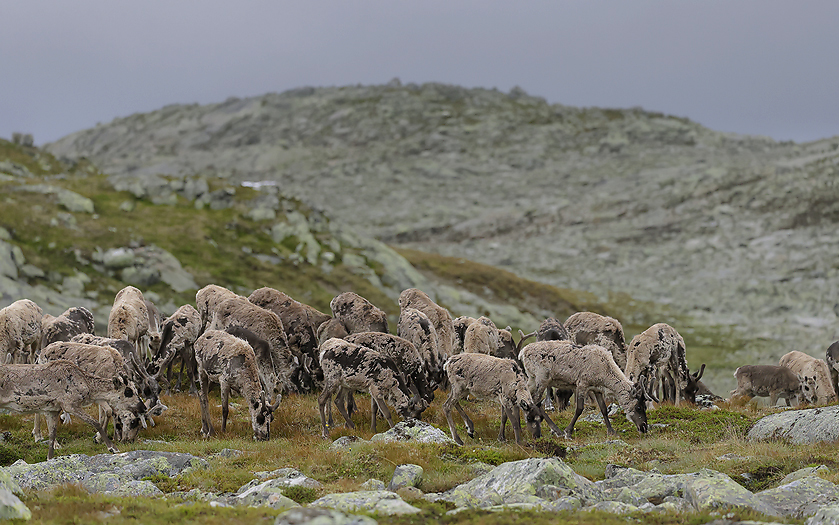
The Reindeer always goes against the wind for early warning of unwanted and potential dangers as big predators and humans. This is also the case when grazing as here. In winter time the main food source is lichen, and in summer mainly grass, willow leaves and other green plants.
As we can se the Reindeer still have the winter fur, which they however really start to loose now. The bigger bulls have come further in this process and have lost most of the winter fur.
More new images of Reindeer can be seen in the “Reindeer” gallery.

Regarding Reindeer. From Erich Pontoppidan`s (1698-1764) book “The first attempt on Norways natural History” (1753), the Drawing and Description of Reindeer, or Hrein-Deer (Norwegian/Danish “Hrein-Dyr”) after the old way to write Reindeer. Erich Pontoppidan write: “This is a species, which these Nordic countries really belongs to…. Over the Eye lids the Hrein-Deer have another hole in the skin, where it can see like squinting through when they in heavy snow drift must close their eyes. Certainly another evidence of the Lords meticulous purpose for every animals need for its way of living. At the snowy mountains at Hardanger they walk in Herds of 100, yes up to 2-300 so that one with 1 shot can kill 3 or 4 in a one-time, if it is shot in the middle of the Herd…”
As we can see is Erich Pontoppidan also into Sea Monsters.
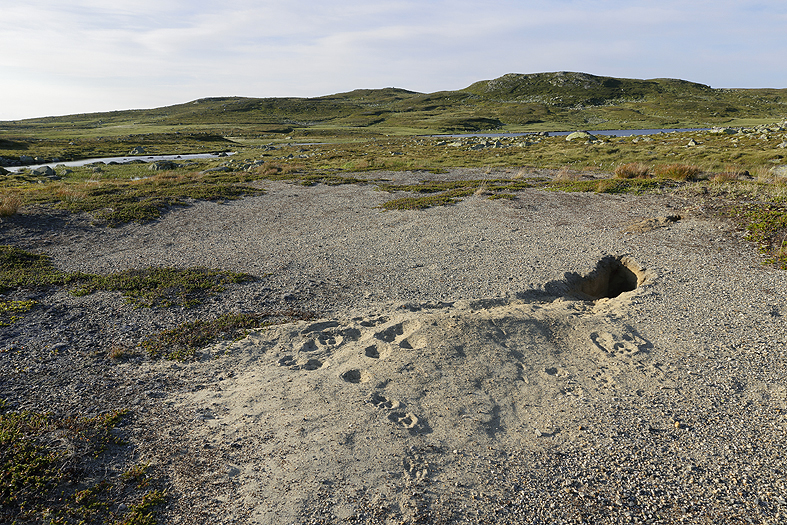
Once upon a time the Arctic Fox was common on Hardangervidda. but due to exceptional high prices of Arctic Fox fur in the 1930’s they were close to be extinct here. At that time one pelt could be sold for as much as an average yearly salary. Unfortunately the Arctic Foxes have never recovered again. Factors making it difficult to recover is the lack of predators (i.e. Wolverine and Wolf) on the plateau, where the Arctic Foxes could eat leftovers from their prey. change in climate has also influenced on the Lemming cycles which is weaker and with low numbers if/when they occur.
The opportunistic Red Fox is also a threat as they have started to inhabit the plateau.
The photo is from a traditional Arctic Fox denning area where the fox tracks and the size of the den opening show that it is probably a Red Fox who have been here.
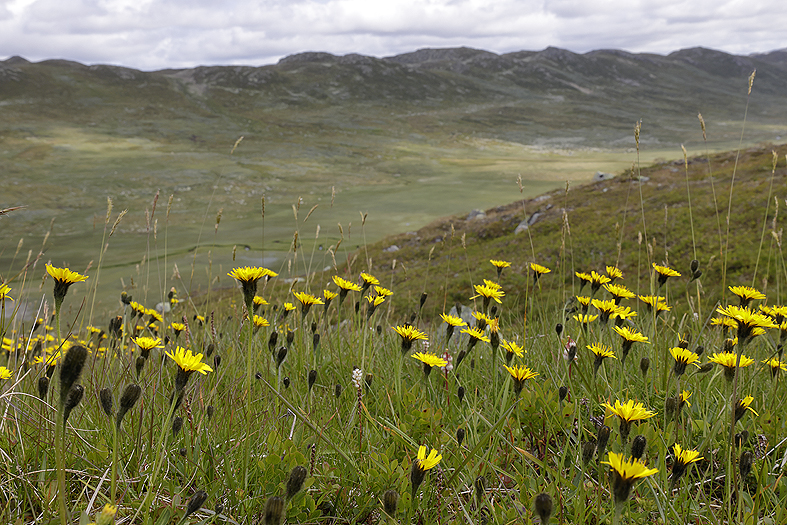
Alpine Hawkweed is one of the character species at this part of the plateau.
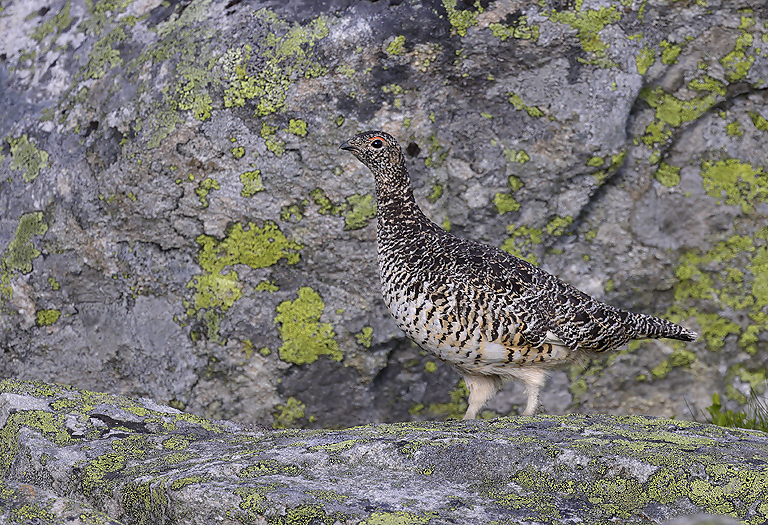
Rock Ptarmigan. Quite good camouflaged.
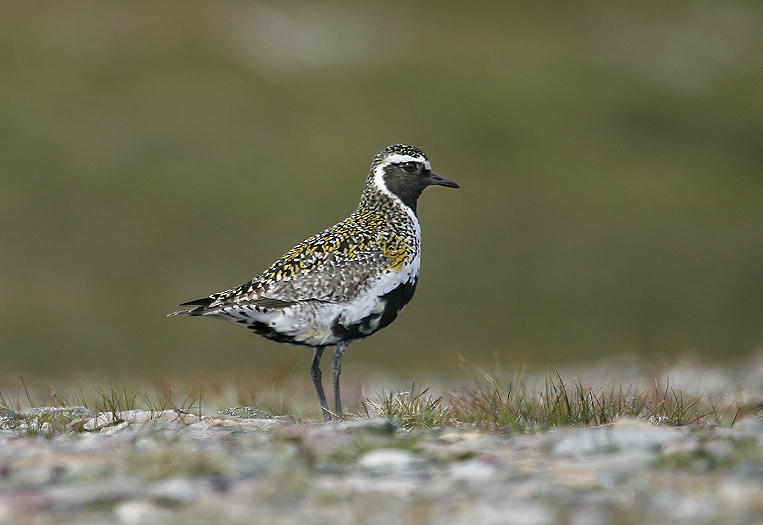
The Golden Plover is one of the character bird species here. PAP.
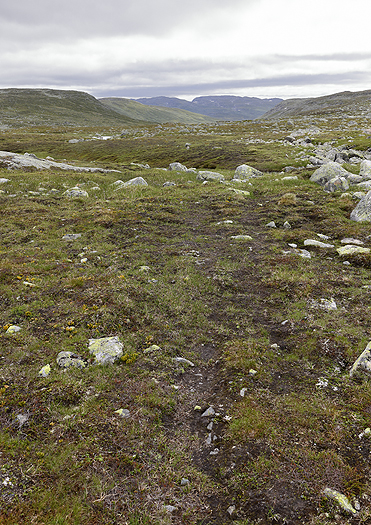
The Reindeer have inhabited the Norway since the ice age ended here around 10 000 years ago. The Reindeer at this plateau have their origin from the south (now Spain, France, Germany etc) and migrated northwards as the temperature increased in the south.
The photo show a well used “road of Reindeer tracks”.
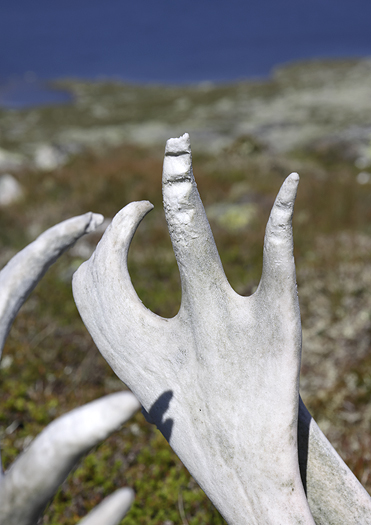
It has been discussed whether antler chewing by other Reindeer could cause CWD (“cannibalism effect”) but nothing has has been concluded about this.
The photo show sign of antler chewing, probably by another Reindeer.
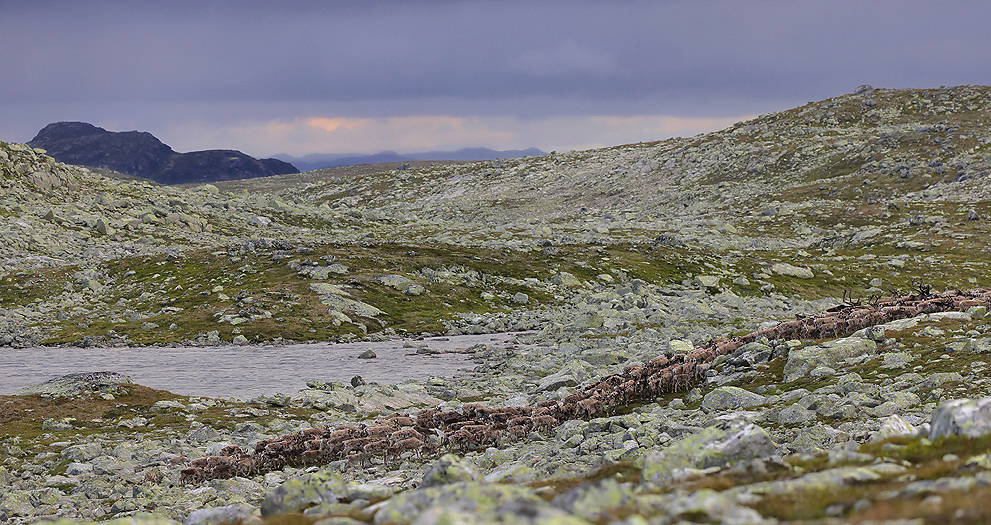
Some parts of the plateau are very rocky.
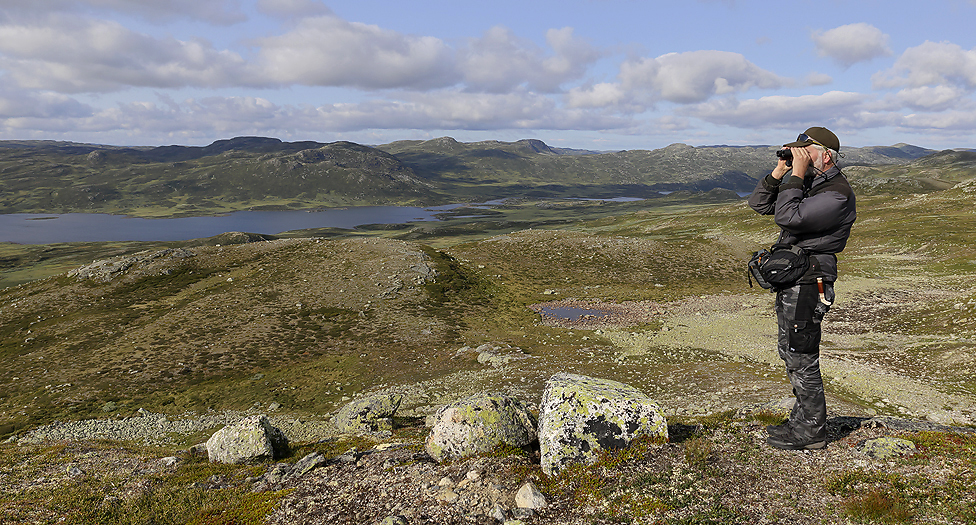
We are at the northern part of our activity area, the river Kvenna in behind.
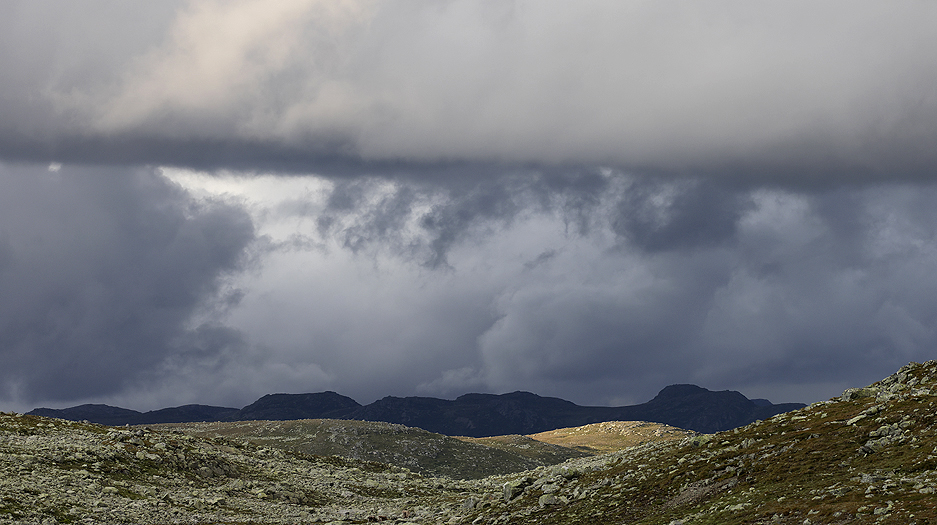
The weather on Hardangervidda is famous to be unpredictable where bad weather can occur without any warning.
While the surrounding lowlands had sunshine with temperatures between 25-30deg.C we had all kind of weather, i.e. from sunshine to cloudy with gail force wind, rain and fog. Night time temperatures went down to 2 deg.C This kind of weather creates however some nice scenery for photographers.
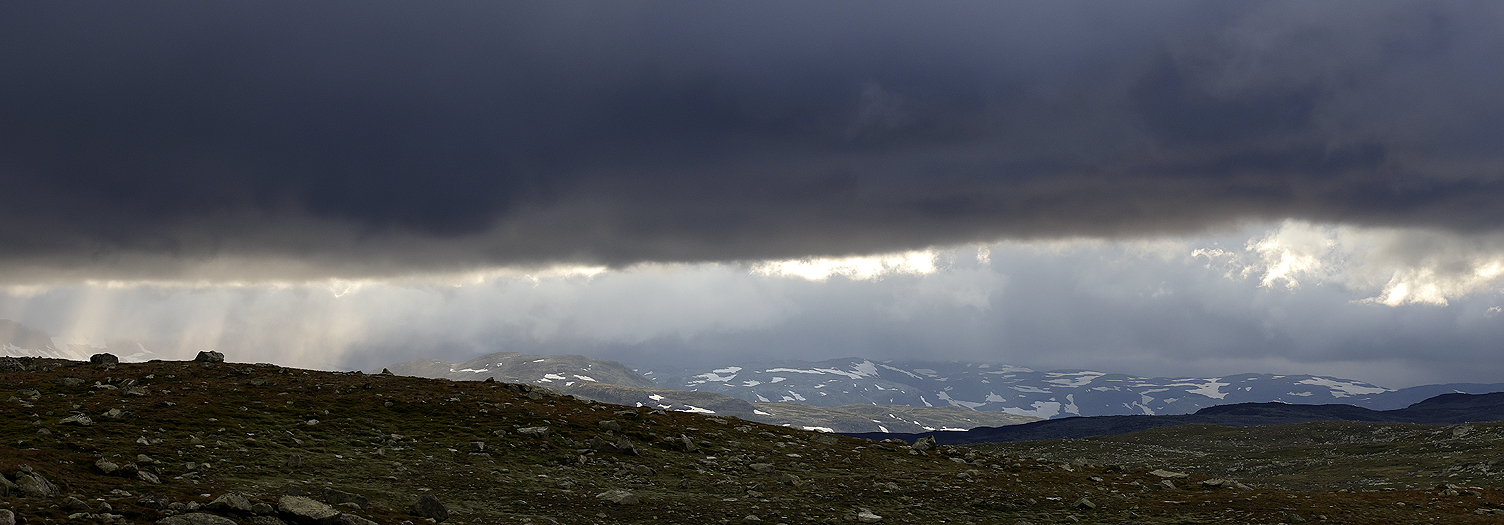
Good bye for now to the mountains.
END.
________________________________________________
________________________________________________
SPRING IN SOUTHERN NORWAY 2021 – FROM SEA TO SUMMIT.
Spring arrived with fresh colors and increased wildlife activity. For wildlife by the sea side this is a good time with more available food. Up in the mountains the spring can still be a hard time where the species that have overwintered there is at the end of their body reserves and with less available food sources compared to down in the lowlands.
For us humans it is a beautiful and exciting time of the year, which lead us to move around and see the wonders of the land.
Below is a selection of images from April and May months.
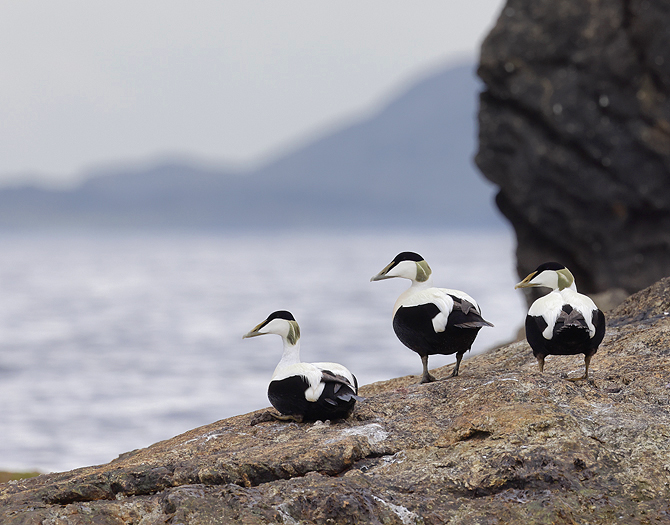
Eider Ducks in the archipelago of Håstein, Rott and Kjør. This archipelago is the southernmost bird cliff in Norway and is rich of typical seabirds and seals.
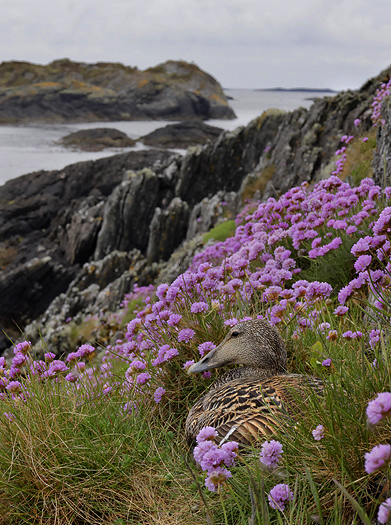
Good choice of nesting place made by the female Eider Duck..
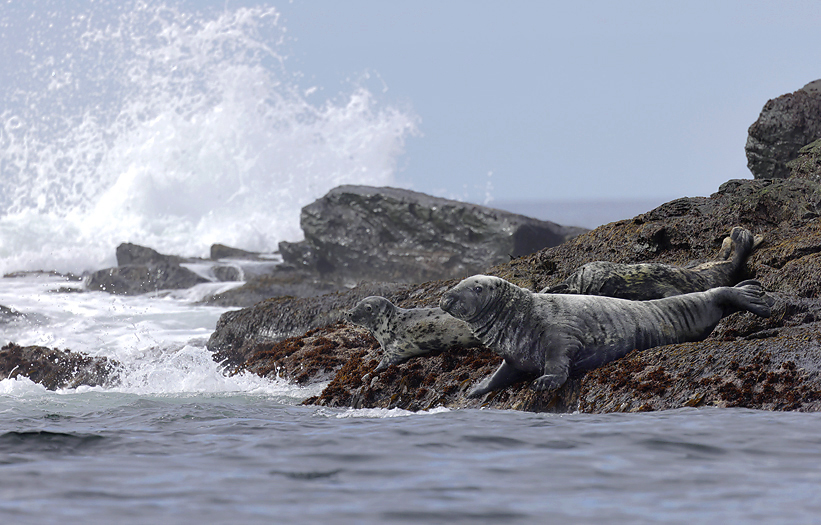
Grey Seals at the edge of the archipelago.
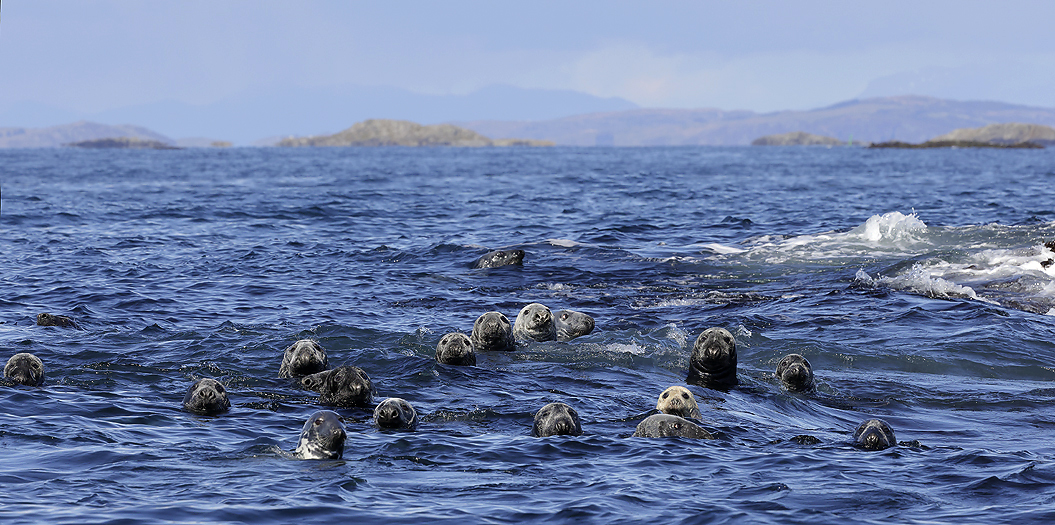
Due to plenty of food (still) the population of Grey Seals counts around 200 individuals. More images of Seals can be seen in the “Seals” gallery.
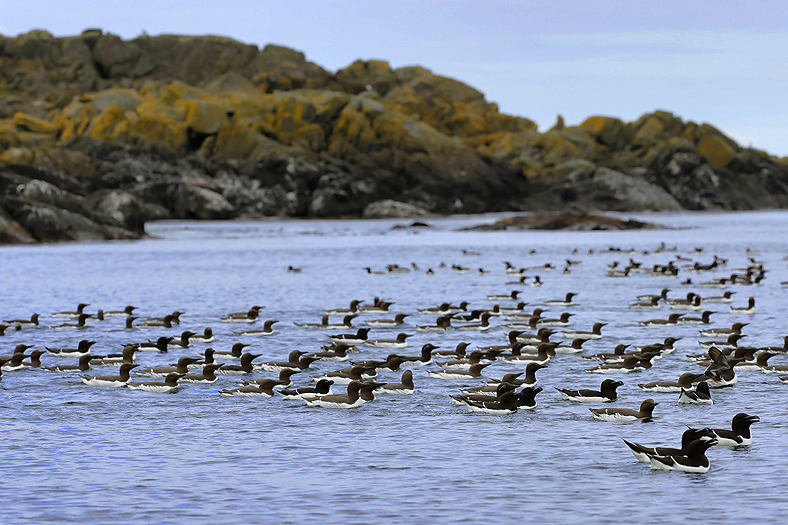
This year the number of Guillemots have been higher than ever. This is a good sign for this species. But for others, -as the Kittiwakes which do not eat the same food as the Guillemots is therefor not present in the archipelago this year either. As you see in the photo there are also some Razorbills.
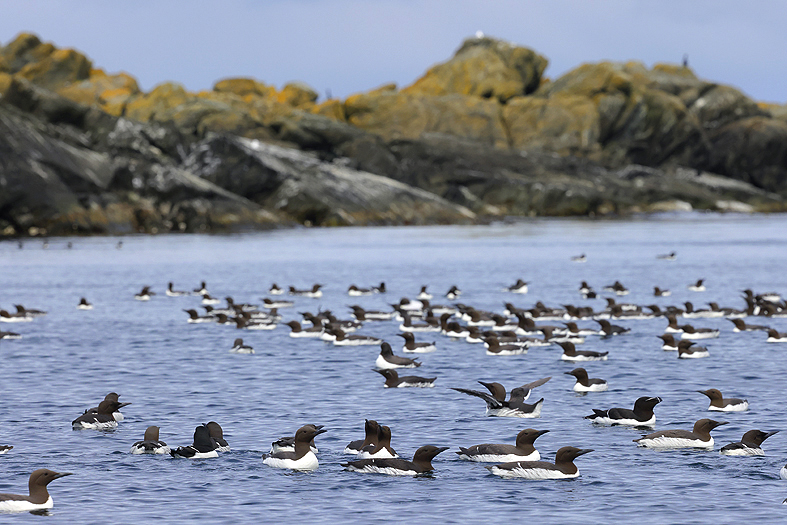
Early in the spring, -before the Guillemots find a nesting place and lay their eggs they can congregate in relative great numbers on the the
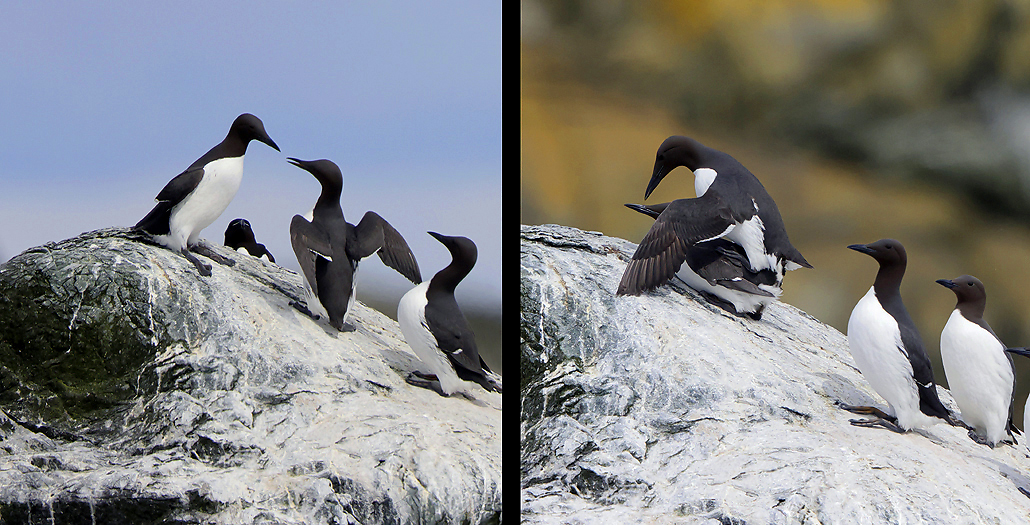
Find a friend and make a family !
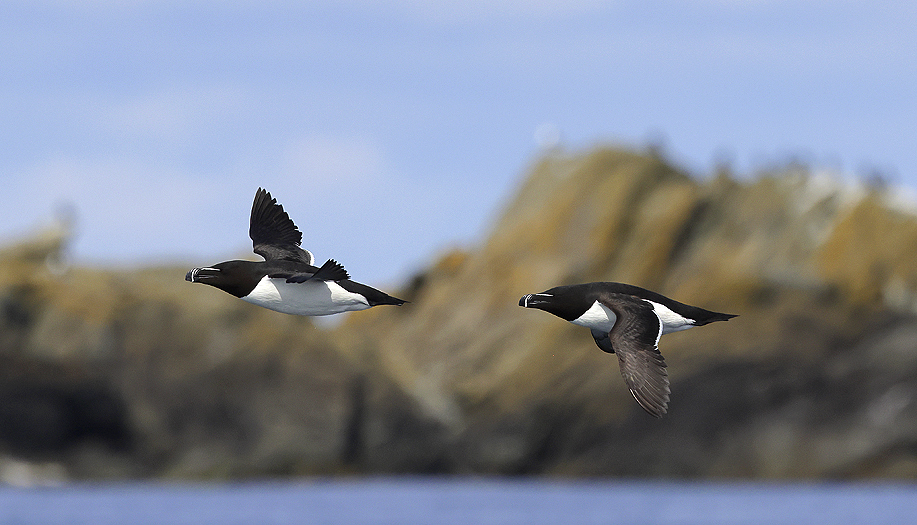
Razorbills. This population is about a 10th compared to the numbers of Guillemots. More new Seabird images can be seen in the “Seabirds gallery”.
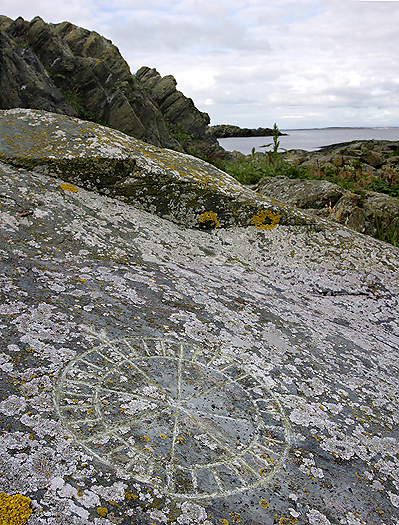
The archipelago have also a certain cultural history. This is a Compass Rose that was carved into a huge rock centuries ago, -probably in the 1700 hundreds by fishermen. PAY.
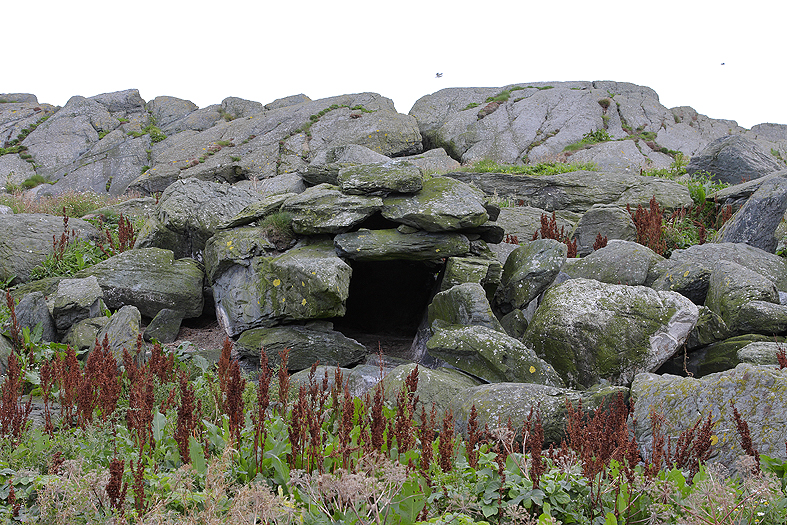
More exciting and mysterious are these kind of constructions. No one knows who built them or what they was built for, -but due to the big rock sizes some believe it perhaps can be Megalittic constructions dating back to the Bronze age. There are around 10-12 of these out there. PAY.
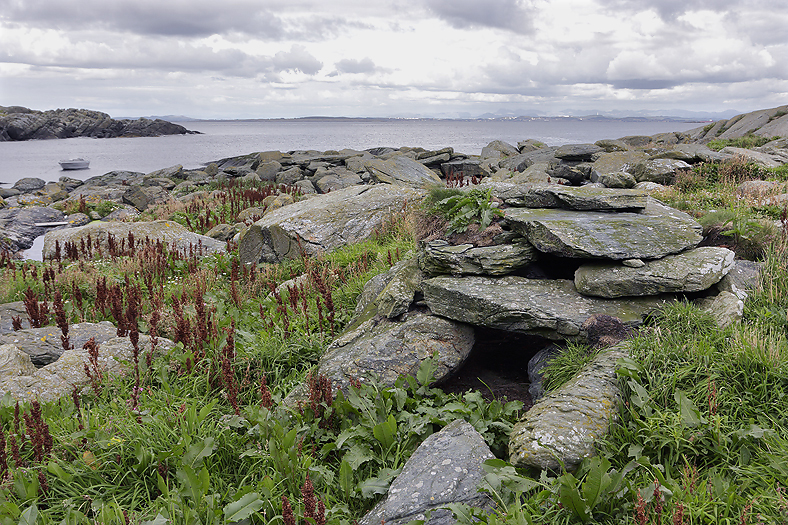
And these constructions are too small to be a fishermans hut/dwelling. PAY. More images of Archaeological siktes can be seen in the “Archaeological Sites” gallery.
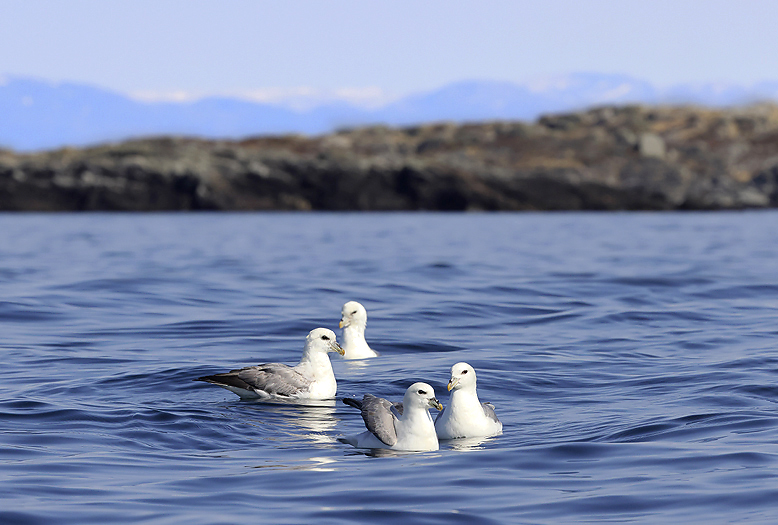
Fulmars. Also they have increased in numbers in the archipelago.
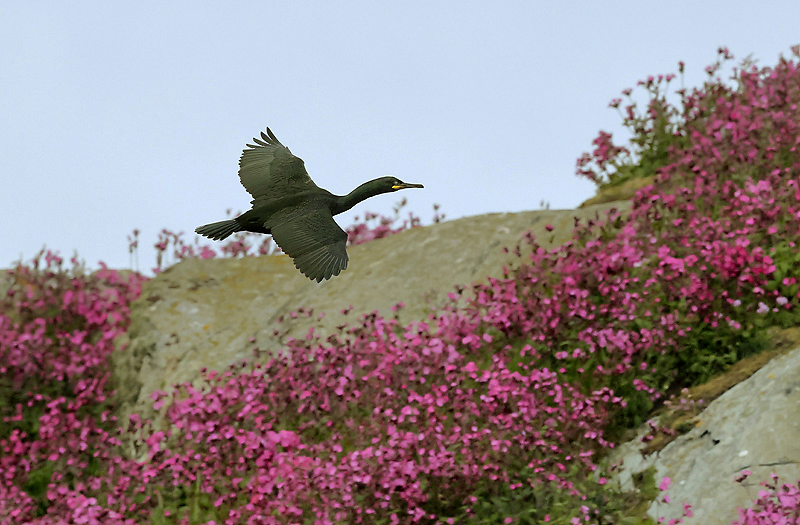
Suddenly become parts on some of the islands out against the open sea red due to flowering of the Red Campion.
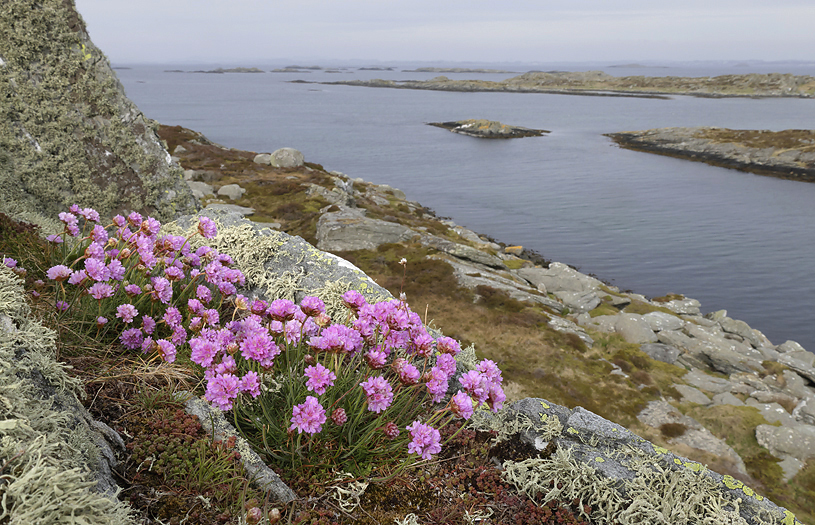
A short period in May the islands in the archipelago is very colorful. The most common is the Sea Thrift.
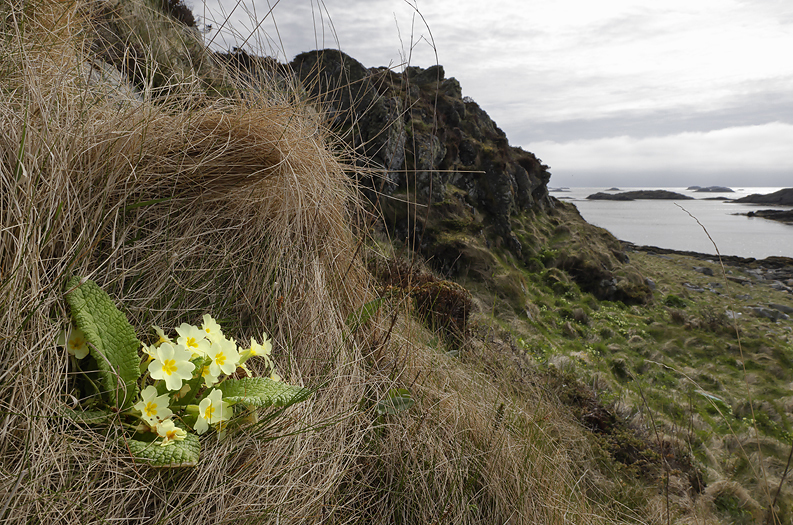
A Primrose has emerged from the grass and it looks like it has a kind of a nest. This plant should thrive well on this spot out here where the weather can be extremely rough. More new images of flowers and landscape can be seen in the “Landscape” gallery.
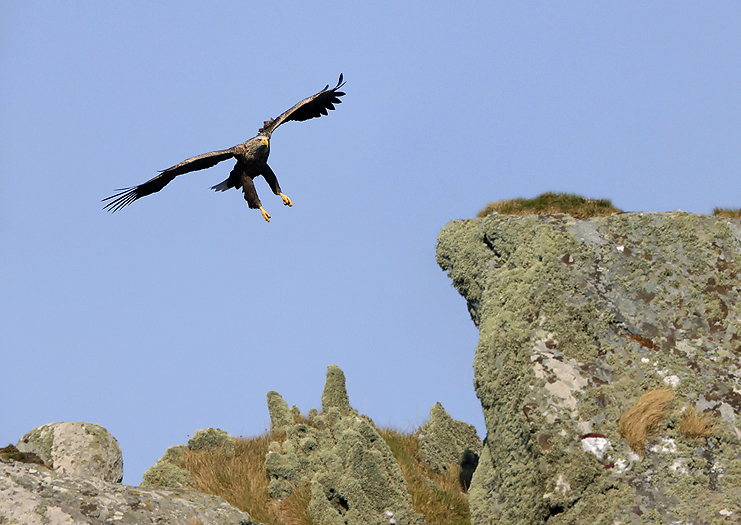
A White-tailed Eagle come in for landing on one of the islands here.
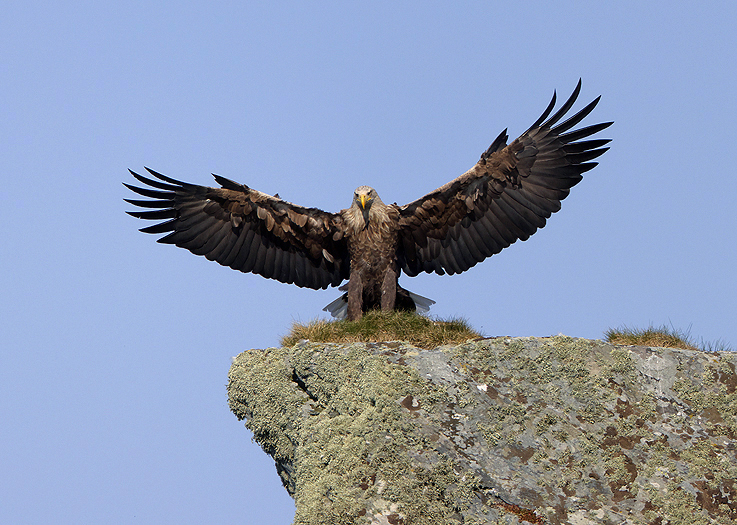
They are huge these birds, the wing span can be close to 2,5 meters
This couple have made a part of the archipelago to their territory and will soon lay their eggs. It is remarkable to see how well this species haave recovered since mid 1970s where the population was at the lowest in Norway. For decades they where extinct south of Norway`s 61st parallel, -and now they nest all over the Norwegian coast line.
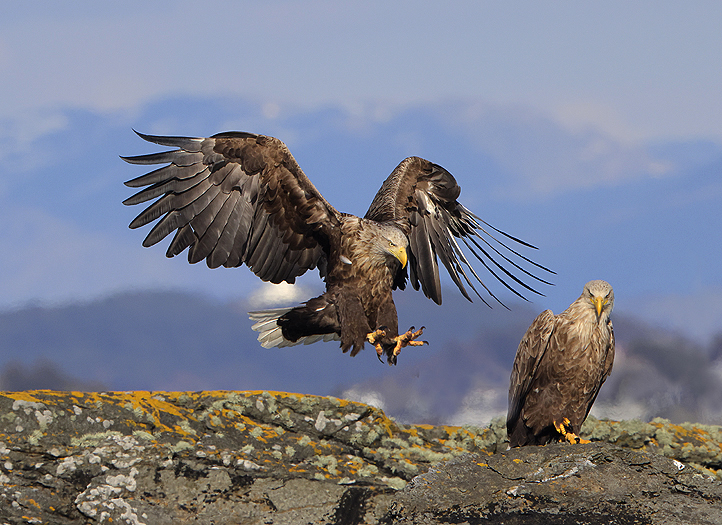
The couple. More White-tailed Eagle images can be seen in the “White-tailed Eagle gallery”.
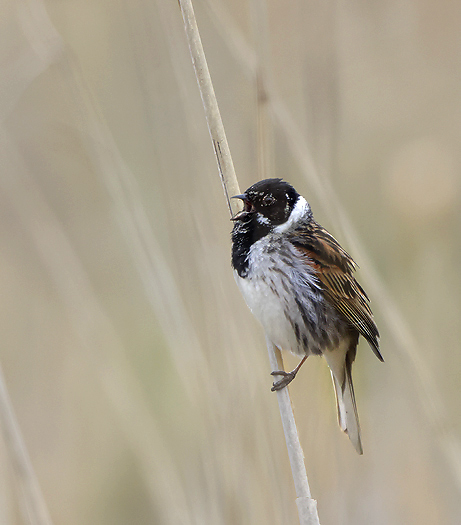
Moving from the sea to the inland singing Reed Buntings are found everywhere.
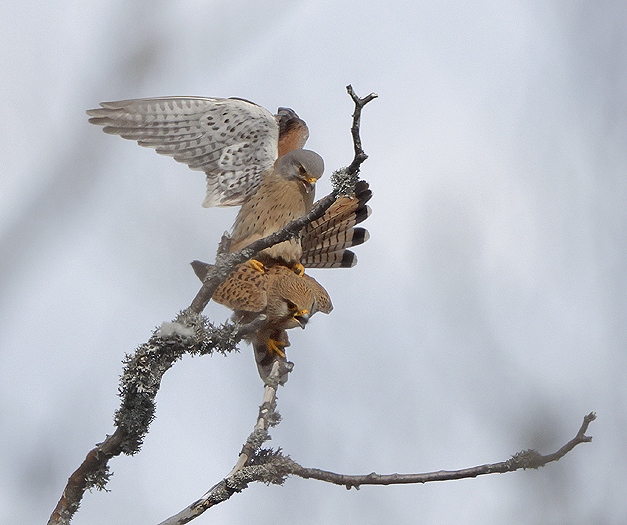
High up against the still snow covered mountains a Kestrel couple prepare for nesting.
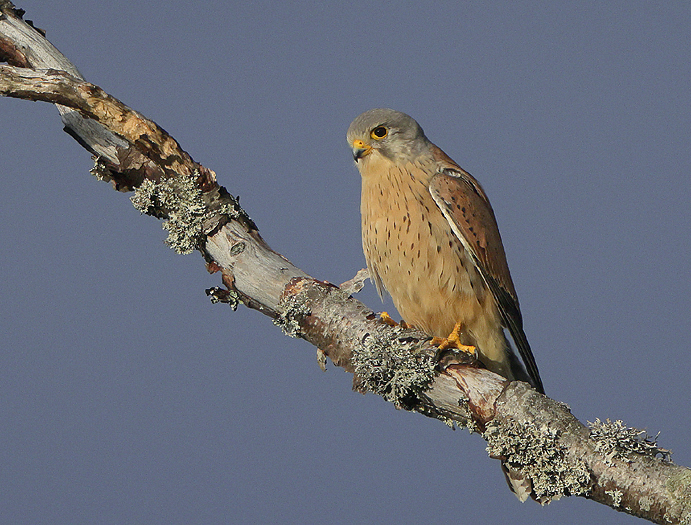
Male Kestrel in early morning light. More new images of Kestrels can be seen in the “Kestrel gallery”.
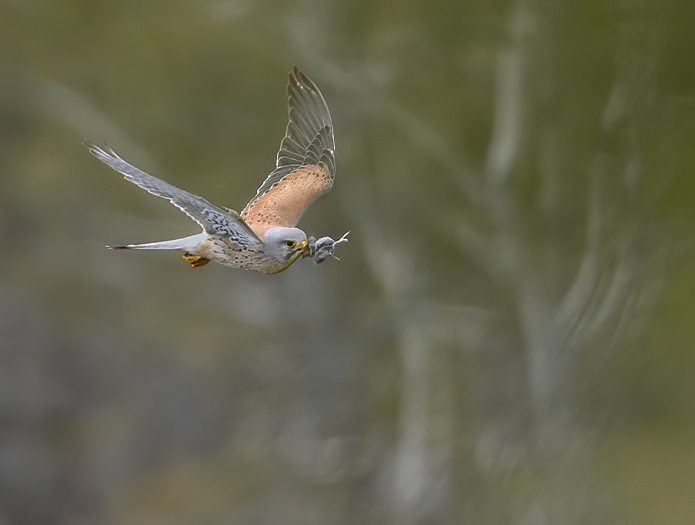
The male is flying back to the nesting cliff with a mouse in the bill. The autumn of 2020 with the following winter the rodent population increased to high numbers. Spring and Summer this year was therefore expected to be good for rodent eaters. Unfortunately the weather became unusual mild in mid February with heavy rainfall up to 1500m above sea level. The consequence of this is that the numbers of rodents became scarce in the mountains of western Norway. This couple nests near every year in this cliff and seems (for now) to manage the situation well. It is to be said that the Kestrels have a varied diet and is not completely depending on rodents.
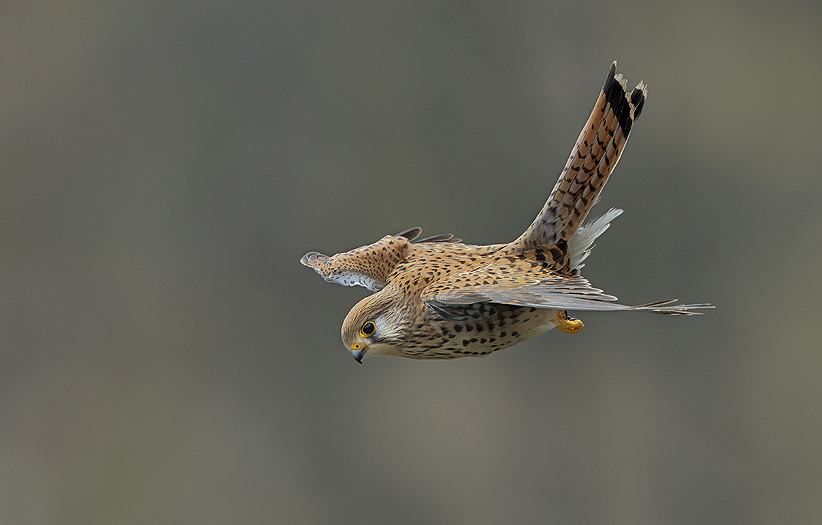
The female Kestrel a windy day. To keep the position in the air steady it had to raise the tail to avoid being pushed higher up in the air.
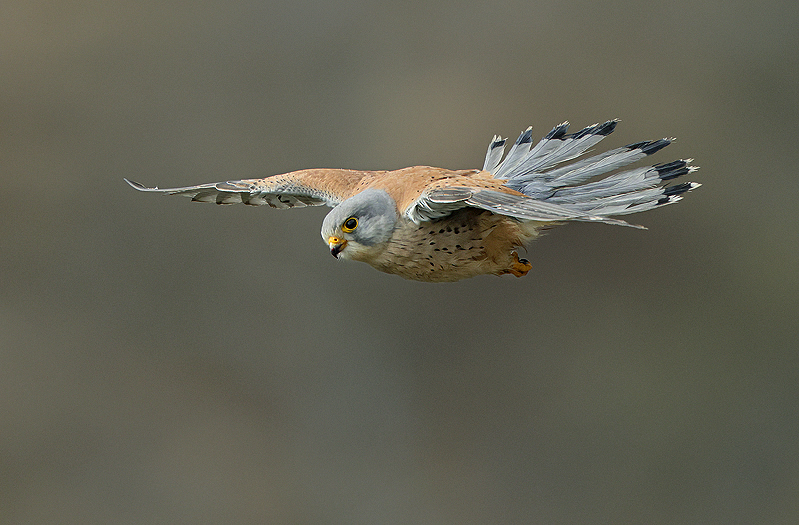
The male at the same spot beside the cliff as the female above.
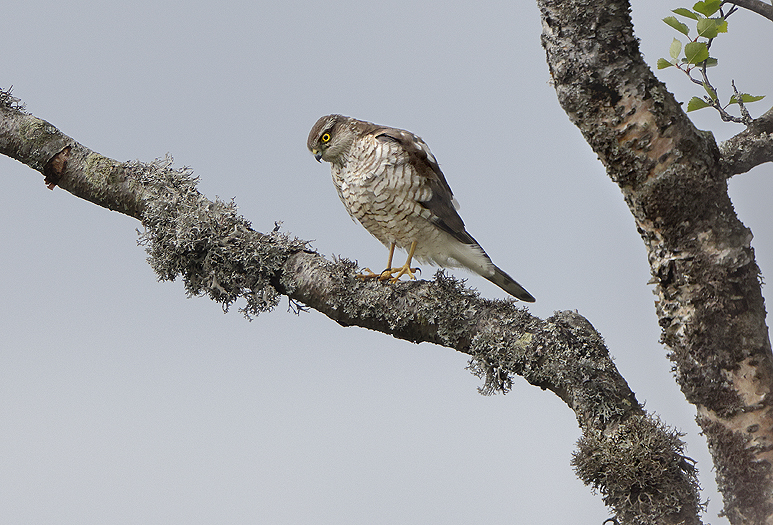
A Sparrowhawk female is looking curious down to the Kestrel nesting place.
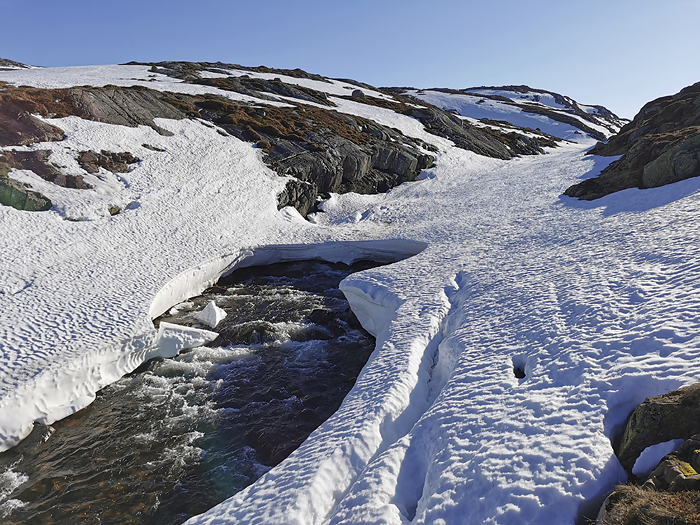
One of the last days in May months higher up in the mountains. It begin to be difficult to move around in the field due to melting snow where the rivers are opening up. Luckily this river still have a so-called snow bridge so it is quite easy to cross
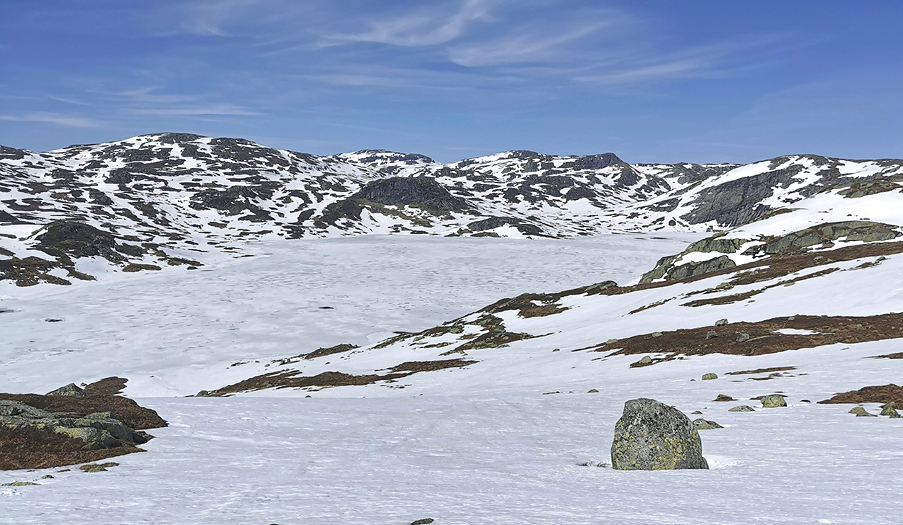
However, near all lakes 1000m above sea level are still completely ice covered.
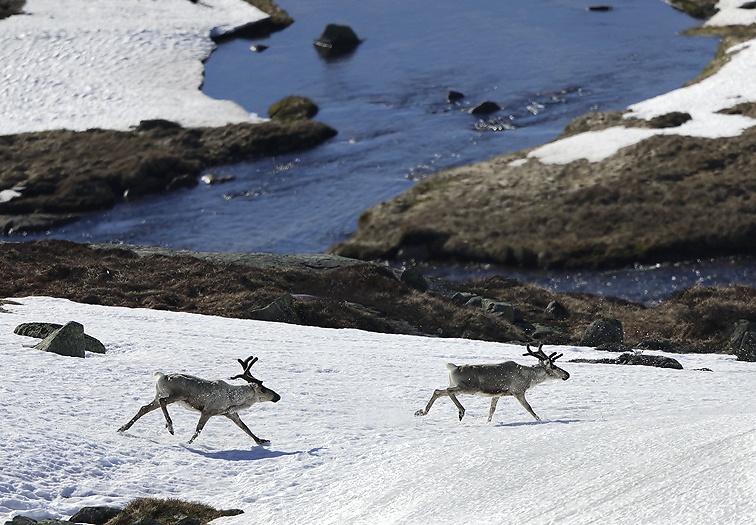
A small herd of Reindeer is quickly crossing down by a small stream.
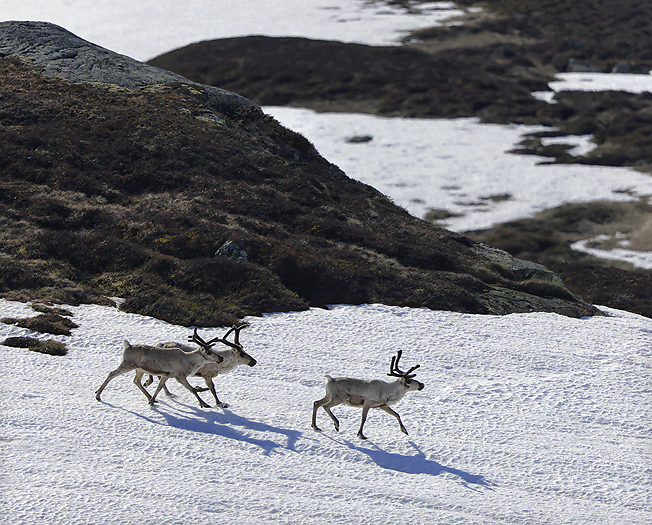
It is great to have these magnificent animals in our mountains. They are the only wild “Ice age animals” still living in Europe , -and exclusively to southern Norway. They are now in great danger as the CWD (a neurological disease named Chronic Wasting Disease) has occured in animals from some populations. The Norwegian authorities have already exterminated one population, and several others will be heavily decimated if they fulfill their plans. More Reindeer images can be seen in the “Reindeer gallery”.
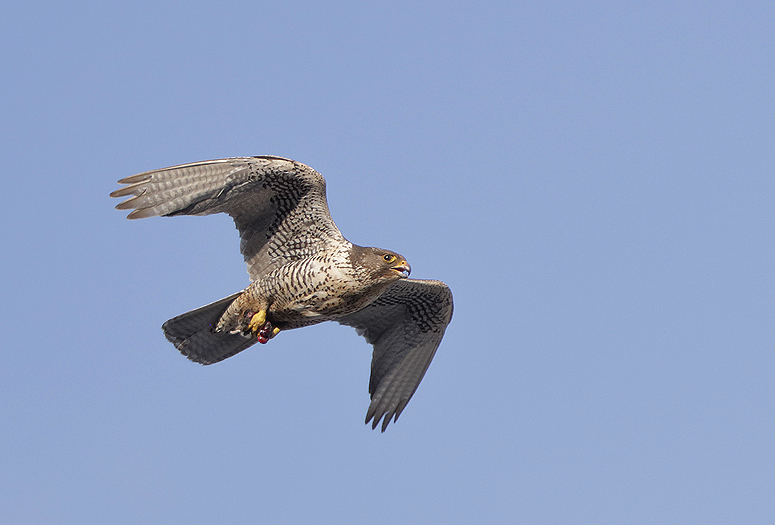
Due to the extremely mild period in mid February with heavy rainfall 1500m above sea level the rodent population broke down in the mountains here. This caused predators to catch Ptarmigans as food source in the winter. The lack of Ptarmigans is perhaps the reason why the Gyrfalcons does not nest this year. This female was photographed last spring in these mountains. More Gyrfalcon images can be seen in the “Gyr Falcon Gallery”.
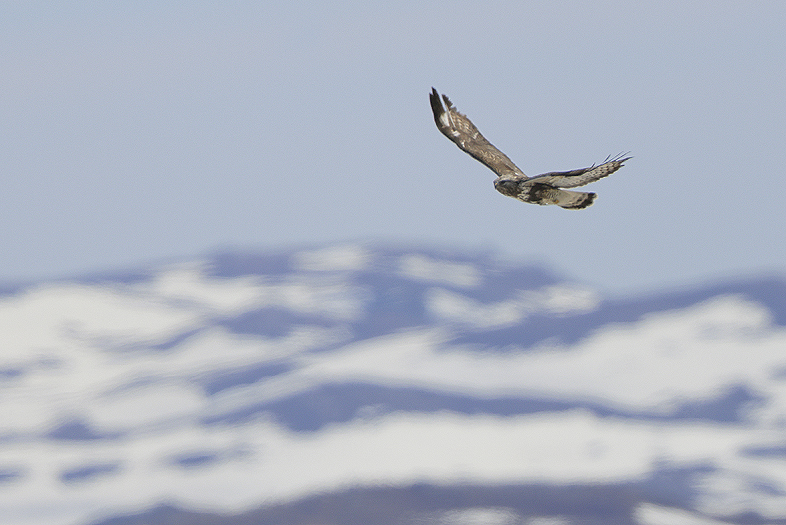
Instead, an opportunistic Rough-legged Buzzard couple have “occupied” the territory here and prepare to nest. What the result of this nesting attempt will be is hard to predict this year.
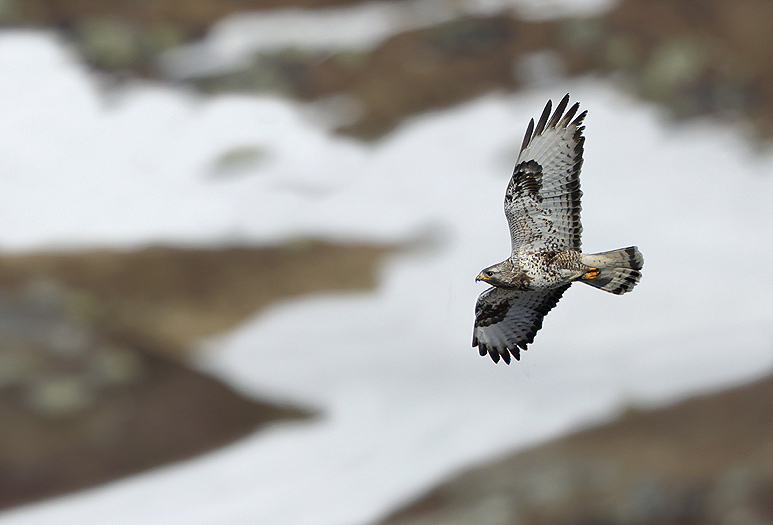
Rough-legged Buzzard. More images of Rough-legged Buzzrds can be seen in the “Rough-legged Buzzard” gallery.
END.
________________________________________________
________________________________________________
WINTER OF 2021 IN SOUTHERN NORWAY.
Autumn left and winter took over. In the lowlands some species stay during the winter, -while som arrives from higher latitudes and overwinter here. As always it is exciting to meet these species again! Late in winter when the first signs of spring occur it is time to move higher up in the mountains to see if the typical species of there are back to their territories.
Here is a selection of images:
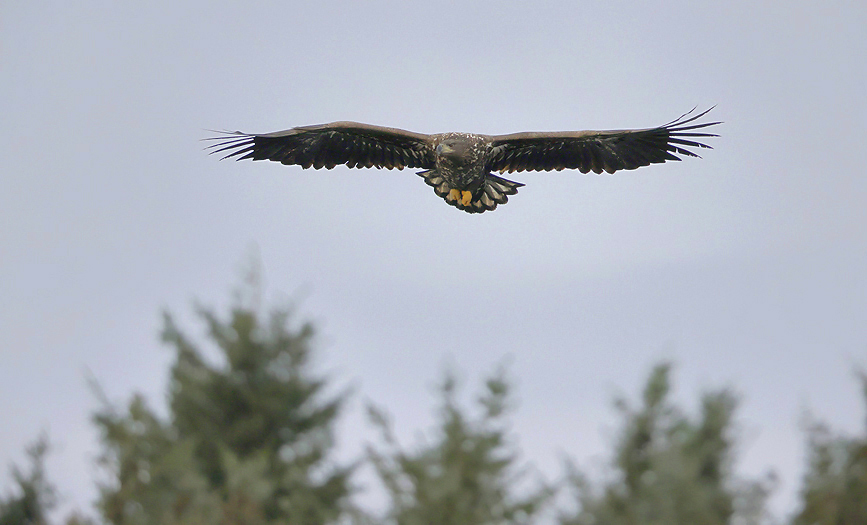
A young White-tailed Eagle out scouting for prey on a cold winter day…
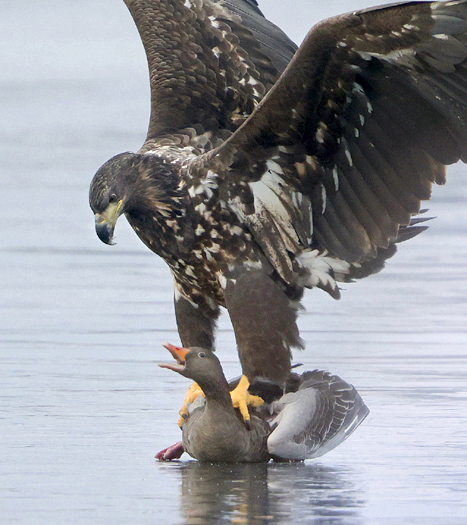
…and he got his prey. Hmm…how did he manage that ? Well, take a look below.
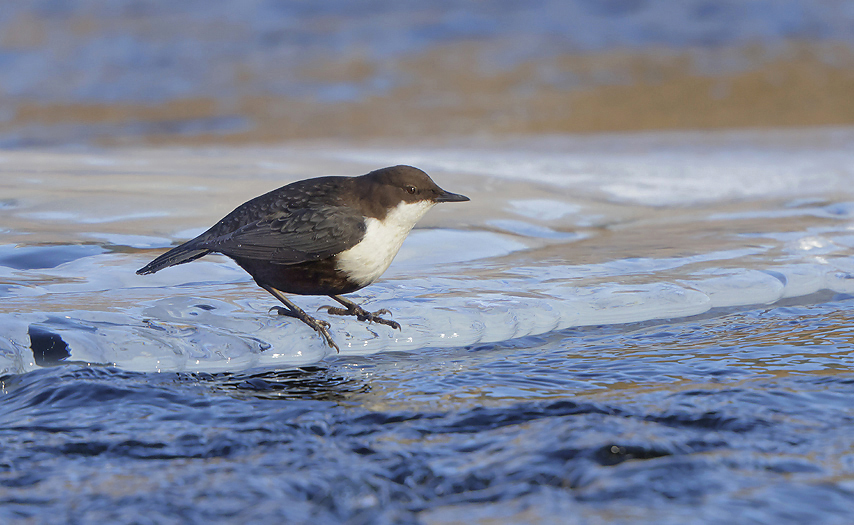
The White-throated Dipper is ready for a bath in minus 15 Deg.C
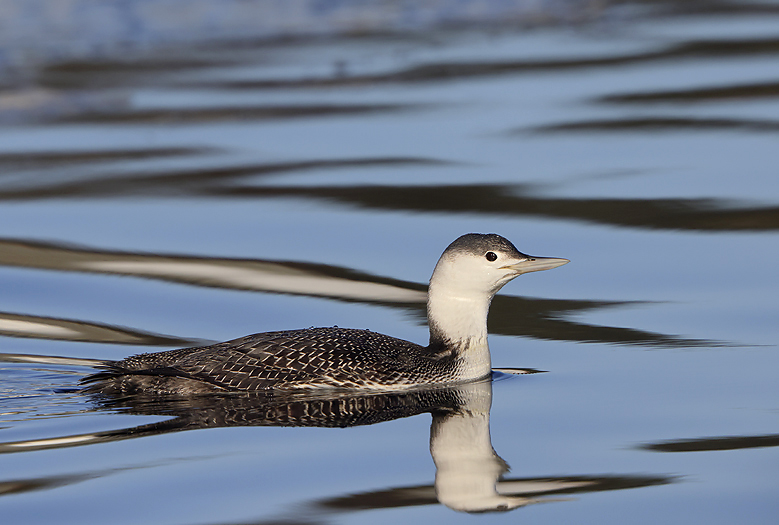
Some Common Loons overwinter in the Norwegian coastal waters, these are mainly Icelandic and Greenlandic individuals. They look quite different in their winter plumage comparing in the summer time.
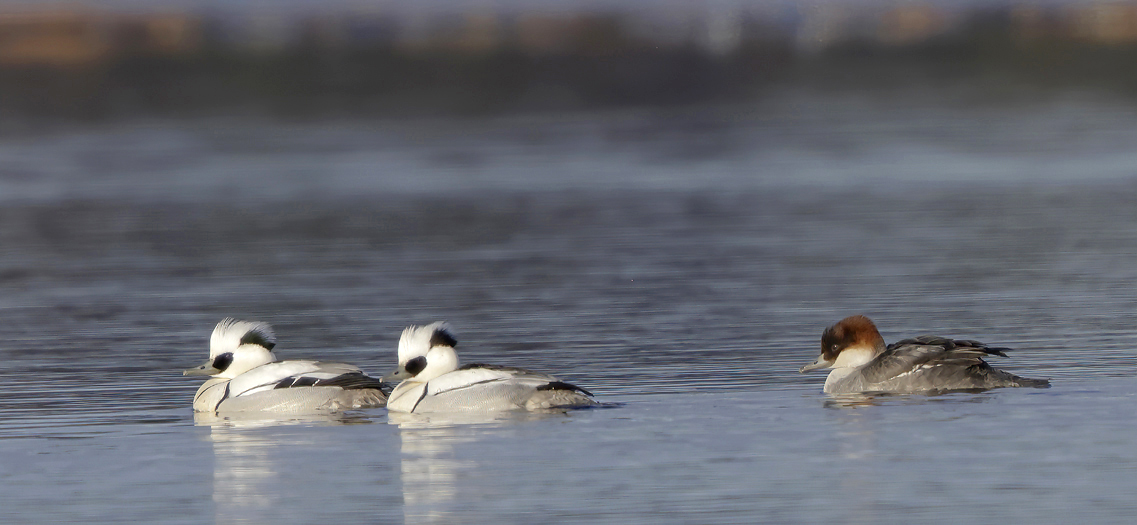
The beautiful Smew overwinter here and there in freshwater lakes in the southern Norwegian lowland. This is a typical Eurasian Taiga species.
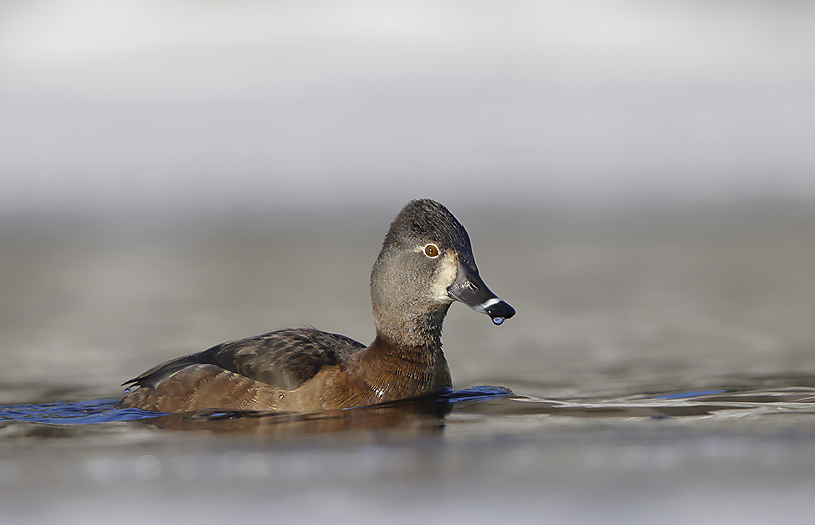
The Ring-necked Duck is a rare North American guest in the western part of the Old World.
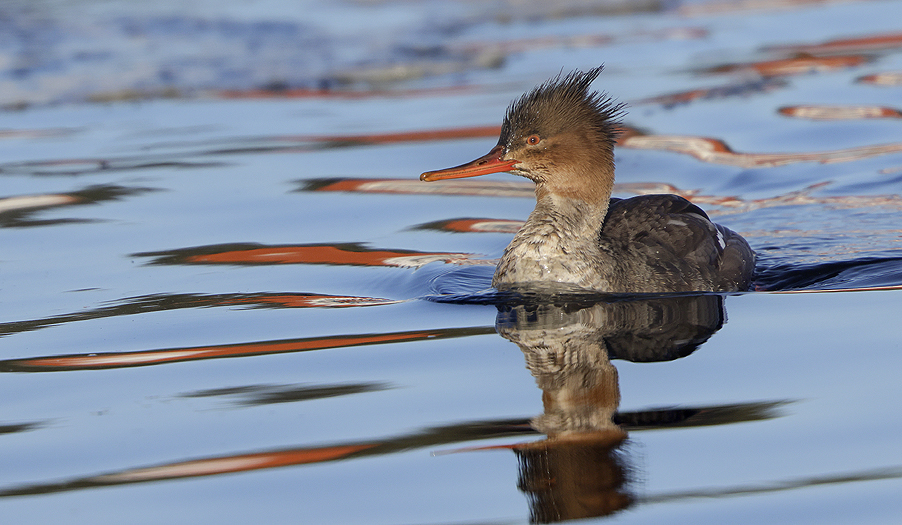
Female Red-breasted Merganser.
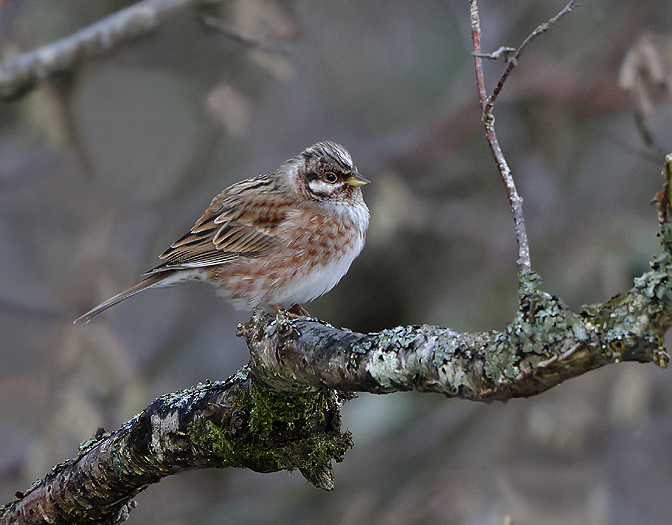
A rare winter guest from the east is the Pine Bunting. Her a male.
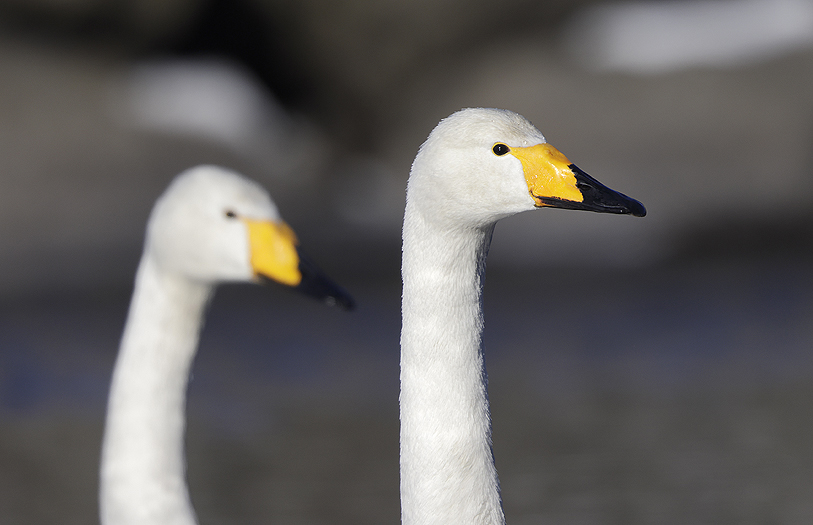
The Whooper Swan is a character species in the lowlands at winter time. This is a species that have expanded their range, and now the nest near all over Scandinavia. For 20 years ago they nested only in the very northern part of the peninsula.
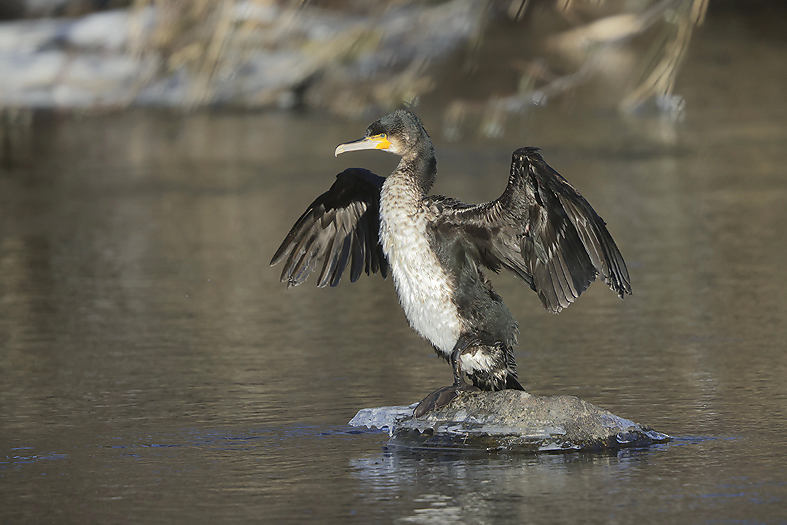
Great Cormorant after fishing in a lowland river.
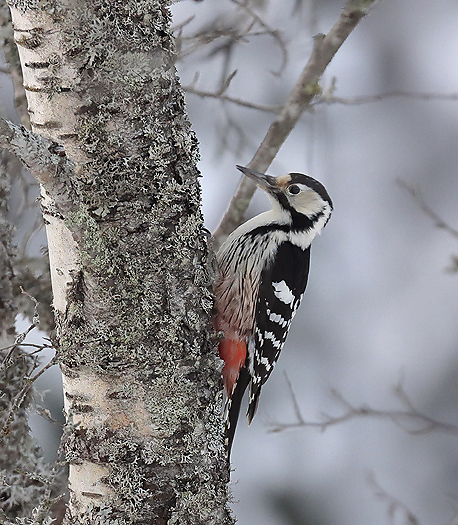
In the inland higher elevated valleys the White-backed Woodpecker can be found here and there.
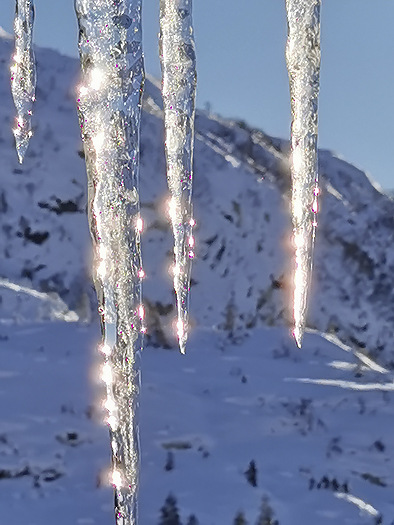
In late winter the sun is getting stronger. It is time for activities higher up in the mountains, -this is a wonderful time!
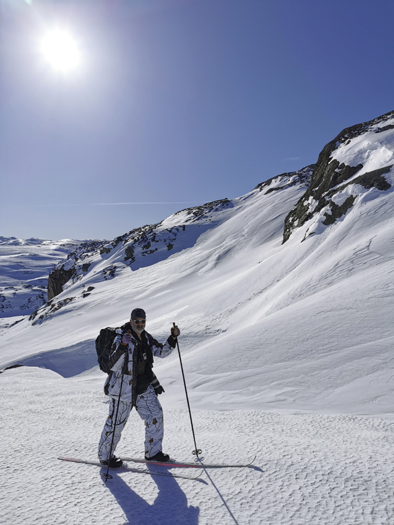
Far above the treeline we search for Rock Ptarmigan, Gyrfalcon an Reindeer. This time we found only Ptarmigans. Due to northerly winds for weeks the Reindeer herds was not in the area at the present, -only old tracks in the snow.
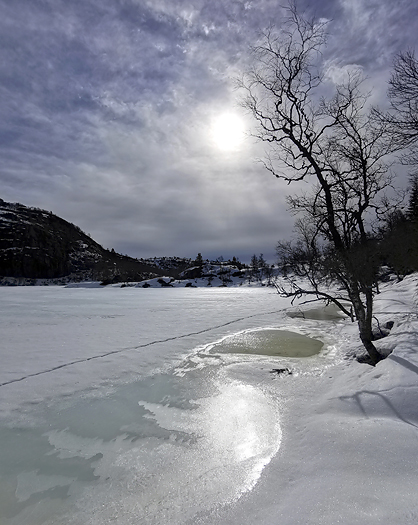
This winter was very cold this year. A sudden change from cold to warm weather with lots of rain took place in late February. After this period it froze upa gain as we can see in this inland valley.
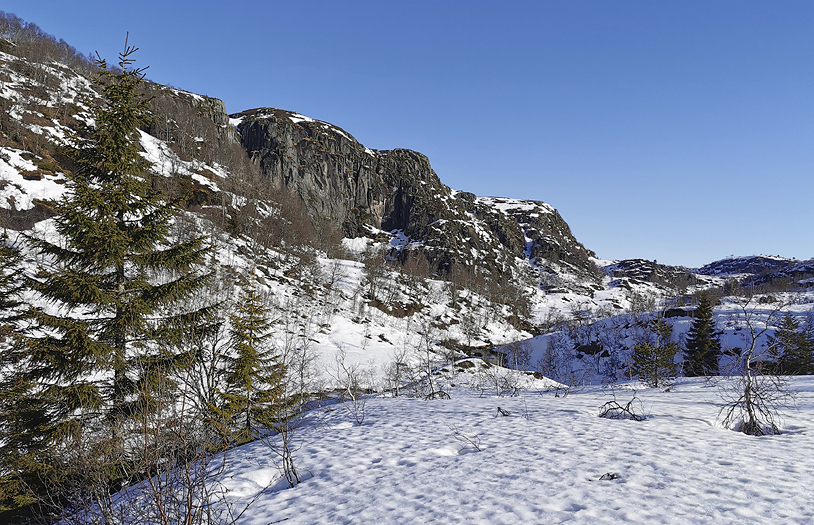
Inland valleys by the treeline against the barren mountain plateaus is exciting areas with interesting wildlife. The cliffs in behind can contain Gyrfalcons or Golden Eagles. This year a pair of Golden Eagles have territory here.
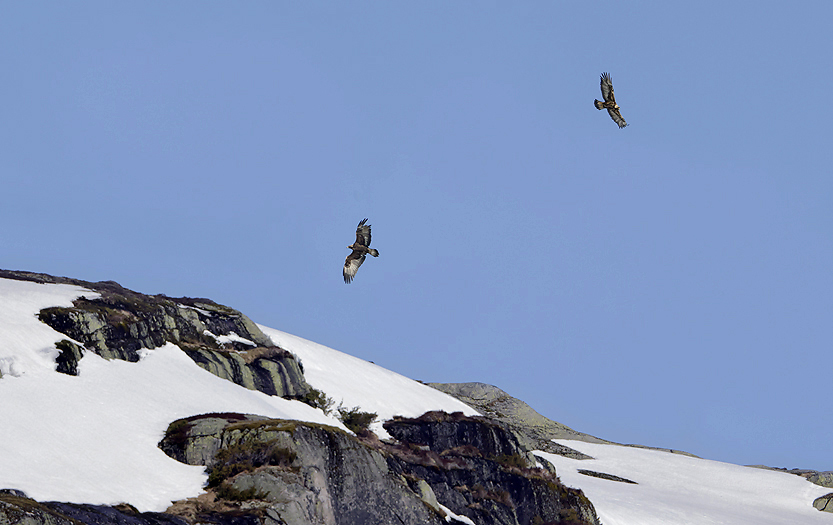
Golden Eagle pair in their territory in the upper part of the remote mountain valley.
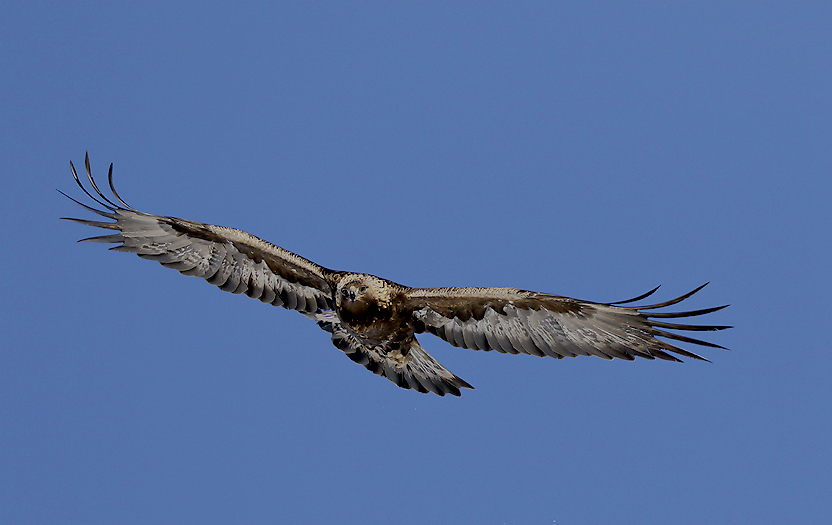
The female Golden Eagle came to check up the intruders to their territory. The snow on the ground lights the under part of the wings much up (PAY).
END.
________________________________________________
________________________________________________
AUTUMN IN THE CENTRAL NORWEGIAN MOUNTAINS, SEPT / OCT. – 2020.
Autumn is back over us again with colors and shorter days… A wonderful time with cold crisp air on a frosty ground.
Most birds are on their way south, rutting time is ongoing for many mammals and some birds, – and humans are hunting for food in good companionship with friends.
The most “arctic” for many of us is to be up in the mountains where we really can see and feel the change from summer to winter. The course is set against Dovrefjell mountains which is stated to have a complete eco system.
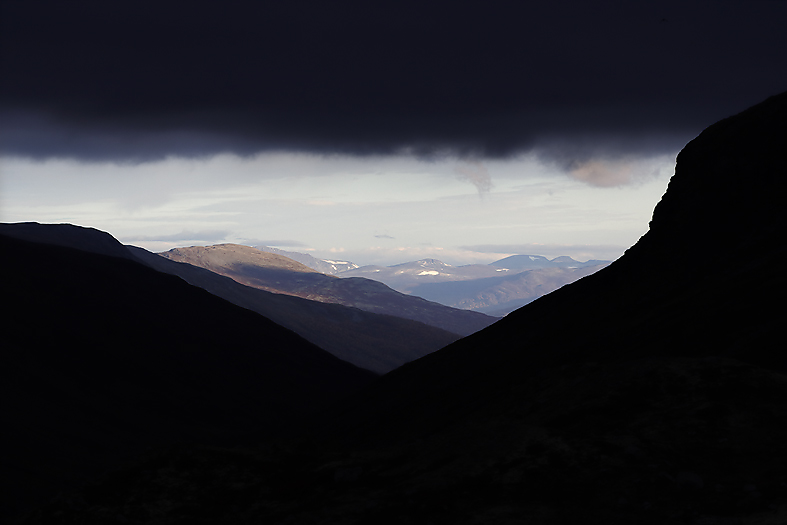
Leaving the coastal areas with its bright light for entering the more often cloudy mountains. But this is luckily not valid for all days ahead on this trip…
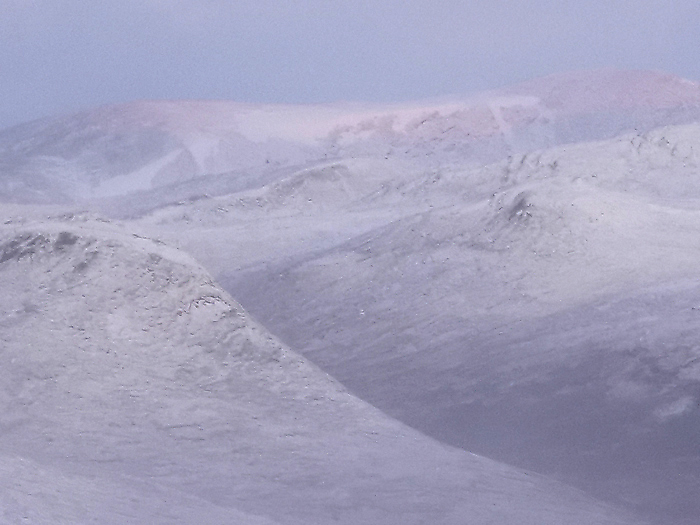
The weather had stabilized and the sunrise over the Dovrefjell mountains show its beauty.
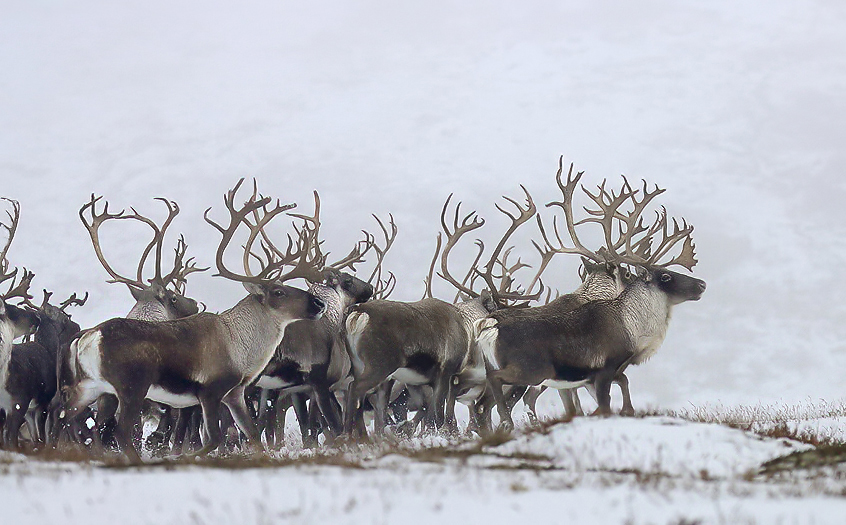
The Reindeer here at Dovrefjell is among a few other populations in Eurasia the direct ancestors of the original Reindeer (Rangifer Tarandus Tarandus) that migrated to the land after the ice retracted when the last ice age ended in Norway around 10 000 years ago. The majority of other Reindeer populations are nowadays otherwise a mixture between released domestic animals and a mixture of domestic & original wild animals.
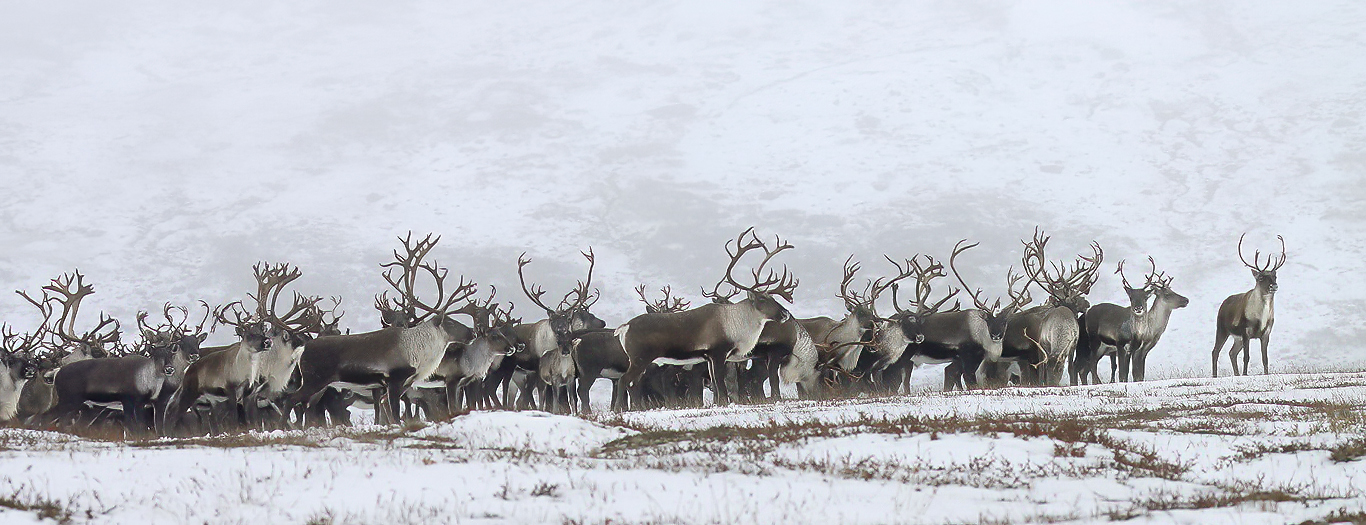
Part of a Reindeer herd containing around 250 animals. Together with the Muskoxen the Reindeer are the only ice age mammals left on the planet (all the other; I.e. Wholly Rhino, Wholly Mammoth, Cave Bear, Cave Hyena, Giant Deer and the Saber-tooth Tiger are away as we all know).
Wild Reindeer were an important resource already when the first modern humans (Homo sapiens sapiens) migrated into Europe around 50,000 years ago. However, the history goes back even further. When modern human beings arrived in Europe and Asia, the Neanderthals (Homo sapiens neanderthalensis) were already here and had been hunting Reindeer for several hundred thousand year. Finds from south-western Europe dated to the first millennia after modern humans migrated into the area show that Reindeer quickly became their most important quarry. It is assumed that hunting Reindeer crossing rivers or stretches of water was widespread, and that the introduction of bows and arrows made it easier to hunt Reindeer on land as well. No traces of Reindeer trapping systems have been preserved on the European continent. If we move a few thousand years forward in history, to the Hamburg culture (13,500-12,000 years ago) and the subsequent Ahrensburg culture (11,000-9,800 years ago), we find another period of large-scale exploitation of wild Reindeer. It is highly probable that it was hunters belonging to the Ahrensburg culture who migrated to what is now Norway, although this is subject to some debate. At some point in history, hunting wild Reindeer appears to have become part of a more “market economy. adaptation – if only for a short period. Wild Reindeer products became part of established trading patterns under control of the crown, established trading houses, the church etc. Here in Norway, this happened during the period 800-1300 AD, while a similar development took place on Greenland in the 17th and 18th centuries AD. However, after a relatively short period of time, the market economy adaptation seems to have been died out and hunting and trapping again reverted to being a supplementary source of food or a secondary source of income.
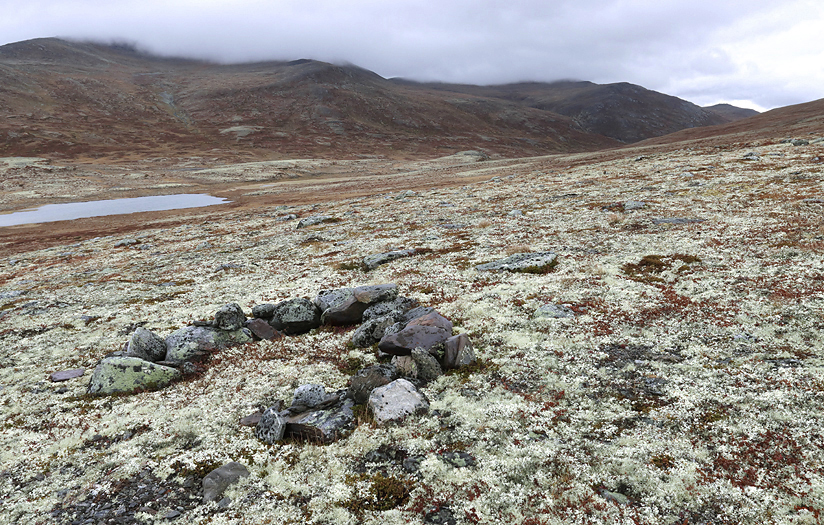
As written about in earlier blog posts we can here and there in the Norwegian mountains find evidence after the former Reindeer hunters. The photo show a hunting blind from the Iron Age. Perhaps it was a Viking that once sat here waiting with his Bow & Arrow ?
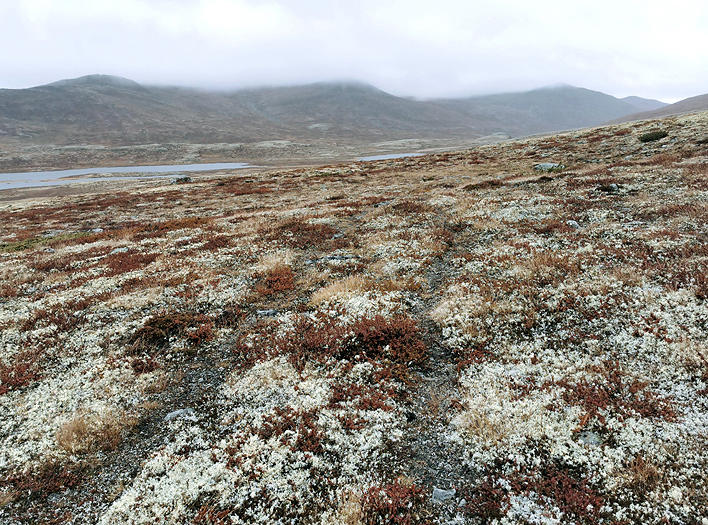
No it is not vehicle tracks, but Reindeer tracks. These paths also pass close by the hunting blind above. The Reindeer often use the same routes for hundreds and thousands of years.
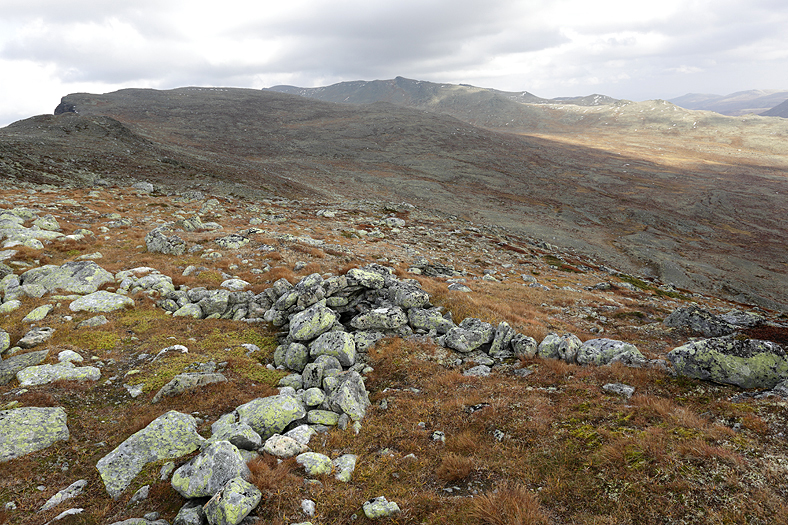
Pitfall trap for Reindeer in the Dovre mountains. Dated back to the Iron Age (around 1000 years old). Note the lead-fences which shall lead the Reindeer direct into the camouflaged opening of the trap. Single traps was the normality, and once the Reindeer had fallen down in the trap (which are around 1,8 – 2 m in depth) they had no chance coming up from “the whole” again because the walls on the short sides are made of huge flat & smooth stones with no place for the Reindeer to place their hooves on and force a jump up again. Opposite to what many believe, -it was not common to place sharp spears pointing up from the bottom of the trap. Why kill the animal if you could have fresh meat..?
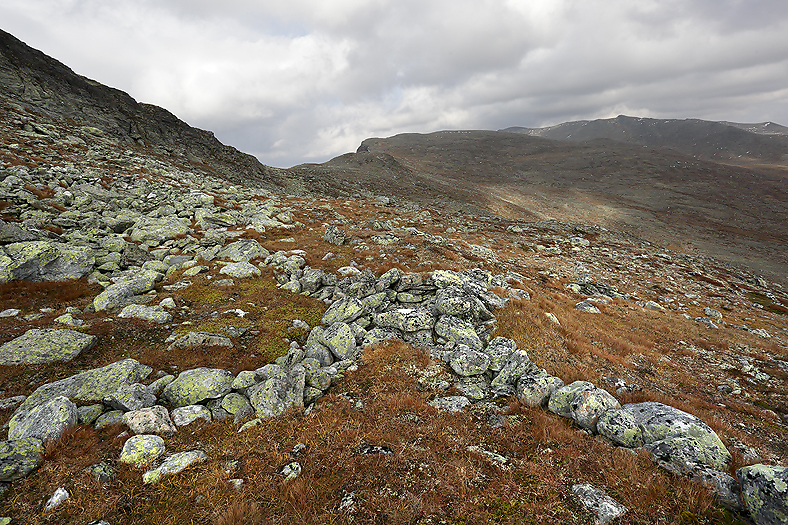
A pitfall trap was often placed at well known Reindeer migration routes, between obstacles so that the animals anyway would chose this direction, i.e. between a rock face (or a lake) and a group of boulders (or talus). The photo show how the lead-fences clearly can direct the animals against the trap. More images of Archaeological Sites can be seen in the “Archaeological Sites Gallery”.
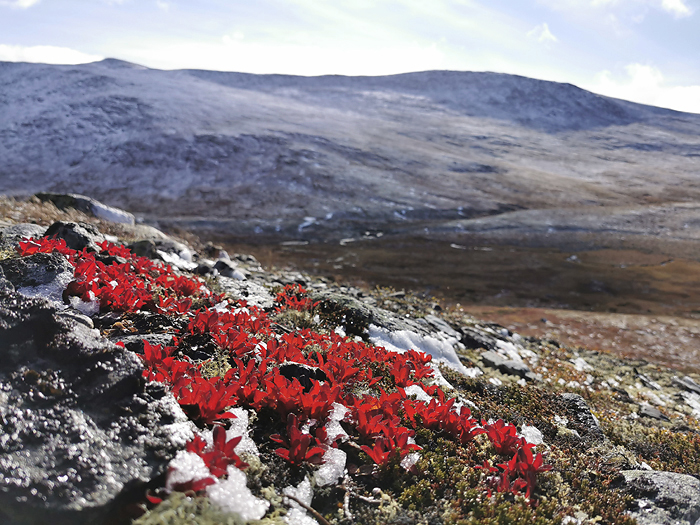
Alpine Bearberry create vivid colors in the otherwise grey-brownish autumn landscape.
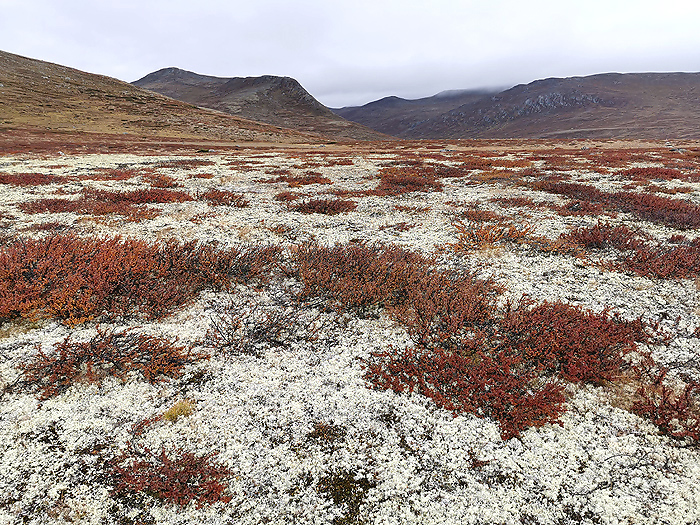
Some valleys in the Dovre mountain range contain great pastures for Reindeer.
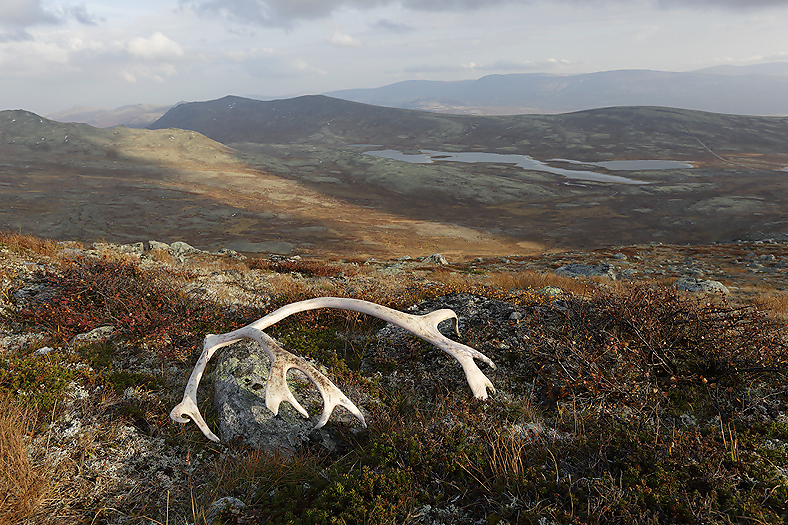
The antlers to the Reindeer male loosens and falls off from them each November month, but the Reindeer female keep them on during the winter time. This to ensure that the female are top ranged and get access to the best food because of their pregnancy (rutting time in Sept/Oct and calving time in May).
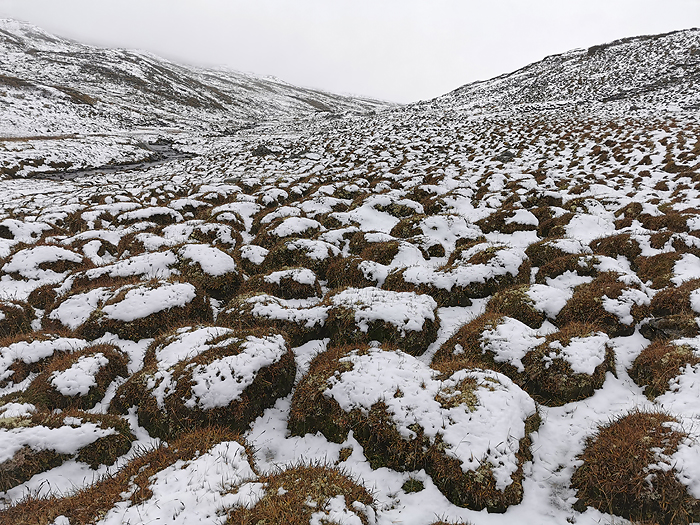
Hummocky patterned ground (which are a result of long term freezing and thawing) can make hiking a bit challenging. Be aware of your ankle !
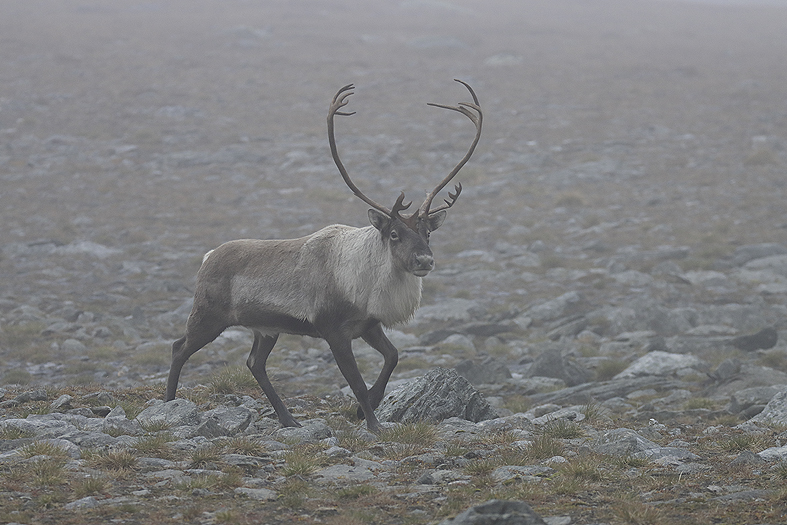
When the weather is not stable with high atmospheric pressure, the clouds can suddenly fall down over the landscape up here, -especially in the afternoon when falling temperature give a sudden change in dew point. When having a rest when hiking at 1700m height, a Reindeer bull came quite close. Normally these Reindeer with “zero domestic genes” are very elusive.
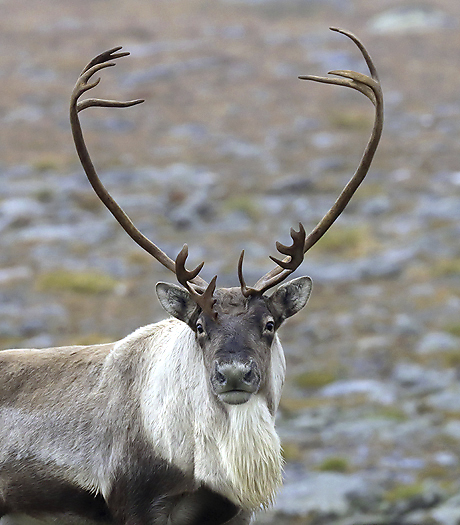
When the bull came closer, the clouds suddenly lifted a bit in the gale force wind.
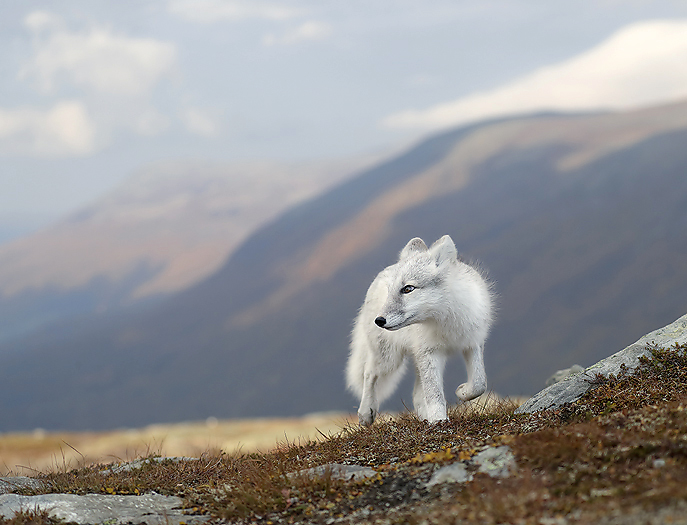
The complete arctic eco system at Dovrefjell mountains also includes presence of the Arctic Fox. As we can see of the photo the fox is close to fulfilling the change from summer to winter fur. In around 10 days or so the fur will be pure white.
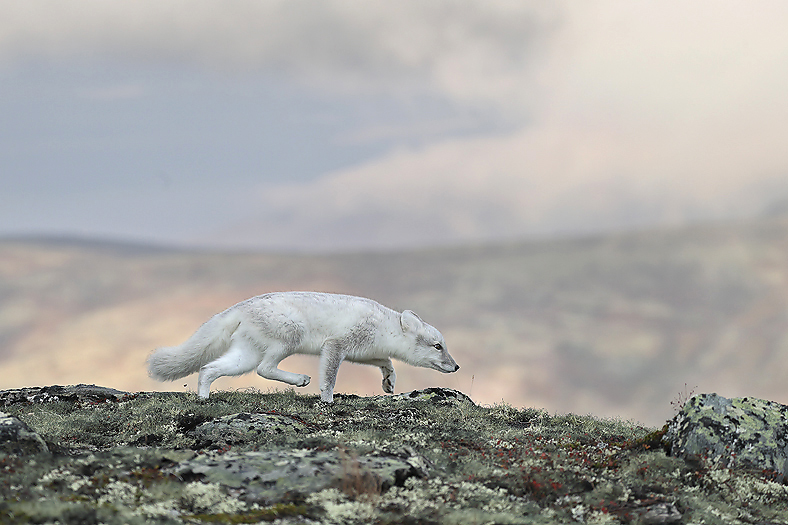
The Arctic Fox is rare in Norway. Last summer only 25 pairs managed to get cubs. More images of Arctic Fox can be seen in the “Arctic Fox Gallery”.
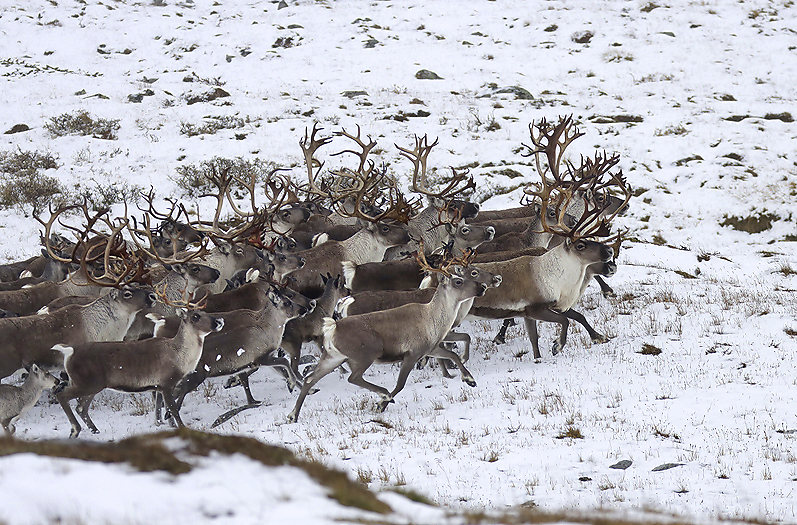
Some more images of the exclusive Tundra Reindeer species which Norway is the only country in Eurasia that hold. Recent research shows that the Norwegian population of wild Reindeer consists of two varieties. Analyzes of the genetic material show that the wild Reindeer on Dovrefjell comes from Reindeer that migrated in from the east, from Beringia. These Reindeer is therefore different from the Reindeer further south in the country, for example those on the Hardangervidda mountain plateau which originates from Reindeer that migrated in from southern Europe.
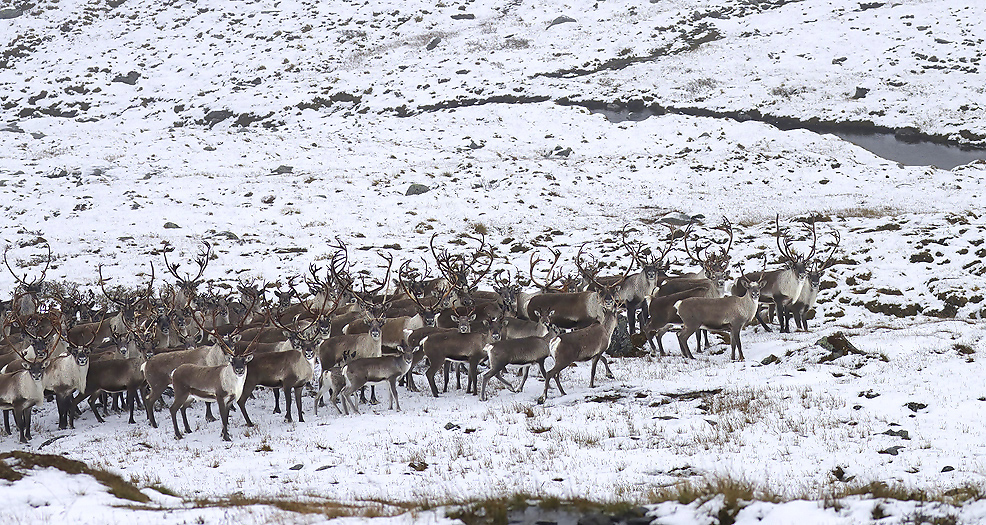
Reindeer at Dovre. More images of Reindeer can be seen in the “Reindeer Gallery”.
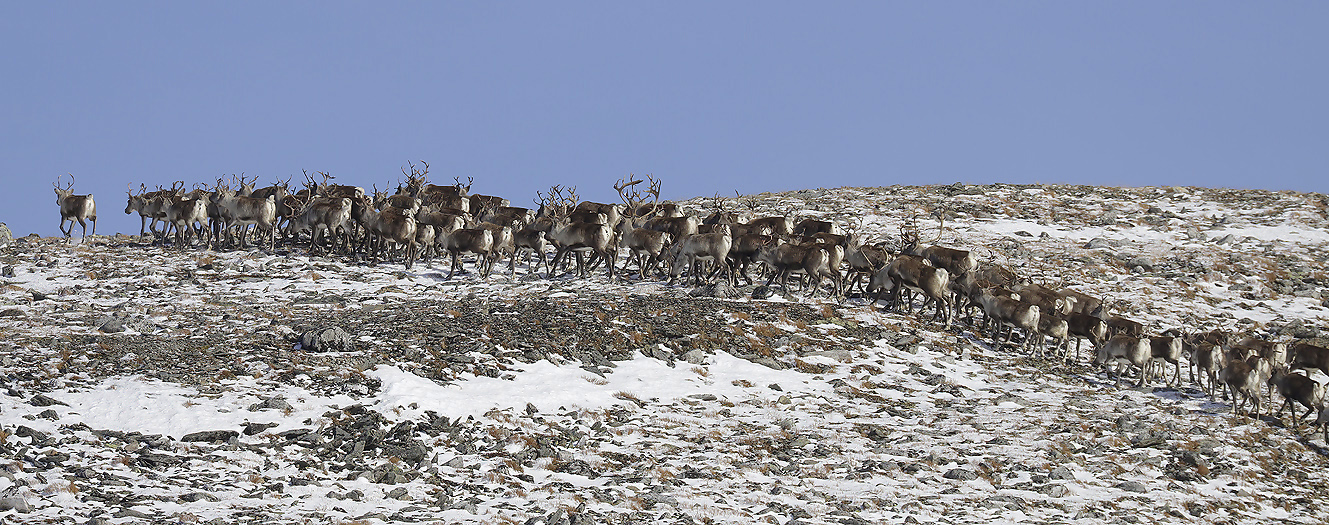
We say goodbye to the fantastic Reindeer in the high mountains and continue the wildlife experience down in the forest area of Dovre.
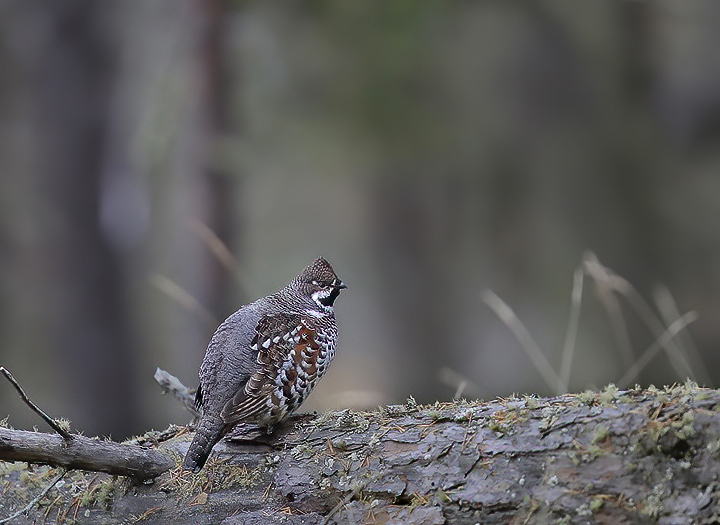
The beautiful Hazel Grouse is normally extremely elusive and run quietly away when they notice human presence.
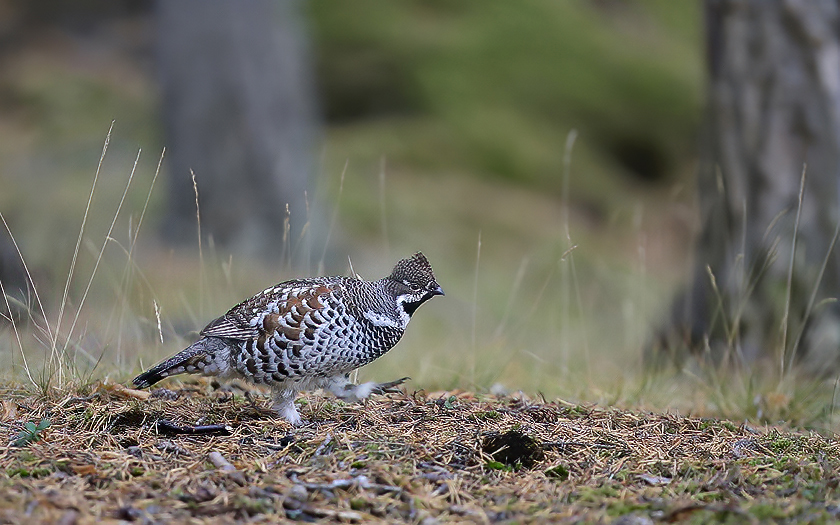
The Hazel Grouse have two lekking periods per year. One in the spring and one at autumn time. Their lekking is not as loud and displayish as i.e. for Black Grouse and Capercaillie, but more quiet and calm. The male is making a high frequency whispering sound, and walk/run in a circle of between 10-30m. This for attracting and/or strengthen the bonds to the female.
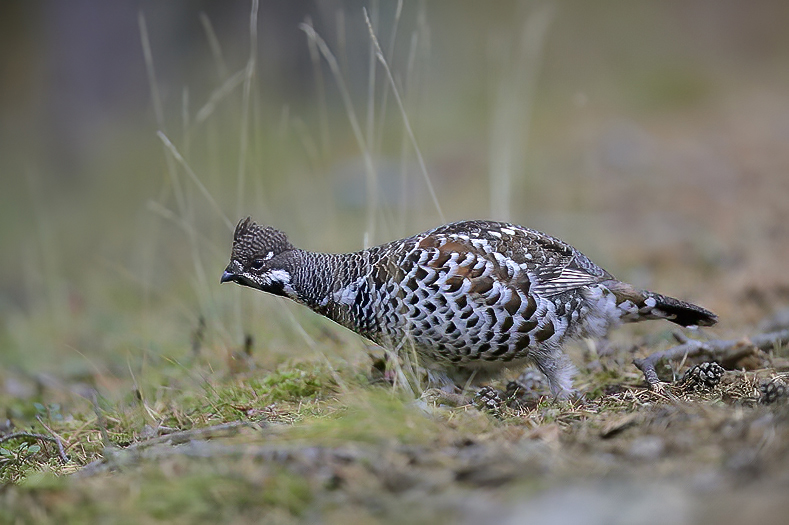
Male Hazel Grouse. More images of Hazel Grouse can be seen in the “Ptarmigans, Grouse & Capercaillie Gallery”.
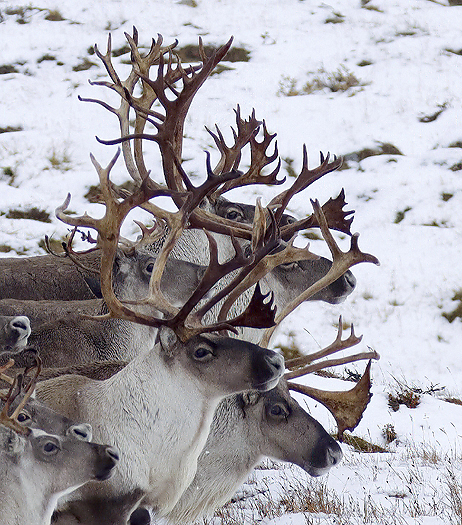
Zoomed in image of “Men with Antlers”.
END.
________________________________________________
________________________________________________
Summer in the southern Norwegian mountains, July 2020.
This is a continuation of the previous post from spring time in the same part of the country.
Even if it is in the last half part of July month there are considerably amounts of snow left. The positive side of this is however the absence of mosquitoes…
The main focus of the trip is to see and document the Reindeer and previous human cultural sites in the area. The Reindeer that roam the mountains here in Rjuven is the southernmost herd (Setesdal vesthei, Ryfylke) in the second biggest dedicated Reindeer area (6000 km2) in Norway. The estimated population is per now around 3300 animals which give a density of 0,5 animals per km2 that is the lowest Reindeer density in the country. So that mean we will really have to keep our eyes open to find these magnificent animals. One of the reasons for the low population density is the tough climate with regularly icing of the pastures in winter time caused by an oceanic climate. As we know Norway has a responsibility to protect this fantastic species because it is the only Eurasian country that have wild Tundra Reindeer left after the last ice age that ended here around 10 000 years ago. If we go 30000 years back in time the Reindeer populated Central Europe south to the Mediterranean. The first people that inhabited southern Norway when the ice age ended was ancestors of Reindeer hunters from what now is northern Germany.
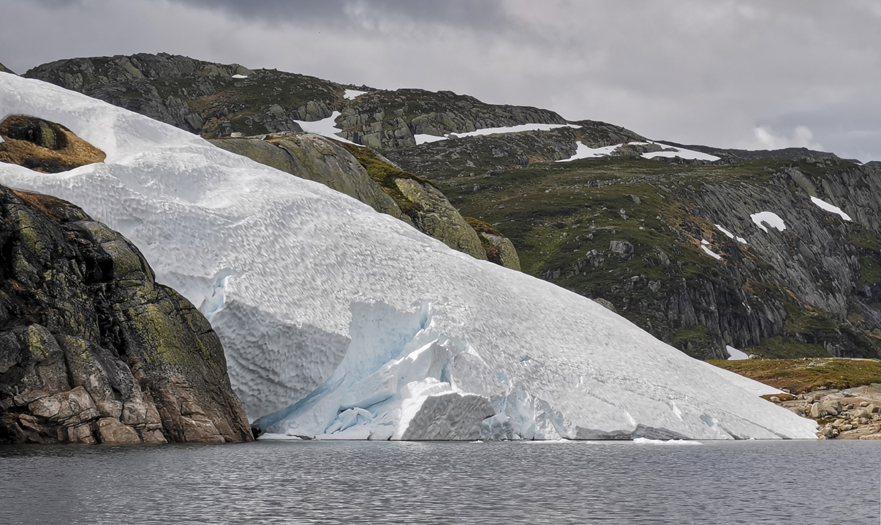
Along the way on the lake into the wilderness there are huge snow patches looking like glaciers ending into the water.
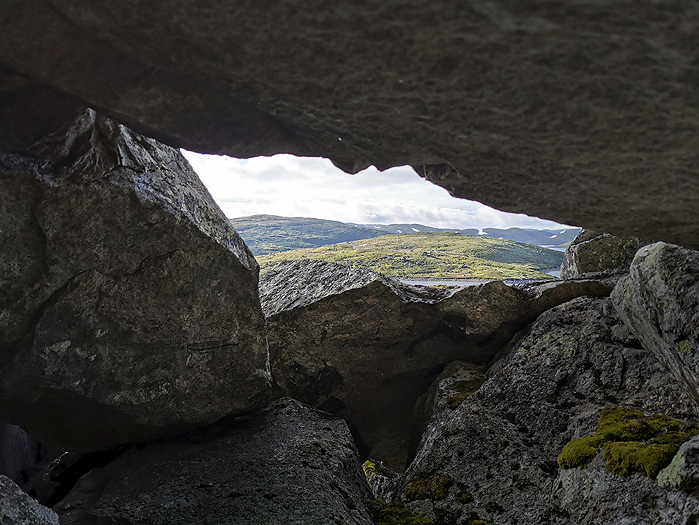
This is the view our ancestors in the Stone Age (Neolithic Period starting 6000 years back in time) had when they looked out from this specific cave thousands of years ago when scouting for Reindeer. This cave has by the way been periodically used by man up to a century ago.
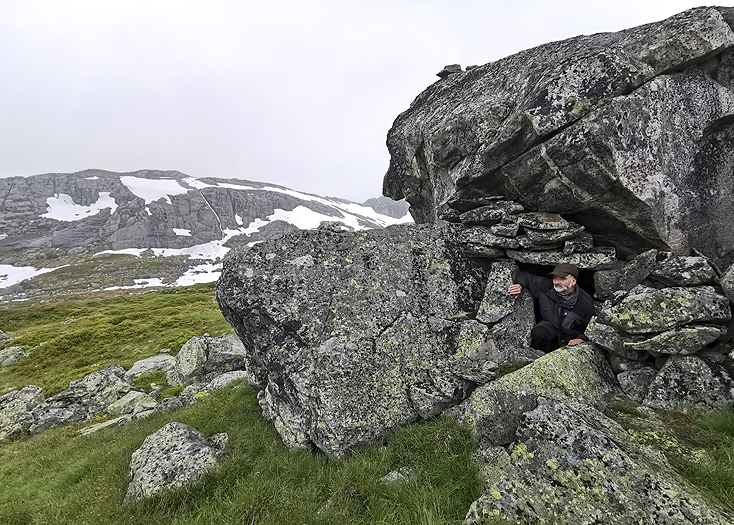
The entrance to a herders cave used regularly until a century ago.
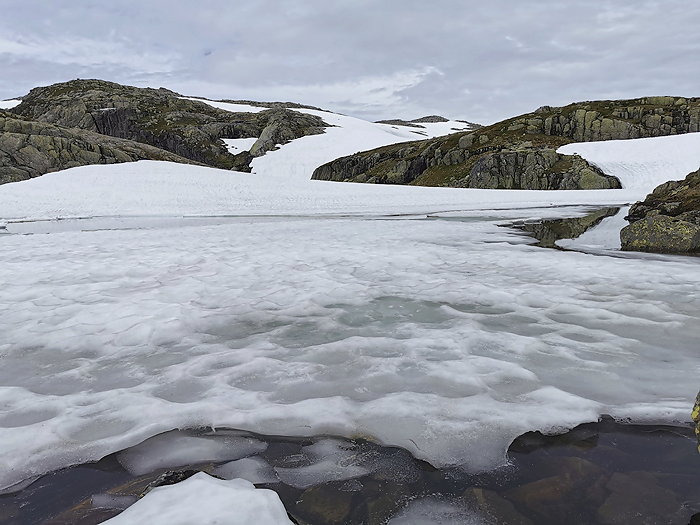
Part of the landscape high up in the mountain range.
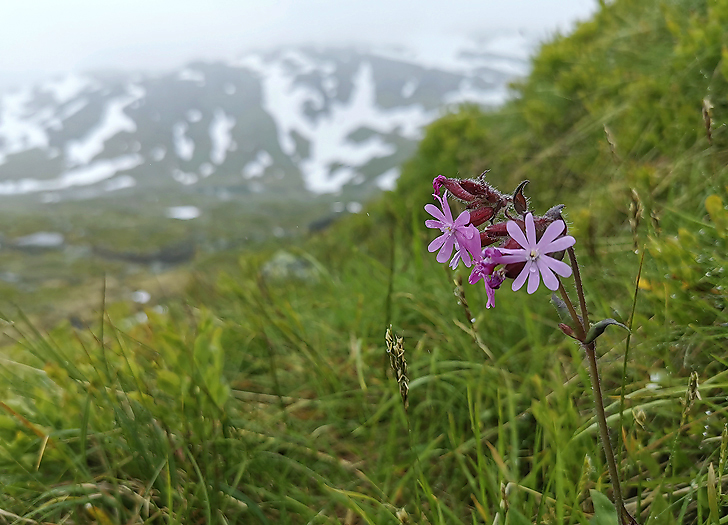
The rare Primula Scandinavica Bruun is endemic to the mountains of the Scandinavian Peninsula.
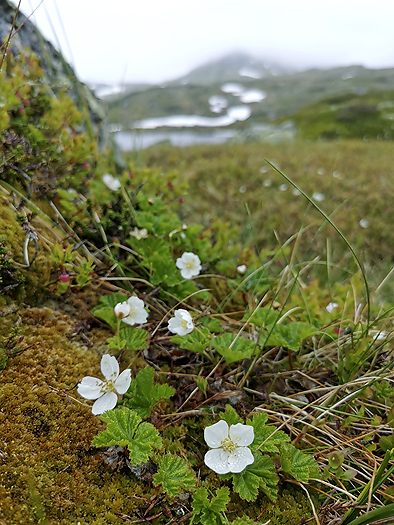
Blooming Cloudberries, these are one of the most common flowers in the Low Alpine zone. On Cloudberries male and female flowers grows on separate plants.
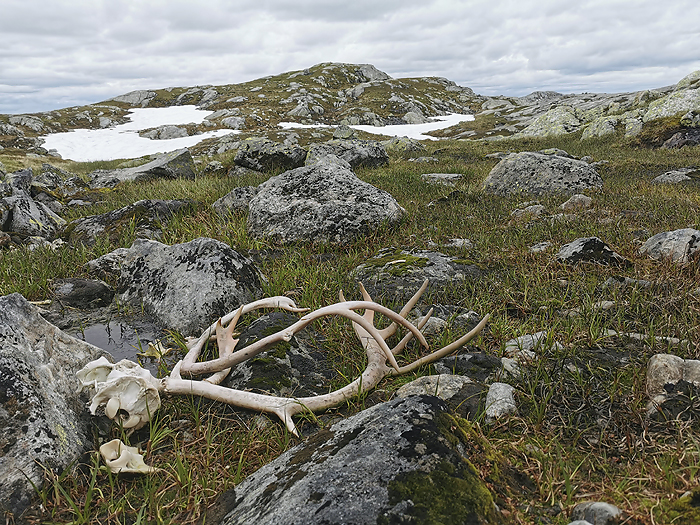
A Reindeer Bull was unfortunate and lost his life in the bottom of a rocky ravine. Studying the antlers show that the right part was broken/cracked.
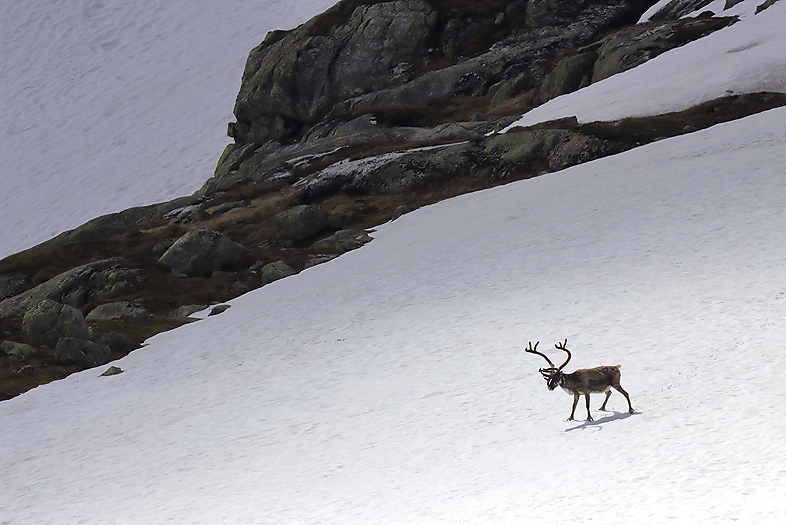
Lonely Reindeer Bull. His foot tracks in the snow was extremely big; between 25-30 cm in length (main and bi-hooves).
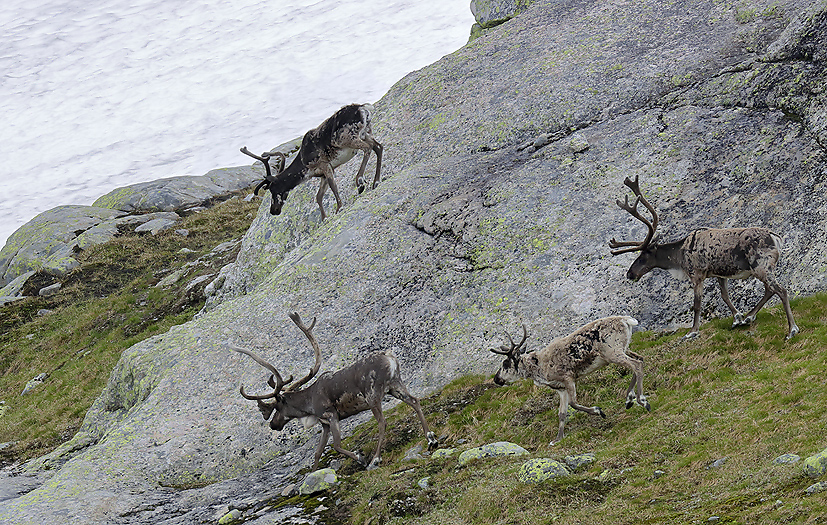
Note that the Reindeer on this time of the year still have bright parts of winter coat left.
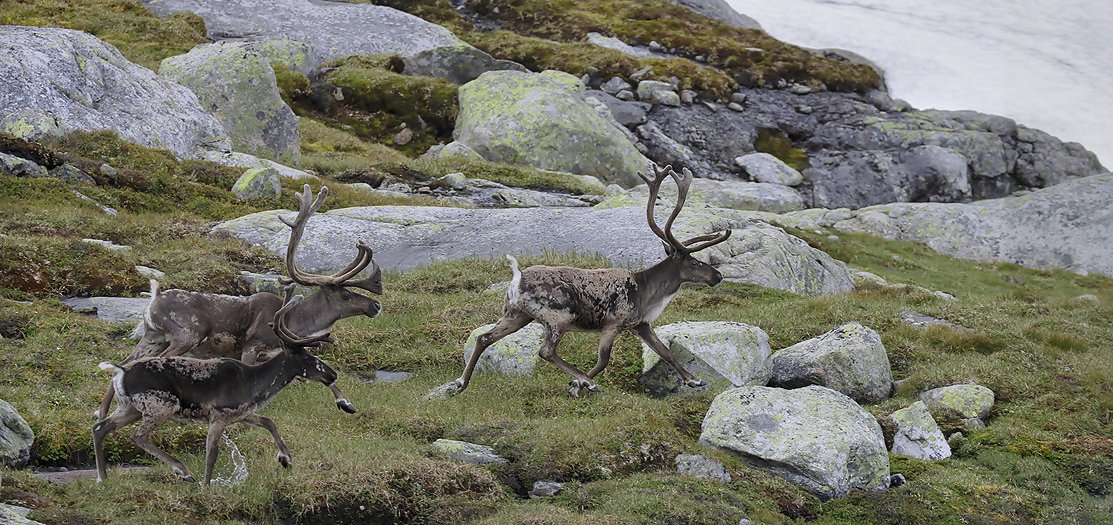
We observed smaller and bigger herds of Reindeer every day we were high up in the mountain range.
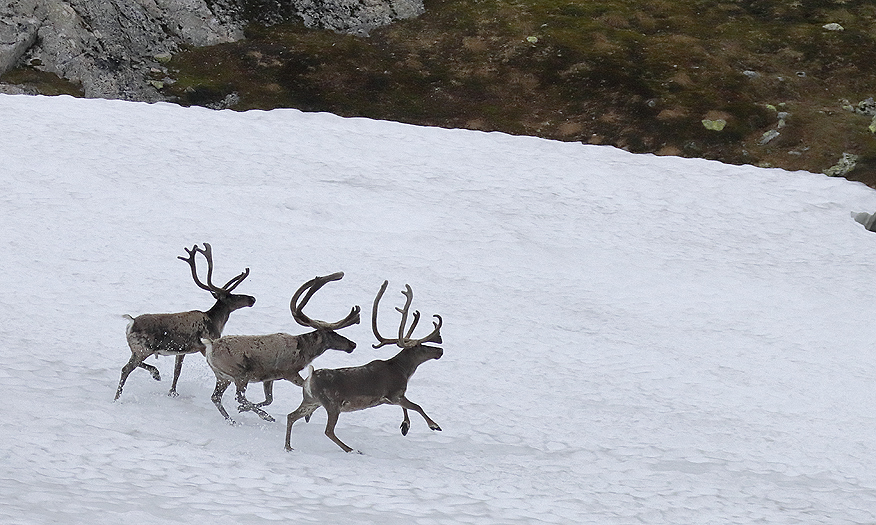
Busy Reindeer Bulls. More Reindeer images can be seen in the “Reindeer gallery”.
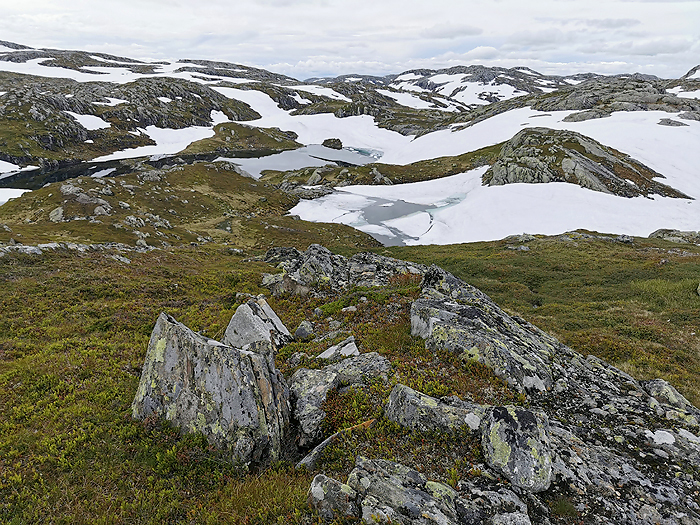
Part of one area favored by Reindeer.
END.
________________________________________________
________________________________________________
Spring in southern Norway, May 2020.
Spring again ! The most beautiful time of the year has arrived, -and per posting this article it has already passed. At that time of the year it is always a great pleasure watching wildlife in the mountains, moving around either by ski or ordinary hiking. Spring was late this year and even in the middle of June there are still much snow in the higher parts of the mountains. Most people are more attracted to the sea and coastal areas now so the chance of meeting people in the higher mountains is rather small. This is however good for the wildlife who then do not get any human disturbance.
Setting off by skis and full equipment for being able to stay here for a short week the landscape soon turn out to be as snow & ice covered as late winter, even the time now is late May.

The mountains are snow covered and all lakes are frozen even in late May. The snow melting has not really started yet and it was very difficult to find water to drink the first day of the trip.
See the old Reindeer tracks in the snow in front and left side of the photo.
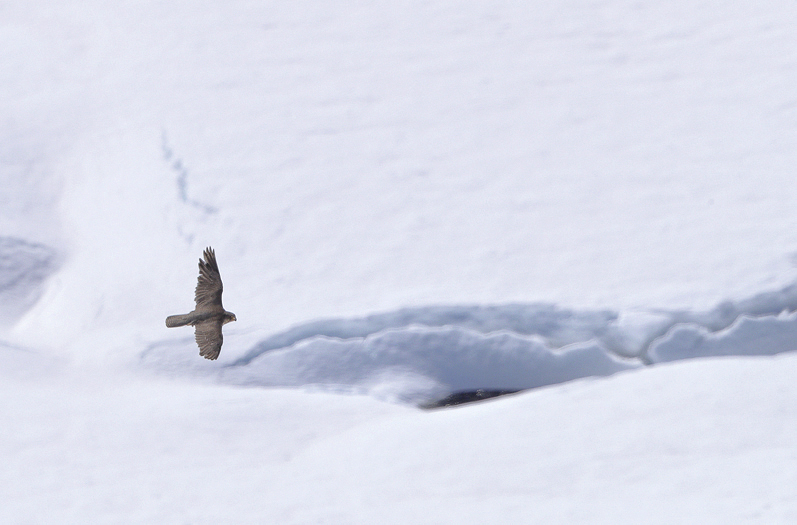
The only sign of river opening up was in the Gyrfalcon territory where the falcon suddenly was flying over a sinking area over the river.
Tracks of Reindeer are everywhere, but unfortunately no Reindeer are seen at this trip. A great number of Ptarmigans are seen however, -this make the possibilities better for that the Gyrfalcon couple in these mountains perhaps can nest this year. As we know Ptarmigans are the main prey for the Gyrfalcons. Some places in Norway the Gyrfalcons therefore are called “Ptarmigan-falcons” by the locals.
A recognizable silhouette suddenly pass in the landscape below, -a Gyrfalcon. It is in the middle of their territory so they are probably nesting afterall.
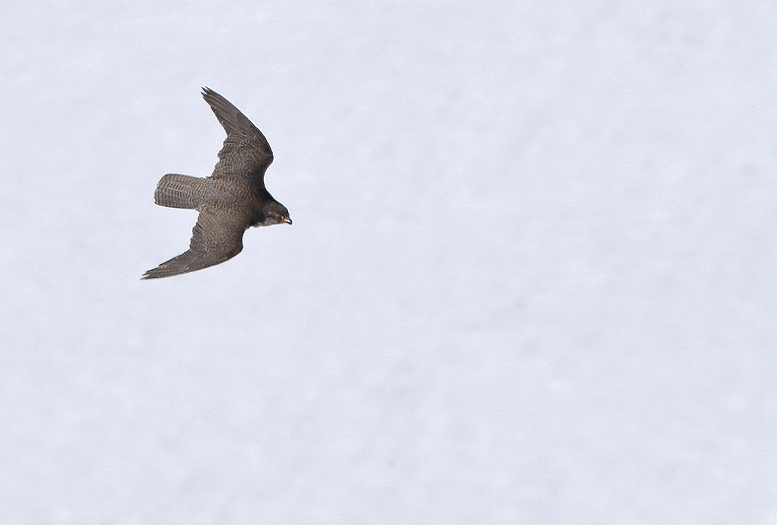
This silhouette is not to be mistaken by, -typically Gyrfalcon. Ohh what powerful and fast these magnificent birds are.
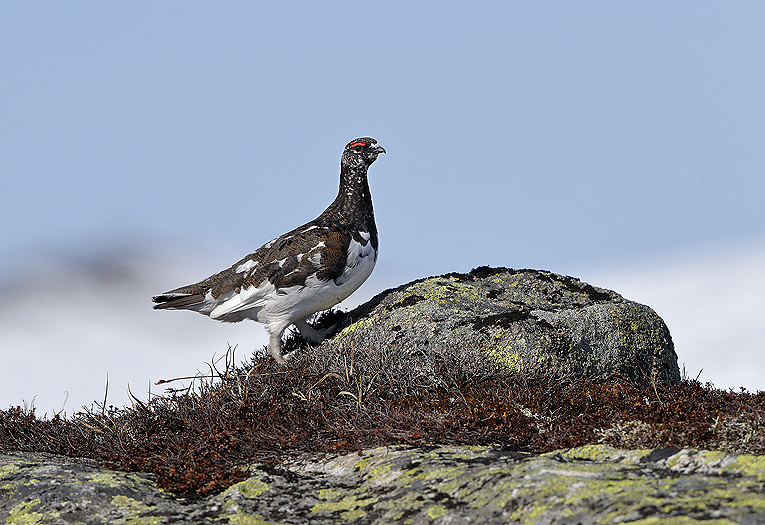
Male Ptarmigan who is close to achieve the Summer plumage. This species are less shy compared to the relative the Grouse who live in the lower parts of the mountains.
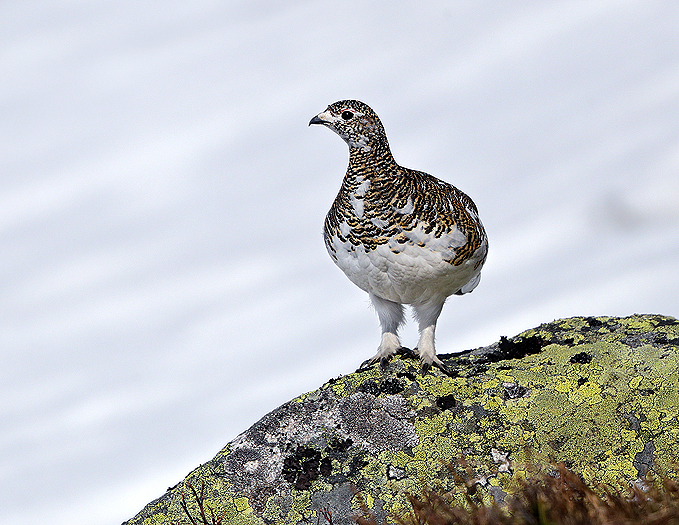
Female Ptarmigan who also is close to achieve the Summer plumage.
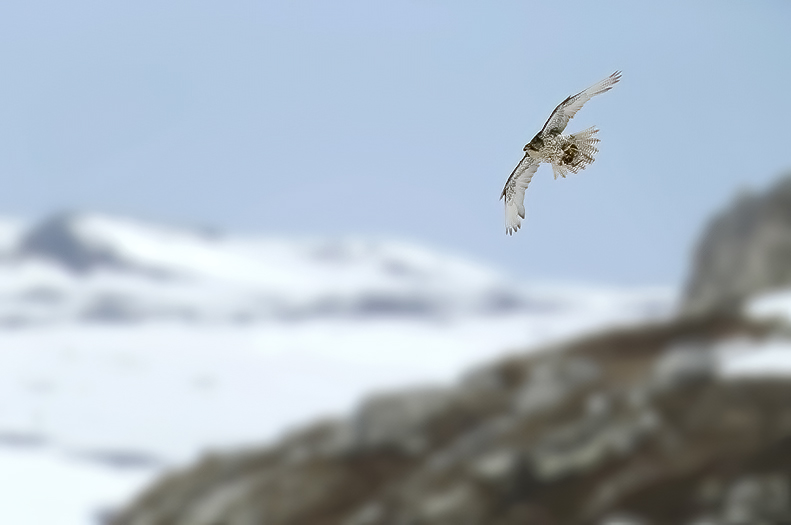
Suddenly the Gyrfalcon are back again flying in great speed against a steep cliff near by, The shape can with some fantasy remind us of a fighter plane !
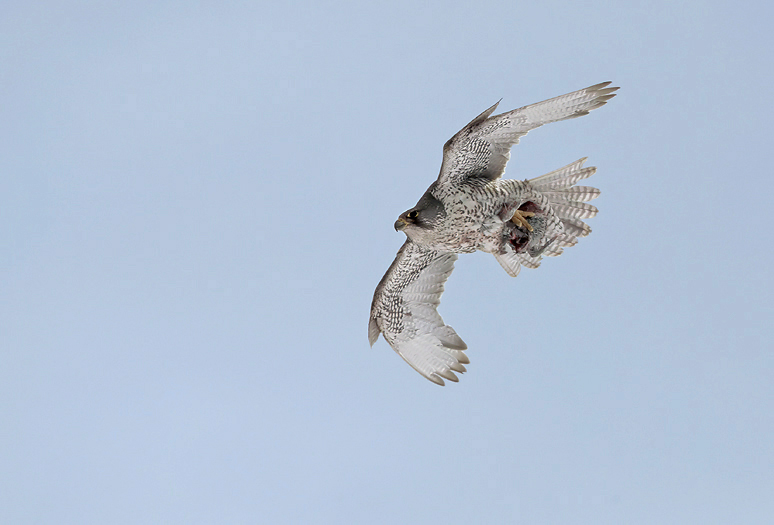
When the falcon is closing in it is evident to see that it is carrying prey in the claws. It is not to be surprised of that it seems to be a Ptarmigan. And yes, -they nest this year.
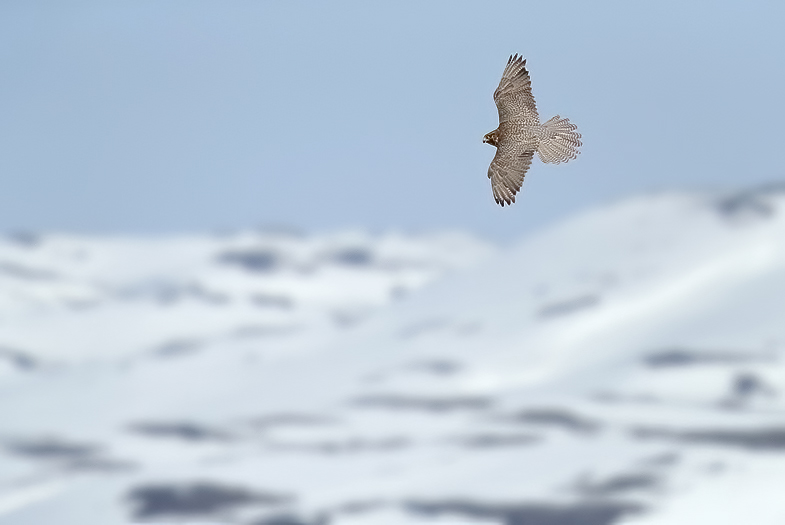
One of the adult Gyrfalcons make a turn showing the wintry landscape in their territory. For more Gyrfalcon images, -please see the Gyrfalcon Gallery.
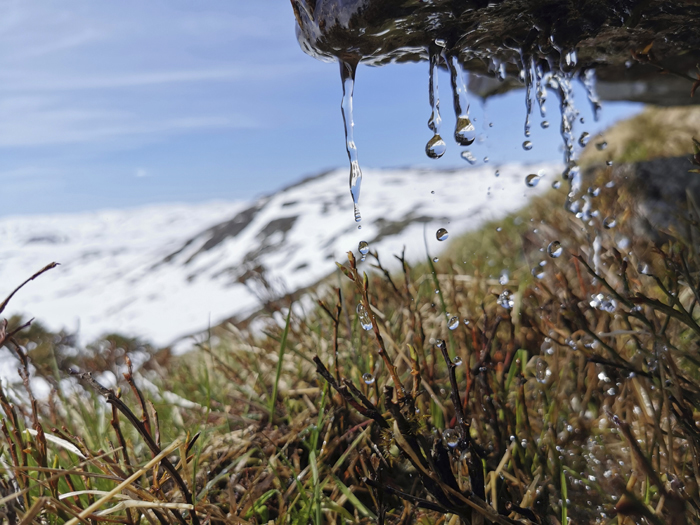
The sunny days making it possible to collect water for drinking without going back to camp and melt snow with the Primus.
After staying in the winterly high mountains the course was set for the lower areas. The Birch trees there has already got the fresh light green leaves and many minor birds was singing to claim territory and attract a fellow species.
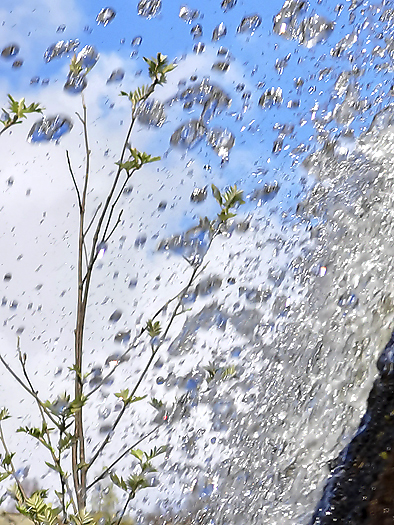
And in the lower parts of the mountains there are water, -lots of fresh water to drink and shower hot human bodies in. Wonderful !
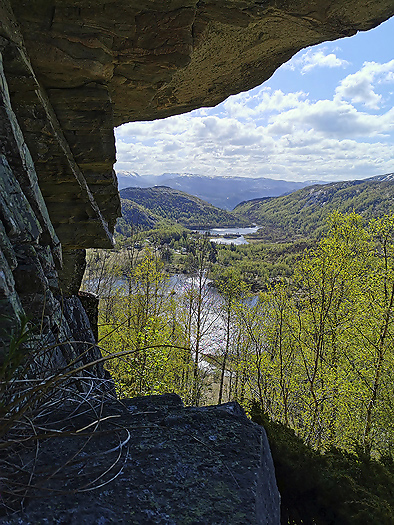
Due to low numbers of rodents this year the Eagle Owl was not nesting at this traditional place. The high peak of Rodents from the early winter had collapsed and only a few of the typical Rodent eaters were nesting.
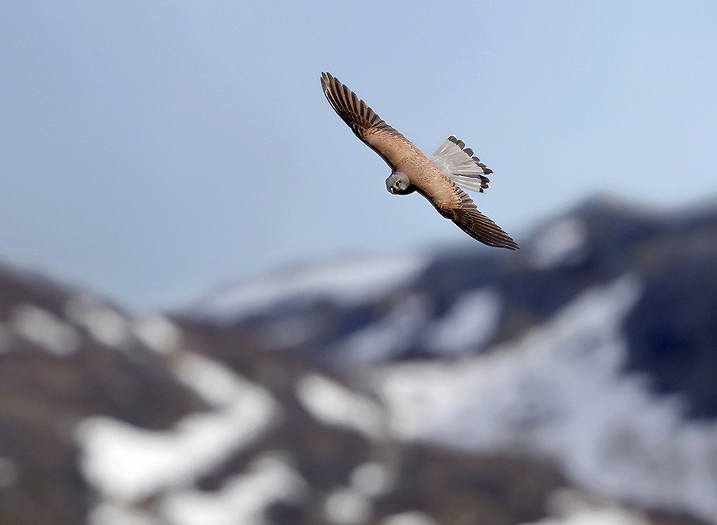
The Kestrel is only partly dependent of Rodents, and they was nesting in one of three territories this year. The photo show a male.
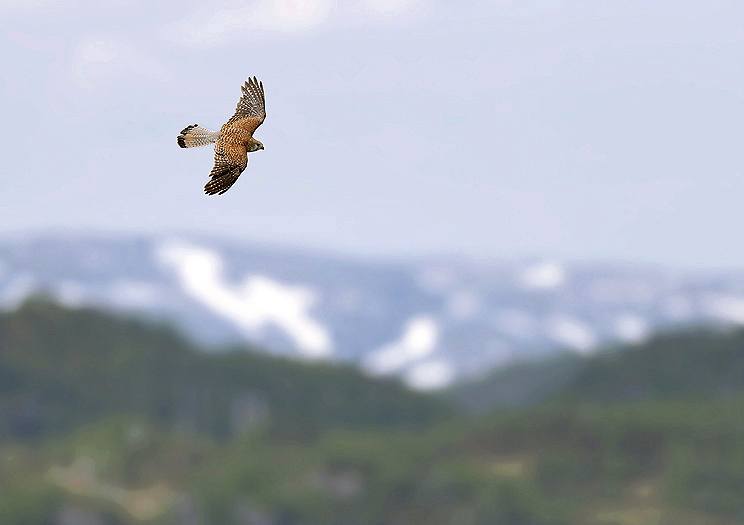
Kestrel female showing the landscape in the lower mountain areas. For more Kestrel images, -please see the Kestrel Gallery.
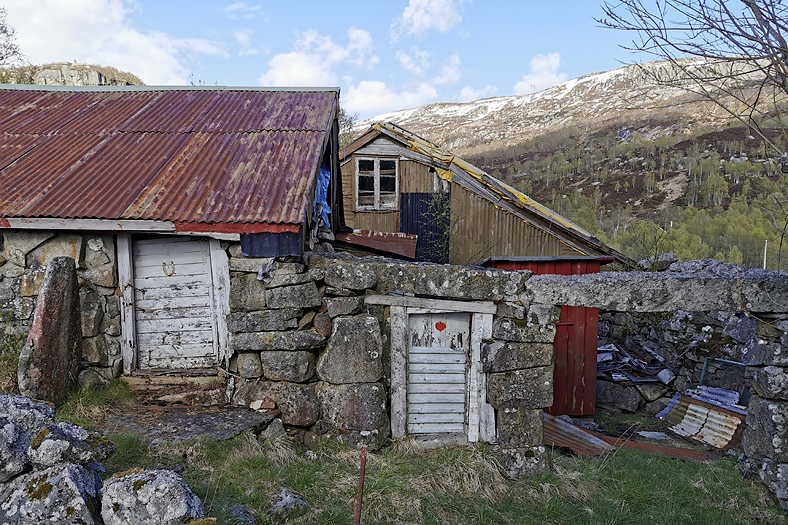
Passing one of the many old abandoned mountain farms in the valleys below the high mountains make me stop and think how people lived a while ago. The farms was often built on beautiful places at open fields near a lake or a river. Many people in these modern days look back in time and wish they could have lived at such places. A simple life where they could live of the land. But in reality It was a hard and tough life with occasionally hunger, cold and also longings with dreams of a life in the town, -of which the latter they often could not afford.
This specific farm was driven until the 1970`s. Some of these places have inhabited people since before the Black Death (1349-52), and later reoccupied from around 1500-1600ds until recently.
Typical livestock for such farms was 1-3 cows (for milk), some goats and a dozen sheep. From the land the people hunted Reindeer, trapped Grouse, fished Trout and collected berries in late Summer. They cultivated grass and cut leaves from trees for winter food for the livestock, and grew vegetables as potatoes, carrots, turnips and rutabaga for themselves. In some sheltered and warmer places they could also grow corn.
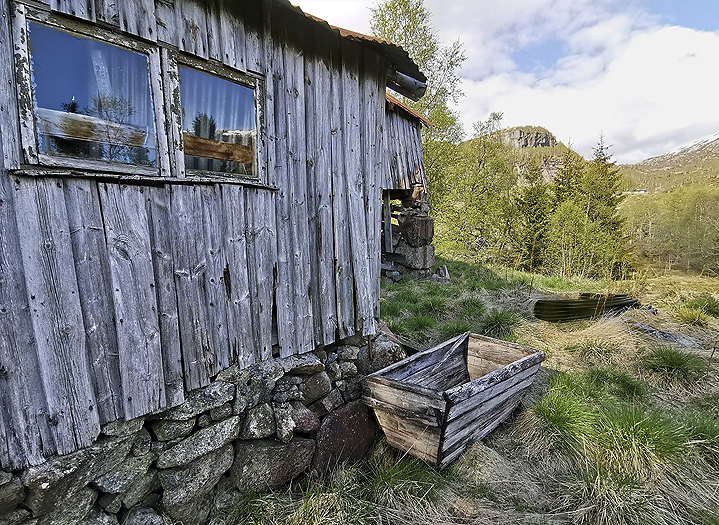
Details from the farm described above.
END.
________________________________________________
________________________________________________
Autumn in Southern Norway, September 2019.
Just under the glacier at the northern part of Hardangervidda Mountain Plateau in Norway there is a special lake. The lake is in the middle of an ancient Reindeer migration route from north to south and vice versa. And the special about this place is that the lake has two small Peninsula`s just opposite to each other in the middle of the lake where the partly shallow water between them is only about 150m. The surrounding landscape is relative flat compared to the more rugged terrain with mountains and cliff walls east and west of the lake. It is therefore a natural place for the Reindeer herds to cross between the Peninsula`s on their migration route. And so did the Stone Age people (from middle Mesolithic) find out, and also in the Bronze Age, and in the Iron Age (including Viking Age) and finally in the Medieval period. On the southern Peninsula (left side in the photo) we find dwelling sites, hut ruins & evidence (spear heads, tools etc) from all these periods. Very few people nowadays visit this extremely interesting place. After wandering around on this southern Peninsula looking at the old sites it is great to sit down and reflect over life and try to imagine how they lived here thousands of years ago.
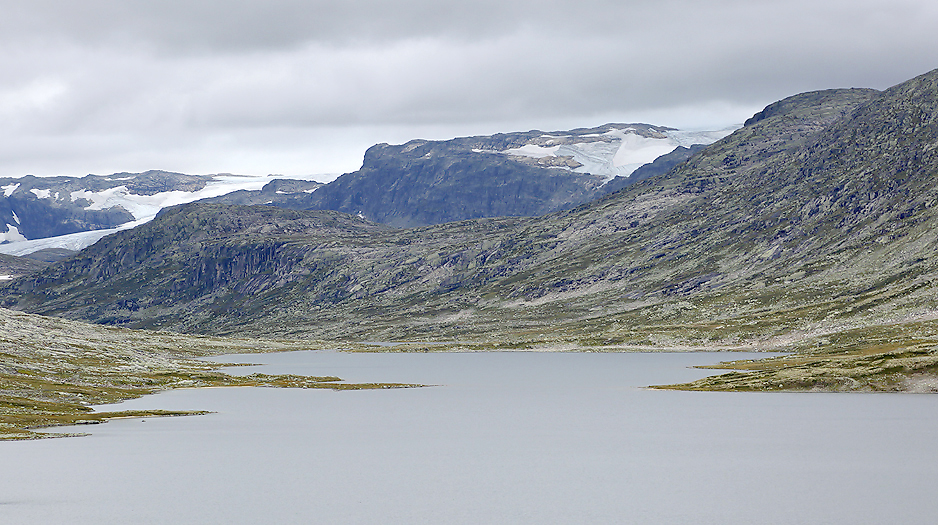
The special lake seen from east against west. The Peninsula`s are left and right in the photo. The southern Peninsula to the left where the prehistoric dwelling sites and hut ruins are placed.
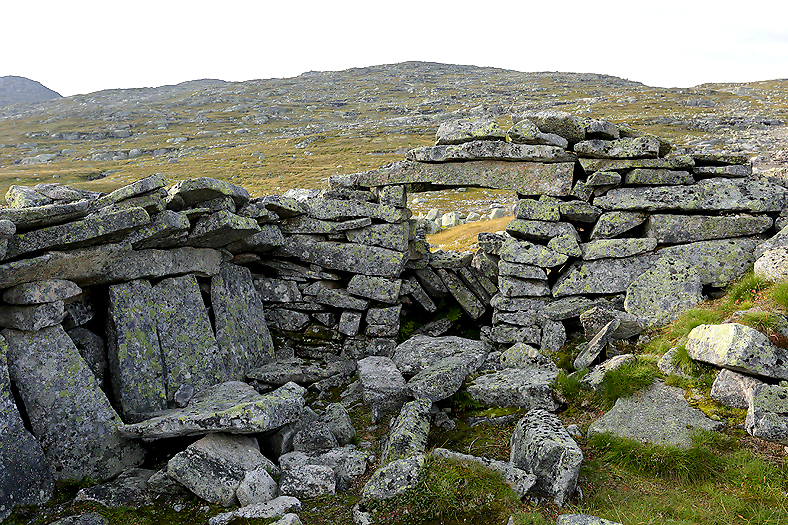
As we can see part of the walls of this rare building from 1200 AD are still intact.
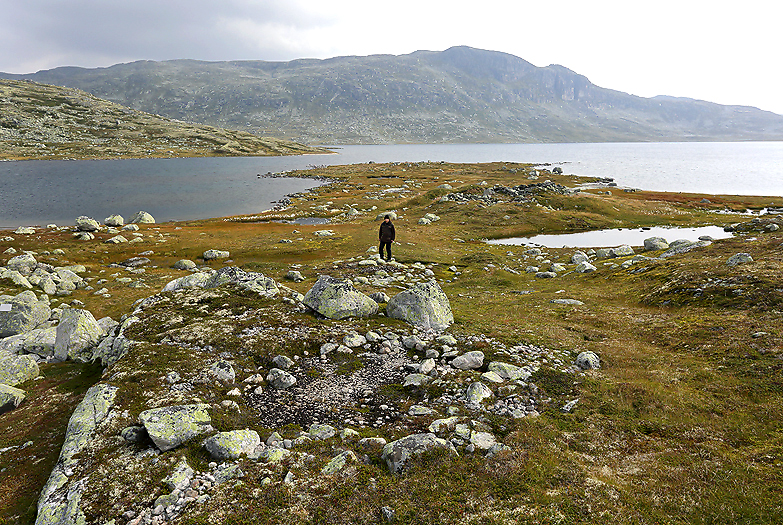
In front we see the ruin of a Stone Age dwelling (Neolithic Period), further back a person study the ruins of a dwelling site from the Bronze Age, and on the base of the Peninsula behind the person we can see the ruins of the Medieval Buildings.
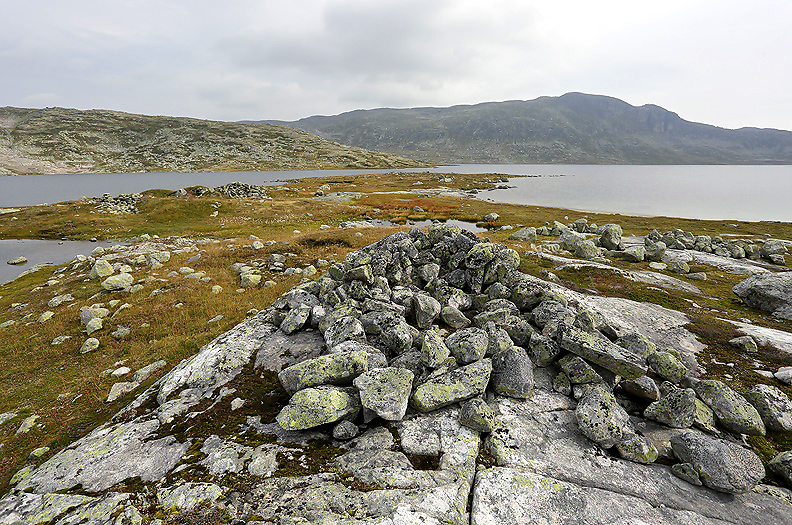
Partly collapsed ancient hunting blind. It is exciting to think that for a very long time ago the hunter sat inside here with his bow & arrow or threw his spear against Reindeer that was running just below along one of the sides of this little crag.
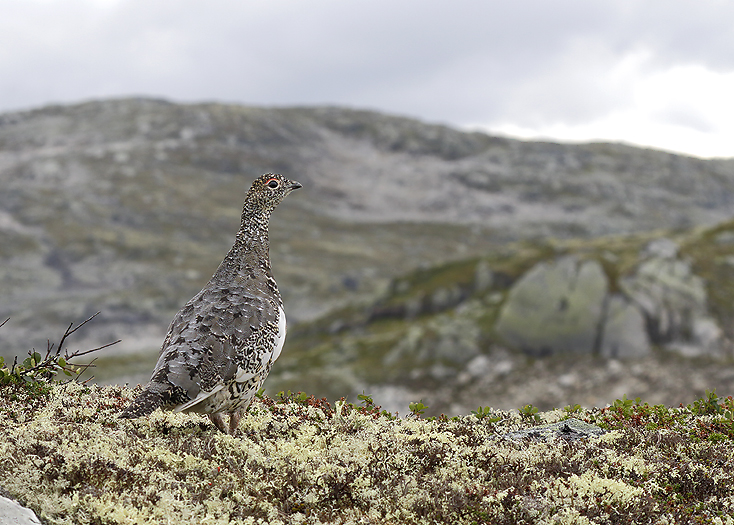
Despite low number of Lemmings on the mountain plateau this season, there were good numbers of nesting Ptarmigans (here an adult female).
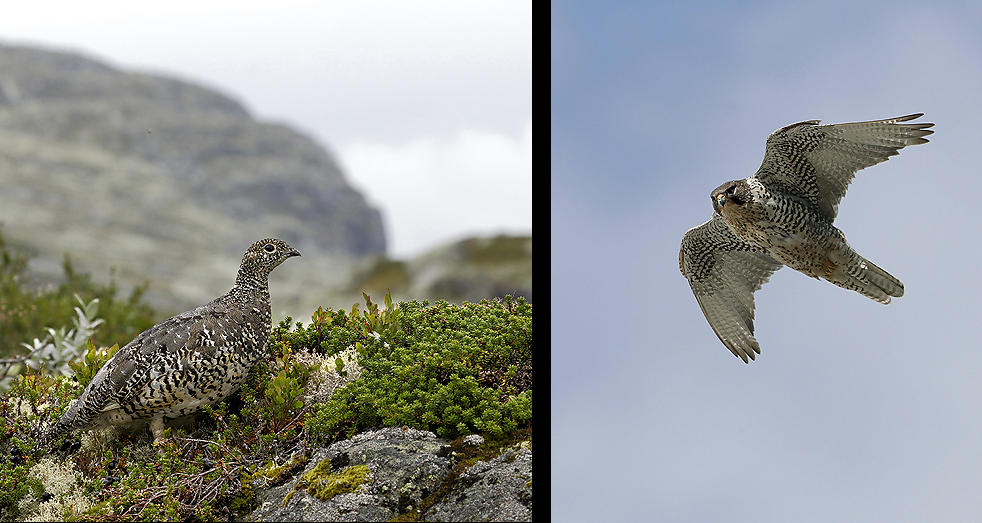
Ptarmigan are the main prey for Gyrfalcons. We see the Gyrfalcon nesting cliff behind the Ptarmigan. Even if it is in the beginning of autumn the female Gyrfalcon are often seen by the nesting site here north on the Hardangervidda Mountain Plateau (FAY).
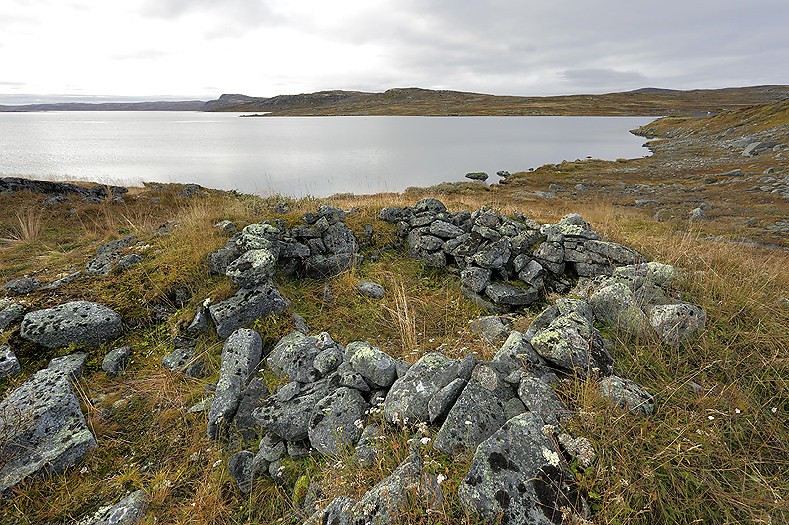
House ruin at Hardangervidda mountain plateau where the Stavanger Bishop stayed overnight when traveling to the edges of the Diocese (Hallingdal and Valdres) in the period from 1200-1600AD.
END.
________________________________________________
________________________________________________
Towards the western Canadian Arctic, June 2019, -supplementary from June-2018 (please see 3 blog posts below).
The referenced blog post from June 2018 describe an aborted trip to the westernmost island of the Canadian Arctic archipelago due to extraordinary late spring & summer with snow and ice on the land, and where the trip should be fulfilled first in a year. –So here we are again !
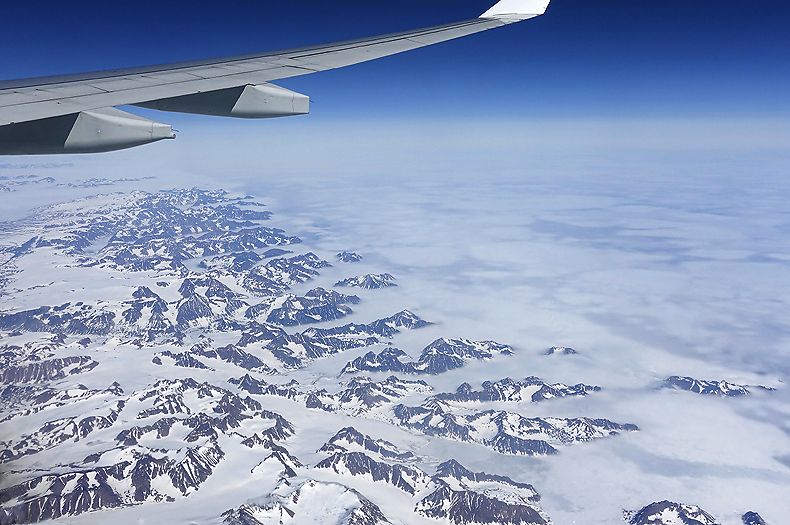
On the travel from Europe to Canada we cross Greenland. The coast of Liverpool Land north of Ittoqqortoormiit (Scoresbysund) on the east coast of Greenland has a bad reputation because numerous ships have been crushed by the drifting ice there. Around 90% of all drift ice from the North Pole basin has its outlet to the open sea via the Fram Strait east of Greenland. This make the ice concentration extremely high year around at this coast. We see Rathbone Island down to the right.
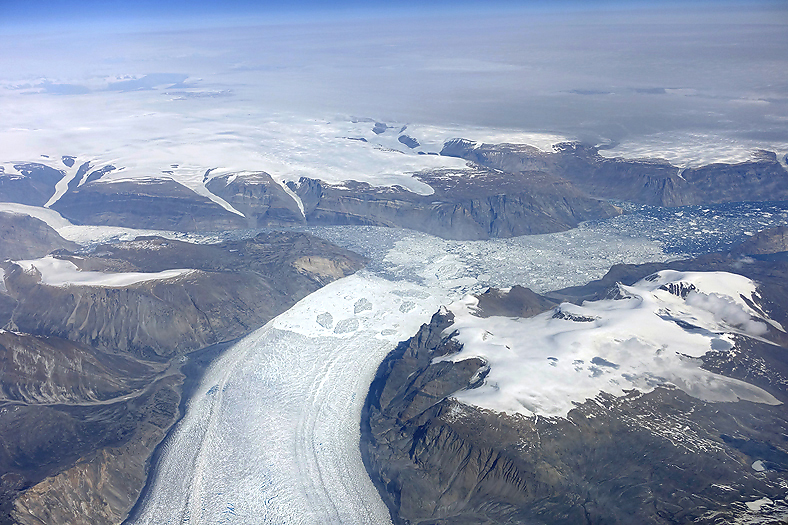
The landscape in Scoresbysund (the worlds longest and deepest fiord) is beautiful with its alpine mountains and numerous glaciers. The Daugaard Jensens Glacier in this photo end in the Nordvest Fiord which is one of the most impressive fiords in the world. Due to the huge dimensions in landscape it is hard to believe that the photo is taken from 10.000m hight.
It was decided to spend some time in the area in the North West Territories from Inuvik to Tuktoyaktuk prior to the departure further north. Below are some additional photographs to those that were taken in June 2018.
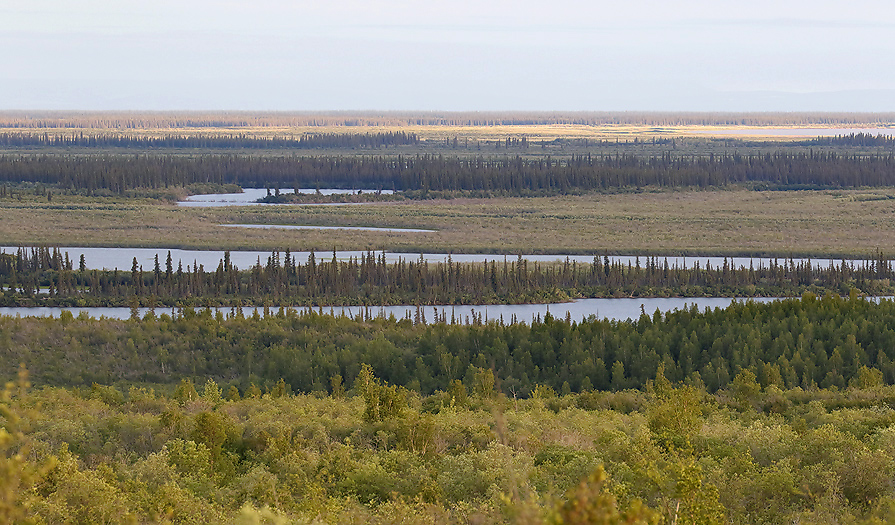
Part of the huge delta where the Mackenzie river, which originates from The Great Slave Lake, ends out in the Beauort Sea.
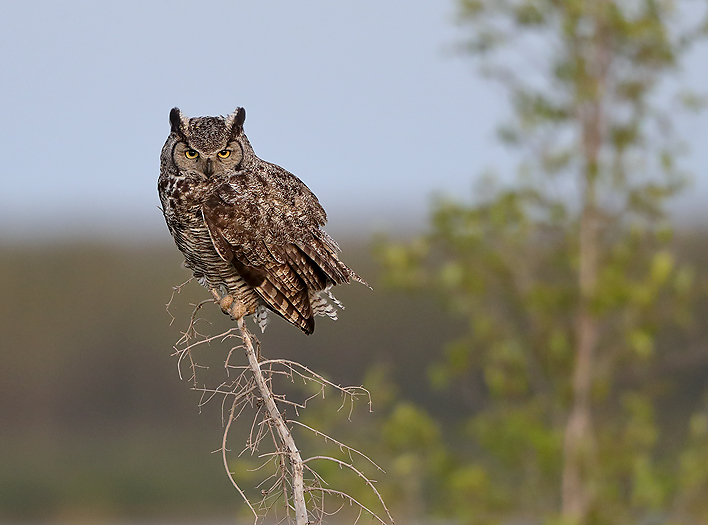
The Great-horned Owl can be found in Canada up to the very edge of the boreal forest zone between the tundra and the forest. This female Owl was located between the partially forested Mackenzie delta and the tundra of the Tuktoyaktuk Peninsula.
From the tundra zone on the Tuktoyaktuk Peninsula:
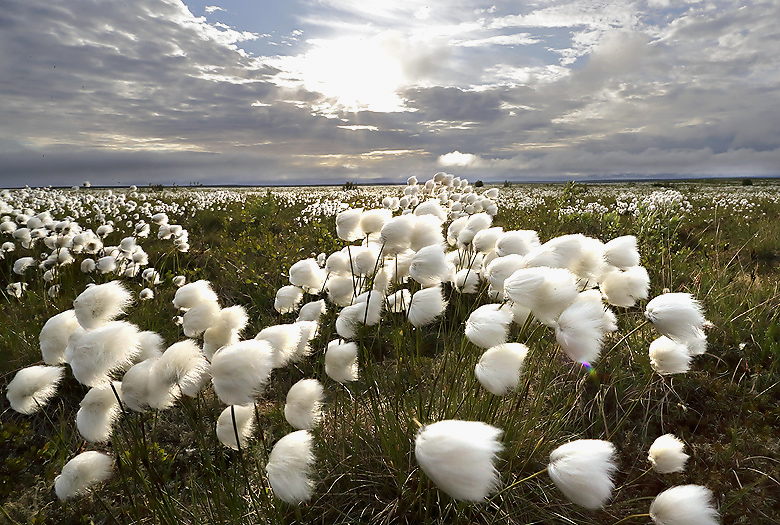
Blooming time for the Arctic Cottongrass!
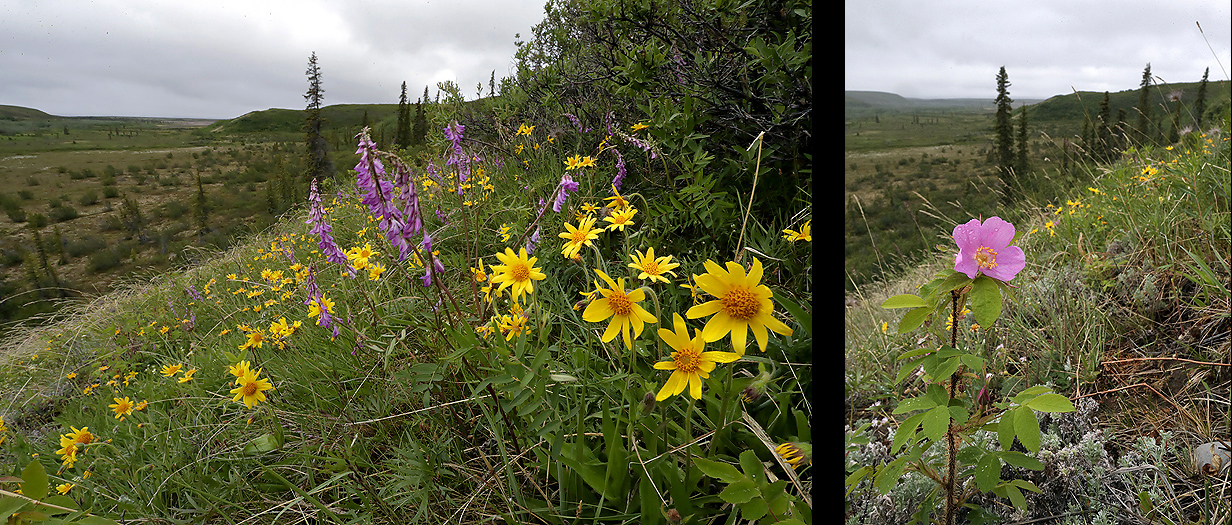
On sheltered parts of the tundra we find the Narrow-leafed Arnica (left) and Arctic Rose (right).
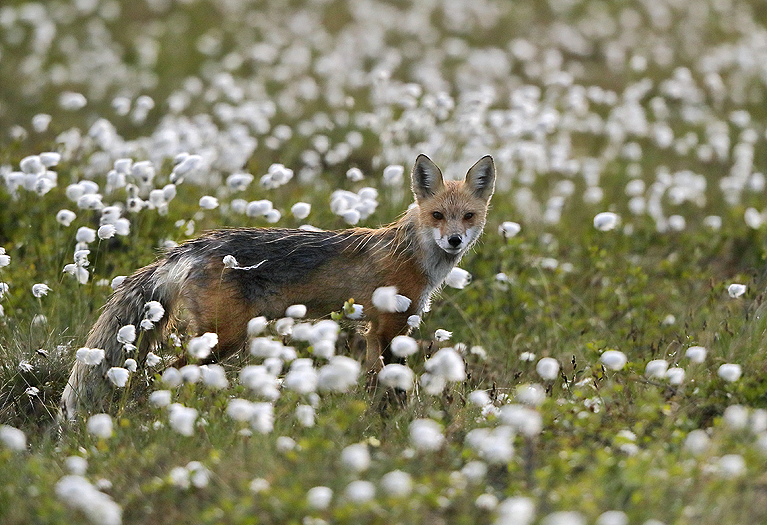
Red Fox is by far the most common fox (vs the Arctic Fox) on the tundra.
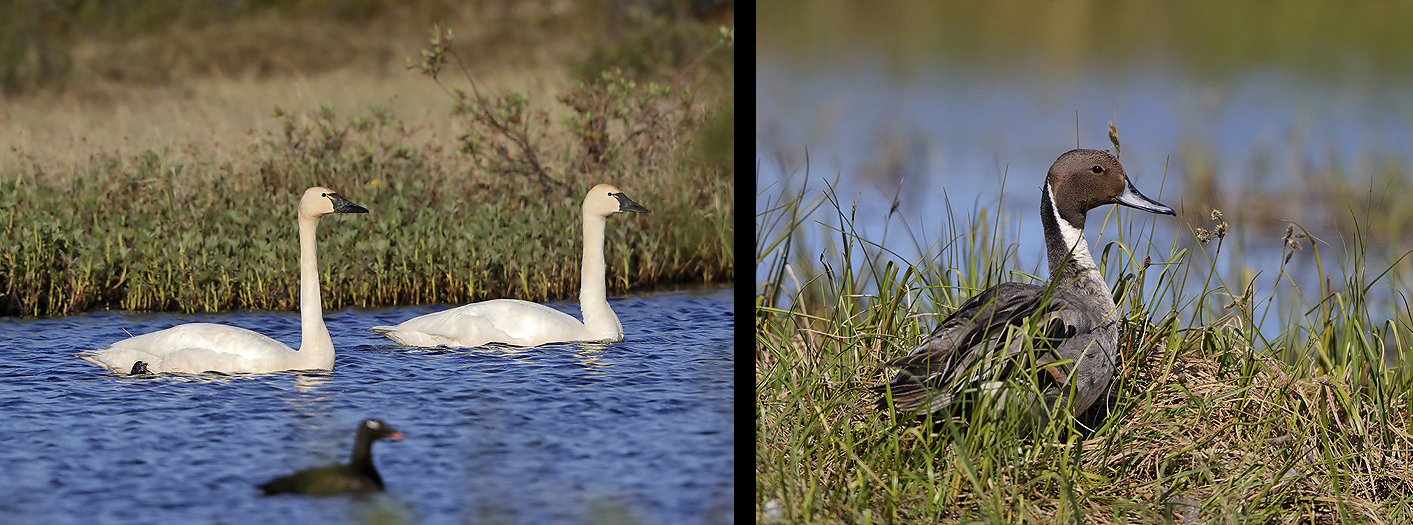
Tundra Swan couple (left) and Northern Pintail (male).
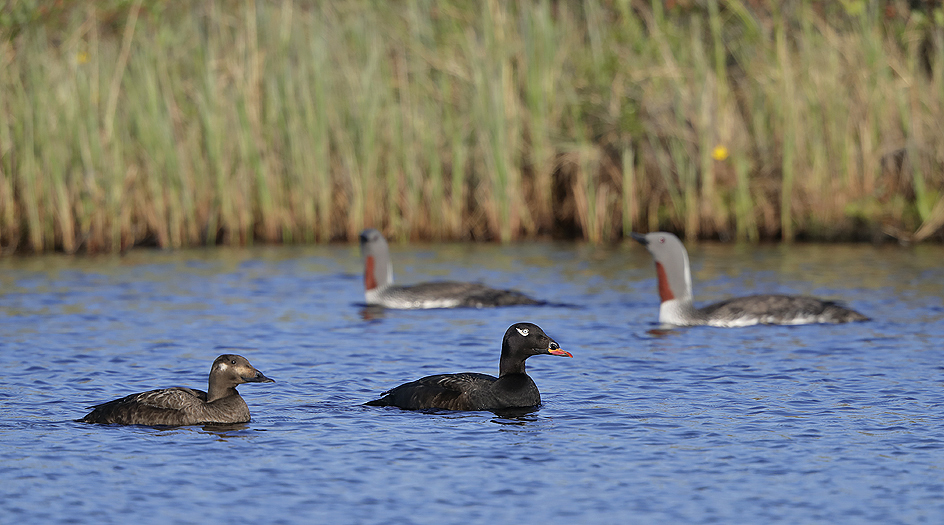
White-vinged Scoter couple, with a pair of Red-throated Loons in behind.
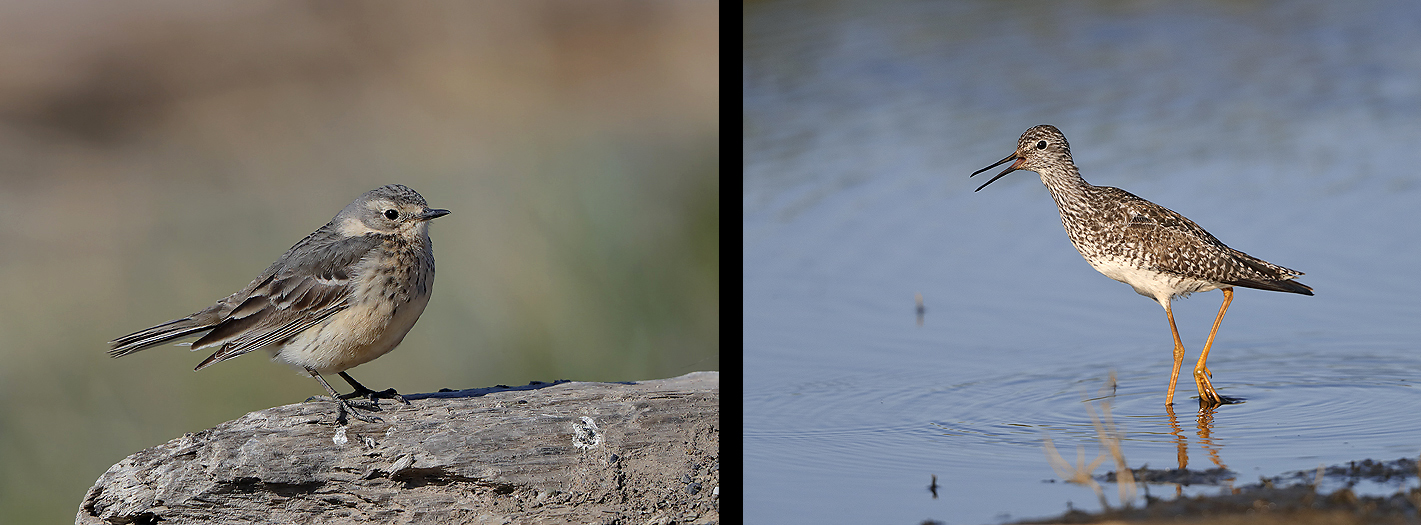
American Pipit (left) and Lesser Yellowlegs (right).
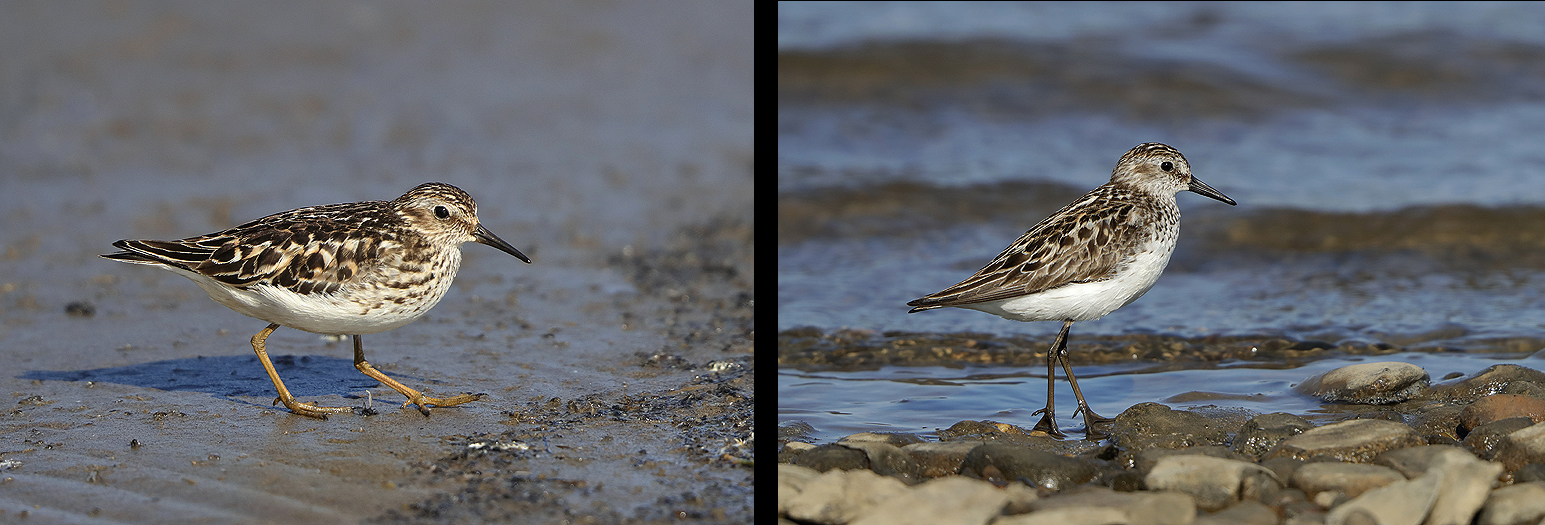
Least Sandpiper (left) and Semipalmated Sandpiper (right).
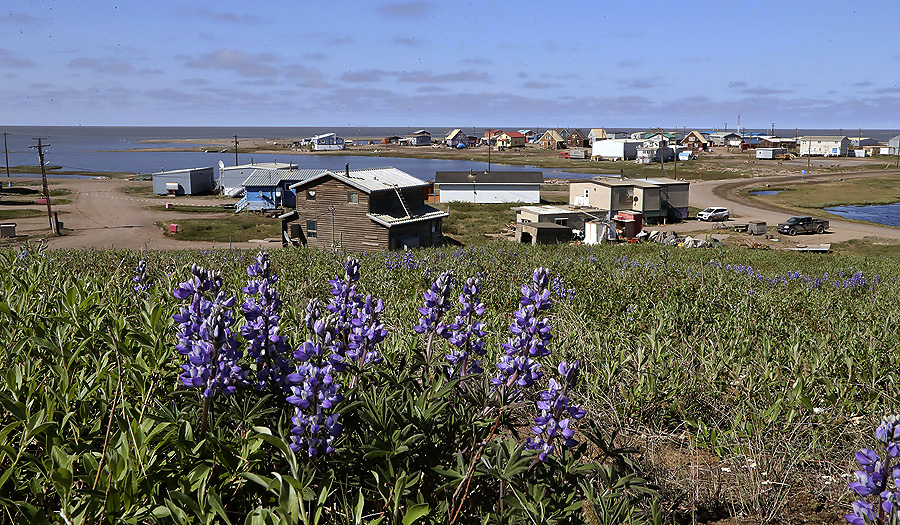
Part of Tuktoyaktuk settlement. Unlike last year at this time we see that the sea is free of ice. Lupin flowers are one of the characters here.
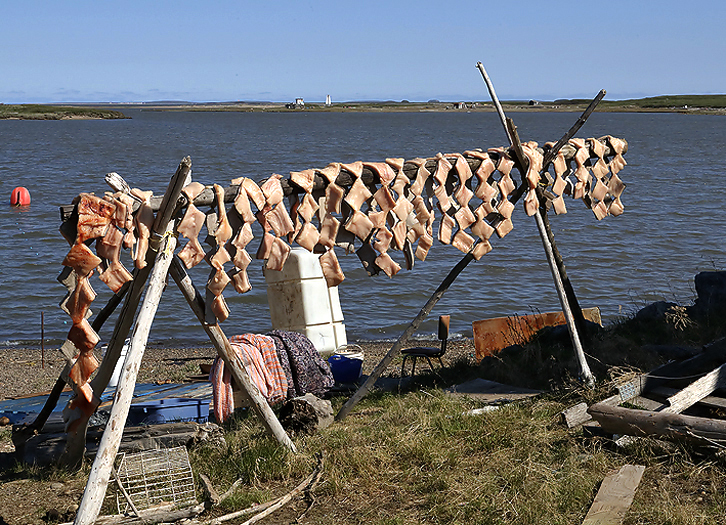
Muktuk from the Beluga Whale for drying. This whale species has in recent years become more common here.
PART 2: Banks Island, -the westernmost island in the Canadian arctic archipelago.
Banks Island is in general a polar desert where the tundra is frozen and snow-covered from September until June. Snow and freezing temperatures can however occur at any time of the year. It is such placed in the archipelago that does the island to be extremely weather exposed. The island is visited of only a handful or two humans a year except for the inuvialuits living at the Ikhuak (Sachs Harbour) settlement and people to visit there. Per today the settlement counts 115 residents. They are used to delays & cancellations of flights due to often unfavorable weather conditions.
Banks Island covers an area 70,028 km² and it is the world’s 24th biggest island and Canada’s fifth biggest island.
While parts of the Arctic have been inhabited for nearly 4000 years, the earliest archaeological sites found on Banks Island are Pre-Dorset cultural sites that date approximately 3500 years back.
It was not until 1850 that Europeans visited Banks Island. Robert McClure, commander of the HMS Investigator came to the area in search of the lost Franklin Expedition. The Investigator became trapped in the ice at Mercy Bay at the island’s northern end. After three winters, McClure and his crew – who were by that time dying of starvation – were found by searchers who had traveled by sledge over the ice from a ship of Sir Edward Belcher’s expedition. They hiked across the sea-ice of the strait to Belcher’s ships, which had entered the sound from the east. McClure and his crew returned to England in 1854 on one of Belcher’s ships. At the time they referred to the island as “Baring Island.”
From 1855 to 1890 the Mercy Bay area was visited by the Copper Inuit (Inuinnait) of Victoria Island to collect important raw material such as metal and wood from the abandoned ship. They also hunted Caribou and Muskox in the area as evidenced by the large number of food caches.
Note! Some of the photos in the report are not shown in cronological order.
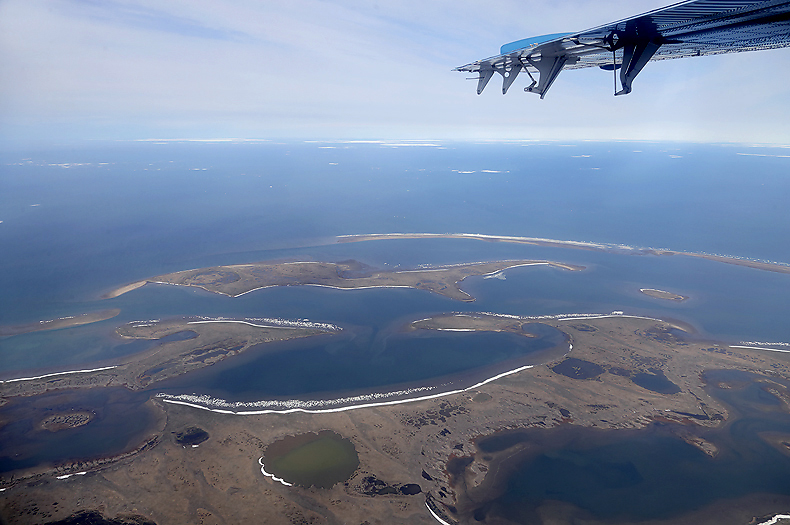
Leaving mainland via Cape Dalhousie on the northern tip of the Tuktoyaktuk Peninsula heading for Banks Island.
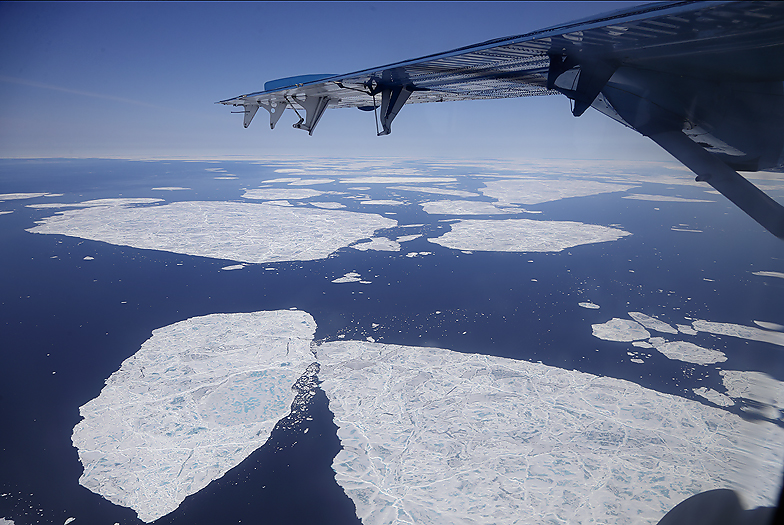
Drifting sea ice covered most of the Beaufort Sea along our route northwards.
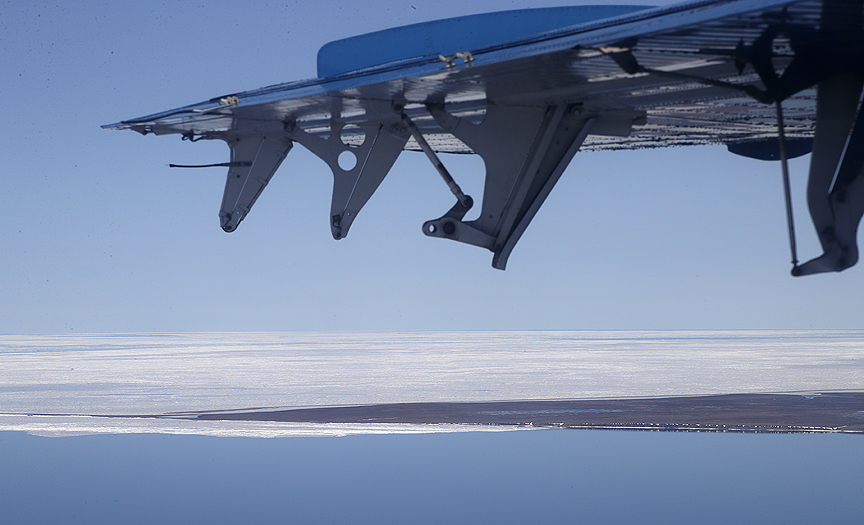
Approaching Banks Island. The winter ice still cover the sea west of the island.
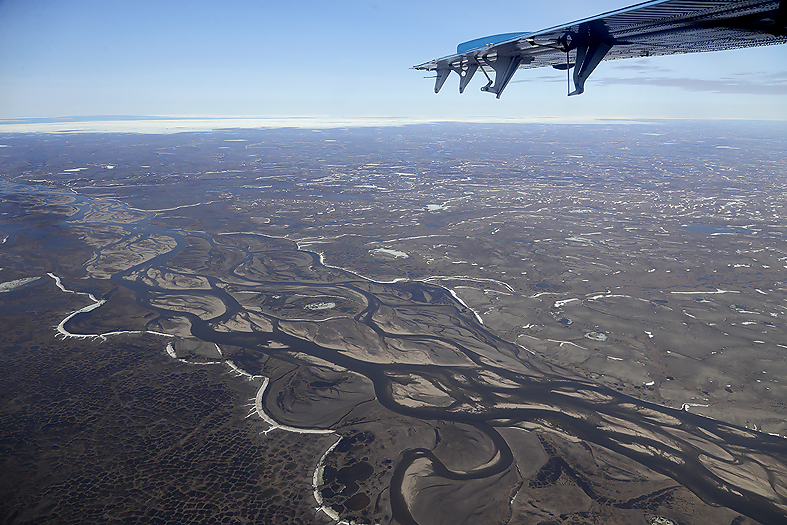
Finally at Banks Island, after a 2 hours flight from Inuvik and refueling in Sachs Harbour we continue our flight and heading northeast for the next hour. Big River below us. This is a typical meltwater river, -it is only to hope that “our” river which also is a meltwater river does not have as low water level as the Big River.
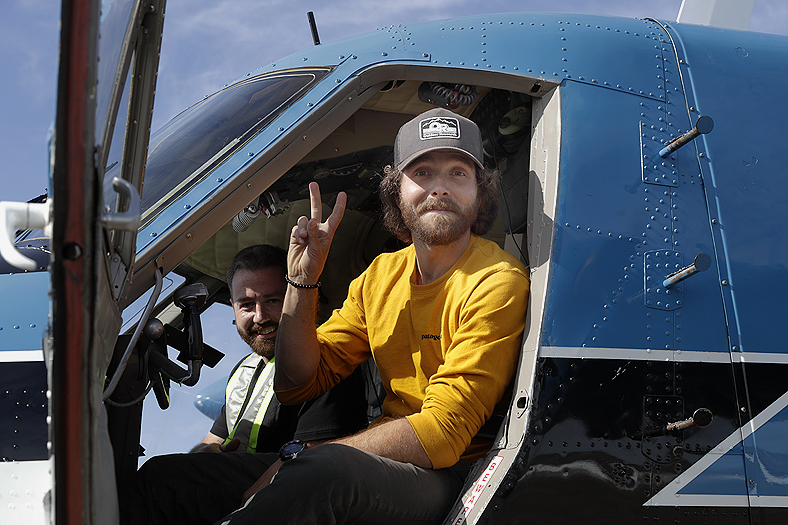
Finally on the ground in the interior of Banks Island after in total over 3 hours in the air. Pickup place after ended trip is agreed and the Twin Otter pilot says goodbye.
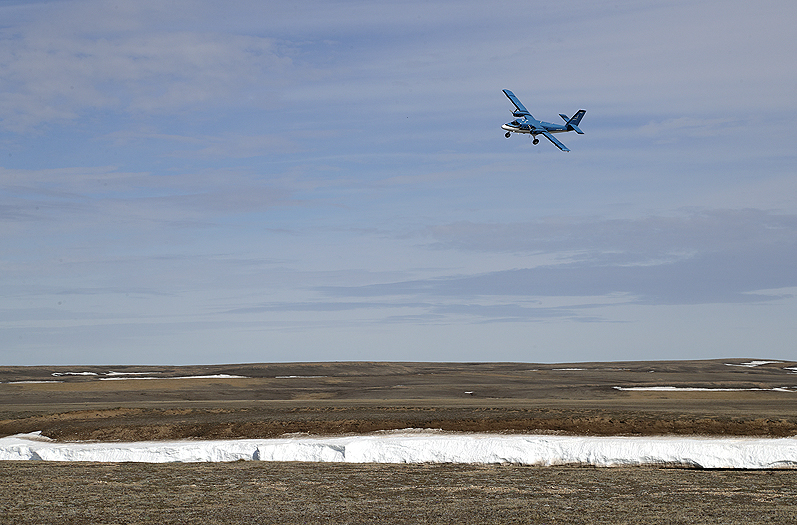
After the plane has left it is remarkable quiet. It is wonderful to be in the arctic again !
Now it is us few humans in a huge and magnificent landscape, the wildlife and our canoes that counts for the coming weeks.
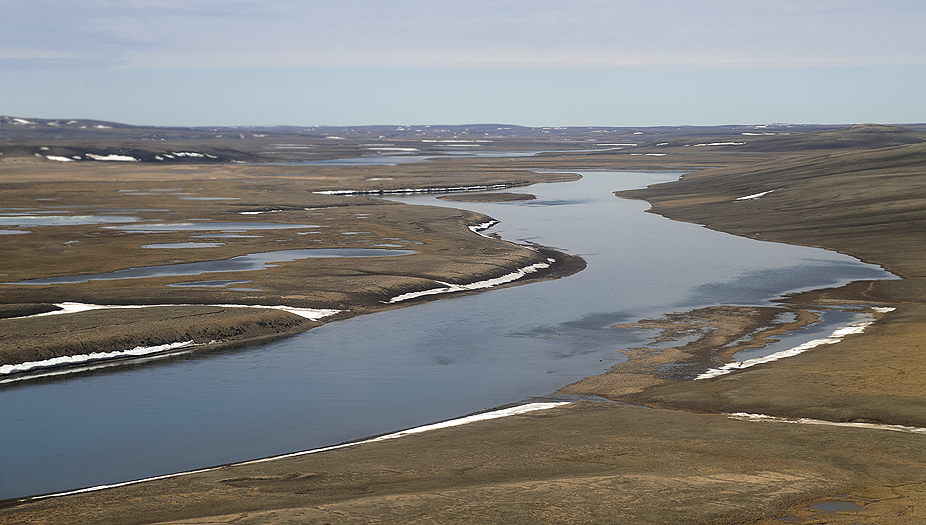
Our way of transport northwards in the Thomsen River valley, -beautiful and welcoming…! The land along the route is characterized by a broad, lush valley flanked by gently undulating hills. The eroded landscape to the northern seashore is from the Cretaceous and Devionan epochs. A big area here in this part of Banks Island was not glaciated during the last ice age. It is anticipated that this area was part of the Banksian refuge in this period.
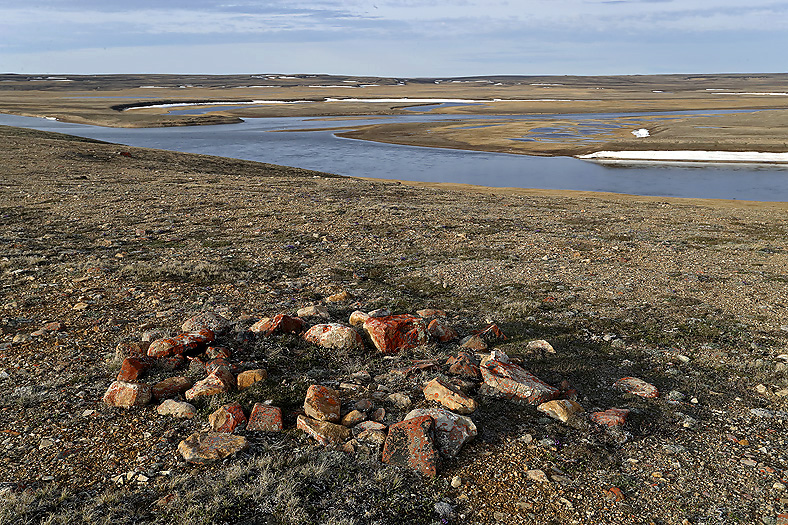
After establishing our first camp it was time for a hike in this beautiful land. The Thomsen River valley has been used by ancient inuit cultures for thousands of years. Here remnants of a cache once filled with meat. Typical placed on a hight beside the river.
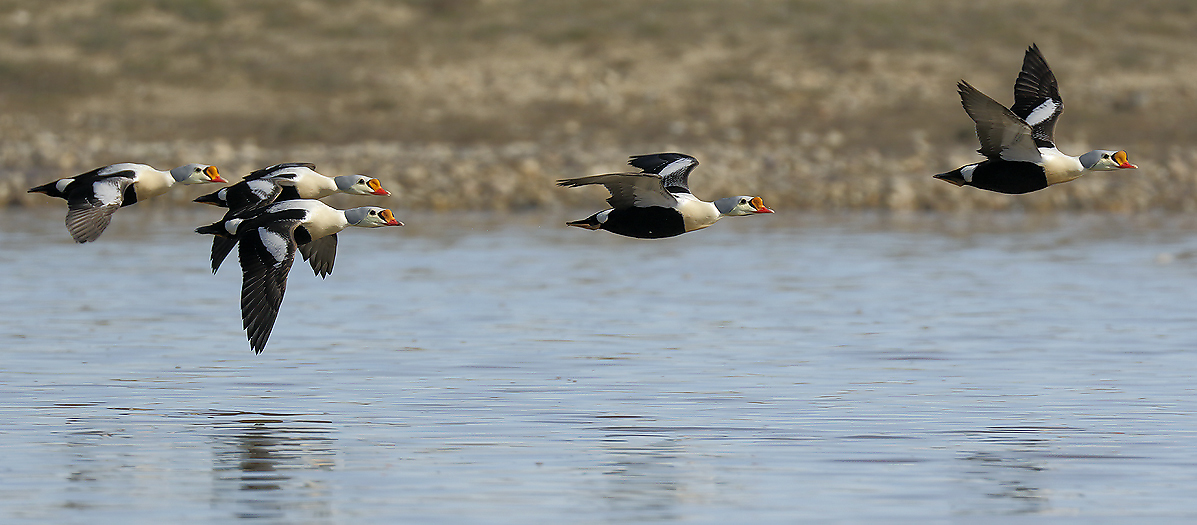
King Eider males. Many of the females are on nest at this time of the year.
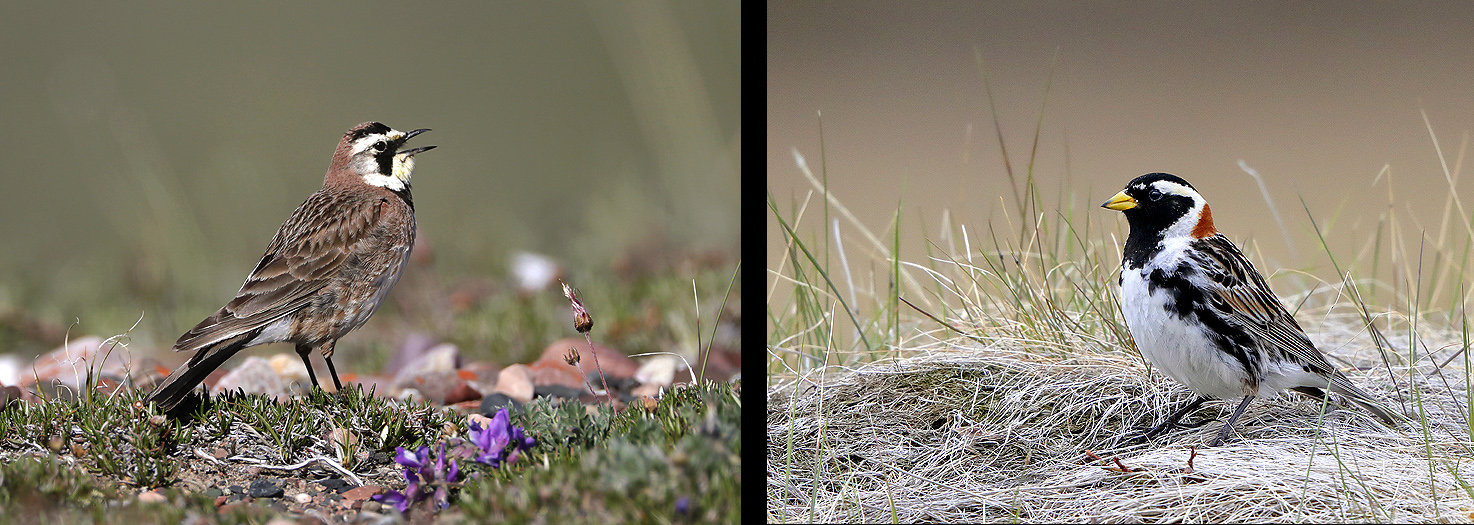
Horned Lark (left) (FAY) and Lapland Longspur (right) are character species of the smaller birds here.
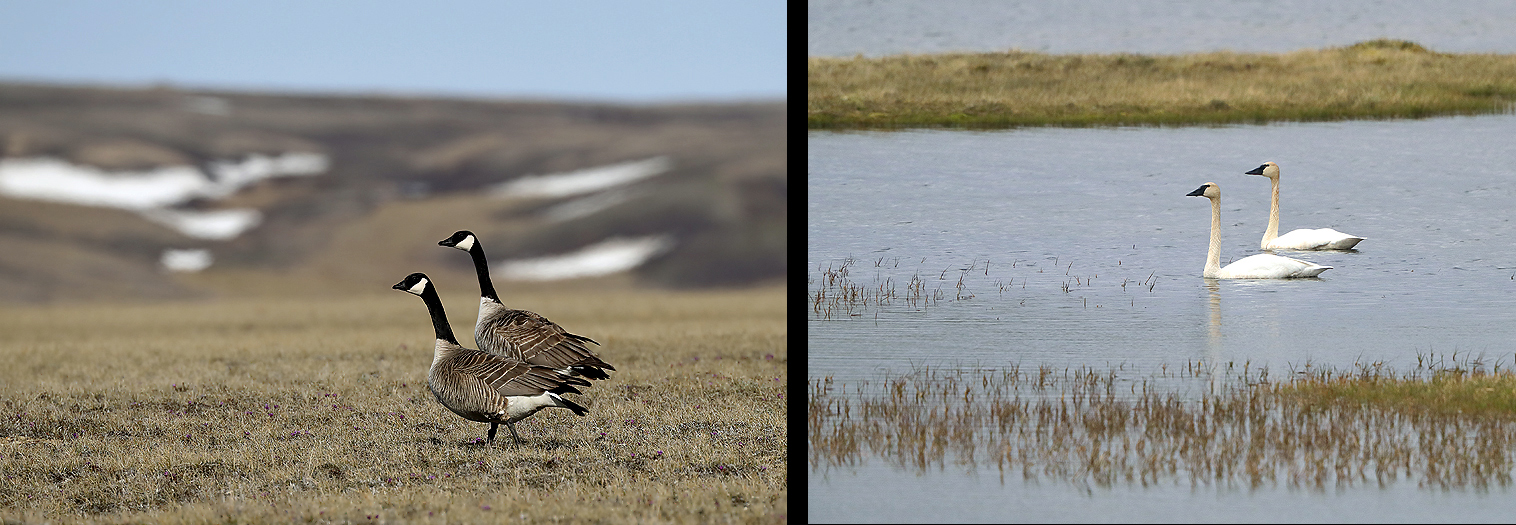
Canada Goose (left) and Tundra Swan (right) are character species of the big birds.
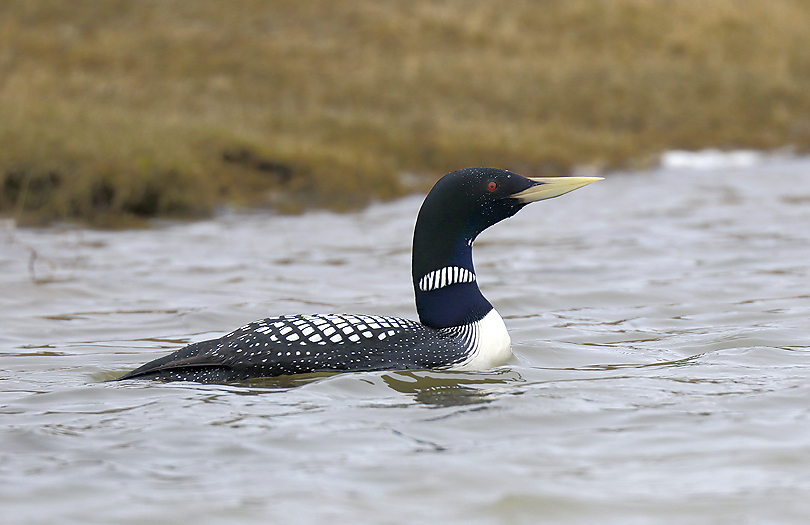
The big and exclusive Yellow-billed Loon is also rather common.
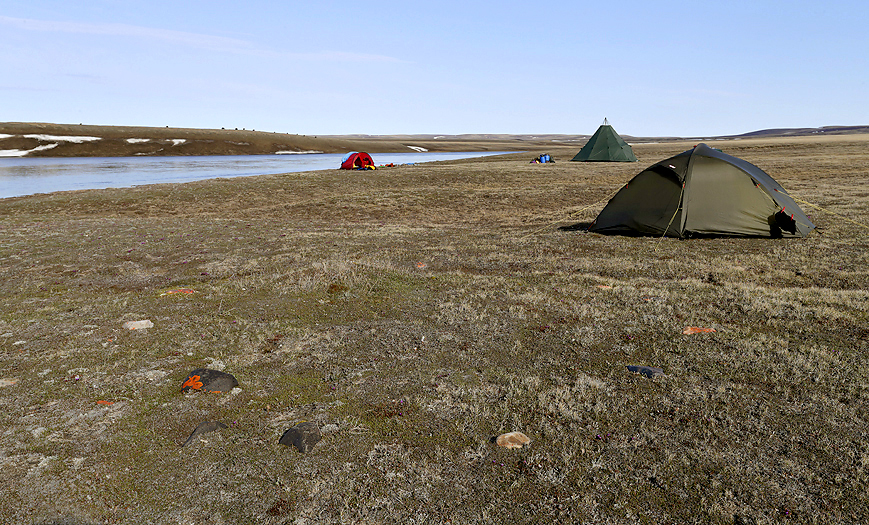
Part of camp by the Thomsen River. The weather can occasionally be rough here and it is important to use tents who can withstand continuous strong winds. Permafrost does use of tent pegs difficult some places, and self standing dome tents are recommended. Observe the Muskoxen on the hill top at the other side of the river. After setting up camp we discovered that people from the Thule Culture had done the same here between 1000 – 1500 AD (see tent ring in the foreground).
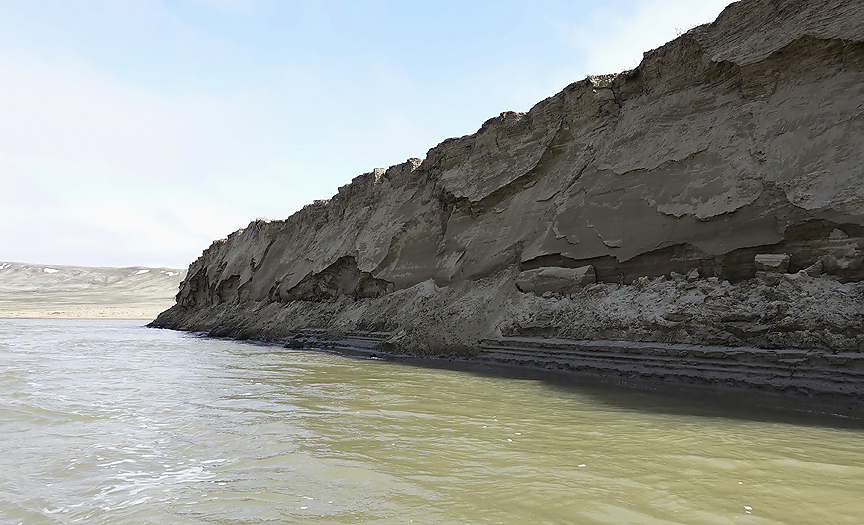
The river is silty caused by constant land erosion during the thaw up in the brief summer. Now and then we observe that small parts of the land slides into the river. It has happened that parts of Pleistocene animals (Woolly Mammoths etc) become exposed.
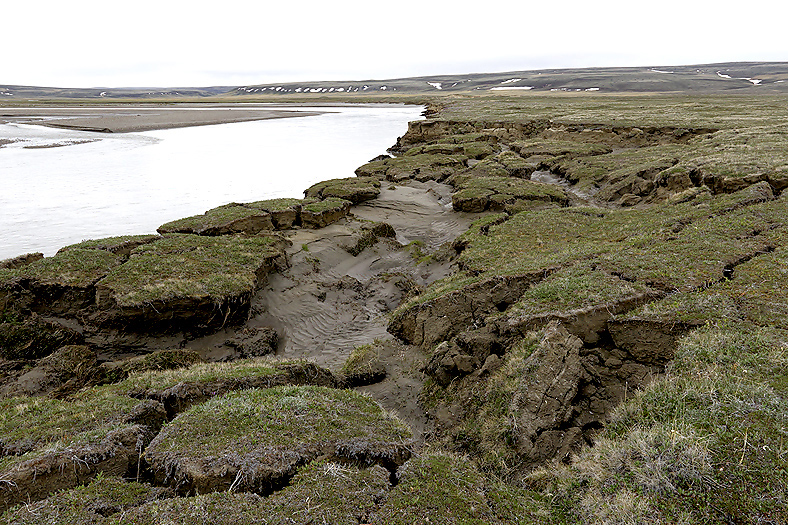
Total collapse of big part of land along the Muskox River (probably caused by thawing of permafrost).
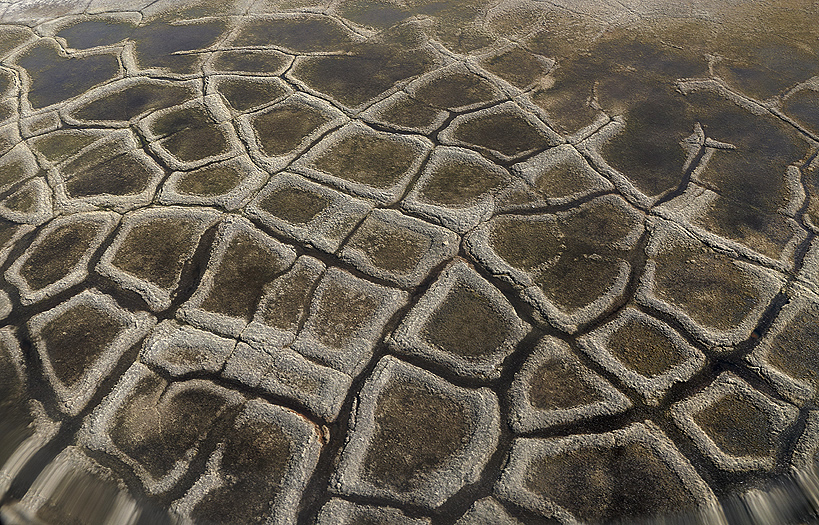
Pattern ground caused by permafrost (ice wedge polygons). Aerial photo.
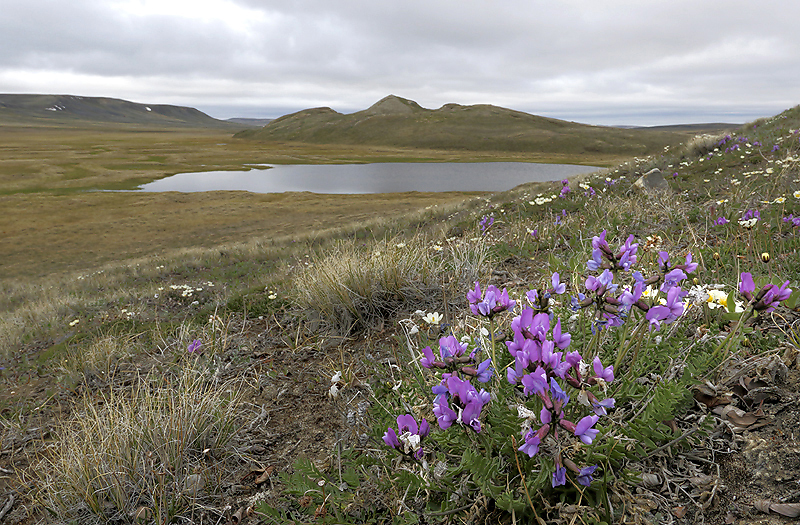
Arctic Locoweed. Note the pingo in the background.
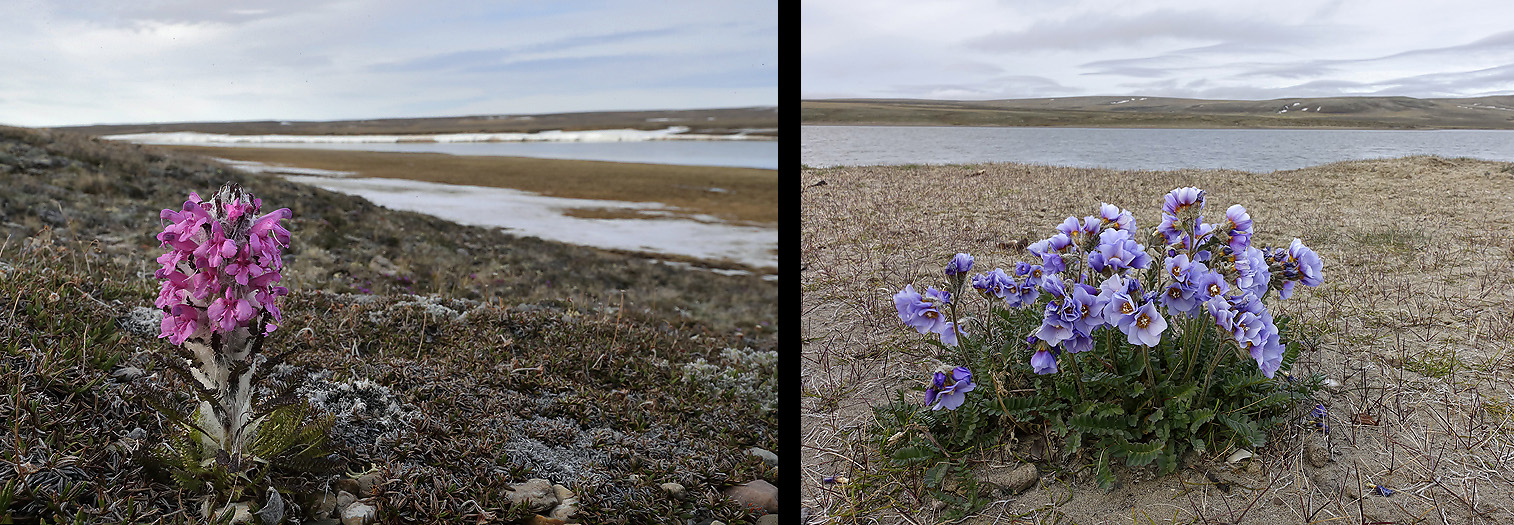
Woolly Louseworth (left) and Northern Jacob`s Ladder (right).

Alpine Draba (left) and Arctic Locoweed (right).
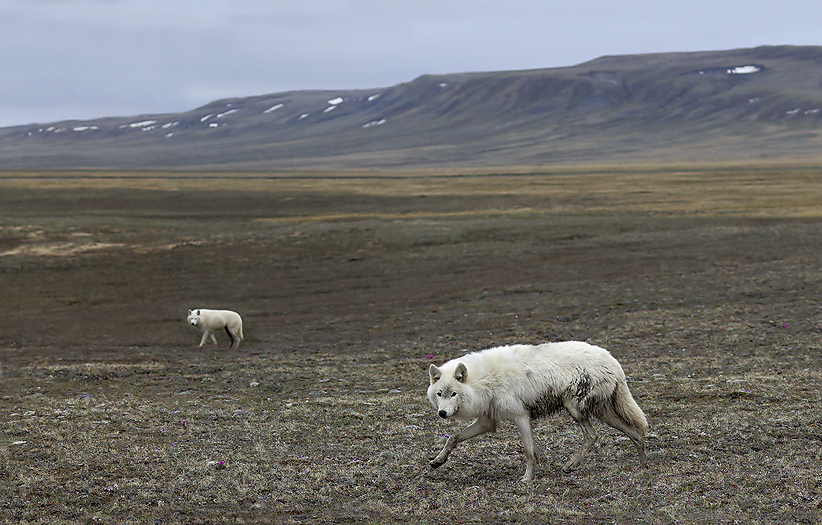
The Alpha Couple with the male in the foreground.
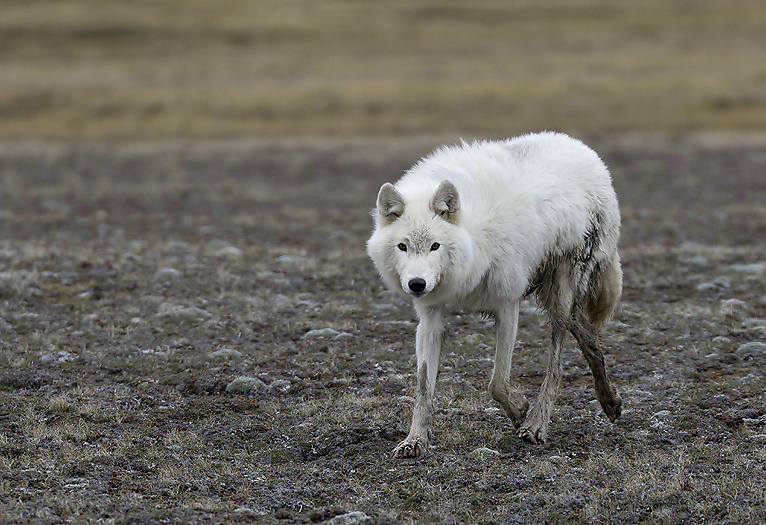
Curious adult male Arctic Wolf coming to check out the intruders to their territory. For more Arctic Wolf images, -please see the Wolf gallery.
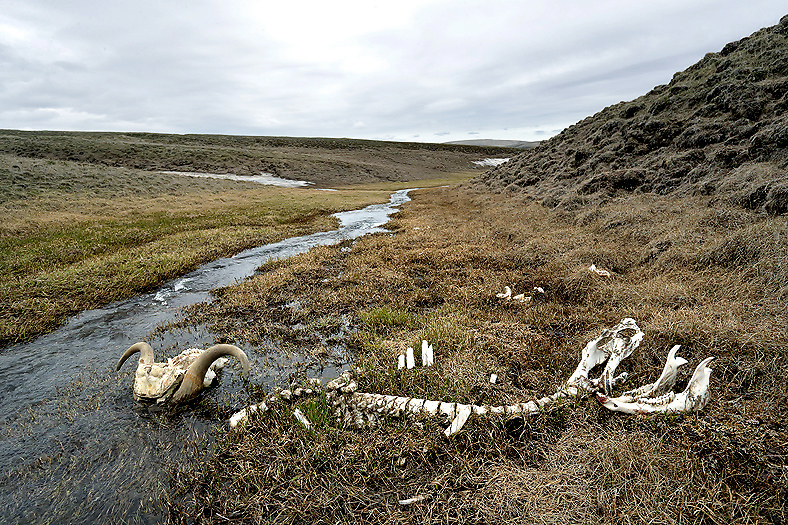
Typical for Wolf killed Muskox (as this) is that the rib bones have been chewed off close to the Spine.
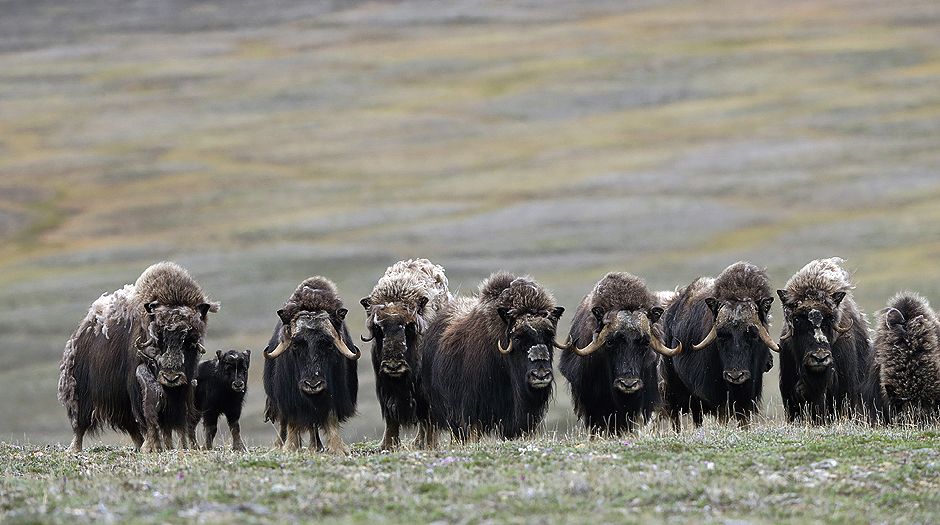
Muskoxen are the main prey for the Wolves. It is typical for Wolf inhabited areas that the Muskoxen form either a line of animals close by each other, or a circle with the calves inside when the threats come from different angles (i.e. a pack of Wolves).
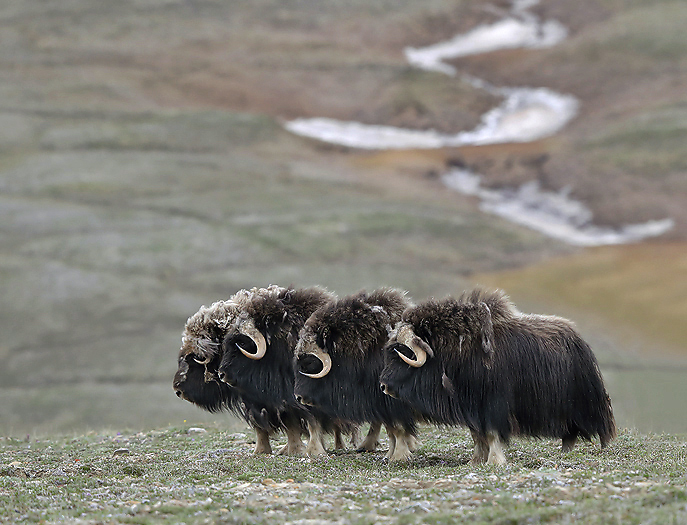
No Muskoxen was seen on Banks Island in the 18th century until 1952 when a Canadian biologist observed one animal at the north coast of the island. The population increased with a near unbelievable speed and counts per today around 50.000 animals here, which is about 2/3 of the global population. For more new Muskox images, -please see the Muskox gallery.
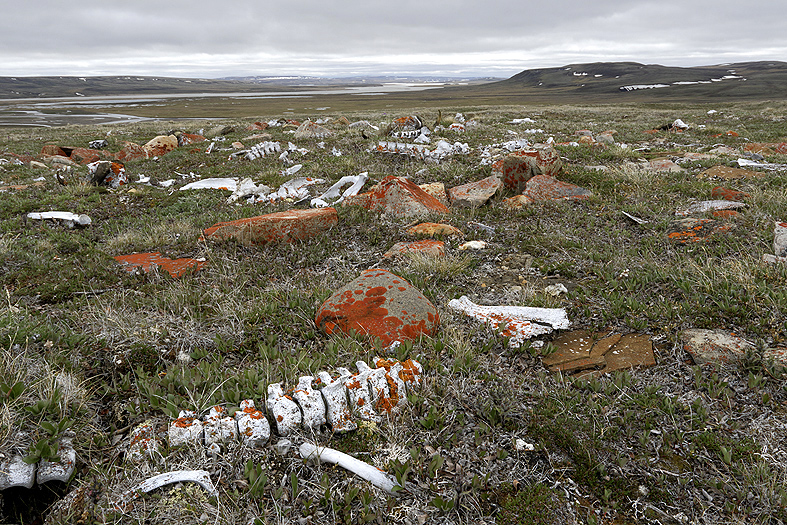
Naquk kill-site (also called Head Hill) is a very special place. It was used by the Inuinnait (Copper Inuits) from 1600 – 1900 AD. Around 500 Muskoxen and some Caribou were killed there in this period. There are many tent rings, meat cache, drying arrangements for meat etc on that specific hill.
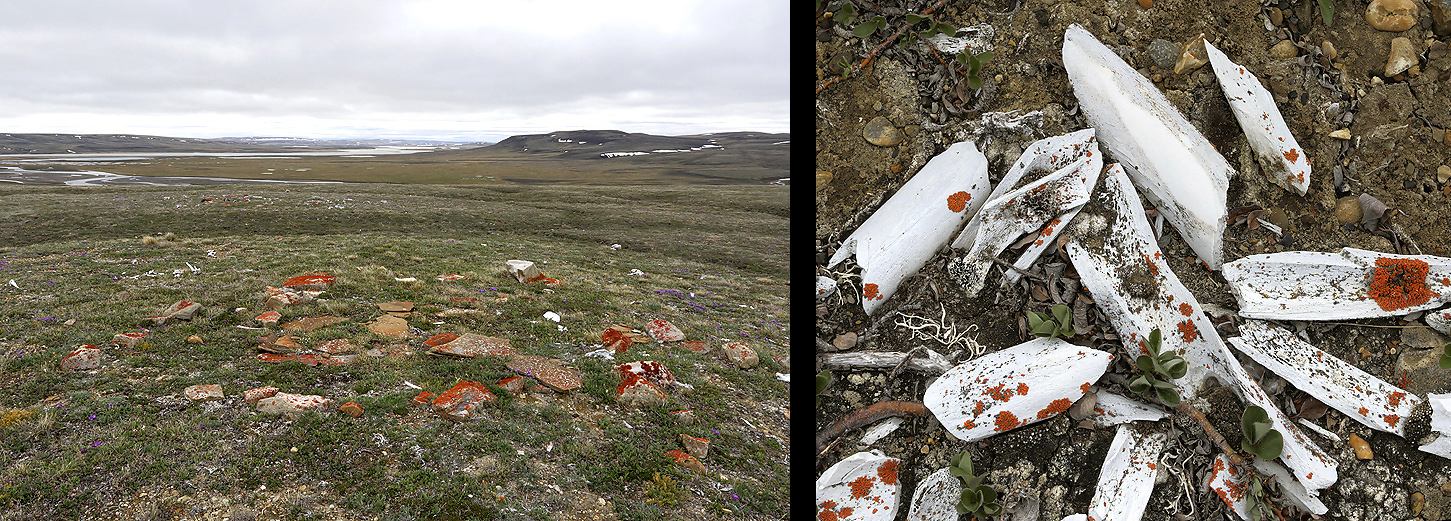
Tent ring at the Naquk kill-site, -note the stone pavement inside, which is for food preparation and is typical on Inuinnait tent rings on Banks Island (left photo). Just beside there was a cluster of man-splitted bones, -which was done to get hold of the marrow (either for eating or used in a lamp), (right photo).
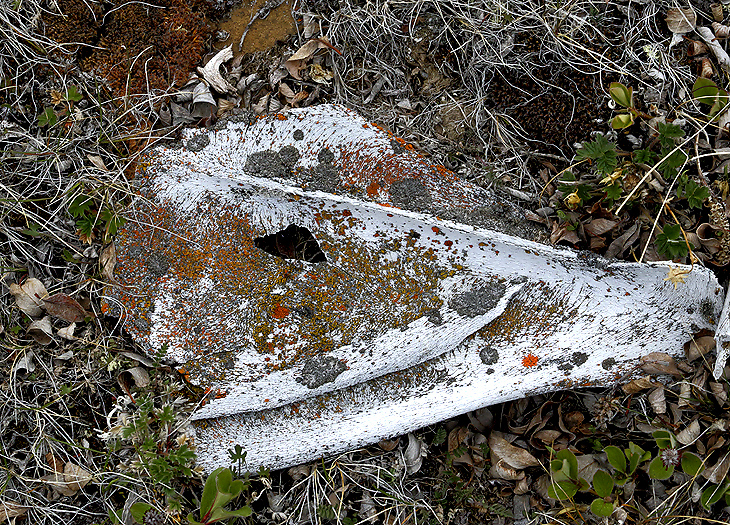
The Inuinnaits led the Muskoxen up to the hilltops where they, as usual, turned and went into a defensive position. The inuit dogs kept them at the place. The hunters shot them with arrows fitted with copper and iron heads. The arrow shafts were carefully selected willow sticks and tied together with sinews. Today (see photo) we find the little arrow hole in shoulder blade after shoulder blade, at an angle showing that the arrow went straight to the heart. The inuits had accurate knowledge of the animal’s anatomy.
The Muskoxen was cut up where they was killed and camp was set up (see tent rings).
From such camps it is assumed that small groups of inuits went back and forth to HMS Investigator in Mercy Bay to collected iron (see photo further down in this post) and wood from the ship stranded in 1851 and abandoned in 1853. This same camps was used year after year, and Muskox skeletons piled up by the camp. Some scientists says this was the reason for the collapse of the Muskox population.
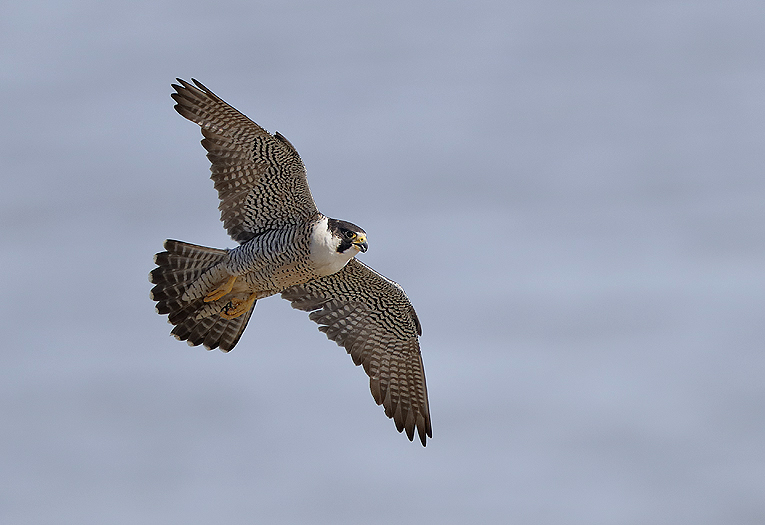
There were several nesting places of Peregrine Falcon of the American sub species “Tundrius” in the river valley. This arctic sub species show typically a very light breasted male.
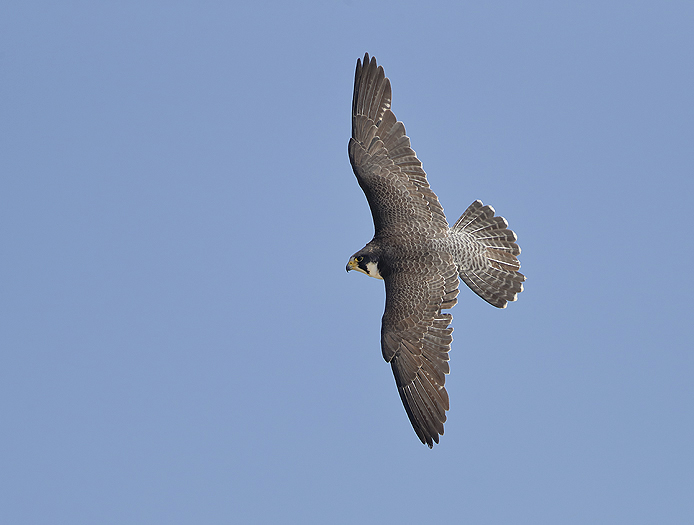
The Peregrine Falcon is considered to be the fastest bird in the world. For more Peregrine Falcon images, -please see the Peregrine Falcon gallery.
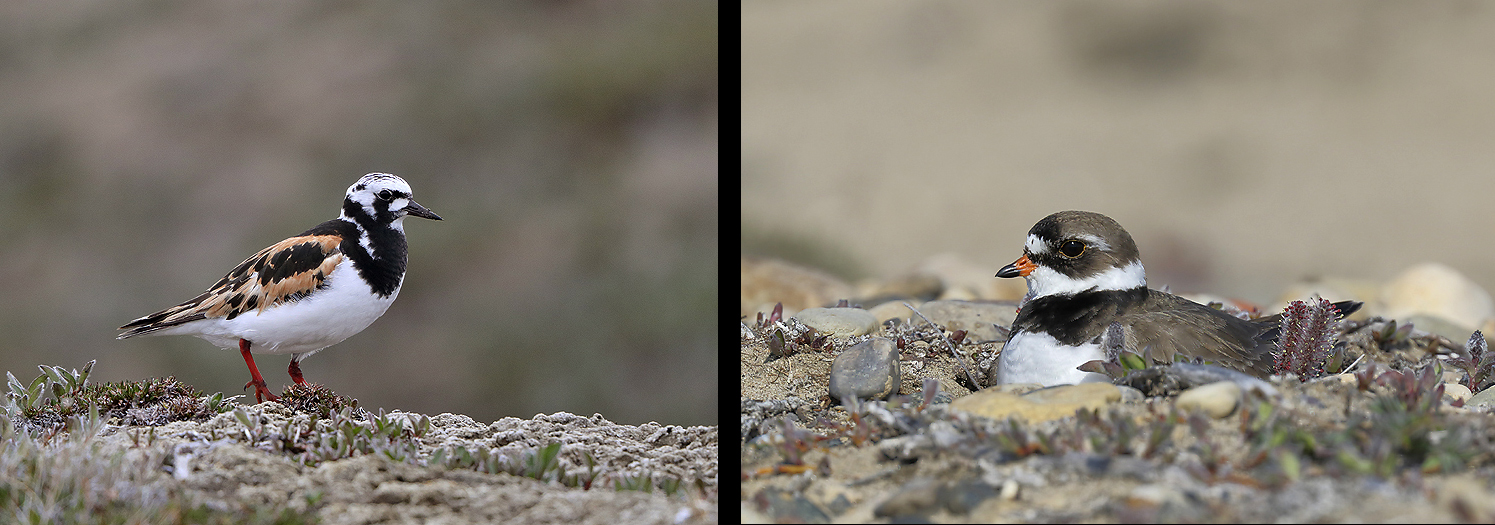
The amount and different species of wading birds was relative sparse.
Ruddy Turnstone (sub species “Morinella”) to the left, and nesting Semipalmated Plover (right).
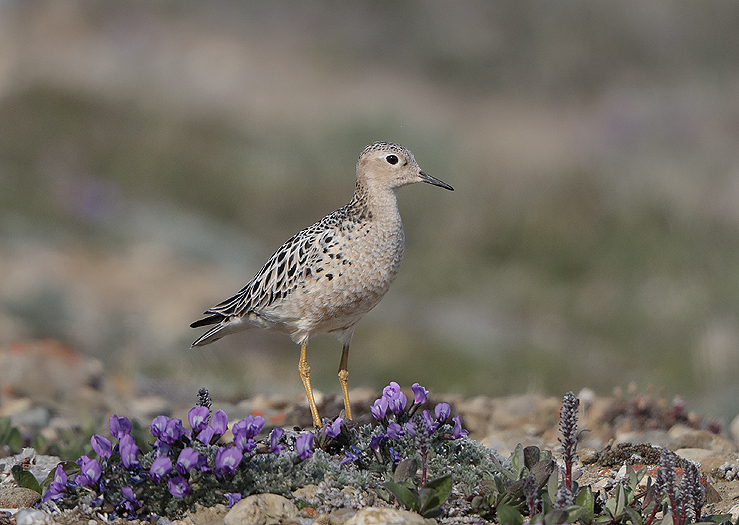
The Buff-breasted Sandpiper is a special species, they have i.e. lekking behavior as the Ruff. The population has been severe reduced where loss and degradation of its spesialized grassland habitat, both on its wintering grounds in South America and along its migration routes, are believed to pose significant threats.
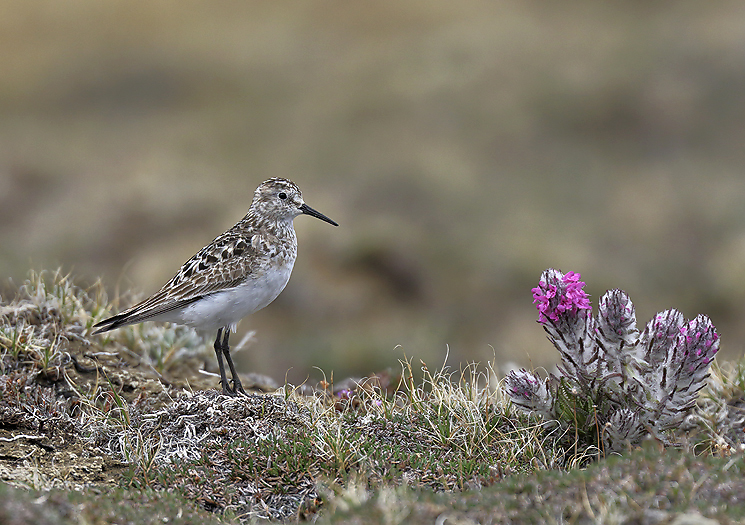
Baird`s Sandpiper at nesting place. For more New images of Waders, -please see the Waders gallery.
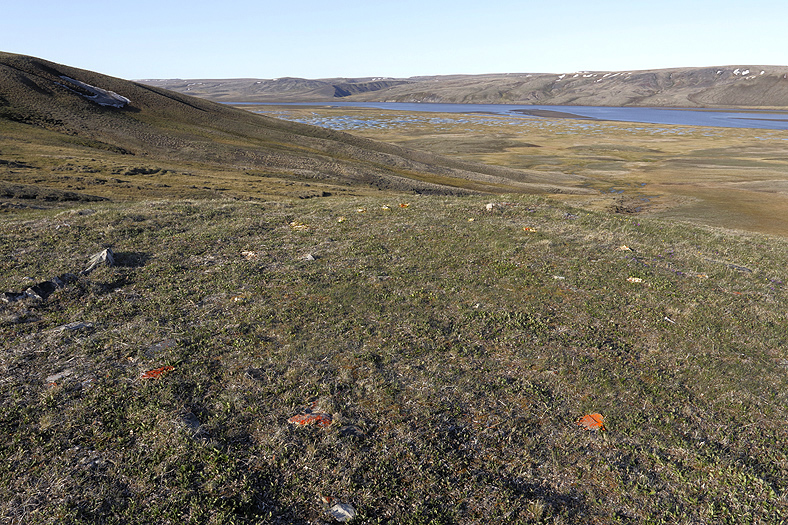
As mentioned earlier in this post this river valley has been used by ancient inuit cultures for thousands of years. This caused by the fertile areas with plenty of game along the river valley. It is not known which animals that was the main food source for the people at the oldest inhabited period (Pre-Dorset), but for the latter cultures (Thule and the Copper Inuits) it has definitely been the Muskoxen who attracted them to this place.
On the photo we can see the remains of a tent ring from the Pre-Dorset people who came to this island around 3500 years ago (the tent ring stones have been deliberately highlighted in the photo).
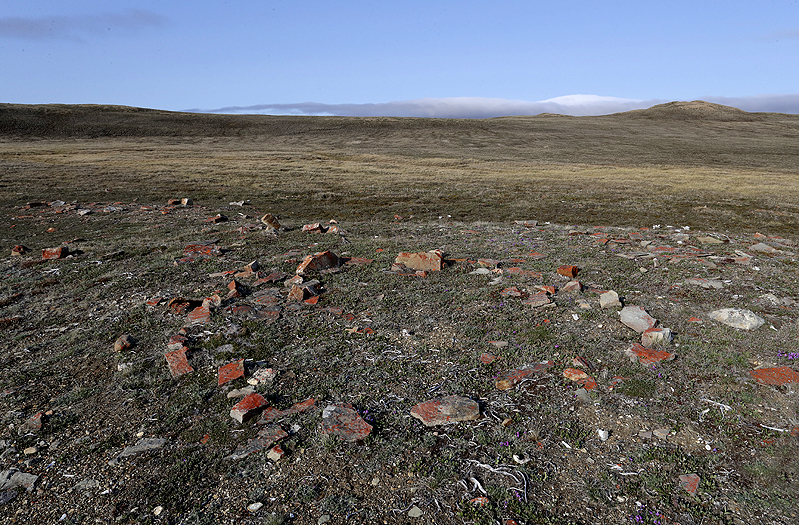
From a more ordinary archeological site than the kill-siste at Naquk
Copper inuit tent ring, typical on an elevated hight above the Thomsen River.
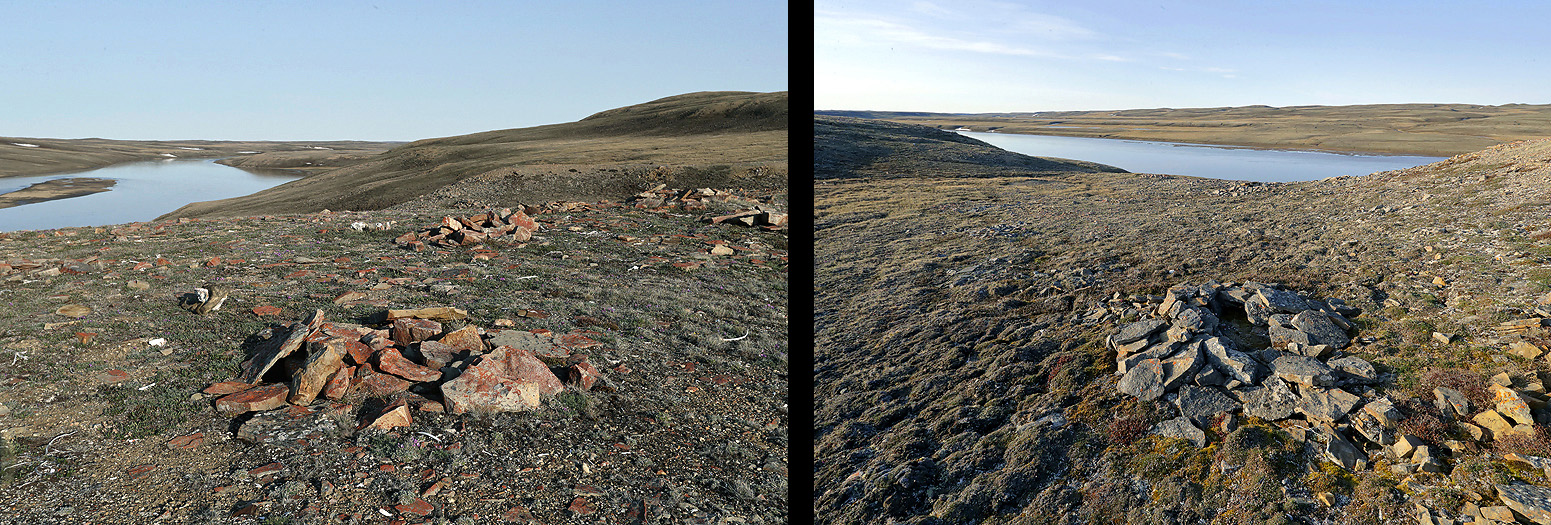
Meat caches (left) and stone Fox trap (right). All dating back to Copper inuit periode from 1600 – 1900 AD.
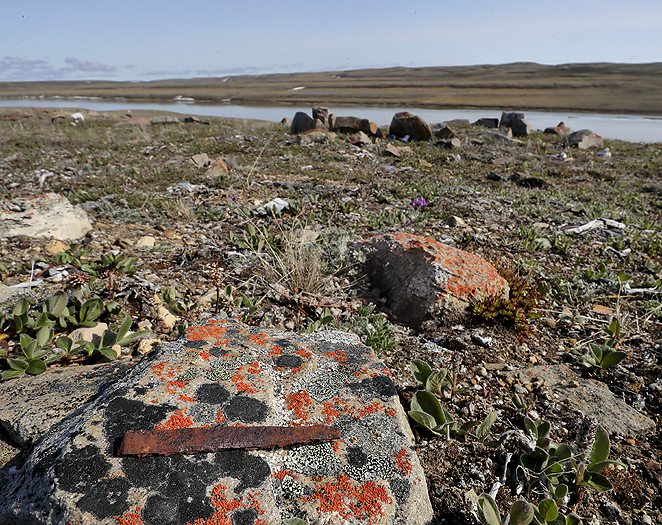
A piece of iron that once probably was collected by the Copper inuits from the HMS Investigator in Mercy Bay after it was abandoned there in 1853 (look closely on the top of the rock in the foreground of the photo). For more new images of Archaeological sites, -please see the Archaeological sites gallery.
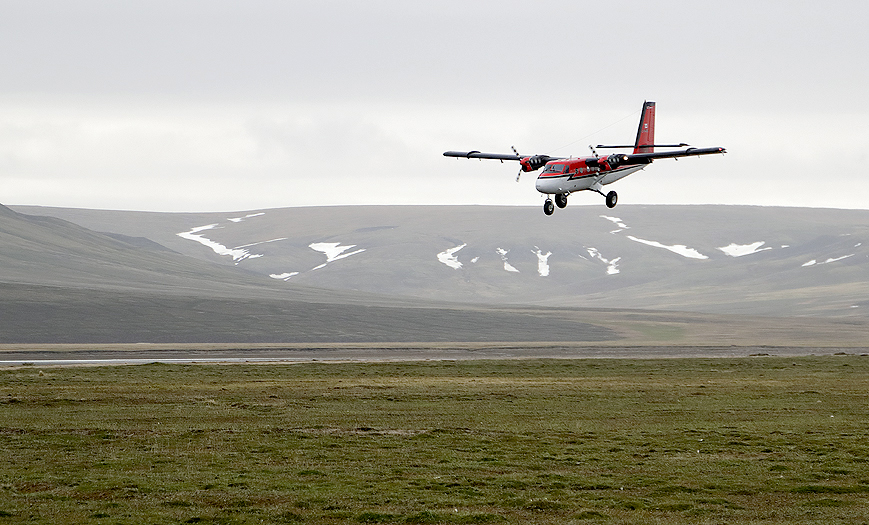
We deliberately ended the trip 12 km before the seashore at McClure Strait. This to avoid unwanted confrontations with Polar Bear.
And just as planned, -the Twin Otter picked us up for transport back to the mainland.
END.
________________________________________________
________________________________________________
A little white chap in a big grey landscape. Southern Norway, February 2019.
The Ermine is classified to belong in the mustelidae family. Typical for many mustelids is having a long tube-shaped body, short legs, and a strong, thick neck with a small head. The advantage of this shape is that the ermine is one of the few species able to follow burrowing animals into their own homes.
This winter has been one of the mildest ever in southern Norway. Animals who have changed to white winter fur in the lowlands suffer of the lack of camouflage in a snow-free landscape, -like the adult Ermine male in the photo series below.
In general, the Ermine does not change to white color all over the habitat range. In colder climates the winter coat is white, except for the black tail tip. In moderately cold climates the fur becomes only partly white, and further south they do not change color at all.
Historically, the white winter-taken pelts, prized for fineness and pure color, where once among the most valuable of commercial furs and where obtained mainly in northern Eurasia. During the reign of Edward III (1327–77) of England, the wearing of ermine was restricted to members of the royal family.
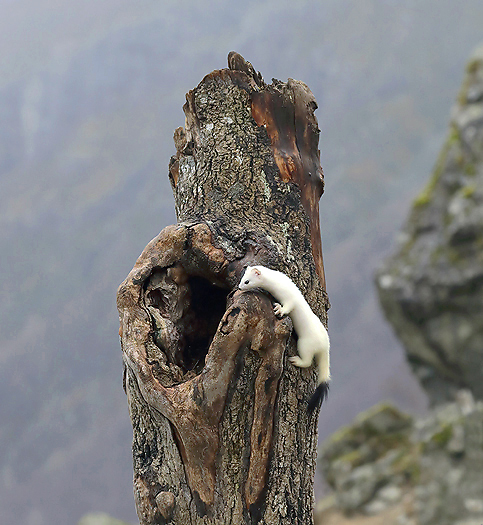
The Ermine inspects the remnants of an old tree in search of food. These animals are very quick & energetic and are “everywhere” in search of something to eat. Their fast metabolism leads to near continuous search of something edible.
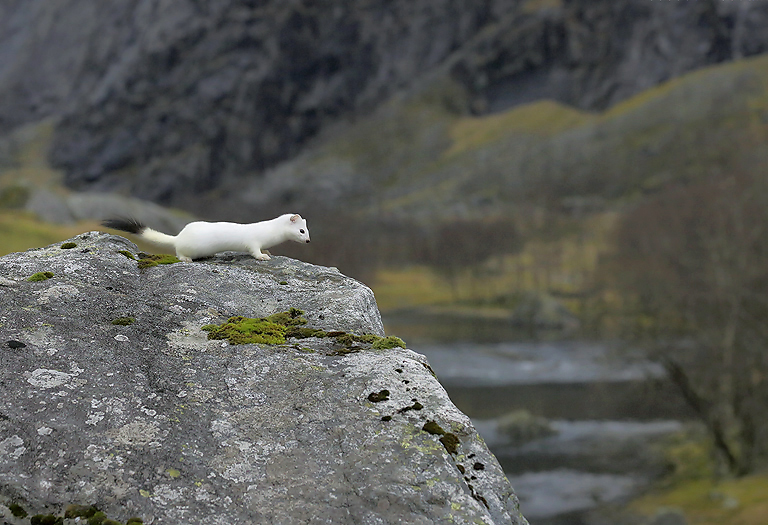
Ermines normally feed on rodents in the winter time, but if their territory include areas with fish-bearing rivers their diet can include fish. This specific river is rich of salmon and trout and the Ermine is here probably scanning the river for this (mostly for any dead once along the shores).
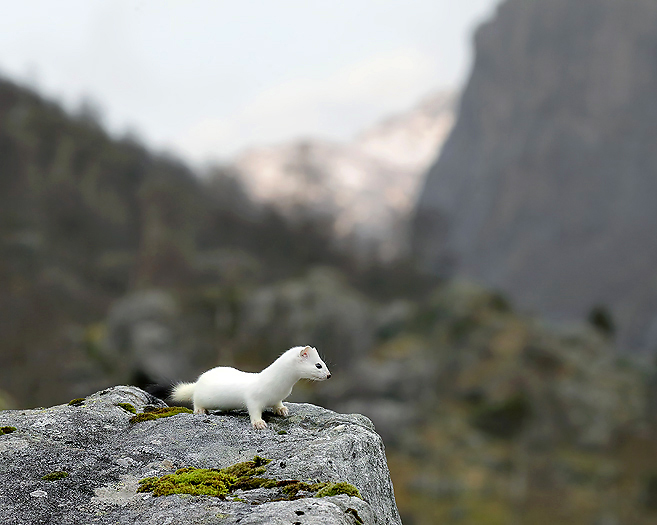
There are snow in the mountains behind (900m above sea level), but it is still some 6-7 deg.C away before the white blanket can cover the landscape down here in this mountain valley.
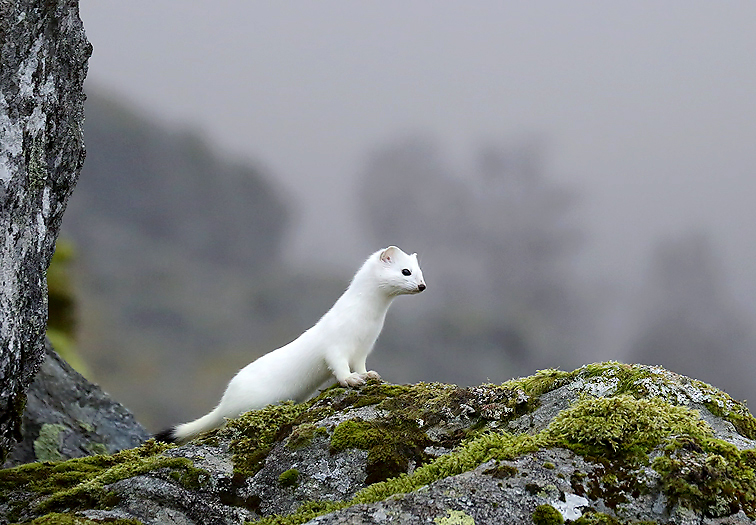
Adult male Ermine. The adult males can be at least twice as big as the females. For more Ermine images, please see the Ermine gallery.
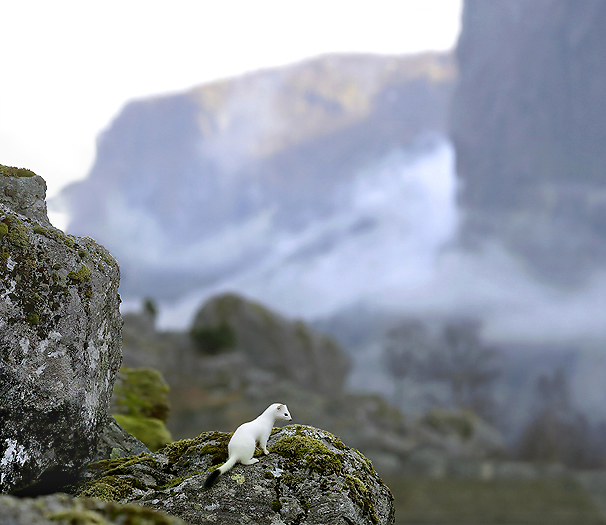
The weather is clearing up after a foggy & humid morning.
Some final, interesting words about the Ermines scent: Communication and location of prey occurs largely by this, since the ermine has a sensitive olfactory system. As a result, much of this communication is missed by human observers. However, ermines are believed to identify females in estrus by scent, and also the sex, health, and age of prey.
Thanks to my brother Kjell who lives in this remote valley and notified me about this little white beauty.
END.
________________________________________________
________________________________________________
Autumn in the Norwegian mountains, September & October 2018.
After an abnormal warm summer, a chilly autumn finally came and made a temperature relief for both wildlife and humans. Many of the snow fields in the mountains that mammals normally use to cool themselves down by, and also use as an escape from insects, had melted during the summer. In the last half part of September month much of the higher mountain areas had again been covered by snow.
This is the time for wildlife viewing and photographing. Below there are a selection of photos from the 2-week trip, with links to the different galleries with a broader variety of motives.
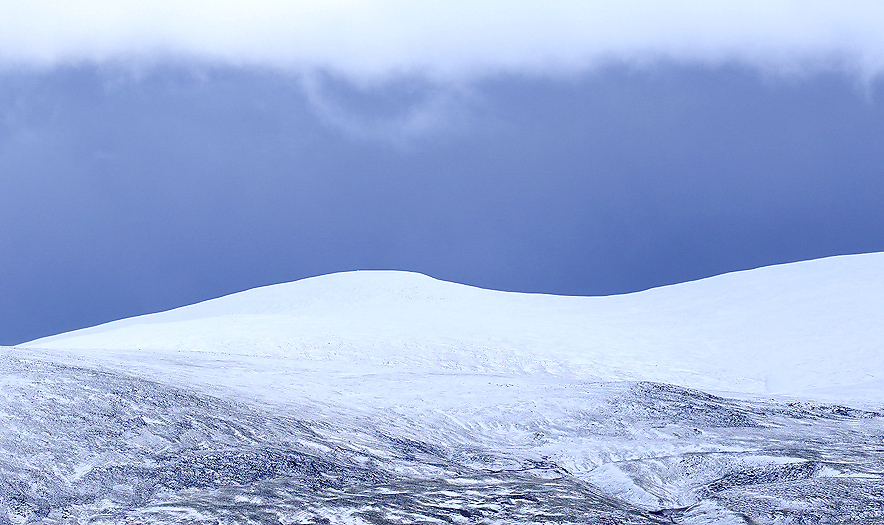
The first snow after summer is always a pleasing sight.
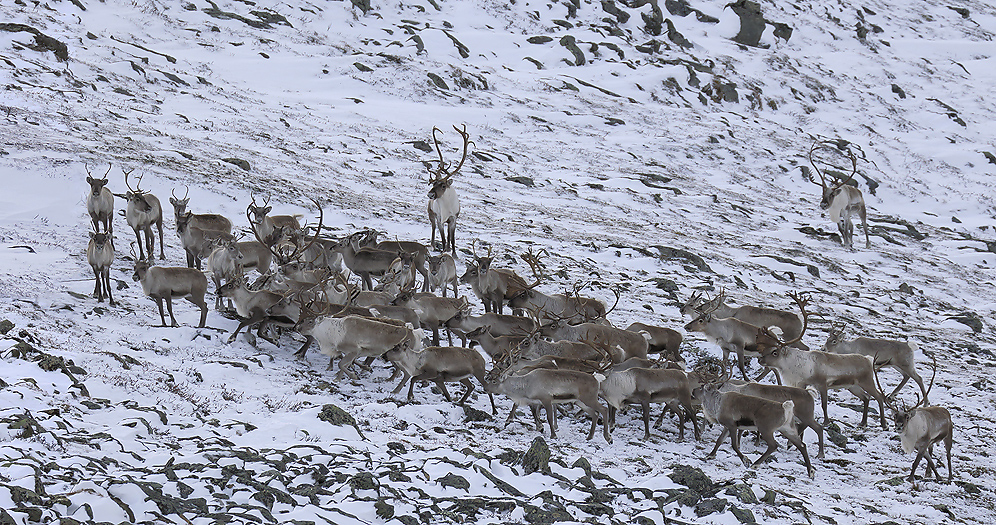
Reindeer herd at Dovrefjell. Note the bigger bulls beside the herd, -it is typical that the bigger males guard the herd when they are not on the move. The Reindeer at Dovre is one of the very few populations that have not been mixed up with domestic Reindeer, and have of this reason the original DNA from the Reindeer that inhabited Norway after the last ice age.
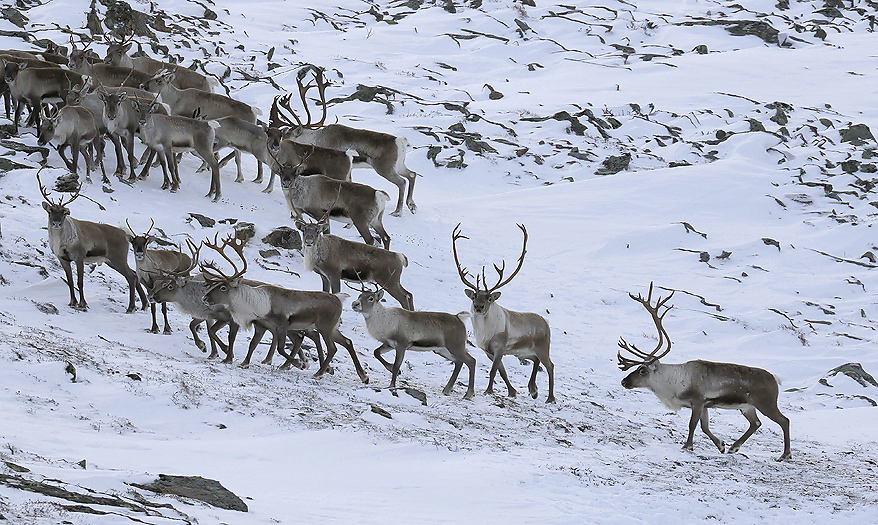
The bigger bulls does not necessarily lead the herd, -while moving they are very often found at the rear back of the herd. For more photos of Reindeer, please see the Reindeer gallery.
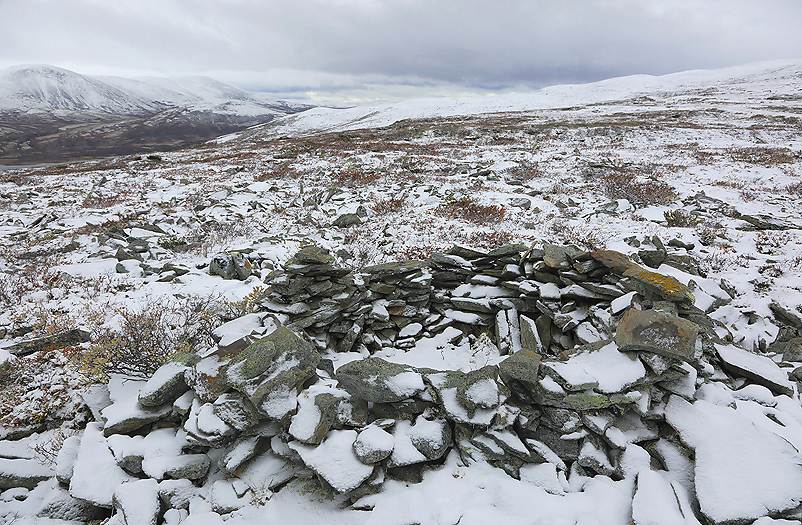
Ruin after shelter used in conjunction with reindeer hunting in late medieval period. For more photos from archaeological sites, please see the Archaeological Sites gallery.
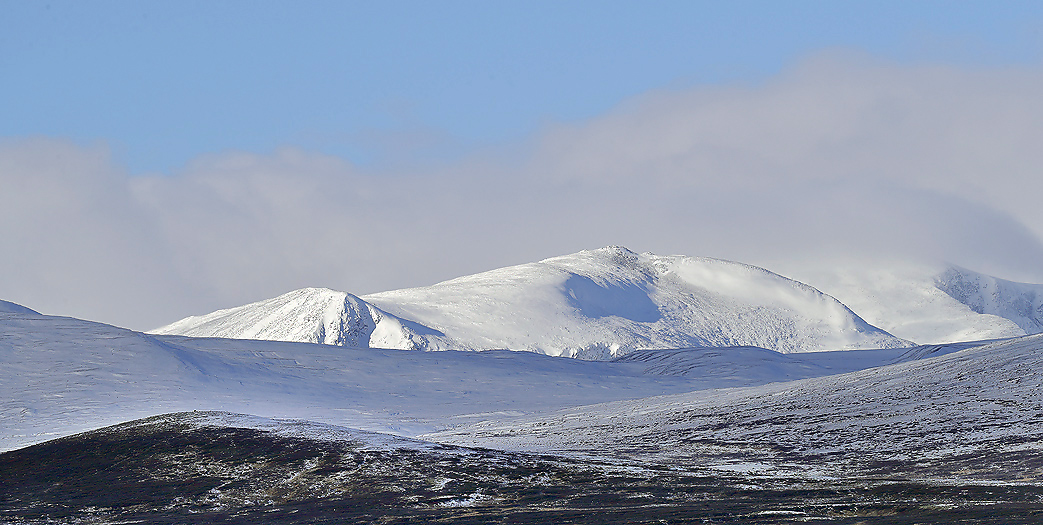
In the snow covered mountains of Dovre we can also, -with some luck, find the beautiful arctic fox.
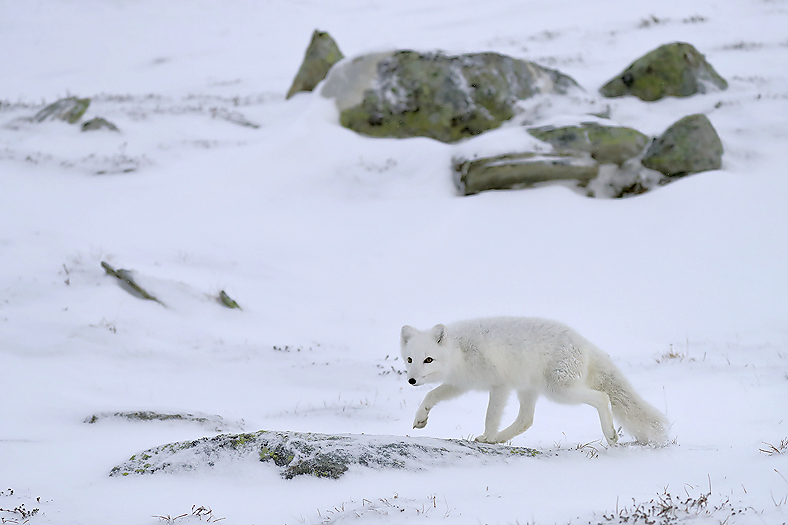
At this time of the year the Arctic Fox are very close to have changed completely to winter coat.
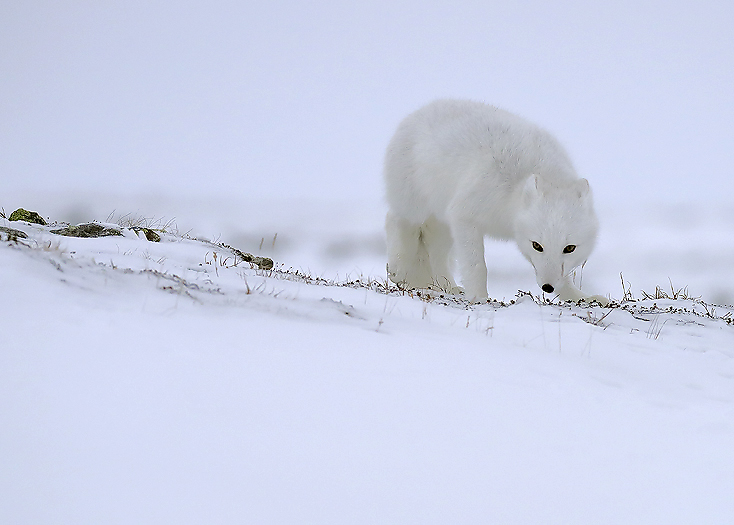
The Arctic Fox is one of the most endangered mammals in Norway, with an estimated population of only a few hundred individuals.
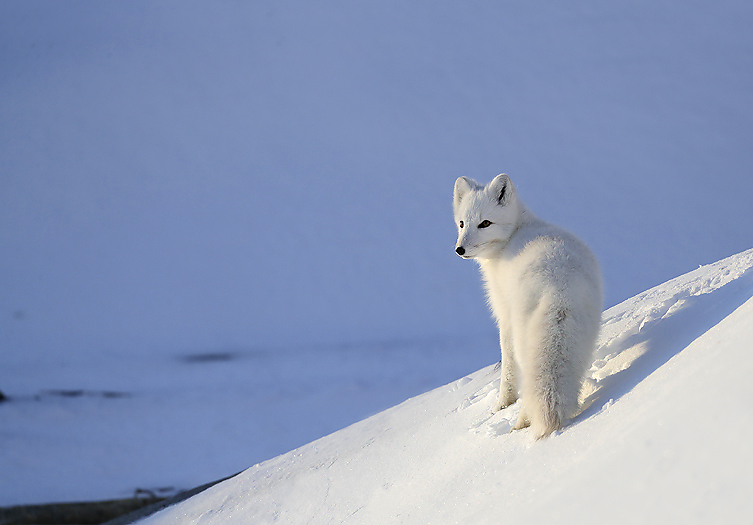
Arctic Fox. For more new photos of this beautiful animal please see the Arctic Fox gallery.
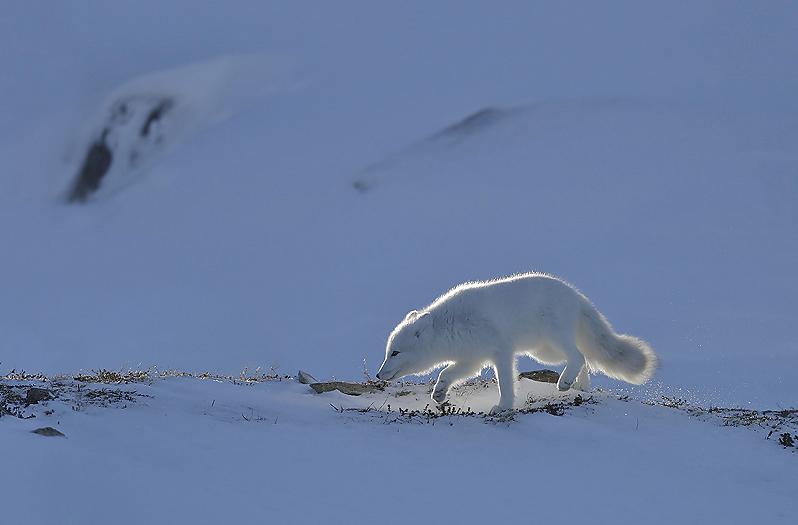
The last sun rays of the day causes nice light over the fox.
The land below the treeline show of course another fauna with bigger varieties of species:
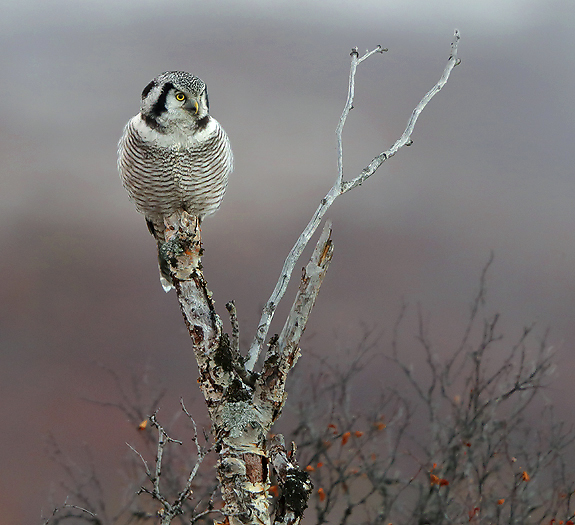
A Hawk Owl watching for prey by a mountain marsh. The numbers of Lemmings are rather low this year, but instead there are quite some numbers of other smaller rodents.
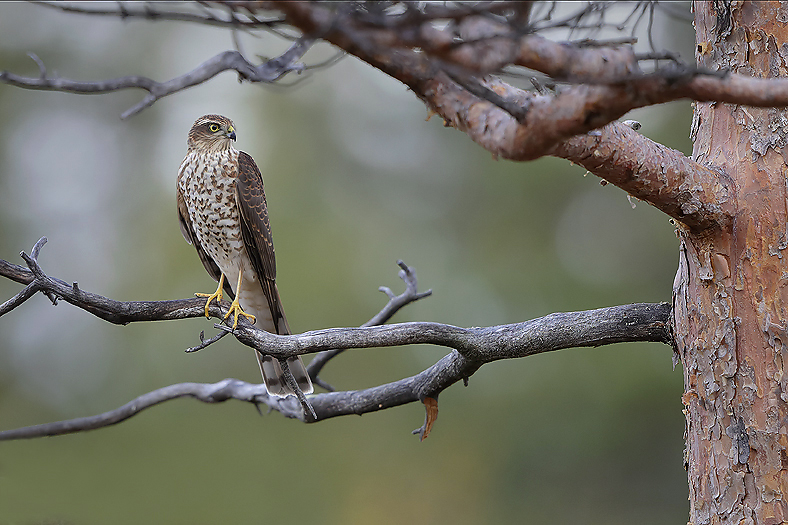
Sparrow Hawk in the mountain forest of Telemark. This is an adult female.
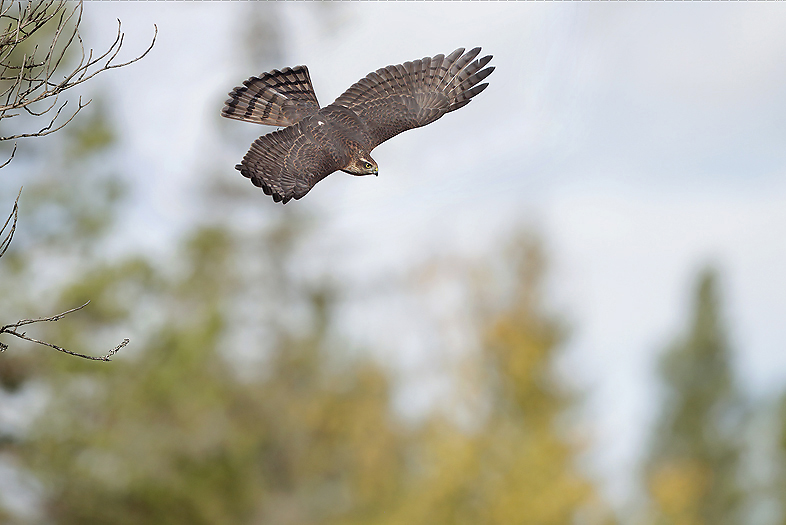
An extremely fast and skilful Sparrow Hawk hunting for prey in the mountain forest of Telemark.
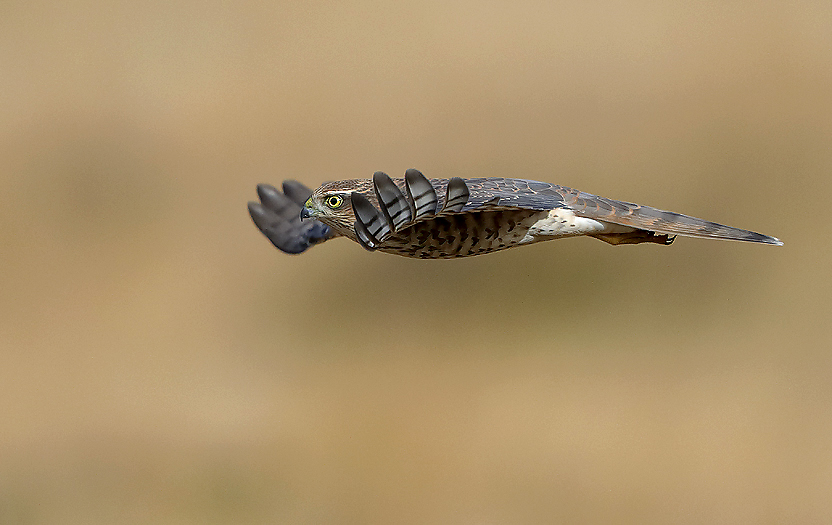
A Sparrow Hawk hunting for prey, Telemark. For more new photos of Sparrow Hawk, please see the Sparrow Hawk gallery
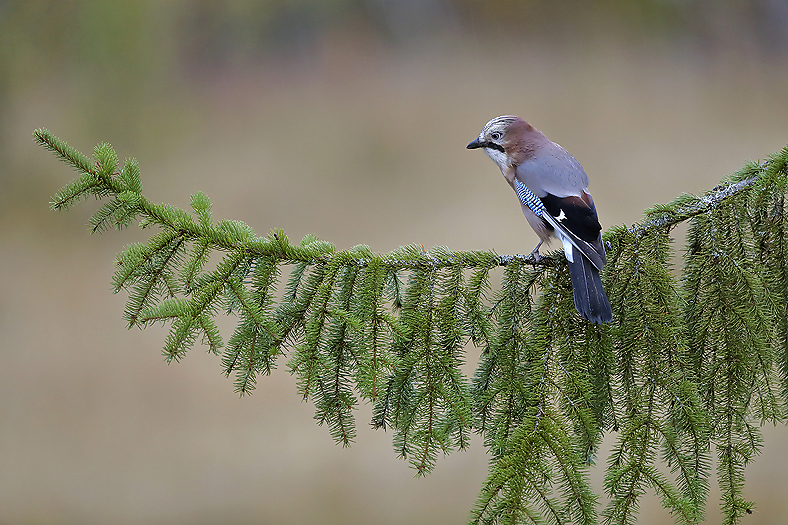
A beautiful Jay in the mountain forest of Telemark.
END.
________________________________________________
________________________________________________
Towards the Canadian western arctic, 2H June-2018.
The Canadian northern archipelago is the biggest arctic archipelago in the world. It populates many inuit settlements and numerous remnants of extinct inuit cultures. The wildlife is great and in general with complete ecosystems.
The extreme western part of this archipelago are not frequently visited compared to the middle and especially the eastern part, and is therefore very interesting for a photographic visit.
However, the westernmost island which is our final destination can offer a real challenge for visitors due to frequently unfavorable weather conditions (wind, fog and bad weather systems in general) which i.e. can lead to problems reaching landing spots by air.
PART 1. The Mackenzie river delta and Tuktoyaktuk Peninsula:
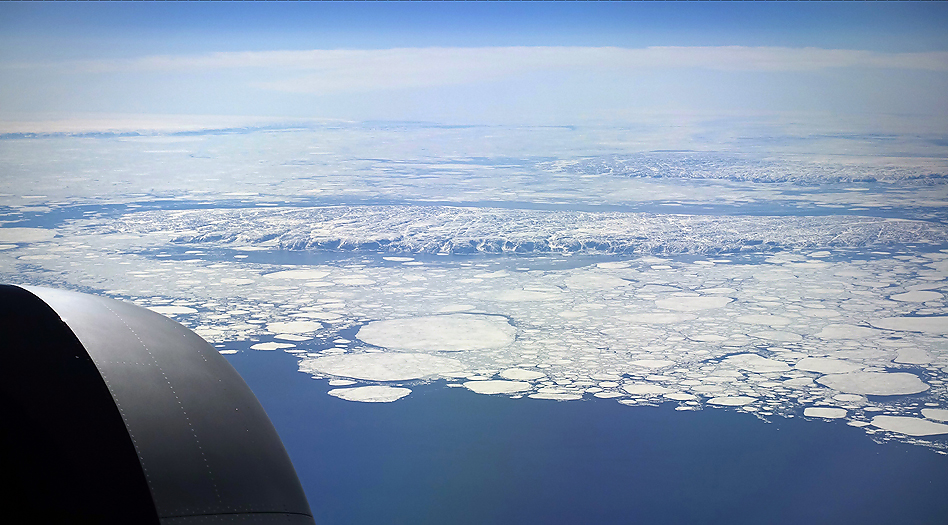
Looking southwards down from the plane (altitude 11500m) towards the destination we see a partly ice covered Hudson Bay. Nottingham Island in the foreground and Salisbury Island in the distance behind.
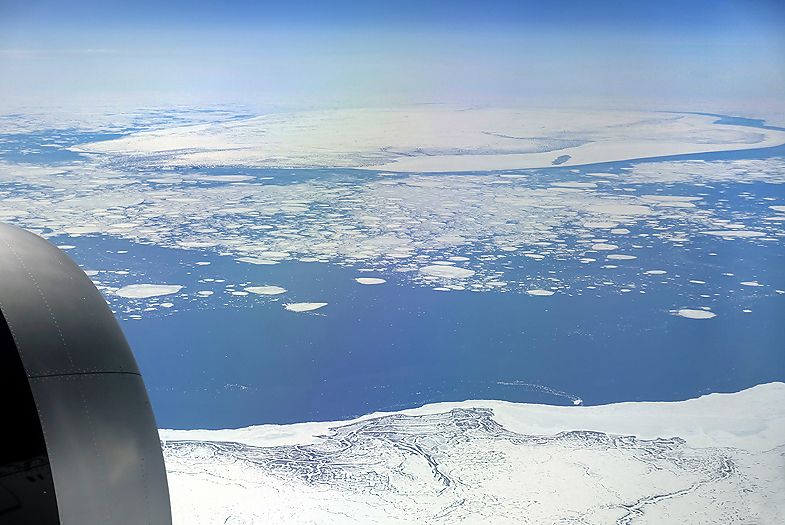
Southampton Island below has still not left the winter as we can see. Coats Island against south behind. These areas in northern Hudson Bay are old British whaling waters. The Southampton Island have an unlucky history where the whole Sadlermiut population where wiped out of a disease (possible influenza) which the whalers from the british ship “Active” brought with them in 1902. The Sadlermiuts were the last remnants of the Dorset culture.
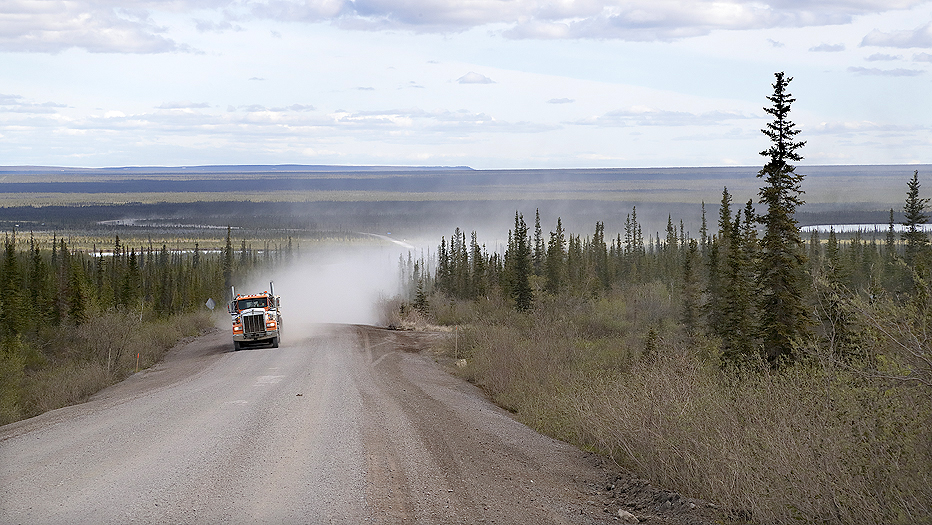
The Dempster highway starts near Dawson City and end traditionally in Inuvik north at the Mackenzie river delta north-east. Numerous numbers of trucks use this road for transport of gods to the northern setlements. The new road to Tuktoyaktuk have recently been worked out and act as an extension of the road.
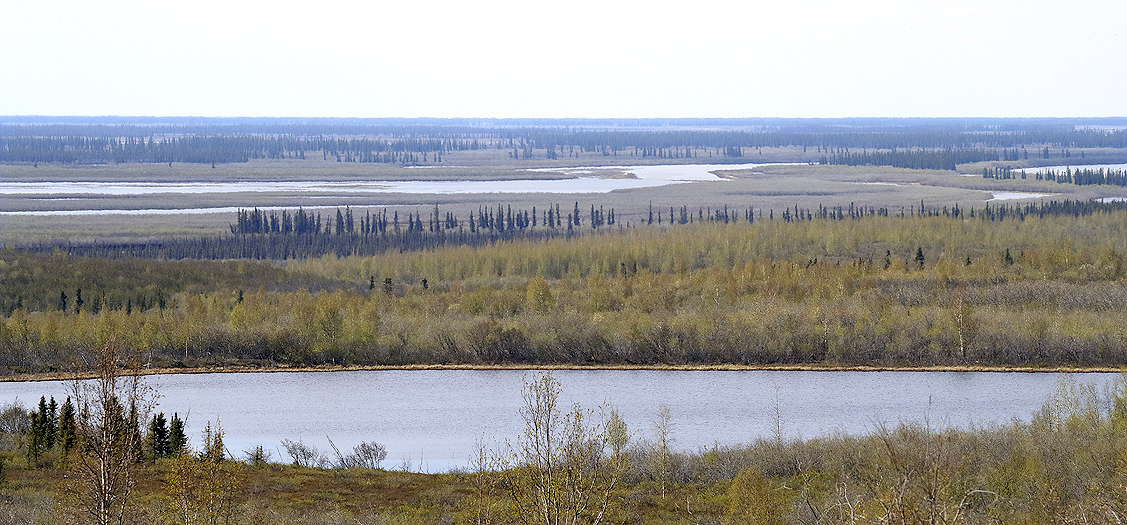
Part of the Mackenzie river delta north-east. This huge delta is the second biggest delta in North America, and where the river origins from the Great Slave Lake.
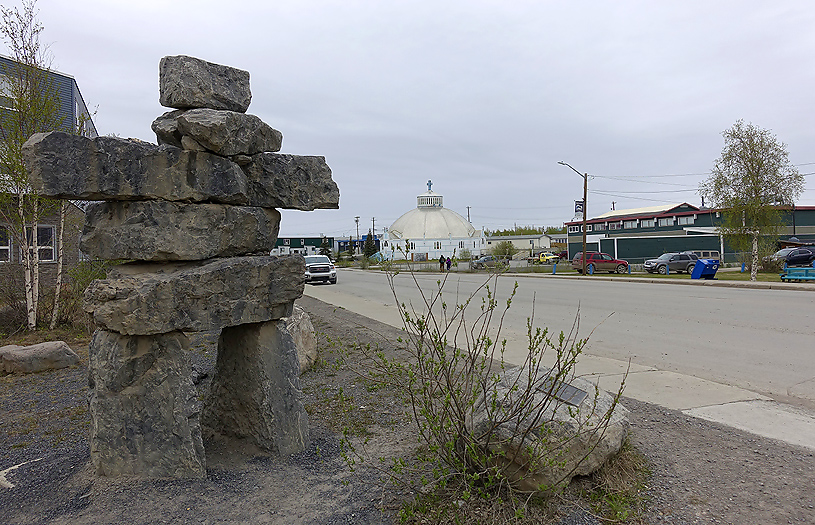
The main settlement in this region is Inuvik.
Wildlife of the taiga and delta area is rich and varied. Below some photos of typical species:
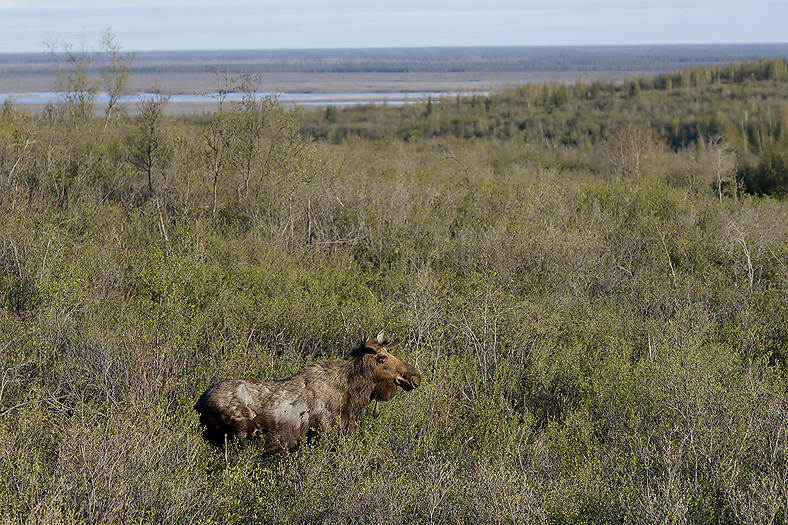
Moose find a great deal of their food in the dens shrubs at the transition zone between taiga and tundra.
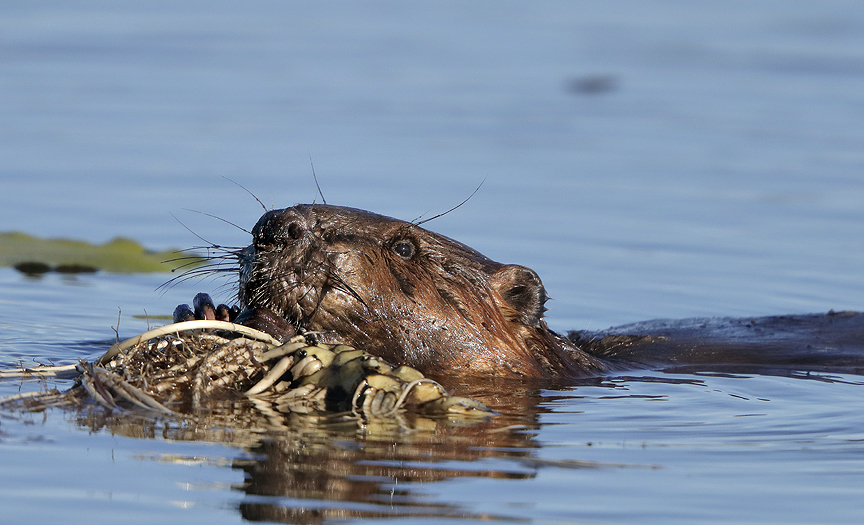
Beaver eating on roots of water lily.
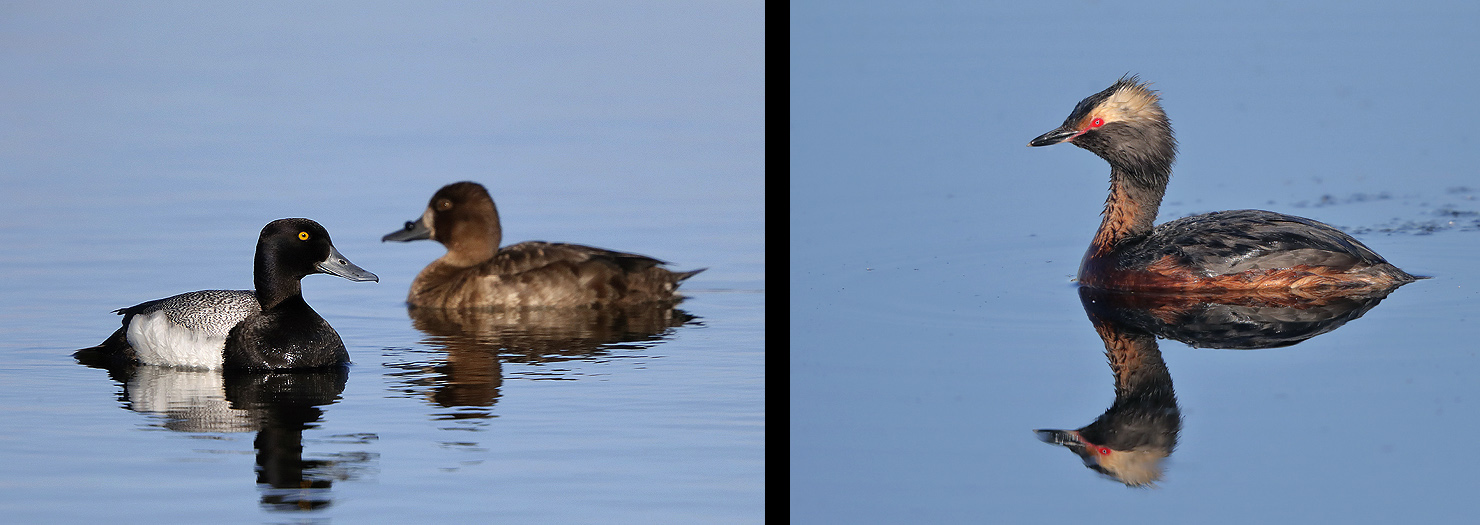
Lesser Scaup couple and Horned Grebe.
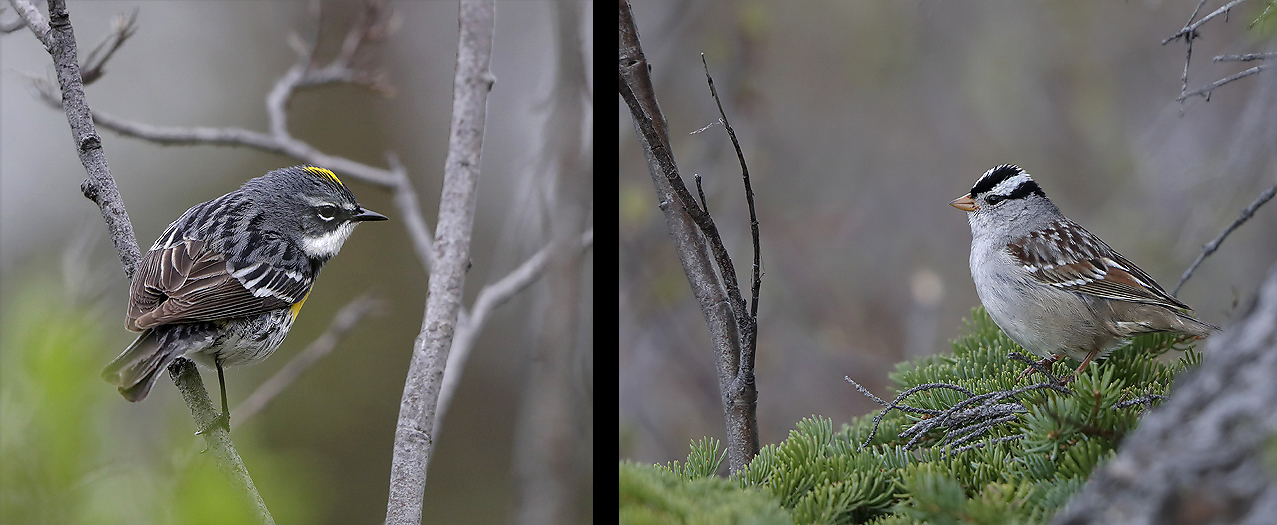
Yellow-rumped Warbler and White crowned Sparrow.
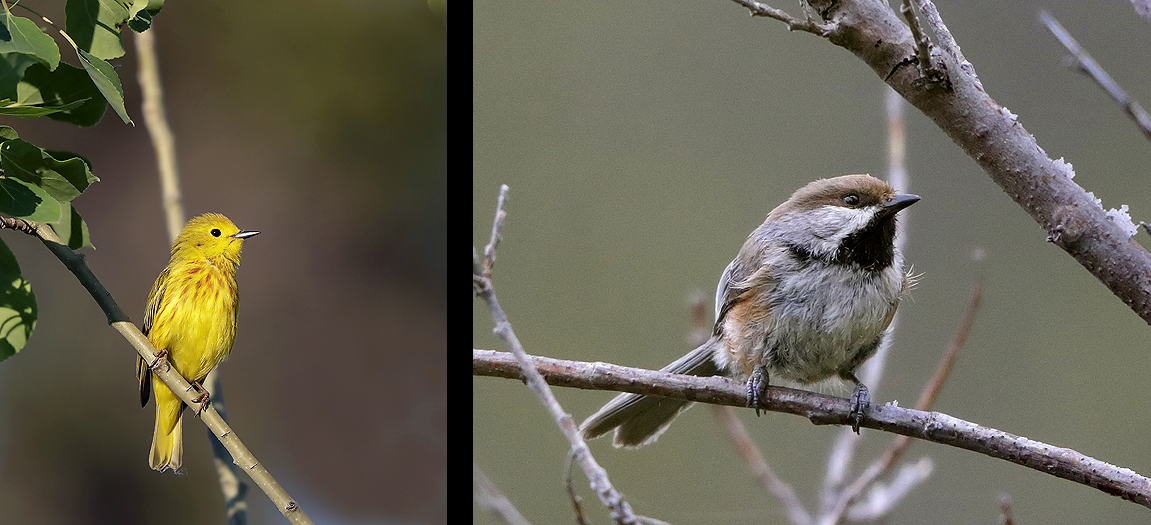
Yellow Warbler and Boreal Chickadee.
Wildlife of the barren Tuktoyaktuk Peninsula show some difference compared to the taiga, -some images from the tundra there:
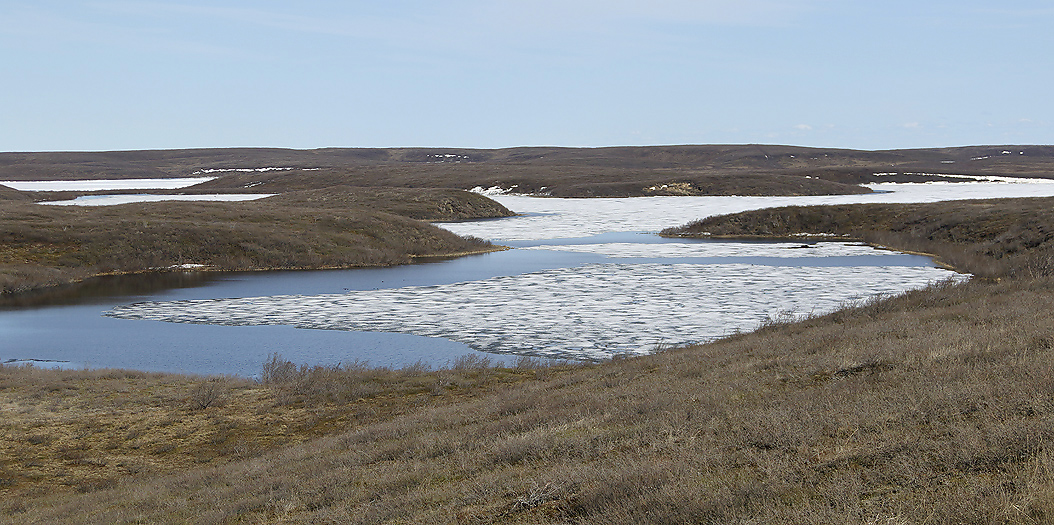
Part of the tundra on the Tuktoyaktuk Peninsula. Big lakes where still covered by ice, while the small where ice free.
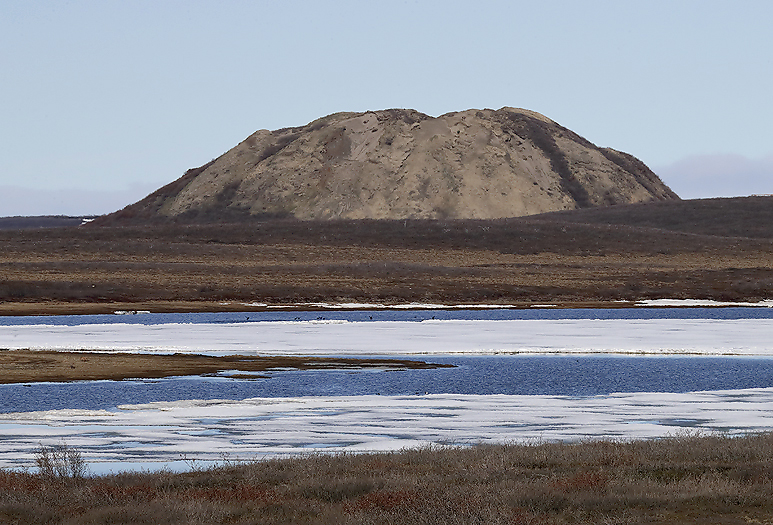
The Tuktoyaktuk Peninsula inhabits the world greatest concentration of Pingos, here is one of the biggest in the world. A pingo is as we know a mound (normally conical) formed by the upheaval of ice underneath the soil in regions with permafrost.
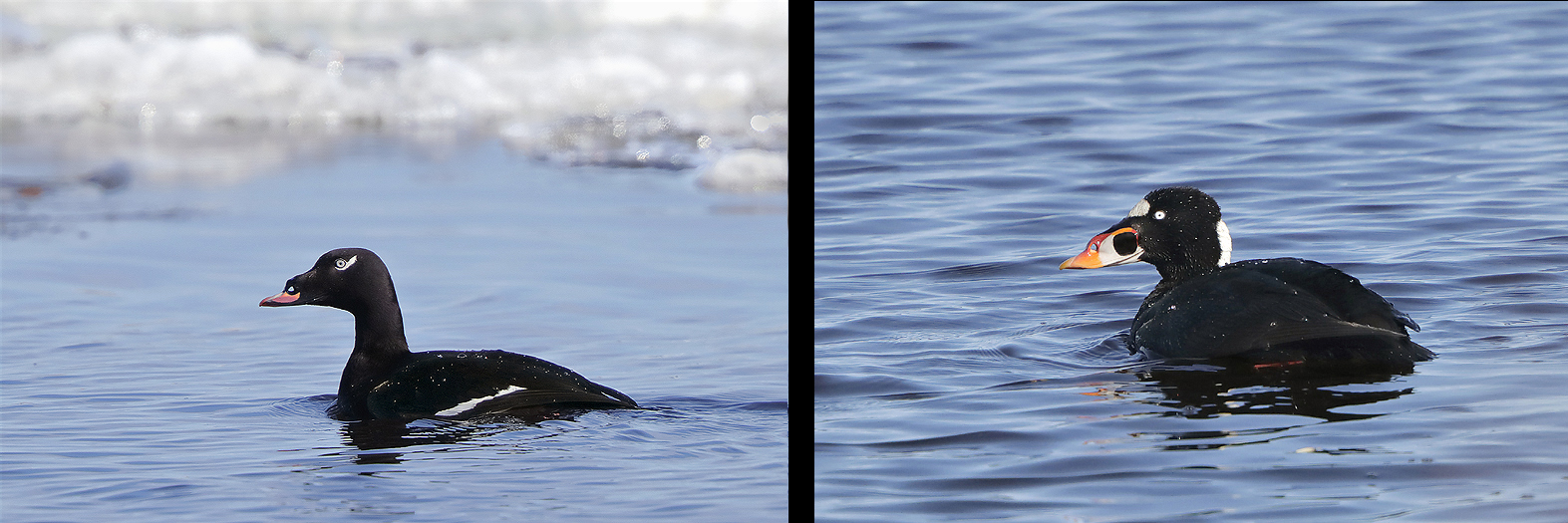
White-winged Scoter and Surf Scoter. The White-winged one is the most common of the two.
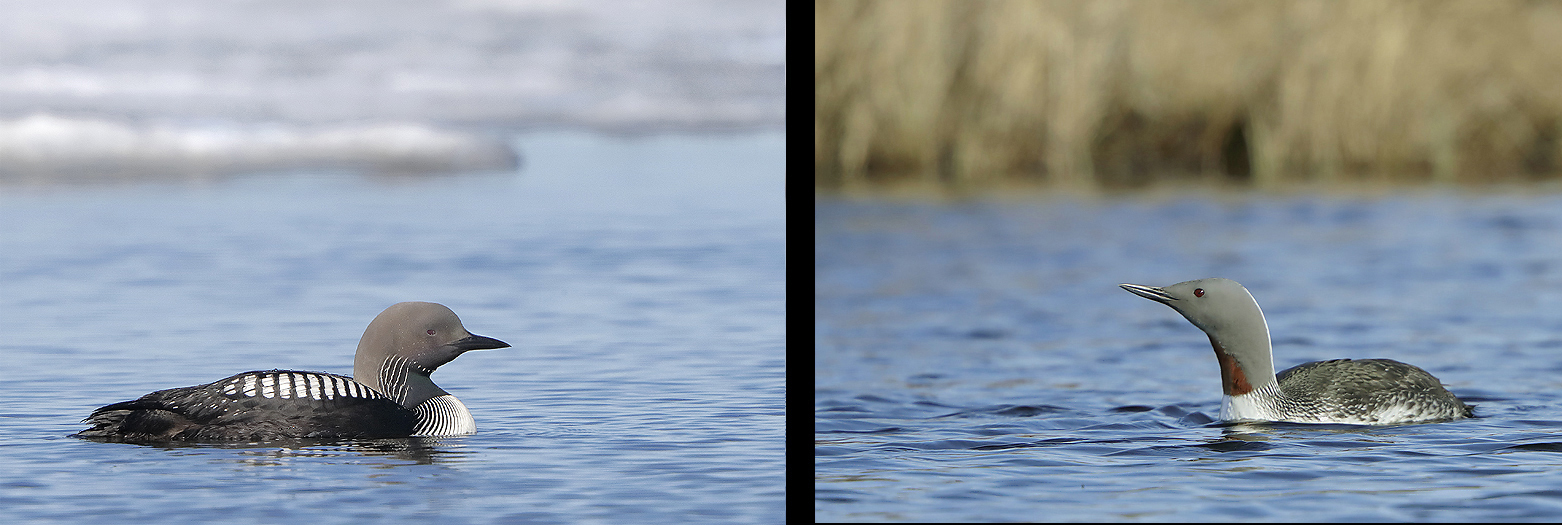
Pacific Loon and Red-throated Loon.

Red-necked Phalarope. These birds have a special technique for catching food; they swim rapidly in a circle to make a vortex with their feet, -which swirls up nutrition to them.
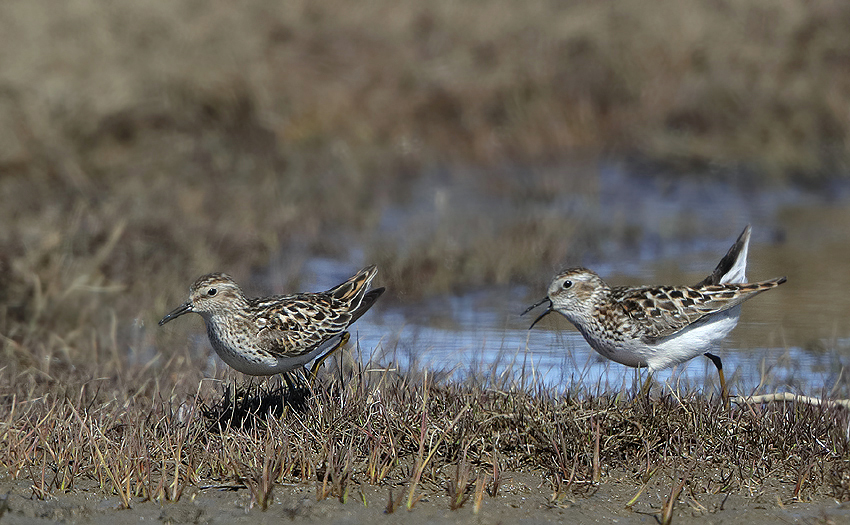
The male Semipalmated Sandpiper is quite interested in girls at this time of the year.
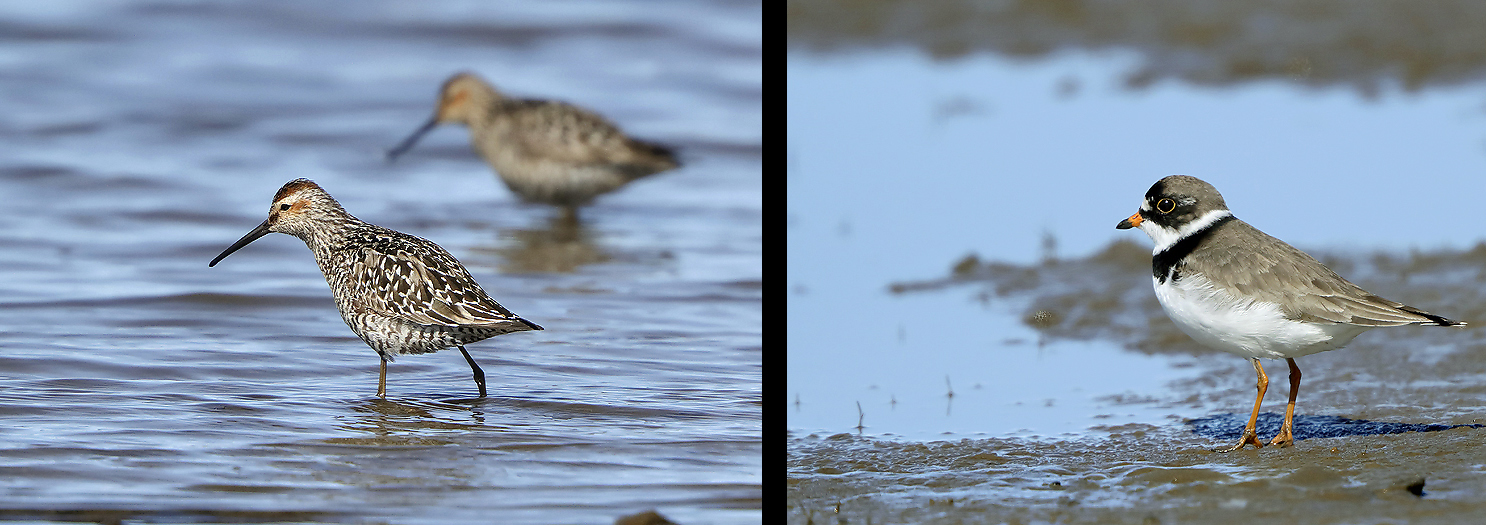
Stilt Sandpipers and Semipalmated Plover by the shore of the Arctic Ocean.
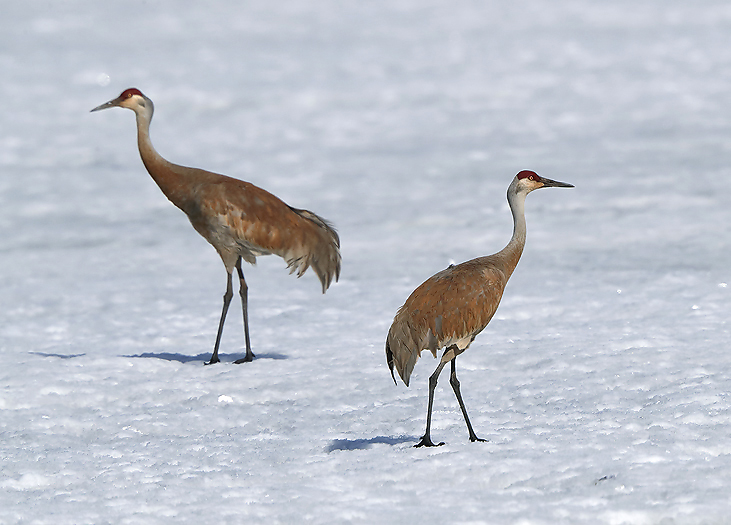
Sandhill Cranes on one of the ice covered lakes on the Peninsula.
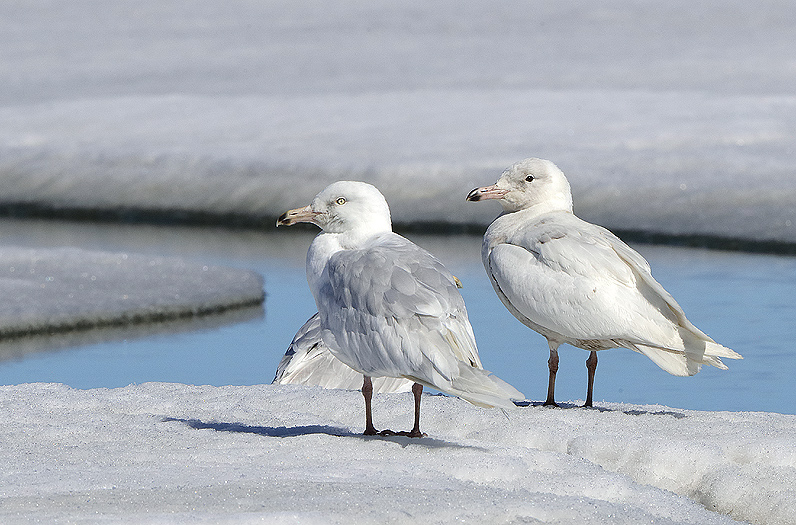
Glaucous Gulls (a 3rd yearling to the left and a 2nd yearling to the right).
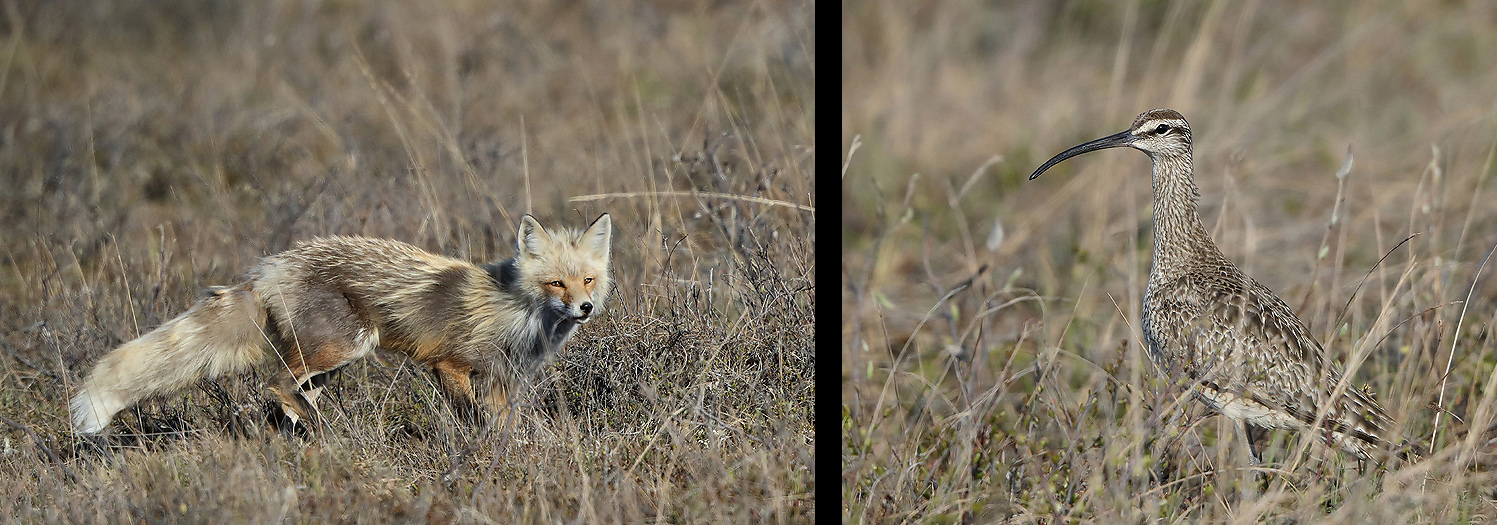
Red Fox who is very interested in a pair of nesting Whimbrels.
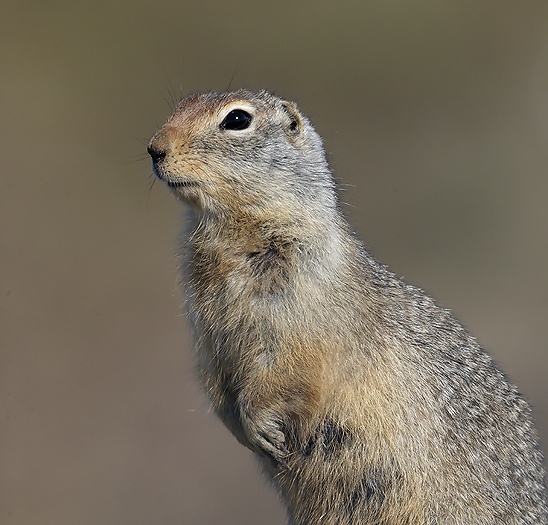
Arctic-ground Squirrel, curious as always.
The Inuvialuit settlement of Tuktoyaktuk (in Inuvialuktun: “It looks like a caribou”) lies on the shore of the Arctic Ocean. Its formerly name was Port Brabant, and was the first place in Canada to revert to the traditional indigenous name (in 1950). The place has been used by the native Inuvialuit for centuries for harvesting of Caribou and Beluga Whales. Between 1890 and 1910 a great number of Tuktoyaktuk`s native families were wiped out in flu epidemics brought by american whalers.
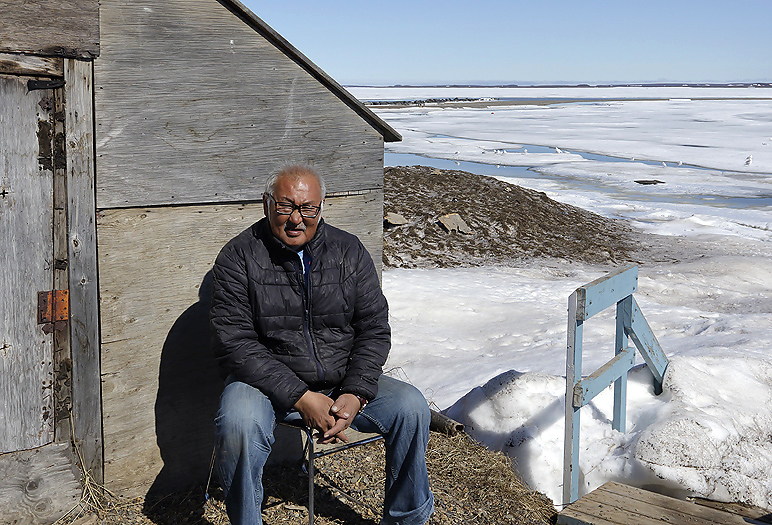
Sandy Adams by his “Smoke House” (fish smoking mainly) in Tuktoyaktuk.
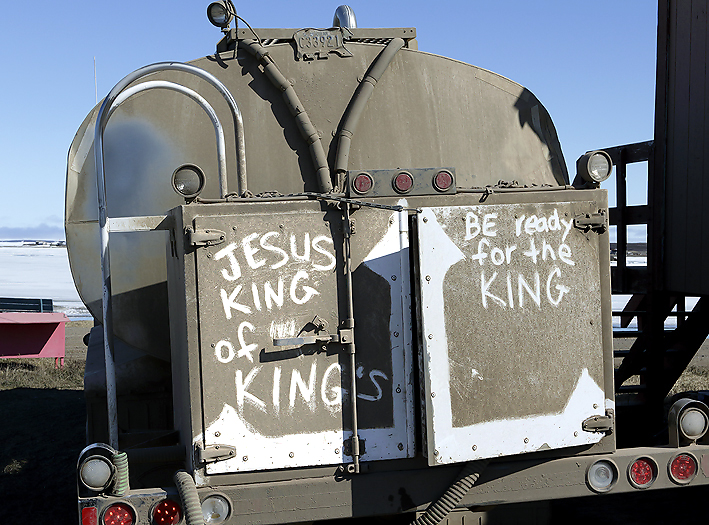
Clear message who`s the boss on the back of the water truck in Tuktoyaktuk.
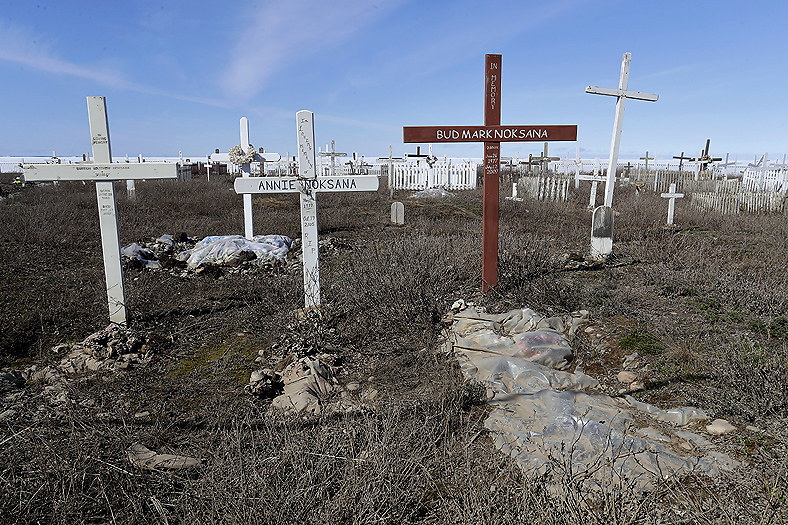
Tuktoyaktuk cemetery. Due to permafrost it is impossible to make ordinary graves for the passed away beloved ones.
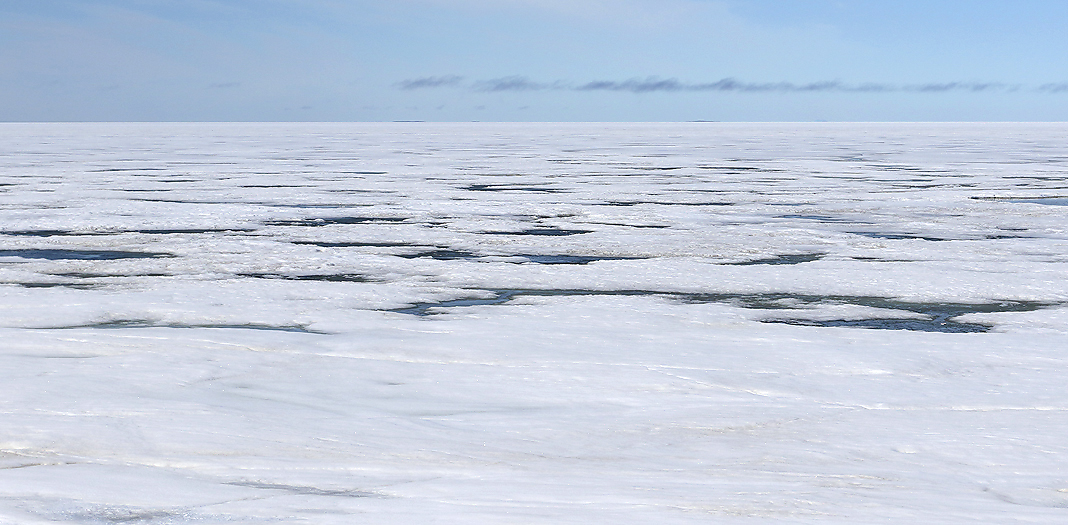
The Arctic Ocean is still covered by thick winter ice. Inuvialuits in Tuktoyaktuk says that this spring/summer is like the old days with thick sea ice until at least out June month. We would soon experience this for our planned trip further north to Banks Island…
PART 2. Banks Island, – the westernmost island in the arctic archipelago:
Sorry, -but this part will first be fulfilled in a year. Due to extraordinary late spring & summer the land was snowcovered and with still ice on the rivers. We could therefore unfortunately not do the trip this year. The plan was to canoe down the Thomsen River to the northern shore of the island. Please be patient…
END.
________________________________________________
________________________________________________
Another day in the mountains of southern Norway, end of May-2018
A recent visit to a Gyrfalcon site gave great memories and a coupe of photos to show on the blog. The predators of these mountains should have good opportunities to catch prey this year due to high numbers of rodents (mainly lemmings).
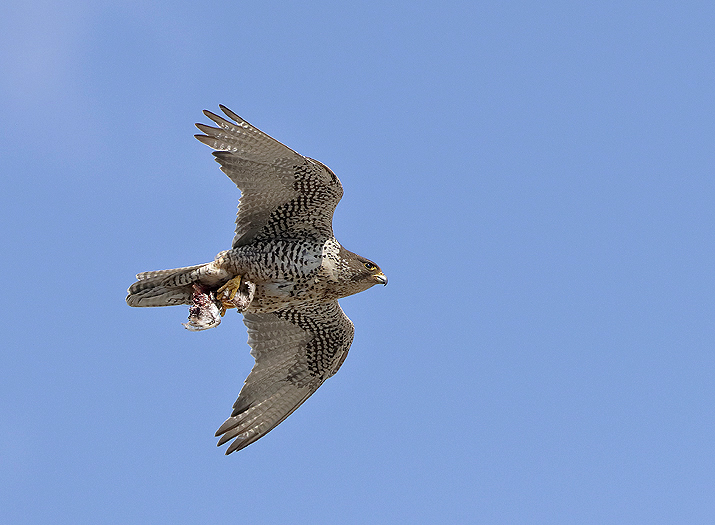
The female Gyrfalcon have just caught a Ptarmigan. Due to high numbers of rodents this year, there should be more Ptarmigans than previous years in these mountains.
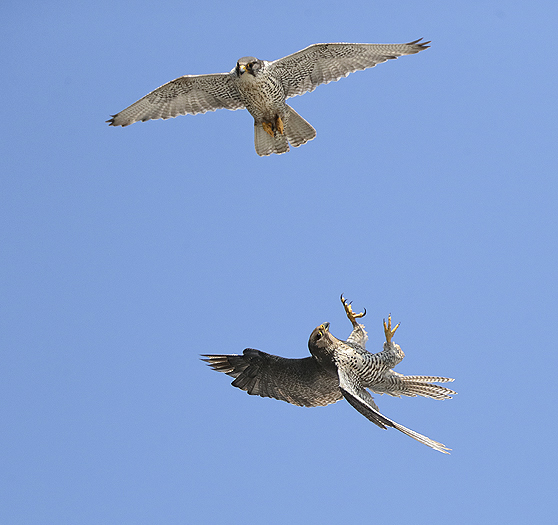
Playing Gyrfalcon couple, the female on top.
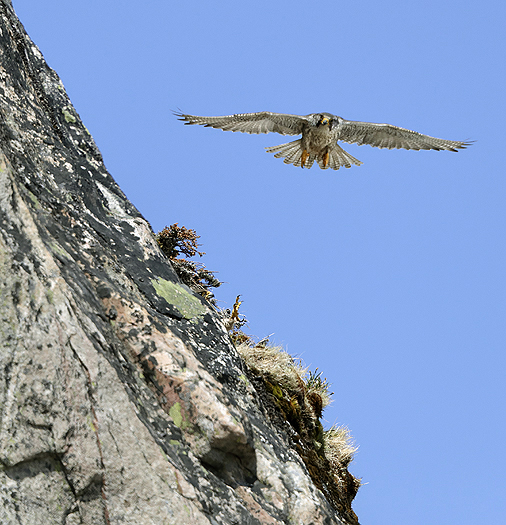
Note the falcon claws (and head) at the cliff below the falcon in the air.
For more new Gyrfalcon images, -please see the Gyr Falcon gallery.
END.
________________________________________________
________________________________________________
A day in the mountains of southern Norway, end of March-2018
Some images from a certain day in the snow covered mountains.
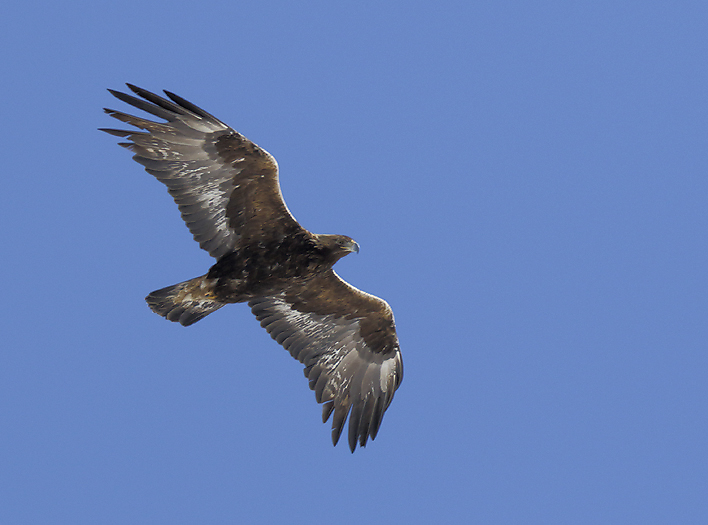
When closing in to the Golden Eagle territory, the old female came for checking up the “trespasser”. For more images of Golden Eagles please see the Golden Eagle gallery.
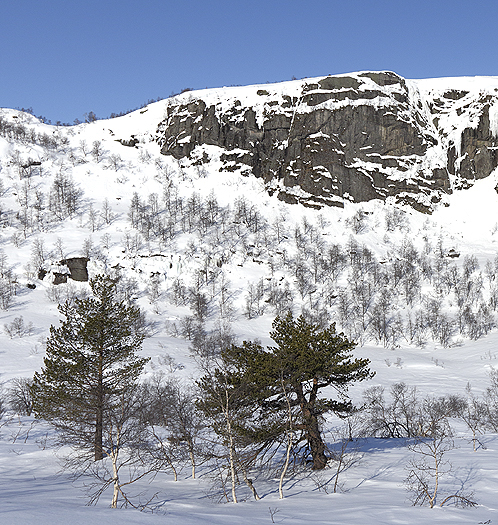
Due to the cold winter and late sign of spring the Golden Eagle`s nest is still covered by snow.
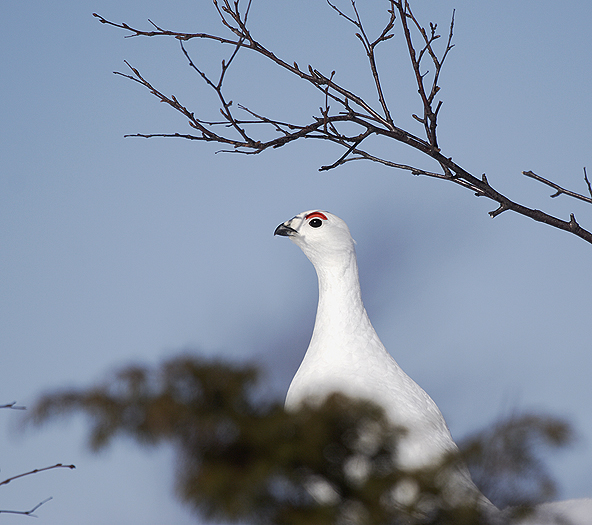
There are plenty of Grouse this winter. They have not yet begun changing plumage. For more images of Grouse please see the Grouse and Ptarmigan gallery.
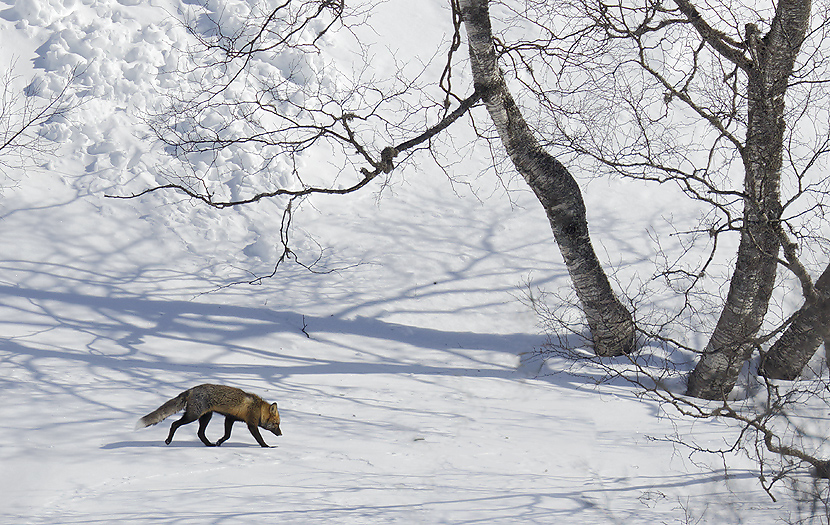
Predators like this Red Fox do not need to go hungry when there are great numbers of Grouse and Ptarmigans in the mountains.
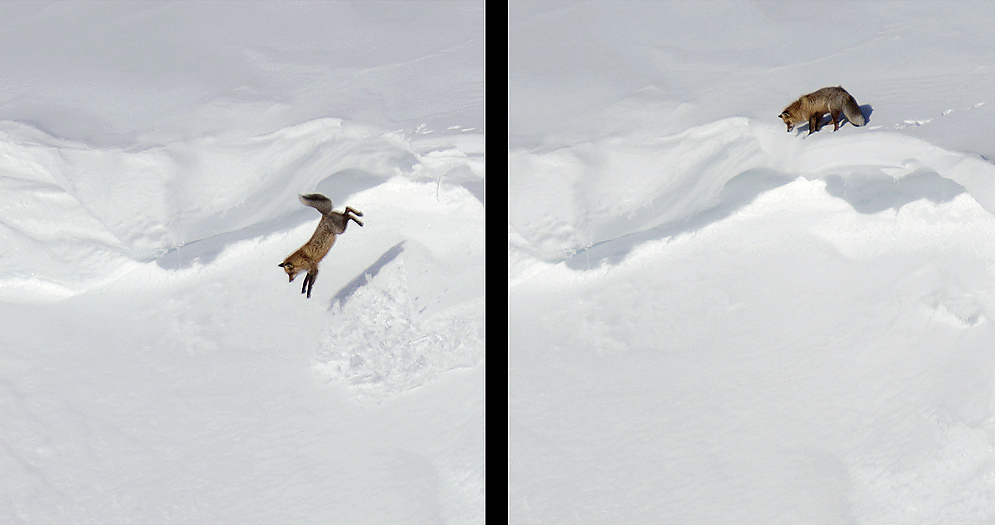
The daredevil…
If you would like to see more images of Red Fox, -please see the Red Fox gallery.
END.
________________________________________________
________________________________________________
Autumn in southern Norway, September & October-2017
Below is a small selection of photos from spending near 2 weeks in the mountain forests and at & above the treeline in the mountains of southern Norway
New photos will gradually be added to related galleries.
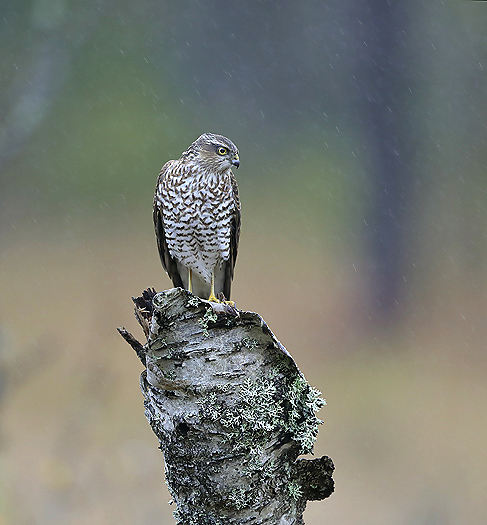
Sparrow Hawk in the mountain forest of Telemark.
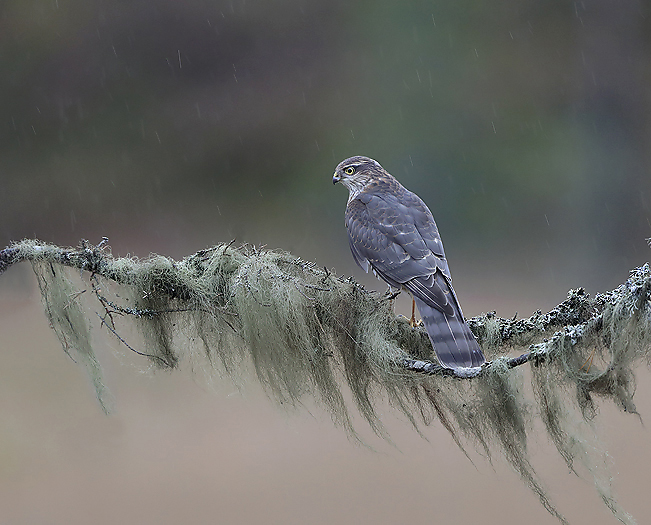
Sparrow Hawk in the mountain forest of Telemark.
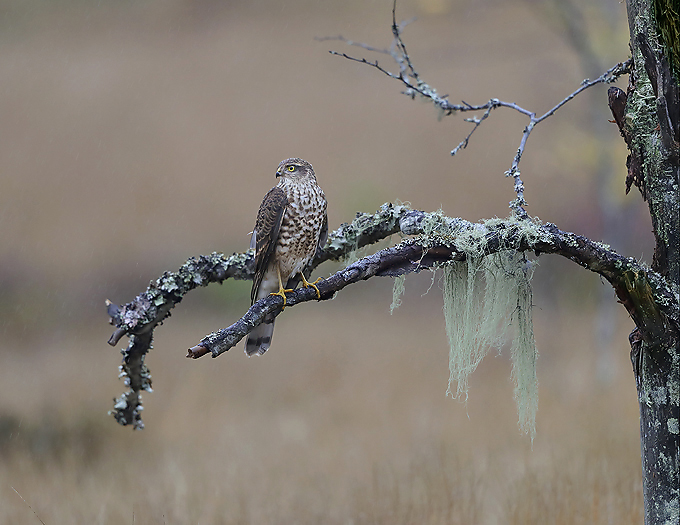
Sparrow Hawk in the mountain forest of Telemark. For more new Sparrow Hawk images, please see the Sparrow Hawk gallery.
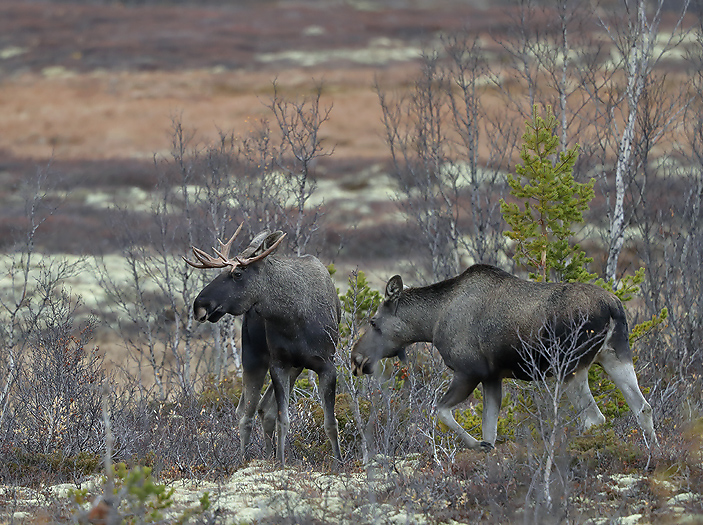
Mr and Mrs Moose on a moor in the Dovre mountains.
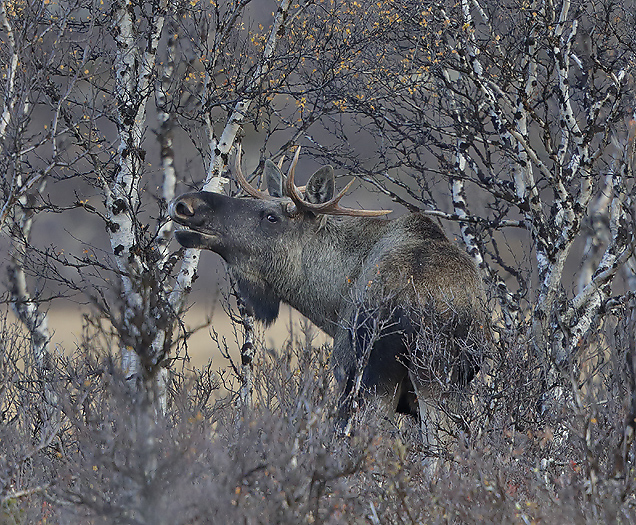
This Moose (not the same individual as in the photo above) shows irritation over being disturbed at his day-resting place in the Dovre mountains.
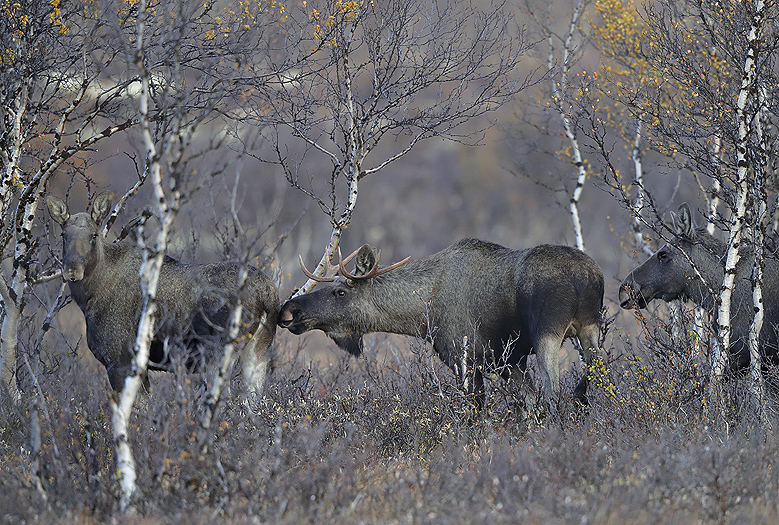
Moose bull with his two ladies. From Dovre mountains. For more new Moose images, please see the Moose gallery
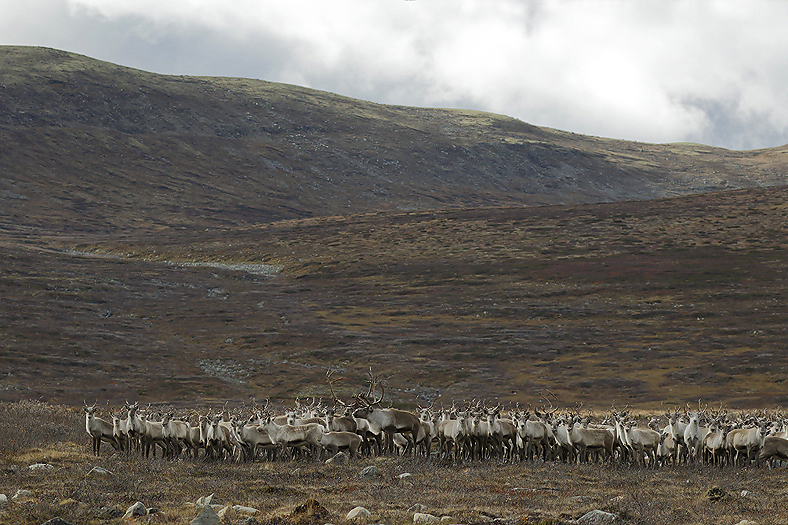
Reindeer herd at Dovre mountains.
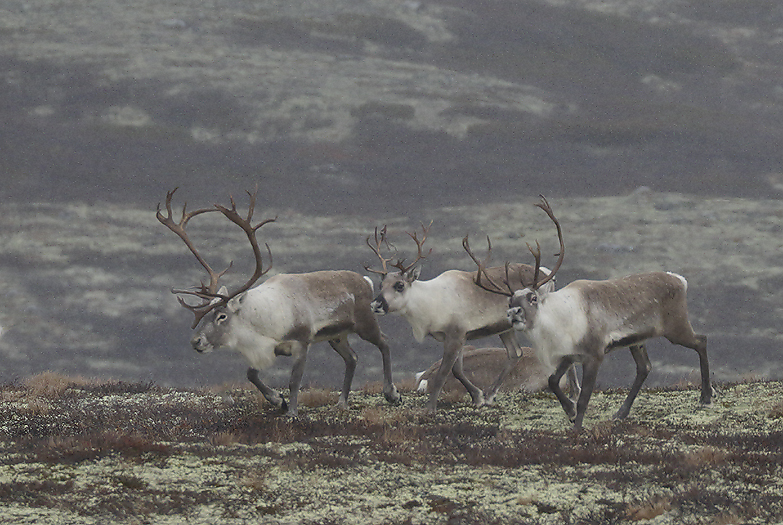
Reindeer in light snow fall at Dovre mountains.
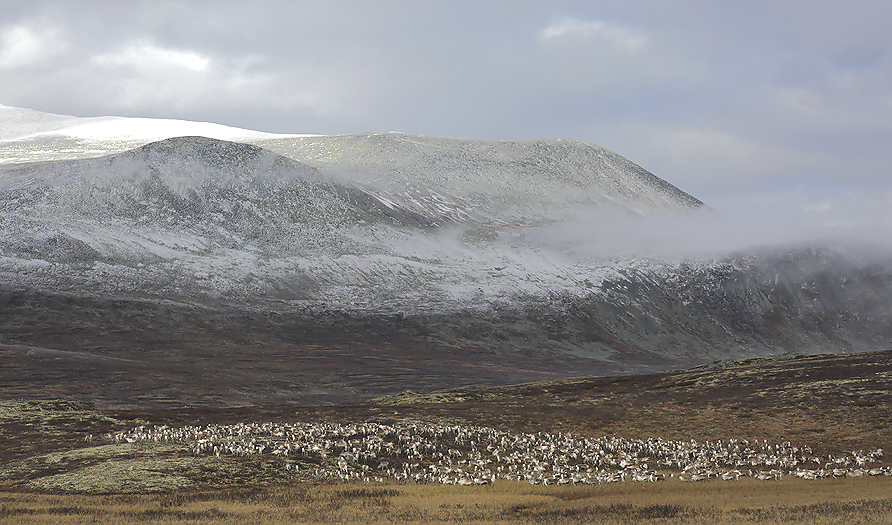
Reindeer herd at Dovre mountains. For more new Reindeer images, please see the Reindeer gallery.
END.
________________________________________________
________________________________________________
A journey in the Canadian Barren Lands, June & July-2017.
After some weeks on the tundra canoeing the Burnside River north on the Canadian mainland, -I have returned back to the civilization and worked out a short photographic trip report with some selected images. The report includes also images from a stay in the huge taiga near Great Slave Lake prior to departure to the tundra of the Barrenlands.
Typical for the Barrenlands is complete and functional ecosystems. However, heavy decline in the Caribou populations the last decades have made certain changes in some of the wildlife species populations there. It is unknown what causes the decline, if it is natural fluctuations or human influence (i.e. climate changes), but it is believed to have its roots in the latter which gives a milder climate.
Part 1 of the photographic report comprises wildlife and human activity such as gold mining near Great Slave Lake (subarctic climate zone).
Part 2 cover the trip itself out on the tundra (arctic climate zone).
Some of the photos in the report are not shown in the same order as they were taken.
PART 1. THE TAIGA AT GREAT SLAVE LAKE.
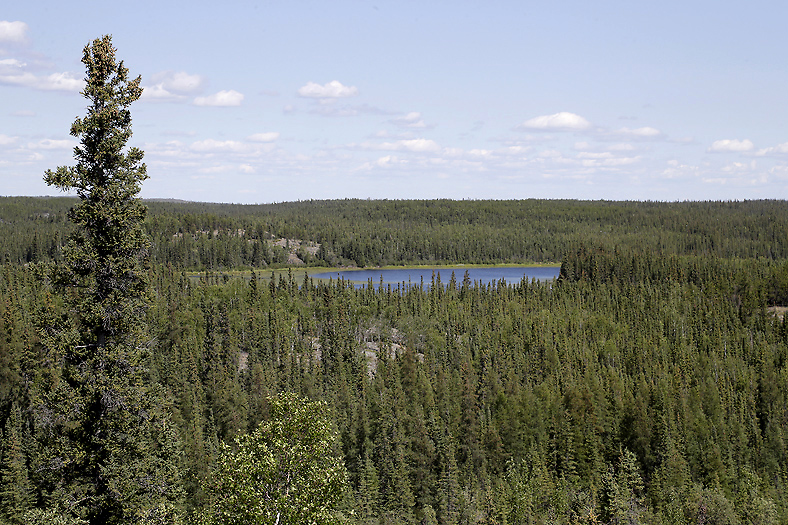
Part of the taiga forest NE of Great Slave lake.
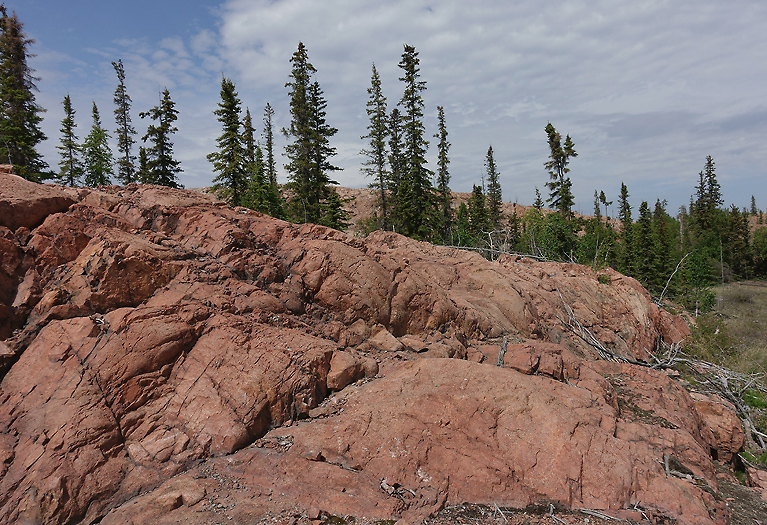
Some of the gold-bearing rock formations is seen as red-brownish color. I.e for the Giant Mine near Yellowknife. The goldrush on the north side of Great Slave Lake started in 1934 with official opening of the Con Mine in 1938. The Giant Mine followed up and opened in 1948. Yellowknife is per today also known as North Americas diamond capital due to several huge diamond mines out on the Barrenlands.
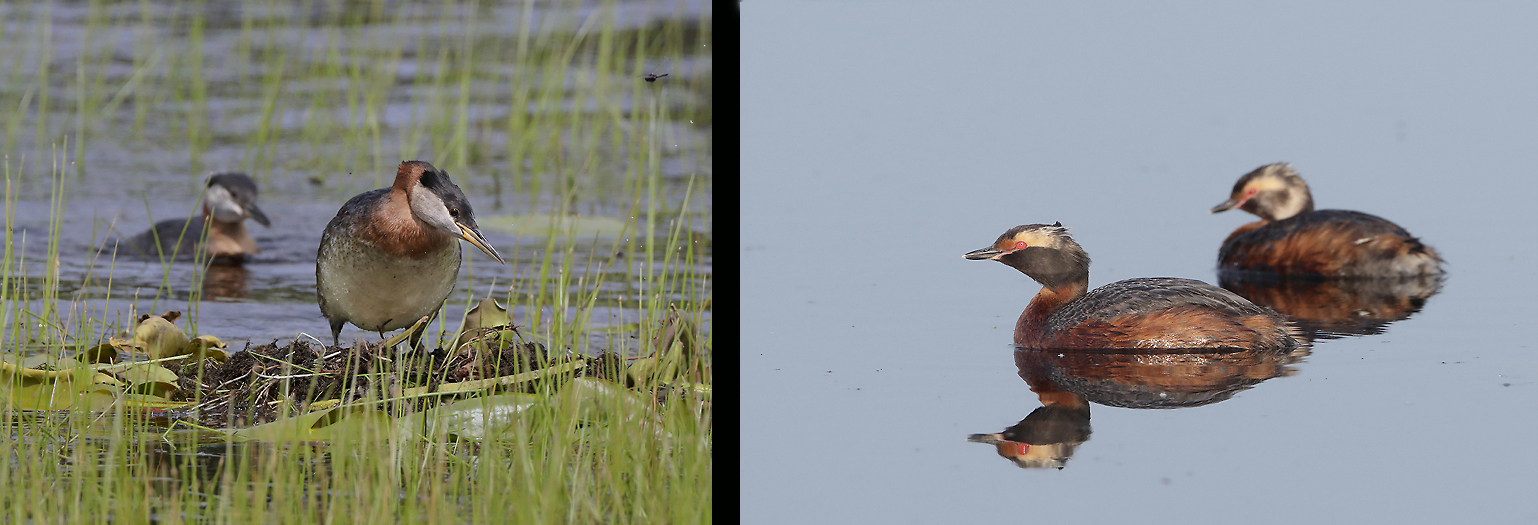
Nesting Red-necked Grebes. Horned Grebe couple..
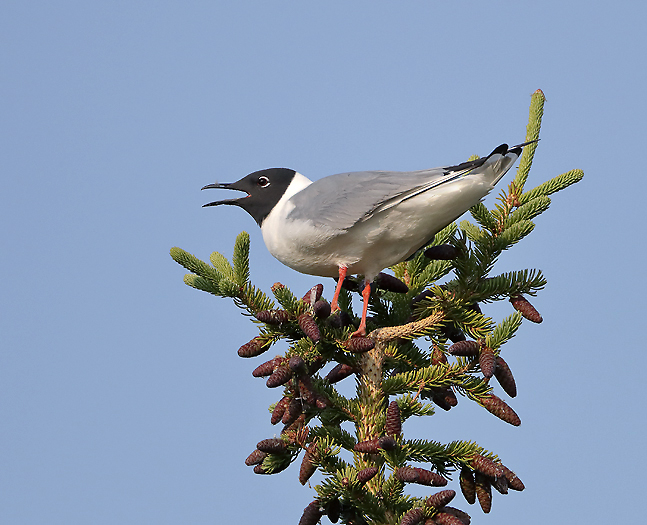
The Bonaparte`s Gull is the only Gull that regularly nest in trees. The name honors Charles Lucien Bonaparte (nephew of Napoleon Bonaparte) who made important contributions to American ornithology during the 1820s.
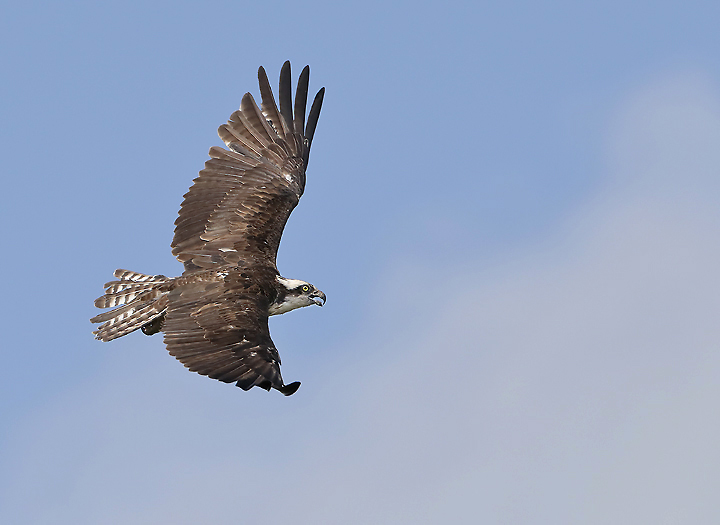
The Osprey is wide spread along the shores and islands of the Great Slave Lake and other lakes on the taiga here.
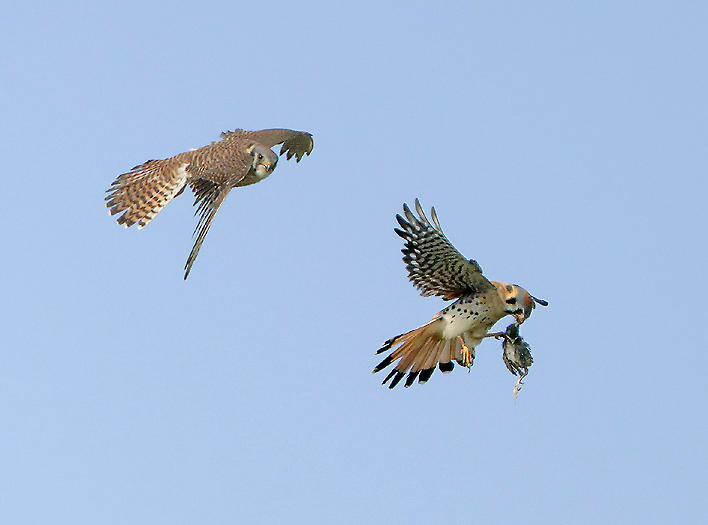
American Kestrel couple where the male (right) is to deliver the prey to the female for her to feed their juveniles.
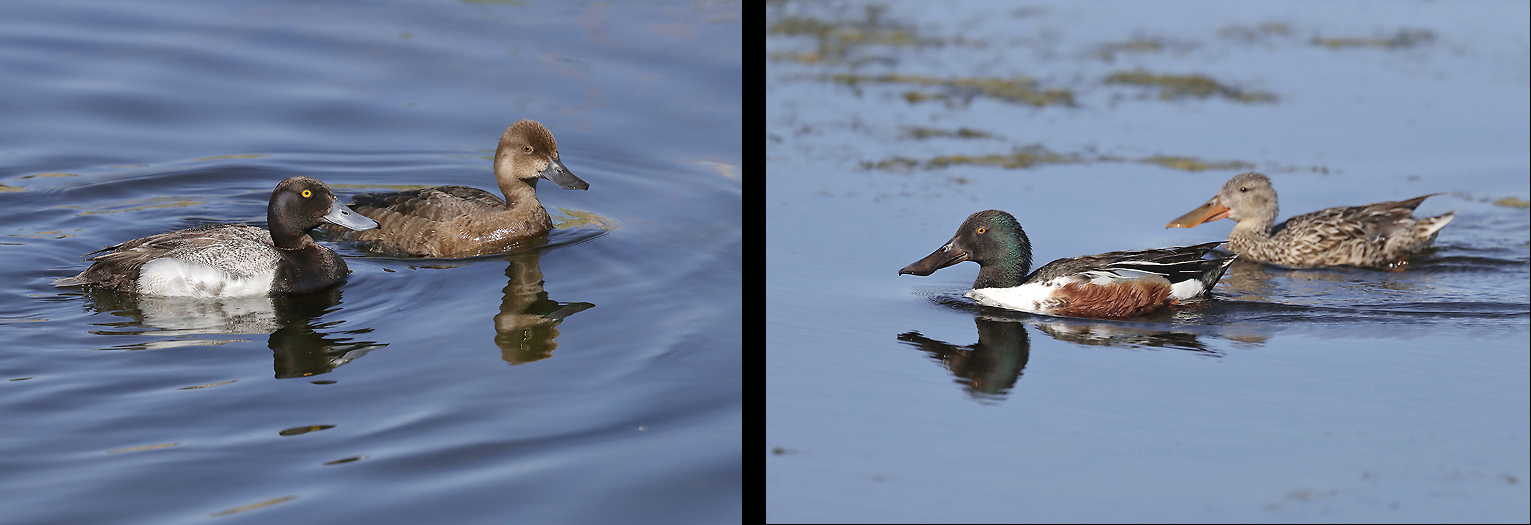
Lesser Scaup and Norhern Shoveler couple. These are also typical ducks in lakes of the taiga.
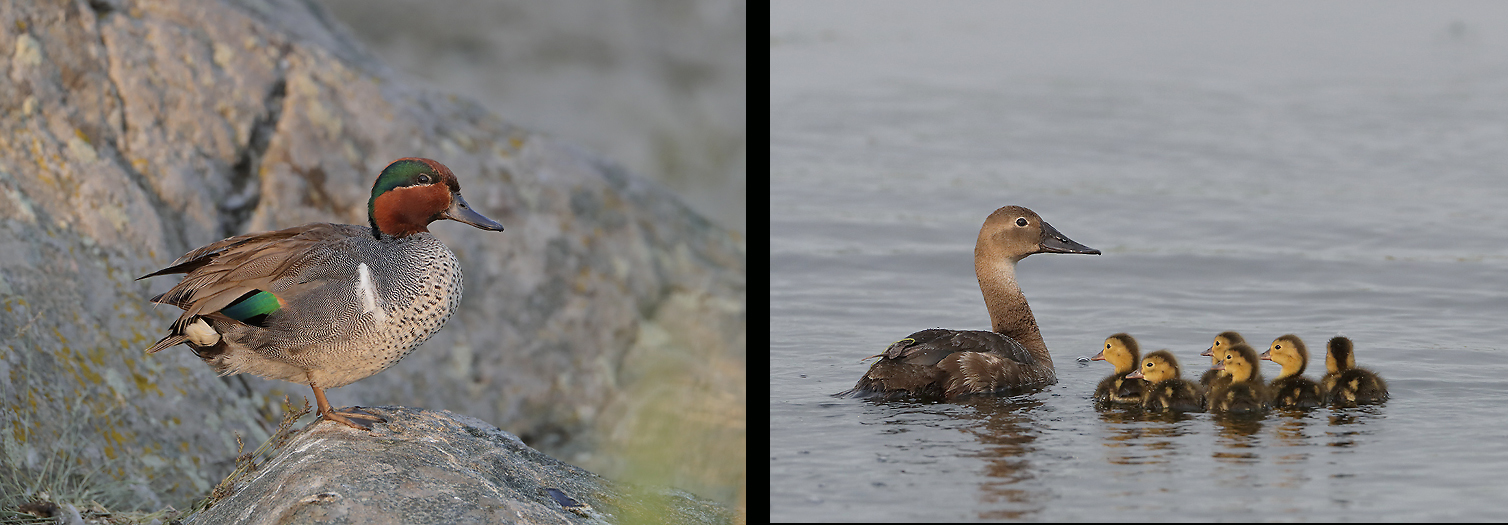
Green winged Teal (male) and Canvasback female with her flock of juveniles.
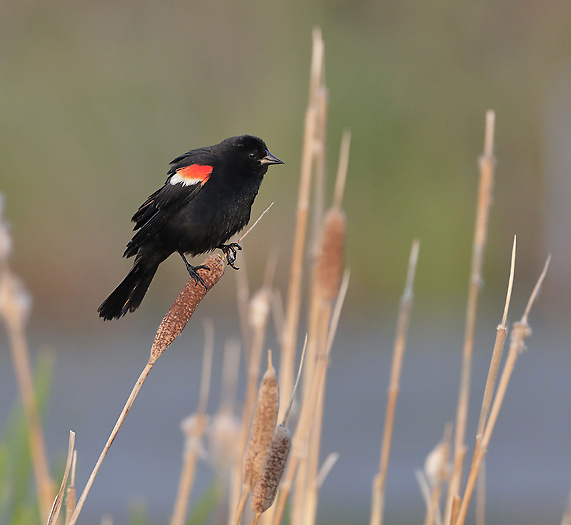
Red-winged Blackbirds are common on typical for i.e wetlands.
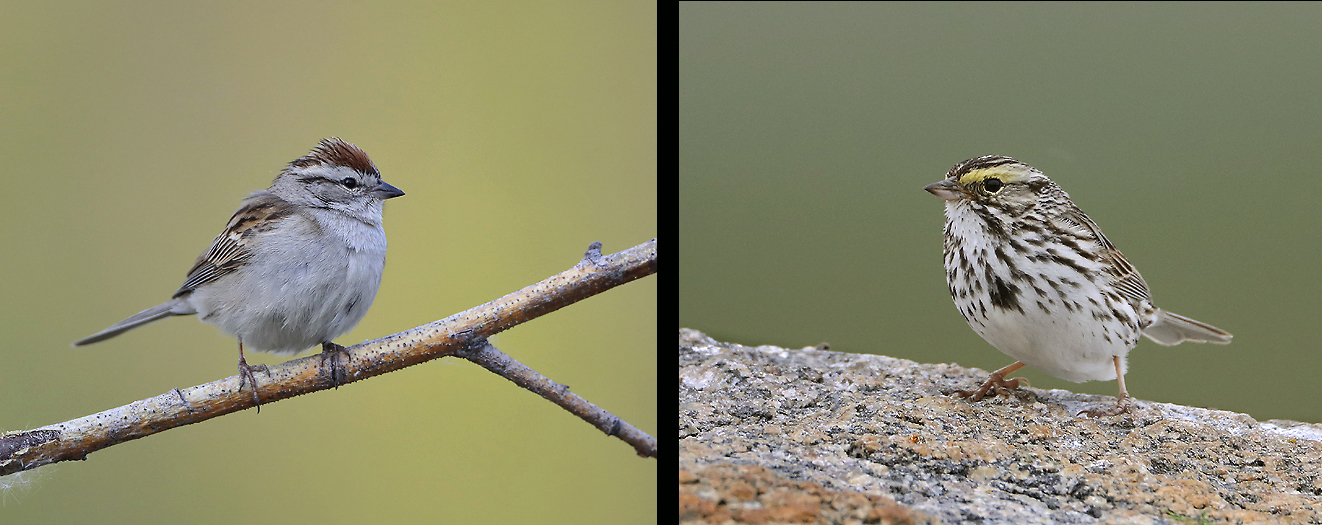
Chipping Sparrow and Savannah Sparrow is typical small birds here. The first one is at its northern distribution border.
PART 2. THE TUNDRA OF THE BARREN LANDS.
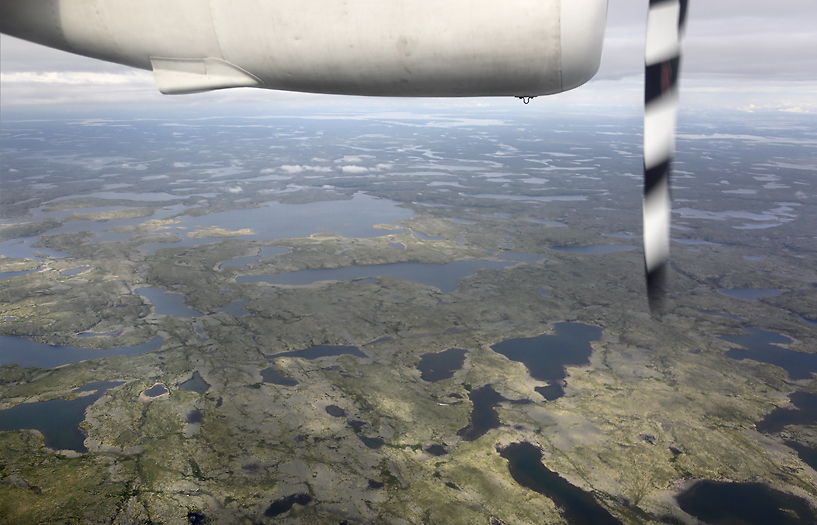
Along the way from Yellowknife to the final destination for starting this photographic trip. Barren tundra as far the eye can see.
From the air we observed that most lakes now are ice free, with the exception of some greater lakes. These ice covered lakes cause low clouds and the plane (Twin Otter) is forced to go below them. We are only some tens of meters above the ground even if we had 15-20 minutes left before landing. If the plane had gone above the clouds there where possibilities that we could not fly under them again to land without risk of sight loss with possibilities of impact to ground.
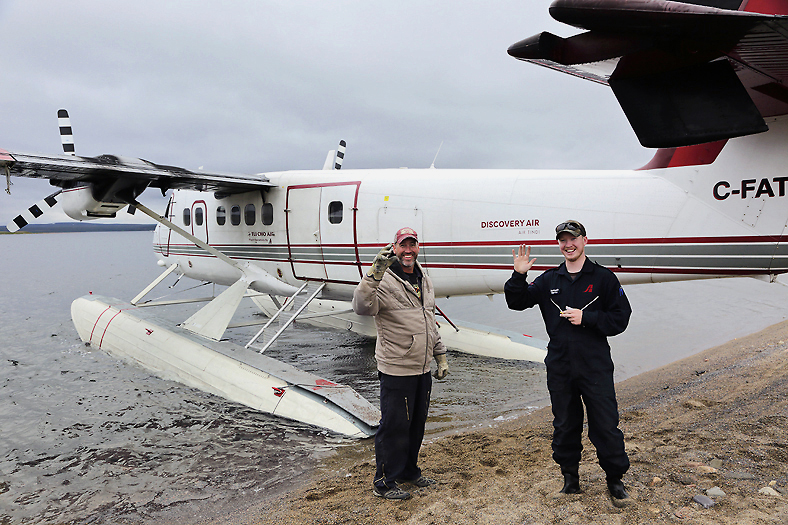
After near 2 hours in the air the pilots say goodbye to us. Together with a few Canadians I am now left alone at this huge wilderness plain for over 2 weeks. We are now in the upper part of the water system (380m above sea level) and will use canoes as transportation method downstream between selected areas of interest for us photographers.
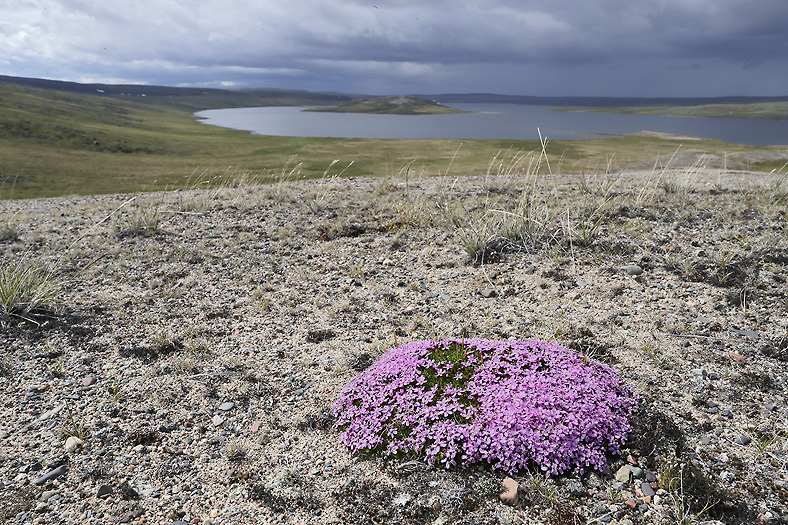
Wonderful arctic, -great to be there again.
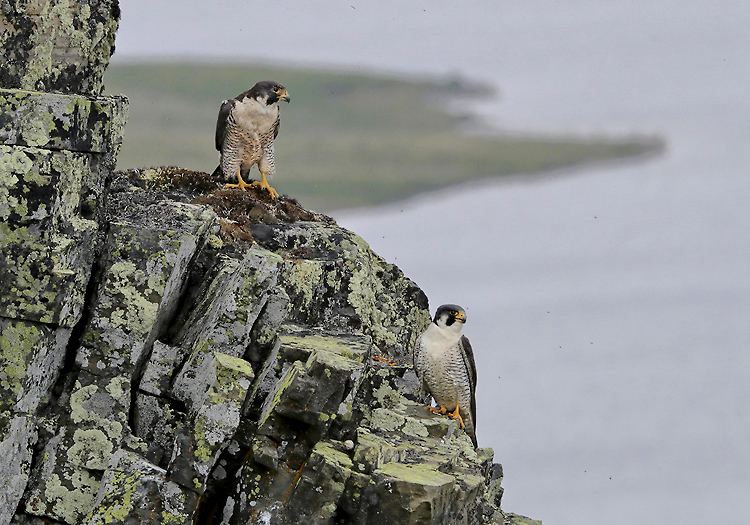
A site of nesting Peregrine Falcons of the American sub species “Tundrius” is not far away from our first camp. This arctic sub species show typically a very light breasted male.
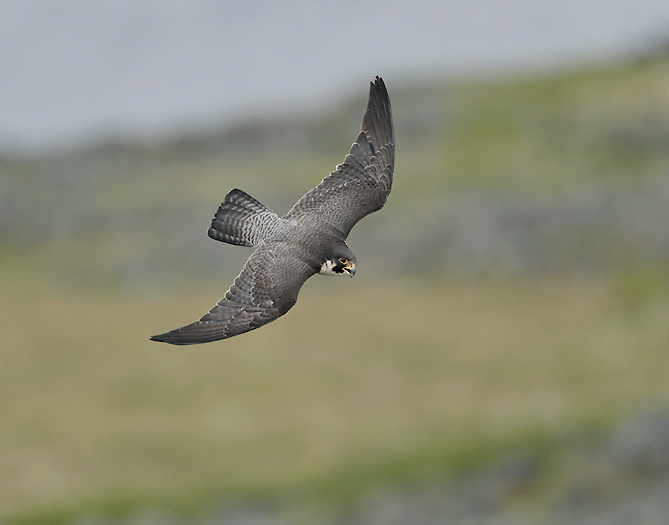
The Peregrines are as we know eminent in the air. For more new Peregrine Falcon images, please see the Peregrine Falcon gallery.
This first camp give us sightings of tundra Grizzly Bear and two Wolves that followed three Caribou on their migration south.
We clearly understand that we are at higher latitudes when we are surrounded by hordes of bloodthirsty mosquitos. Bug jackets on!
Other common birds of the tundra here are Harris`s Sparrow and White-crowned Sparrow. The Harris`s Sparrow is Canada`s only endemic breeding bird.
After a couple of days we head downstream in our canoes, -some headwind in the wide areas of the river force us to use real muscle power. Half a day later we arrive a remarkable archaeological site at the tiny islet of “Nadlok”. The islet is placed in the middle of the river and the name means “the place where dear cross”. Seeing the landscape it is very understandable. The islet is the only permafrost free land here, and is caused by the surrounding water on all sides. On the islet we see remnants of several hundred years old inuit camp sites used in conjunction with Caribou hunting. Meat was air dried and dug into the cool ground here and stored. Near the entire islet is covered with Caribou bones and antlers as deep as at least half a meter down into the ground. The indigenous people used this place at least from the start of “The little ice age” around year 1450 A.D. when the sea ice in the Coronation Gulf and Bathurst Inlet stayed all year around and gave less sea mammals to hunt.
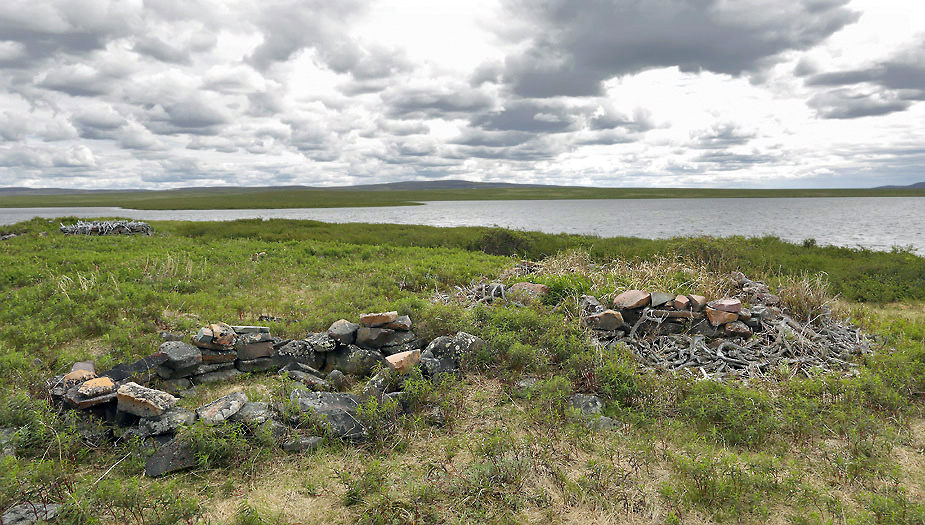
Ancient dwelling place on Nadlok. The antlers was original placed on top of the stones to make the wall higher, thereafter hides was placed over.
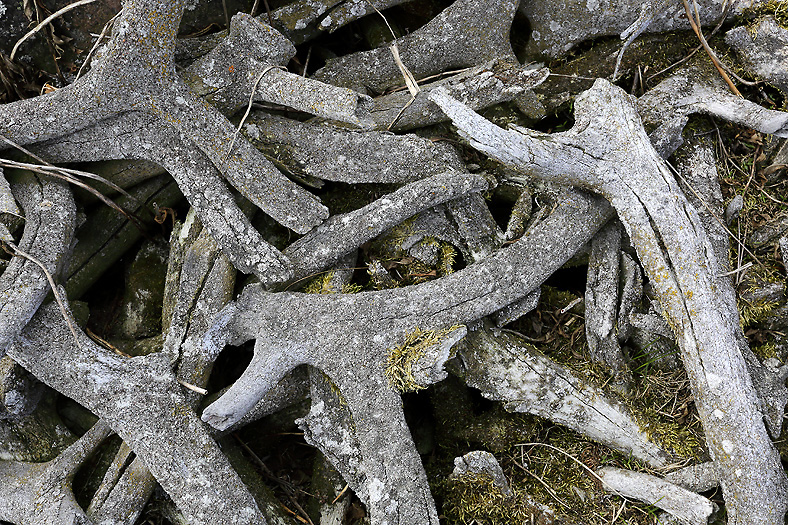
Some of these antlers on Nadlok are probably hundreds of years old.
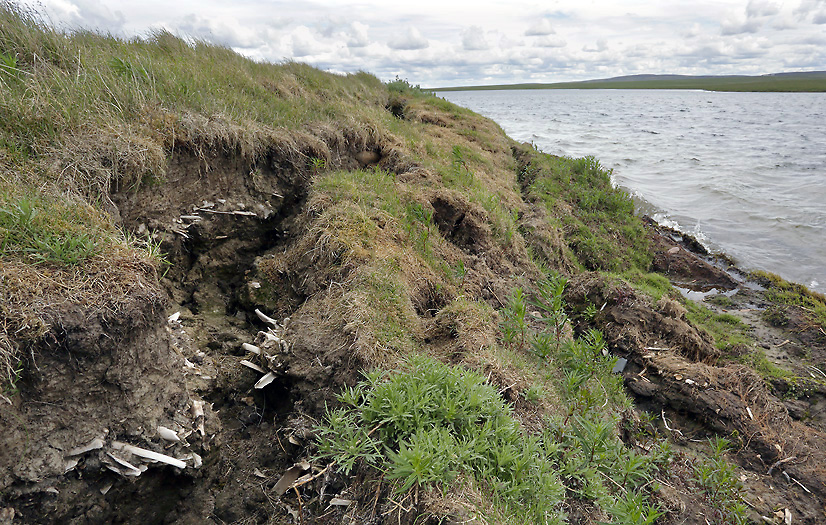
Caribou bones on Nadlok appear as the earth bursts and erodes away. For more images of arctic archeological sites, please see the Archaeological Sites gallery.
This upper portion of the river is in general the most productive, and quite rich of birds as well. Common birds here are Long-tailed Ducks, Northern Pintail, Northern Shoveler, Herring Gulls, Ringed-billed Gulls, Arctic Terns, Red-necked Phalaropes, Semipalmated and Least Sandpipers etc.
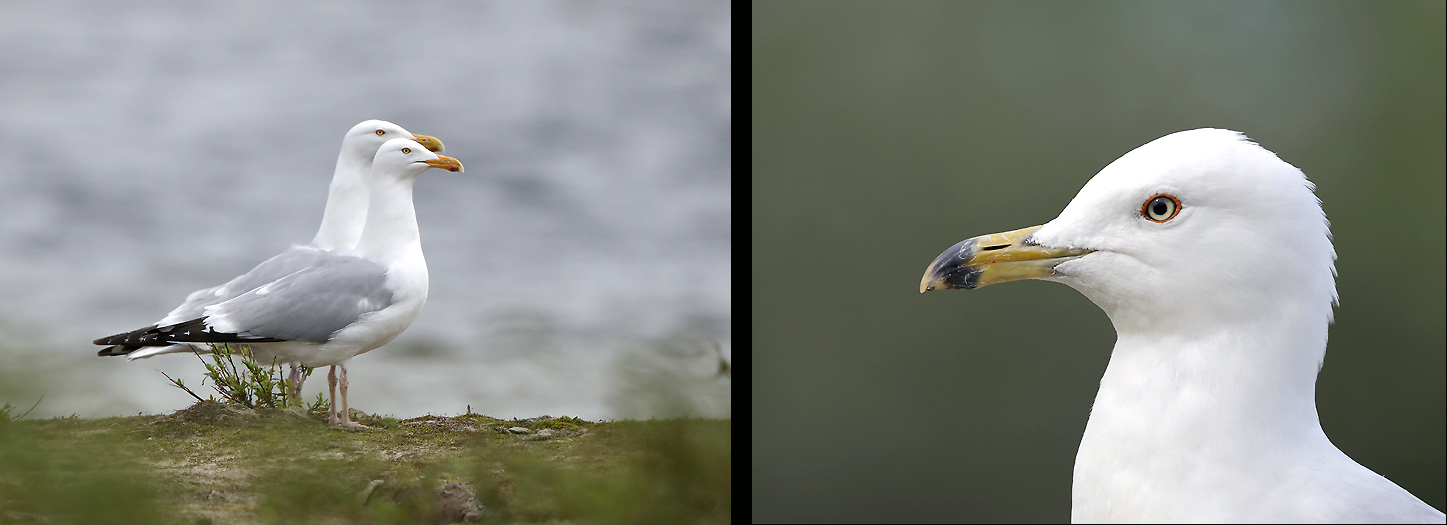
Herring Gull (“Smithsonian”) and head portrait of Ring-billed Gull.

Northern Pintail (males) and Long-tailed Ducks.
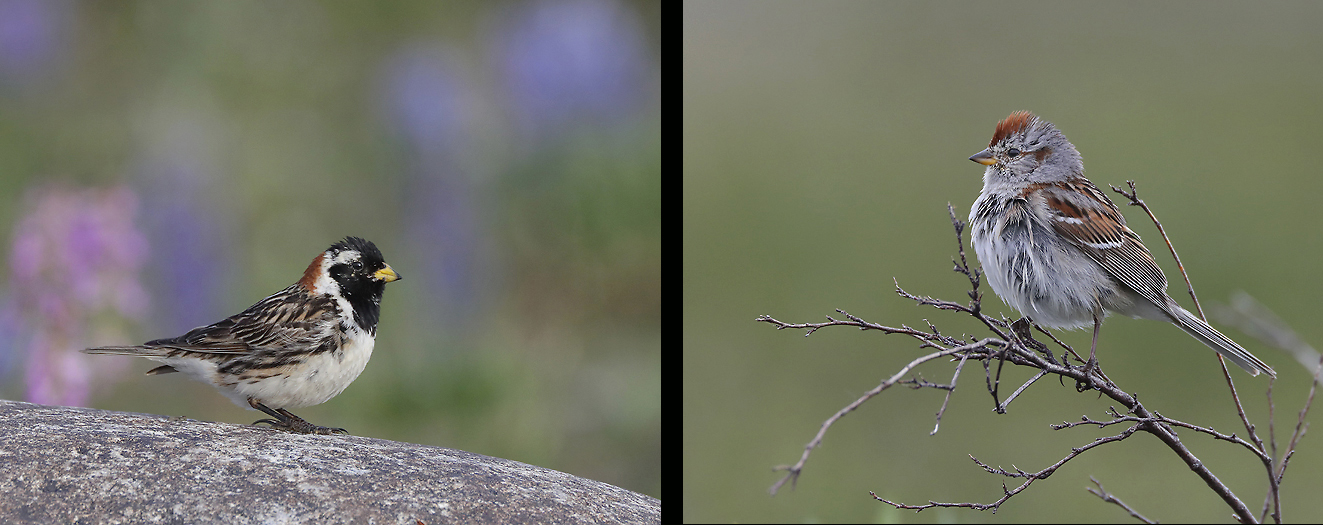
Lapland Longspur are also character species here, American Tree Sparrow is sporadic observed.
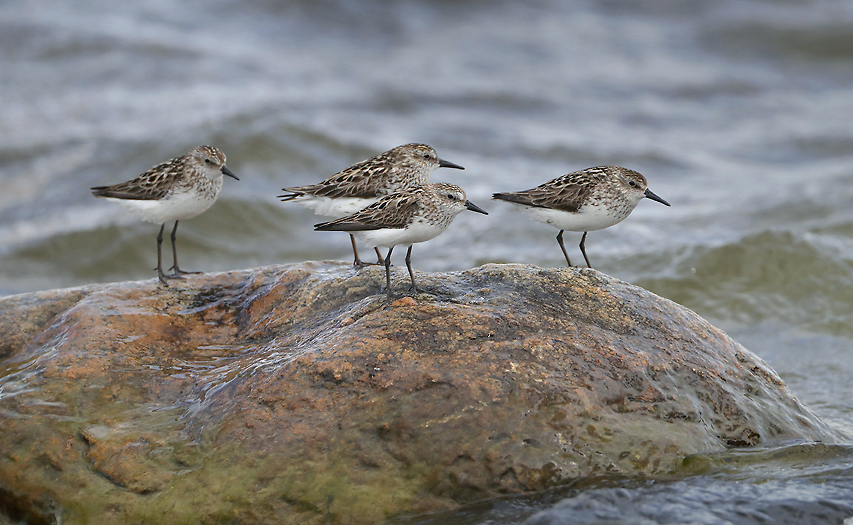
Semipalmated Sandpipers are the most common of the waders here. These photographed at Nadlok.
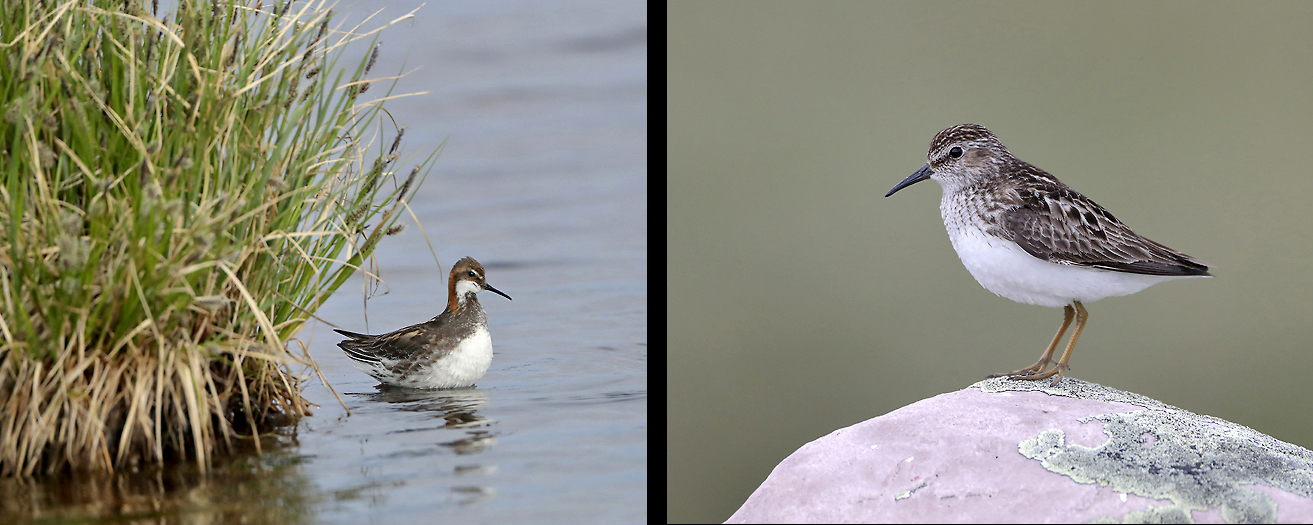
Red-necked Phalarope and Least Sandpiper.
After some days we continue our journey downstream. The river is calm here and with few rapids. We keep our eyes both on the river itself and along the sides in case of interesting wildlife shows up, but nothing exciting to see today.
We have a rest on a small island covered with Arctic Lupins before we continue further on.
Later this day we arrive one of our planned main campgrounds. There should be chances of seeing Wolves as they frequently den here. We drag the canoes high up on land only 10 meters before the biggest rapids of the river in the upper part. After setting up our tents we hike around in the area. We see lots of Caribou tracks (mainly old), and also fresh Grizzly and Wolf tracks.
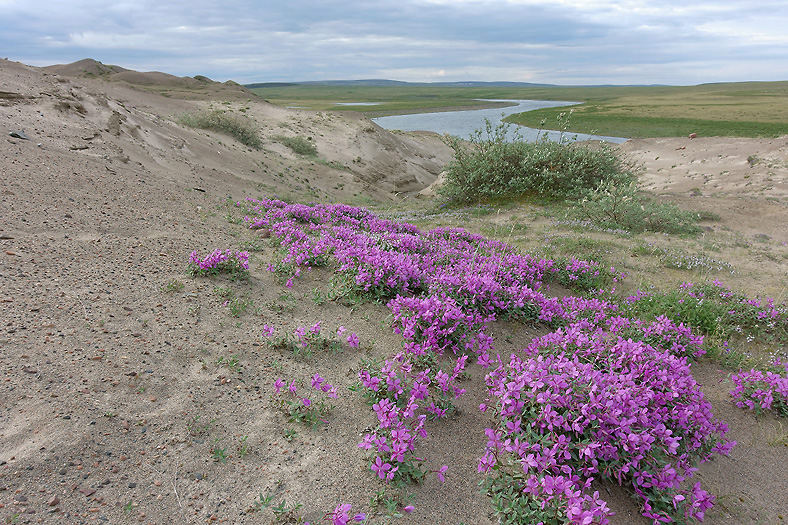
The landscape here is stunning, with huge gravel/sand dunes and clear traces of other glacial deposits. Dwarf Fireweed (Willow Herbs) is growing right up from the sand dunes.
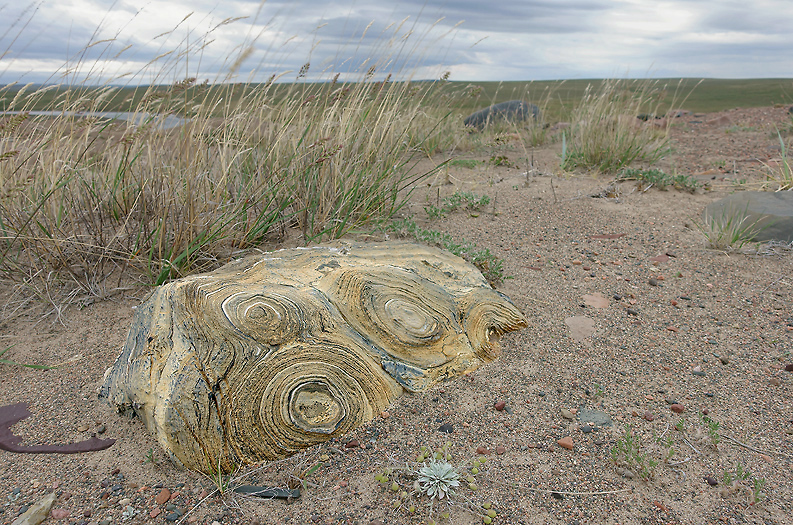
Grinding of rocks caused by moving sand from the huge dunes here. Different hardness of the rocks cause interesting patterns.
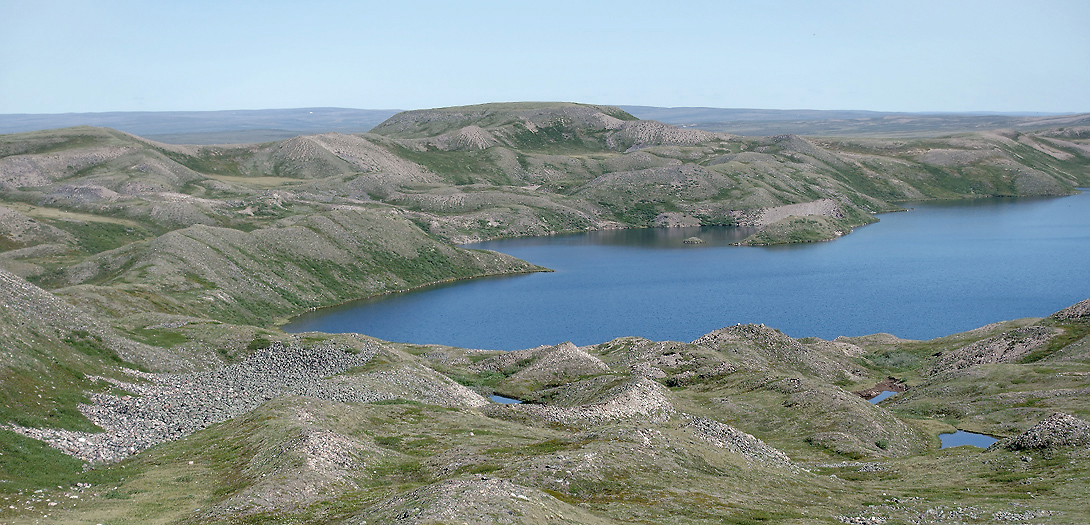
Part of this beautiful landscape.
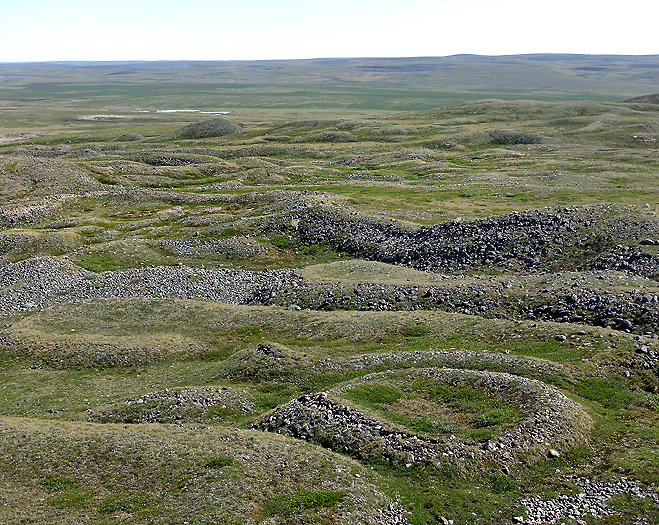
Deposits from the last ice age that ended approximately 12.000 years ago.
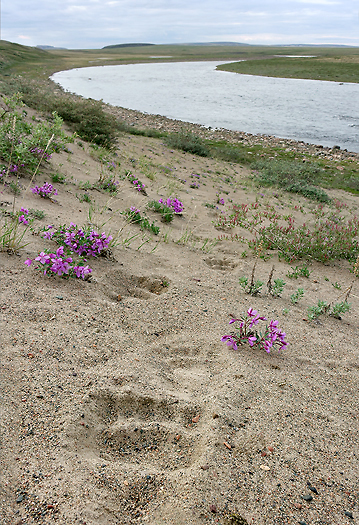
A grizzly Bear recently passed by here.
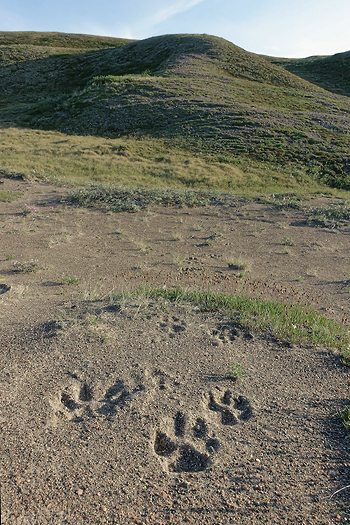
The area is also obvious occupied by Wolves. Fresh tracks of two of them.
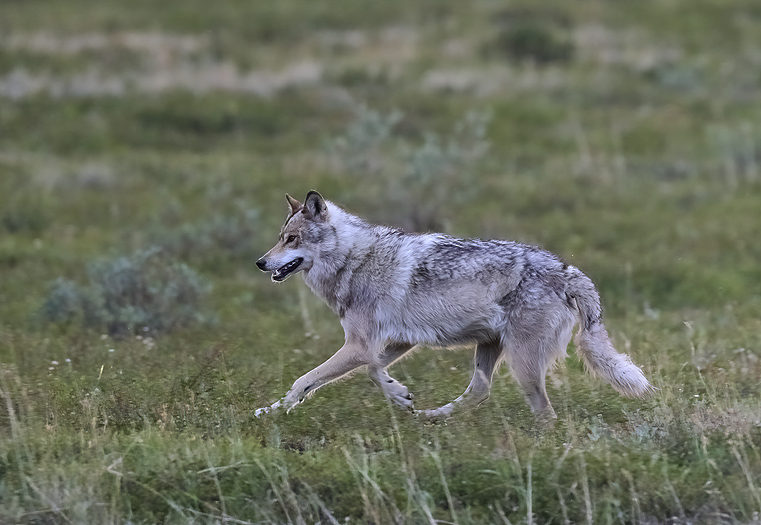
Adult Wolf. The Wolves here in the Barrenlands differ in color from grey to near white. The number of Wolves have been reduced due to the decline of the Caribou population.
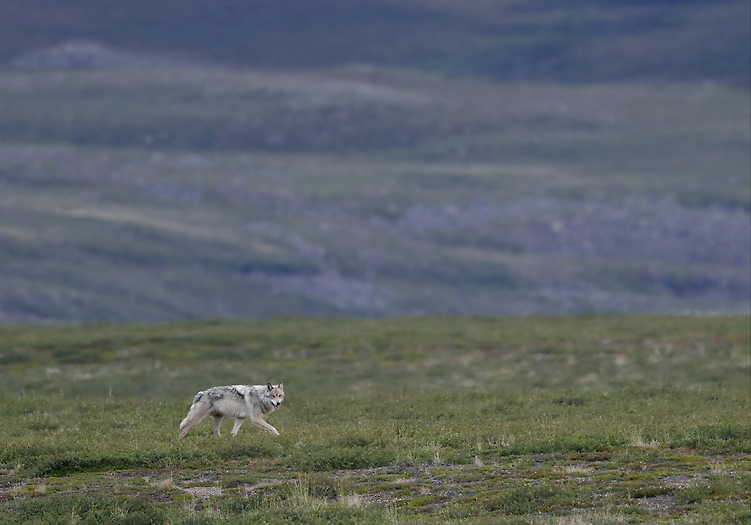
Adult Wolf in big landscape. For more new Wolf images, please see the Wolf gallery.
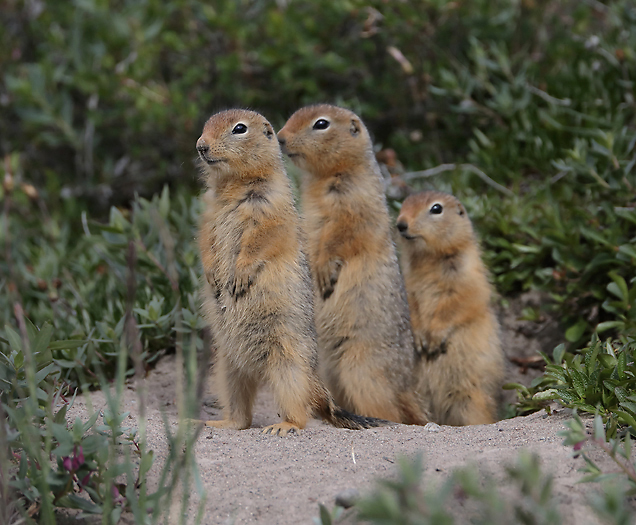
Three good friends. The Arctic ground Squirrels are common all over the Barrenlands. These animals have the deepest hibernation of all mammals on earth, where i.e. the core body temperature goes down to -3°C, and with only one heart rate drops to 1 BPM during this time. Every third week the body temperature increases to normal (36,4°C) for a period of 12-15 hours before dropping low again.
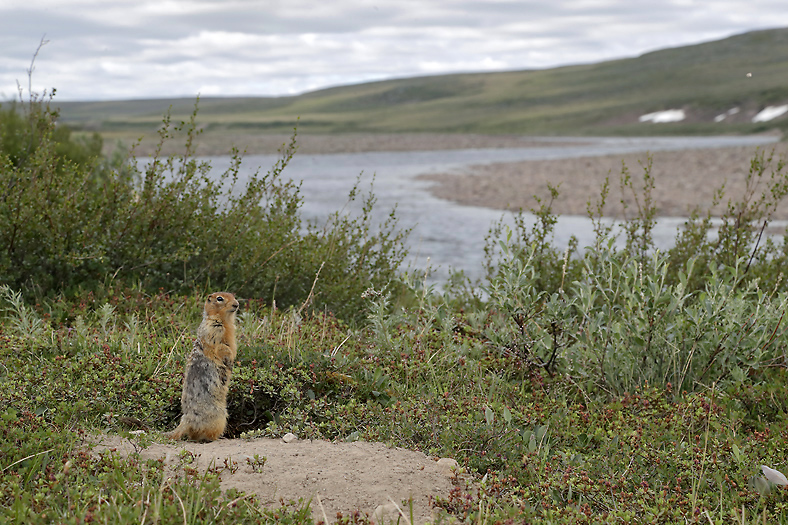
Arctic ground Squirrel. For more images of these interesting mammals, please see the Arctic ground Squirrel gallery.
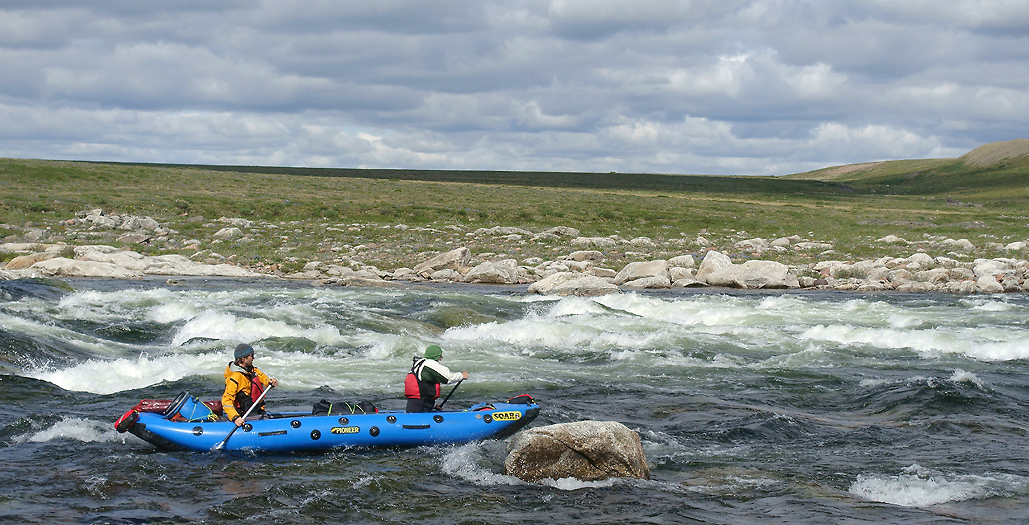
The journey continues. The SOAR canoes are steady and well suitable for the task.
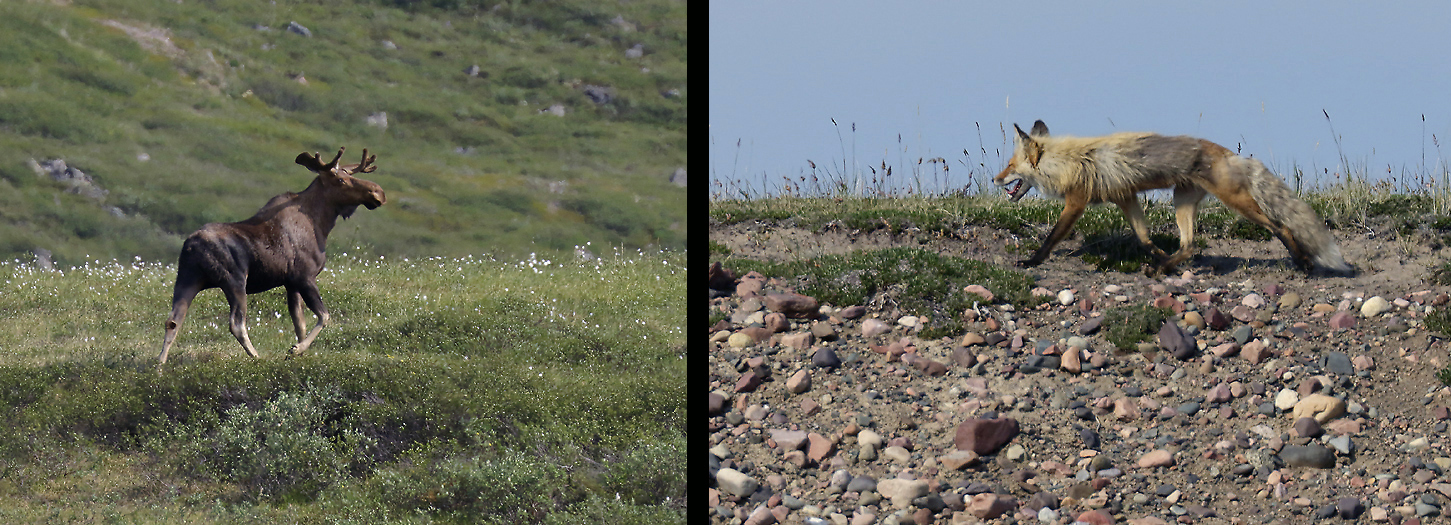
Moose and Red Fox along the route. For more images of Moose and Red Fox, please see the Moose gallery and the Red Fox gallery.
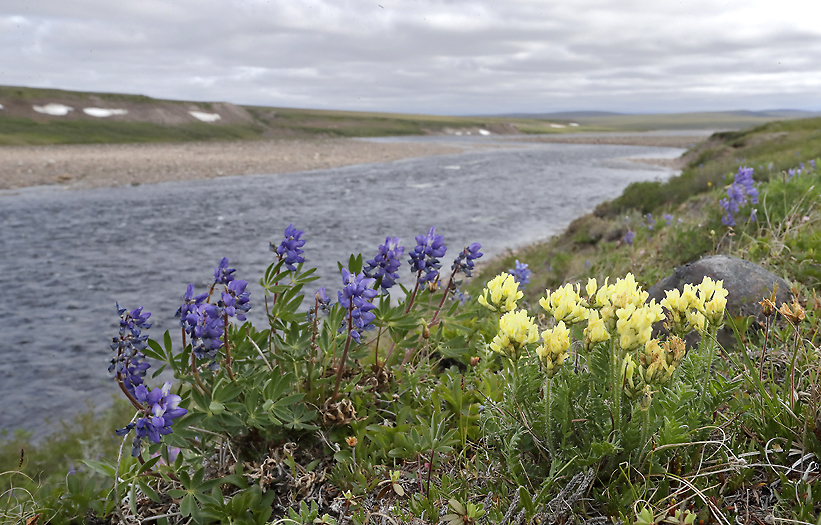
A few weeks a year the landscape here lightens up with beautiful vivid colors. Here Arctic Lupin (left) and Field Locoweed (right).
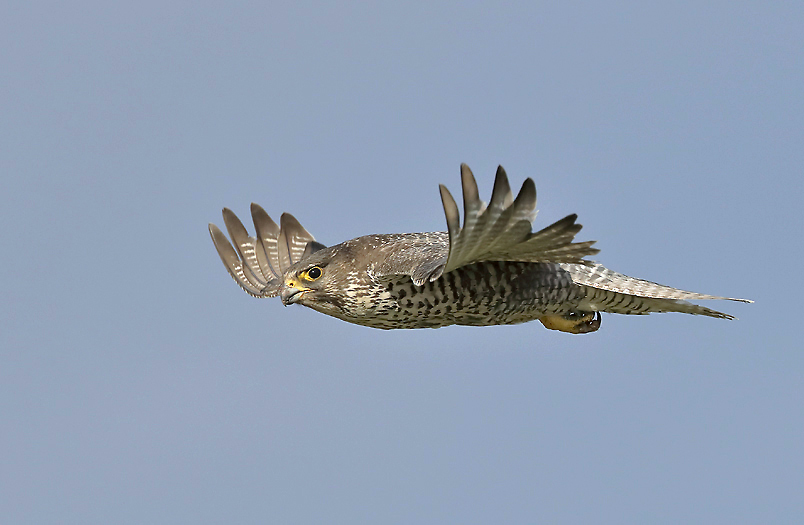
Some reddish cliffs along the way was inhabited by Rough-legged Hawks, Peregrine and Gyr Falcons.
The Gyr Falcons here used to be white phased, -now the site is inhabited by grey-phased. Here the female Gyr Falcon. For more new Gyr Falcon images, please see the Gyr Falcon gallery.
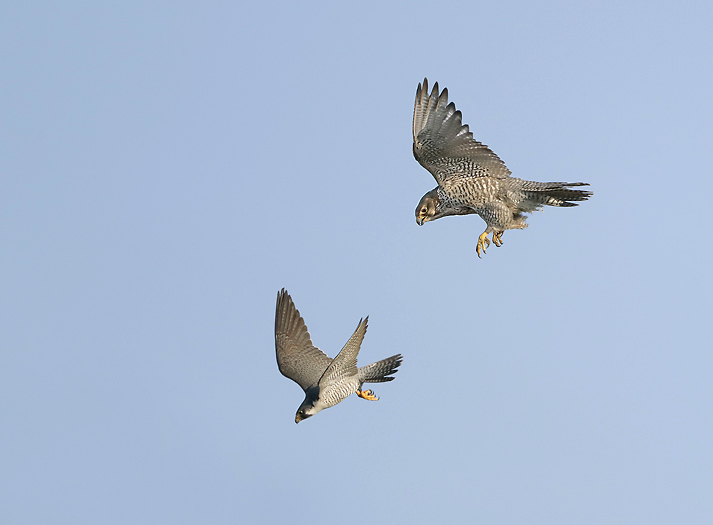
Peregrine Falcons nests only 100-150m away from the Gyr Falcons, and with regularly confrontations.
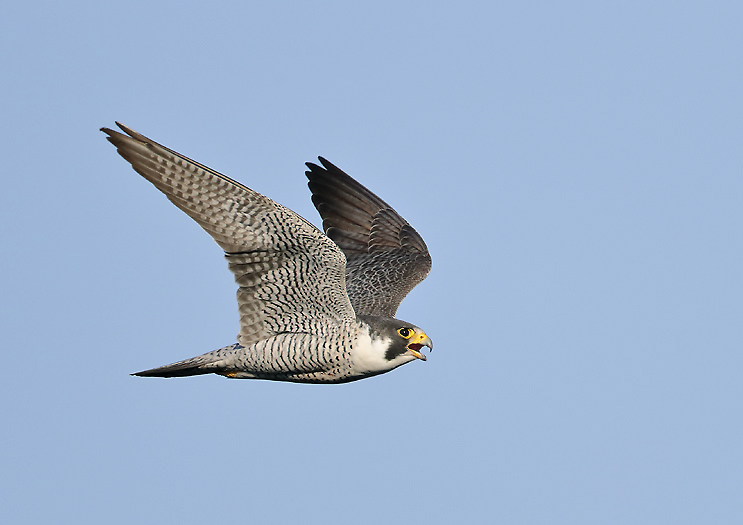
Male Peregrine Falcon (subspecies “Tundrius”).
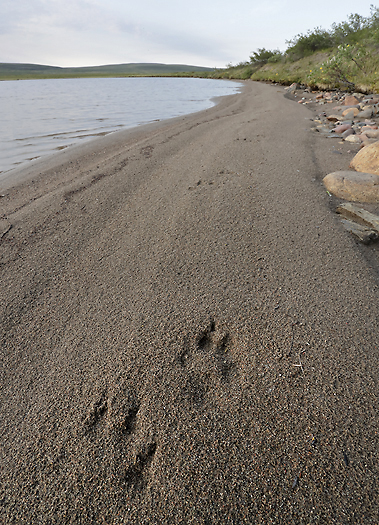
The river widens out now and then. On the shore here we see more Wolf tracks. A white Wolf shows up, -and disappear. Birdlife is also aboundant.
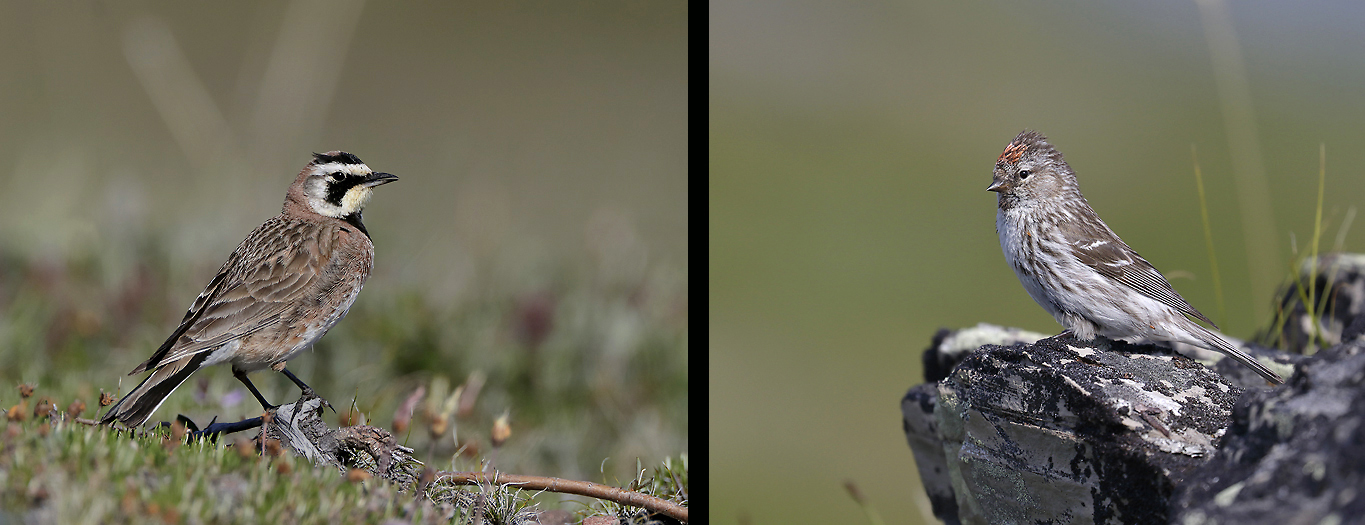
Horned Lark and Common Redpoll (Hoary Redpoll is also occurs).
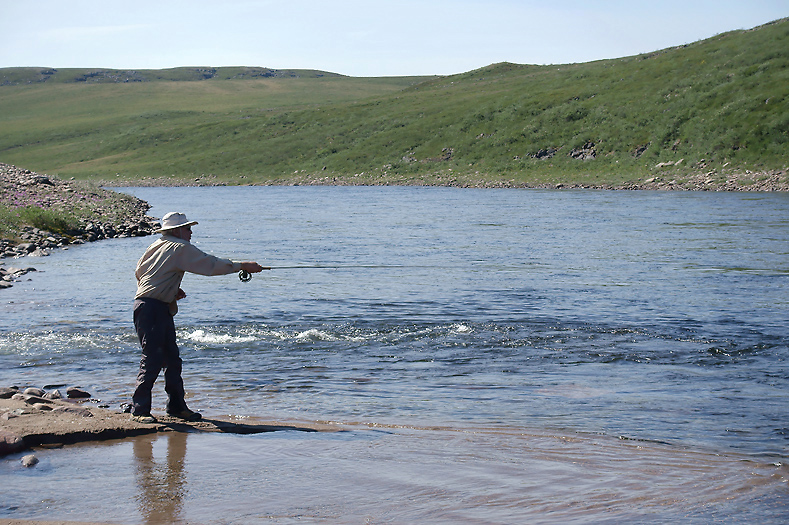
This river is also great for fishing. Jim got i.e. a 7kg Lake Trout after only a couple of casts with his fishing rod.
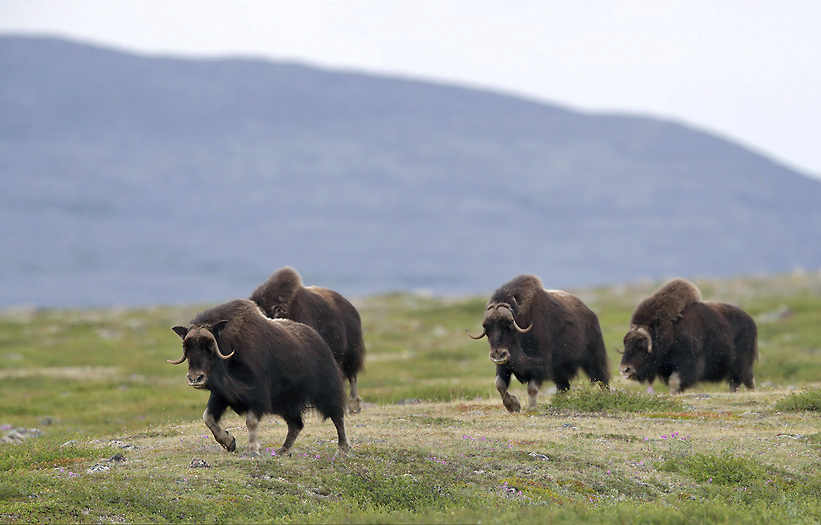
This huge land also inhabit Muskoxen. This herd contained 25 animals (including 2 large bulls and 9 calves). For more new Muskox images, please see the Muskox gallery.
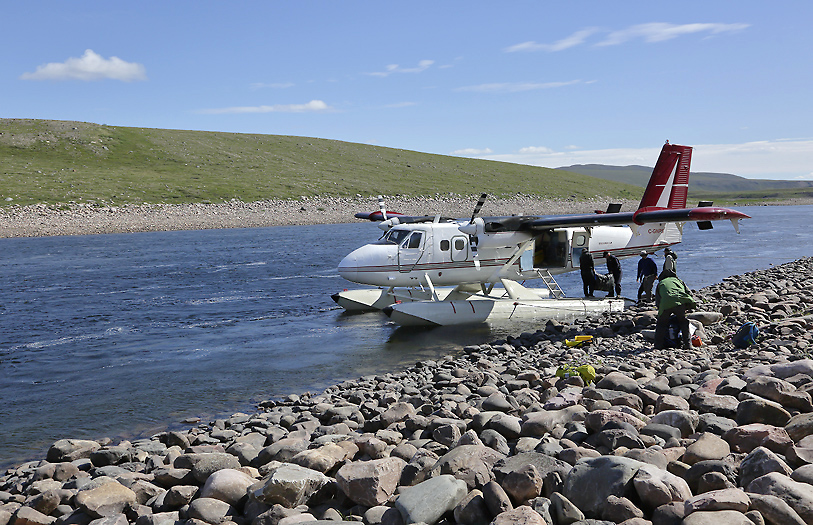
Ready for the return! Not far away from where the topography changes to a much more rugged and mountainous terrain we are picked up on the river. The wildlife is poorer on this last part of the river, -so we had earlier decided not to spend time there at all. The pilots had some problems finding us, -and the plane arrived Yellowknife 7 hours after take-off there this morning for our pick up.
END.
________________________________________________
________________________________________________
Below and above the treeline, -southern Norway, late May-2017.
Spring has come and will soon go over in summer. This is an exciting time with high activity among the wildlife. This year the activity is above average for some species due to high density of rodents present.
For over a week I have been out in the field documenting interesting species both below and above the treeline. Most of the snow have disappeared below the treeline and the landscape is becoming more and more green for each day. Many birds have got their eggs hatched by now. Above the treeline there are still considerable amount of snow, and many lakes are covered by ice. Most rivers have however opened up and the snow melts quickly, especially on two of the days in late May with heat records for the month several places in southern Norway.
Here are a selection of images from the trip:
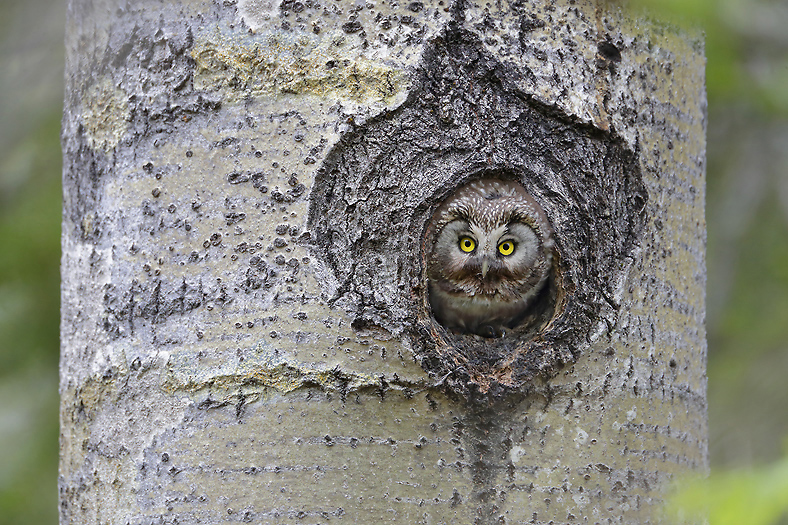
A curious Tengmalm`s Owl is looking out of it`s nesting place in an aspen tree.
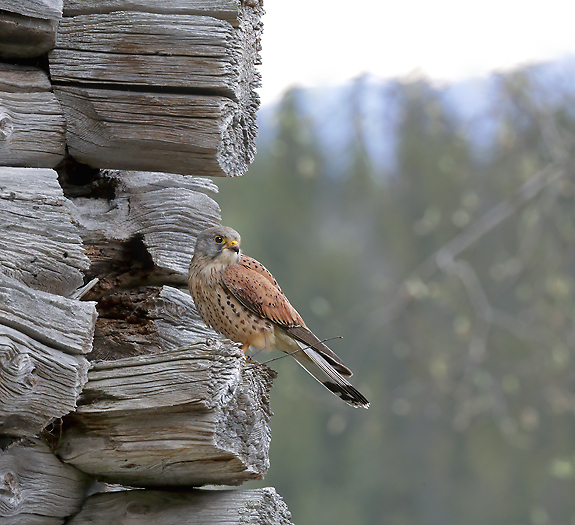
A male Kestrel by its nesting place on an abandoned mountain farm with existing buildings from the 17th century.
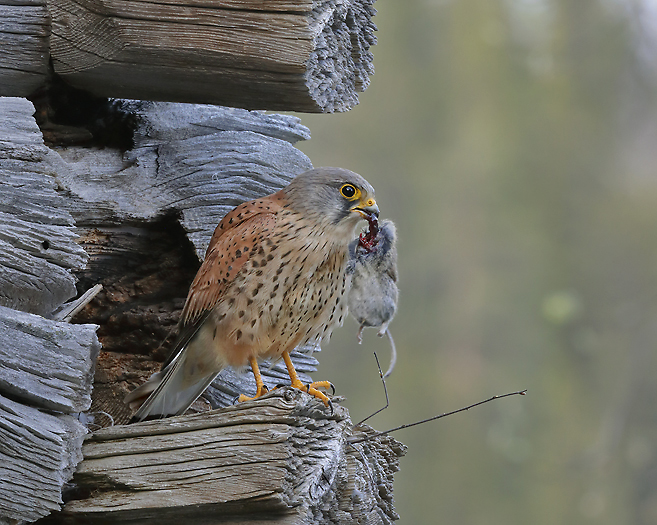
The male Kestrel with prey. For more images, -please see the “Kestrel gallery”.
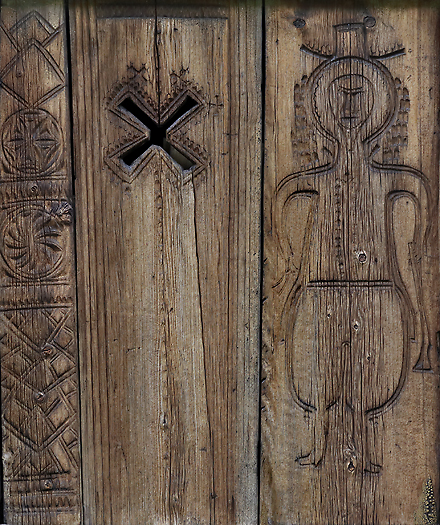
Part of the decoration on a door at the oldest building of the abandoned mountain farm, -the storehouse which dates back to the year 1670.
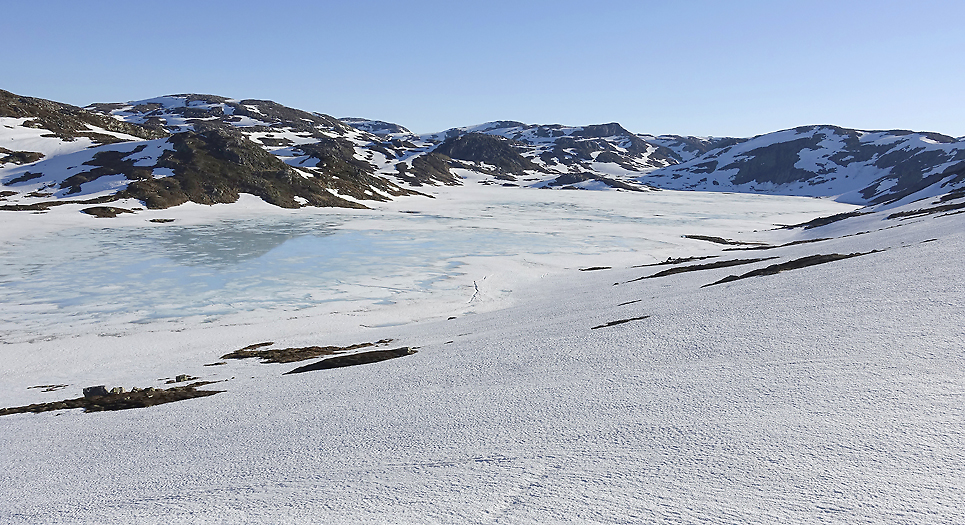
Summer is not quite here yet as we can see.
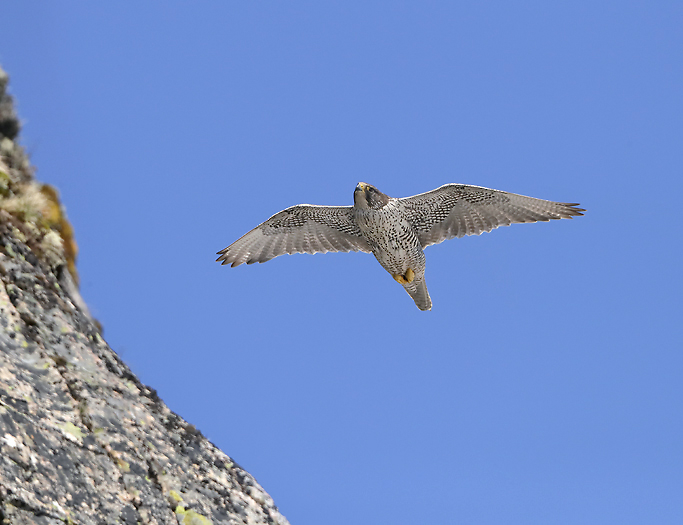
The Gyr Falcon is a fantastic bird. This strong beauty can spend its entire adult life in the territory up in the mountains. The winters can be extremely hard with temperatures below -30deg.C with storms and gale winds for weeks.
Gyr Falcon in attack. They normally catch their prey in flight, -so they will now and then have to scare the prey up in the air before hunting it down. The favorite prey to the right.
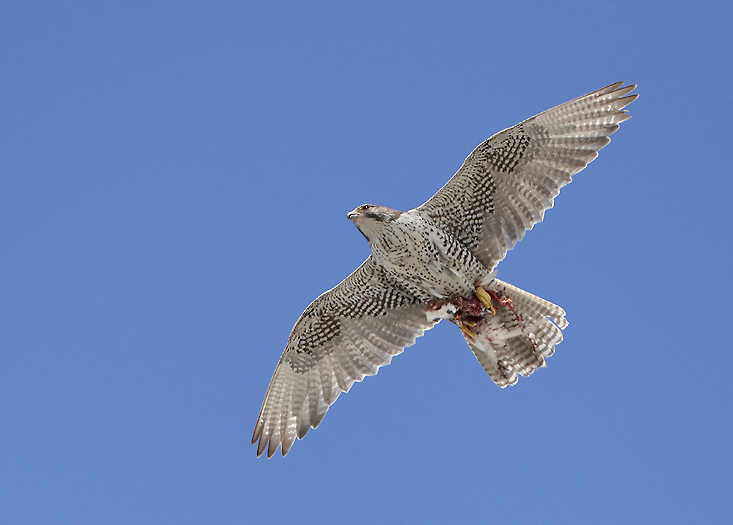
Gyr Falcon female with prey (Ptarmigan). Ptarmigan is by far the most common prey for this falcon. Unfortunately the Gyr Falcons have declined in Scandinavia the last decades due to reduced populations of Ptarmigans (as well as other reasons). For more new images of the Gyr Falcon, please see the “Gyr Falcon gallery”.
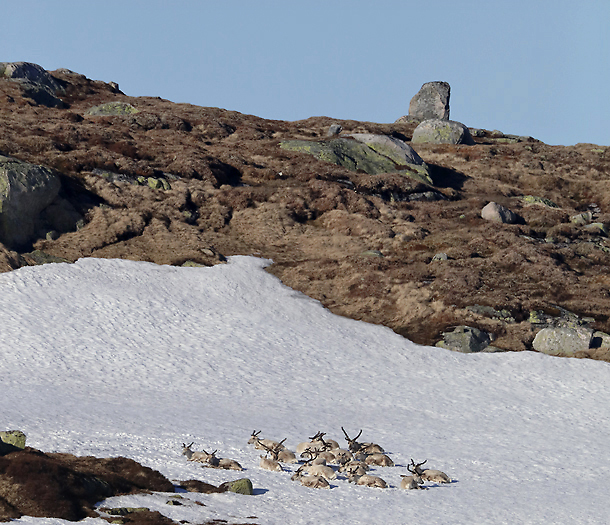
A herd of Reindeer resting far away on a snow patch in one of the warmest days in May month ever recorded in southern Norway. Norway (in fact only the southern-most 3rd part) is the last country in Europe that still have remains of these animals from the last ice age. For tens of thousands years ago they roamed all over Europe.
We must really take good care of them with ever increasing temperatures on our globe.
More Reindeer images can be seen in the “Reindeer gallery”.
END.
________________________________________________
________________________________________________
Images from Norway`s extreme northern border, March / April-2017.
Late March up north at 70 degree latitude is not winter, nor spring either yet. It is however a great time, because then we can have a taste of both seasons… To explore the wildlife at this time of the year we first want to stay in the woods of the huge taiga that cover Siberia and stretches further west to northern Finland and Norway.
March 25th we landed at Kirkenes airport, picked up a rental car and drove into the Pasvik valley. This valley is a relative narrow north/south arm between northern Finland in the west and the Russian Kola Peninsula in the east. Near the end of the road we divert from this and stay in an old loggers cabin near a frozen lake.
The area is known to hold Norway`s densest Brown Bear population, but also Lynx, Wolf and Wolverine can be found here, including typical taiga bird species. Due to that this is Sami land, -the populations of the latter mammal species are kept down by the indigenous people to protect their reindeer herds.
No electricity nor running water in the cabin makes life a bit cumbersome, but also wonderful basic.
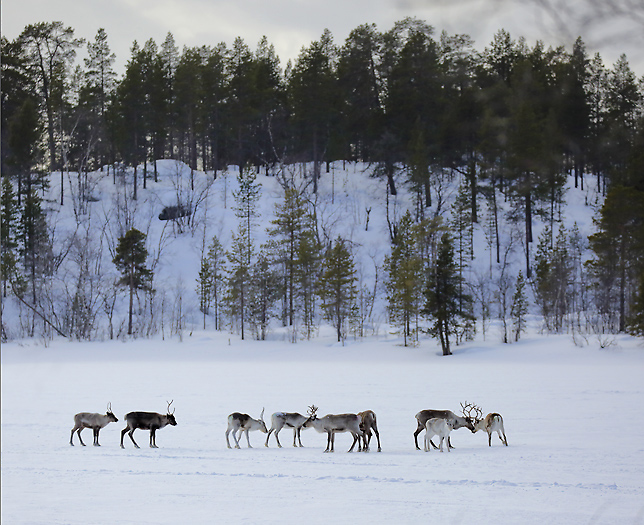
An early morning a small herd of domestic reindeer walks by on the frozen lake.
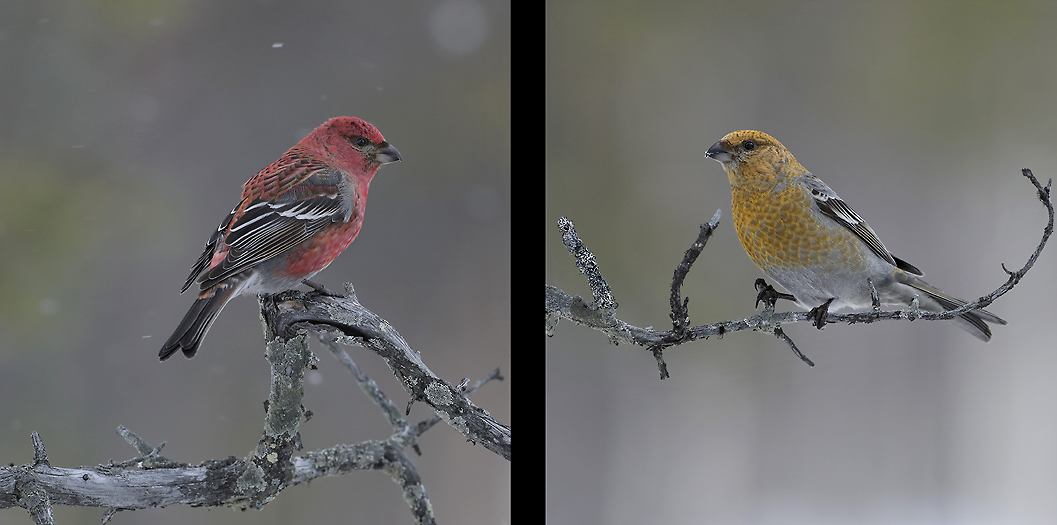
Pine Grosbeak (red male and yellow female) is a typical taiga species.
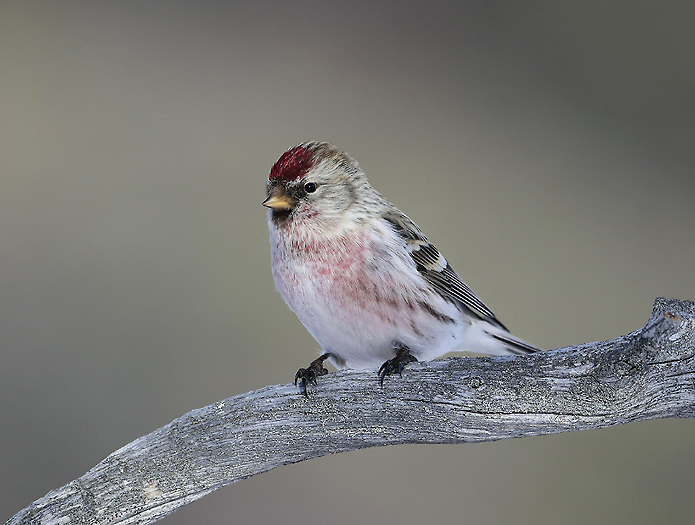
The beautiful Arctic Redpoll. This species is generally paler than the Common Redpoll.
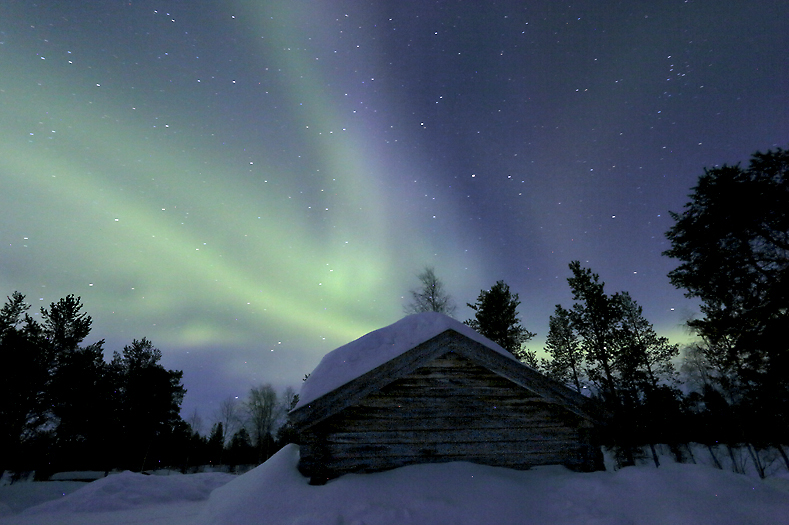
A touch of the Aurora Borealis the last night here showed another beautiful side of the northern territories.
We thereafter moved further north, crossed 70 degree latitude and ended up on the huge Varanger Peninsua. The northern part of this is in the arctic climatic zone. A good feeling to be in the arctic again (ho!). By the way, the word “arctic” is often misused to captivate interest for areas further south that what is real arctic…
Big parts of the coast here is ice free in the winter time. This caused by the “warm” water current originating from the Gulf of Mexico that are sending mild water masses across the North Atlantic Ocean and along the Norwegian coast as well as a tiny arm all the way up to the Svalbard archipelago. Siberian ducks find the area of the Varanger Peninsula (and adjacent fiords) attractive as winter habitats. In example, huge parts of Eurasian Steller`s and King Eiders population spend the winters here
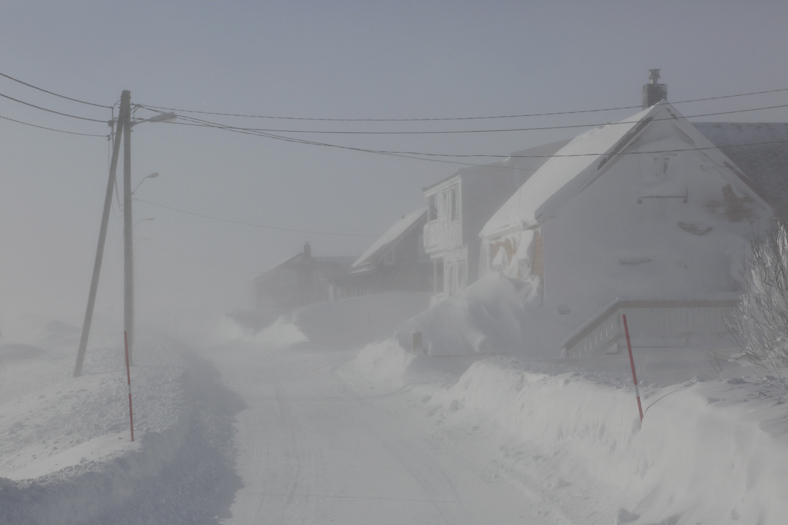
Stormy weather with whirling snow at the tiny settlement of Skallelv.
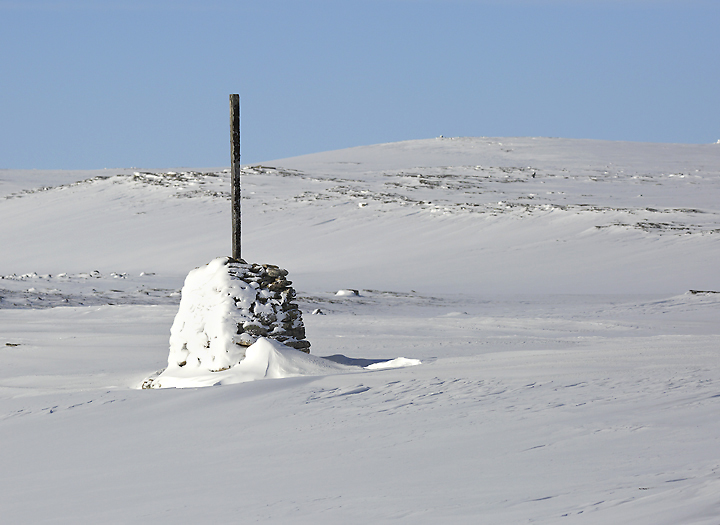
One of the many cairns in use from the 17th century with the purpose as road markers on the postal route across the Varanger Peninsula. This was once the toughest postal route in Norway and it could take up to 8 days to walk between Vadsø and Vardø.
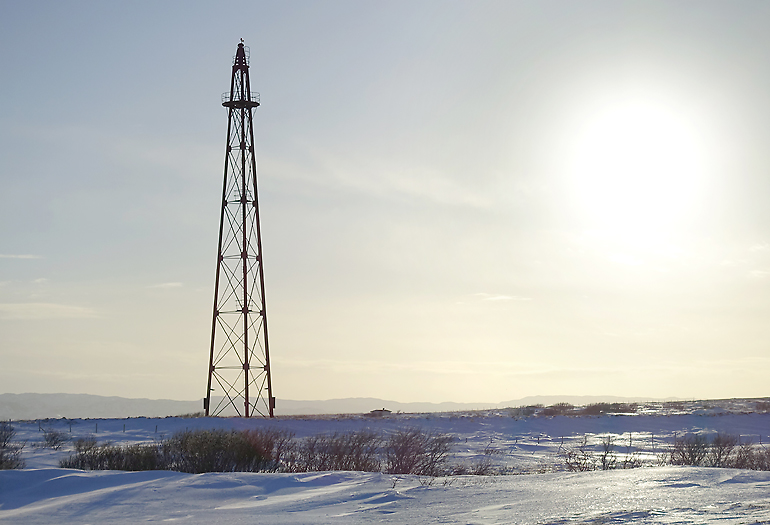
The anchor mast for airship was used by Roald Amundsen and Umberto Nobile when attempting to reach the North Pole in 1926.
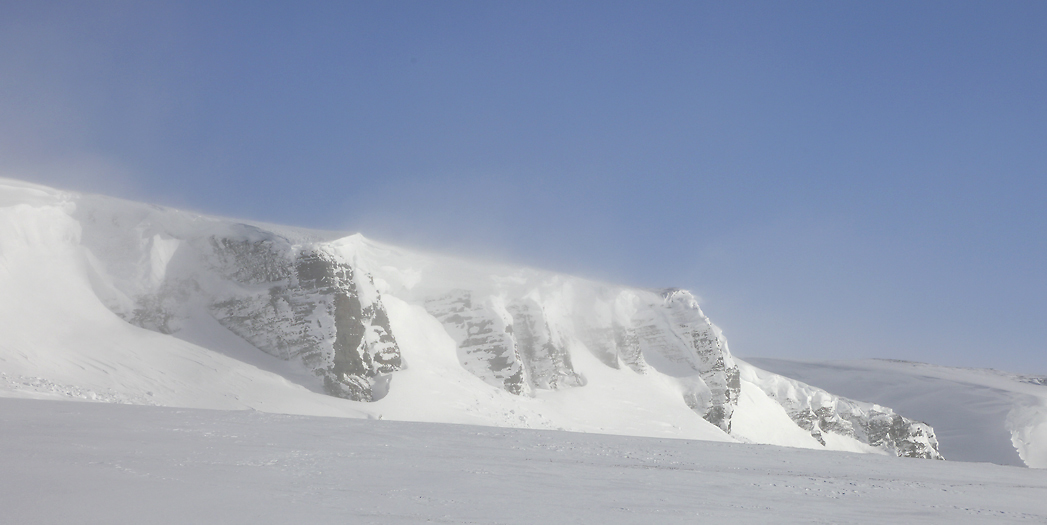
Gyr Falcon nesting cliff. The female can already be on eggs in late March.
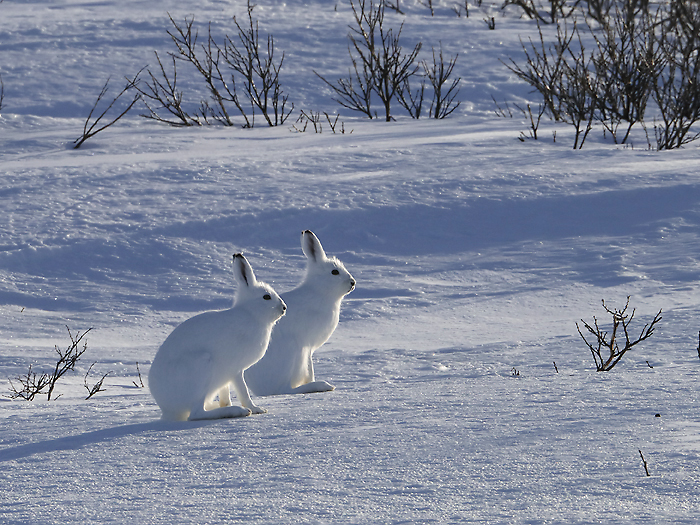
Mountain Hare is wide spread all over the country.
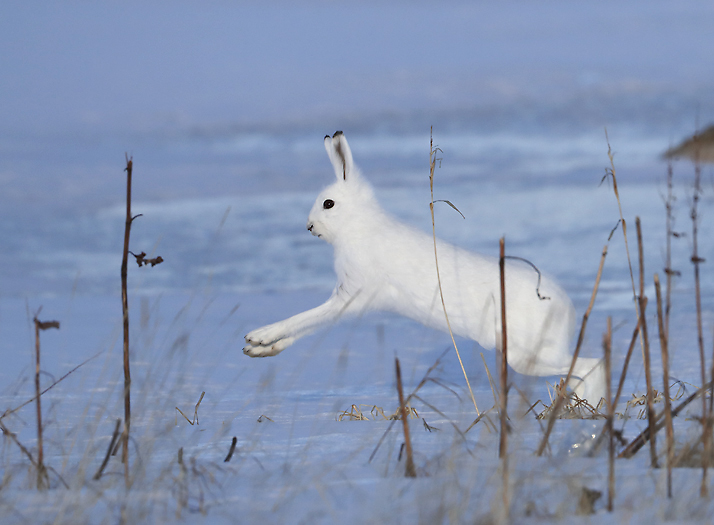
Mountain Hare. For more new photos, please see the Mountain Hare gallery.
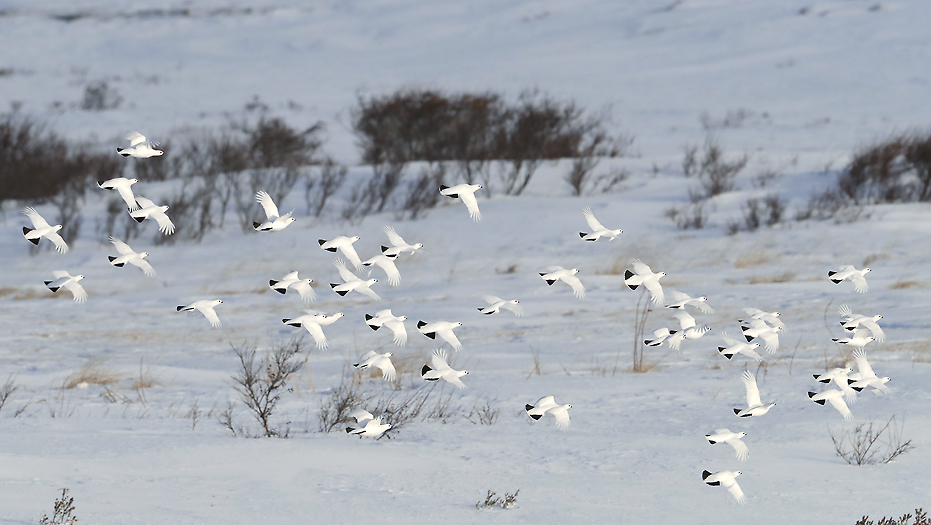
Even if the Ptarmigan and Willow Grouse population are in decline, we can some time see huge flocks of them. This is a part of a flock Willow Grouse.
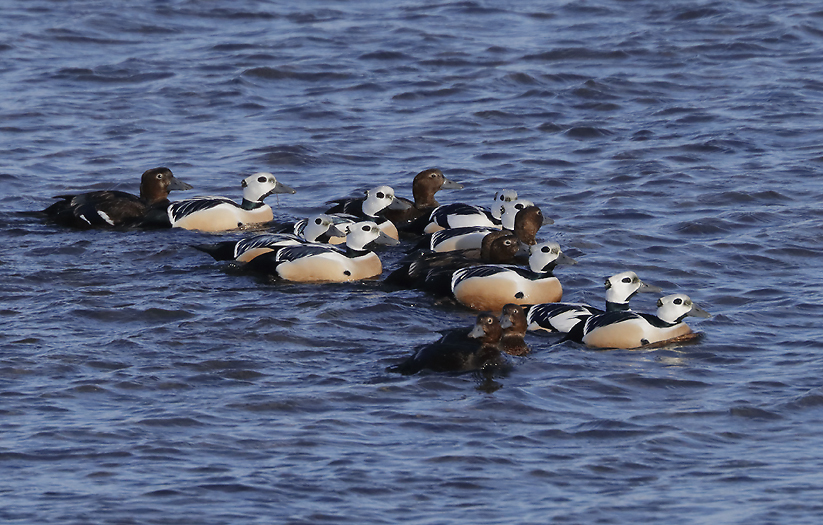
Huge parts of the Siberian population of Steller`s Eiders spend the winter in the fiords around the Varanger Peninsula.
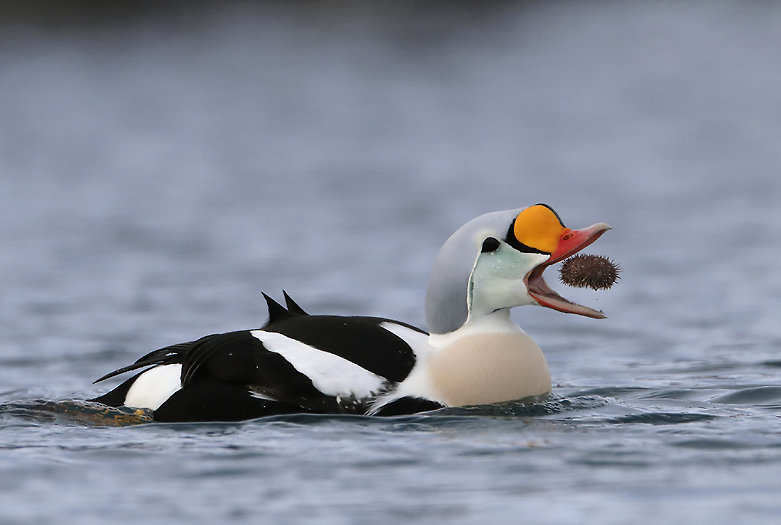
Male King Eider with a sea urchin. No crushing or chewing of this one before swallow.
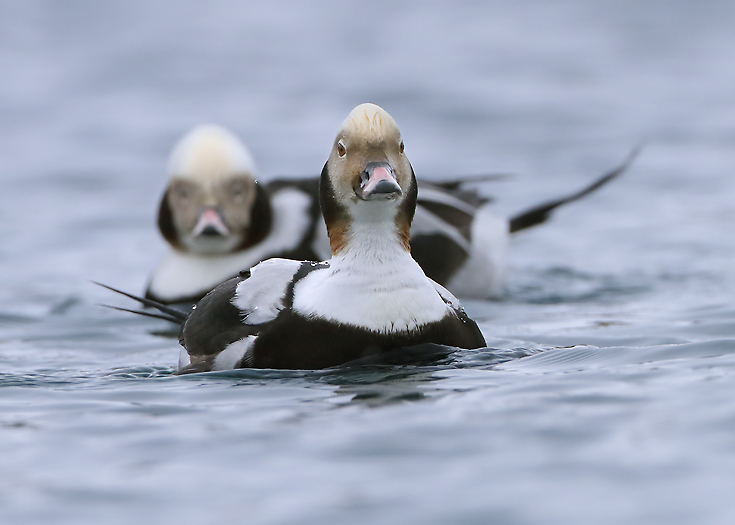
Long-tailed Ducks are also a common bird in the fiords here at winter time.
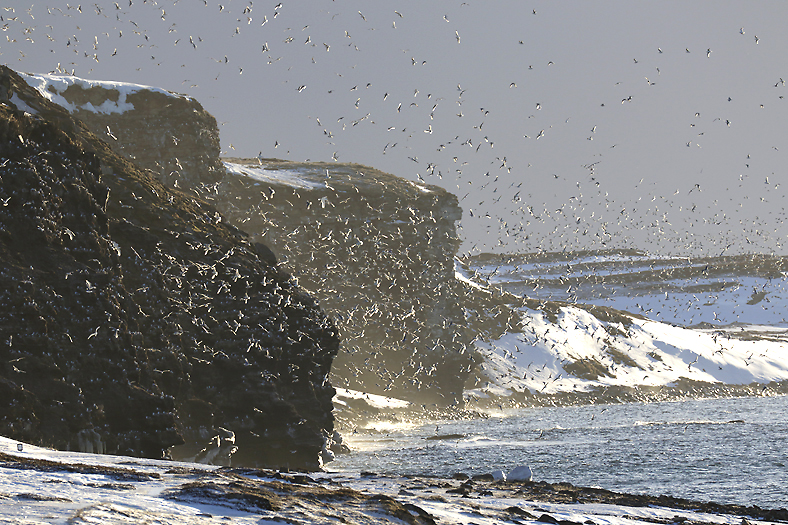
Bird cliff at sunrise. The Kittiwakes can arrive the bird cliff as early as late February, -they are however months away to lay eggs.
END.
________________________________________________
________________________________________________
Owl Bonanza in the Norwegian lowlands, March-2017.
A certain species of owls has been one of the photo targets this winter. A couple of Short-eared Owls have found their perfect spot on earth for the last month. It has been a very interesting time to follow these clever rodent hunters. Contrary to most other owls they are not nocturnal, but search for prey at daytime. When spring now is emerging in the lowlands they will soon slowly head out against the higher marshes and arctic tundra to finally arrive their nesting places in May and June. In the mean time they feed themselves up here in the mild part of Norway close to the North Sea.
The Short-Eared Owl sitting on top of a grassy slope.
Patrolling the coast line.
A fantastic eye sight combined with extremely fine hearing make them specialists in catching rodents.
Whoooom, -and another mouse is soon in the sharp owl claws.
It can look a bit peculiar when the hungry owl suddenly decide to dive down to the ground for grabbing prey.
For more new photos of these owls, please see the Short-eared Owl Gallery.
END.
________________________________________________
________________________________________________
AUTUMN IN THE SOUTH NORWEGIAN MOUNTAINS, -primo October-2016.
Autumn is the traditional time for time for hunting and gathering. Spending time in the mountains at this time when the temperature have dropped and you feel the sharp & fresh air in the face is wonderful. Coming back after spending some time there I want to show a couple of images from the trip:
A week into October month the rutting time is over for the Reindeer, and they continue the annual migration pattern.
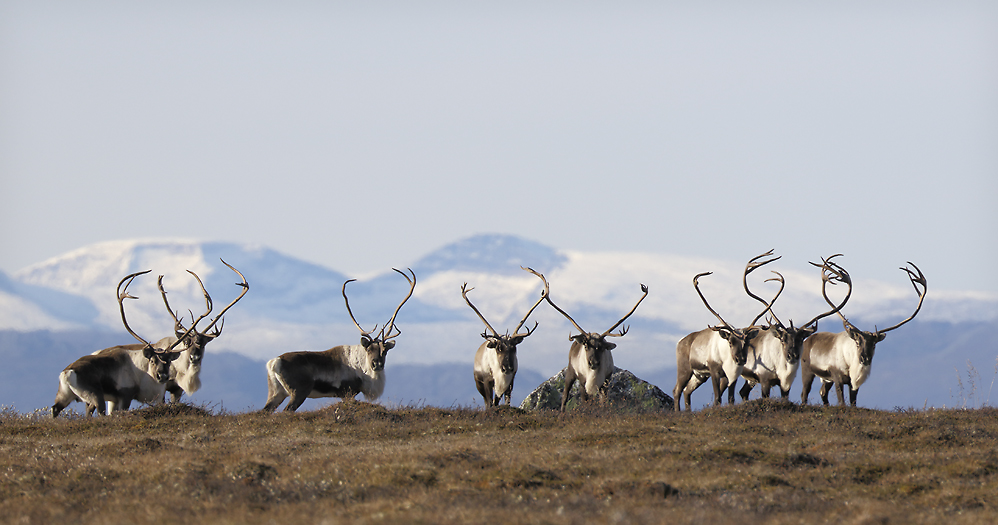
For more images of Reindeer, please see the Reindeer gallery.
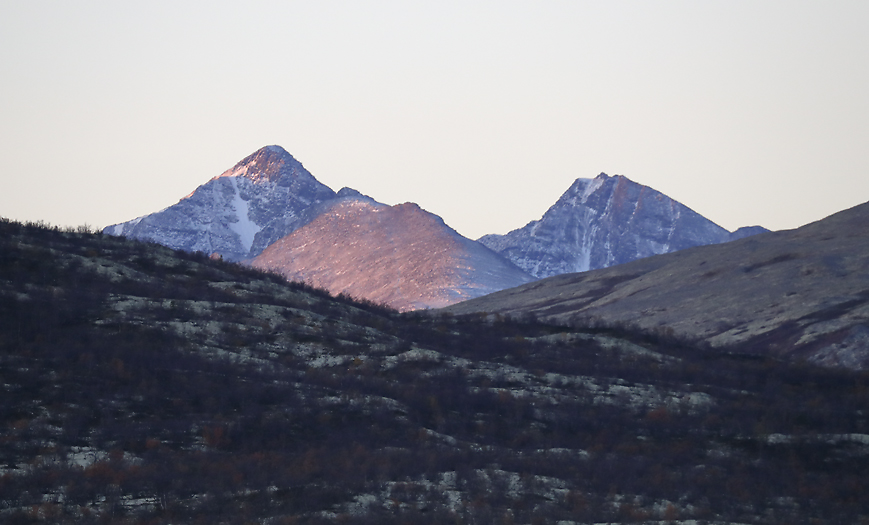
Sunrise in the Rondane mountain range.
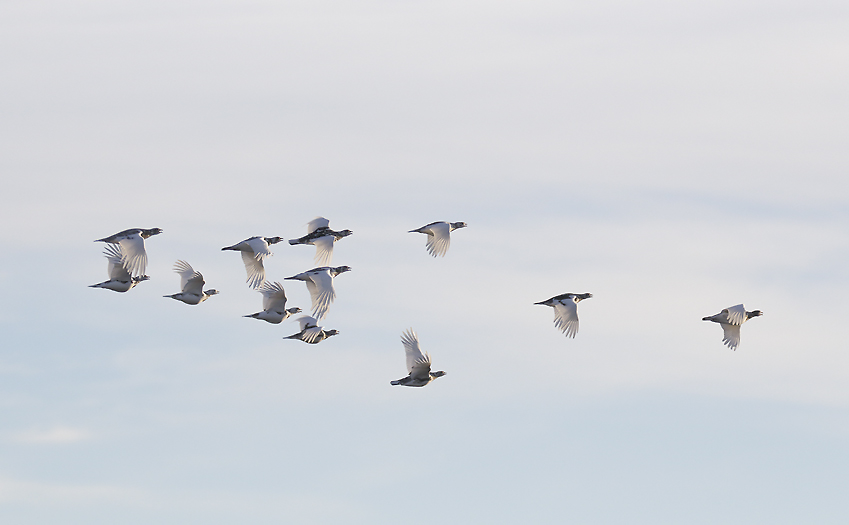
The Ptarmigans congregate and change from summer to winter plumage.
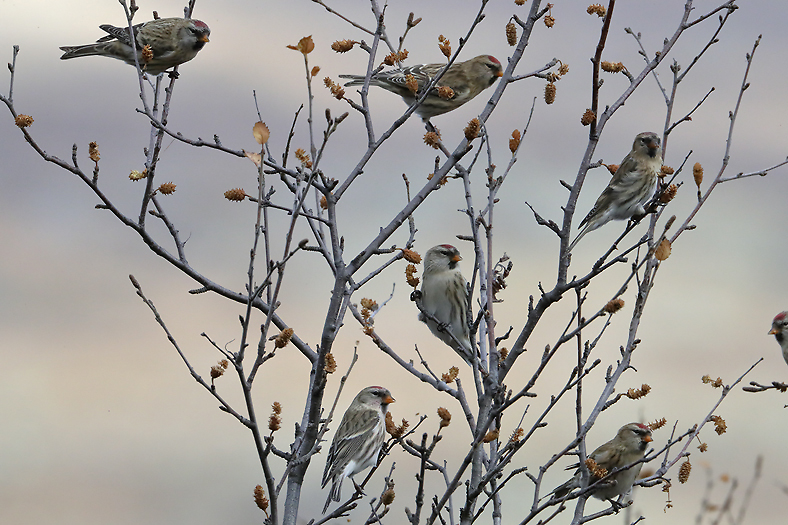
The Redpolls also congregate and prepare for winter, -they do not stay in the cold parts of Norway as the Reindeer and Ptarmigans, but prefer to move further south.
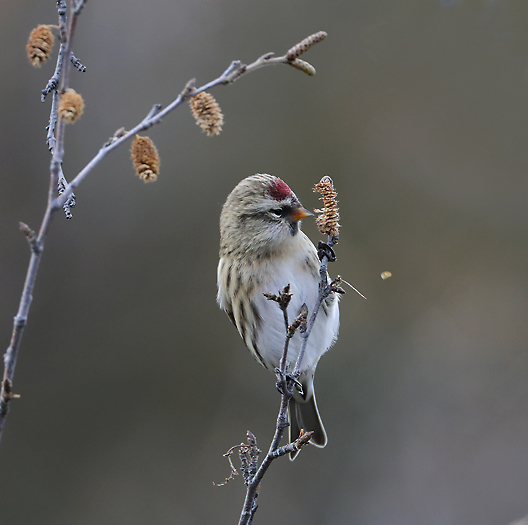
Birch catkins is common food for the Redpolls.
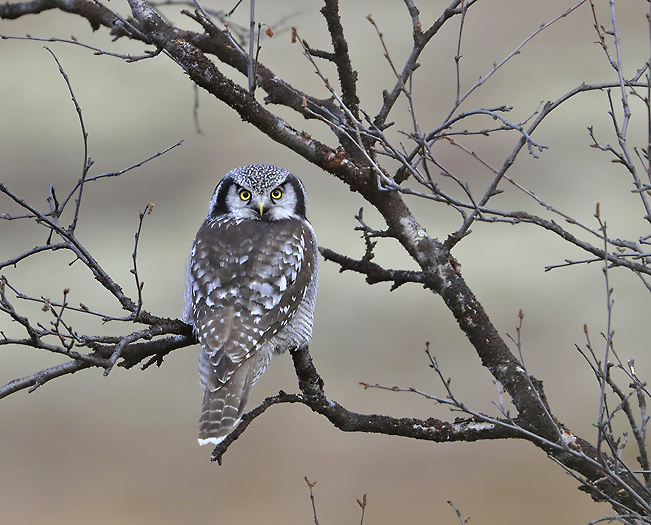
There are many Hawk Owls to see in southern Norway this autumn, this due to lack of rodents in the adjacent land areas.
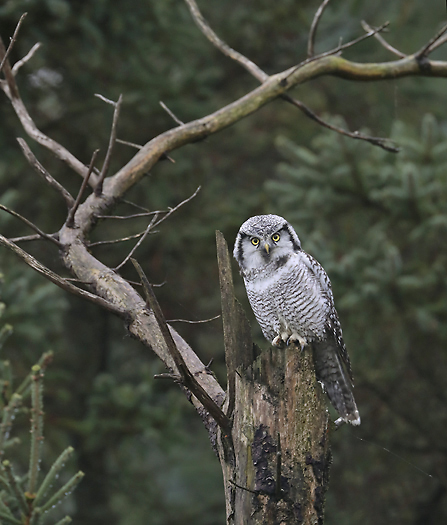
The Hawk Owls are also to be found in the lowland, as this owl. For more images of Hawk Owls, please see the Hawk Owl gallery.
END.
________________________________________________
________________________________________________
Some recent images from southern Norway in Spring and early Summer of 2016.
The female Peregrine Falcon lands on its favorite cliff at the coastal nesting place. More images of this falcon are to be found in the “Peregrine Falcon” gallery.
The Kestrel couple looking down on the human intruder entering their territory in the mountains.. The male on the left side, and the female to the right. See the “Kestrel” gallery for more images.
Female Gyr Falcon with prey heading for the nest in a cliff well above the treeline. Very good to see that despite low numbers of Ptarmigans also this year the falcons manage to rise young ones. See the “Gyr Falcon” gallery for more new images of this species.
Beautiful and mystic Arctic Loons gathering at sunrise in a remote lake.
Female Arctic Loon, -the male in behind. For more images of these magnificent birds, please see the “Loons” gallery.
END.
________________________________________________
________________________________________________
Winter images from the Nordic countries.
A couple of shots from the winter 2015/16 photo sessions:
The beautiful male Hen Harrier in south western Norway. See the “Hen Harrier” gallery for more images.
Female Goshawk in south western Norway. For more images, please see the “Goshawk” gallery.
Male Velvet Scoters in Hafrsfjord, Norway. More Velvet Scoters are to be found in the “Ducks” gallery.
Lone Grey Wolf in eastern Finland. See the “Wolf” gallery for more images.
END.
________________________________________________
________________________________________________
Reindeer in the south Norwegian mountains, October 2015.
For the part of the Norwegian population that live in small villages and farms at higher altitudes autumn is synonymous with hunting and gathering. Regarding hunting mainly reindeer, -as it has been since time immemorial, -hundreds, -yes thousands of years back in time. This hunt still continues, some using rifles and some cameras. Below here are some examples from the camera hunt in the south Norwegian high mountains.
Bulls in the last hour of the day`s light. It is fascinating to to think that these proud and beautiful animals have lived in the Norwegian mountains since the last Ice Age, and that they are the last population left of a species that once roamed all over Europe.
The guard of the Reindeer herd. Please see the “Reindeer” gallery for more new images of Reindeer.
The rutting season is still ongoing. Two bulls that are not quite sure if it is worth another fight, -they have both been in hard battles earlier today.
Ancient Reindeer pitfall trap in perfect condition, see the “Archaeological Sites” gallery for more images, -and what this specific trap contained… Here from the Rondane mountain range.
END.
________________________________________________
________________________________________________
Recent photographs from Norway, Summer-2015.
Good to see that the local Peregrine Falcons found back to their traditional nesting place also this year. This is the adult female. Please see the “Peregrine Falcon” gallery for more images of his beautiful bird.
…and so did the majestic Gyr Falcons. Despite low numbers of rodents and Ptarmigans in the south Norwegian mountains the local couple managed to get two juveniles on wings. See the “Gyr Falcon” gallery for more images.
Adult Eagle Owl at their coastal territory. See the “Eagle Owl” gallery for more images of this mystic bird.
Due to unusual late Summer with quite many mountain lakes and ponds still ice covered / partly ice covered in the middle of July, many ducks (as the Common Scoters on the photo) had still not started nesting yet.
It is always interesting to stop for a look at places where ancient history can be found. This is an approximately 2000 years old Reindeer trap in the Rondane mountain range, and is placed at a traditional Reindeer path (this path is even used by the Reindeer today). The Reindeer was first scared by ancient hunters in the direction of the trap. Lead-fences and markers of stone closer to the trap made the Reindeer thereafter running exactly against the trap opening (the short end were the person on the photo stand). When they rushed past the small rock formation in the foreground they jumped straight down into he trap (the trap could not be seen by the running Reindeer before it was to late), and were not able to exit the trap due to high walls (up to 1,8m). See more images from this site on the “Archaeological Sites” gallery.
END.
________________________________________________
________________________________________________
Norwegian spring, April-2015.
Adult Golden Eagle patrolling its territory high up in the snow covered mountains. See the “Golden Eagle” gallery for more images.
Adult male Red Fox in search for food to the female that is in the den with their cubs.
Any rodents to catch ?
The foxes territory is hilly with lakes and steep valleys. The “Red Fox” gallery contains more photos of this interesting animal.
END.
________________________________________________
________________________________________________
Raptors and Owls in the south Norwegian winter, March-2015.
Some photographs showing the latest captions of these beautiful birds:
Male Hen Harrier.
Male Hen Harrier. For more new images of this species, please see the “Hen Harrier” gallery.
Adult female Goshawk. See the “Goshawk” Gallery for more new images of this terrific bird.
Long-eared-Owl.
END.
________________________________________________
________________________________________________
Images from Summer – Autumn in Norway-2014.
I`ll here show a couple of images from two of the photographic trips in norway this Summer and Autumn. First by the seaside at Helgelandskysten, close to the Arctic Circle. Thereafter from the latest trip to the mountains in southern Norway.
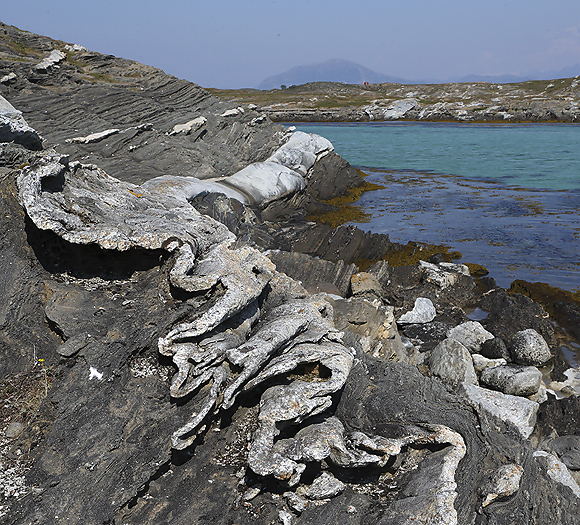
Part from the archipelago at Helgelandskysten. Bands with Calcite Marble characterizes this area.
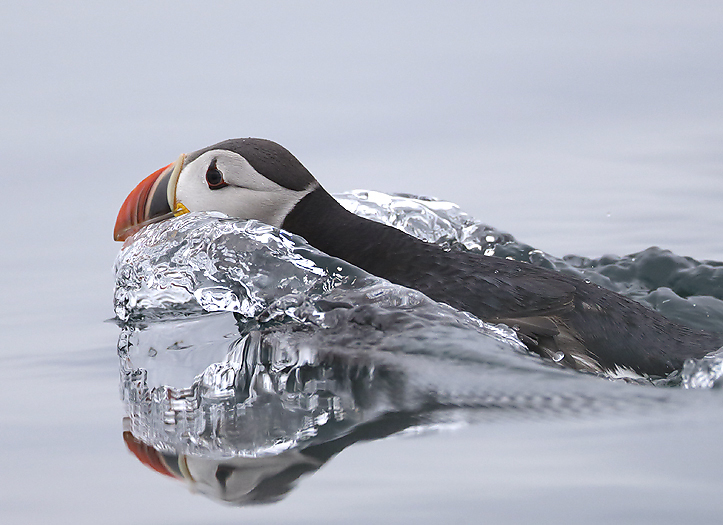
Puffin.
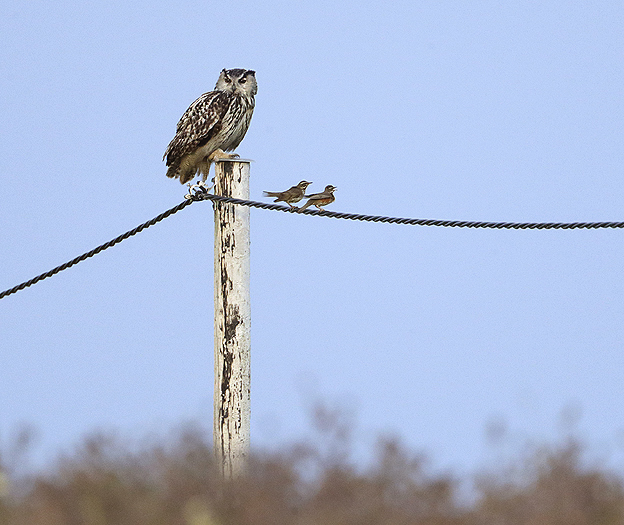
Europe`s densest population of Eagle Owls are found on this Archipelago. The territory sizes can here be as small as one square km. Main prey for them are not sea birds, but voles. See the “Eagle Owl” gallery for more images of the worlds biggest Owl.
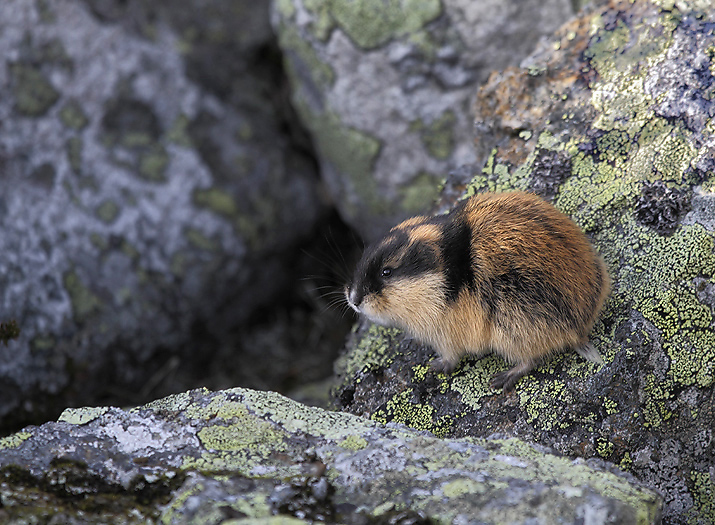
In great parts of the mountains in southern Norway there are huge poplations of Lemmings this year. This is from the Hardangervidda mountain plateau.
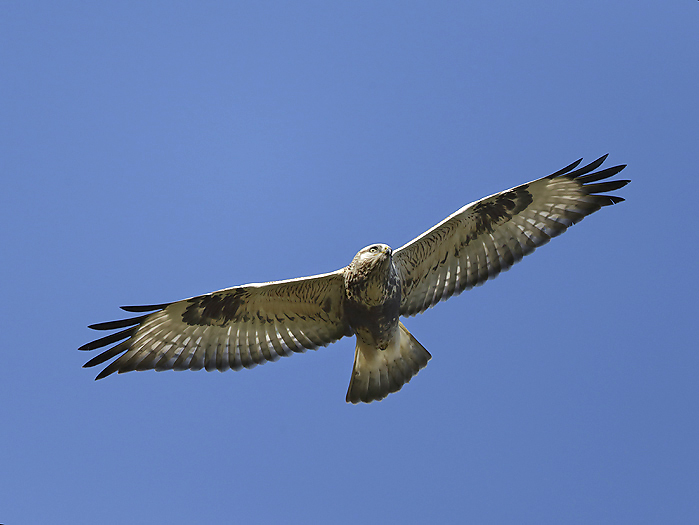
Rough Legged Buzzards feed on Lemmings, and are to be found in great numbers when the Lemming population are at peak (as this year). See the “Rough-legged Buzzard” gallery for more images.
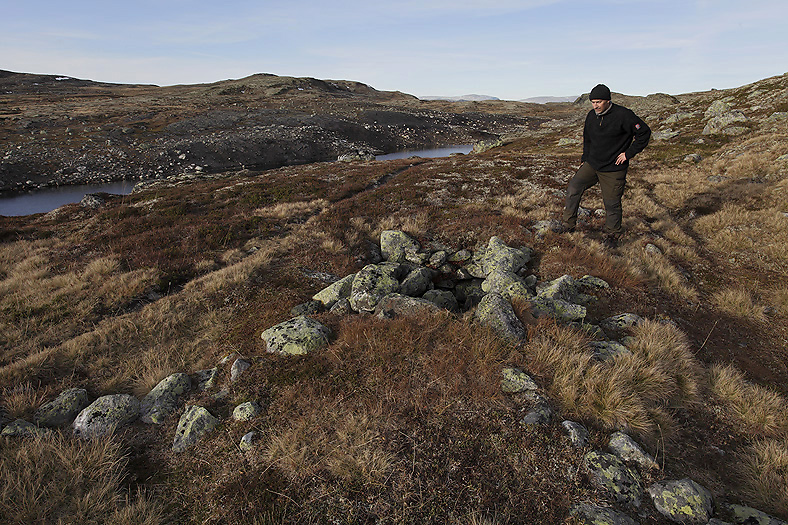
Man has hunted Reindeer in the Norwegian mountains for thousands of years. This is a pitfall trap from the Viking Age where we still can see remnants of the fences that lead the Reindeer in the direction where the pitfall trap was. The pitfall had a crate of thin branches on top and was covered with moss and heather as the surrounding vegetation. The grazing or migrating Reindeer did not see the pitfall before it was too late and they had fallen down into it. Here from Hardangervidda mountain plateau. See the “Archaeological Sites” gallery for more images from the ancient Reindeer Hunters period.
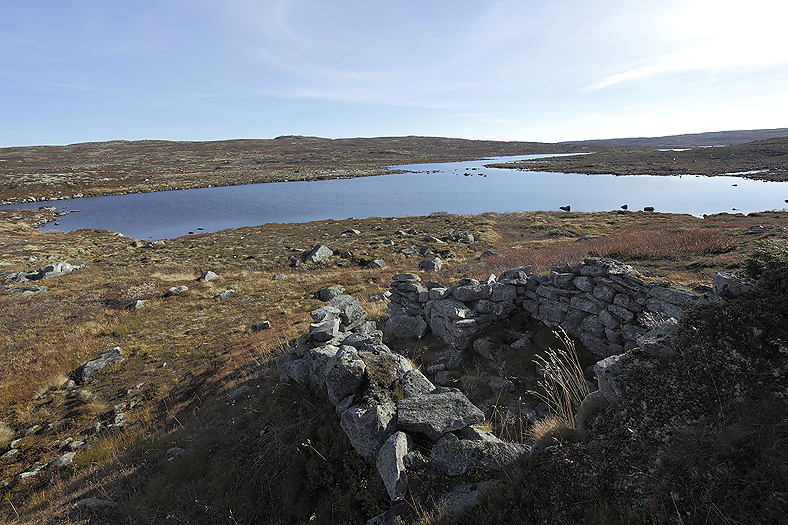
Medieval dwelling ruin on Hardangervidda mountain plateau.
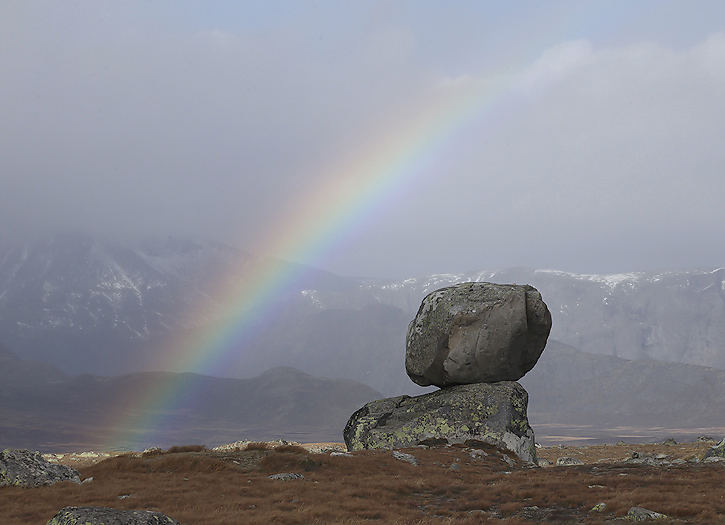
Part from the south Norwegian mountains. This move block shows that the land here once was glacier covered. Now we only see minor remnants here and there of the ice age that by definition ended 9000 thousand years ago.
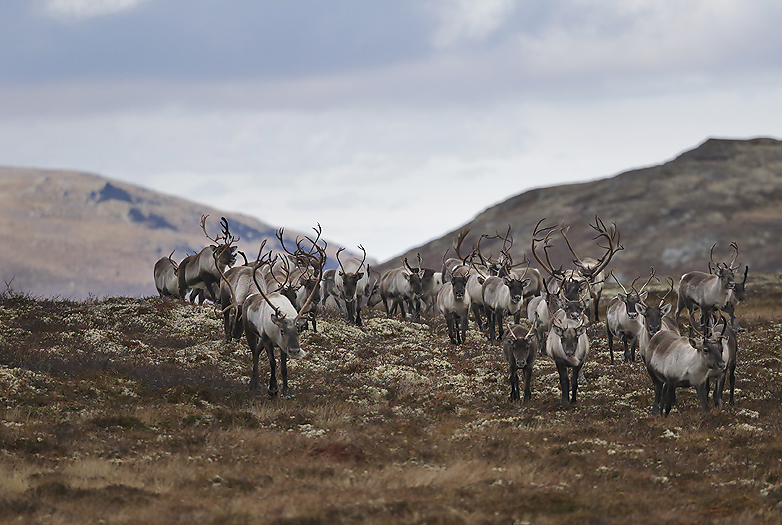
…and the first inhabitants that arrived after the ice age was the Reindeer. They actually followed the retracting ice cap.
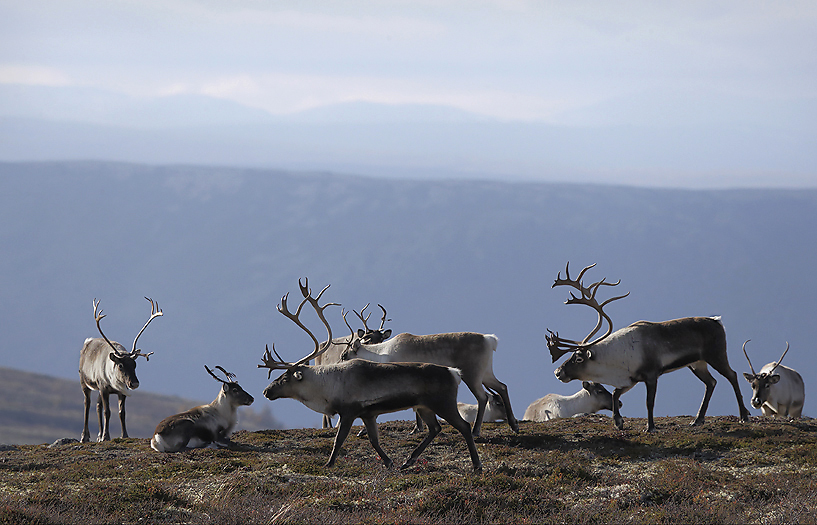
Here in southern Norway it is the only place in Europe where we still can find wild Reindeeer. Animals that 20-30.000 yers ago once roamed all over Europe. It is therefor extremely important that they are taken good care of. See the “Reindeer” gallery for more images of these amazing animals.
END.
________________________________________________
________________________________________________
A journey to the archipelago of Svalbard, June 23rd to July 05th-2014.
After a couple of weeks in the Norwegian high arctic archipelago of Svalbard I want to share some moments with you below here. On behalf of Arctic Images I have been up there at this fabulous place numerous of times, and never ever been disappointed what the land can show up, -so with this trip.
The original plan was to bring the ship north along the west coast before heading eastwards. From there, -weather, ice and the spirits would decide where to go. But it did not become like this, heavy ice from the north pole basin has for weeks effectively prevented ships for sailing the north coast. Instead we went south along the west coast, rounded Sørkapp and up again in the big fjord of Storfjorden. Our area of activity stretched from this area to 80 degrees north in Hinlopenstredet that divides Spitsbergen from Nordaustlandet. In periods there was no ice, and other periods there was heavy pack ice also there. I was very pleased taking this route on the “back side” of Svalbard due to that this land is far less visited by man than the north west and northern coastal areas.
The weather was generally calm with little or no wind, but blue sky was as often up here in the northern Barents Sea area covered by low clouds.
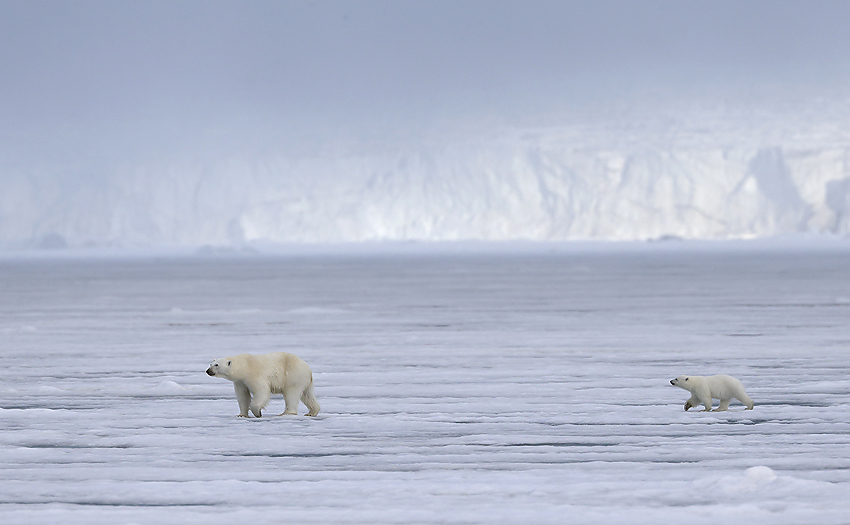
Polar Bear mother and cub on the sea ice near Hinlopenstredet. The midnight sun shines through the fog against Hochstetterbreen in the behind.
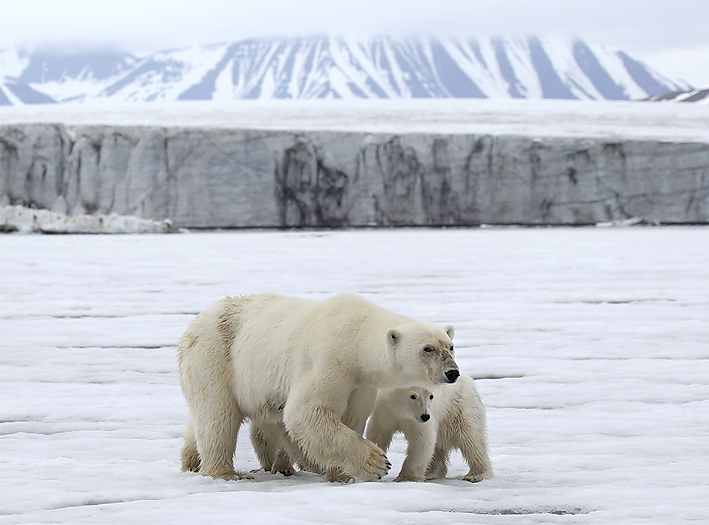
This Polar Bear cub by Inglefieldbreen seems to be a bit wary of the visitors…
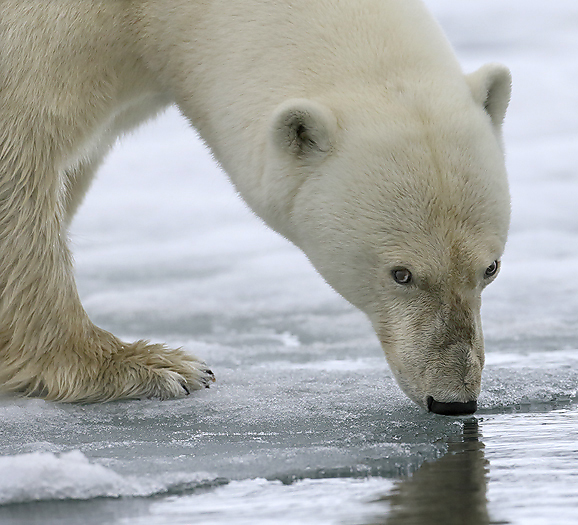
Whatching… For more new Polar Bear images, please see the “Polar Bear” gallery.
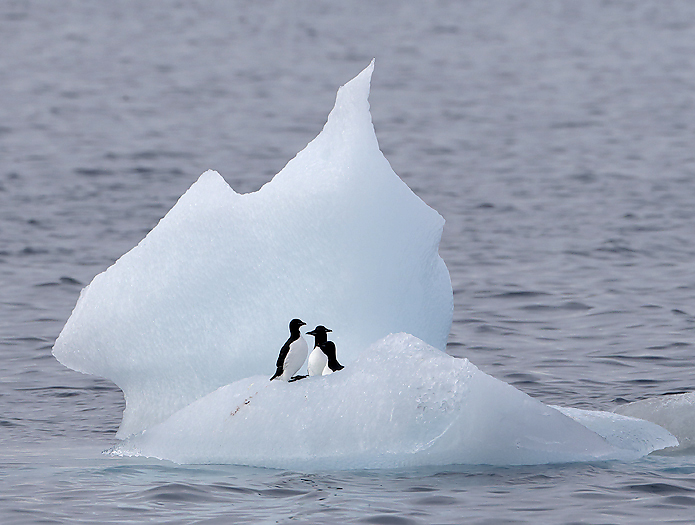
Brunnich Guillemots on a piece of glacier ice in the Hinlopenstredet.
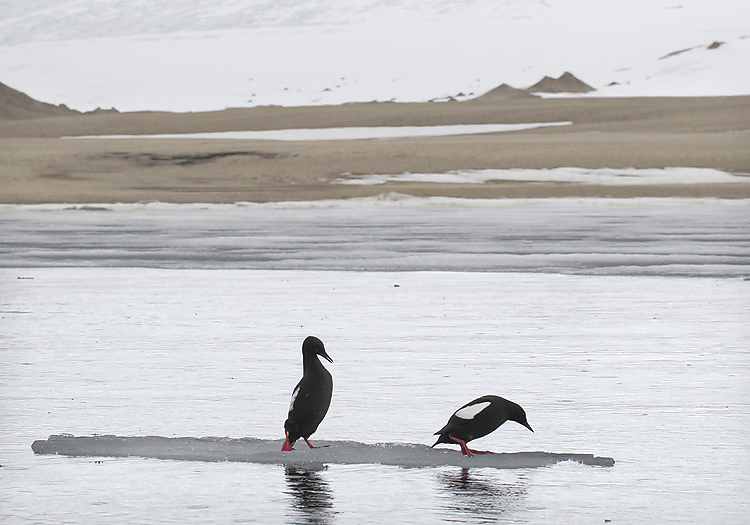
Black Guillemots in Palanderbukta, Nordaustlandet.
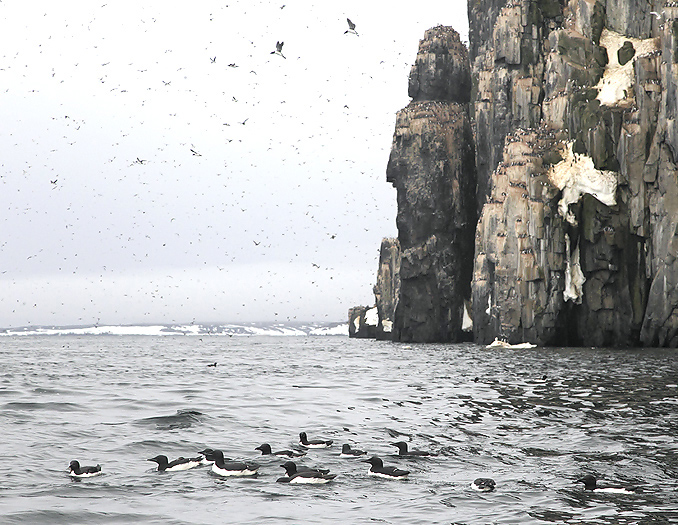
Svalbards mosts spectacular bird cliff is Alkefjellet in Hinlopenstredet. Approximately 90.000 Brunnich Guillemots nests on these basaltic cliffs.
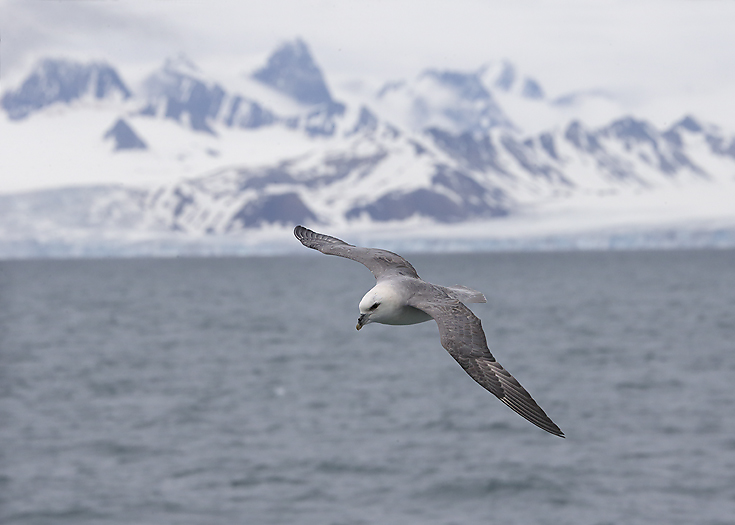
Fulmar in front of Isbukta, Spitsbergen. The mountain peak Haitanna (“The Shark Tooth”) behind.
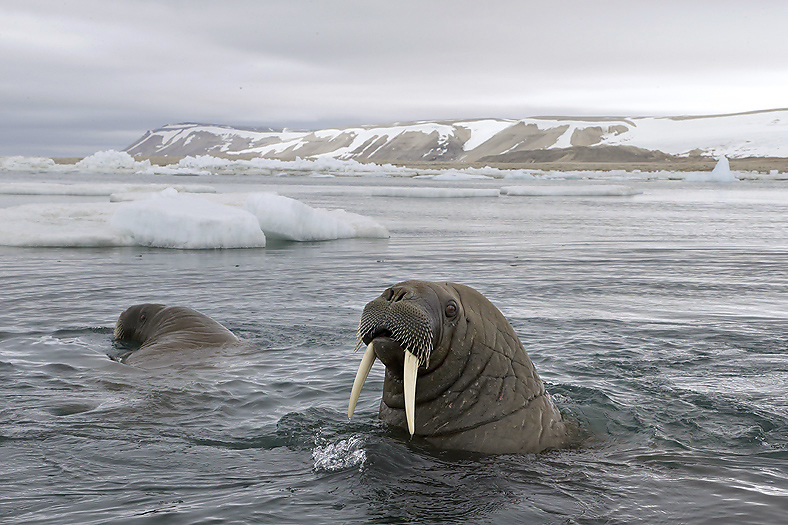
Curious Walrus in Palanderbukta, Nordaustlandet.
Walrus on drifting ice in Hinlopenstredet.
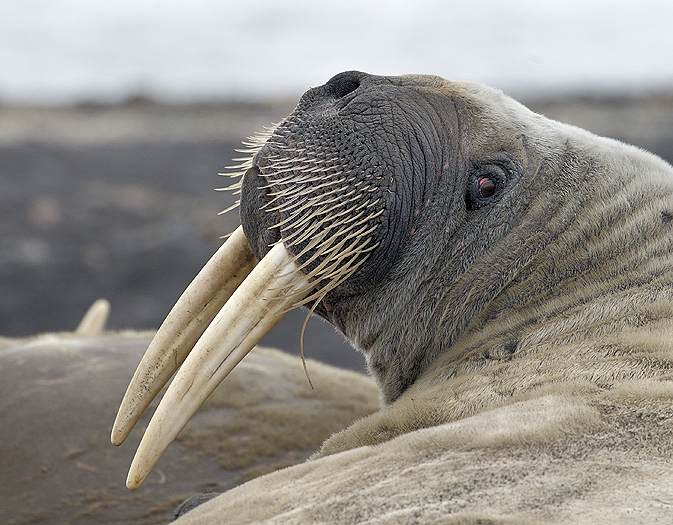
Walrus from the haul-out place at Isbukta, Spitsbergen.
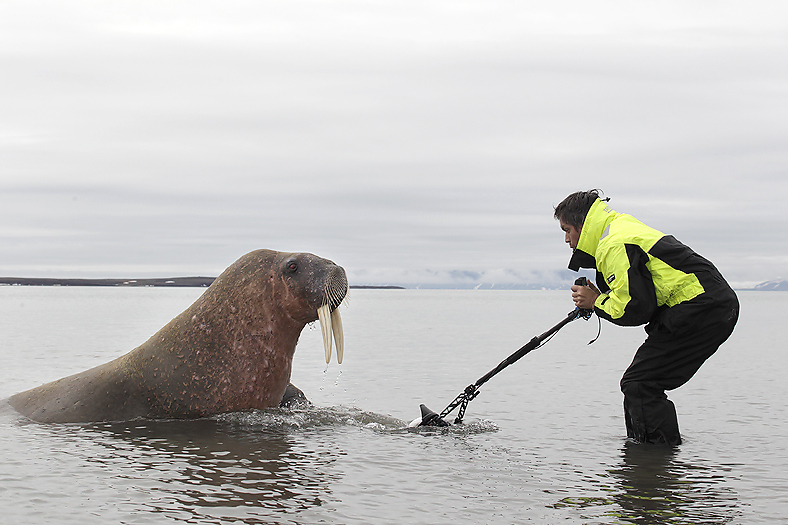
Walrus photographer Ole-Jørgen at Andretangen, Edgeøya. For more new images of Walrus, please see the “Walrus” gallery.
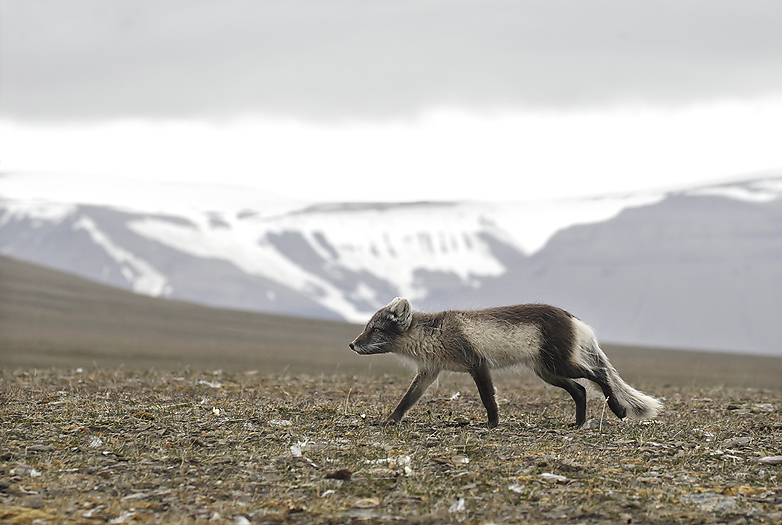
Arctic Foxes are abundant all over Svalbard. This belong to a family group of foxes sited close to a bird cliff north of Diskobukta, Nordaustlandet.
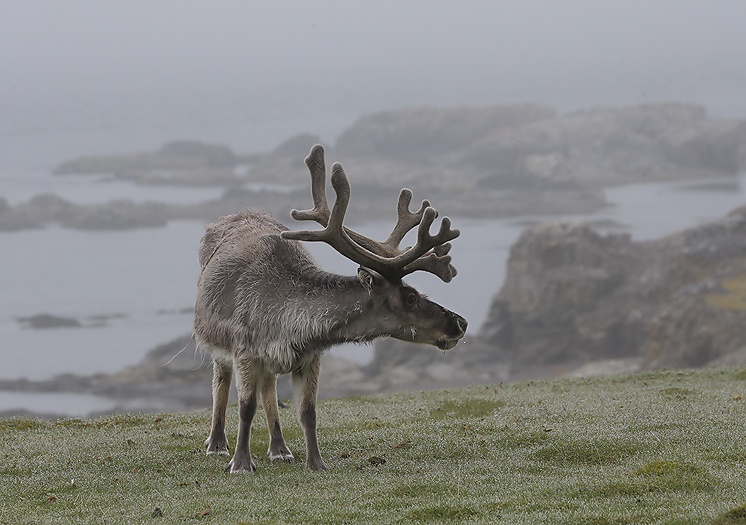
Reindeer bull at Bellsund. The land below Ingeborgfjellet bird cliff is heavily fertilized by bird droppings and is one of the best grazing grounds for Reindeer on Svalbard.
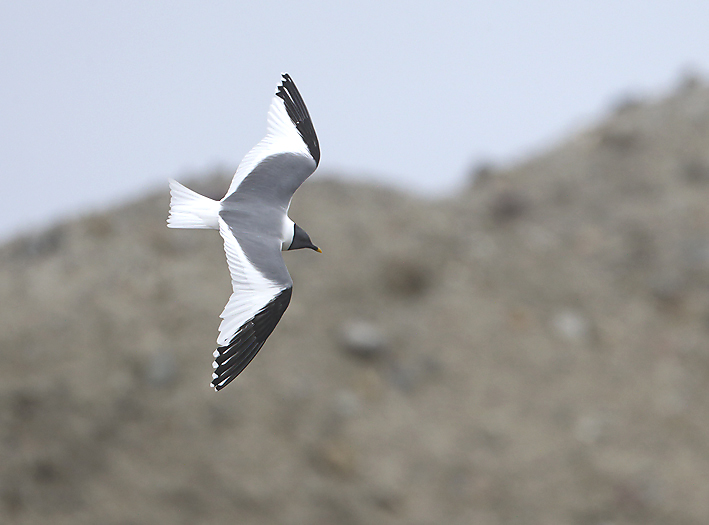
A really exclusive species found on an island in Storfjorden. Three pairs of Sabine`s Gulls was nesting there. This is the second “biggest colony” of these birds on Svalbard. The total poulation Sabine`s Gulls are estimated to be around 20 pairs at the archipelago.
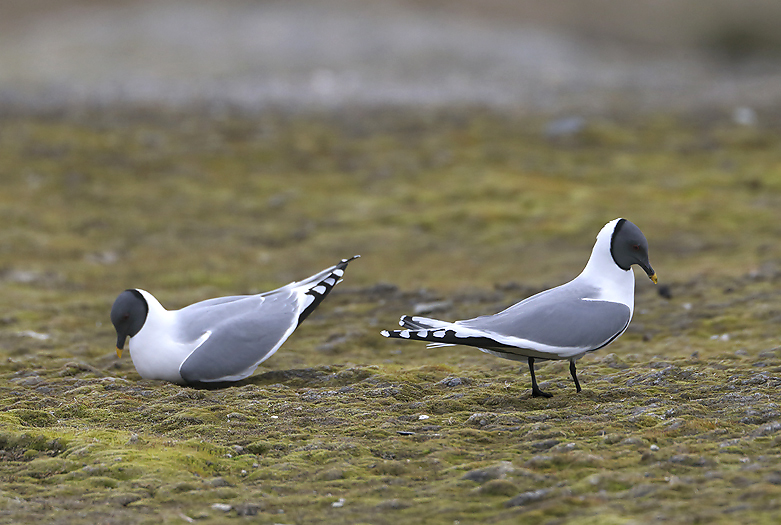
The Sabine`s Gulls have a special ritual when saying hello to each other. For more new images of the Sabine`s Gulls, please see the “Gulls” gallery.
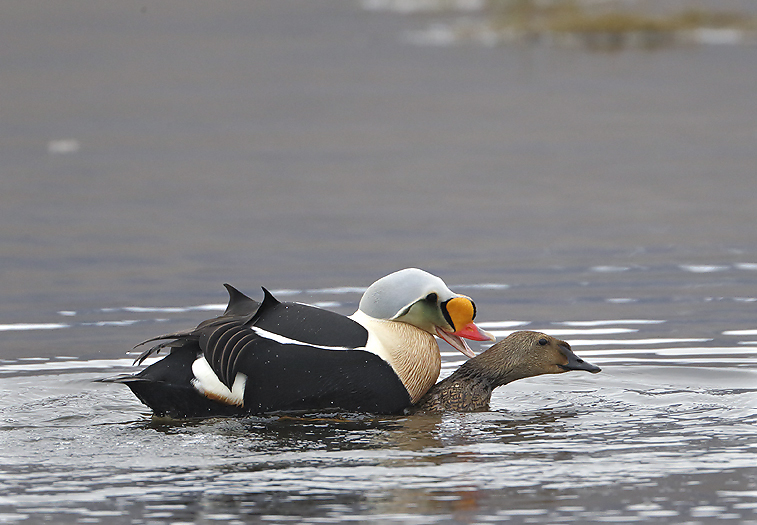
The high arctic King Eiders making new family… For more images of King Eiders, please see the “Ducks” gallery.
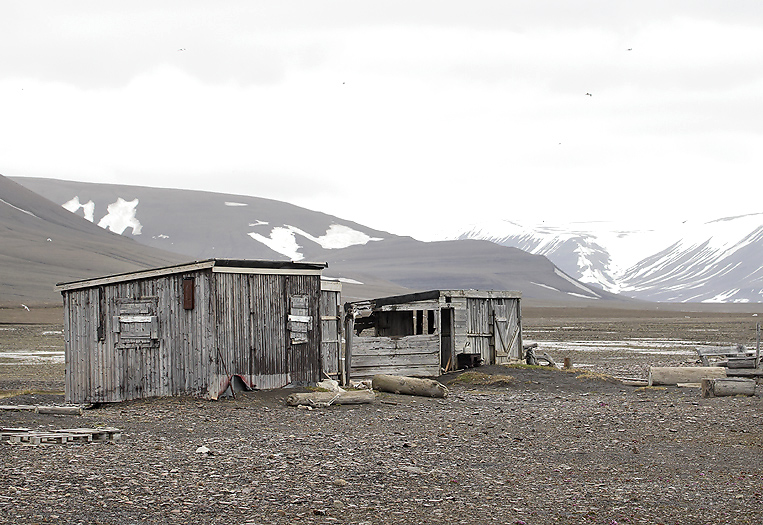
Old trappers station on Edgeøya (Diskobukta) named “Villa Disko”. There are many of these stations at Svalbard from the time when man hunted Polar Bears and Arctic Foxes for their fur. This specific station was built by oldtimer Georg Bjønnes in 1929. A few of the old trappers stations are still in good condition, but the majority of them are in decay or as ruins. The fur hunting epoch at Svalbard is an important part of its history, and it is sad to see the stations in increasingly poor conditions.
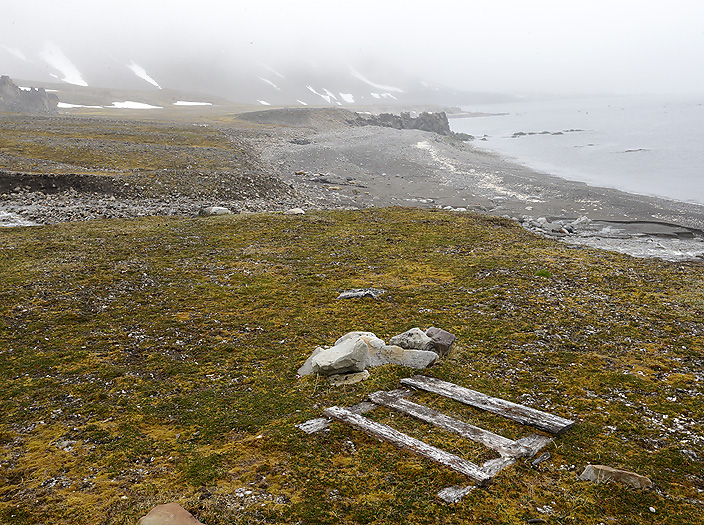
Remnants from a bygone era. Old trap to kill Arctic Foxes. These special traps are typical for Norwegian trappers at both Svalbard and North East Greenland. The stones beside the trap was loaded on top of the trap (wooden frame) that was raised approximately 30 degrees above ground level and held up by a special wooden locking mechanism. A bait (often a ptarmigans head) was attached to this mechanism. When the fox snatch the bait, -the wooden fram with the stones on top will fall over and kill the animal. For more images from the fur trappers period, please see the “Fur Trapping” gallery.
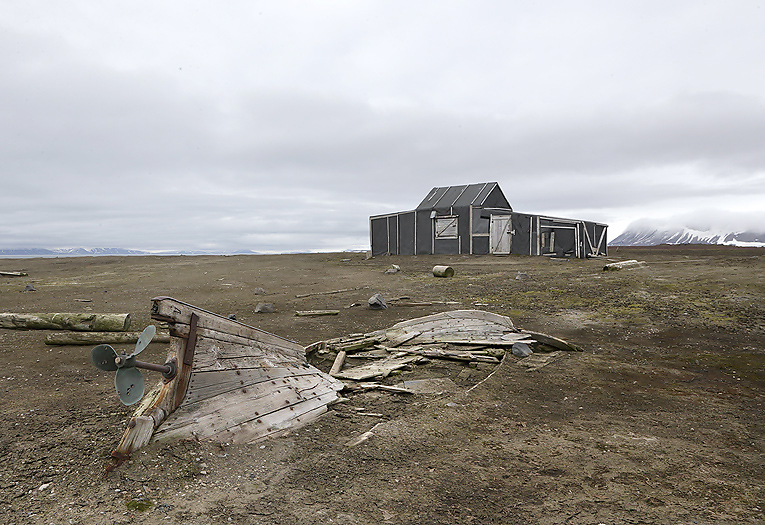
This trappers station at Andretangen on Edgeøya was in earlier days one of Svalbards most important stations for Polar Bear hunting. The legendary trapper Henry Rudi built this station in 1946 and lived here for long periods. Last time I was here, the boat in the foreground still had a boats shape, but as we see the degradation is now at full swing. It does not show in the picture, -but the station itself is also in decay (roof collapsing due to rotting materials).
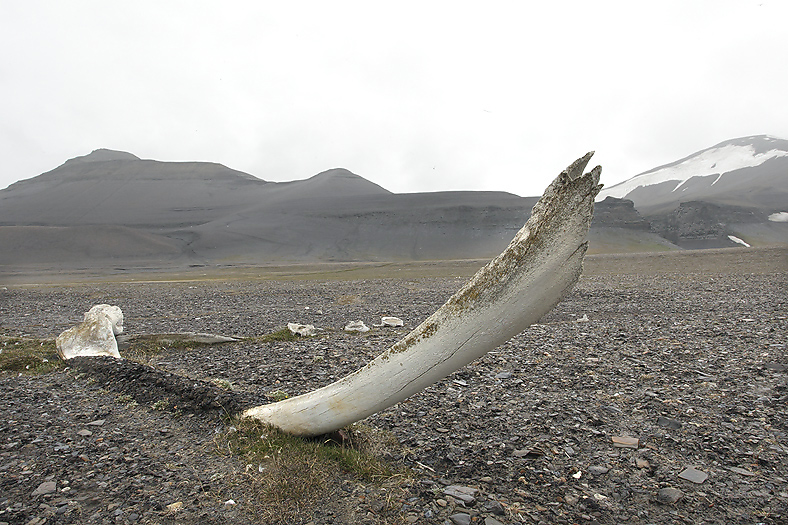
Bowhead Whale bone (Greenland Whale) at Diskobukta, Edgeøya. For more landscape images, please see the “Landscape” gallery.
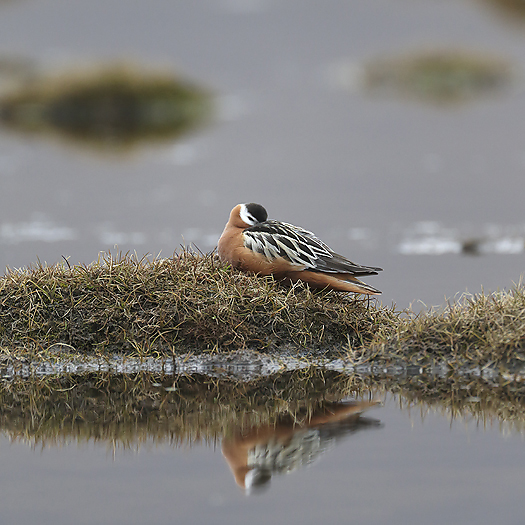
Sleeping Red-Phalarope in Adventdalen.
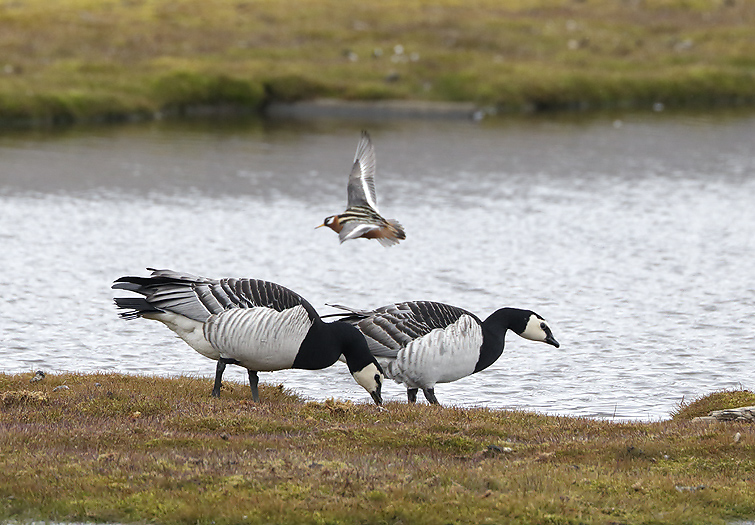
Barnacle Geese have increased in numbers on Svalbard. Note the Red-Phalarope.
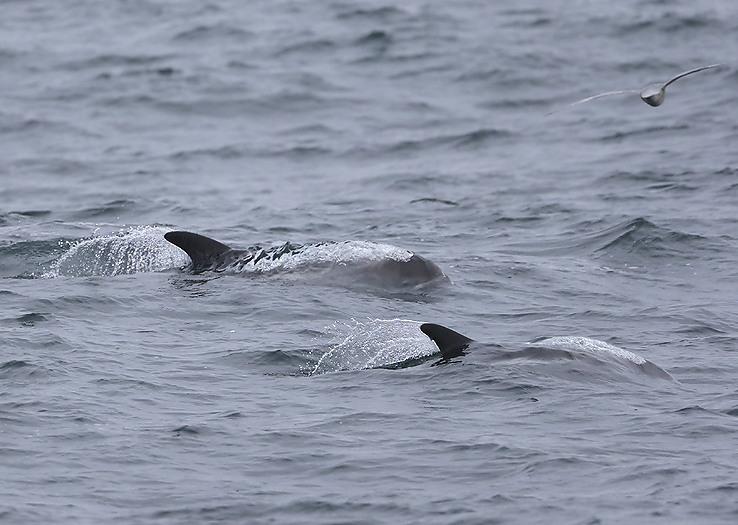
White-beaked Dolphins are frequently seen west and south of Svalbard during summer time. These are photographed west of Bellsund when we returned back to Longyearbyen at the end of the journey.
END.
________________________________________
________________________________________
The Peregrine Falcons arrive to their territory, May 01st-2014.
A visit to one of my favorite areas in coastal western Norway shows that the Peregrine Falcons are back to their territory again. It is always nice to see these birds, especially when we know that they for only 3-4 decades ago was near extinction in Norway. In mid seventies only 6 pairs nested in the country. Now the population counts hundreds of pairs. Let us take good care of these gorgeous birds !
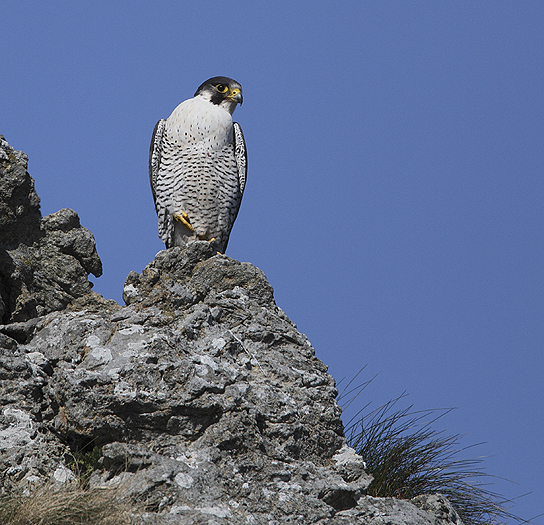
The adult male Peregrine. See the “Peregrine Falcon” Gallery for more images.
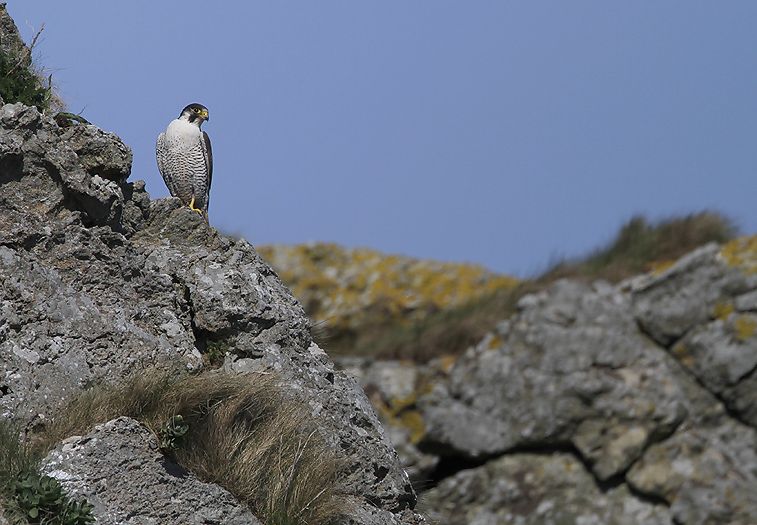
This actual Peregrine territory is quite a bit out at sea from the mainland, where the weather is too harsh for trees to grow.
END.
_______________________________________
_______________________________________
Winter raptors in the Norwegian lowlands, March-2014.
Each winter several bird of prey species are found wintering by the coast of south western Norway where we live. Due to a relative mild climate and good access to prey some of them stay in the area all winter. Great for birding and photographing !
Below here I show some example images of these magnificent hunters taken this winter.
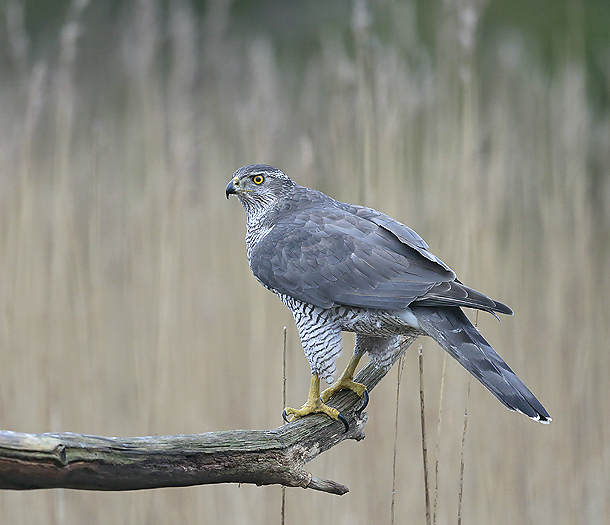
Most all wintering Goshawks here this season was adult birds, -which indicate low reproduction success in 2013.
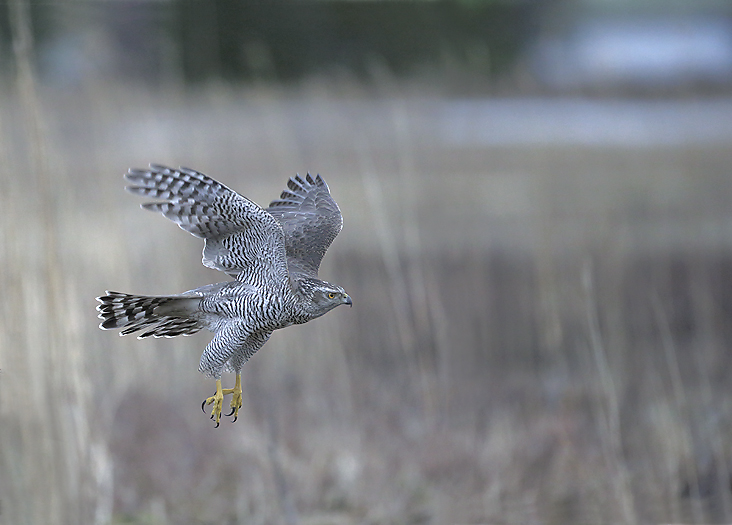
The Goshawks short and wide wings together wits its long tail make this powerful raptor to an agile hunter. See the “Goshawk” gallery for more images.
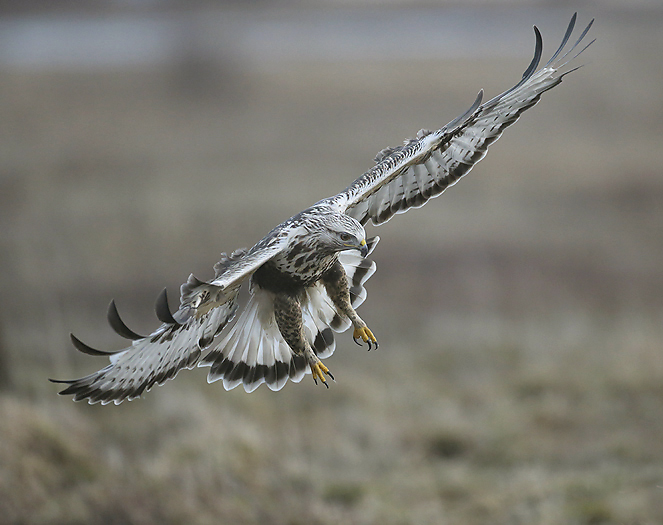
The numbers of wintering Rough-legged Buzzards can briefly reflect last summers vole population. Only a few Rough-legged Buzzards was observed in the wintering area and that means averagely low density nesting birds on the Scandinavian Peninsula.
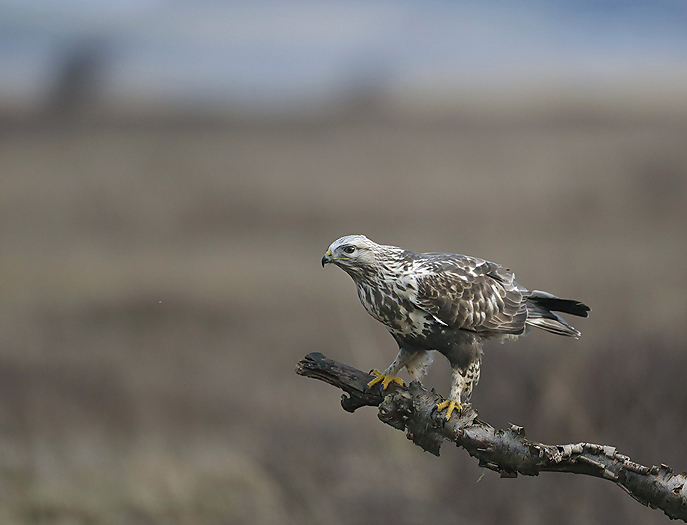
Rough-legged Buzzard. See the “Rough-legged Buzzard” gallery for more images.
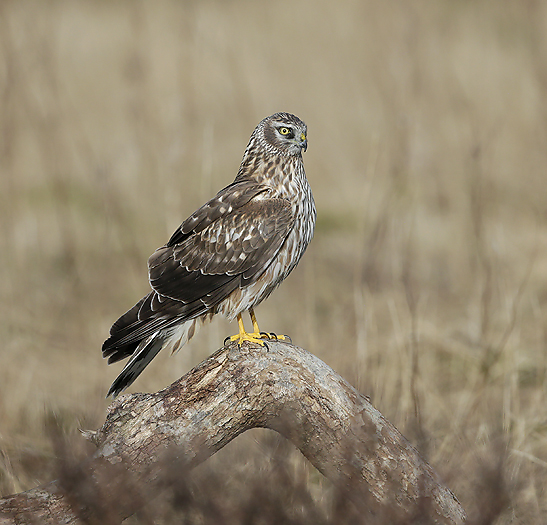
Female colored Hen Harrier. These beautiful birds most characteristic look is the owl-facial appearance.
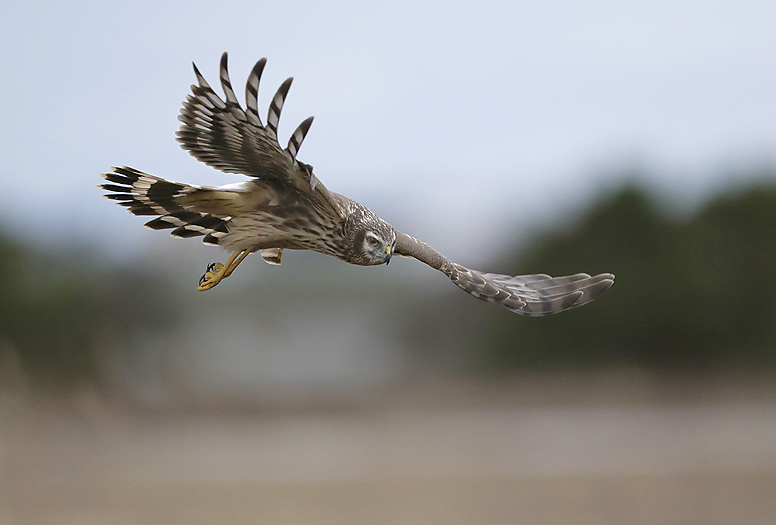
The Hen Harriers are specialists in catching voles, frogs etc. and can search in hours for them flying only a few meters over the ground. See the “Hen Harrier” gallery for more images.
END.
___________________________________________
___________________________________________
Autumn in the Norwegian mountains, October-2013.
Autumn again ! Nothing is as fresh and beautiful as a clear sub-zero autumn morning in the mountains. Then we really feel we are living beings originated from Mother Earth.
Under here you`ll find some images from my last autumn trip to the mountains of southern Norway, -it was a wonderful time with good memories of the encountered wildlife:
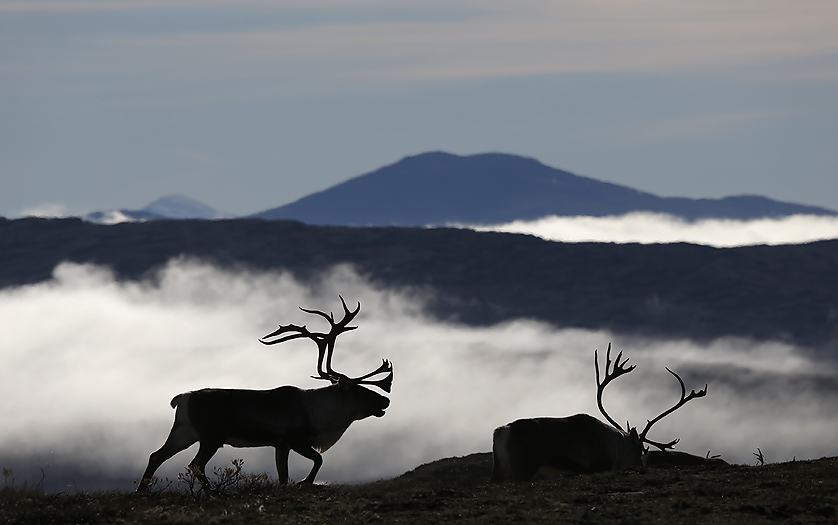
Reindeer above the incoming fog layer.
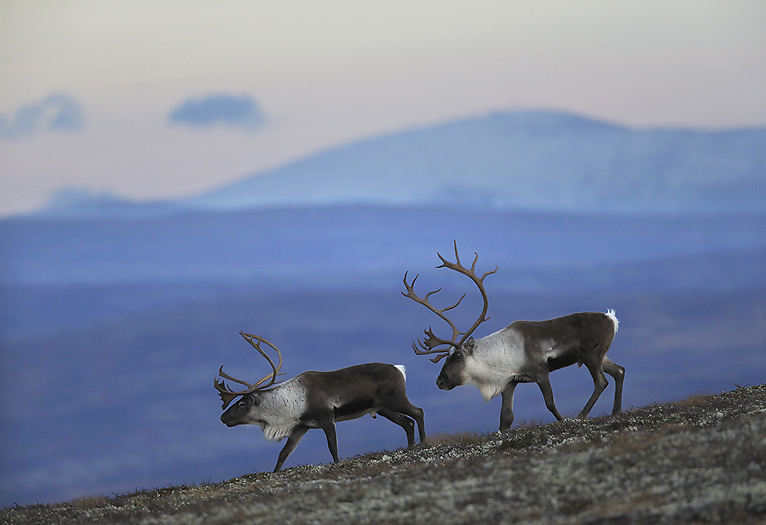
After sunset the colors turn bluish a little while before the night cover the scene..
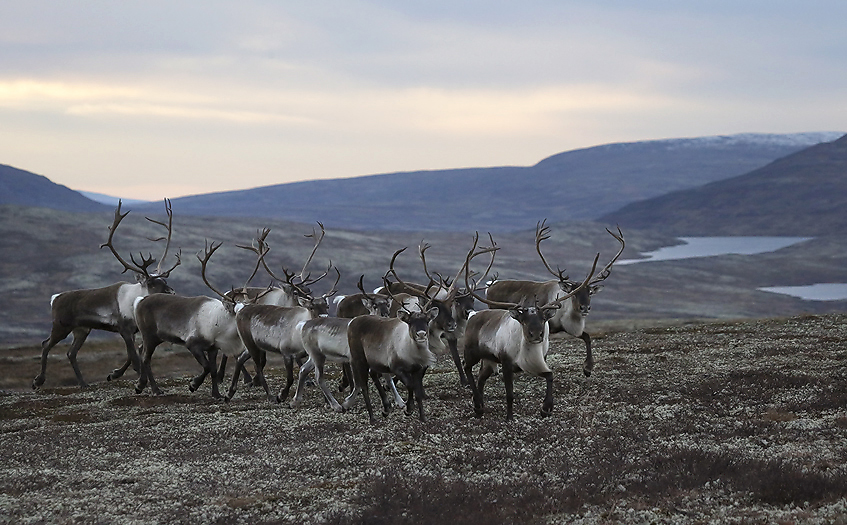
It is a great experience to have close contact with a reindeer herd. If the wind is very low, -they sometimes can come quite close to get the scent of what creature they are dealing with. This time a harmless photographer ! See the “Reindeer” gallery for more new reindeer images.
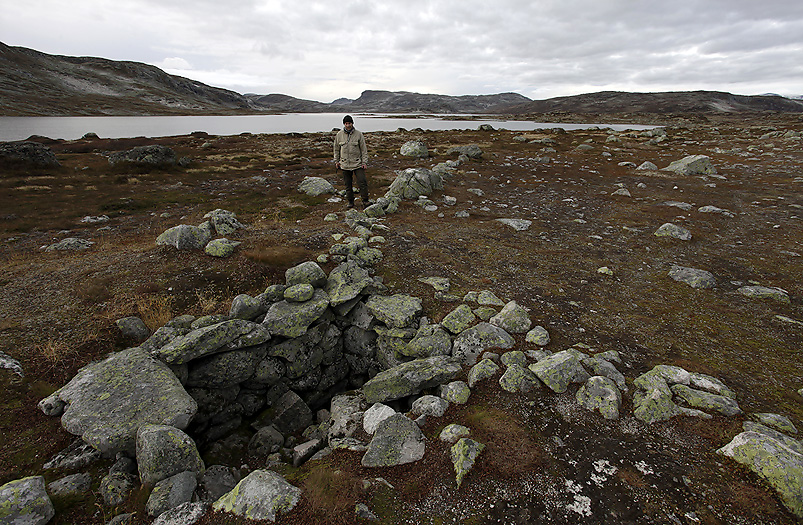
The reindeer have been hunted in the mountains for thousands of years, -in fact since the end of the last ice age for app. 9000 years ago when mankind started to populate this land. For lets say a hundred years ago and all the way back to the ice age, this hunt was crucial for the existence of many of the people living here. People laid down a great deal of work trying to catch this magnificent source of food. Some places we can still find remnants of traps and stone constructions in connection with reindeer hunt.
This photo from Hardangervidda (north Europes biggest mountain plateau) show a 1000 years old pitfall trap with stone fences for leading the reindeer to the trap that then was covered with moss and heather (on top of a frame of thin branches).
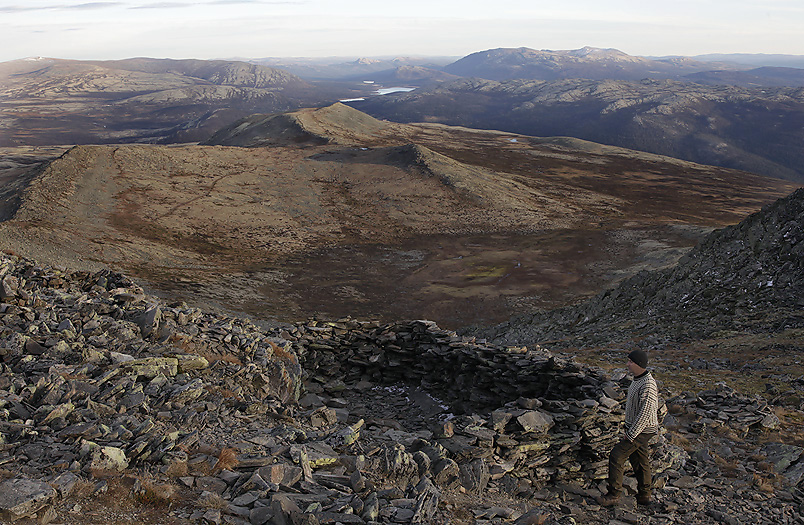
In the Rondane mountain range there exist a huge ancient stone trap for collecting up to 15-20 reindeer at the same time/same herd when they are scared up to this mountain top by the early hunters. Only a few of these traps are left in he Norwegian mountains. The “Archaeological Sites” Gallery contains more new images, -take a look if you have the time !
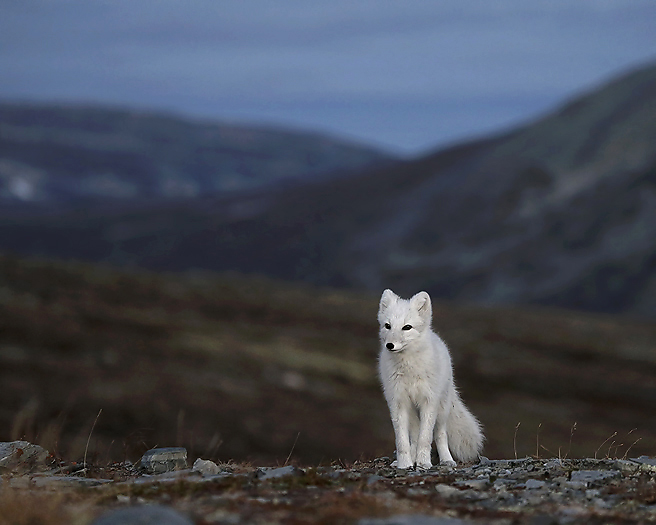
Arctic fox in the Dovrefjell mountains. The winter is soon coming and the fox are close to have changed to its white winter fur. This year quite a number of arctic foxes had succesful denning in Norway, -this in contrast to 2012 when there was only 1 successful denning. The main reasons for successful denning or not is the amount of presence rodents.
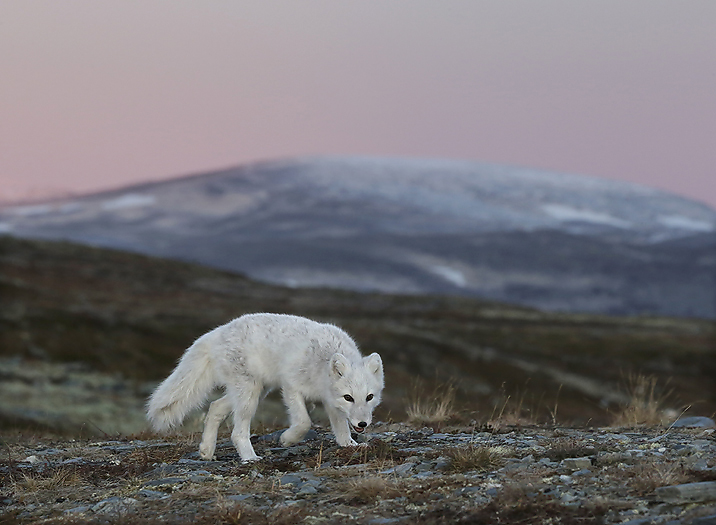
Just before sunrise.
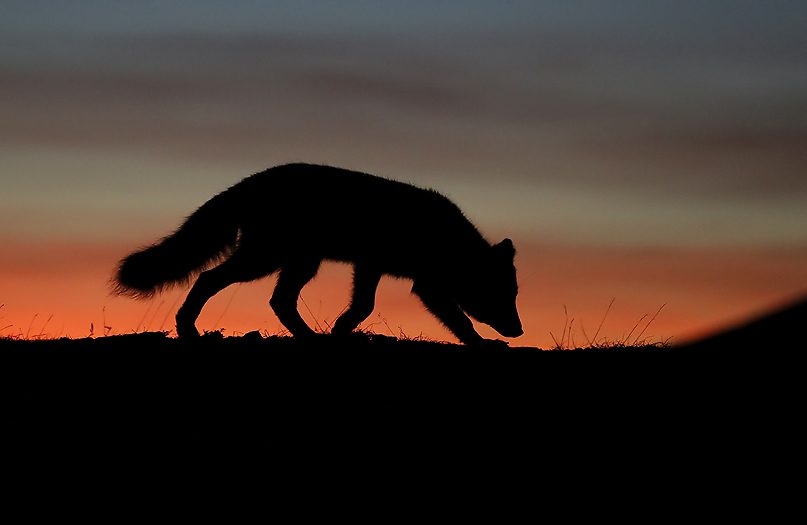
Arctic fox profile in late evening light. See the “Arctic Fox” Gallery for more images.
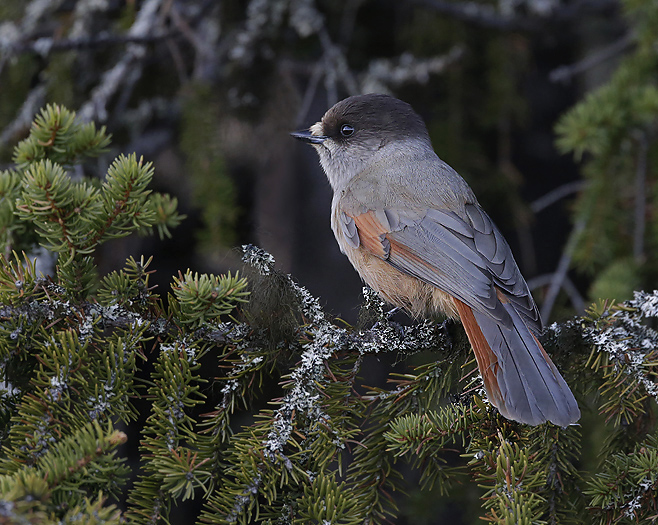
Siberian Jays inhabits the woods below the treeline. This bird is also called “The lumberjacks best friend” due to that they are extremely trustful by nature, -and was of this reason often hand-fed by loggers at their meal breaks.
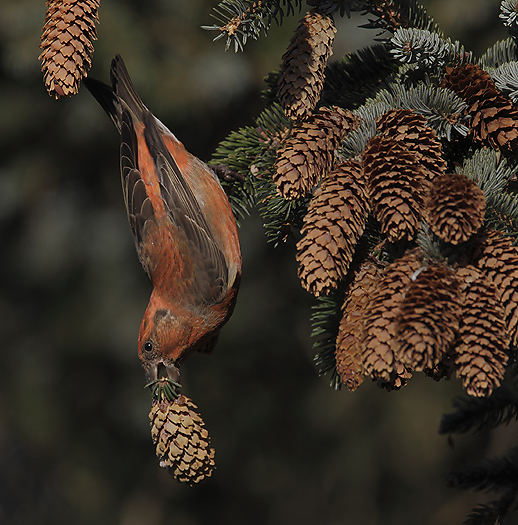
Another interesting bird that this year is especially numerous are the crossbills.
END.
_____________________________________________________
_____________________________________________________
A visit to the indigenious Nenet People on the Russian Yamal Peninsula and in the mountains of the Polar
Urals, April-2013.
After returning home from a trip to western Siberia I would like to share some images with those who are interested in indigenous people.
Today you can literally not find any arctic people that are not influenced by modern civilization. Well, this can perhaps be valid for all people on earth, -except for some extremely remote tribes in certain tropic jungle areas.
The Nenets, that I visited from early April and show a selection images of here, are characterized as the most traditional living people on the northern hemisphere. They are reindeer herders living in the old world from the Kanin Peninsula in the west to Taimyr in the east. They are true nomads that migrate together with their reindeer herds year round. What makes them unique and true as nomads is that their migration includes all parts of the family; children, wife and parents/grandparents. This is especially valid for the nenets of the Yamal Peninsula (“Yamal” means “The end of the world” in nenet language). An overview over their yearly migration cycle can be as follow: From January to mid March when the winter is as its coldest and the weather roughest they spend their time in the forest tundra in the Nadym region south of the Gulf of Ob. In these good reindeer feeding grounds they do not move camps very often, but stay behind and do work such as making new sledges, tools, necessary maintenance of equipment etc. Temperatures can also there easily drop to minus 50°C at this time of year, but it is far less windy than on the tundra further north. From mid March to beginning of June they migrate with first crossing the Gulf of Ob, for so continue migrating northwards on the huge Yamal Peninsula. Averagely they move camp every 2-3 days before reaching the Yuribei River halfway up the Peninsula. This big river must be crossed when the ice is still present, and they are therefore in a rush to reach there before the river ice breaks up. Grandparents and all winter equipment are left behind just before crossing the river. The Grandparents will stay at this place all Summer and support themselves mainly by fishing. With lighter equipment the younger generations head northwards with the reindeer herds. The sledges which are pulled by reindeer are used all year round and are now gliding on grass. The speed is slower, but goes remarkable smooth afterall. Making a huge circle up further north all Summer for finding good pasture land for the reindeers they are back again to the newly frozen up Yuribei in October month. They pick up their Grandparents and head south again on snow covered tundra towards the Gulf of Ob that is crossed in mid December. The migration circle is closed when putting up their Chums (tepee-like fur tents) /winter camp in the forest tundra of the Nadym region south of the gulf in early January.
Some of the Nenets, -those with the longest migration routes can travel up to 1000km northwards, and the same distance back south again later on the year.

Caravan of migrating Nenets. The women runs the sledges with all the belongings while the men is herding the reindeer.
It was a very interesting trip to this rugged people of the north. To explore their way of living gave me an extra tad of realism since I ate the same food as them (reindeer and fish, -most raw…) and was dressed up in reindeer fur & footwear clothing just like them. A bit uncomfortable for photographing in these bulky clothes, but this was outweighed by a never freezing photographer !
My trip to Siberia also included a visit to the Nenets living in the Polar Ural mountains west of the Yamal Peninsula. The way to these people lead me first to the abandoned settlement of Polyarnyj from where the former Soviet Union launched nuclear missiles to explode over the Novaya Zemlya test field. Thereafter I travelled up and deep into the mountains to a remote Nenet camp. In the Polar Urals these nomads rarely leave the mountains, and migrate together with their reindeer herds in a south-north direction year round.
Scroll down for a selection of images, -or have a look at he the “People of the Land” gallery HERE (starting with image PL-35) for more images of this amazing people !
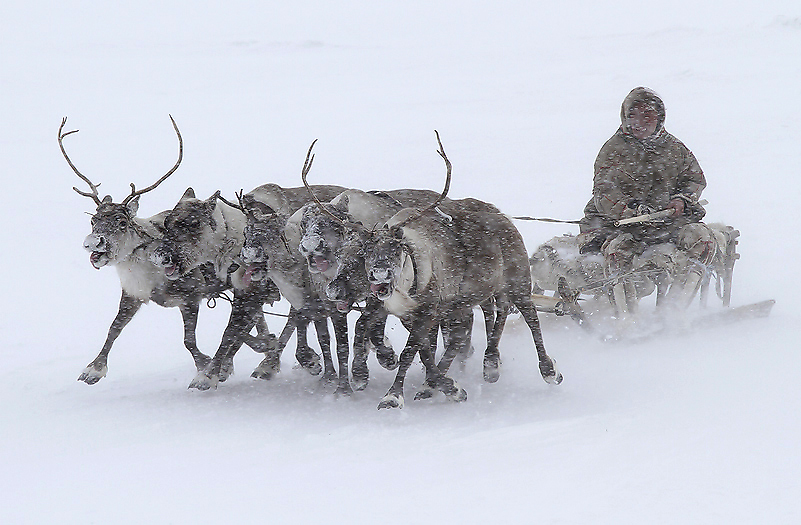
Travelling by reindeer sledge is the most common way of transport on the Yamal Peninsula.
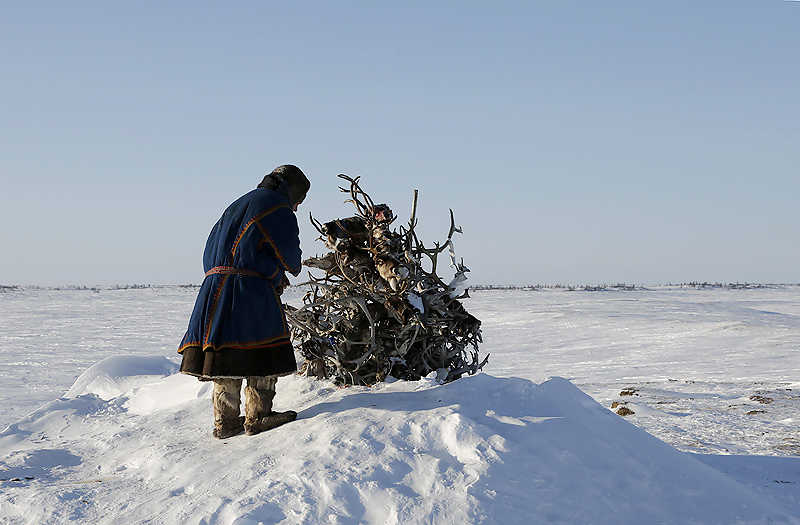
The Nenets still use their holy Sacrificial Places which are to be found all over the huge Yamal Peninsula.
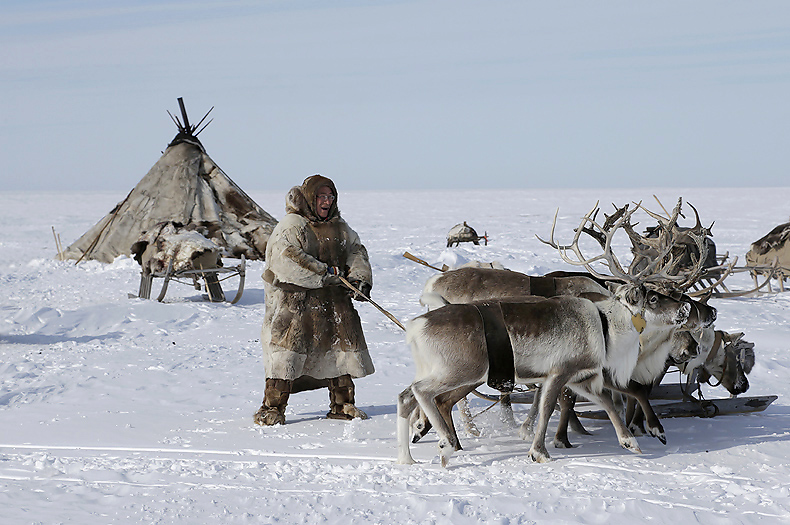
Part from Camp on the Yamal Peninsula.
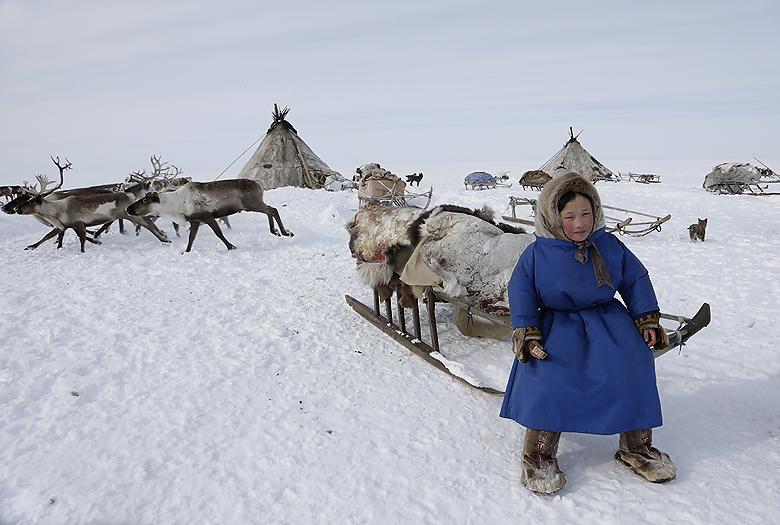
Young Nenet girl Ulya at the family camp call for her favorite Reindeer. Yamal Peninsula.
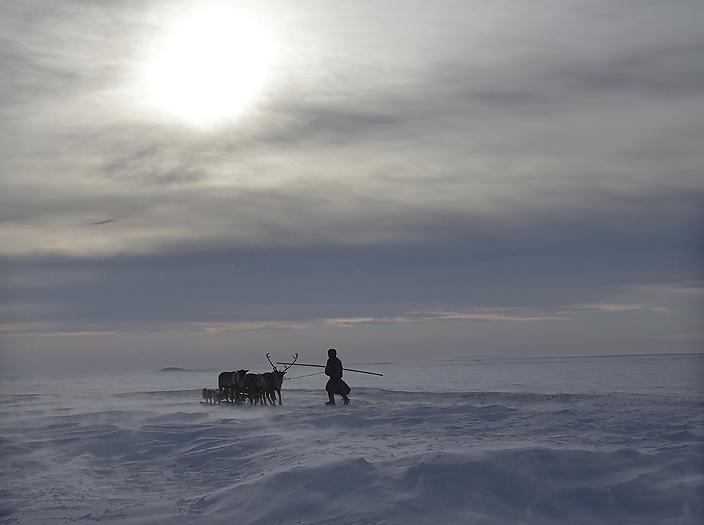
Nenet man on the Yamal Peninsula. Bad weather is approaching, – a couple of hours later the storm arrived.
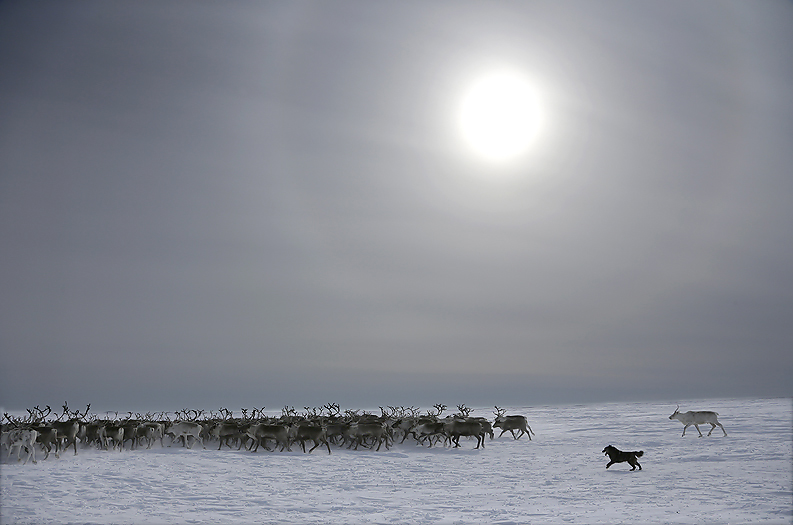
Reindeer herd on the Yamal Peninsula.
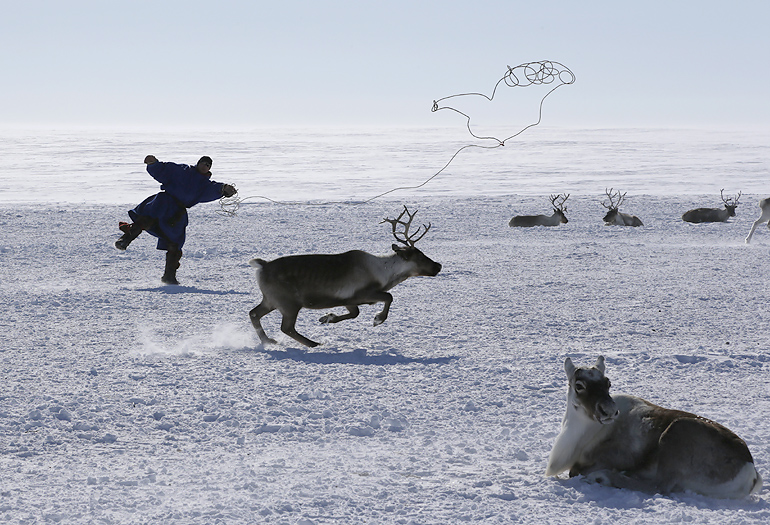
The Nenets on the Yamal Peninsula are held as the worlds best reindeer herders.
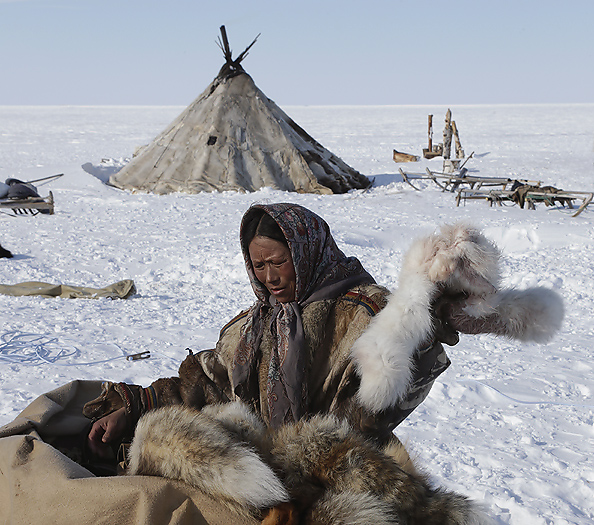
Beside reindeer herding, the Nenets of the Yamal Peninsula also trap foxes, mainly for fur trading purposes. Two years ago it was mainly Arctic Foxes here, but now over 50% of the foxes are the Red Fox species.
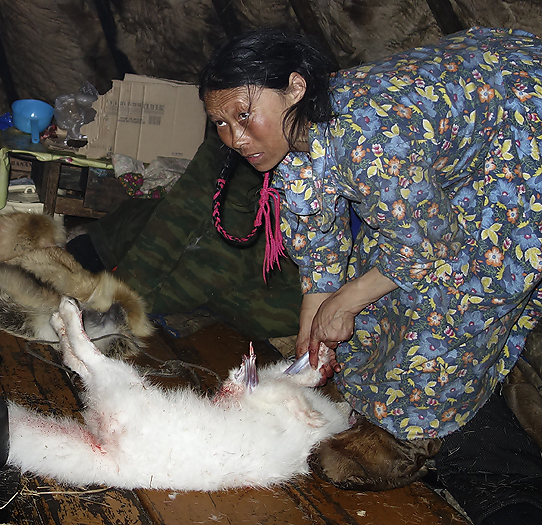
Sveta is about to skin an Arctic Fox (Nenetsk: Nokho).
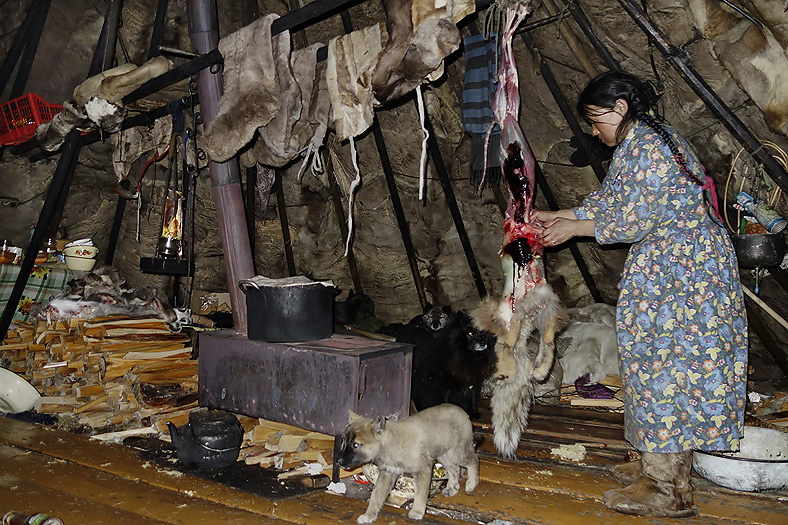
Part from inside the Chum (Nenetsk: Mya). Sveta is skinning a Red Fox (Nenetsk: Tyonya)
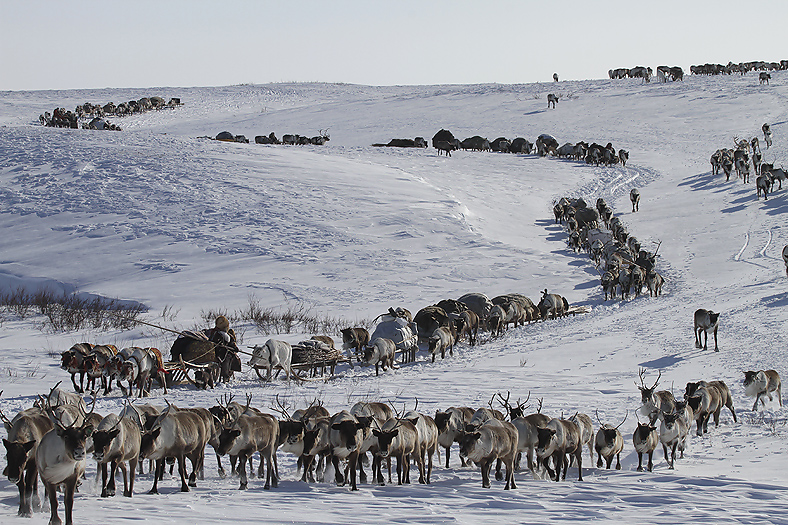
Caravans of migrating Nenets and their reindeer herd. Averagely they migrate northwards every second day to be able to reach the big Yuribei River for crossing this in early June before the river ice breaks up.
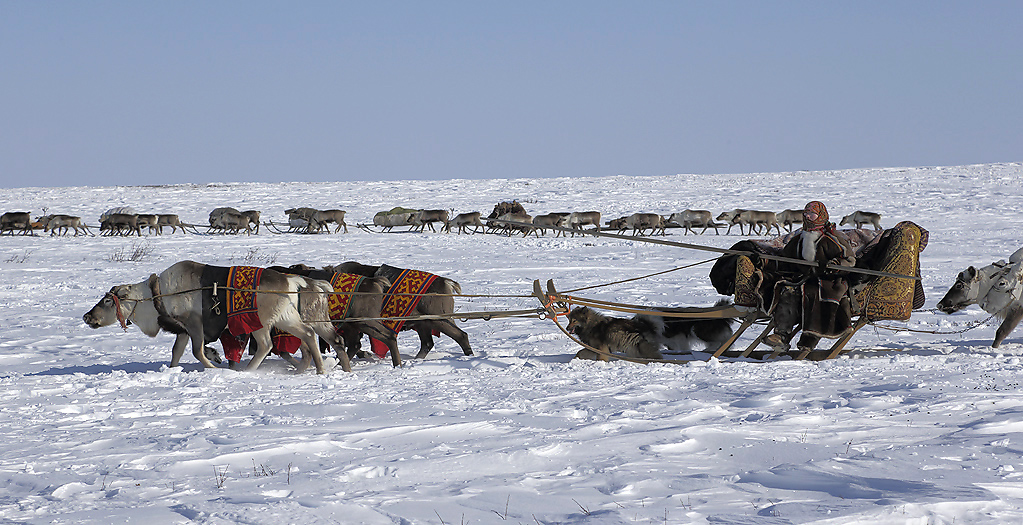
Well decorated Caravan lead reindeer.
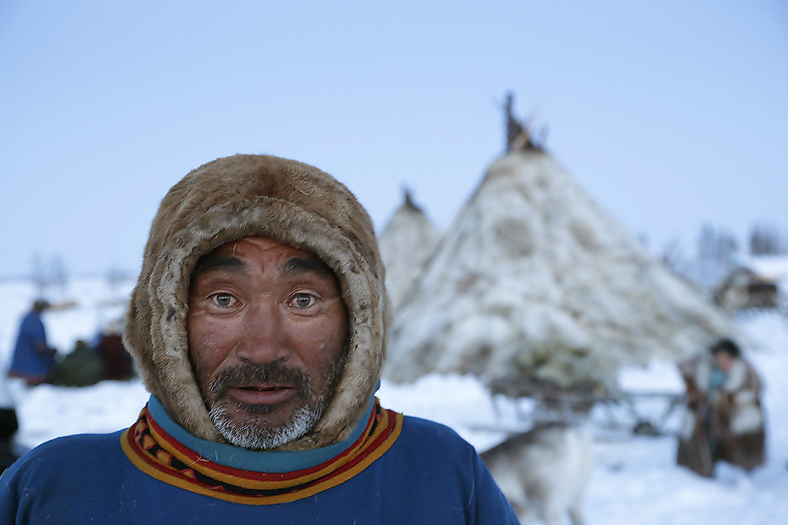
Maksim the Nenet.
As mentioned in the text above, -for more images from this trip, see the HERE (starting with image PL-35).
END.
___________________________________________________________
___________________________________________________________
WILDLIFE WINTER-REPORT FROM THE BORDER ZONE BETWEEN FINLAND AND RUSSIA, NOV/DEC-2012
After spending a week in “No Mans Land” between Finland and Russia you will below see some image-examples of wildlife I observed there that week. My photo target no.1 on this trip was Wolves. Photographing these elusive animals is easier said than done…, – winter time is difficult for these wildlife motives due to short days with limited light for photographing, low temperatures and wolves that use most of the time patrolling their huge territory. The first 5 days no wolves, -nor fresh tracks of them was seen. The days in the Taiga forest was exciting afterall, -there is always a chance of animals to show up, anywhere -anytime. The first winter cold showed up instead, with temperatures below -30 Deg.C. Such cold days make special noises in the forest; Loud “bangs”, – like hundreds, maybe thousand of rifle shot like sounds. Noises originated from contraction of trees.
The Wolves showed up on the 6th day. Four of them crossing the snow covered marsh ahead of me. – and suddenly they were gone. Just like nothing have happened…
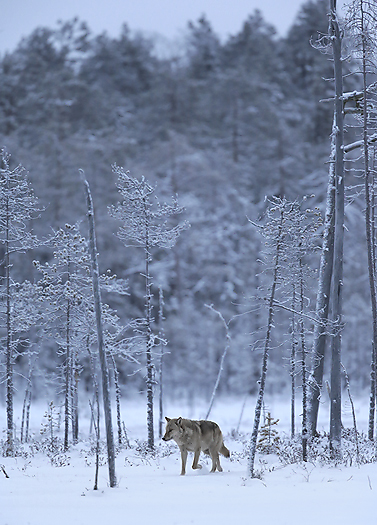
But one of the four Wolves turned and came my way…
See the “Wolf” gallery for more images.
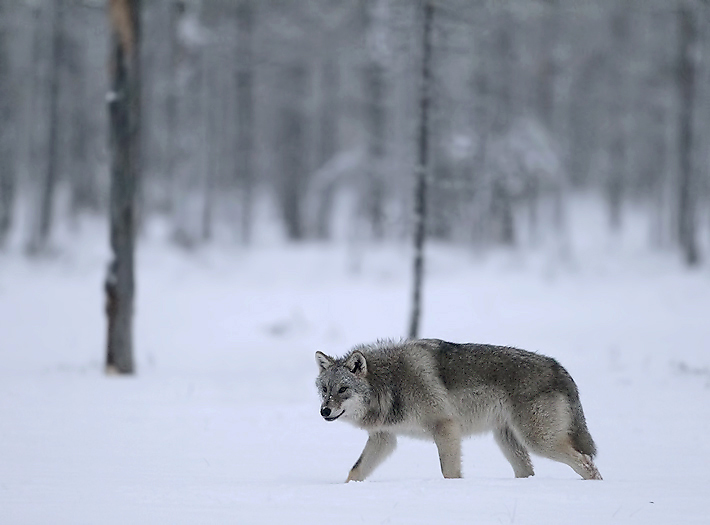
Once in a while a photographer can have luck getting these beautiful animals close up.
(due to the lack of new wolf photos from this trip I here publish 2 “new” photos taken in 2010)
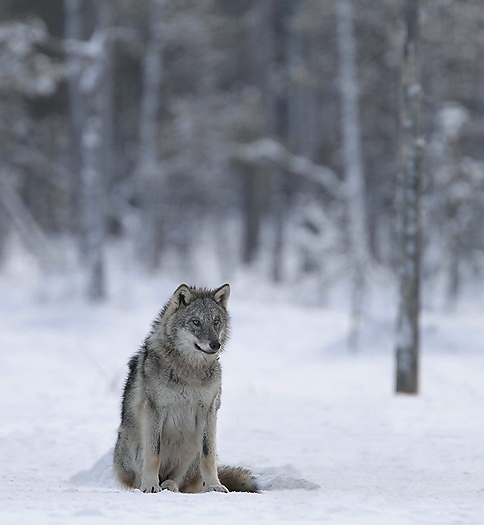
Quite focused, – must be someting edible.. (photo from 2010)
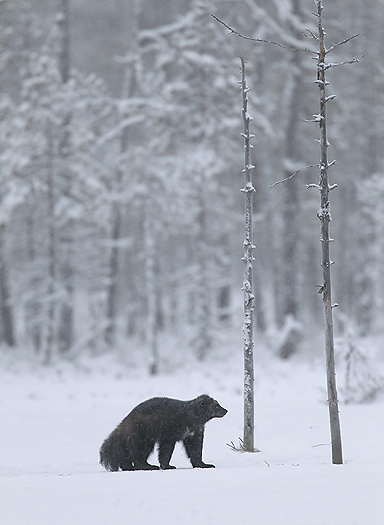
Wolverine !
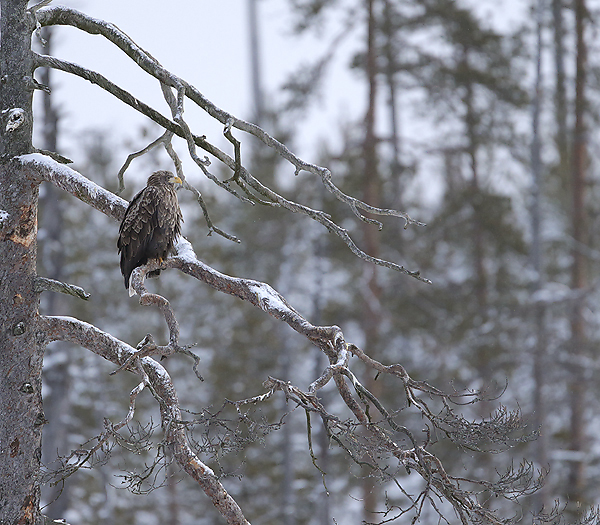
Some White-tailed Eagles also spend the winter in the huge Taiga forest.
See the “White-tailed Eagle” gallery for more images.
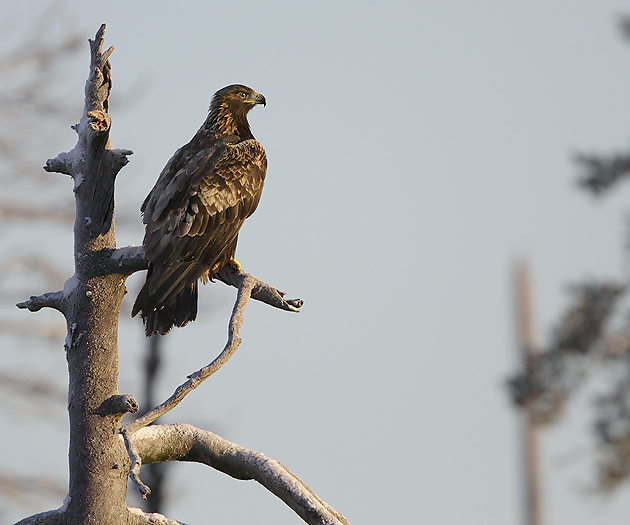
…and the same does the Golden Eagle. Here photographed a clear day showing the warm color from a sun that never
reach tree-top height at this proximity to the arctic circle.
See the “Golden Eagle” gallery for more images.
END.
___________________________________________________________________
___________________________________________________________________
AUTUMN IN THE NORWEGIAN MOUNTAINS, SEPT/OCT – 2012
Autumn in the Norwegian mountains means for many people recreation and Reindeer hunt. Southern Norway is the only country in Europe that still have wild Tundra Reindeer (Rangifer Tarandus) roaming in the mountains. Since the end of last ice age the Reindeers have been the most important mammal to hunt for Norwegians. Well, -it can be discussed how important Reindeer hunt is for modern household nowadays, -in fact as important as earlier, but more for recreation.
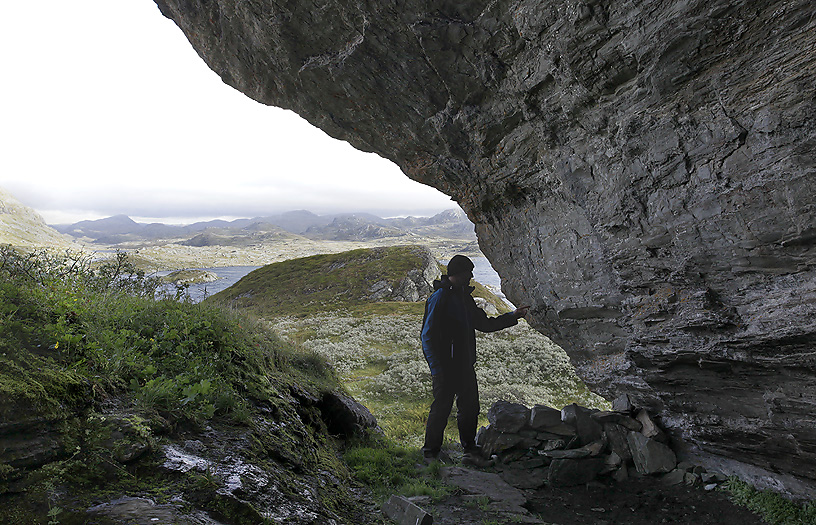
In the Suldal mountains there is a special place that Reindeer Hunters have travelled to for thousands of years. Among numerous rocks here there is one big rock placed strategically between a mountain and a lake, -and have got the name “Skutesteinen”. The Reindeer have their path below the rock and the lake, and hunters have made a blind by the rock for hunting them. The blind is a pile/wall of stones stacked up on each other. Well, -it is only remnants of this blind left today. It was originally buildt no later than the Viking age. On the roof/wall of this “Skutestein” we can find 1000 year old carvings of Reindeer, Moose, Fox and other animals. And also the hunter himself, a Viking named Vivil have written with Runes several sentences such as ” I want to choose the most beautiful girl in the world”, and “Vivil the archer lived here”. May be it was Vivil that carved himself on the rock? -See the carving below here. On the image above you can see my friend Arnfinn Nilsen studying the Runes on “Skutesteinen”.
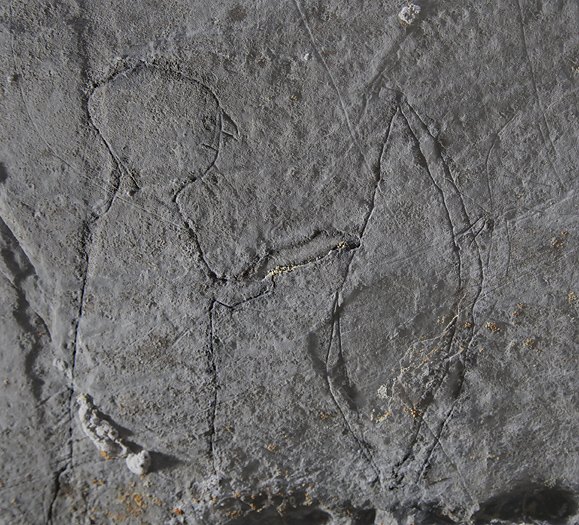
Is this “Vivil the archer” ? The Viking ? For more images from this place, please see the “Archaeological Sites” gallery.
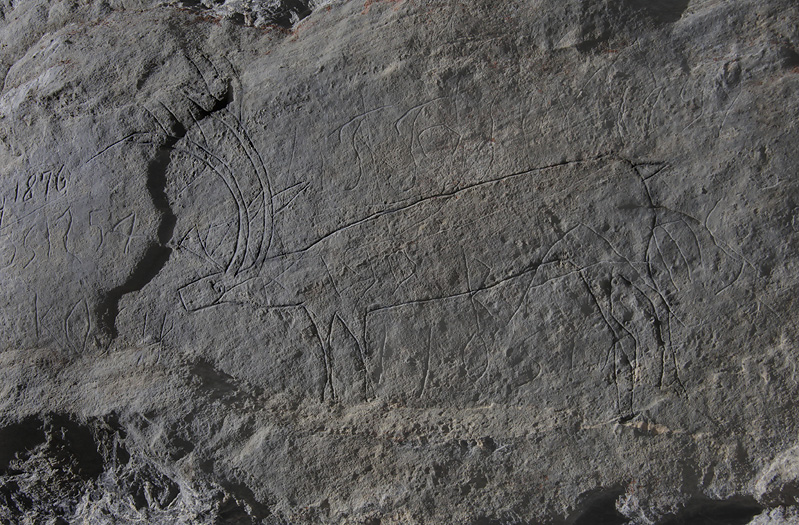
Here is a 1000 year old example of the animals these hunters waited for at this special place.
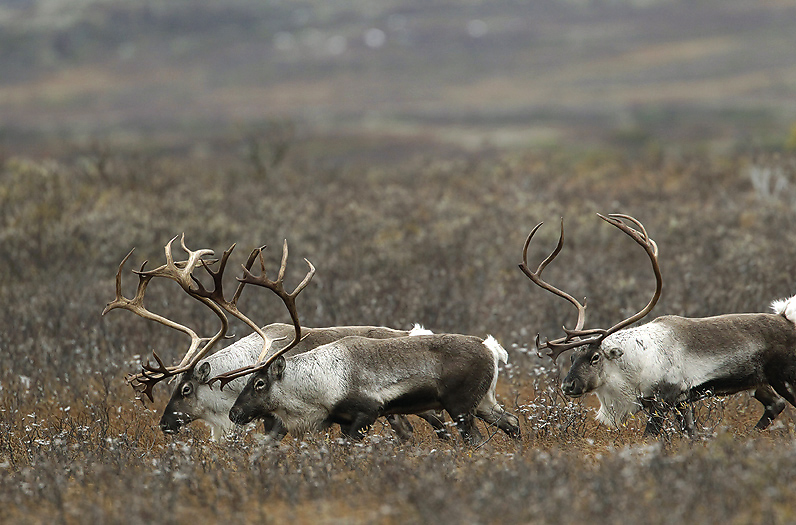
…and here they are in real.
Reindeer in the Norwegian Mountains. This is October, mating season, and fighting between bulls is rather common. These beautiful bulls walk in peace and have obviously found their place in the herds hierarchy.
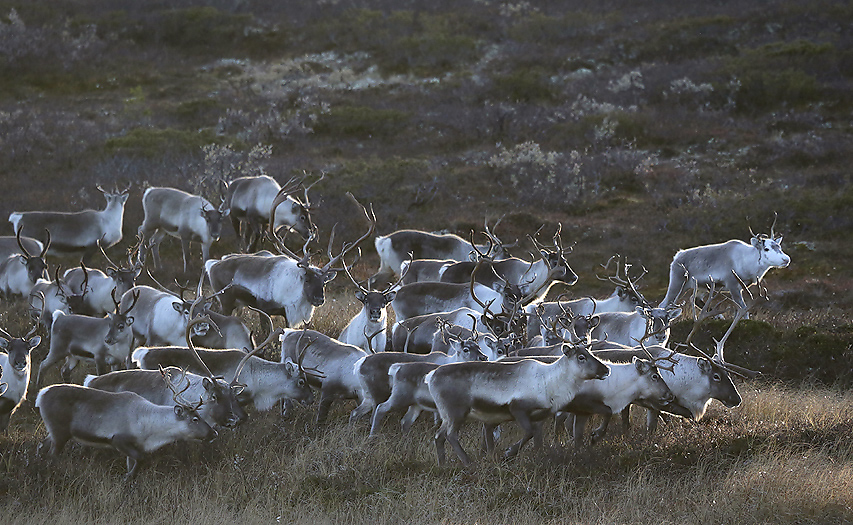
Reindeer herd in evening light. Go to the “Reindeer” gallery if you are interested to see more images of these majestic animals.
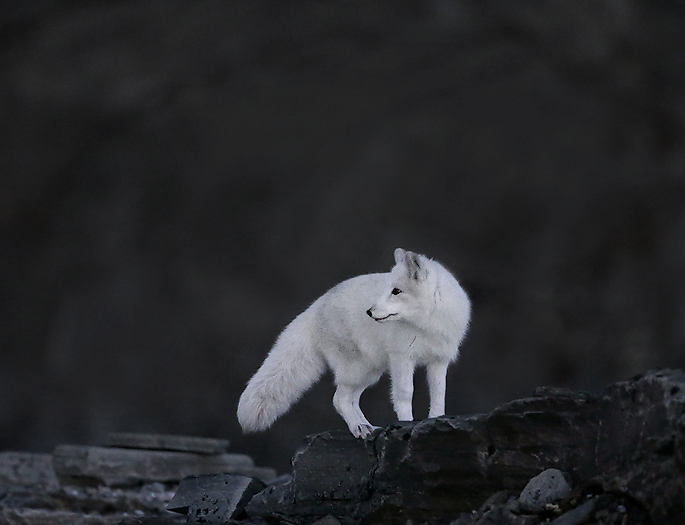
The Red Listed (mainland Norway) Arctic Fox is to be found in certain areas of the Norwegian mountains. It is early October, and the foxes are soon finished developing their soft & warm winter fur. See the “Arctic Fox” gallery for more images of this beautiful animal !
END.
_________________________________________________________
_________________________________________________________
ICELAND JULY 2012 – A SHORT TRIP WITH GOOD FRIENDS
Here is a tiny selection of images from our week long trip to north east Iceland together with Odd & Ruth Gabrielsen.
I had been in the area a couple of years ago, and wanted to show them some of the best nature & wildlife Iceland can offer.
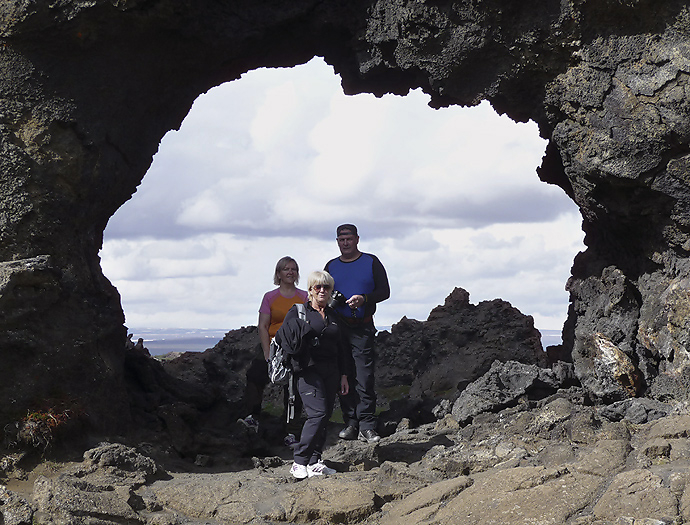
Here we are (as usual minus the photographer…) walking in a 2500 year old lava field.
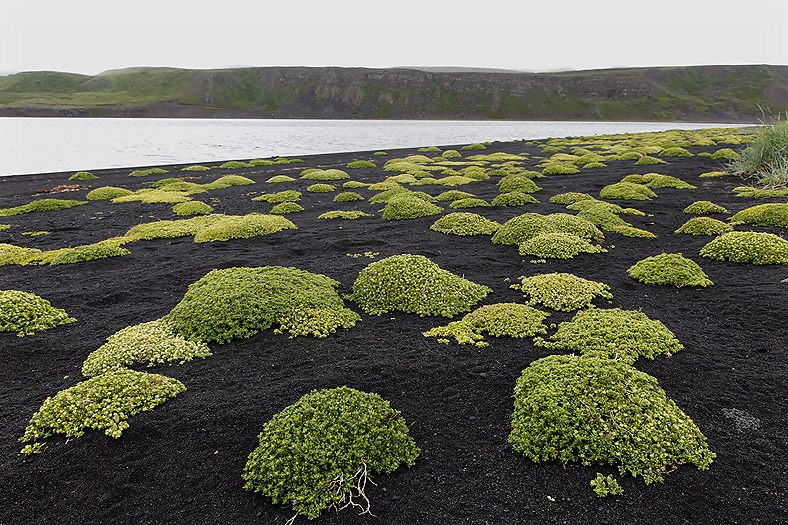
The beaches on Iceland are vulcanic black. In nice contrast to the “always” sand-coloured beaches that is “normal” for us non-Icelandic residents…
See the “Landscape” gallery for more landscape images from Iceland.
Here in the geothermal areas we can really smell and feel the interior of the planet we are living on.
Due to this closeness to Mother Earth`s ground materials, – it can be quite challenging taking a shower in the evening at the hotel when the water flashes off m3`s of stinking Sulphur gas…
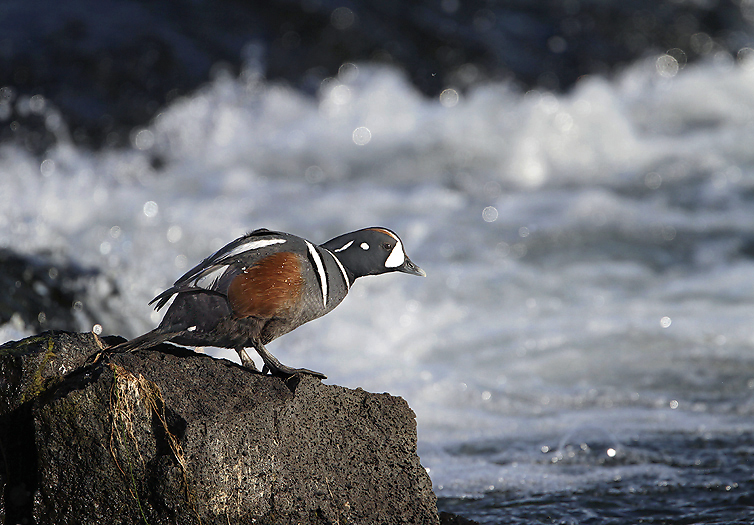
One of the most interesting bird species on Iceland is without doubt the Harlequin Duck. This is the eastern most
outskirt of its general distribution. The drakes as this are beautiful, and “all foreign birdwatchers” are looking for them. But they must be aware of that the drakes are away from their local territory by the end of June for spending the autumn and winter at sea.
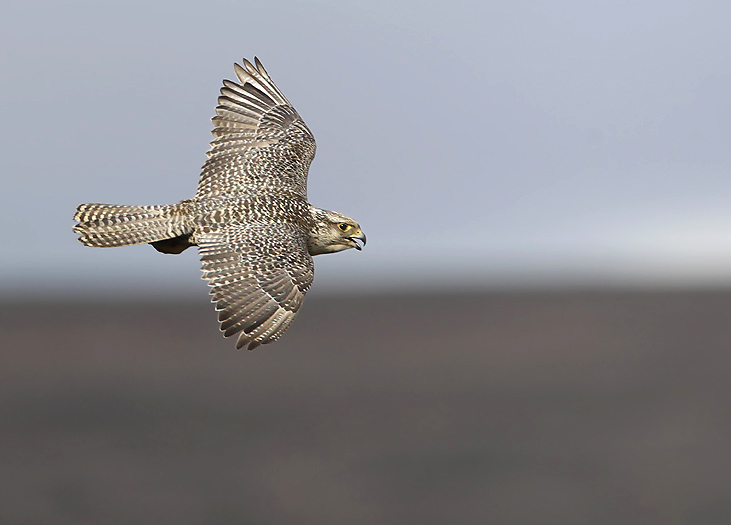
Another highly sought bird species is the exclusive Gyr Falcon. This falcon have for the last decades become rarer
in many countries, especially in the southern part of sub arctic. People that are so lucky to find an inhabited
Gyr territory must be extremely careful for not to scare the birds. Please do not publish any nest sites !
See the “Gyr Falcon” gallery for more images of this species.
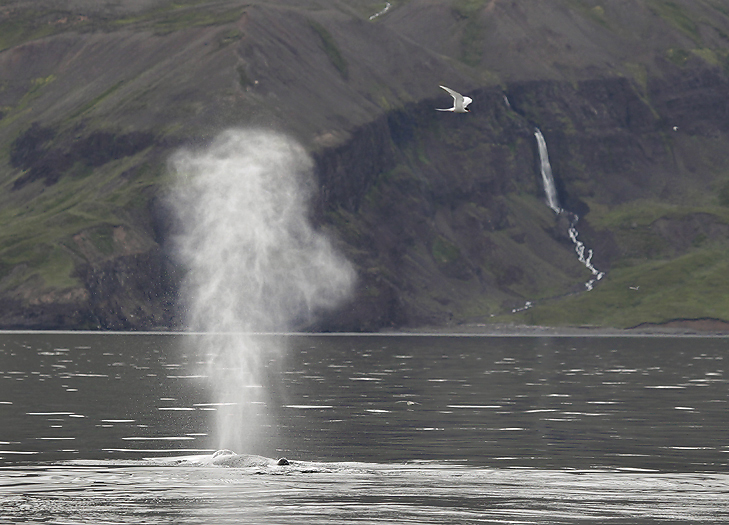
Iceland is also renown for whales and whaling. The whaling have now ended, and the whales are frequent
seen in the western and nortern fiords. Here a Humpback whale by the north coast.
We saw 6 Humpback Whales and 1 Minke Whale during a 3 hours boat trip.
More Whale images are to be seen in the “Whales” Gallery.
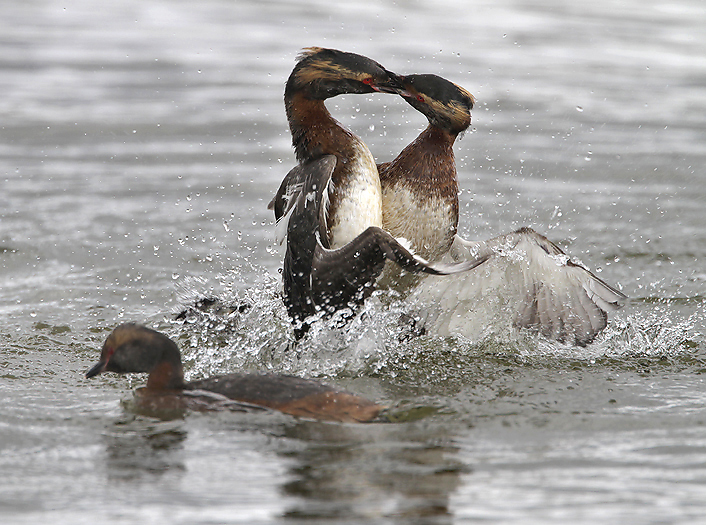
Lake Myvatn and surroundings is the most known bird watching area on Iceland. Here a couple of Horned Grebes.
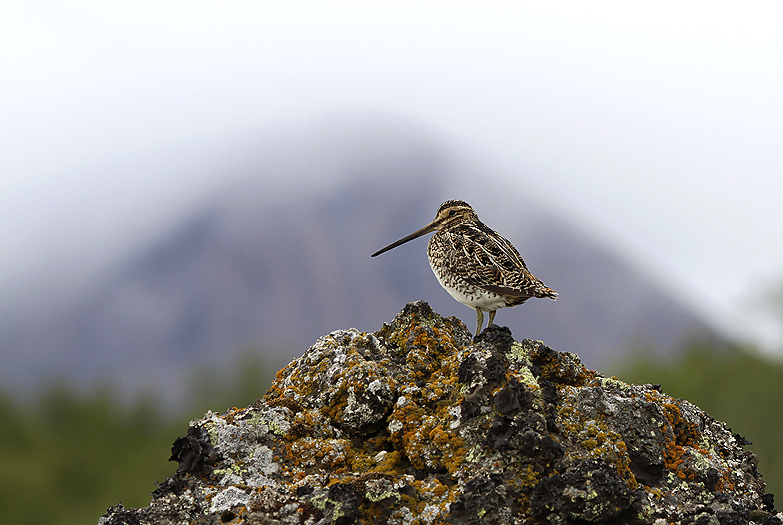
Common Snipe on a clump of lava by the shore of Lake Myvatn, -the vulcano Hiidarfjall in the background. This Snipe is together with the Whimbrel, Golden Plover and Dunlin among the most common waders in the area. Since Iceland is placed in the middle of the New and the Old World, there are for sure many celebrities of bird species that shows up from time to time…
If you are interested in Waders, please take a look in the “Waders” Gallery.
END.
By the way: I was recently on a photographic trip to Ethiopia, not really arctic (!!), but quite an interesting place.
Take a look at the images here: Ethiopia !!
________________________________________________________
________________________________________________________
Arctic Images website is now renewed & modernized with total new layout !!
I hope you will enjoy the site and also a selection of some new images from Norway during this summer:
Starting in southern Norway.
My brother Kjell Tysdal (Owl expert) reported about a photogenic Tawny Owl near his home in Aardal, Ryfylke. We both had some interesting evenings when we photographed this male owl using radio controlled cameras. Each evening the owl appeared in the opening of this ash tree when the light dimmed. This is his year around day-place. The exposure time was down to 2 seconds, but with a solid tripod in combination with the cameras mirror lock-up, the images became razor sharp. Of course depending on a static owl.
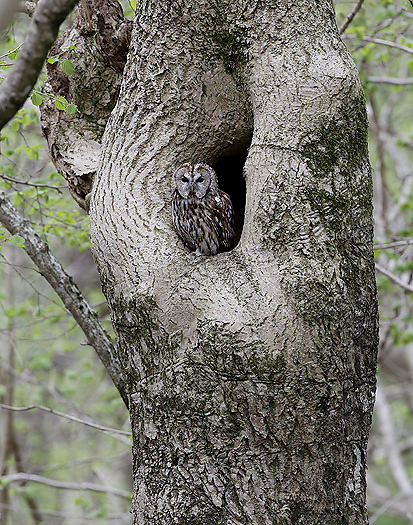
Male Tawny Owl.
Further north; in Trondelag county:
The small and trusting Pygmy Owl nested in an old Great spotted Woodpecker hole near Levanger. The day-active owl had regular hunting trips in the near by area. When she flew out from the hole it was important to spot the owl and approach her carefully for watching & photographing. In one occasion she flew out, for shortly after to dive down to the ground for seconds later to turn up with this mouse.
See the “Pygmy Owl” gallery for more images !!
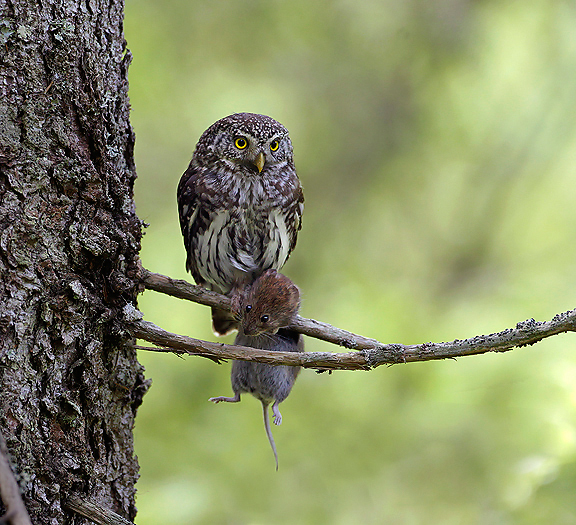
Female Pygmy Owl.
It is an exclusive experience to be able to watch lekking Great Snipes. These leks are performed on elevated, slightly south-faced marshes during night time. The birds are so occupied with the lek that they do not hold the normal shyness for people. This actual lek contained up to 20 snipes that for hours perfomed this peculiar play with territoriel markings and intensive noises that sounds like rolling “Ping-Pong balls”.
If you are interested to see more images of the Great Snipes in lek, please see the “Waders” gallery.
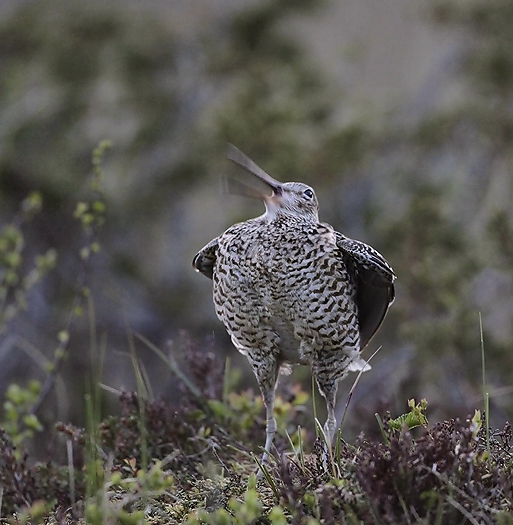
Male Great Snipe in lek.
And finally to the top of Norway, Varanger Peninsula:
The northern part is in fact real arctic, with its animal & bird species, and also humans living in close relations with the land here.
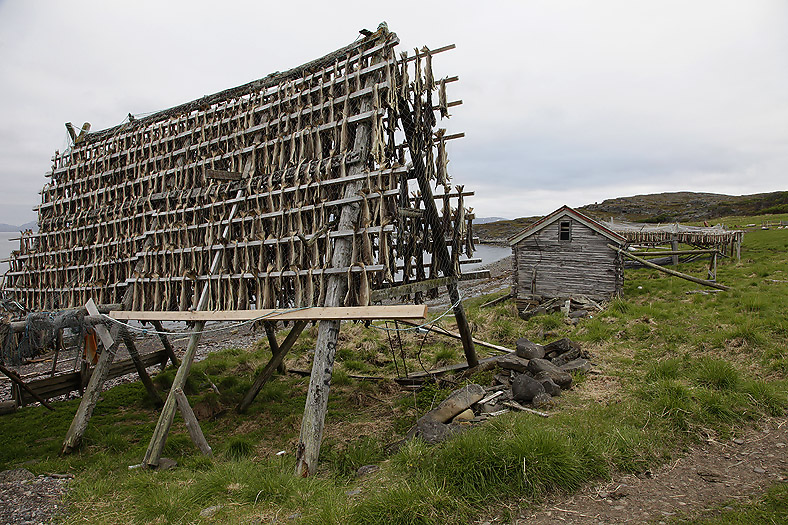
Drying of fish (mainly Cod) are on many places still done by the traditional method.
Not far away, over at the Russian side of the border we see one of the worlds most polluting cities; Nikel. Luckily for Norway, -the most frequent wind direction are from west to east. Last year, when I was over at the Russian side of the border I could with own eyes see that tens & tens of kilometers eastwards consists of desert-looking landscape were all vegetation are dead. The average age of the people are significant lower than the rest of Russia.
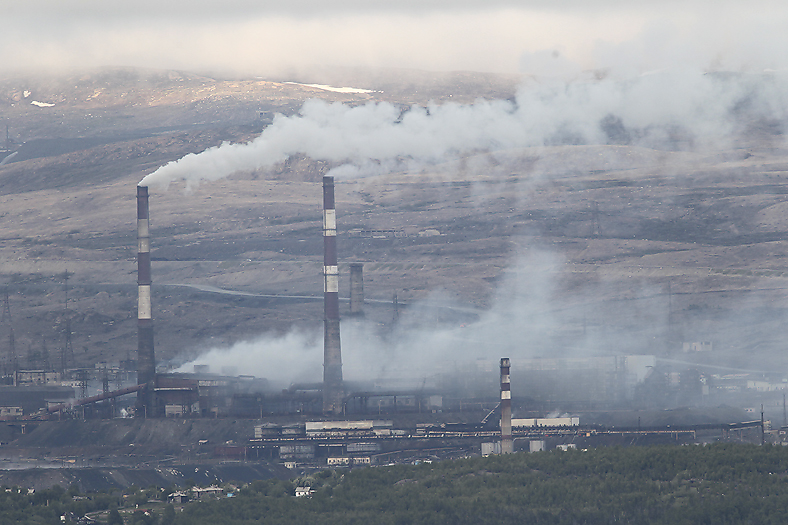
Nikel seen from the Norwegian/Russian border.
Varanger Peninsula is extremely rich of remnants of from its Sami cultural history.
This Offer stone Ring dates at least 1000 years back. On the upper left side you can see the holy Bear Stone (Guovzageadgi) that was the supposed reason for placing the holy Offer Ring here.
If you are interested to see more af the archaeological sites in the Varanger area, please see the “Archaeological sites” gallery.
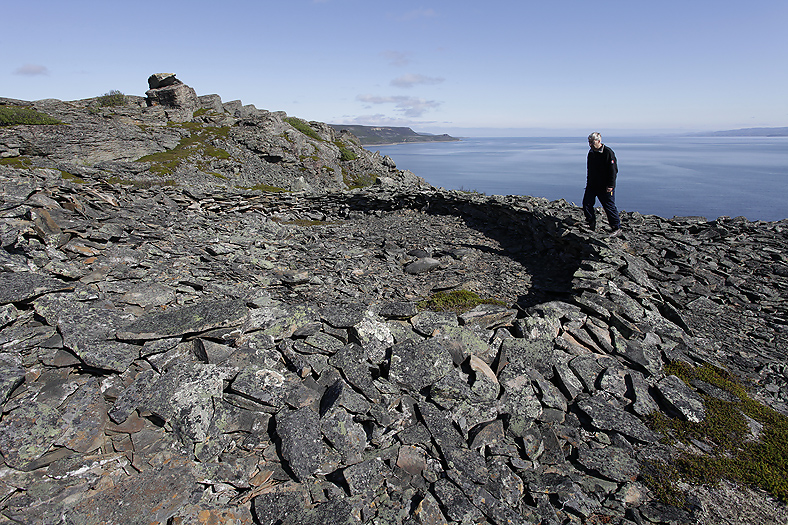
Holy Sami Offer Ring at the Varanger Peninsula.
Varanger is a heaven for Ruffs. While the Ruffs are declining in both southern and middle Norway, the Ruffs are thriving up here in the arctic landscape. Countless leks are to be found here. To watch lekking Ruffs is really exciting. Take a look in the “Waders” gallery for more Ruff images.
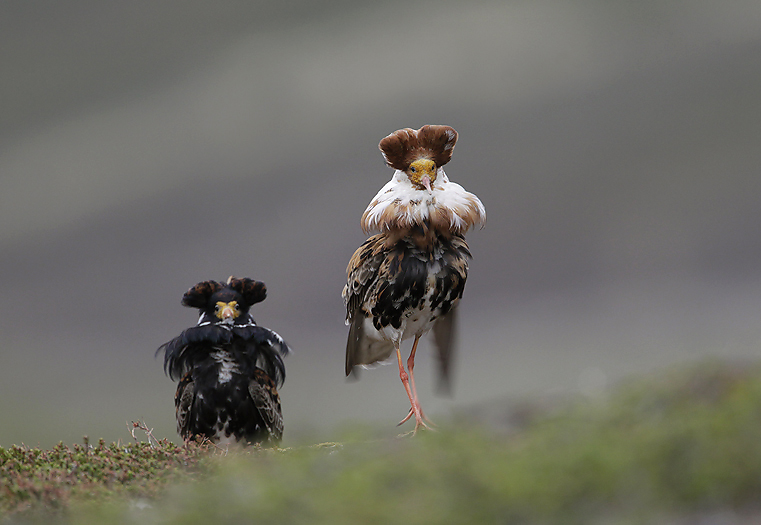
Male Ruffs in lek.
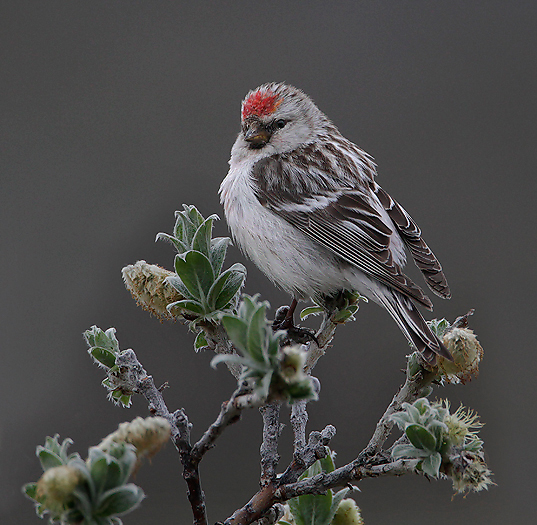
Arctic Redpoll.
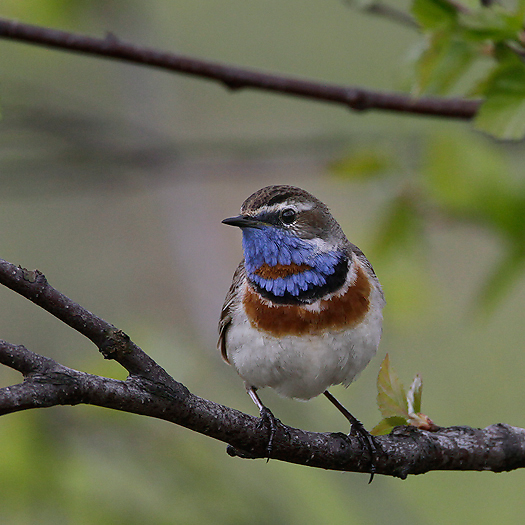
Male Bluethroat.
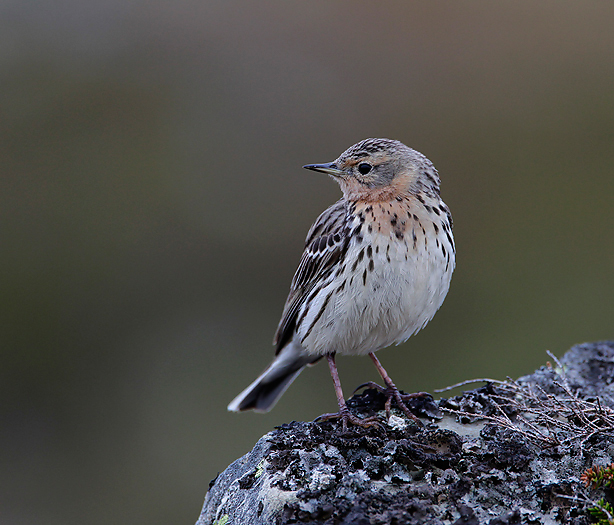
Red-throated Pipit.
Southwards again to Finnish Lapland:
The sub-arctic Spotted Redshank are on many birders wishlist. But they are not common to see in summer time, -and rather difficult to find at their nesting grounds. This summer I found two pairs nesting in northern Finland. Why are they black ? This have been discussed in several scientific forums….
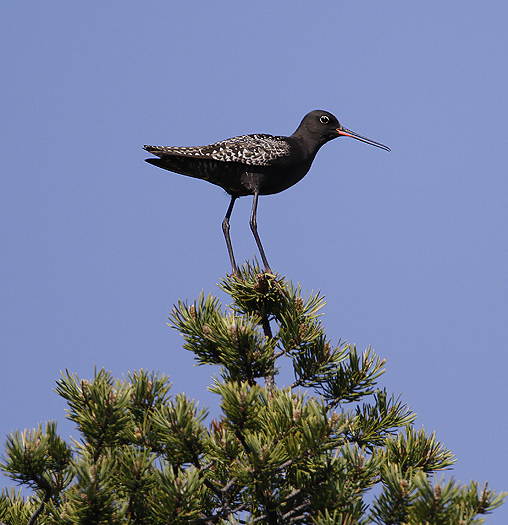
Male Spotted Redshank.
END.
________________________________________________________________
________________________________________________________________
SVALBARD MARCH – 2011.
The travel to Svalbard was this time done together with my son Mats and Mattis. What a great time we had !
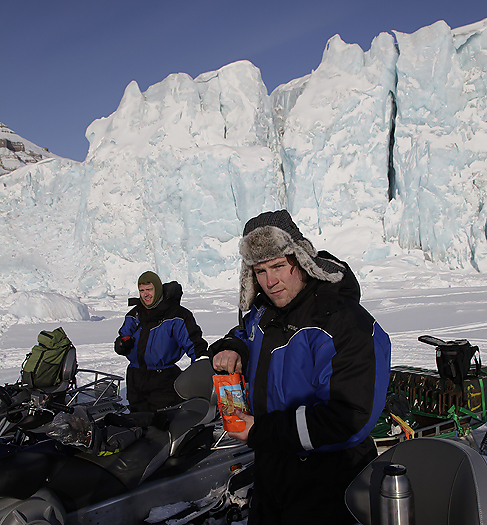
Lunch at the Tunabreen glacier front..
Stranded icebergs can sometime act as reflecting prisms. See the “Ice & Snow” gallery for more new images.
Prior to an incoming low pressure weather system we saw the phenomenon “Parhelia”. This is described with great interest by the early arctic explorers
On our journey in the arctic wilderness we also met Polar Bears. See the “Polar Bear” gallery for more images.
This big male bear is wandering unaffected on the sea ice. They are really the King of the arctic !
The Dwarf Reindeers have no real enemies on Svalbard, so they are not afraid of humans. See the “Dwarf Reindeer” gallery for more images.
We also made a visit to one of the few active fur trappers on Svalbard. Harald Solheim on Kapp Wijk have lived and trapped here since 1978.
What a beautiful creature we met on our journey. Can we call it “Ice Bear”?
END.

